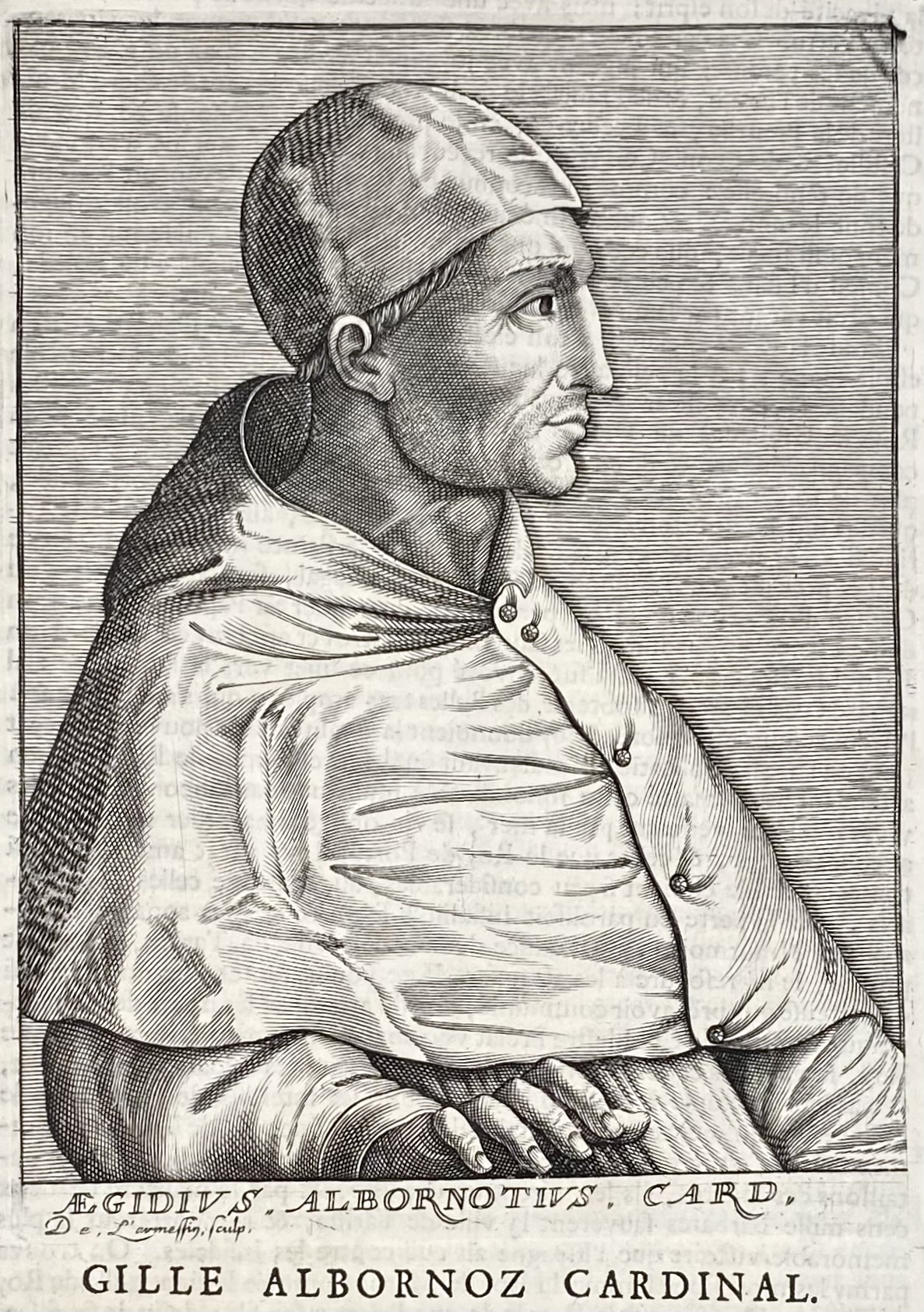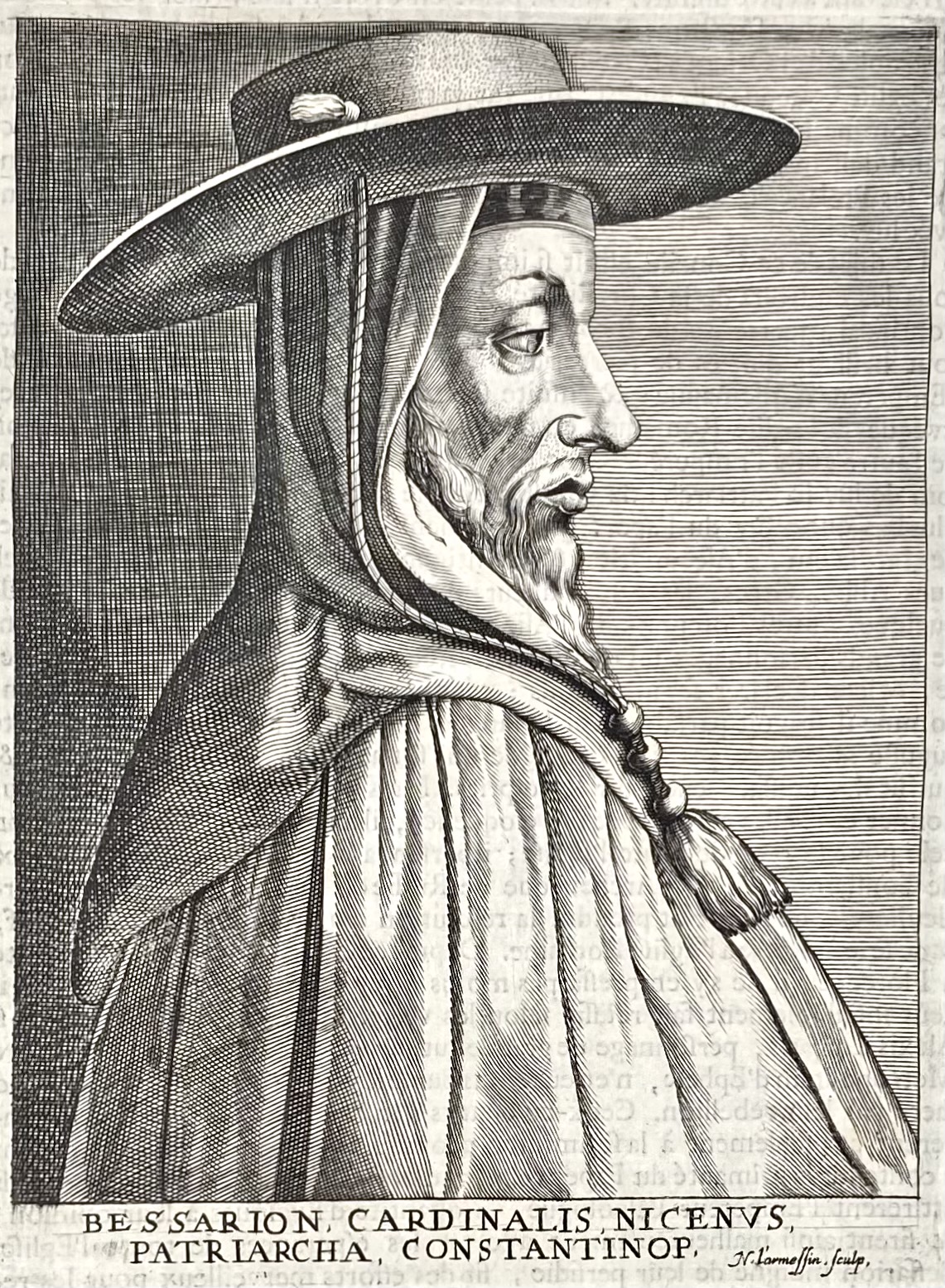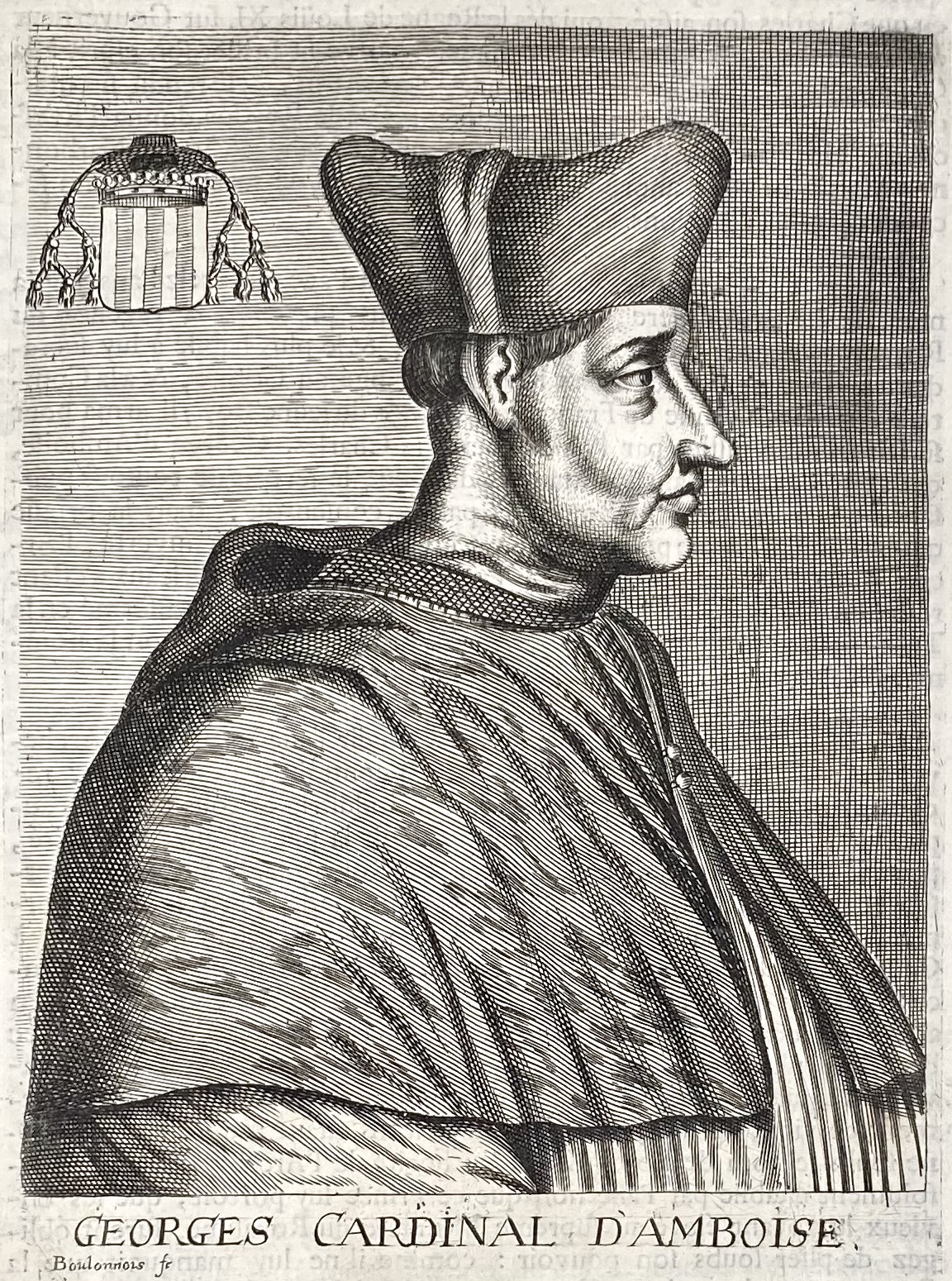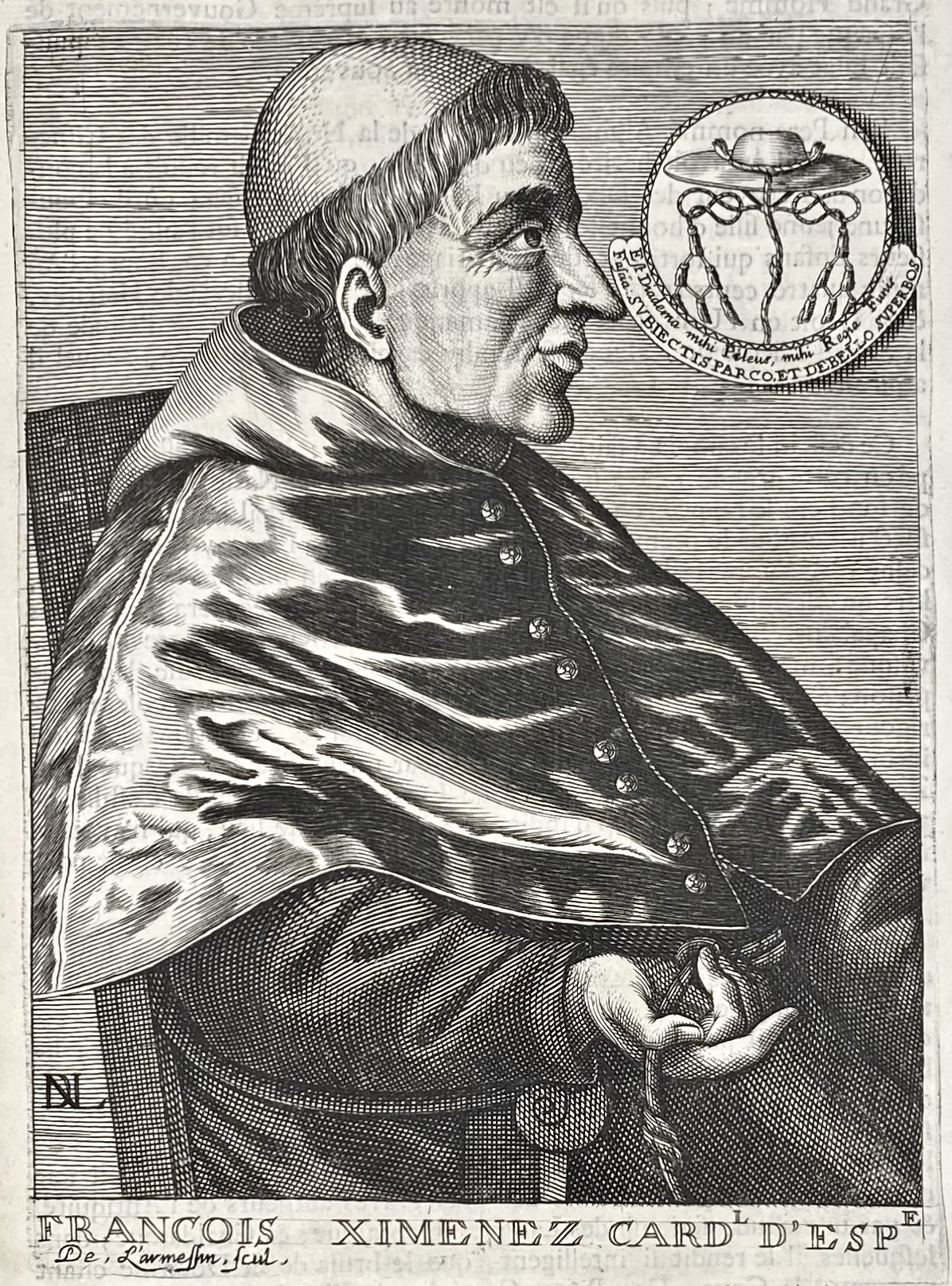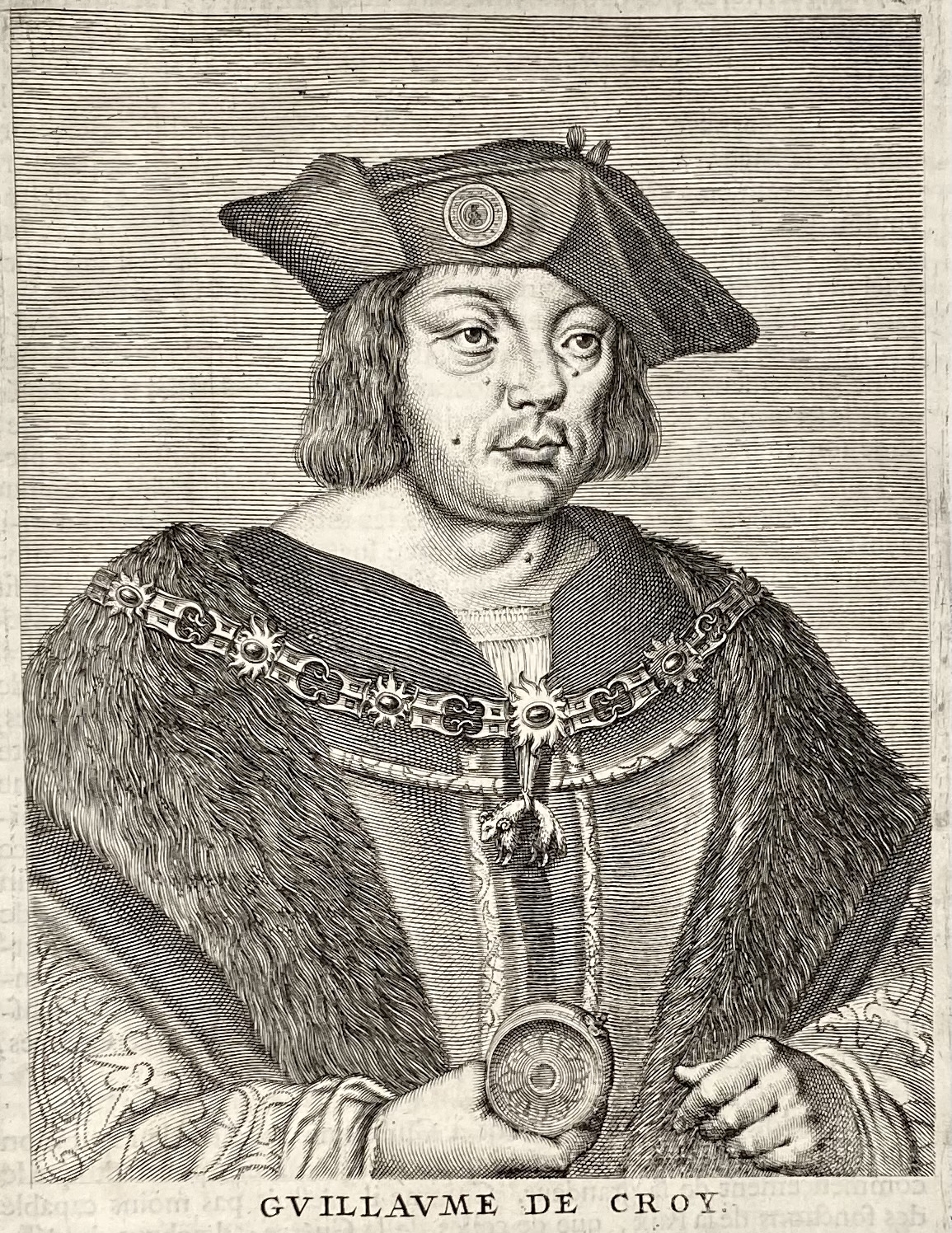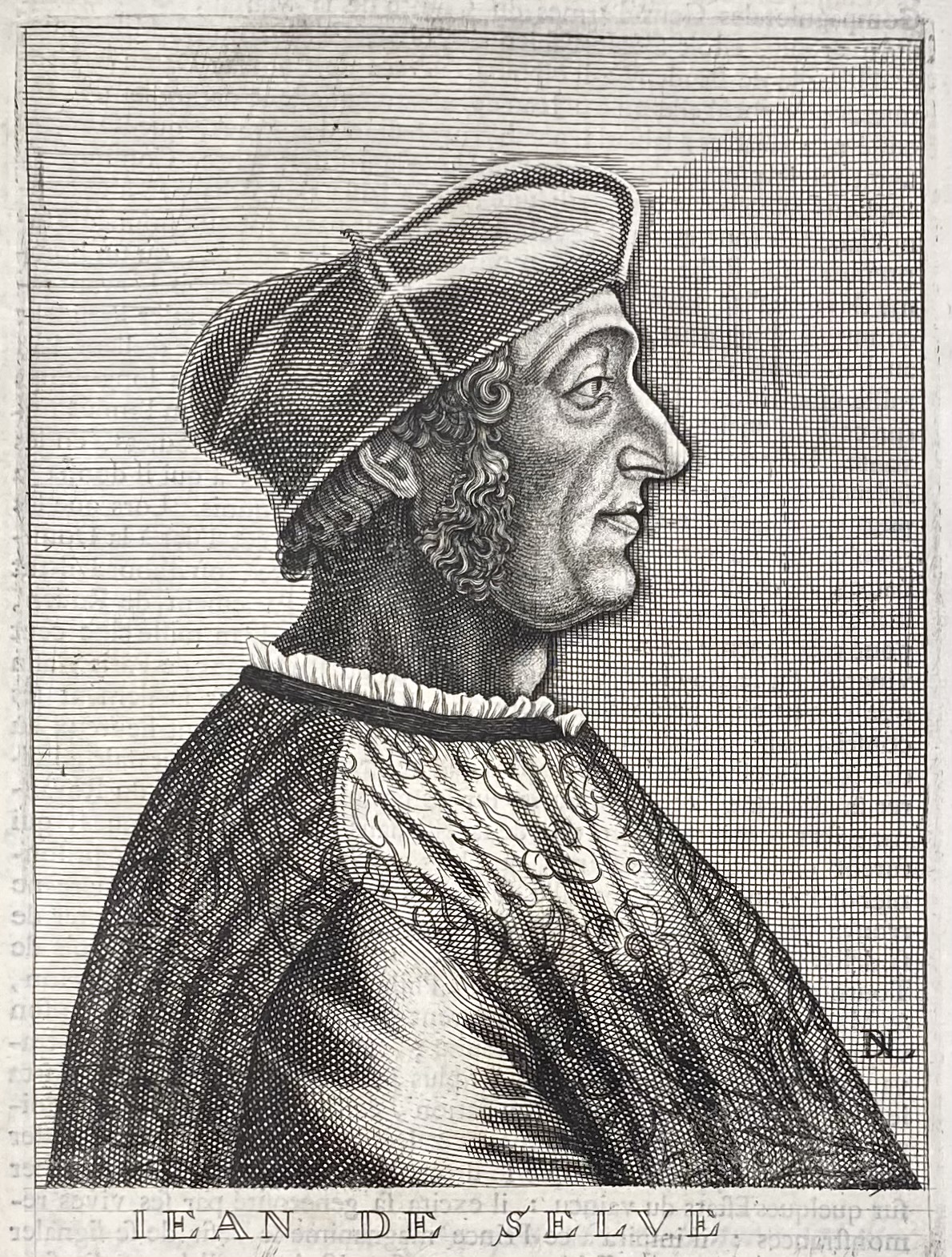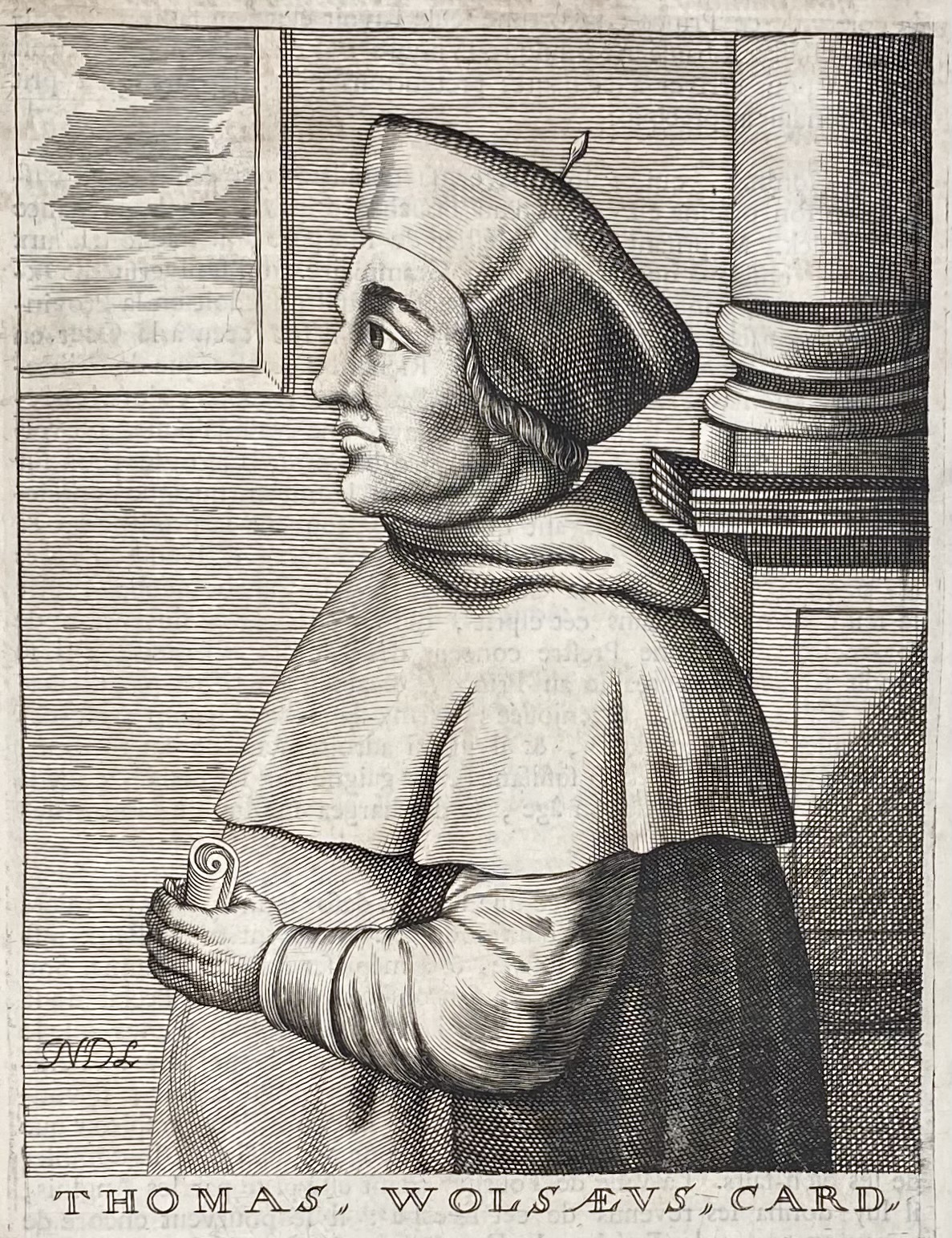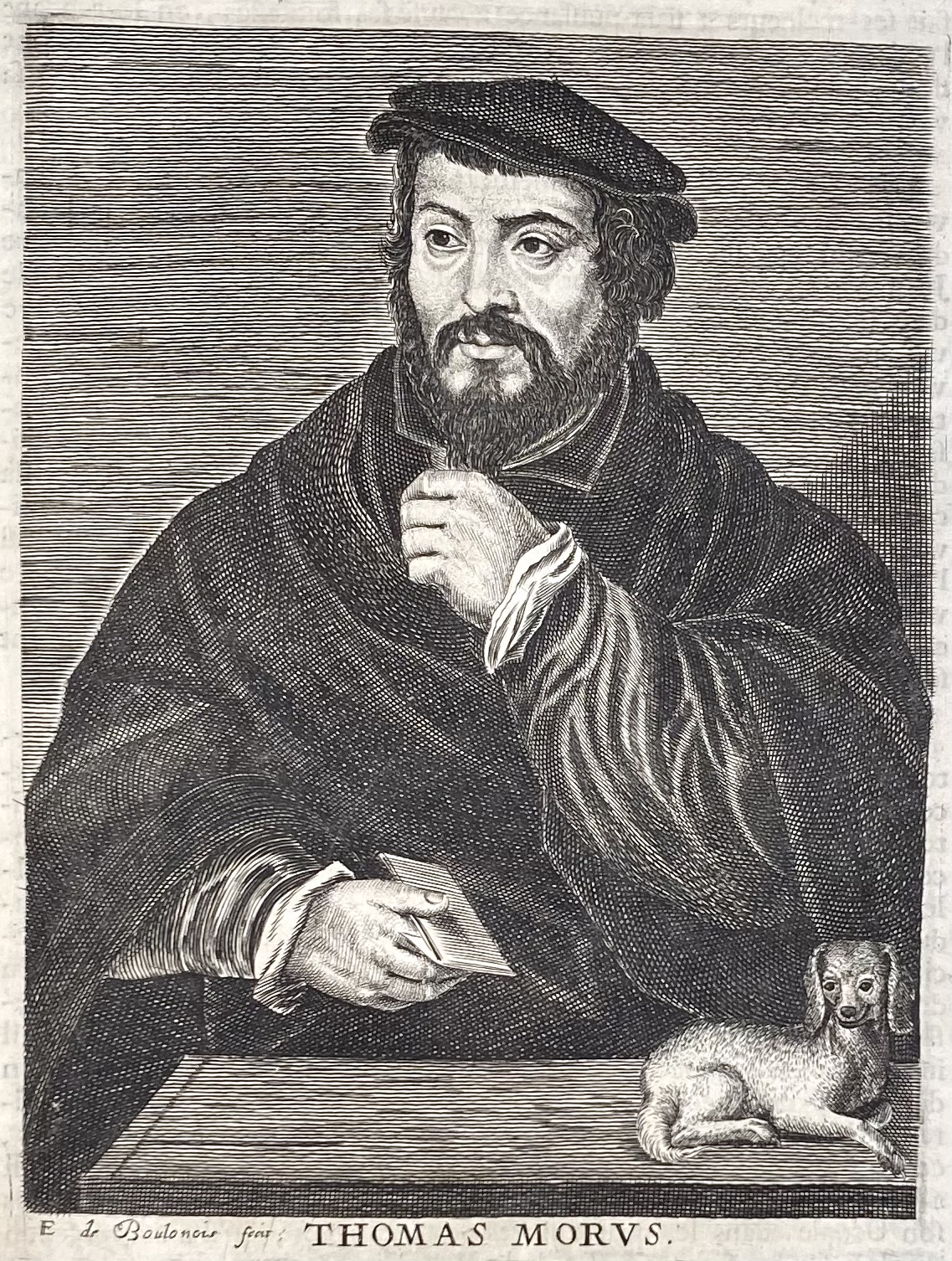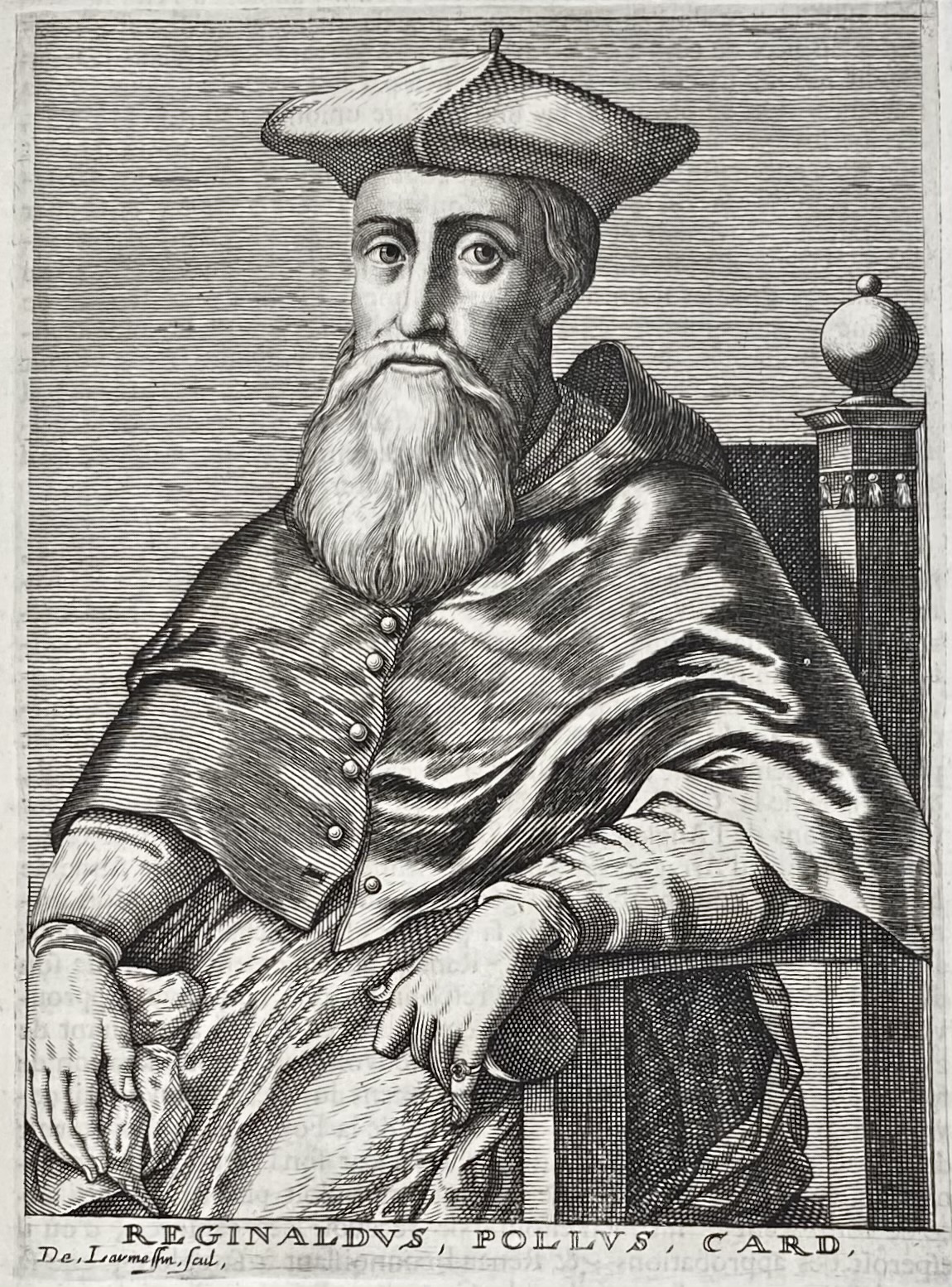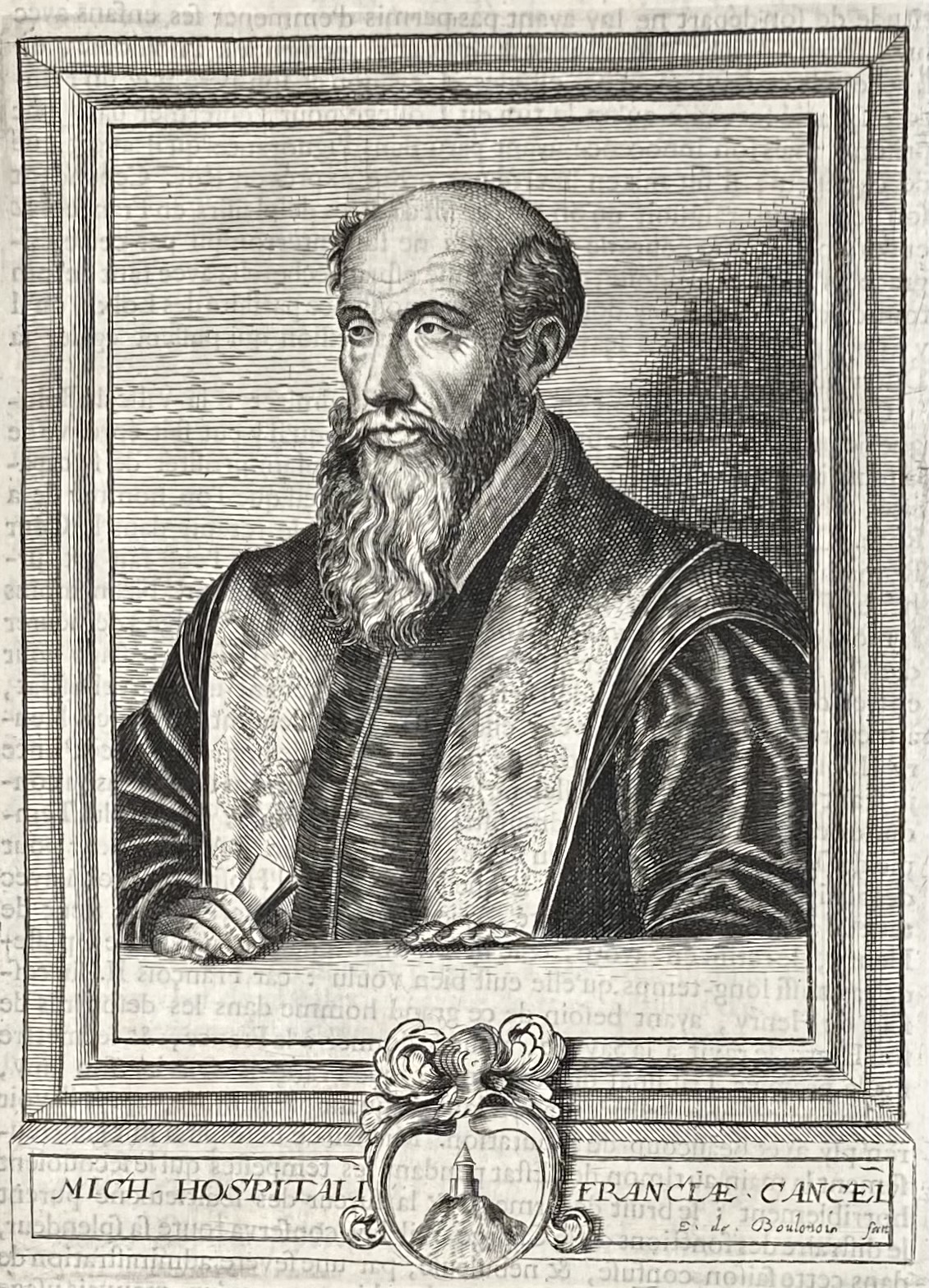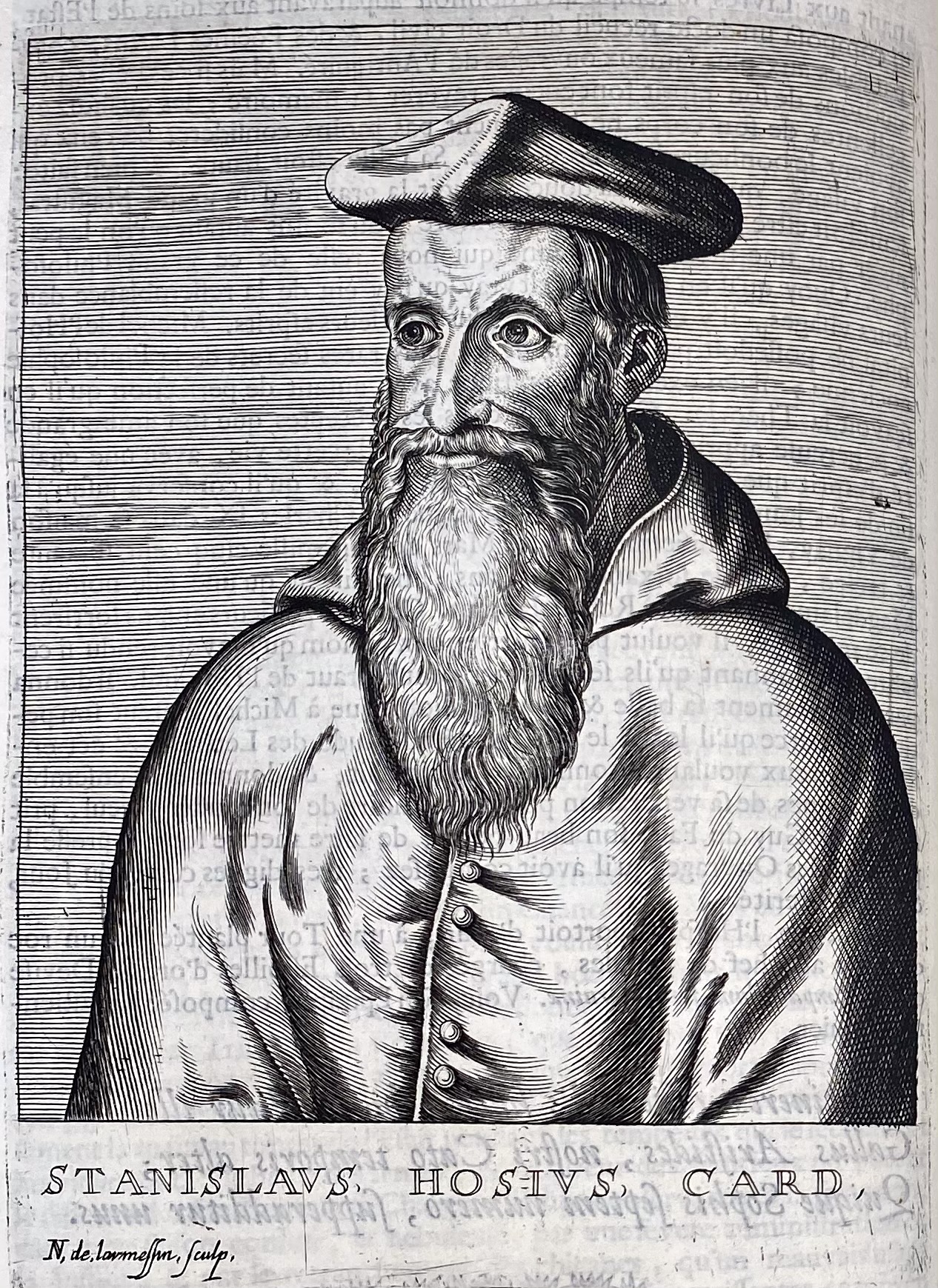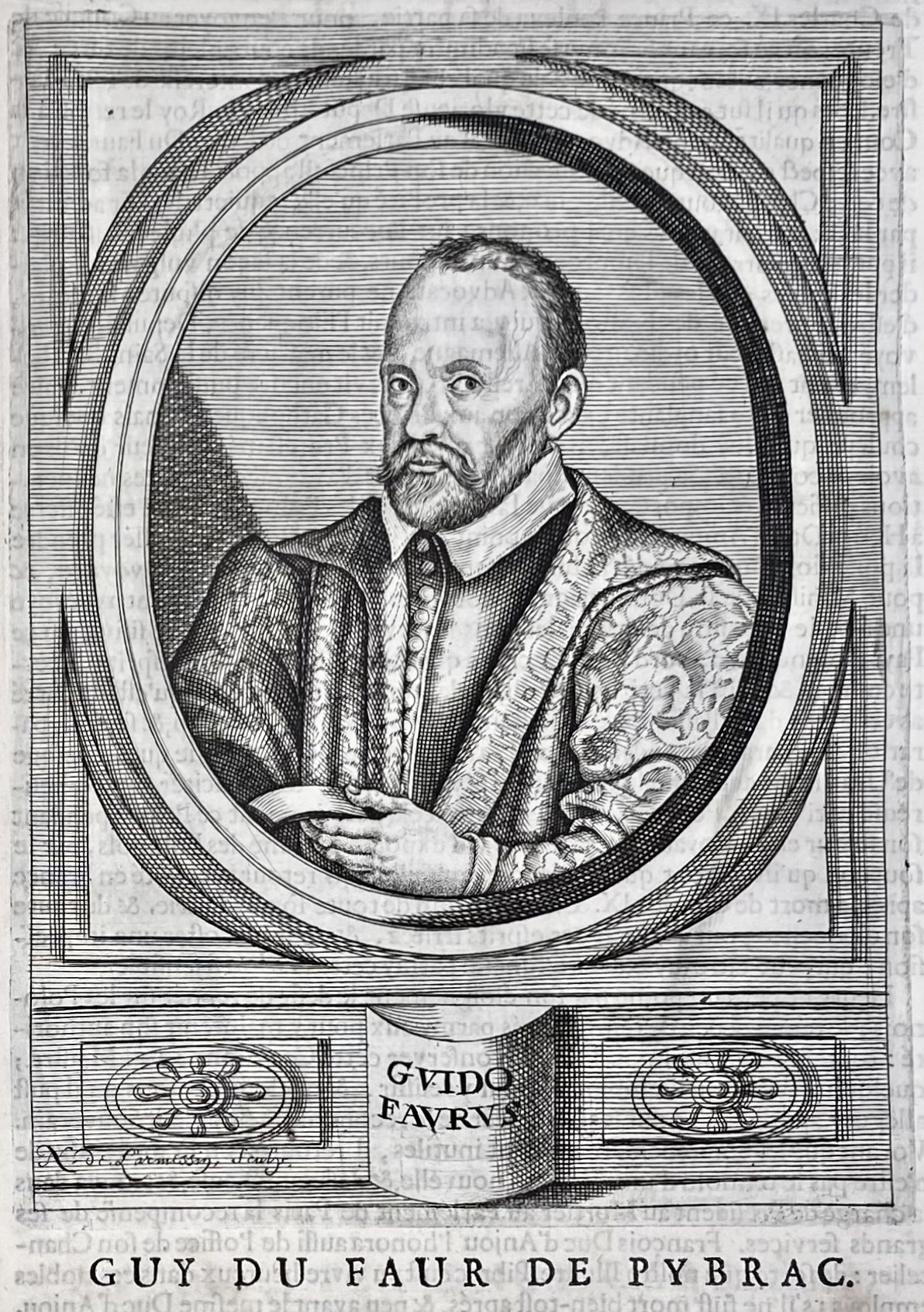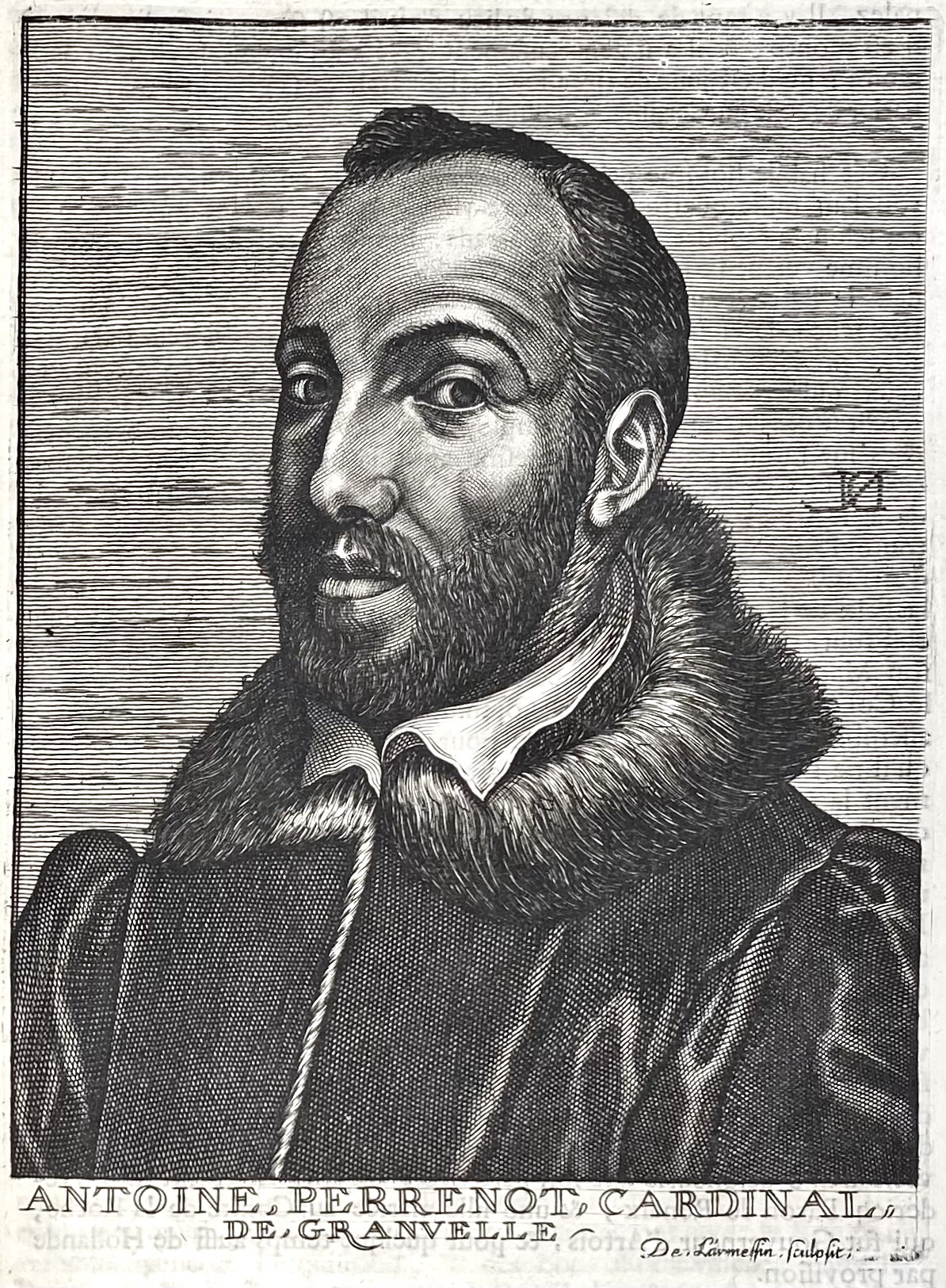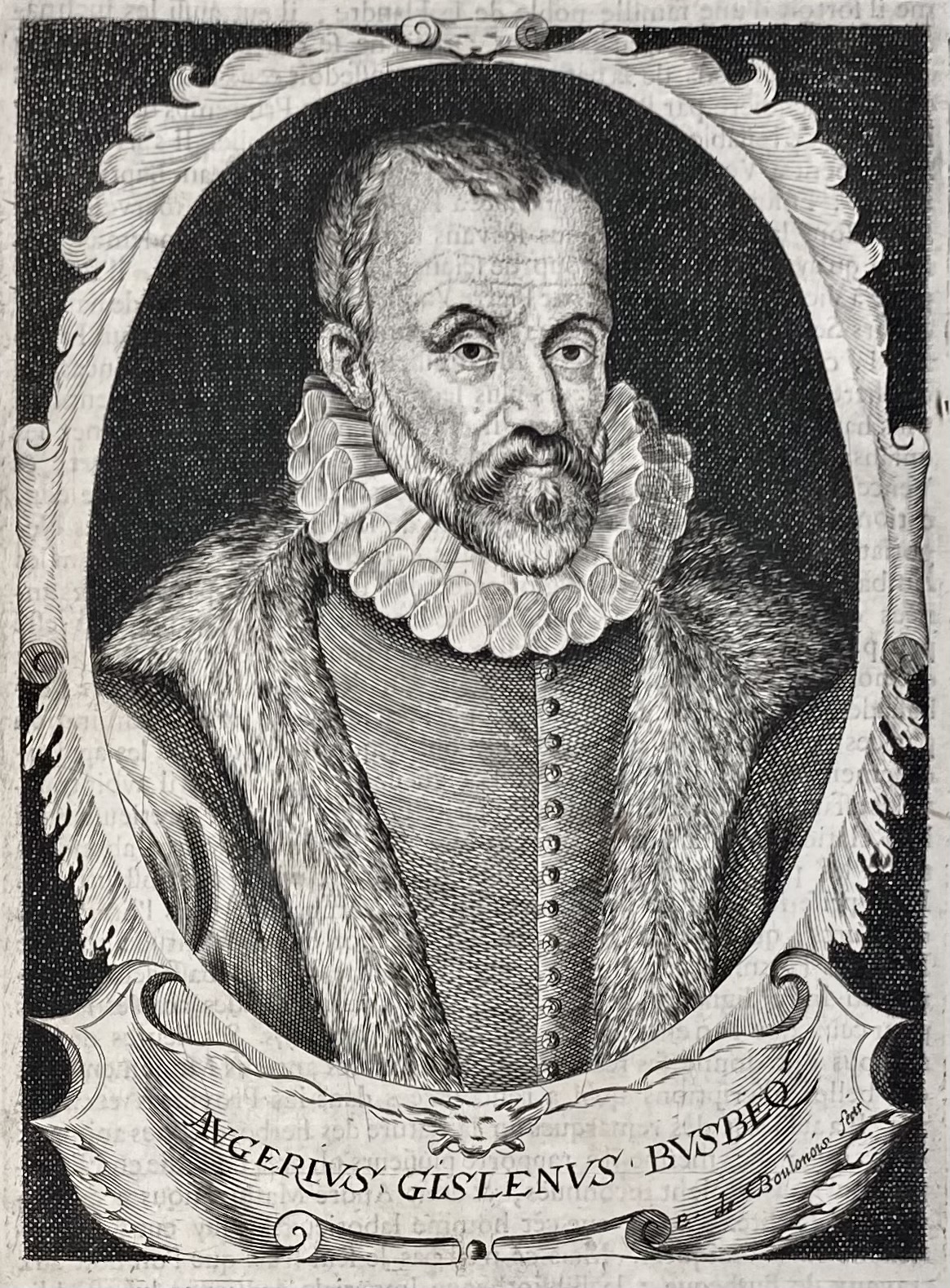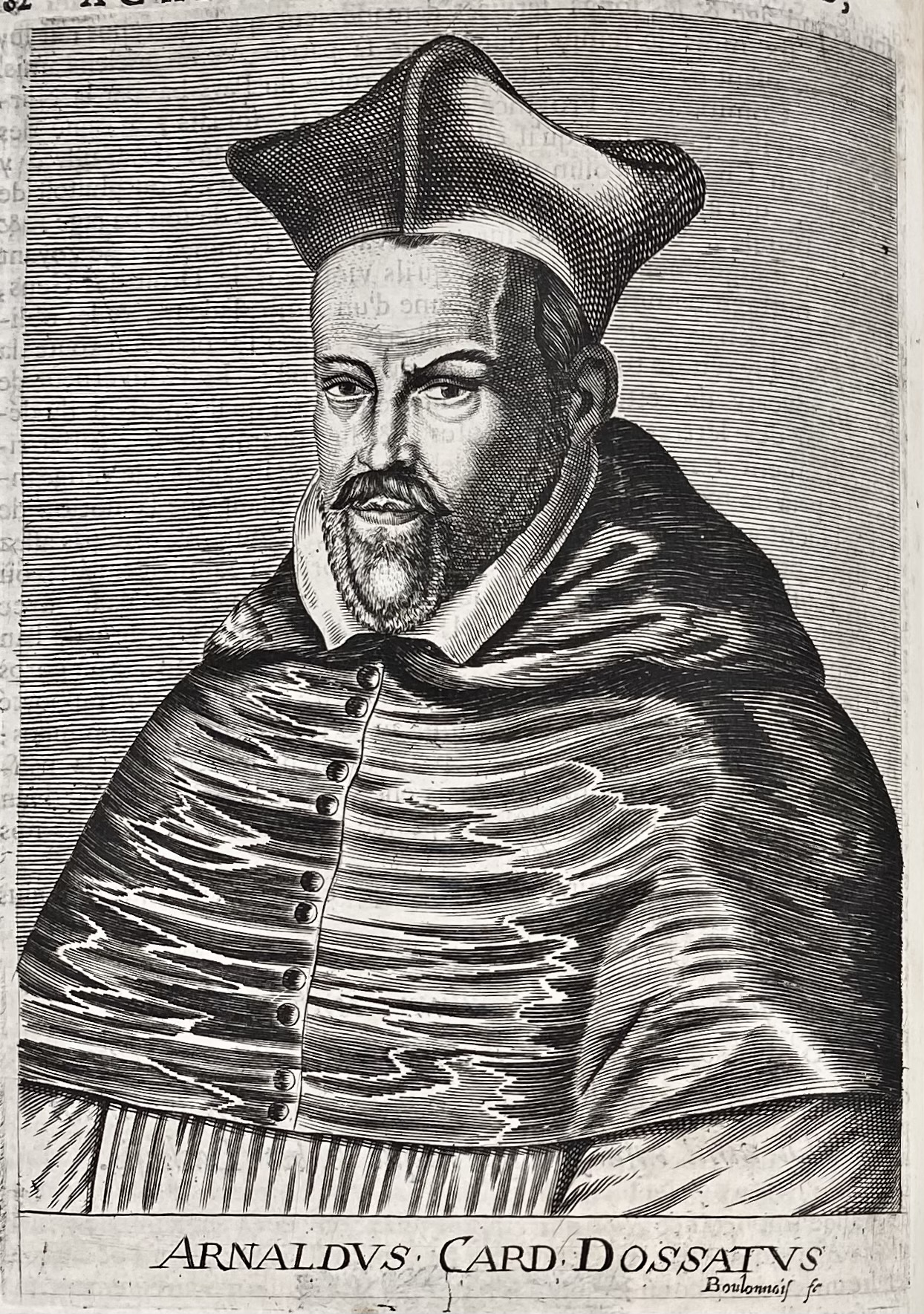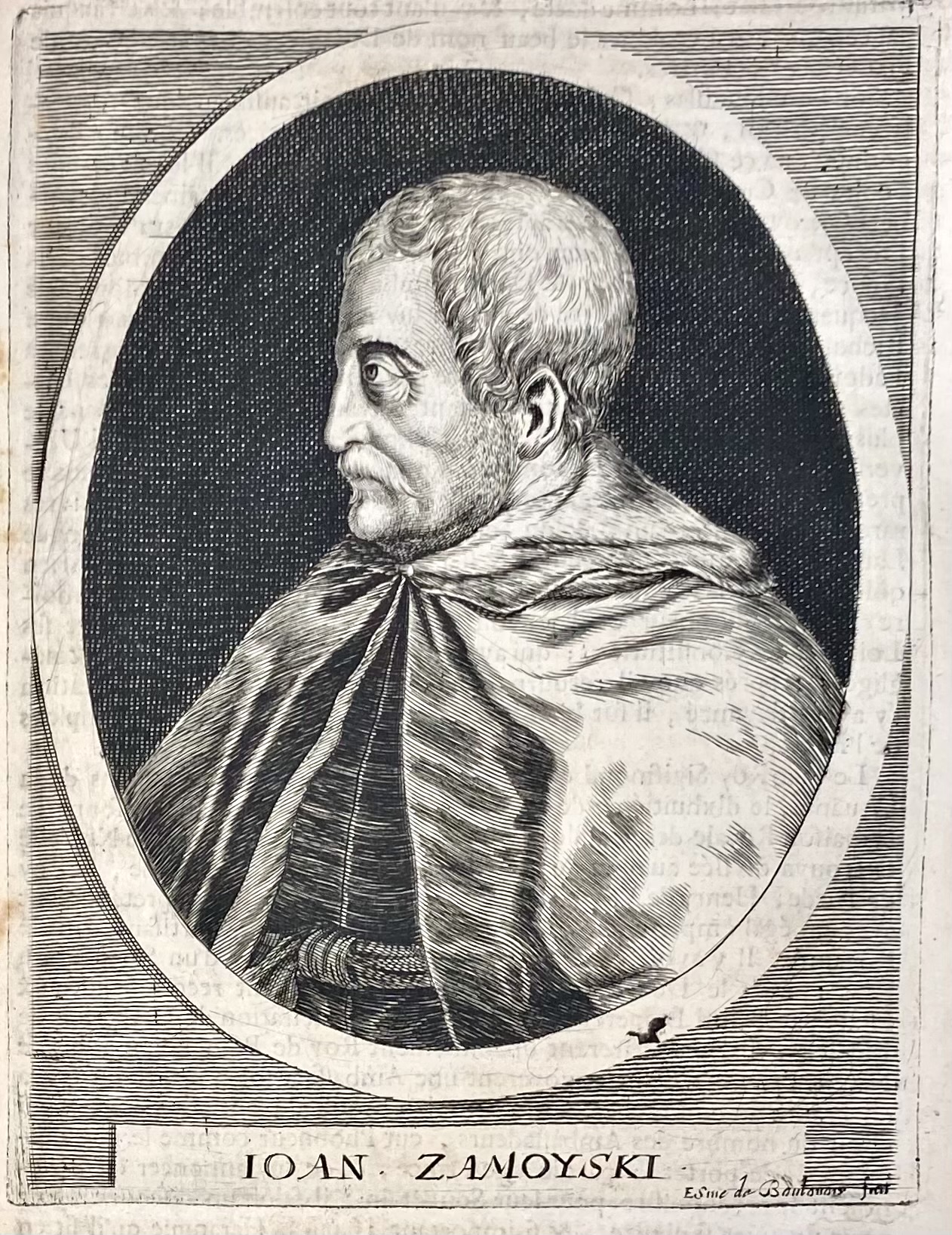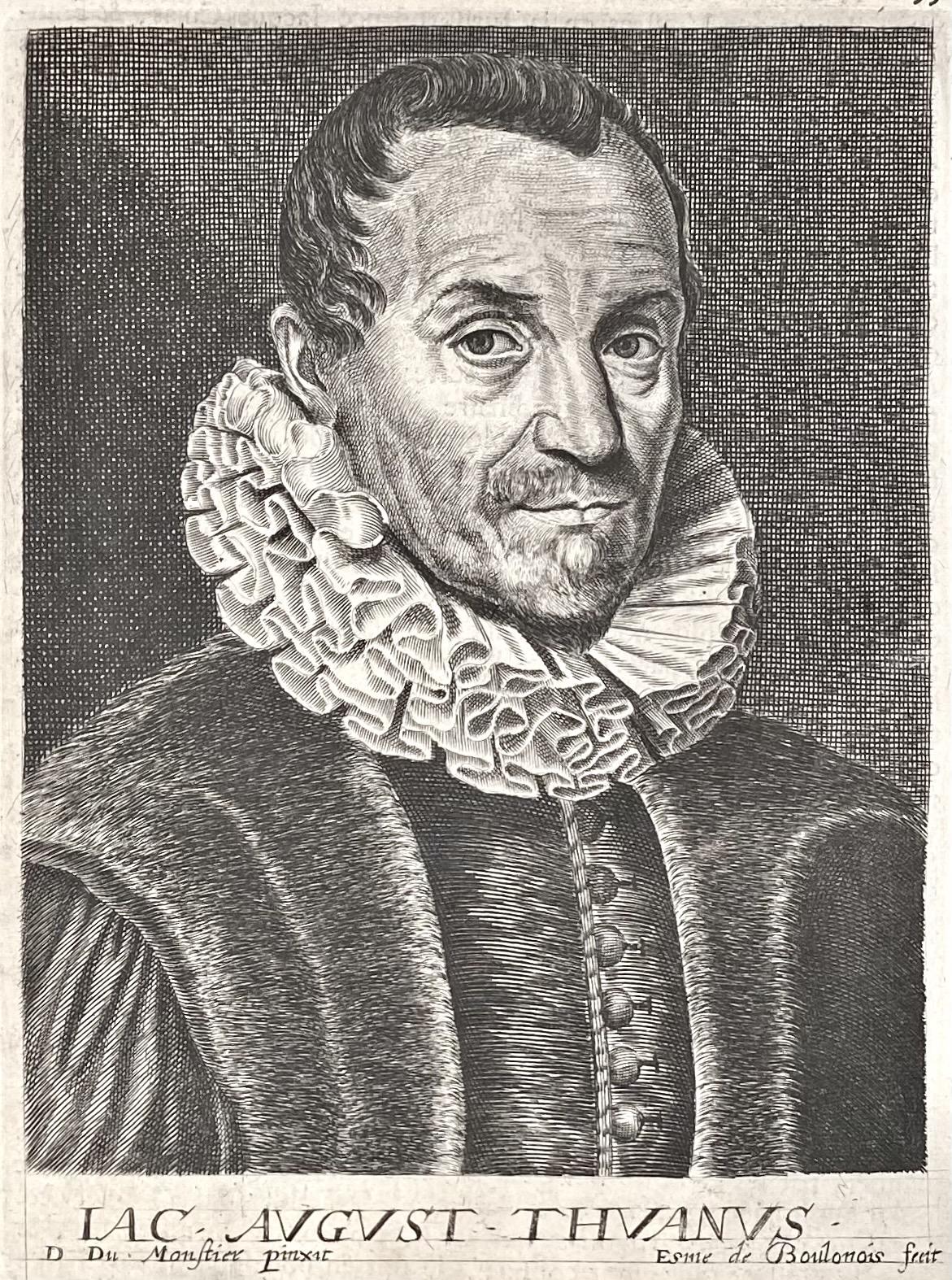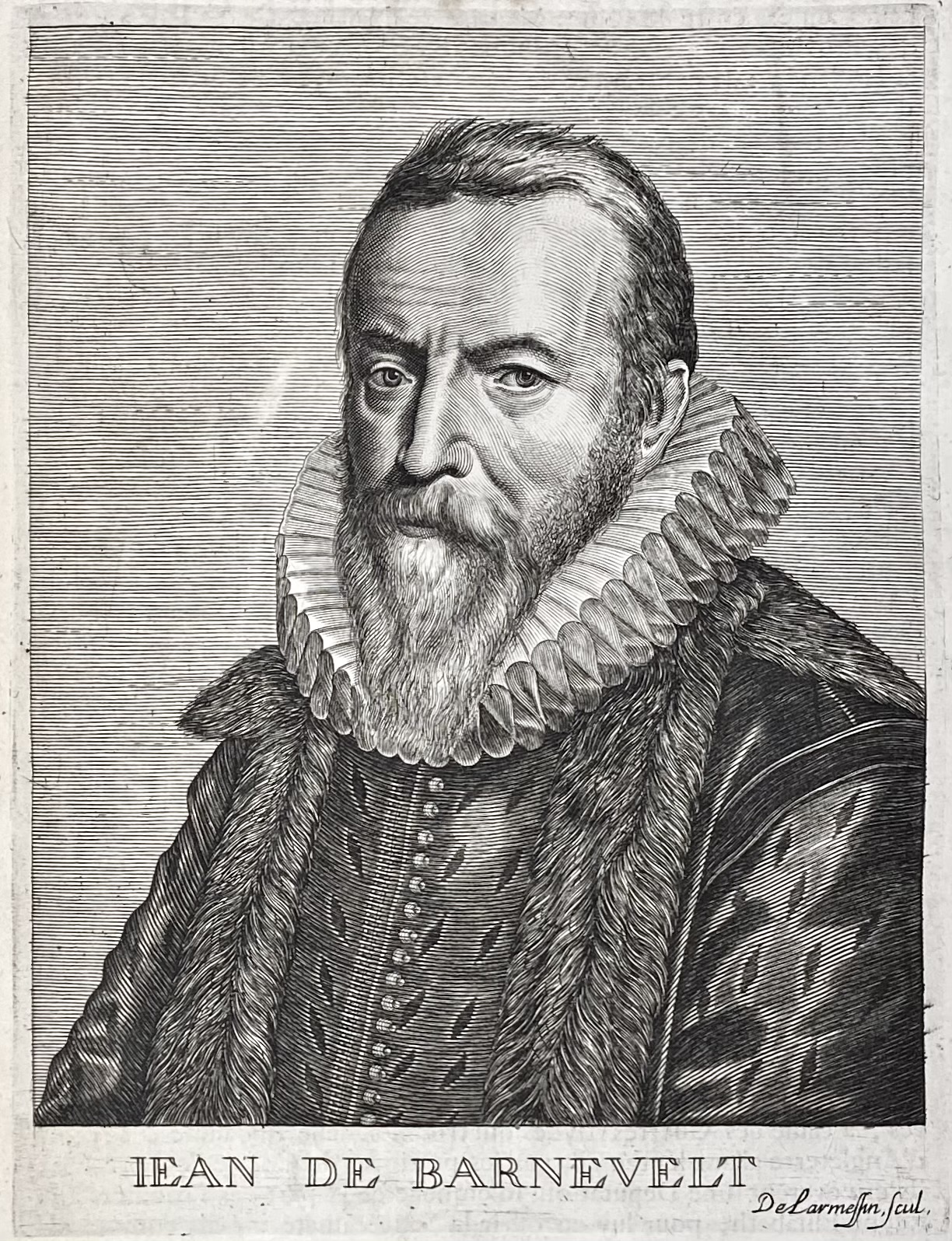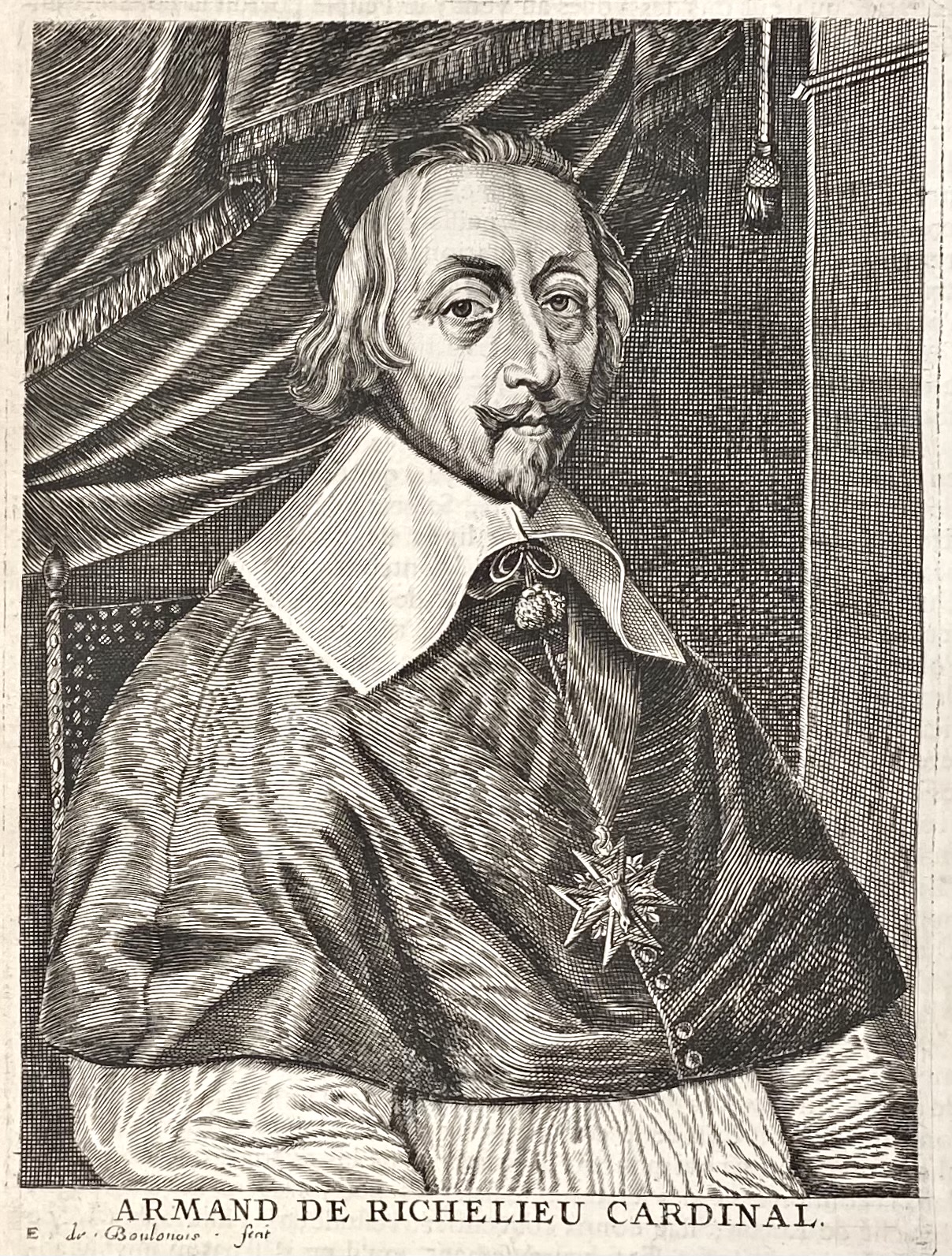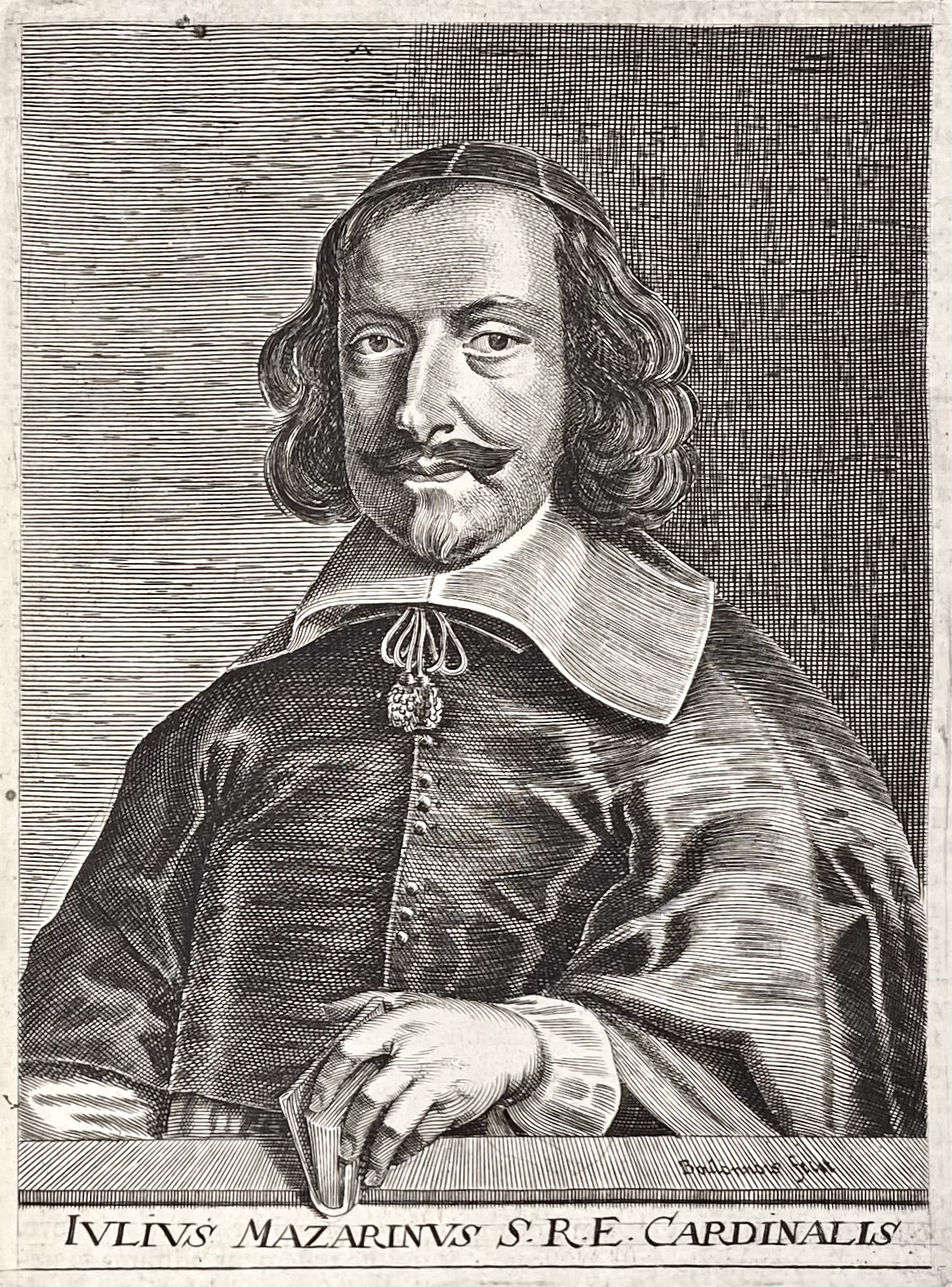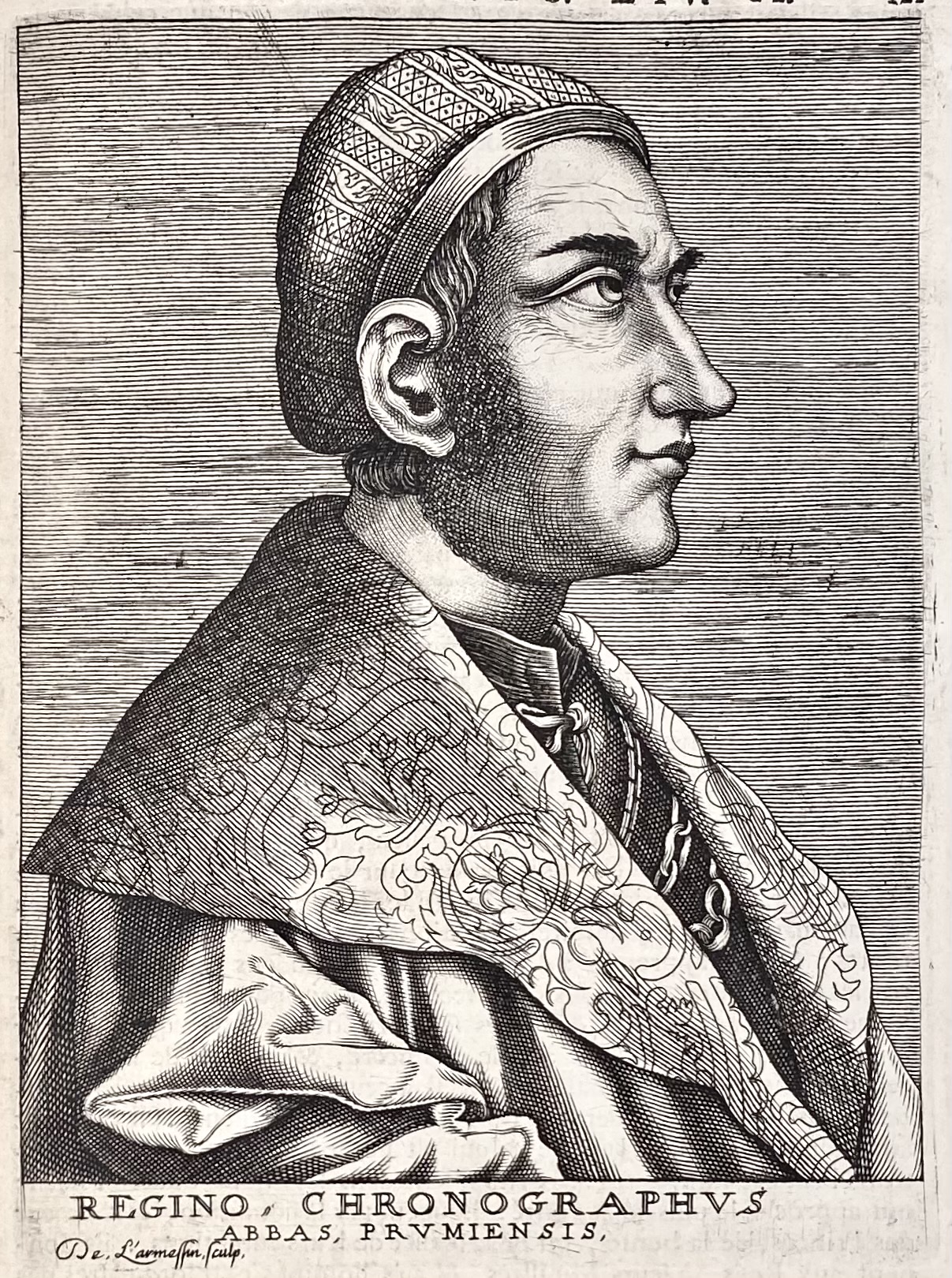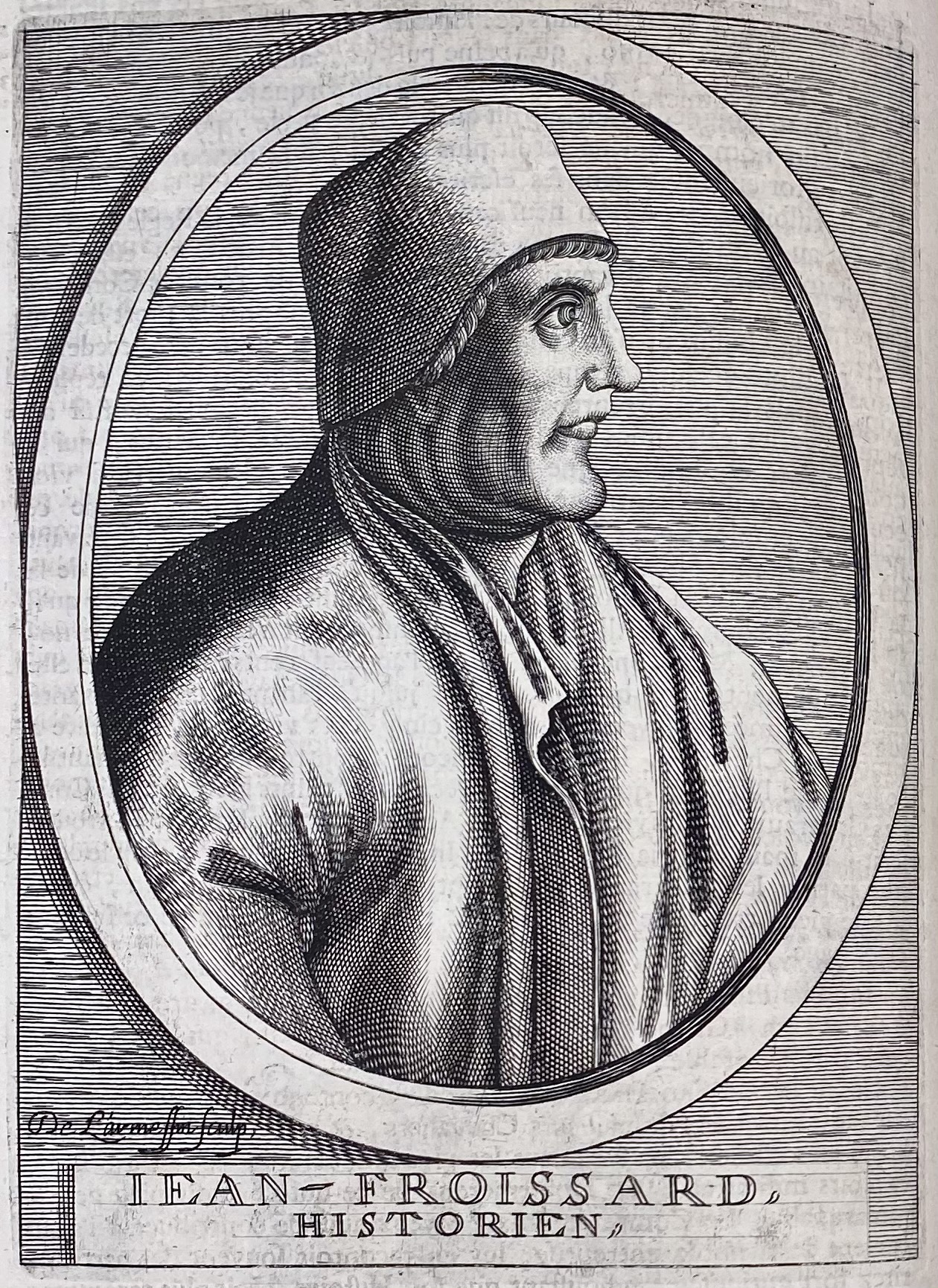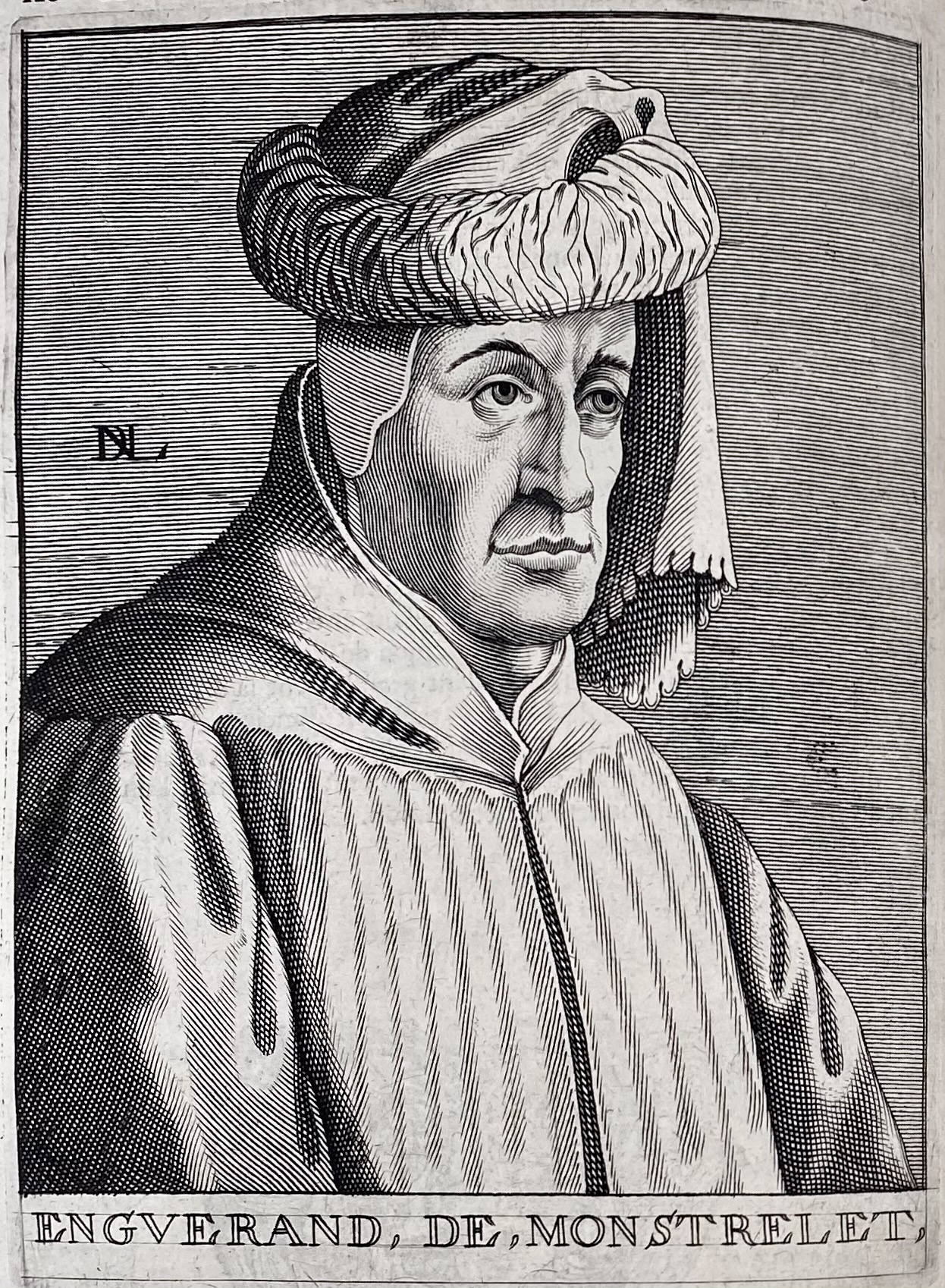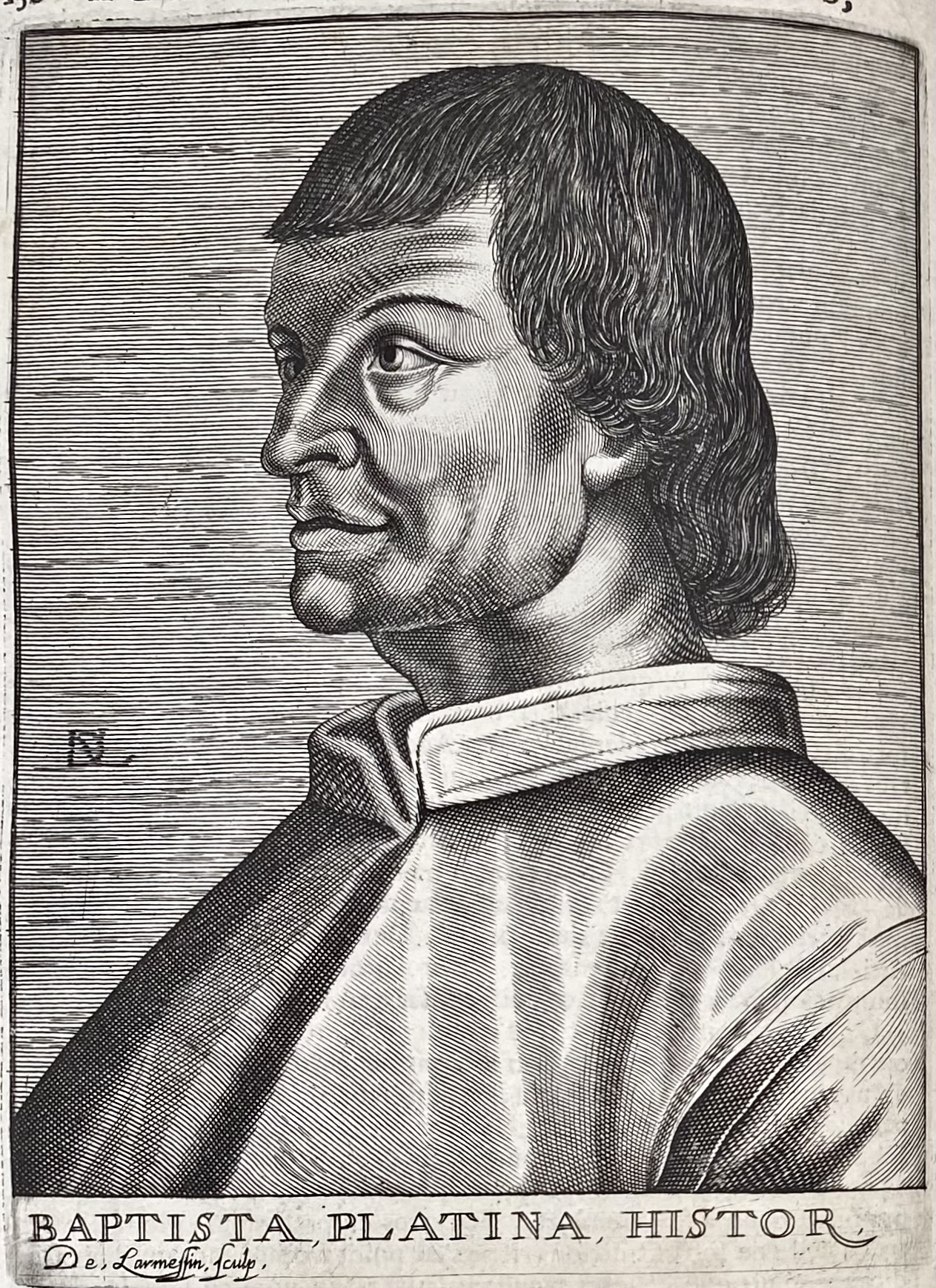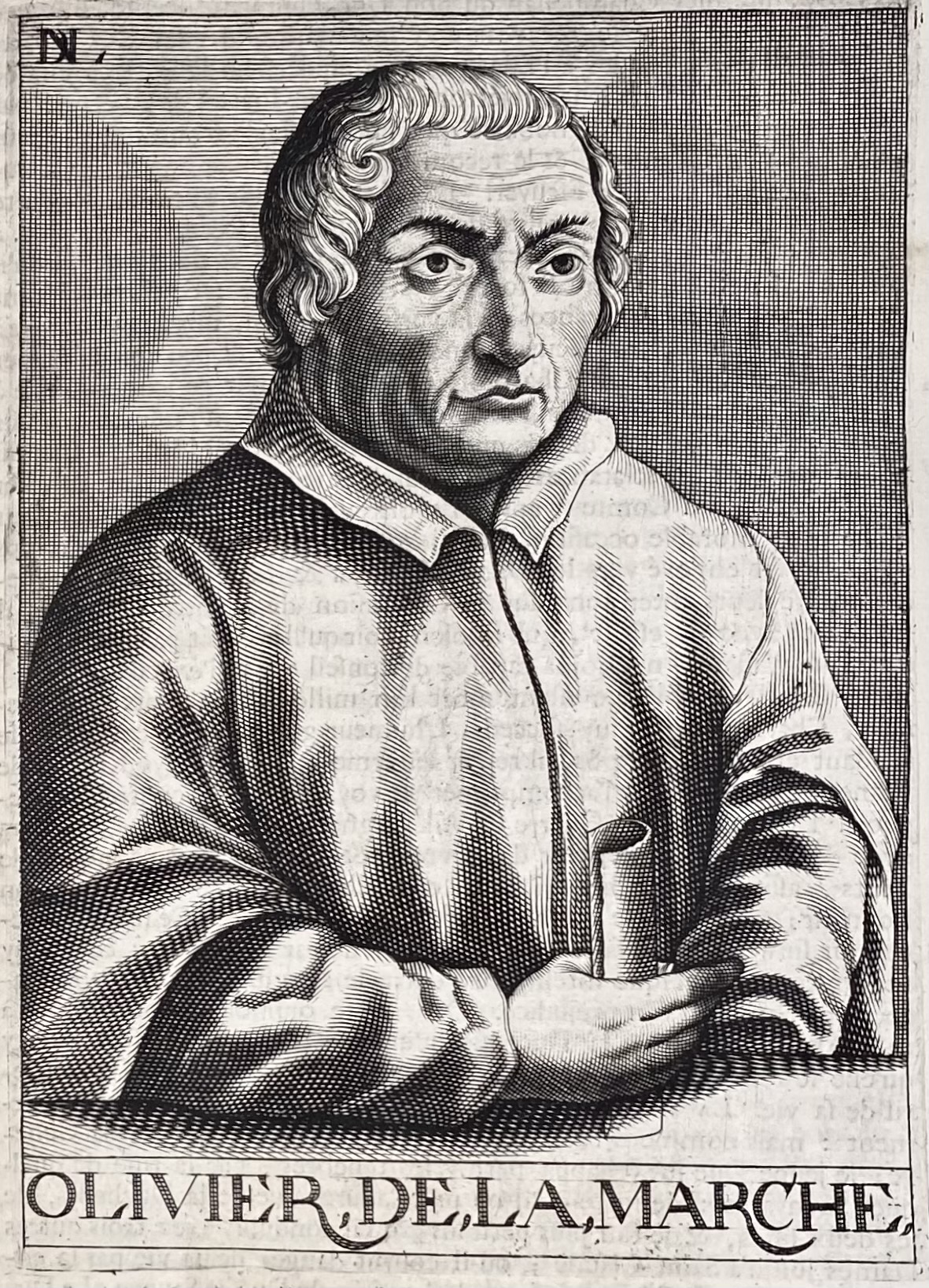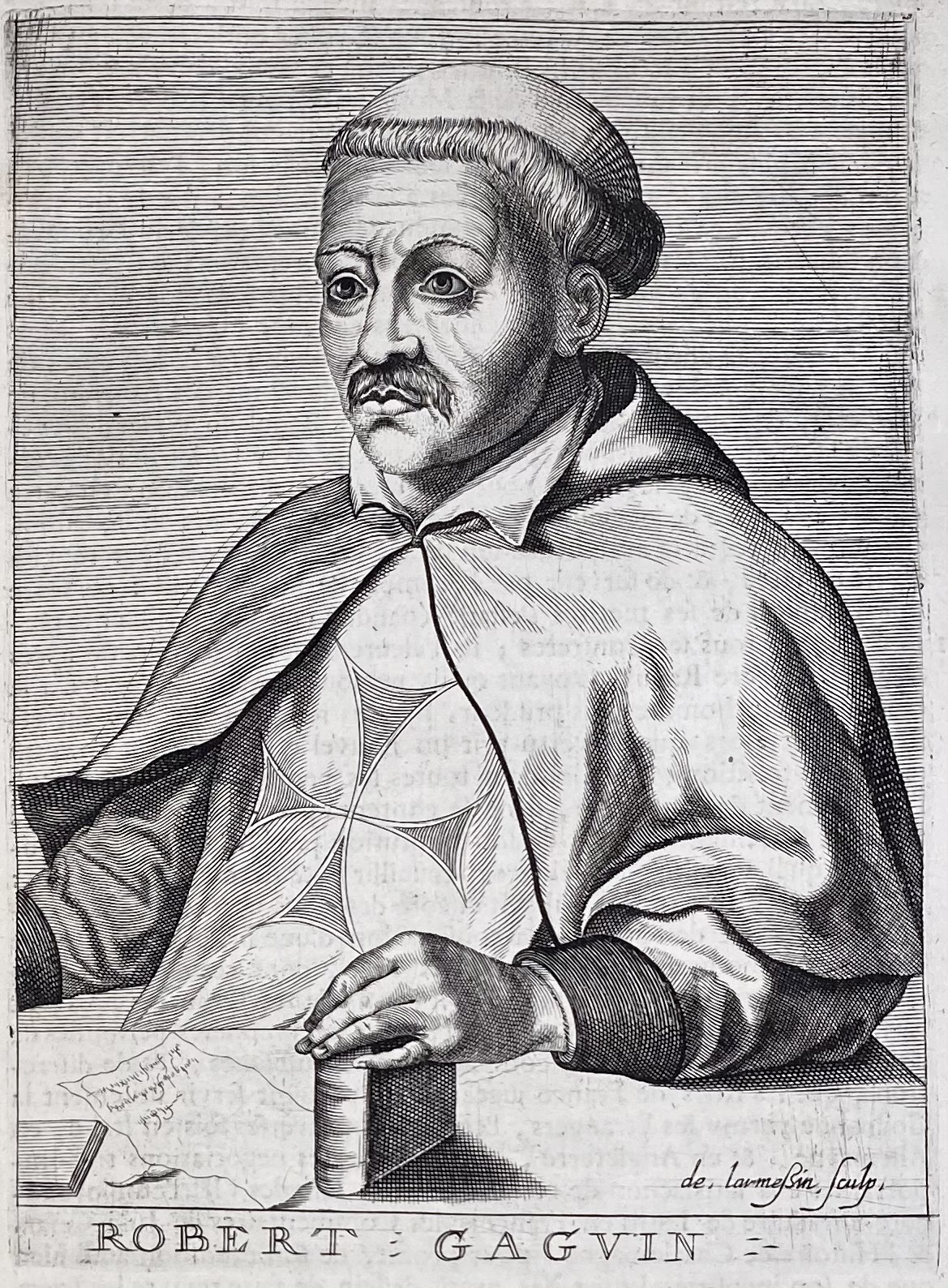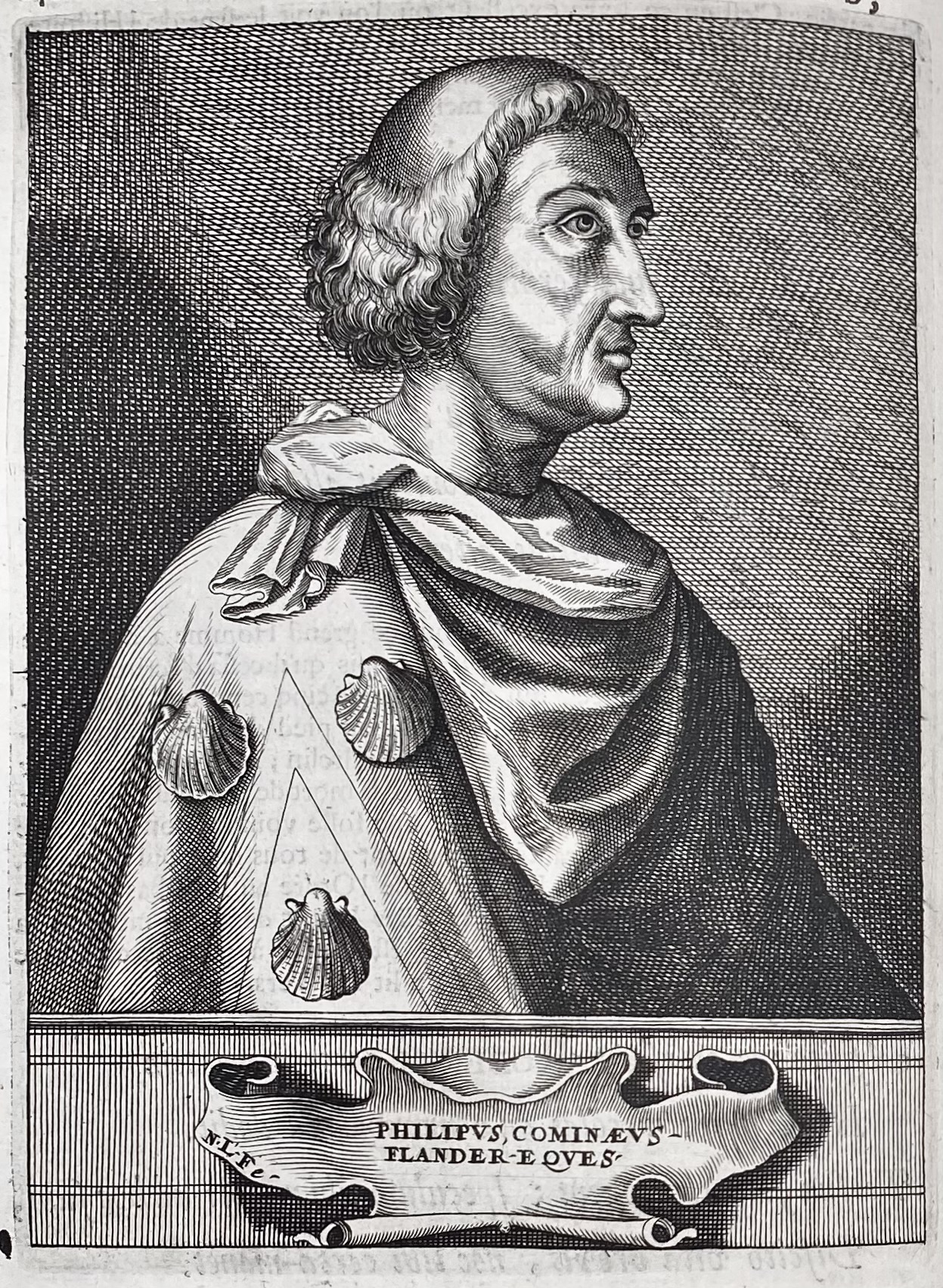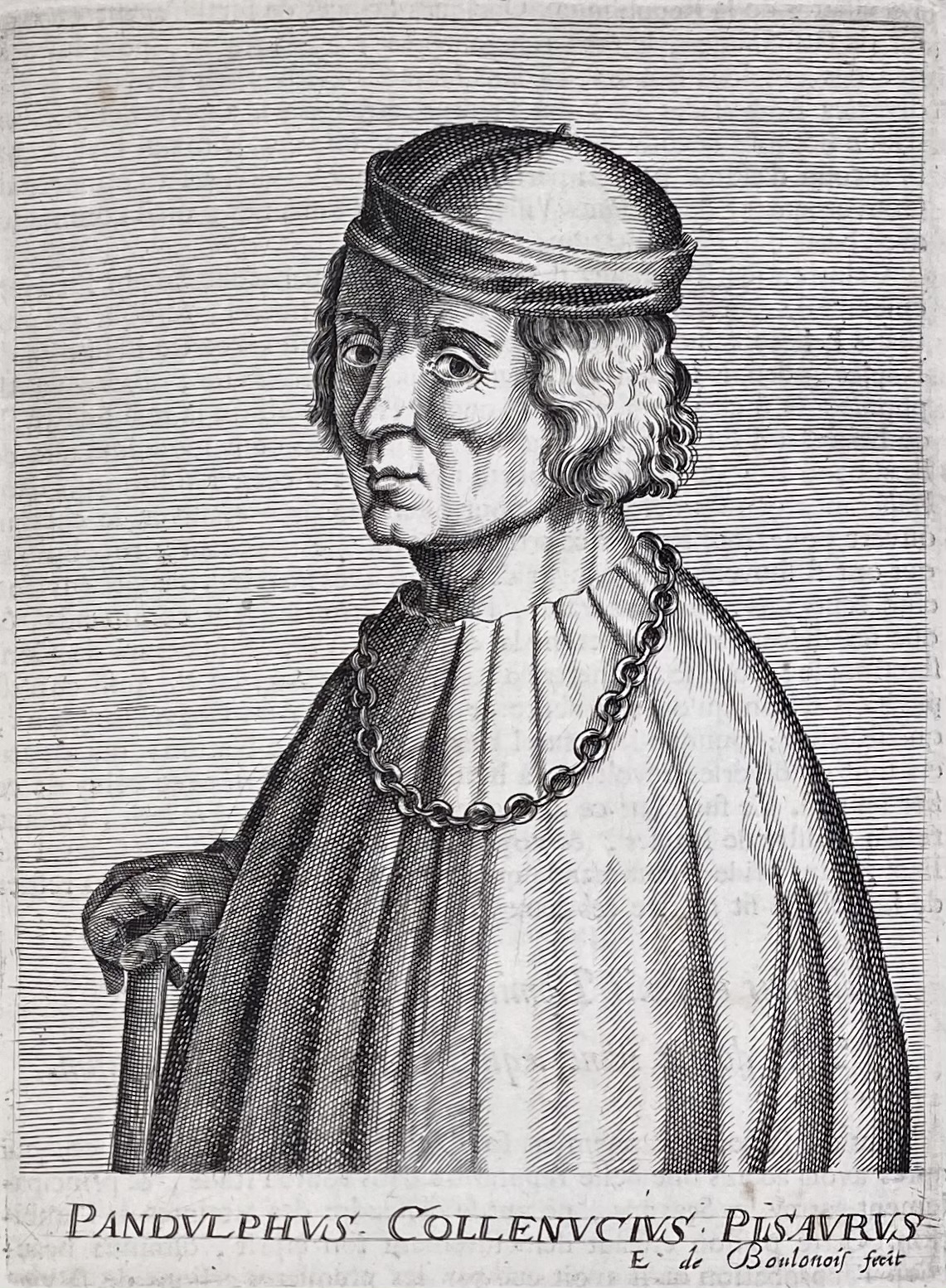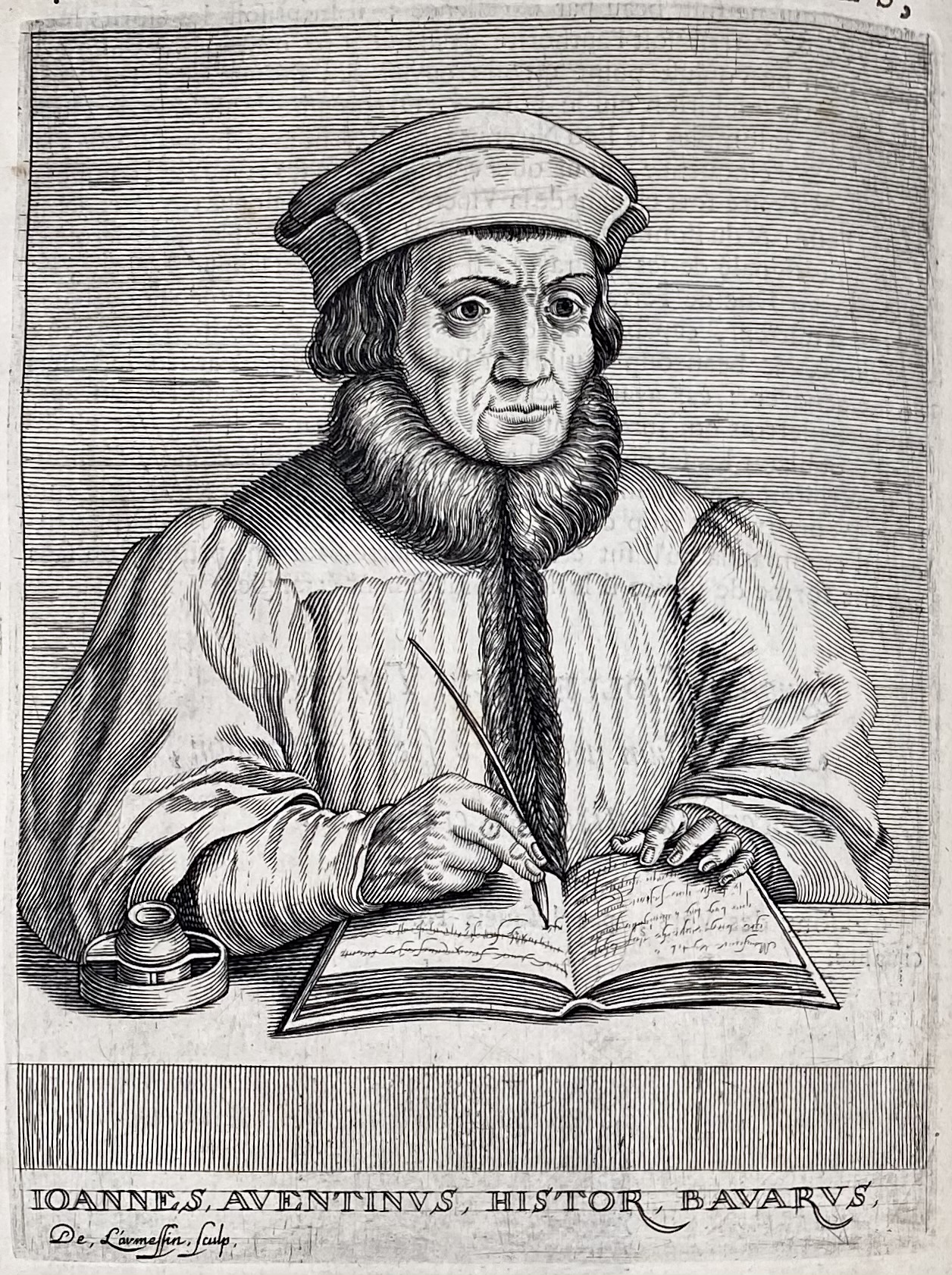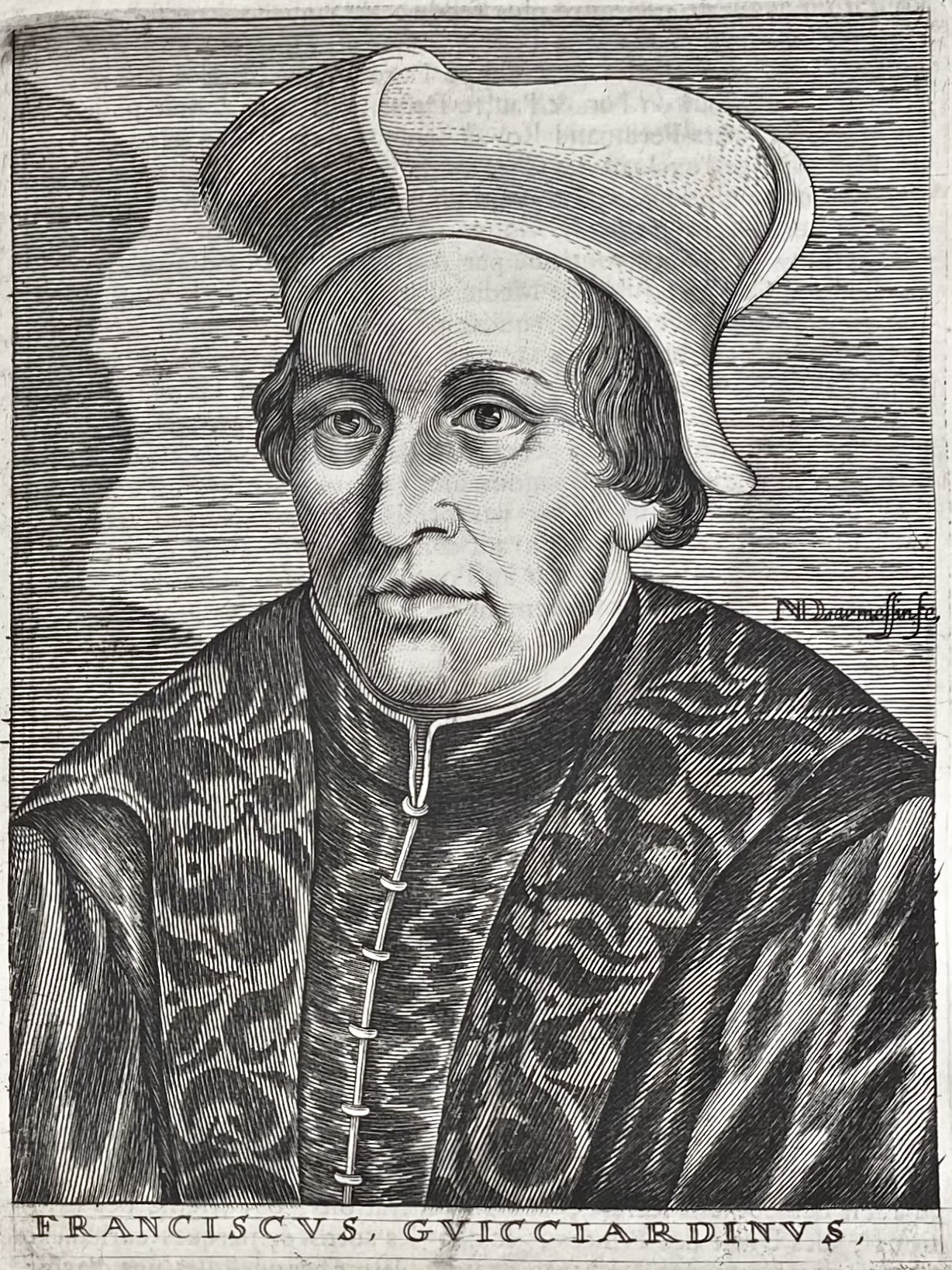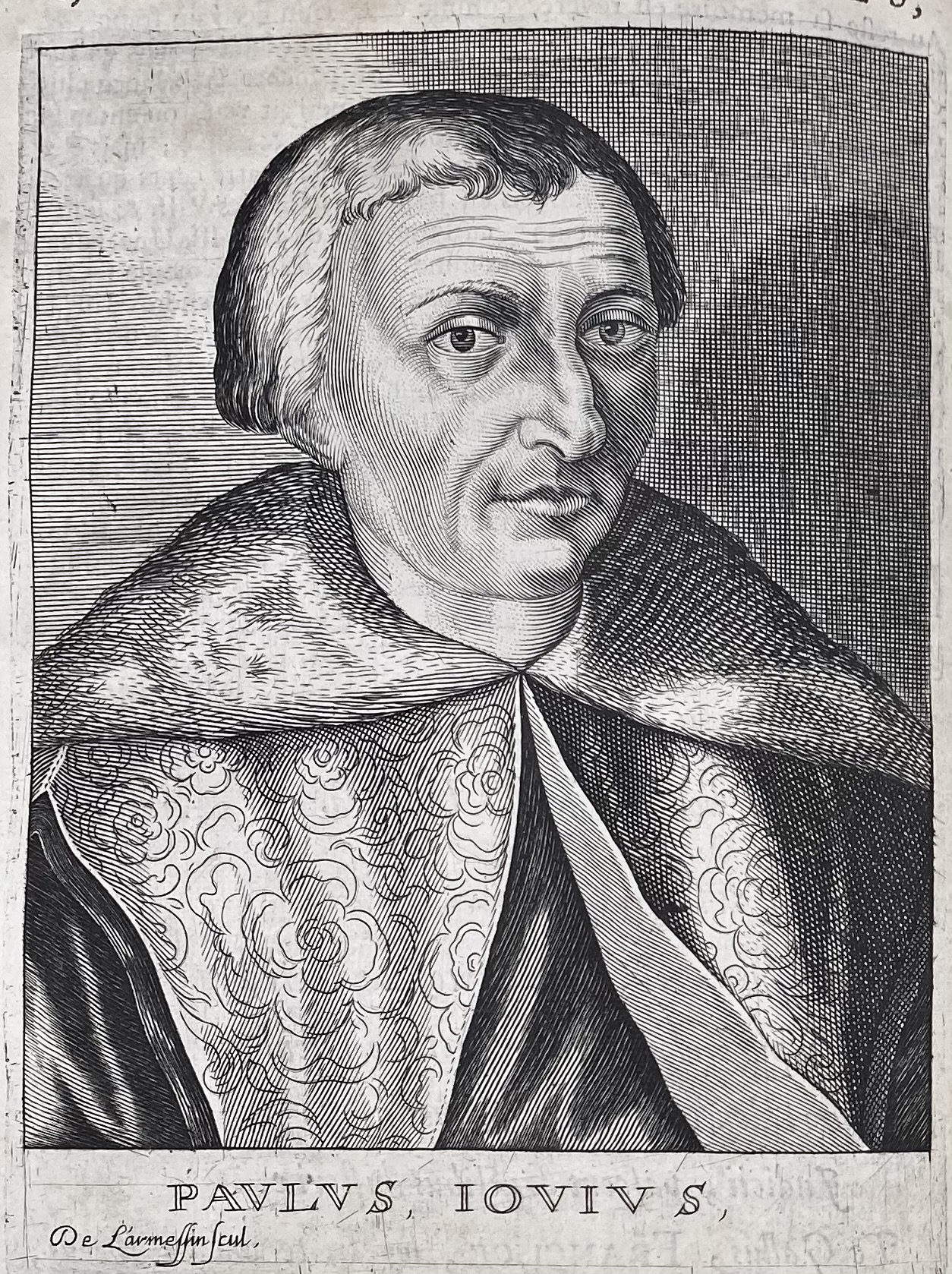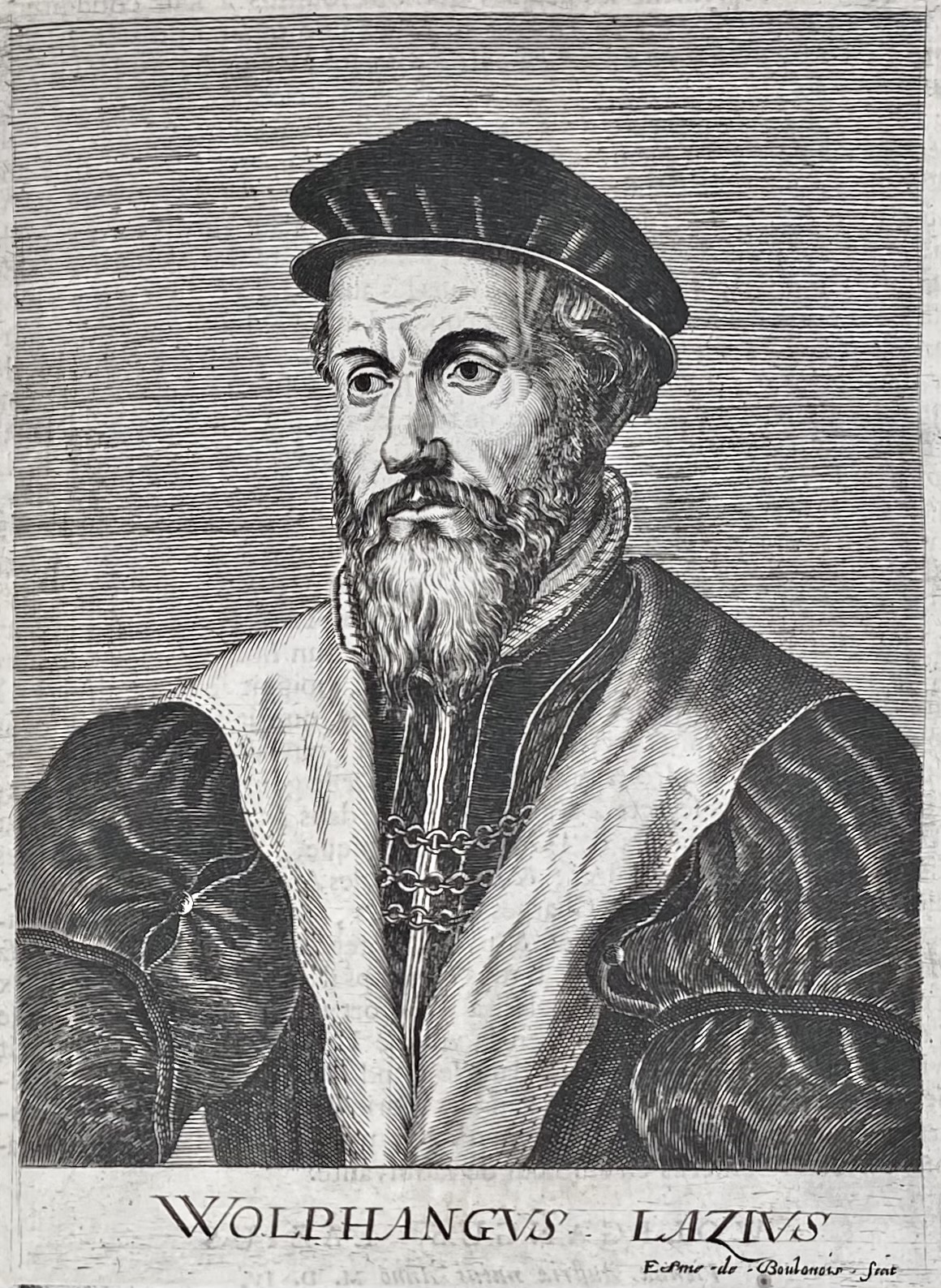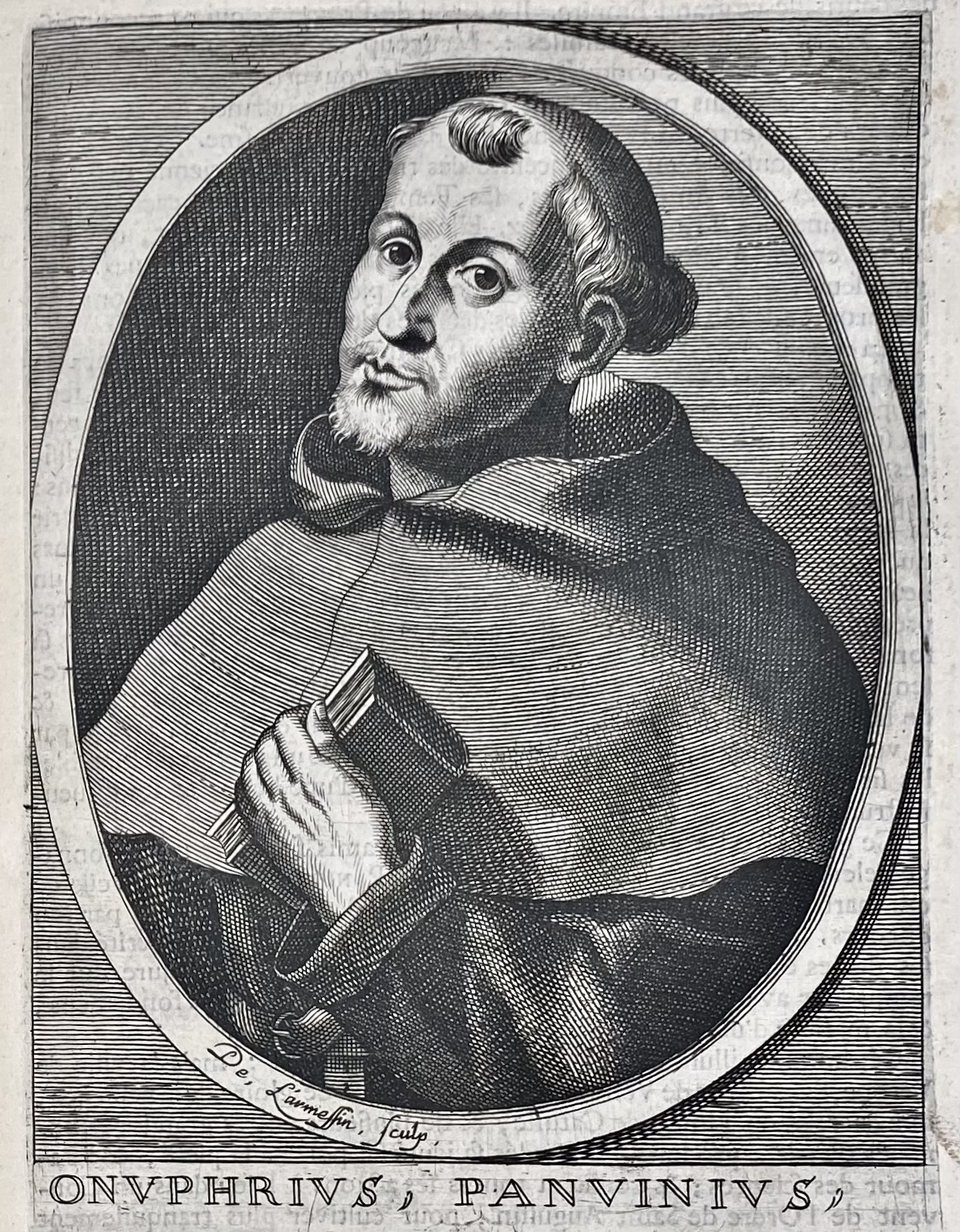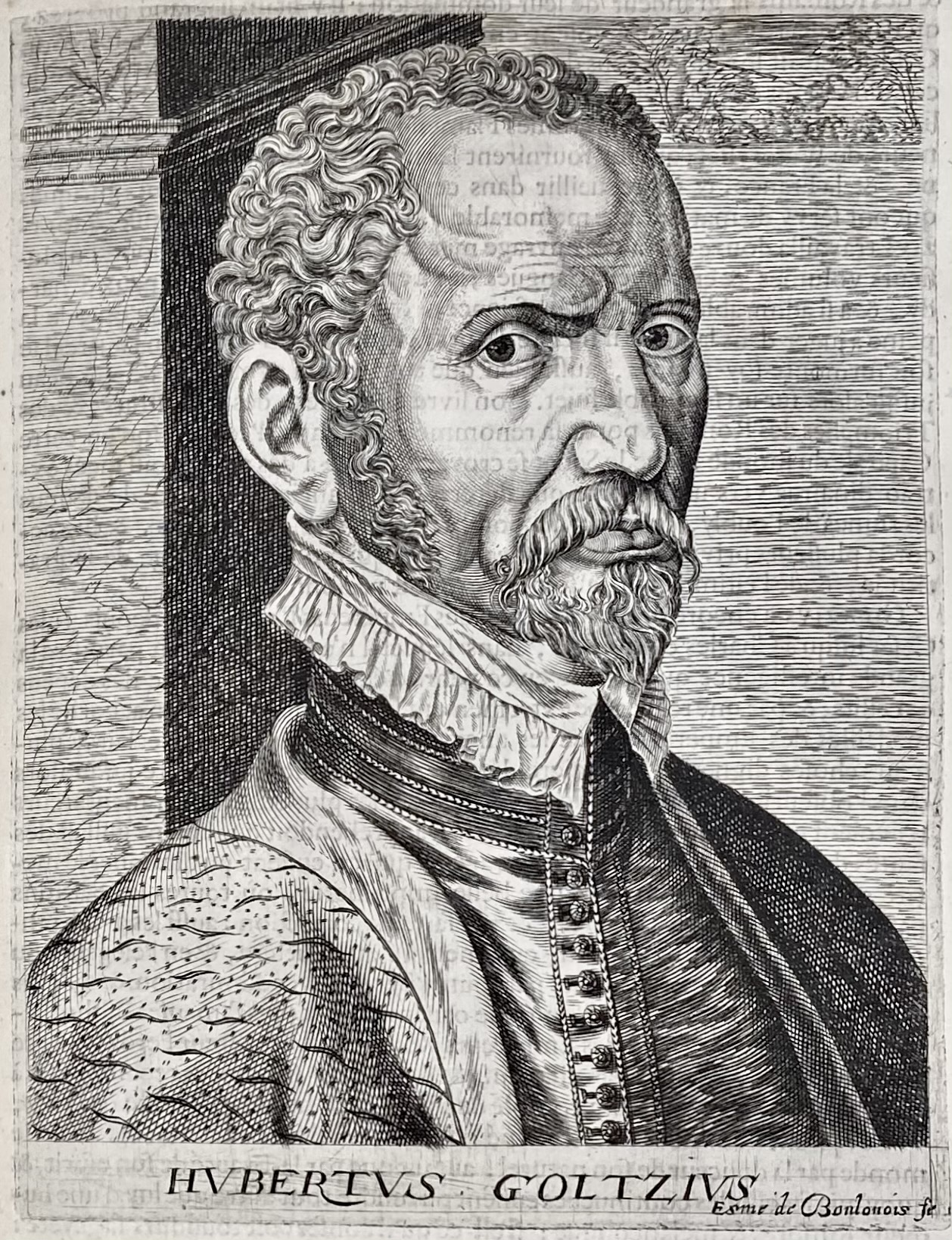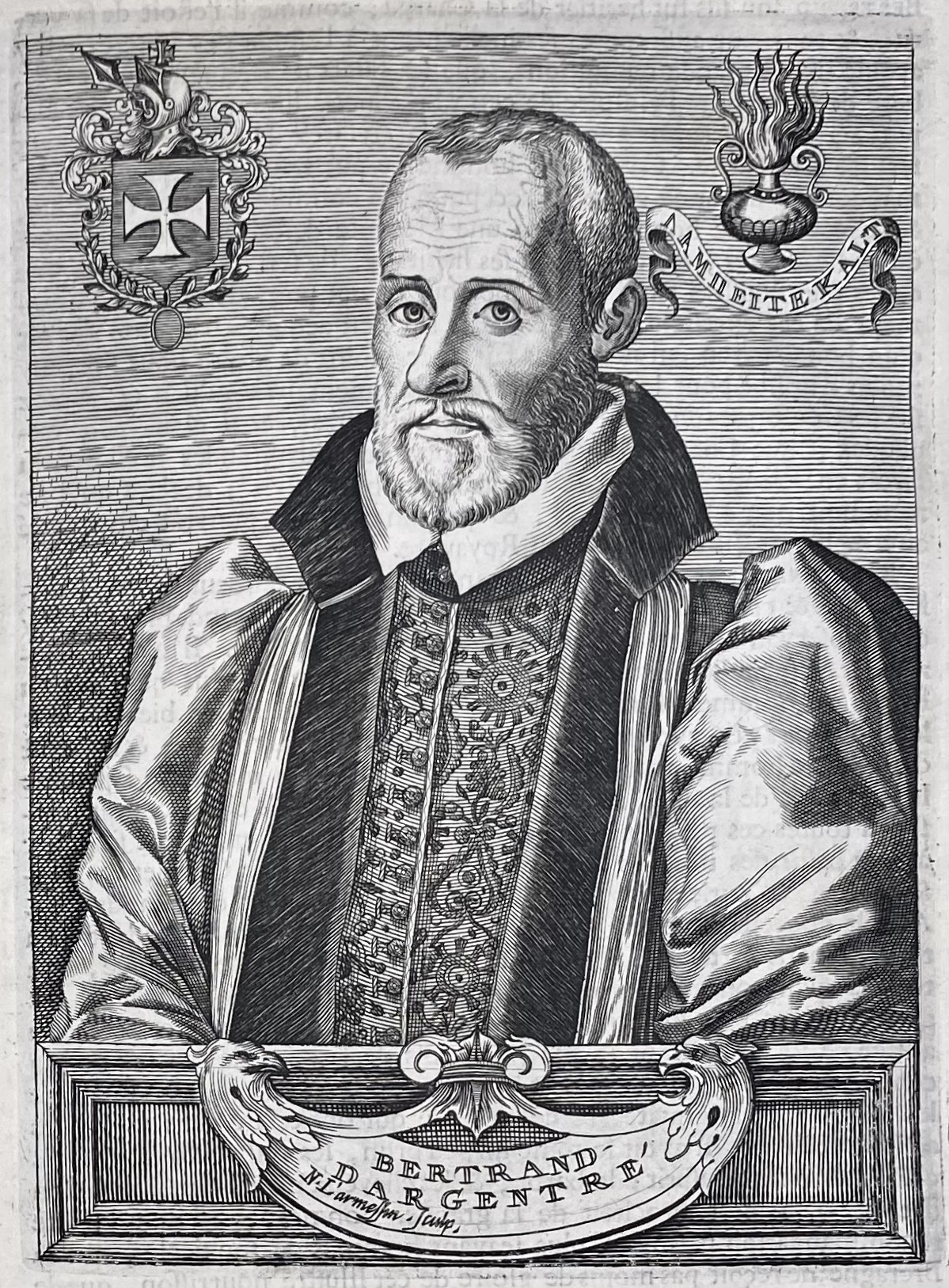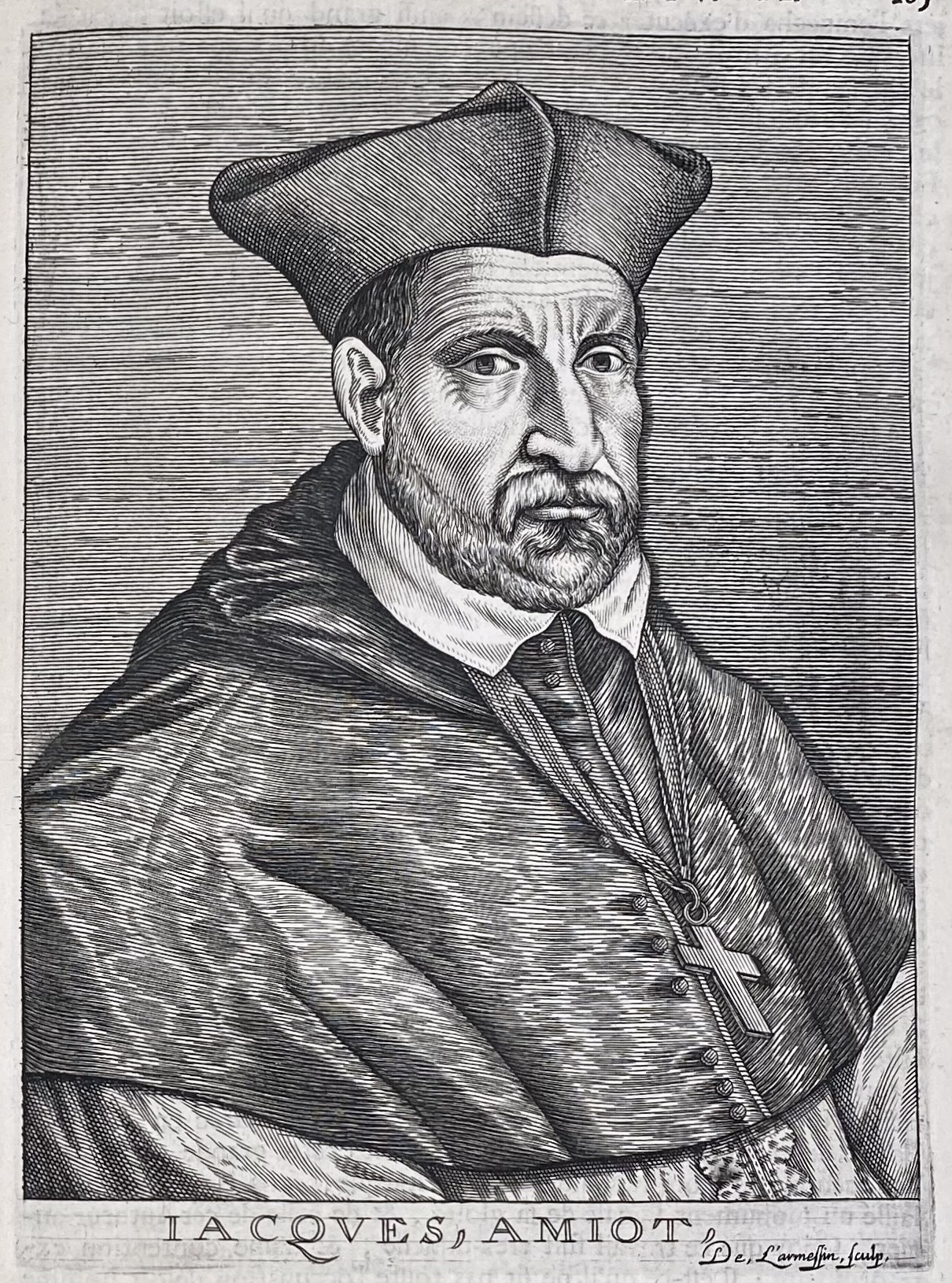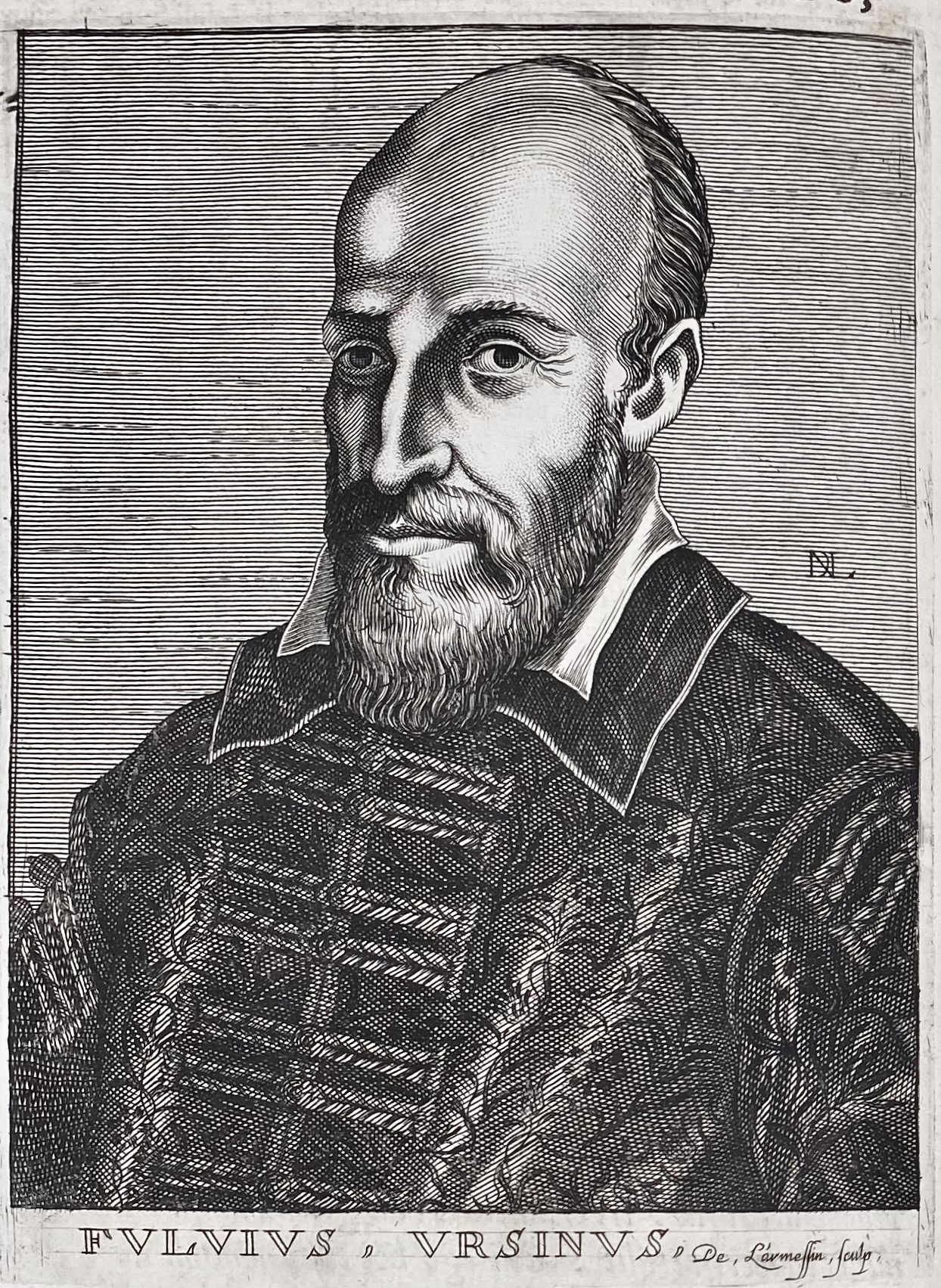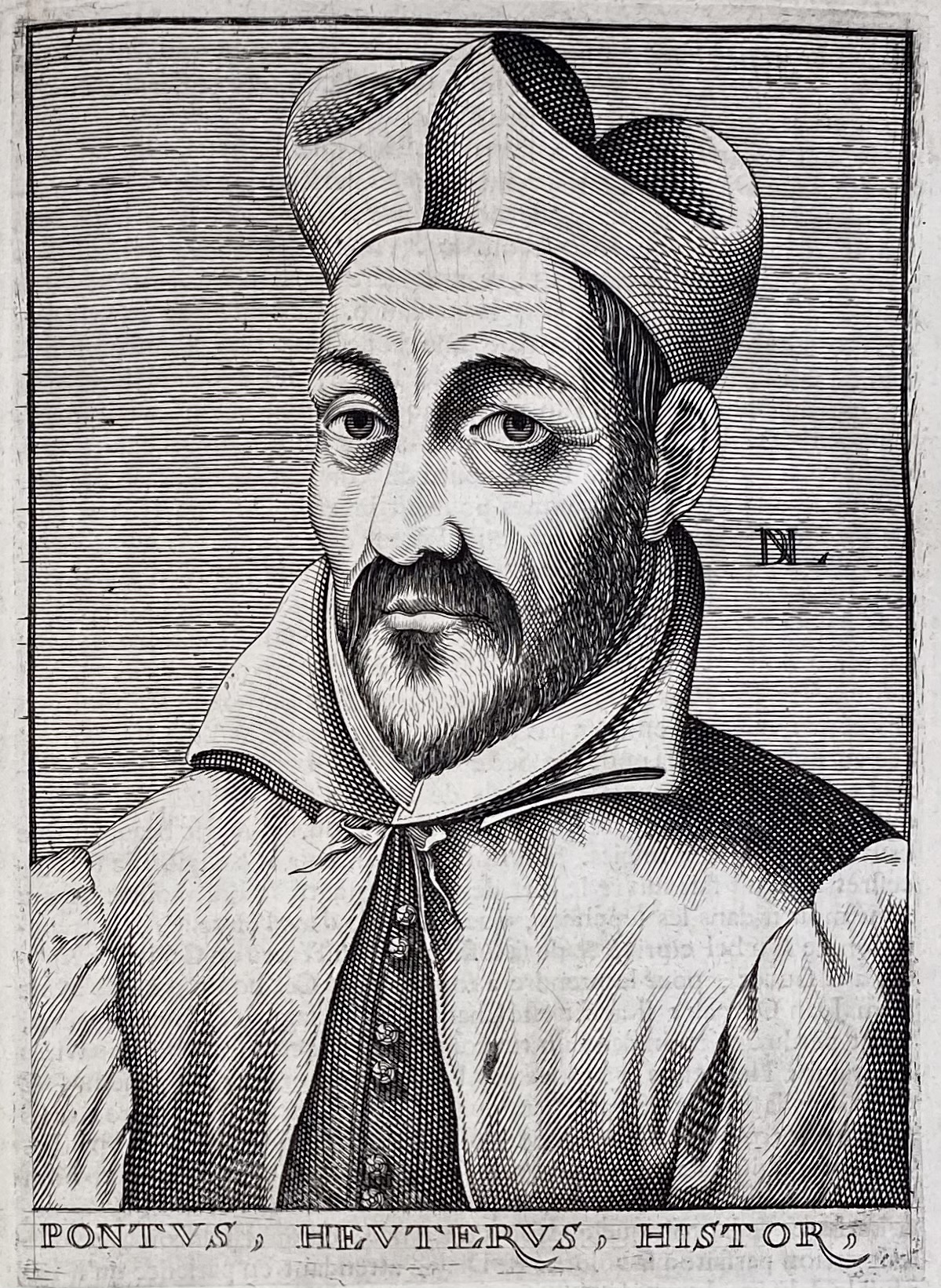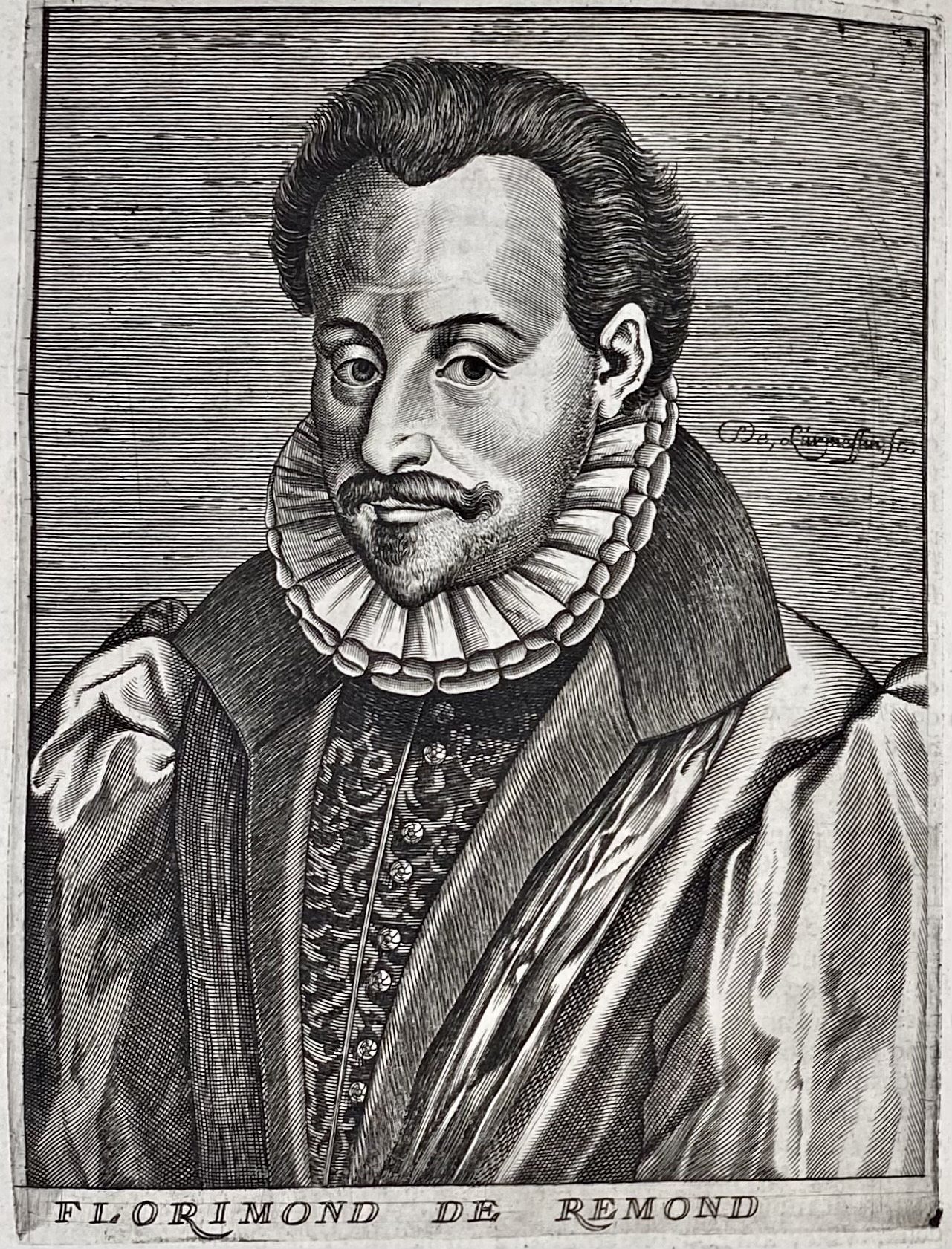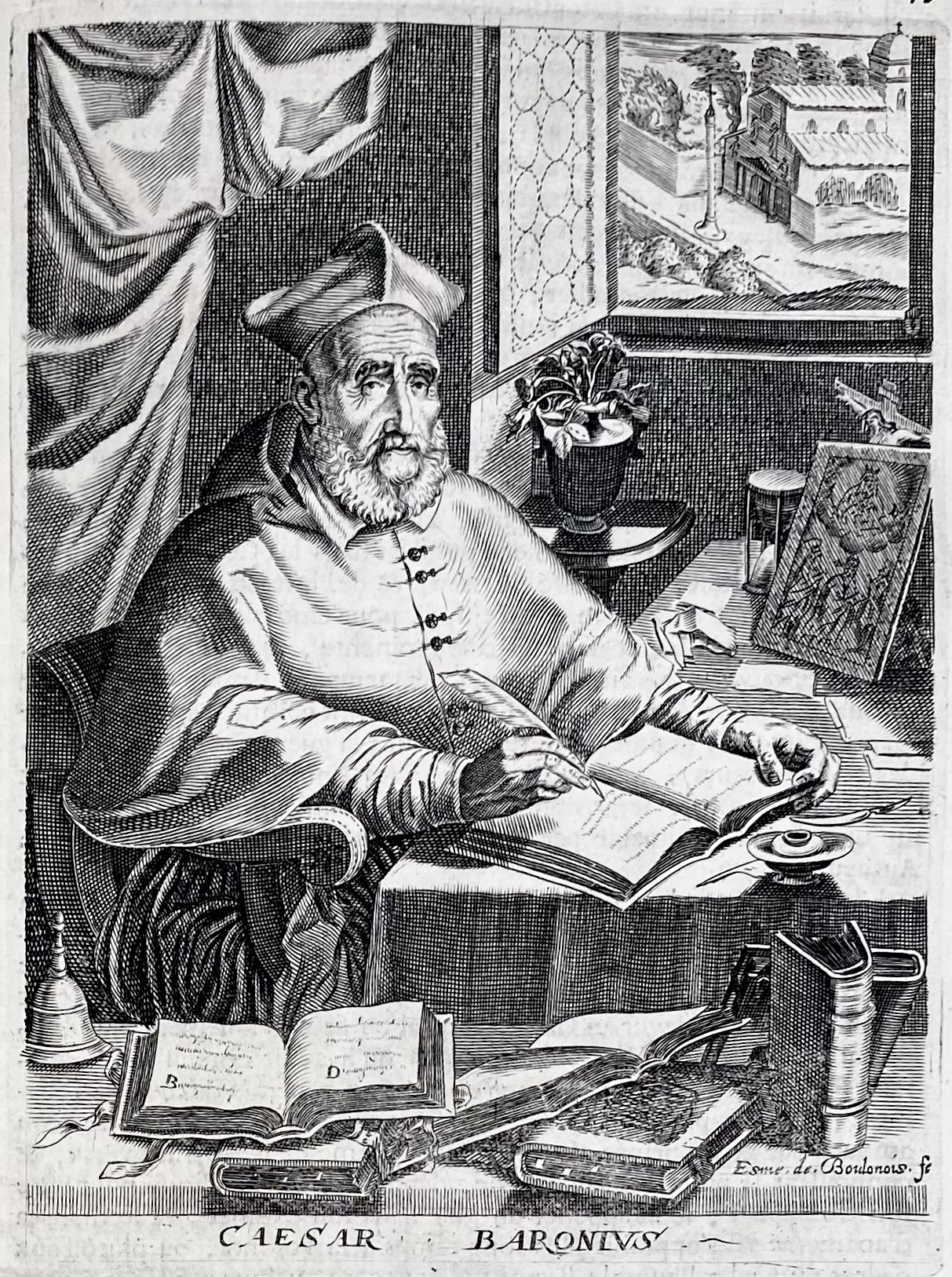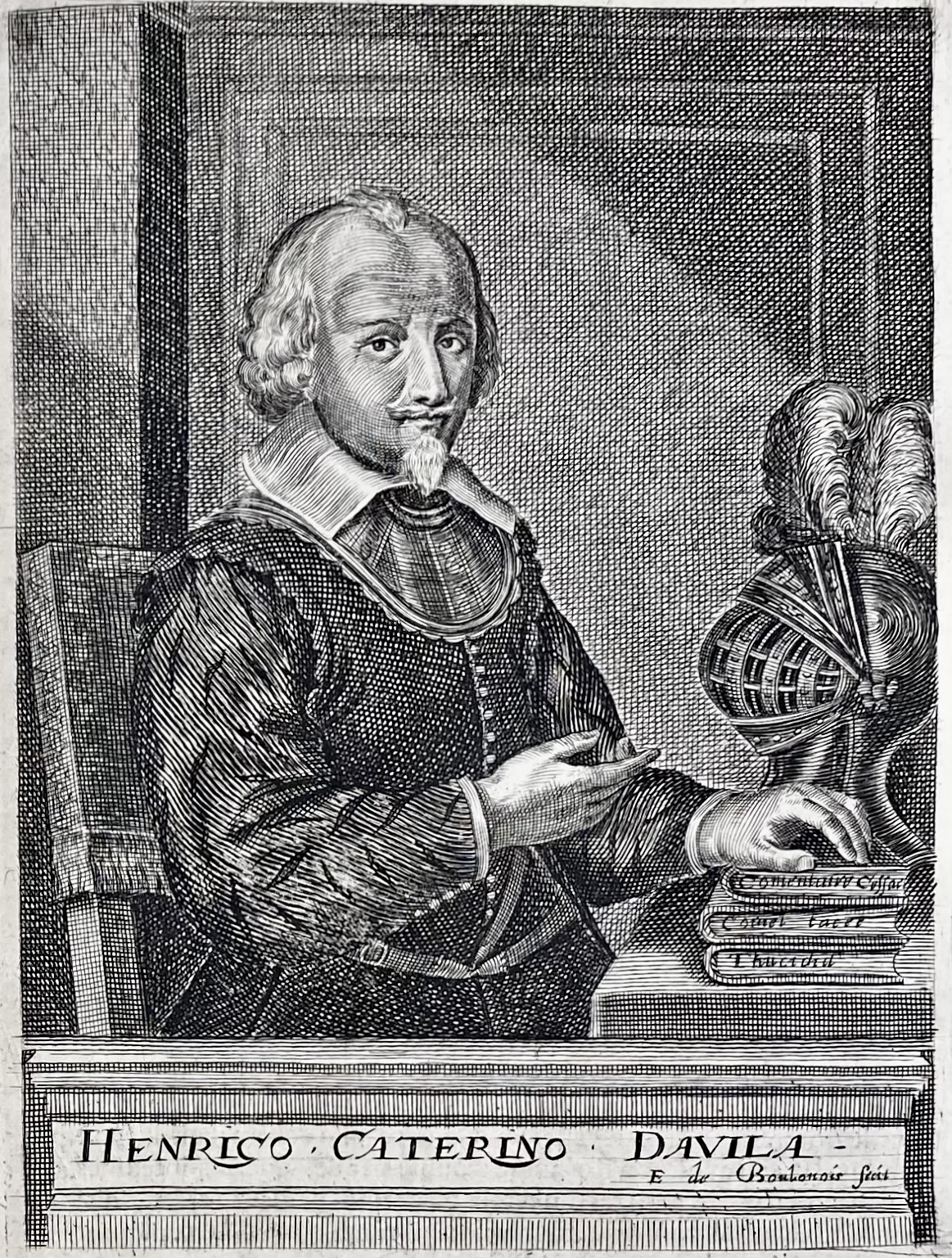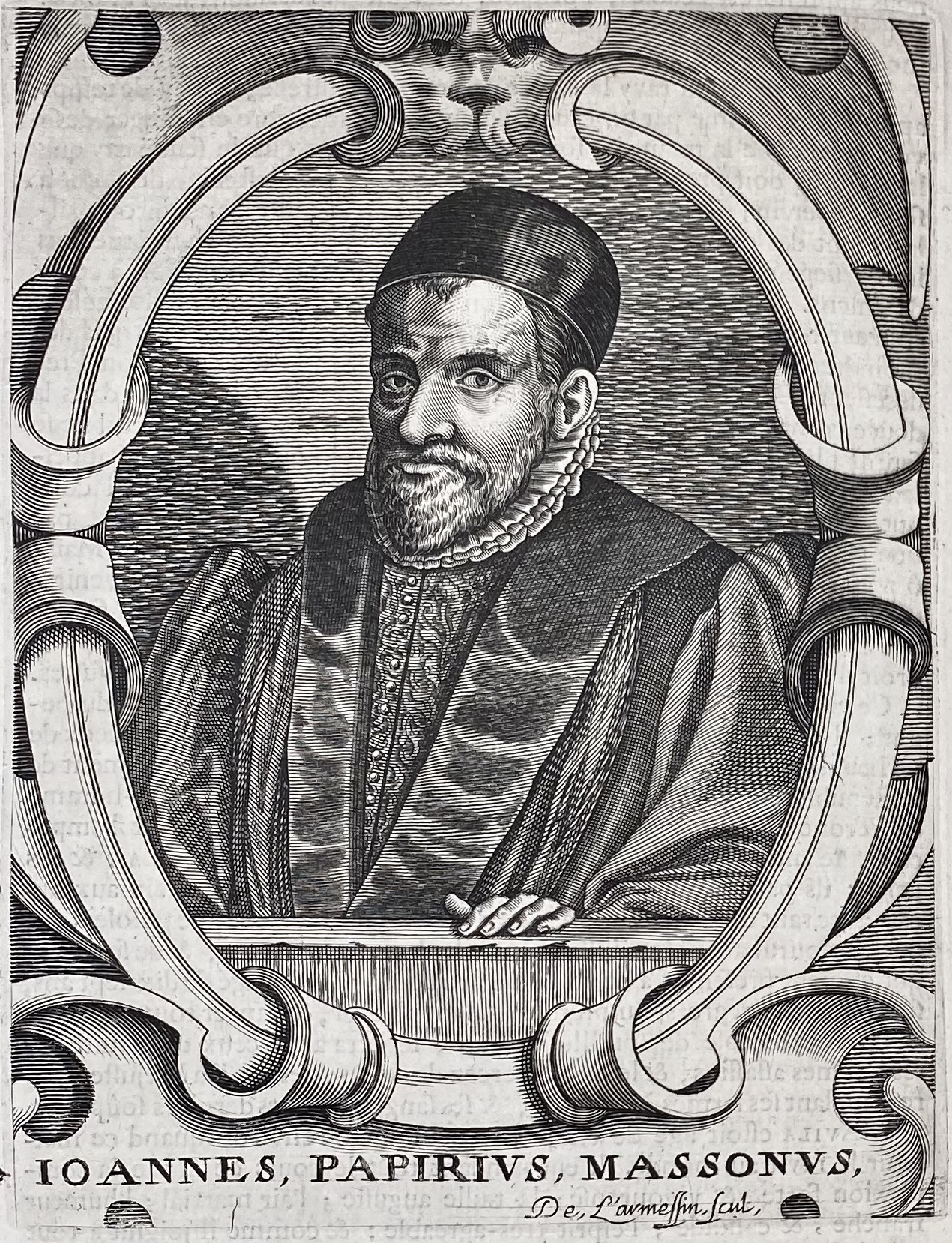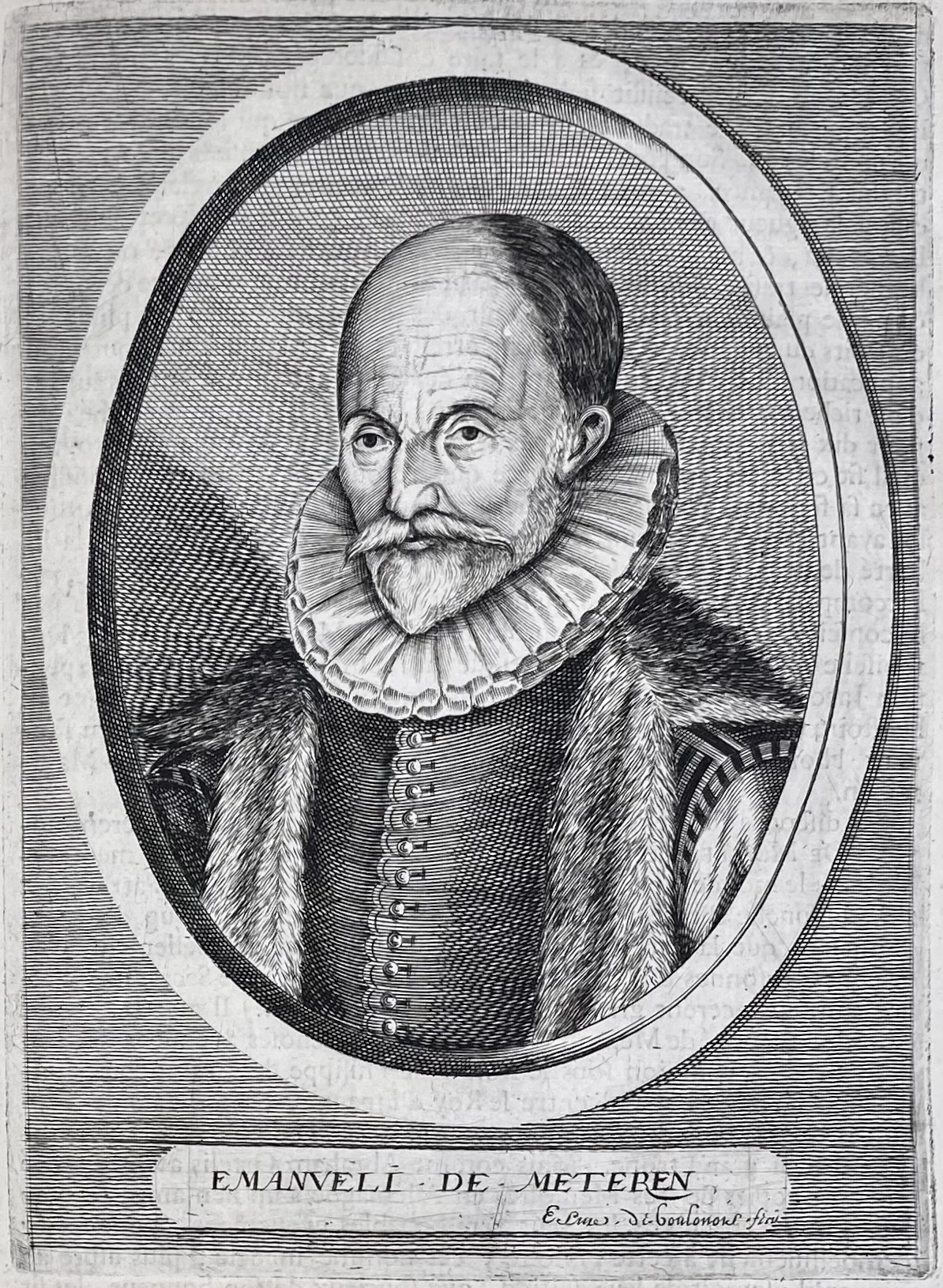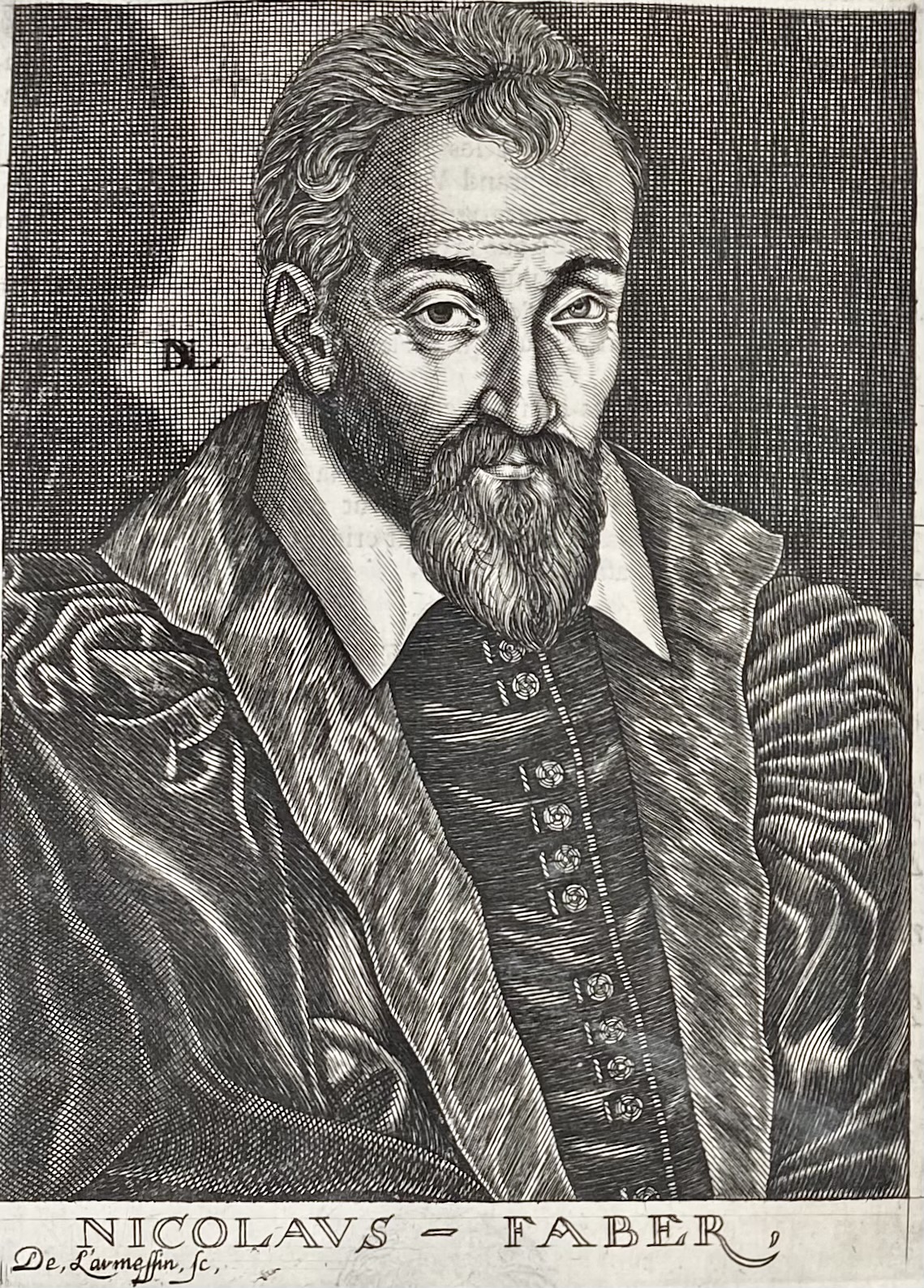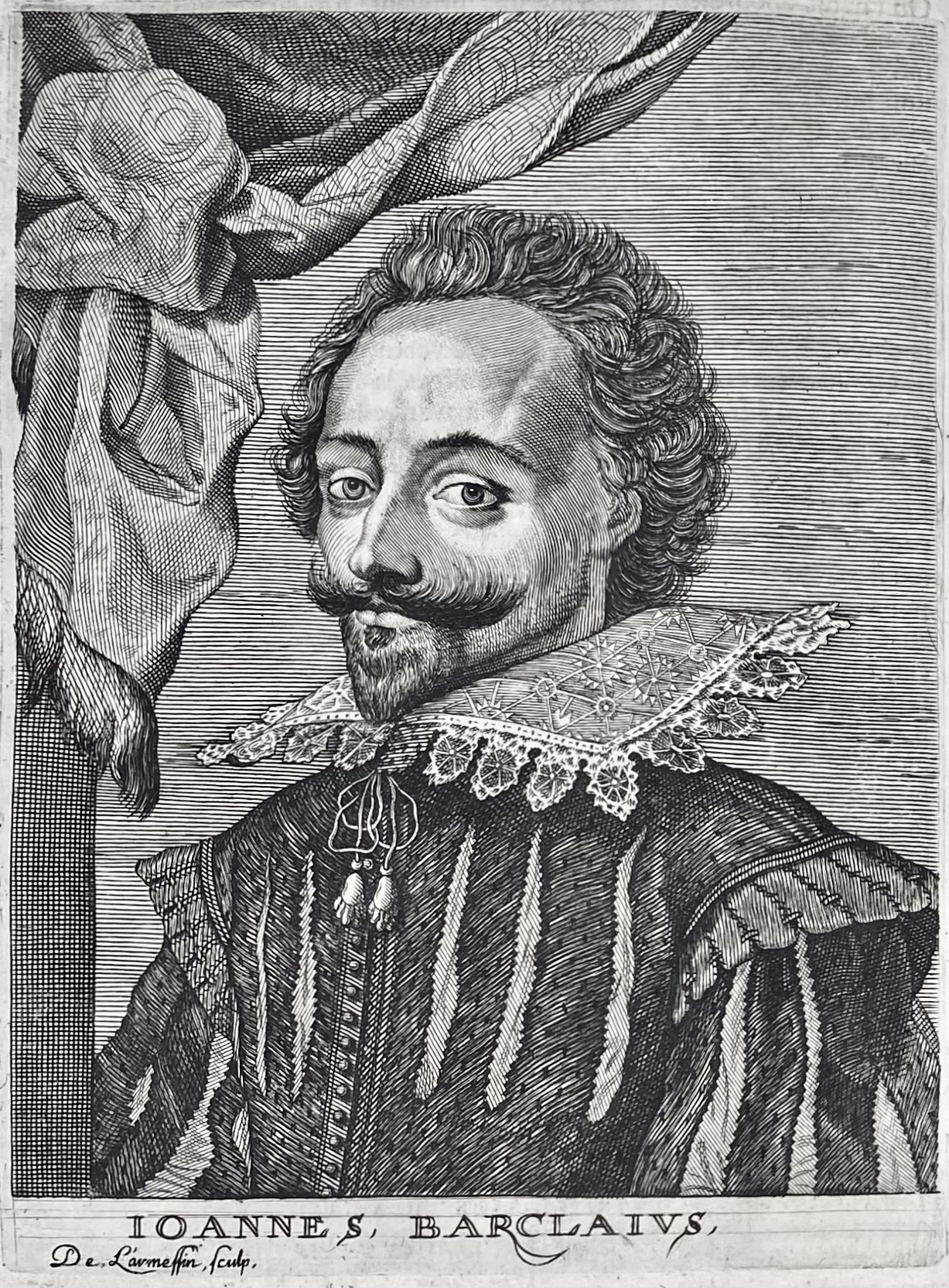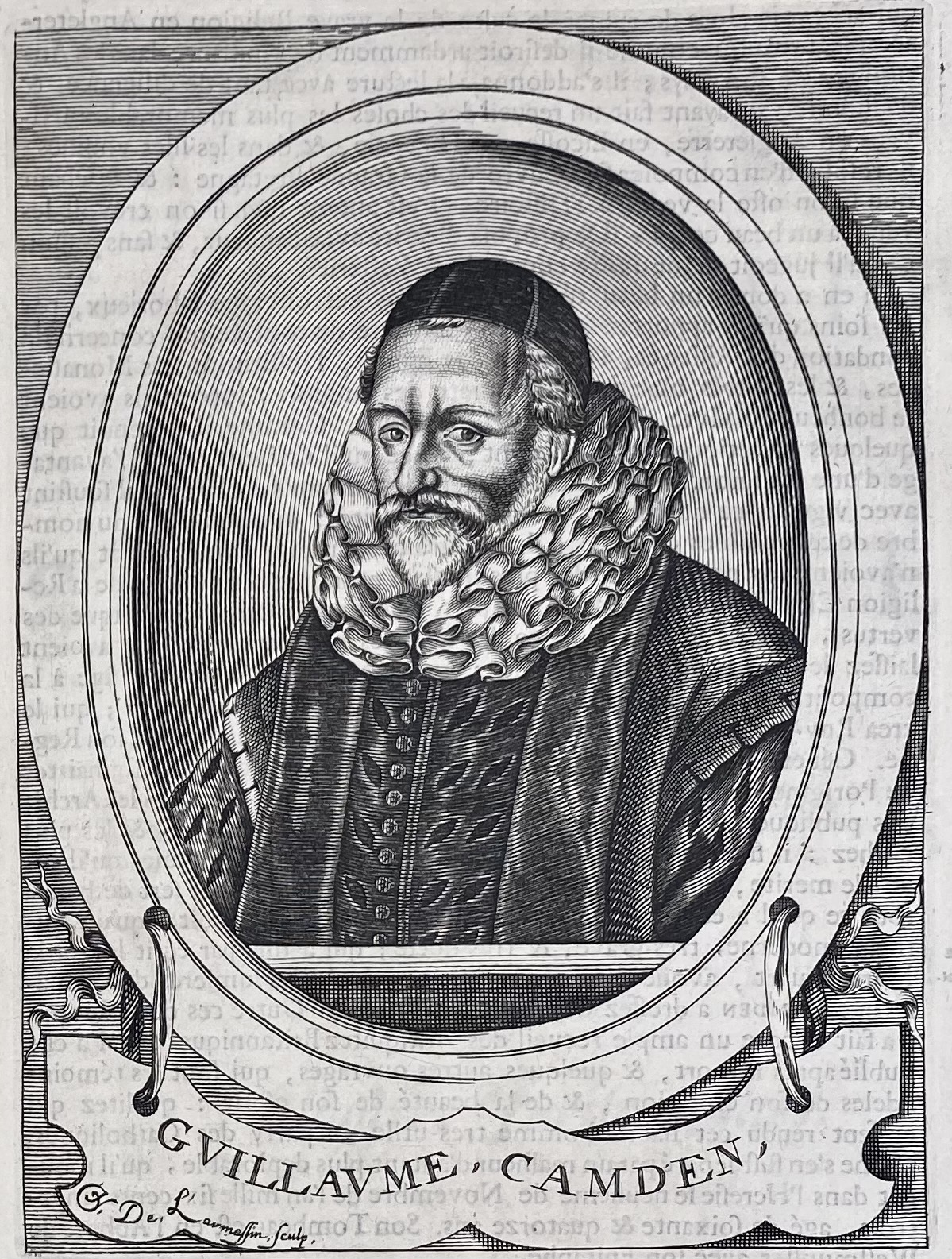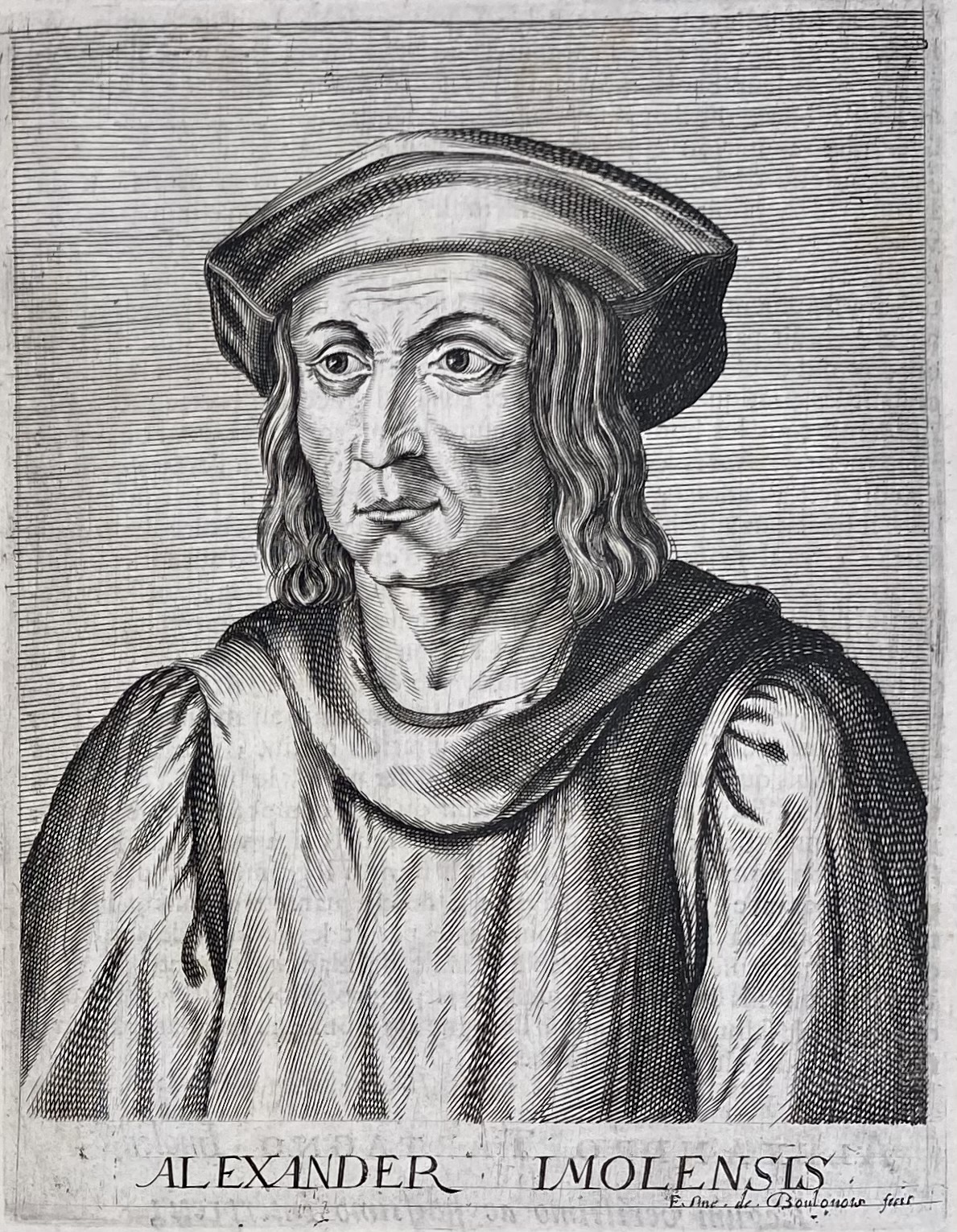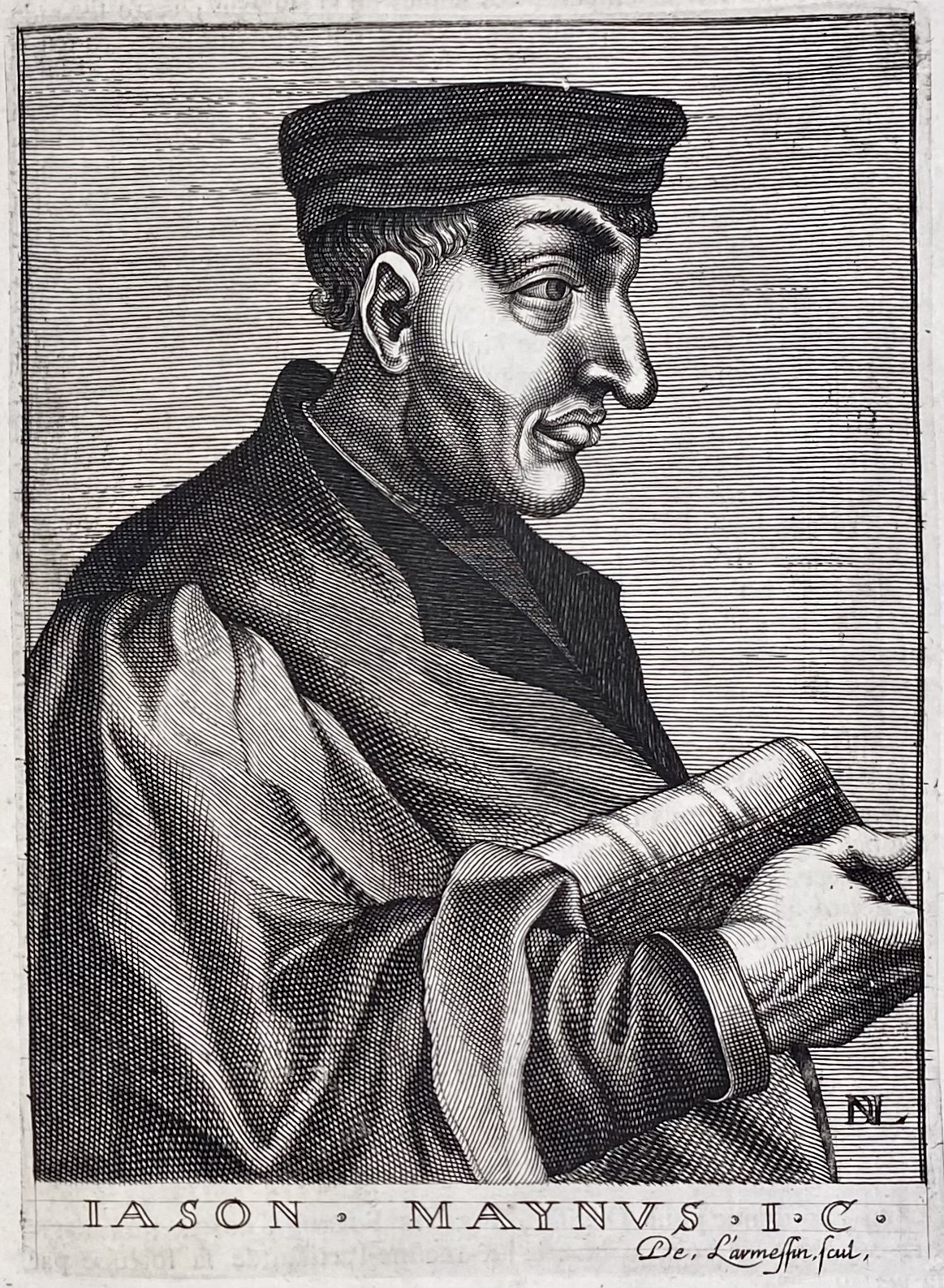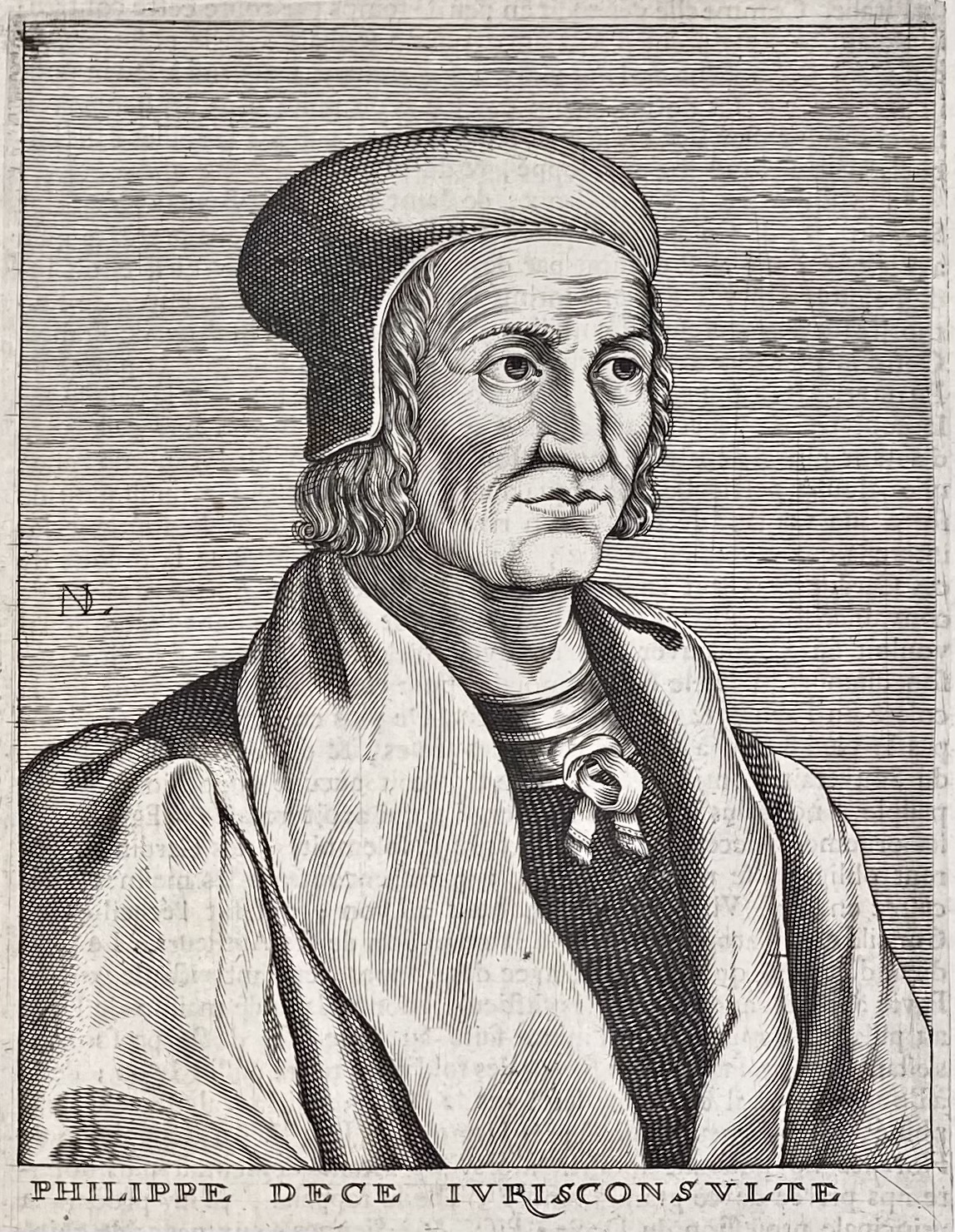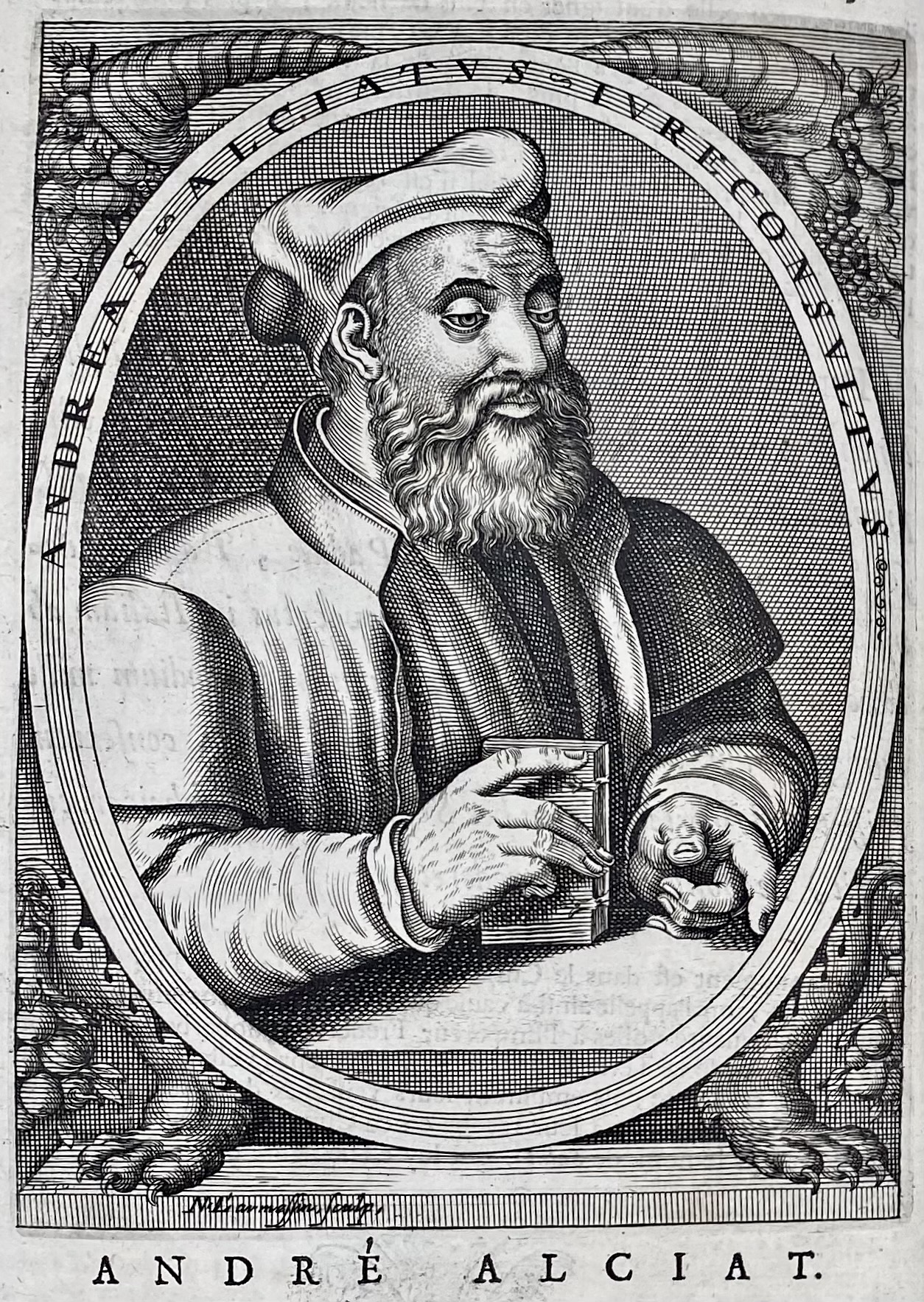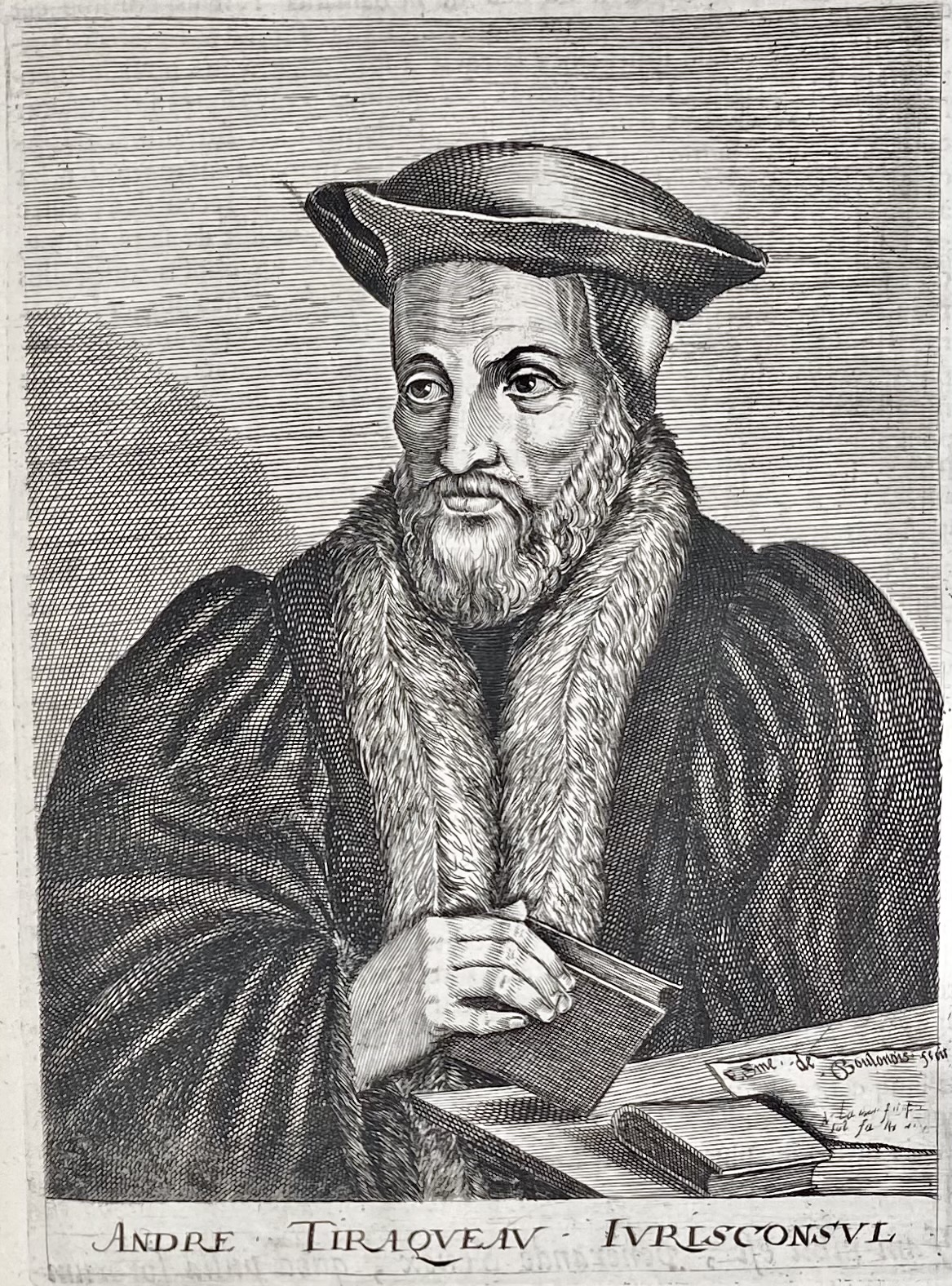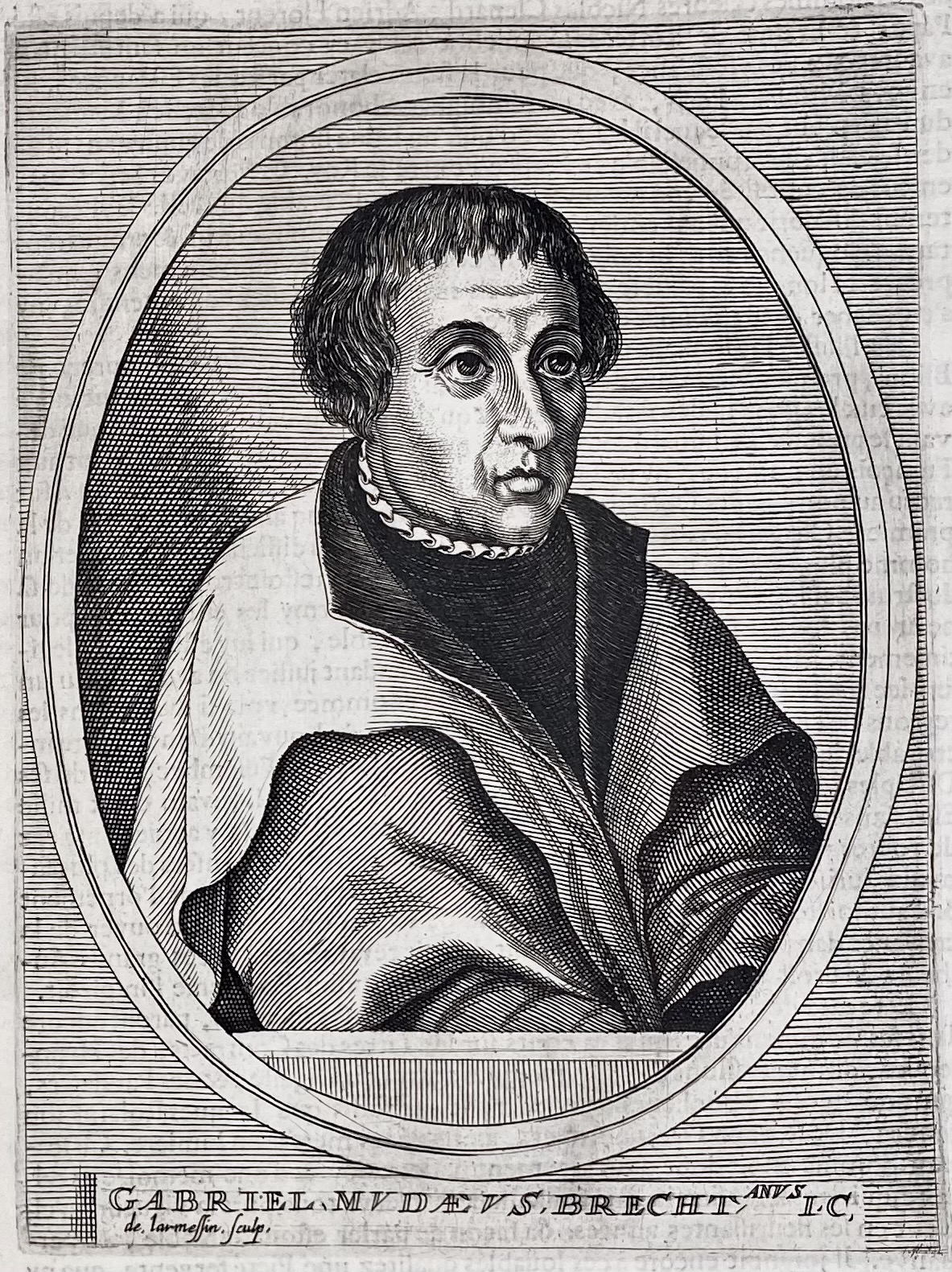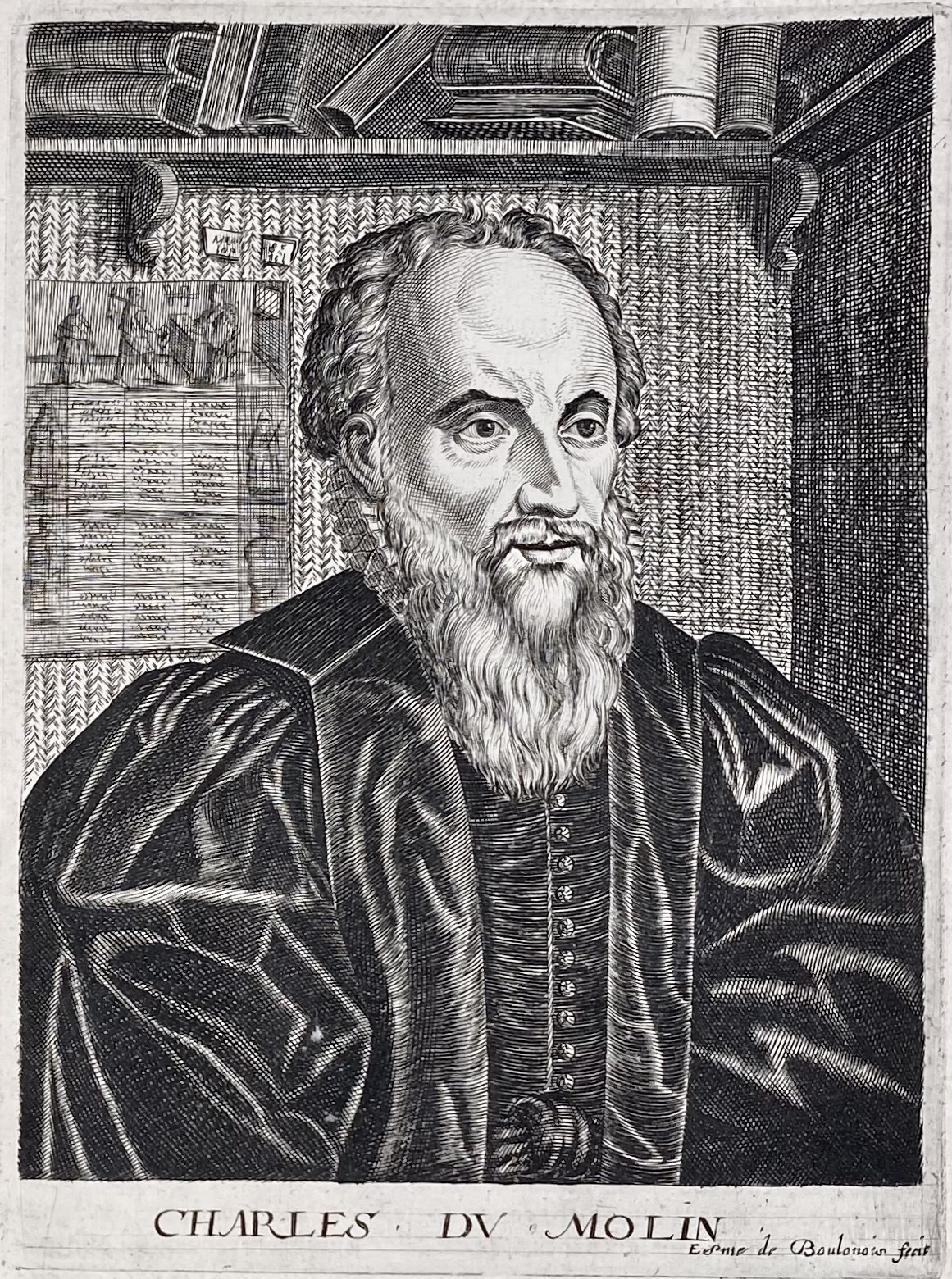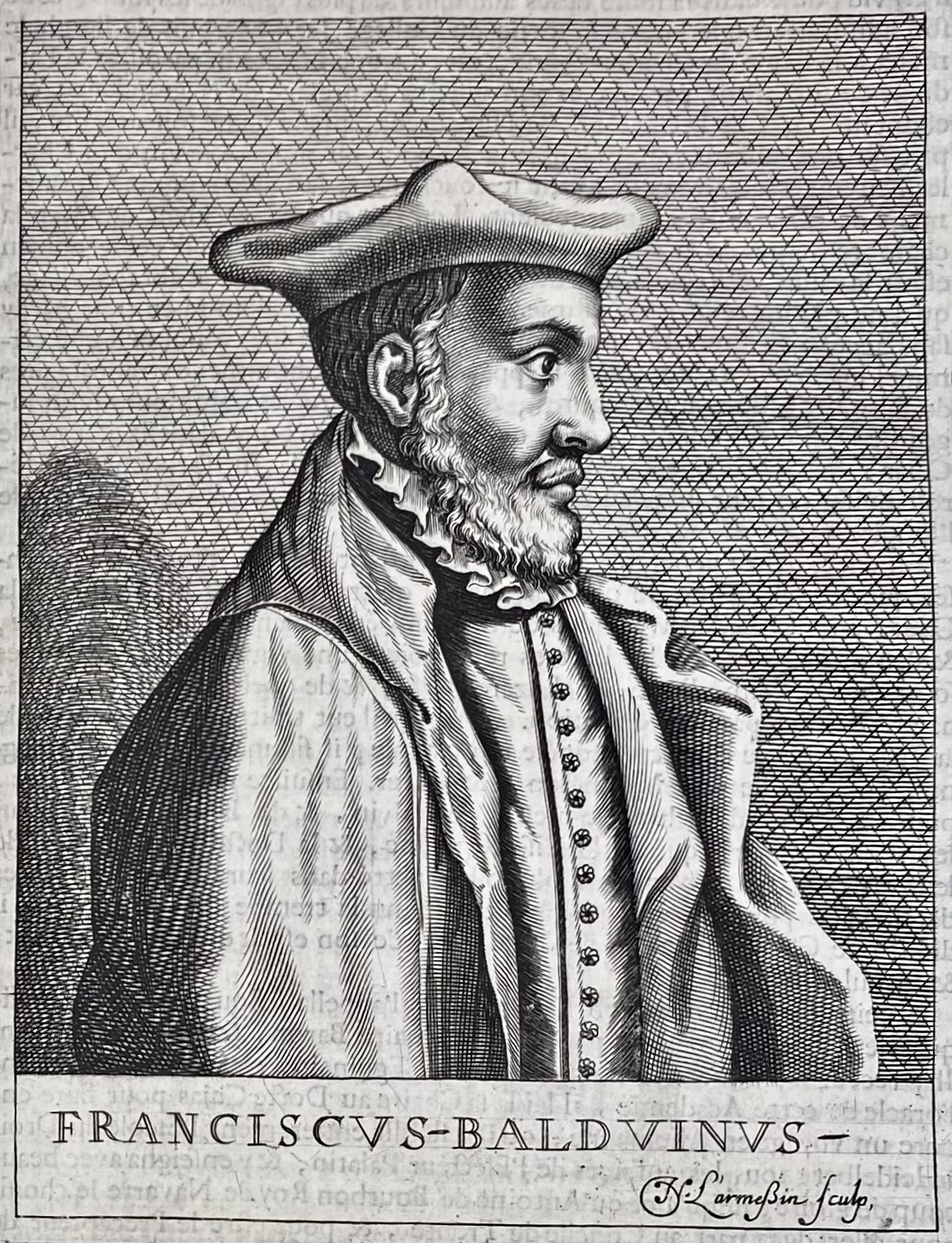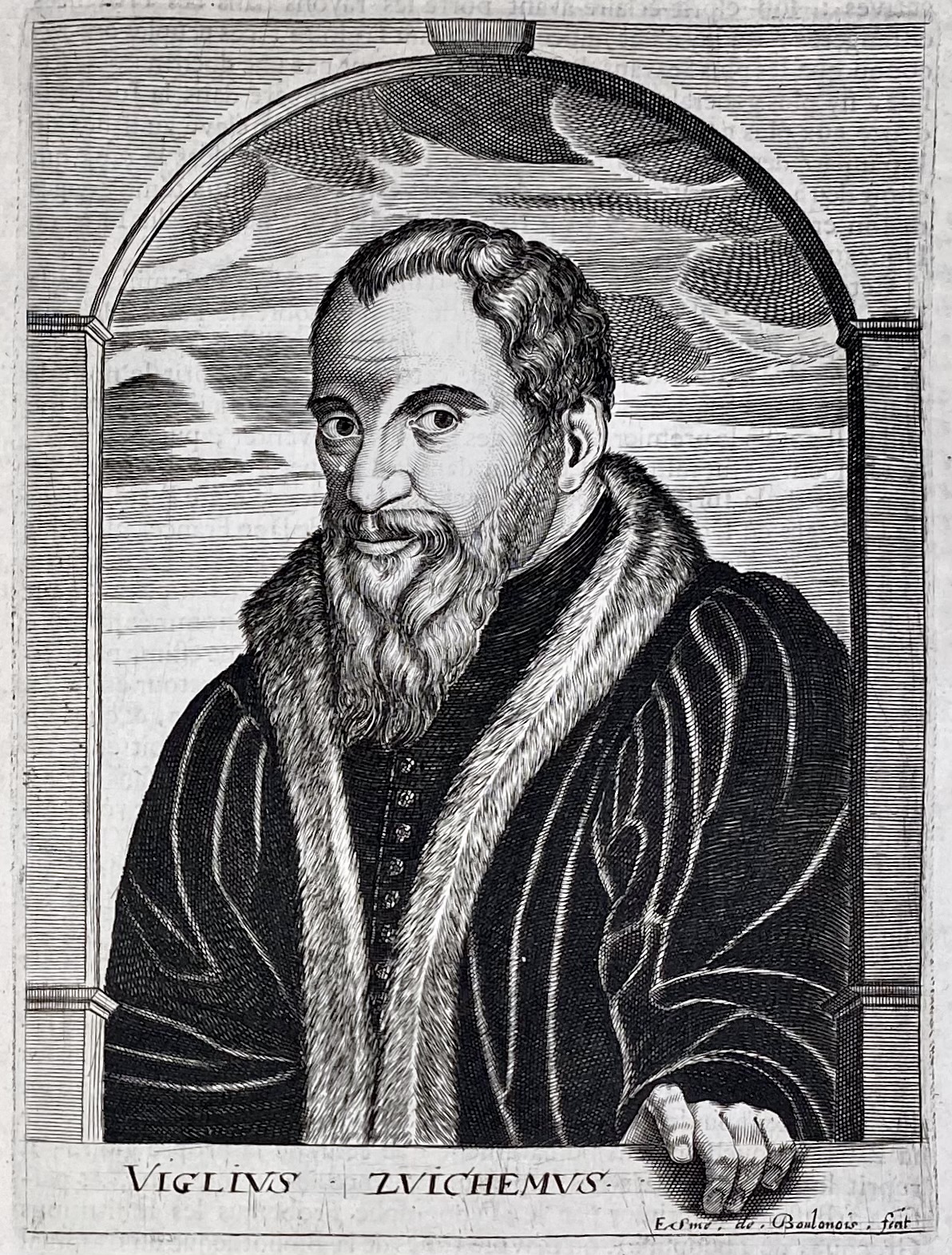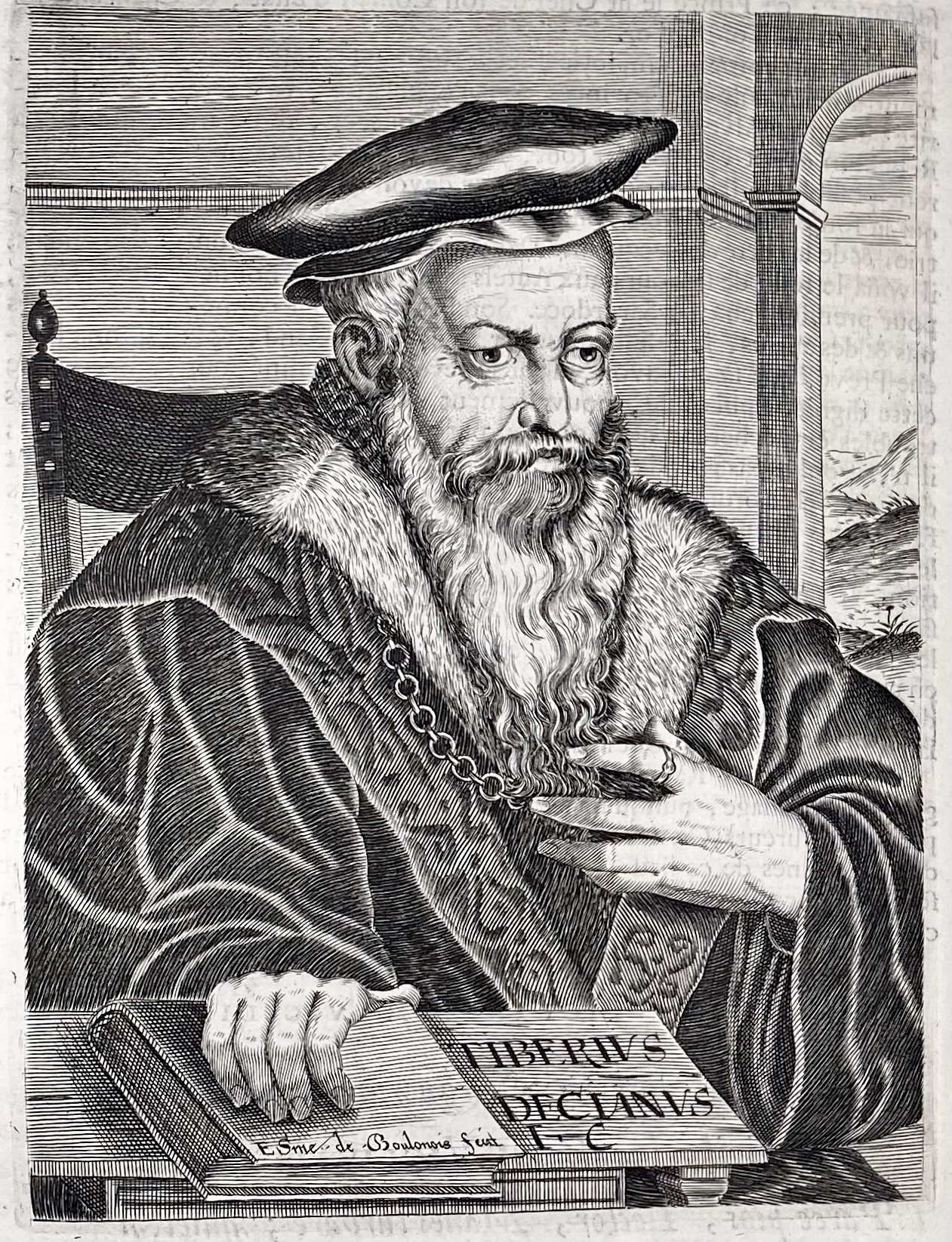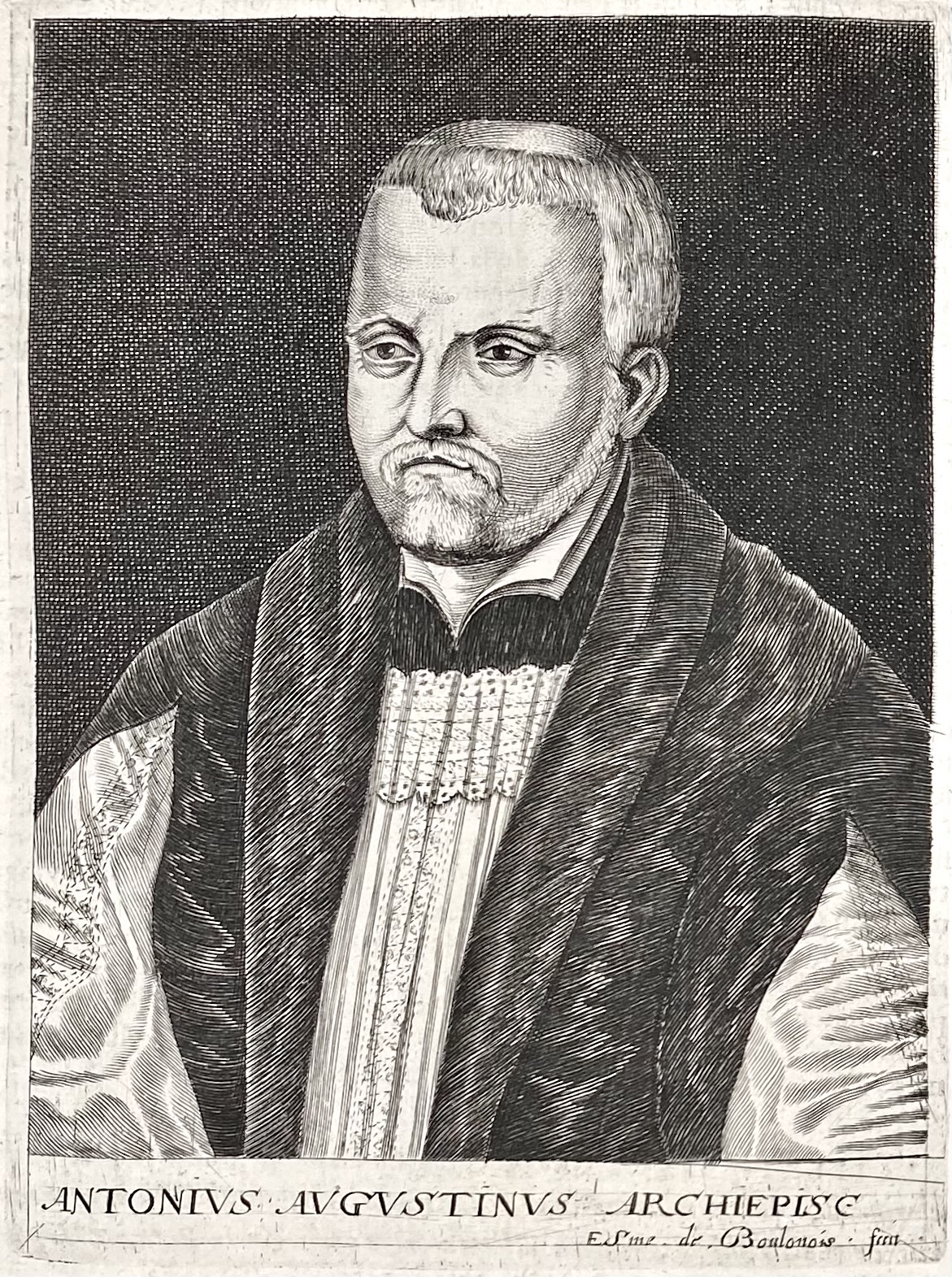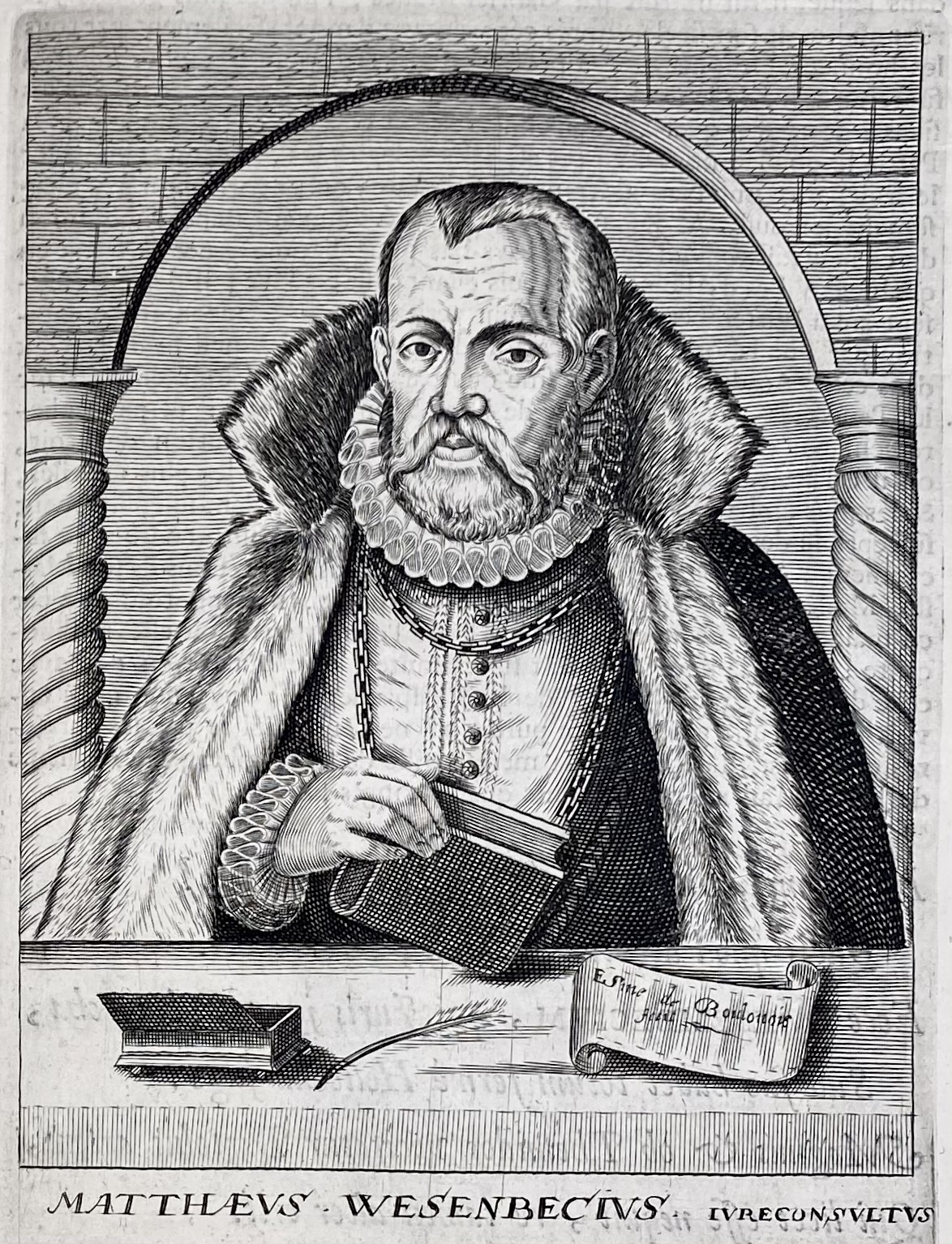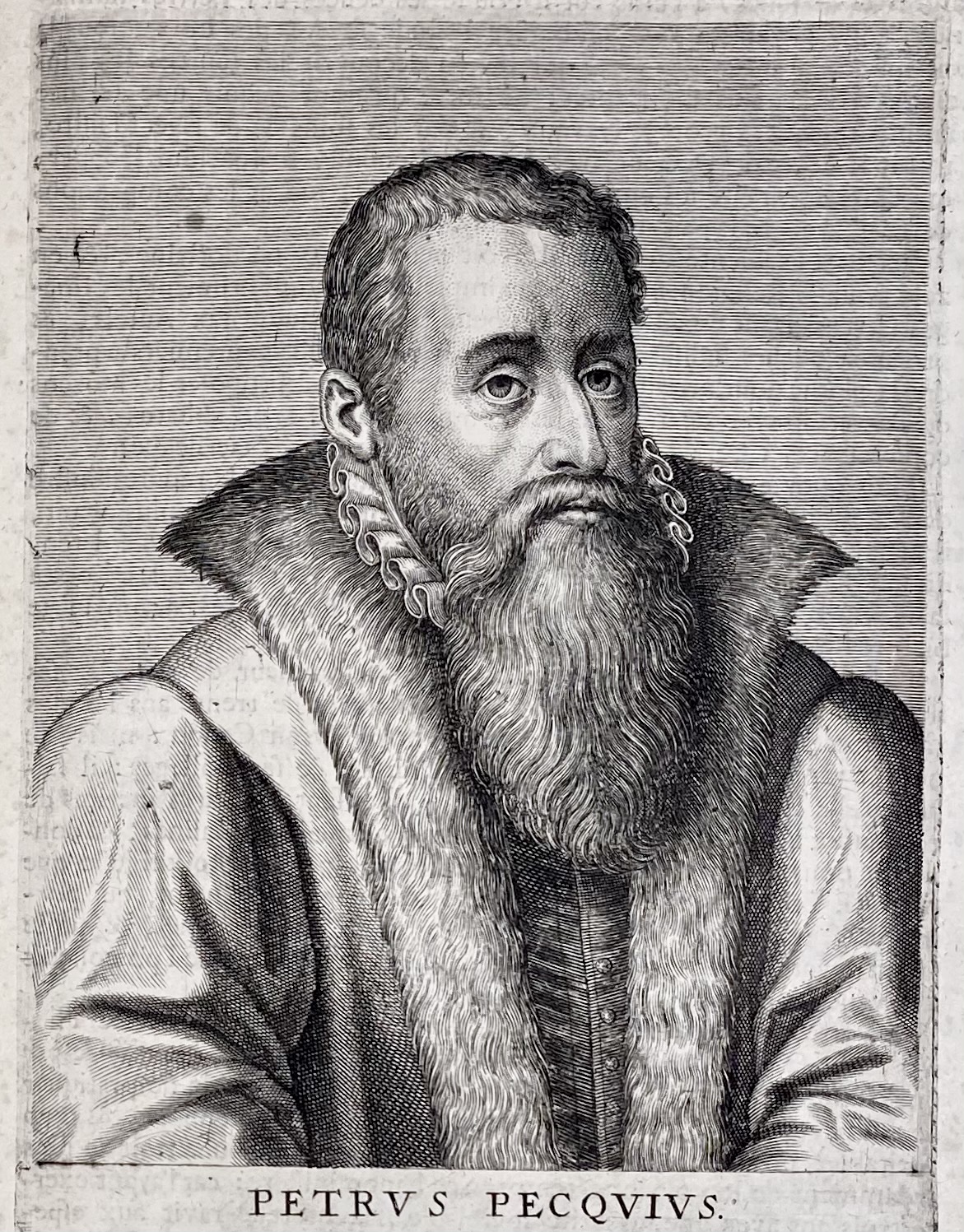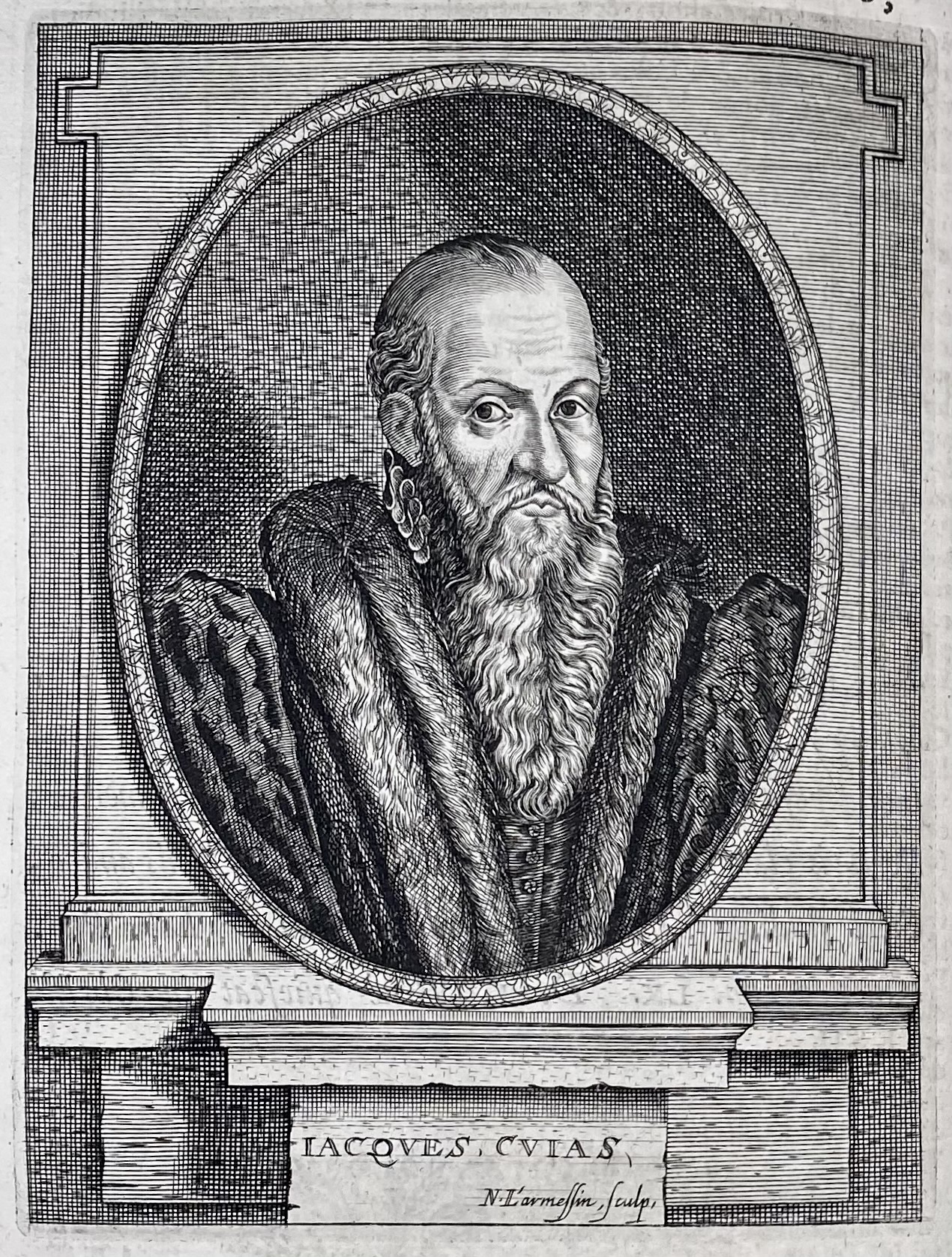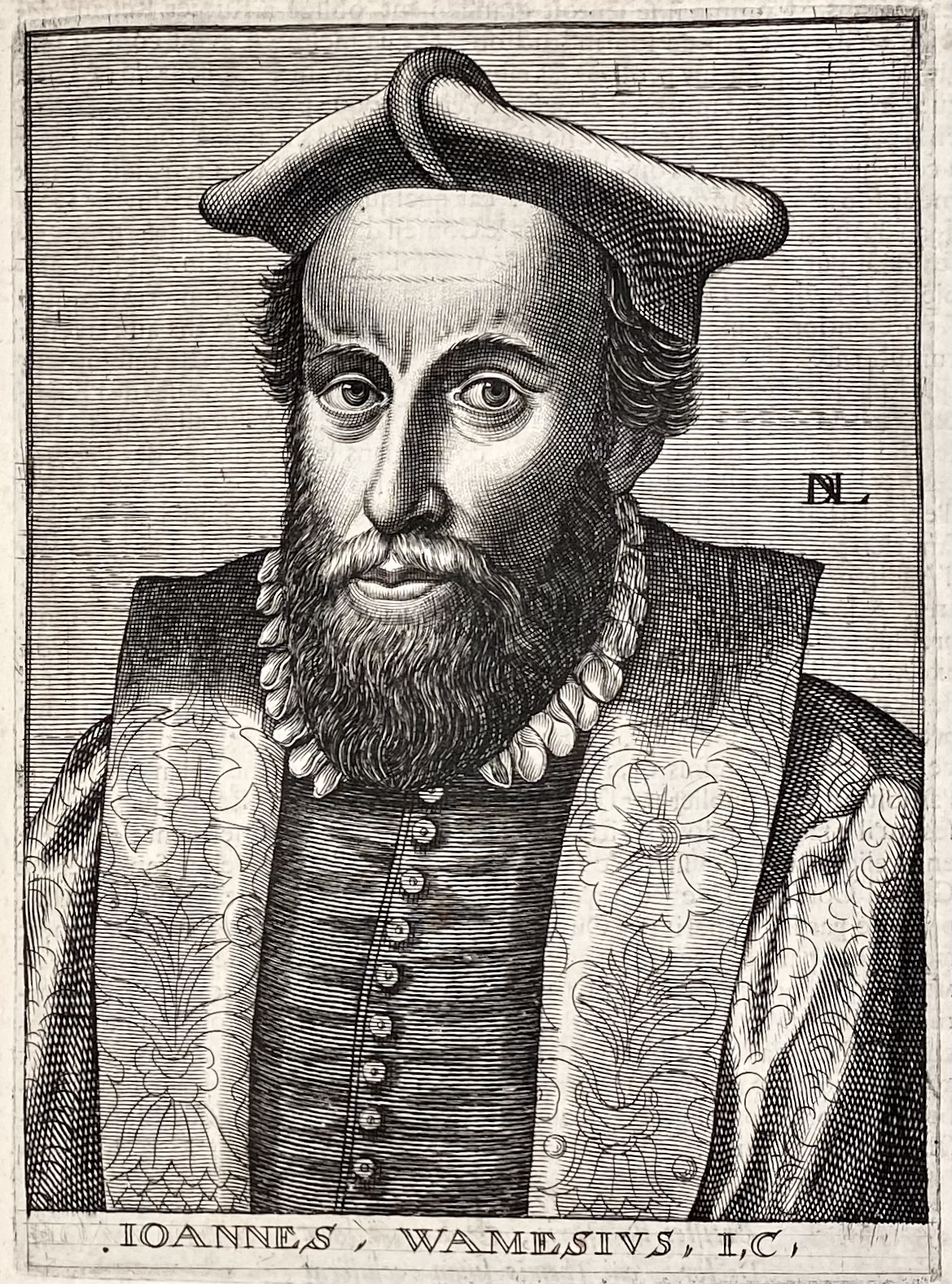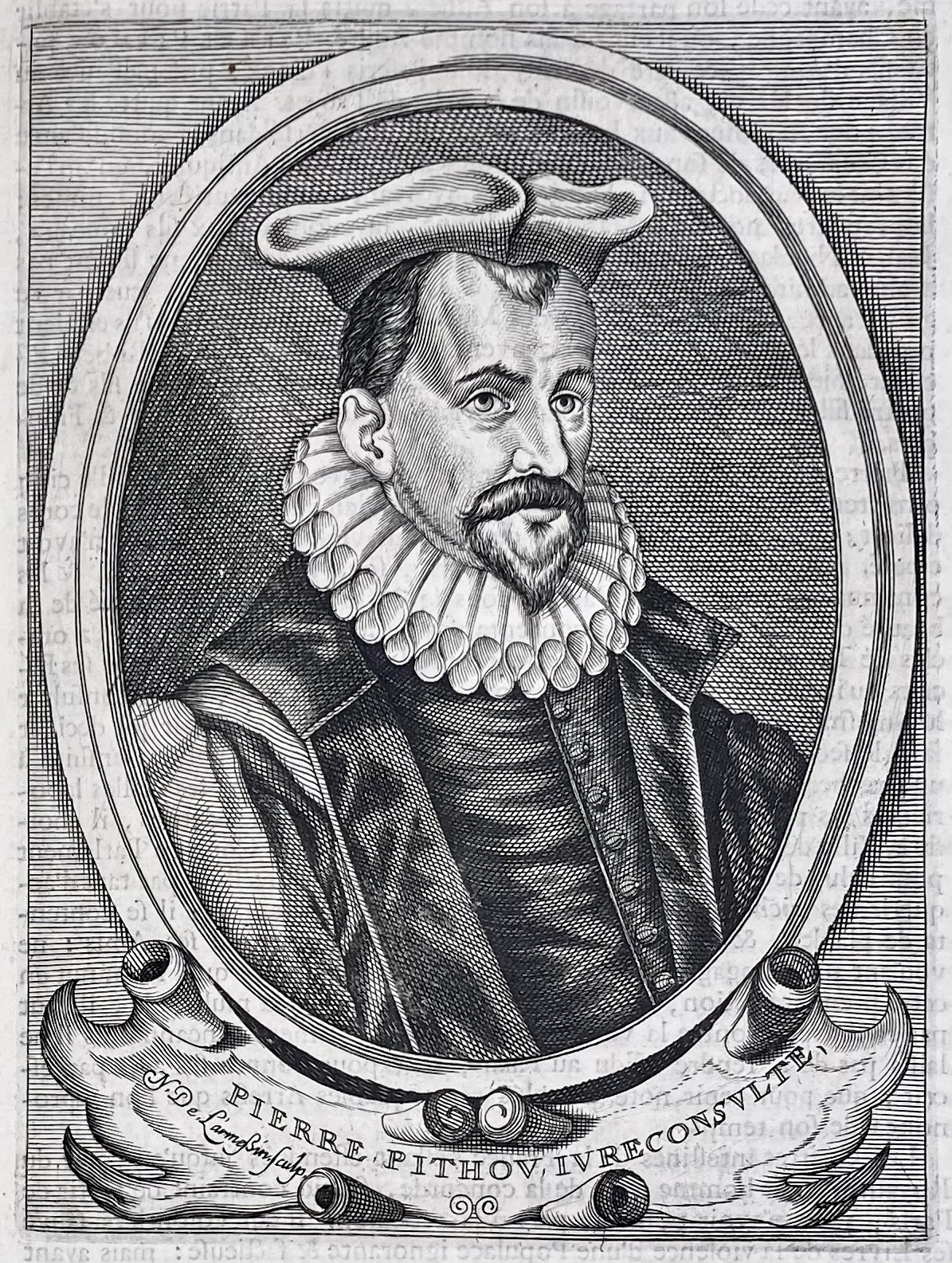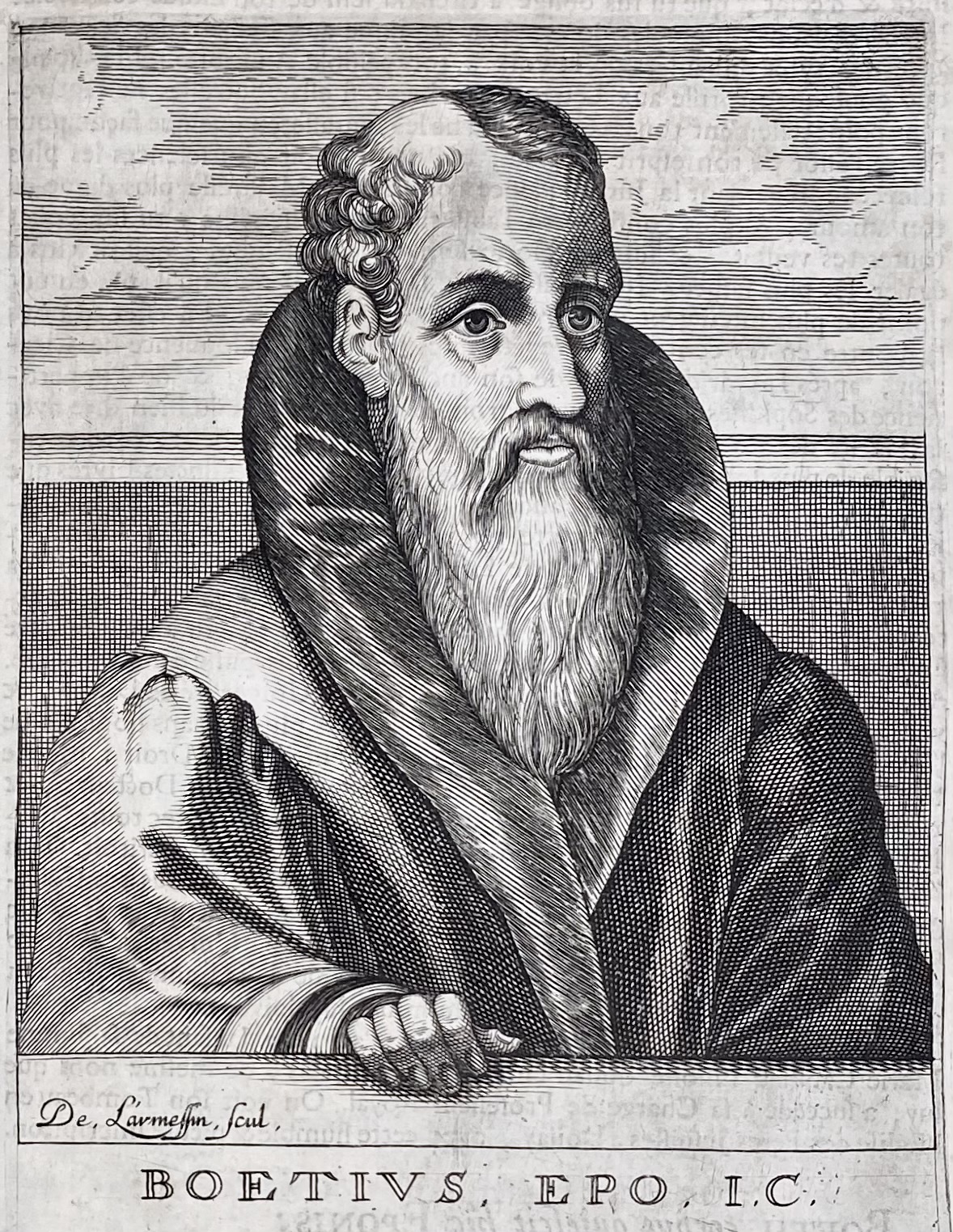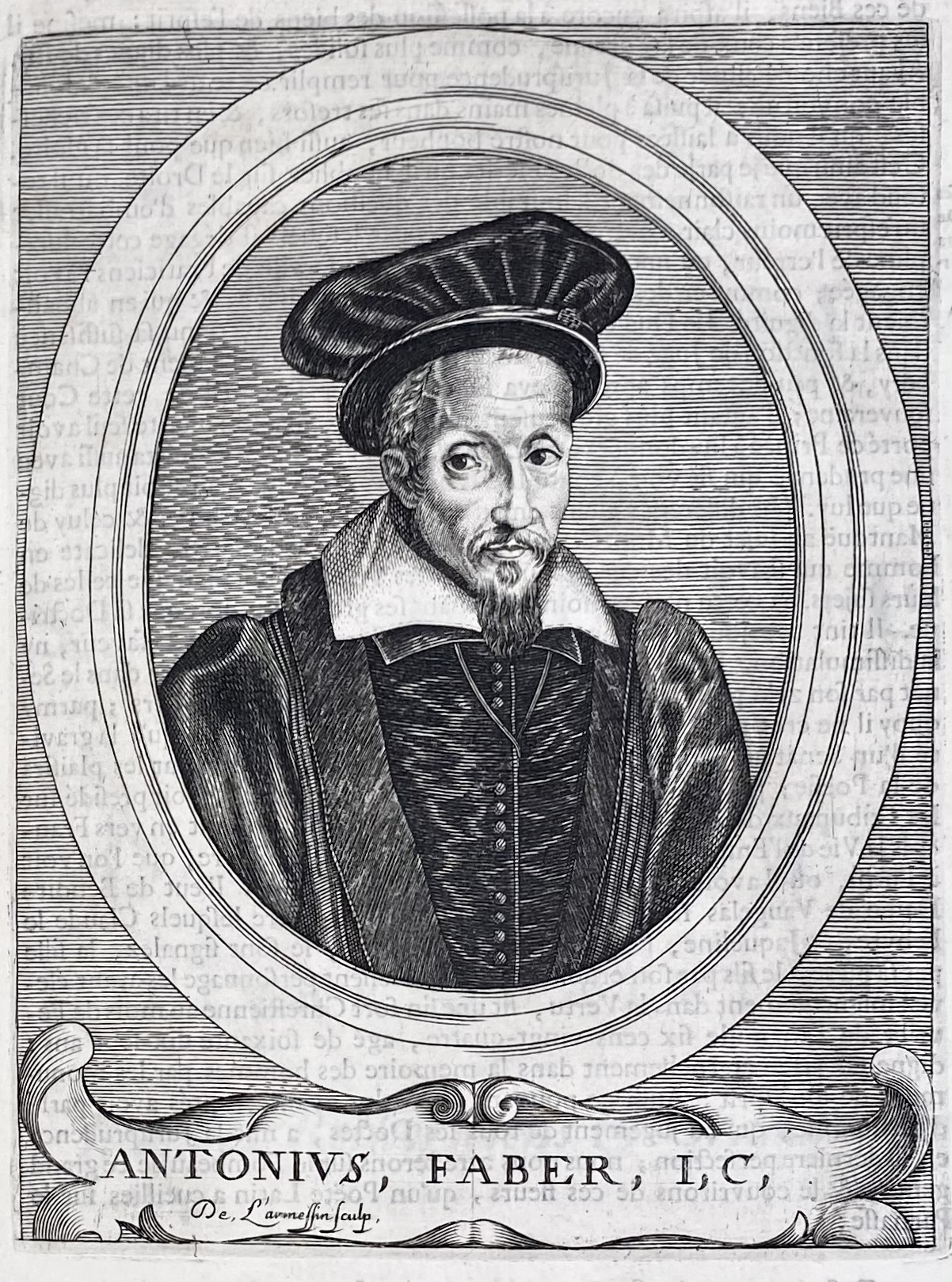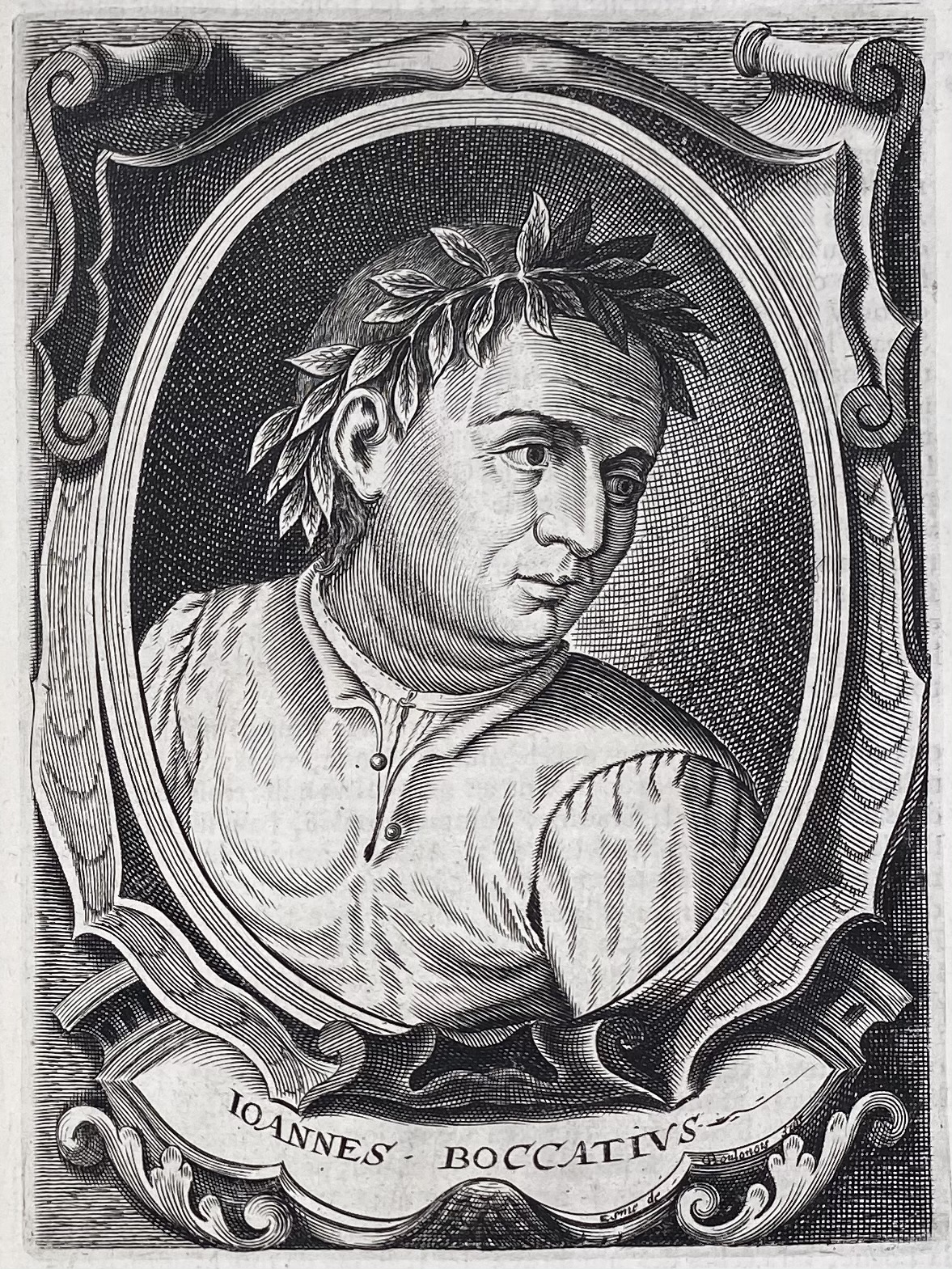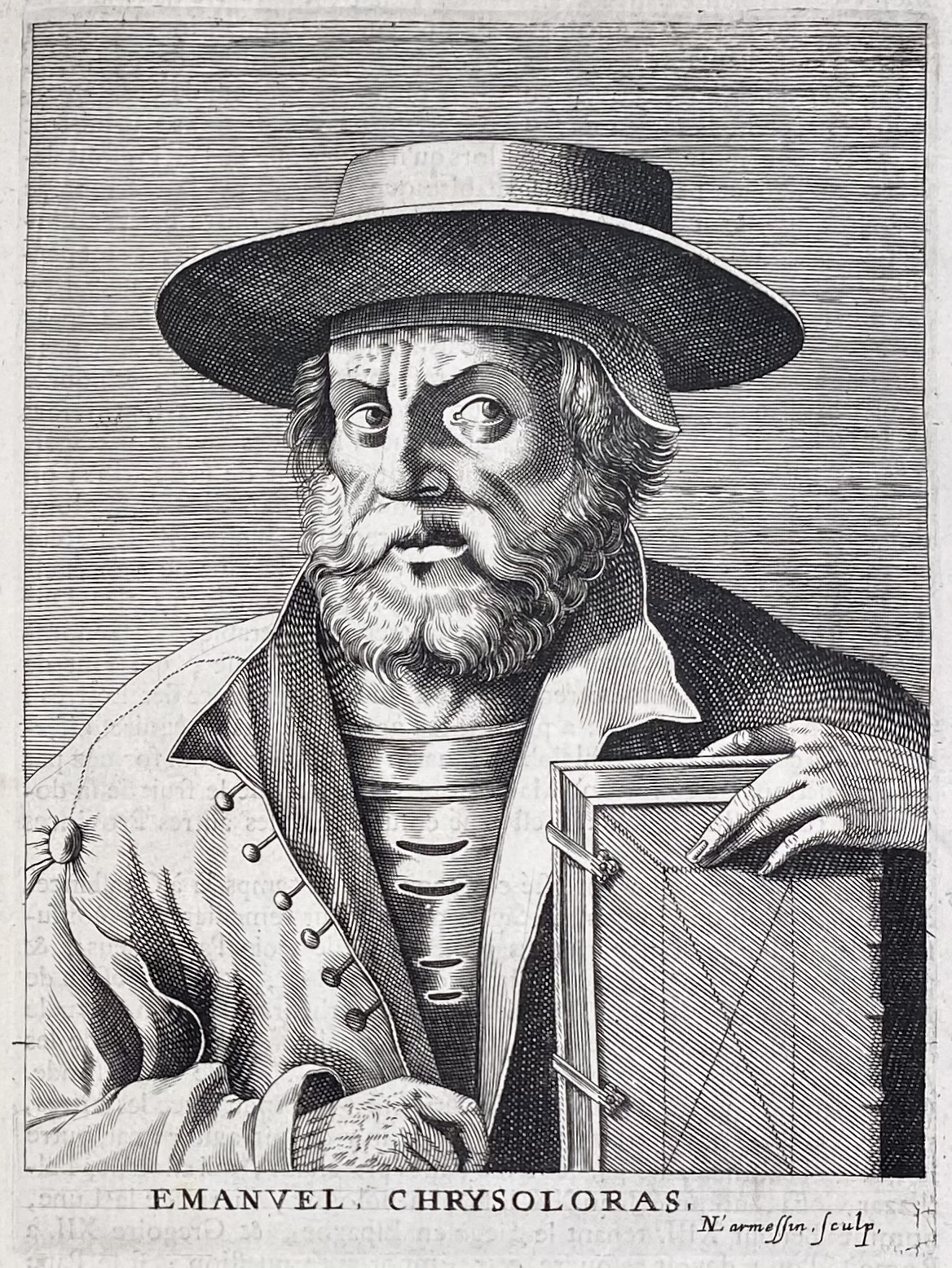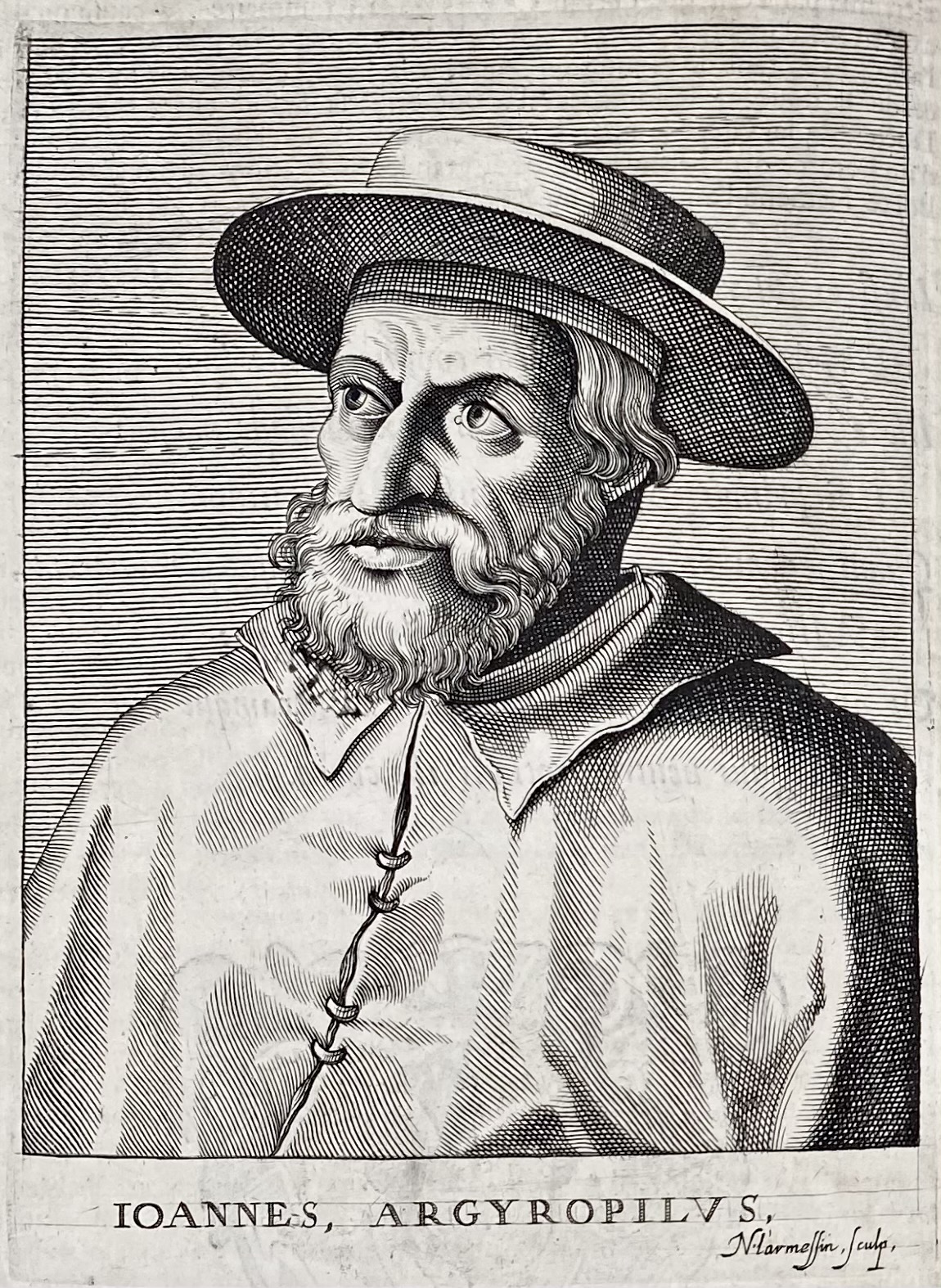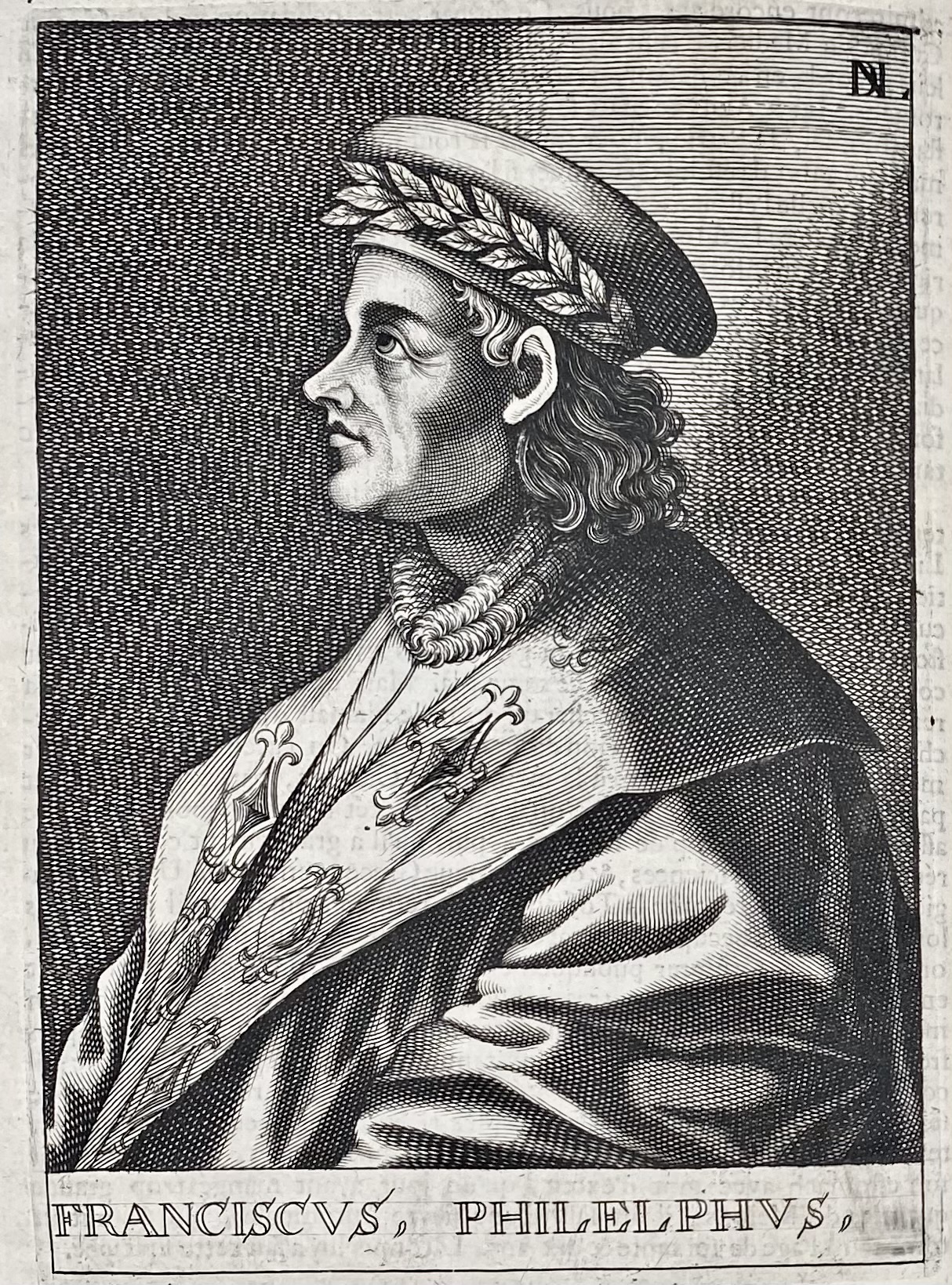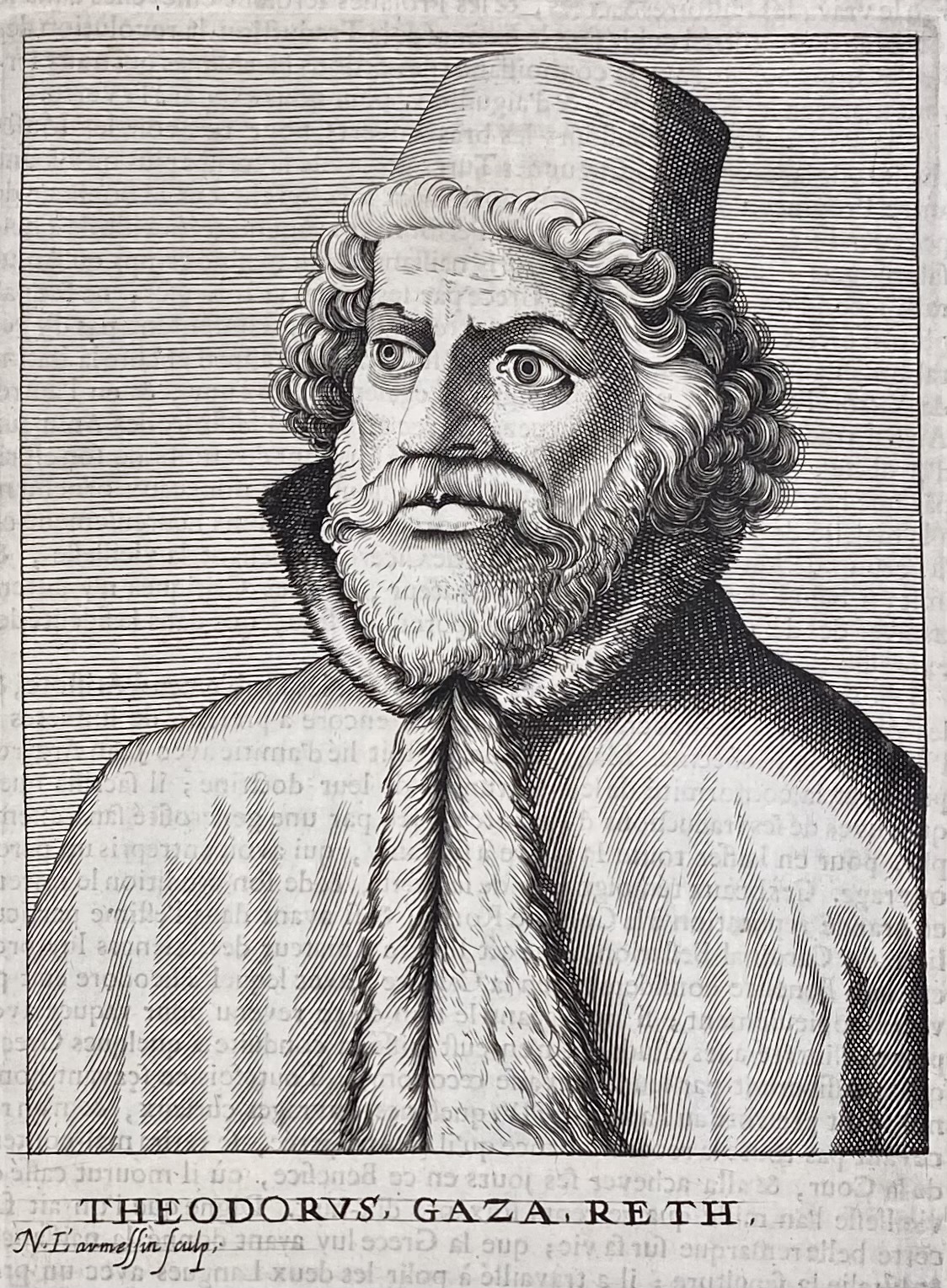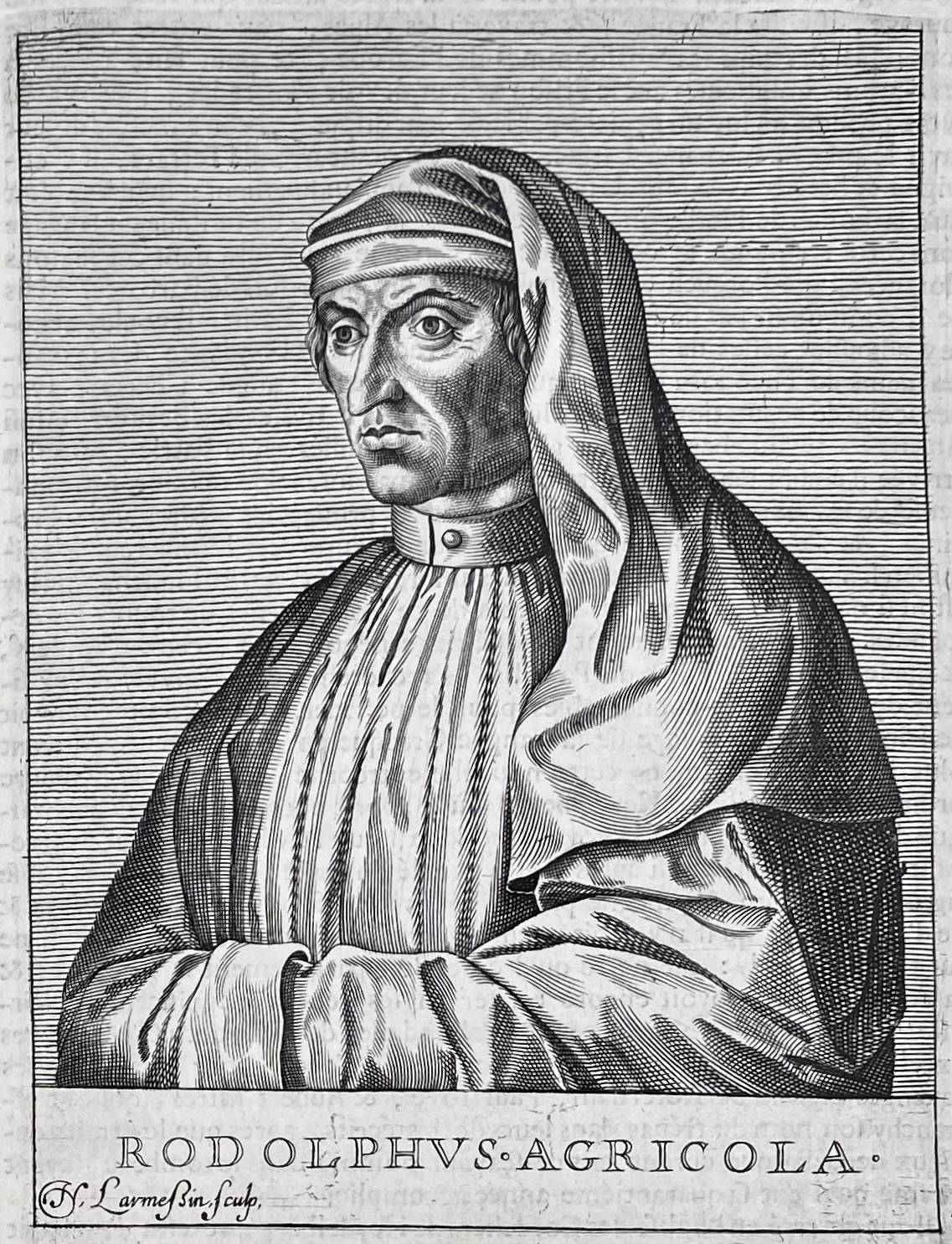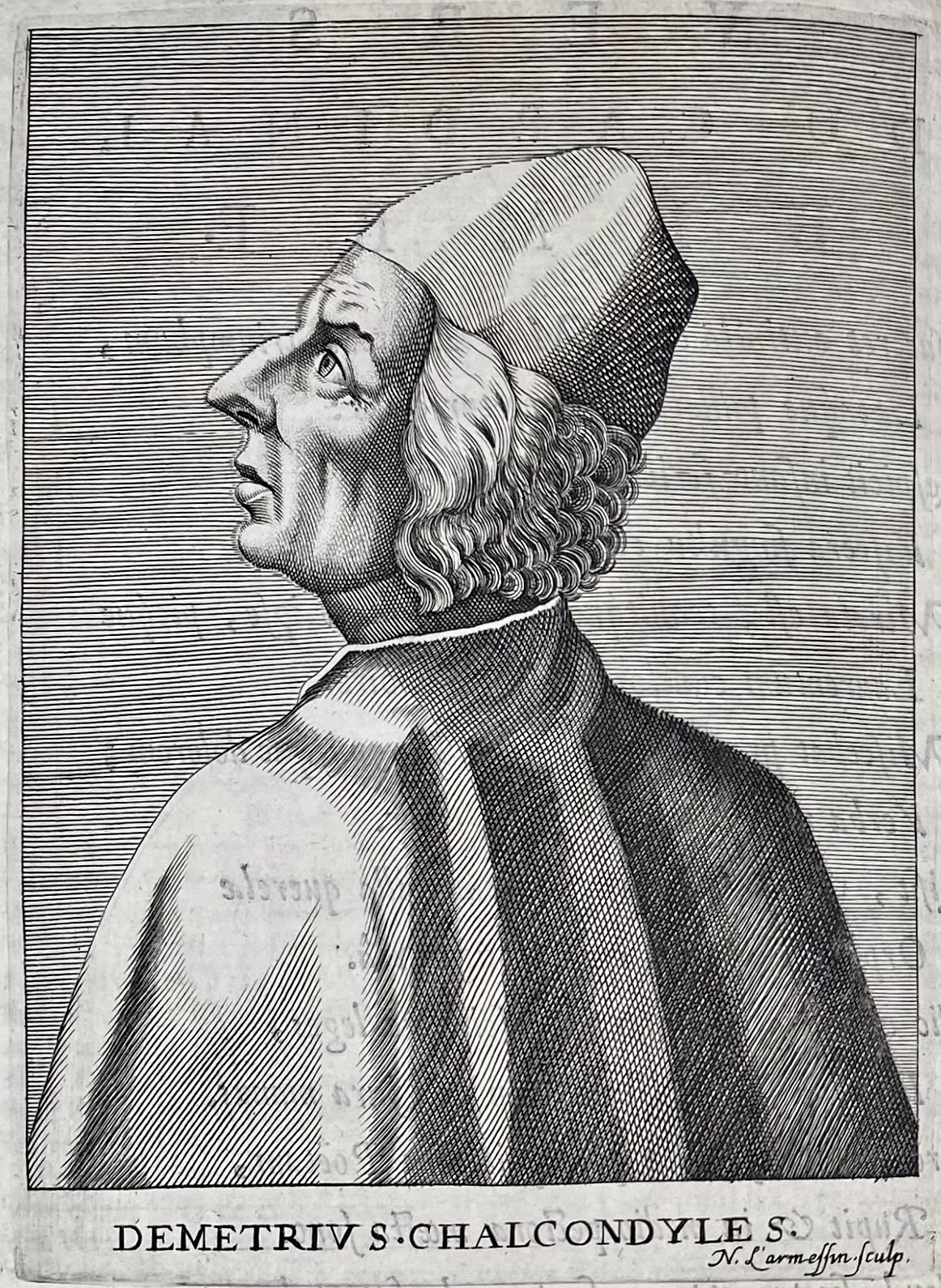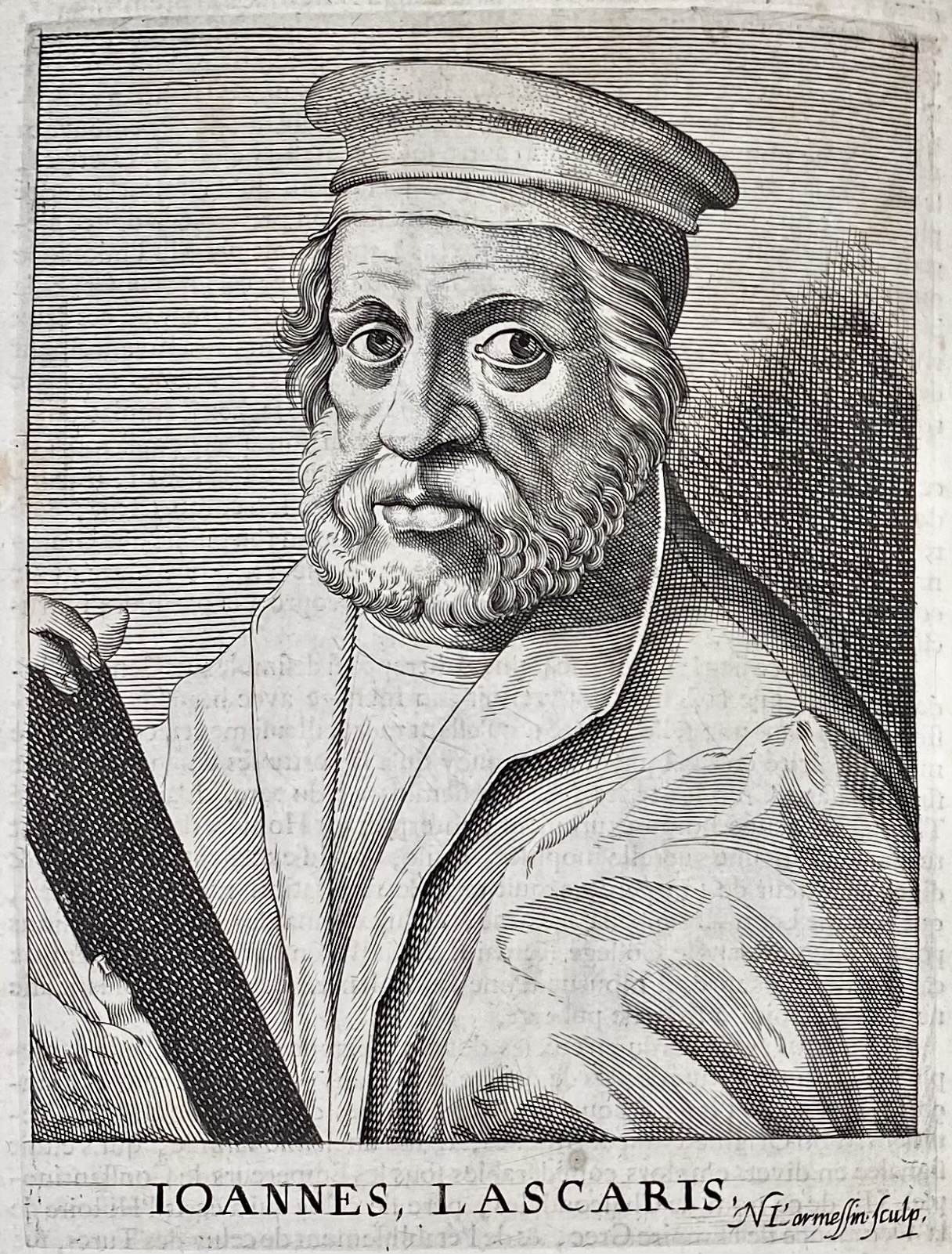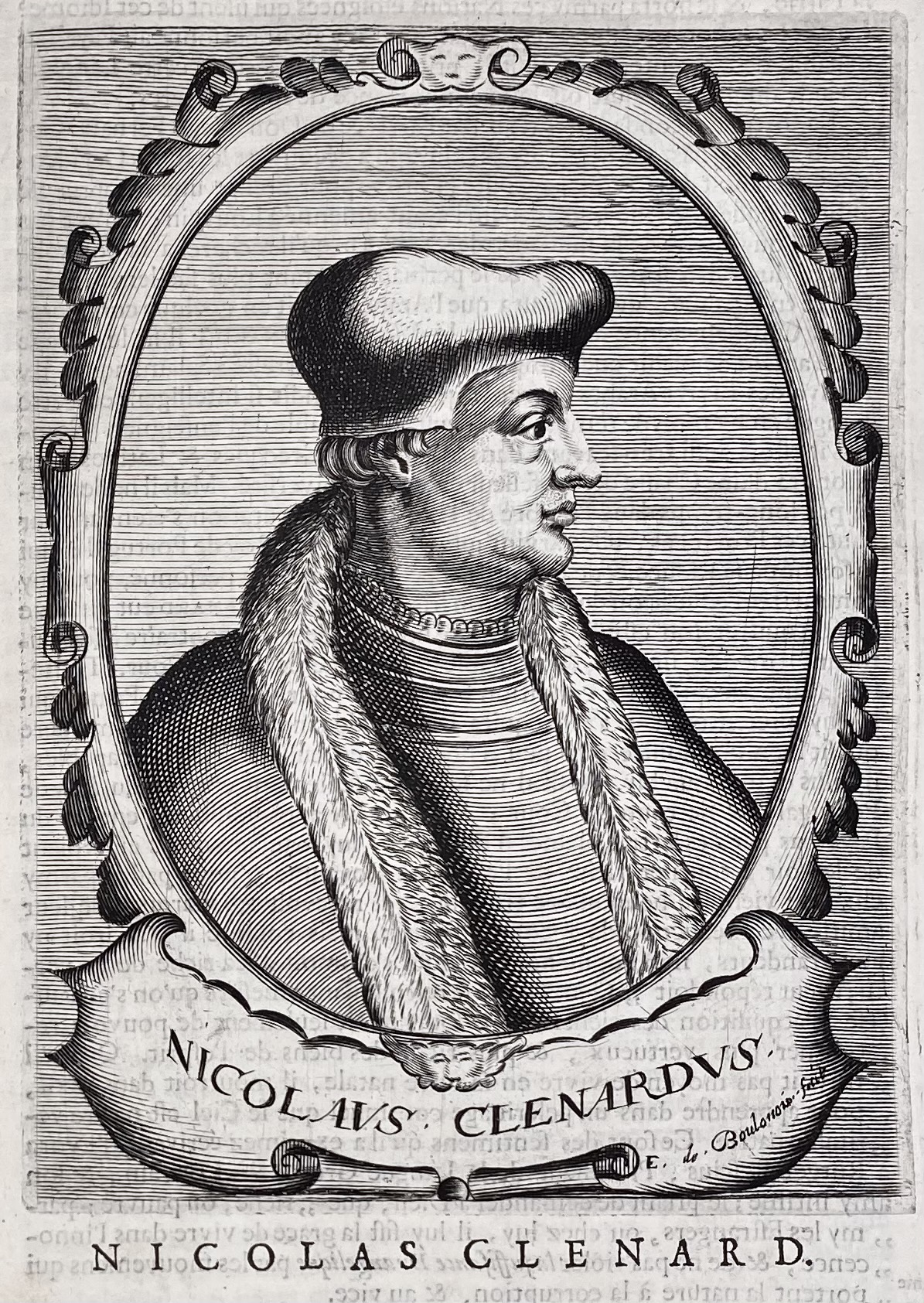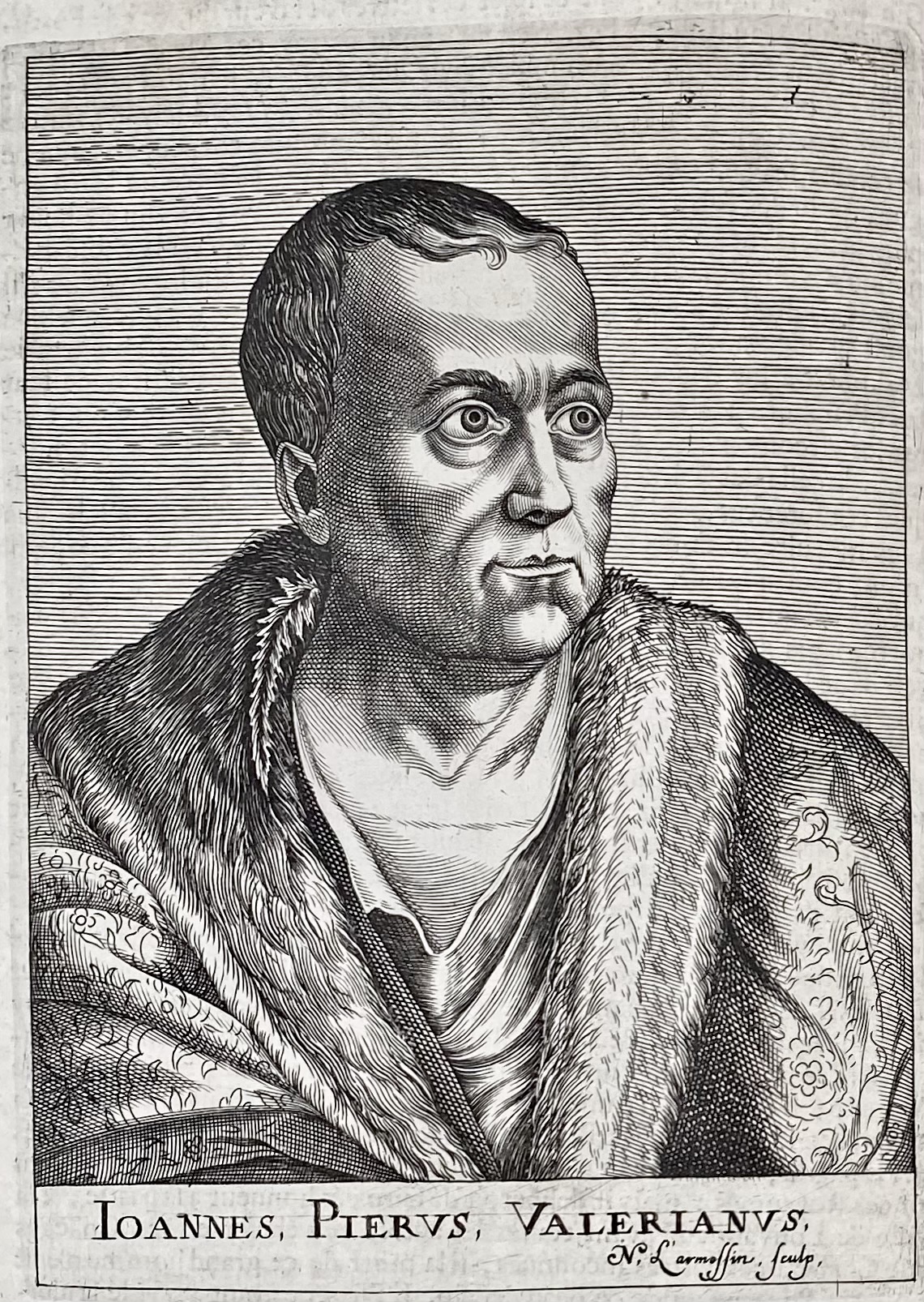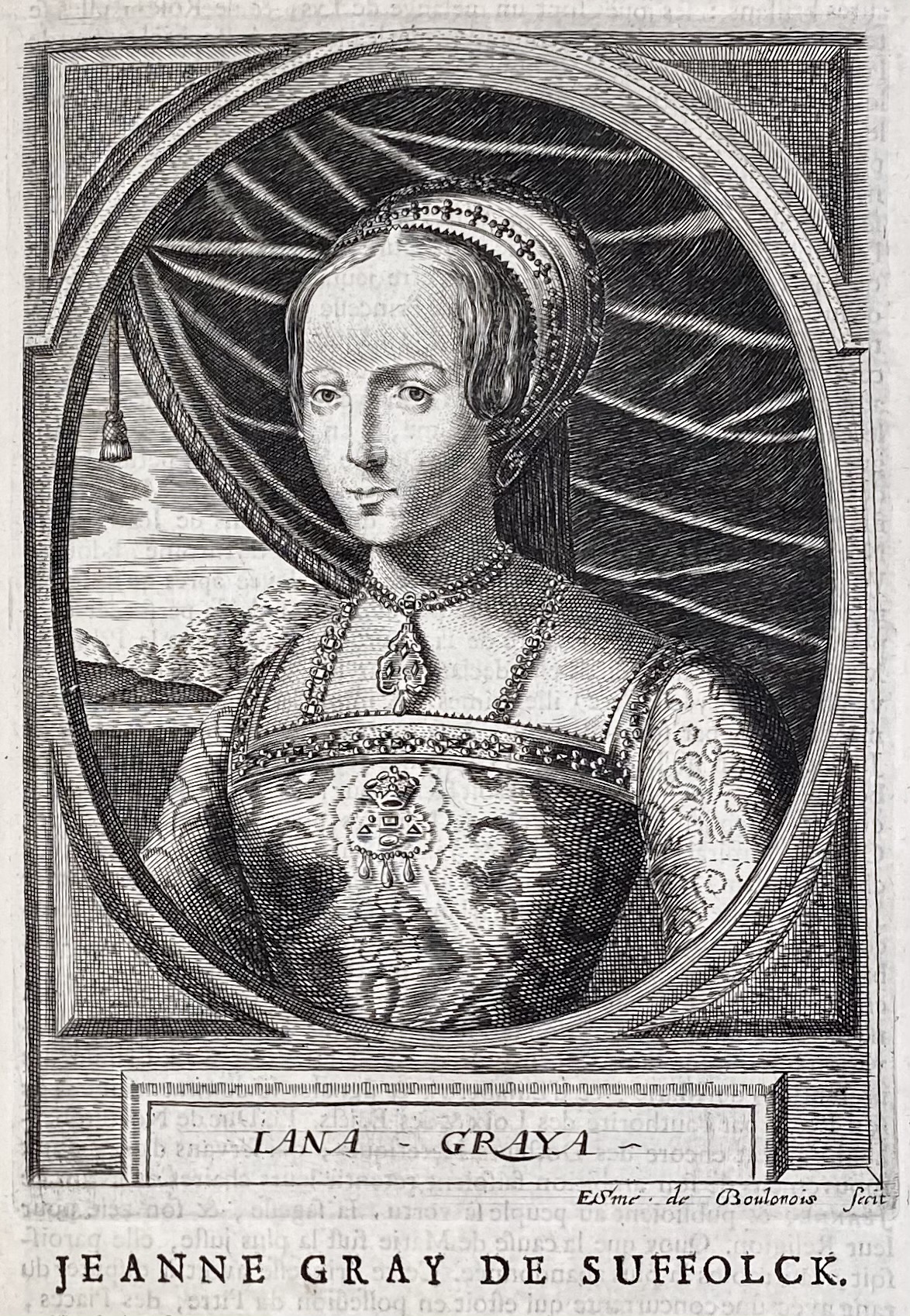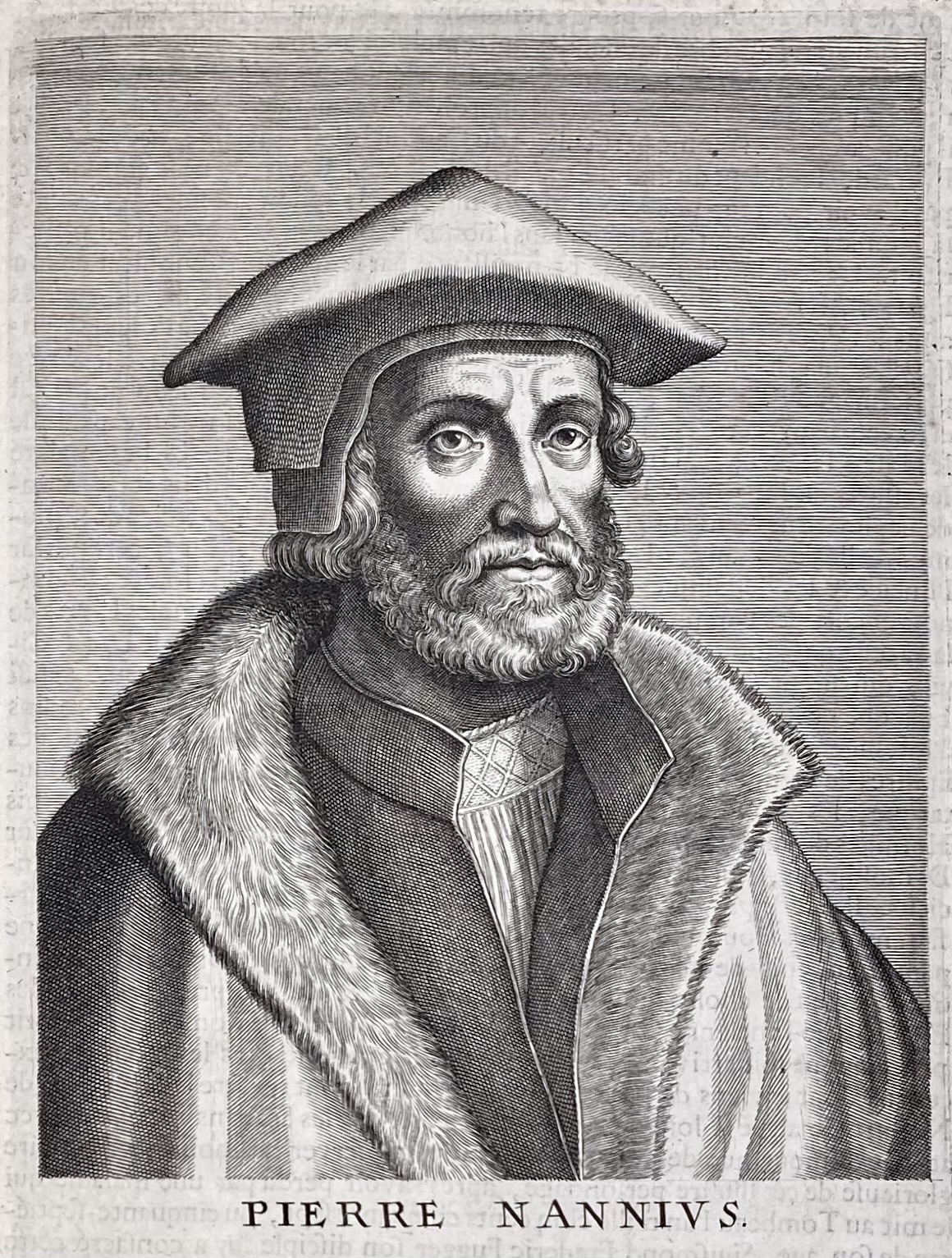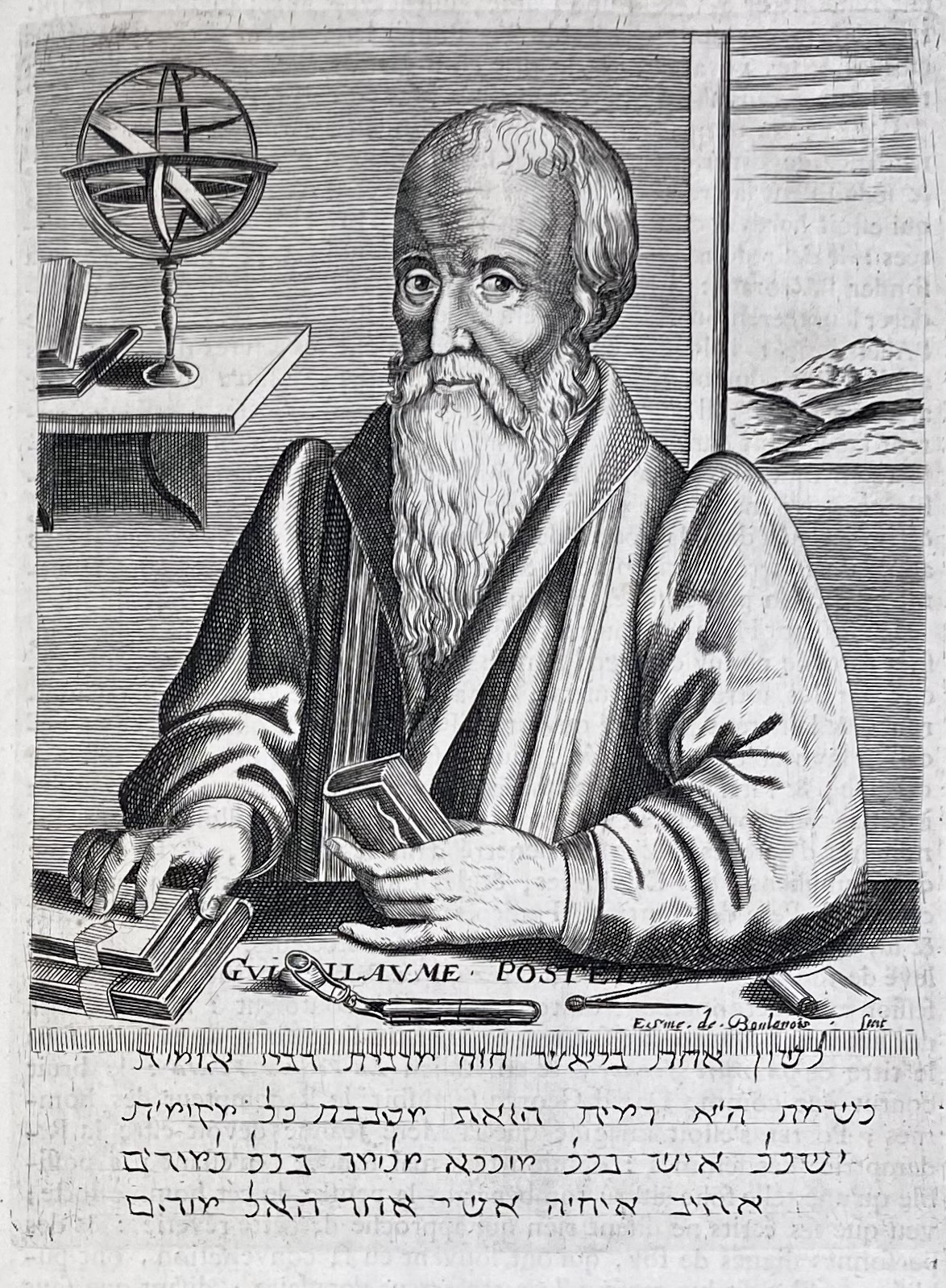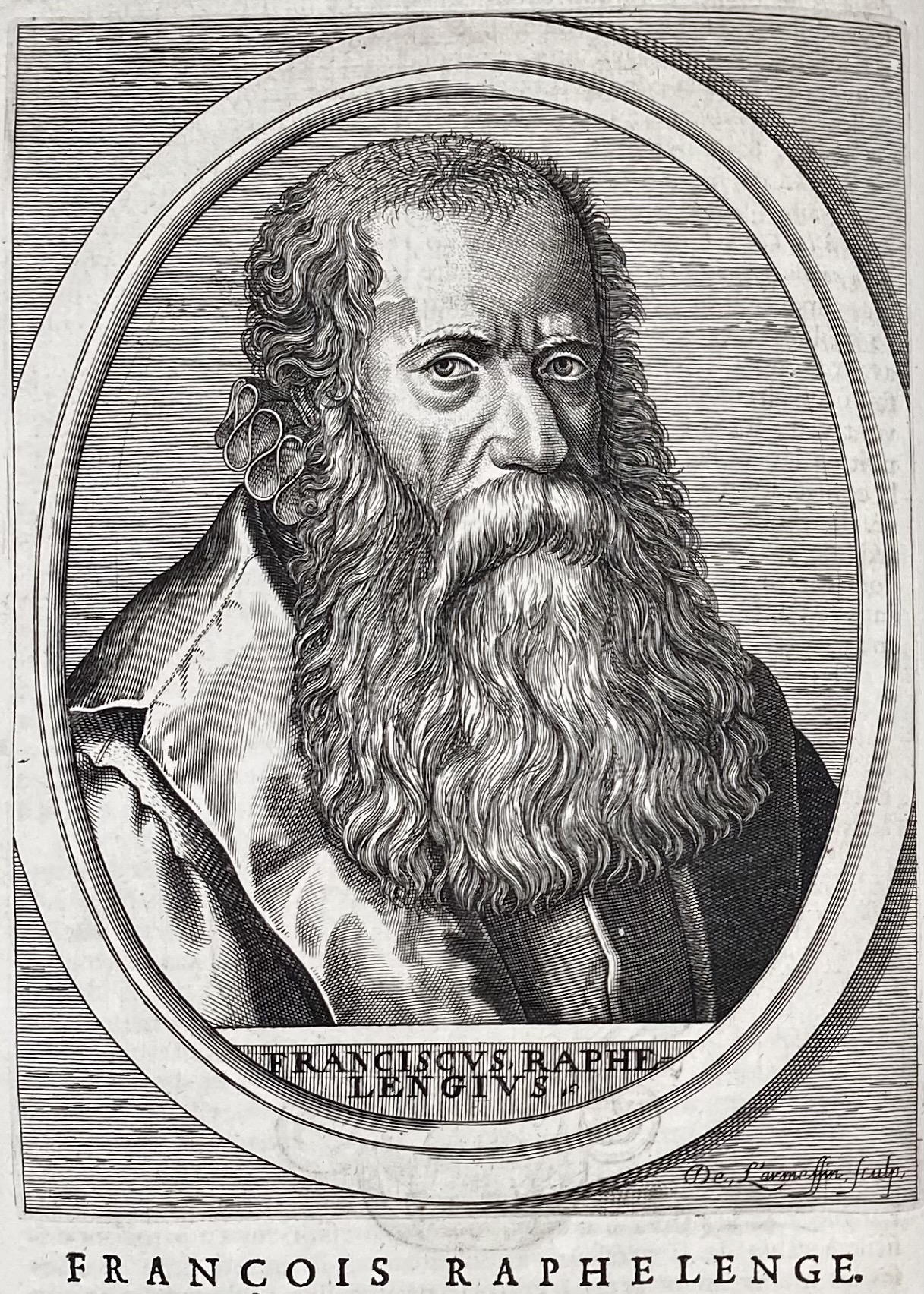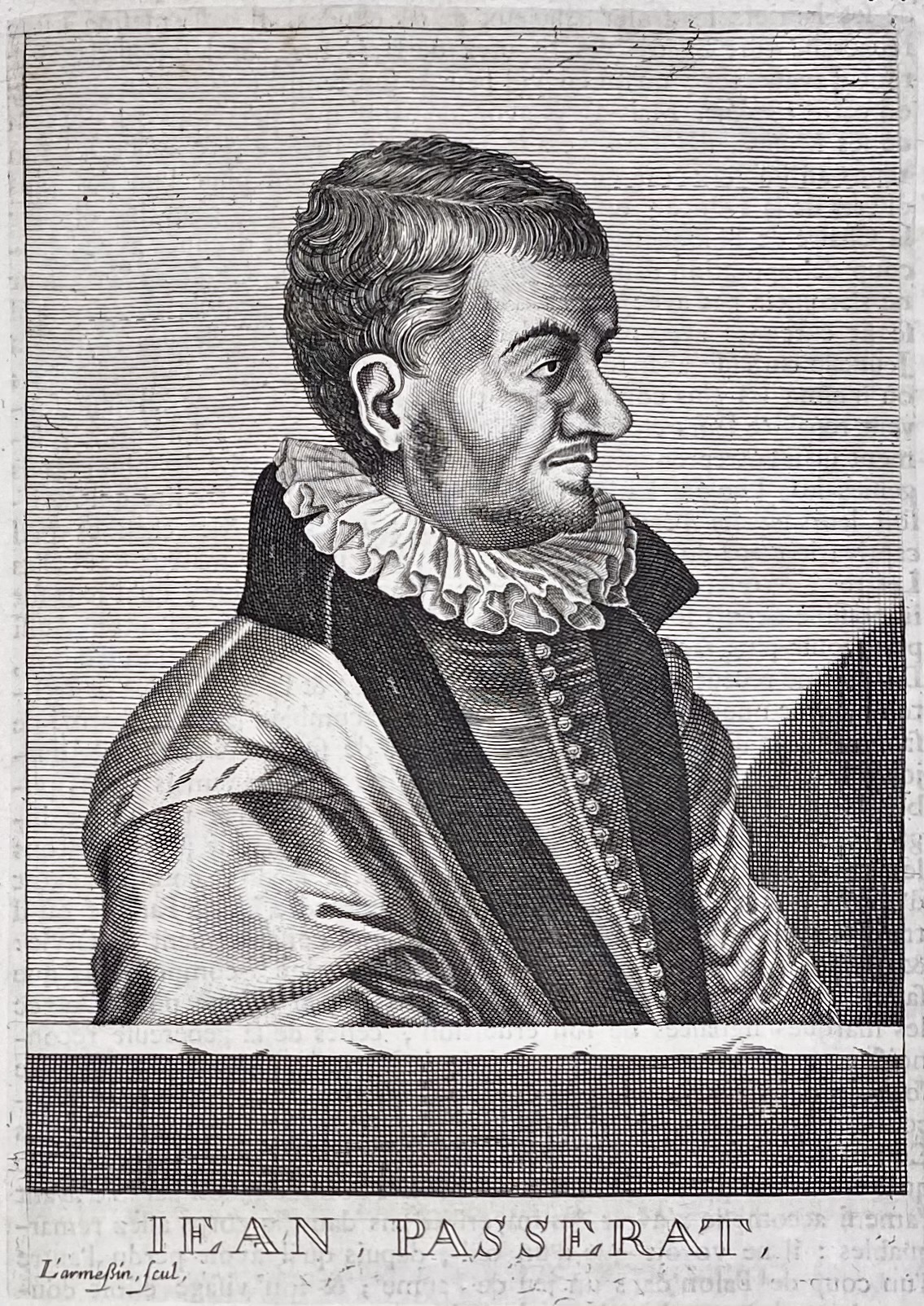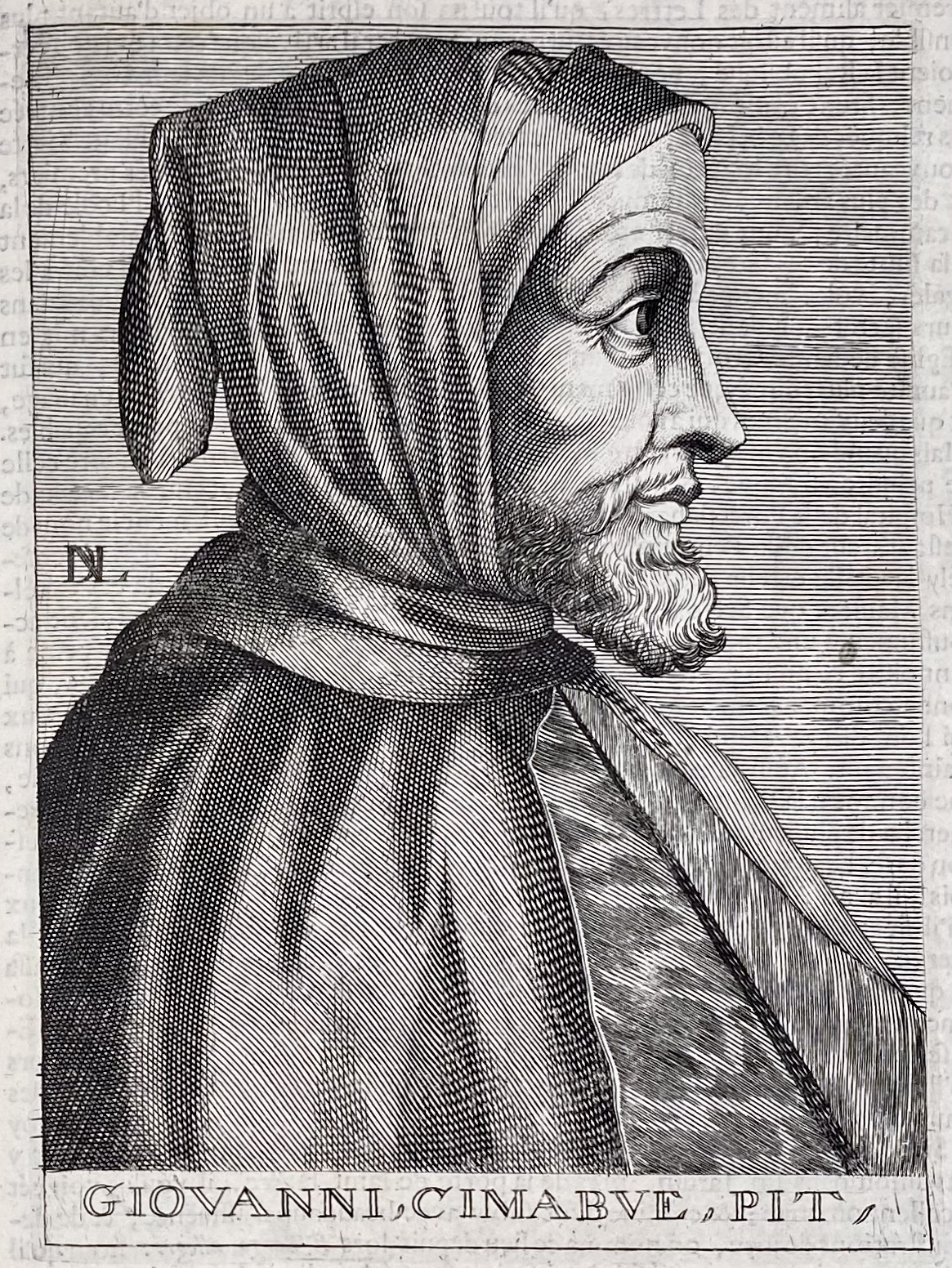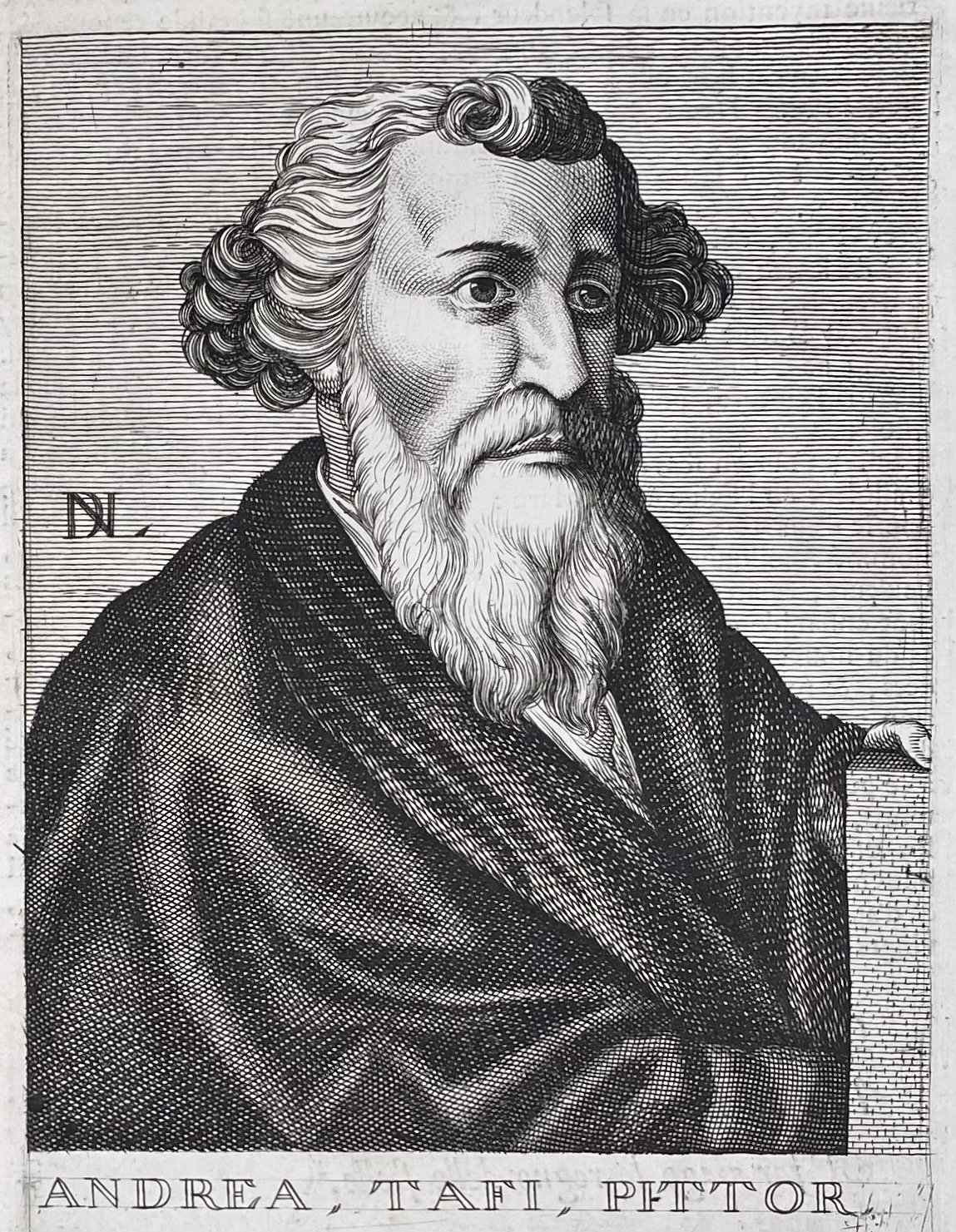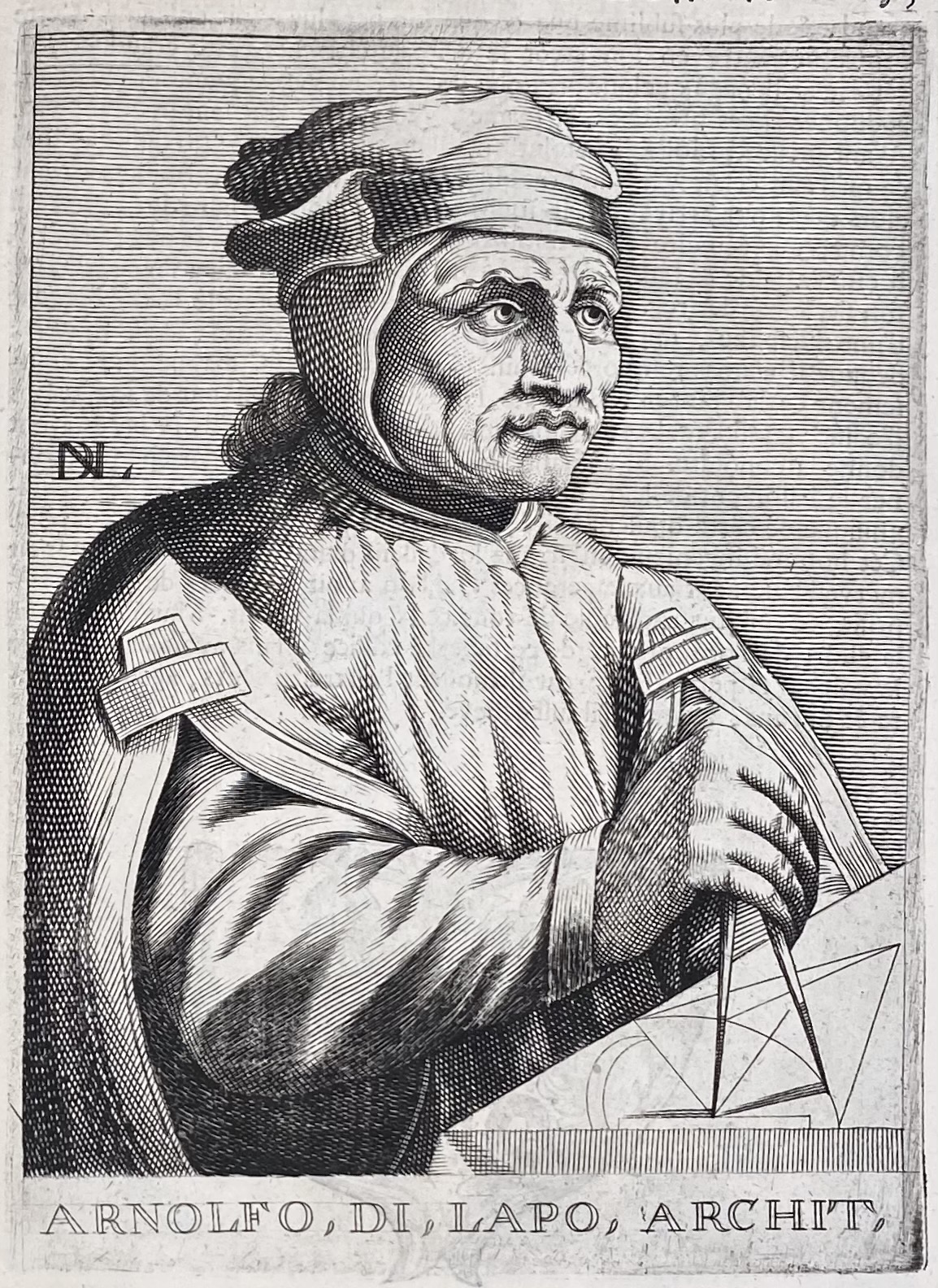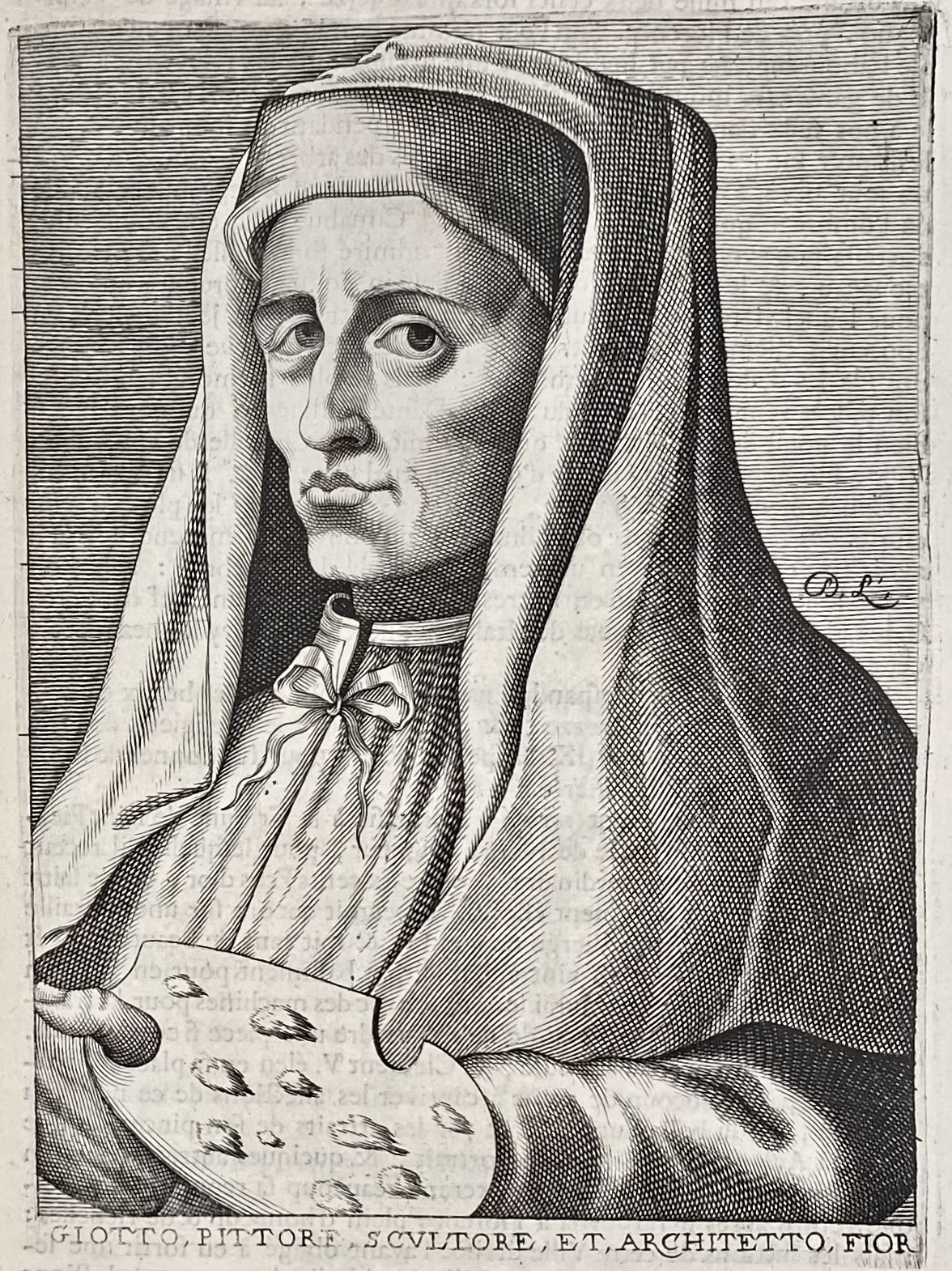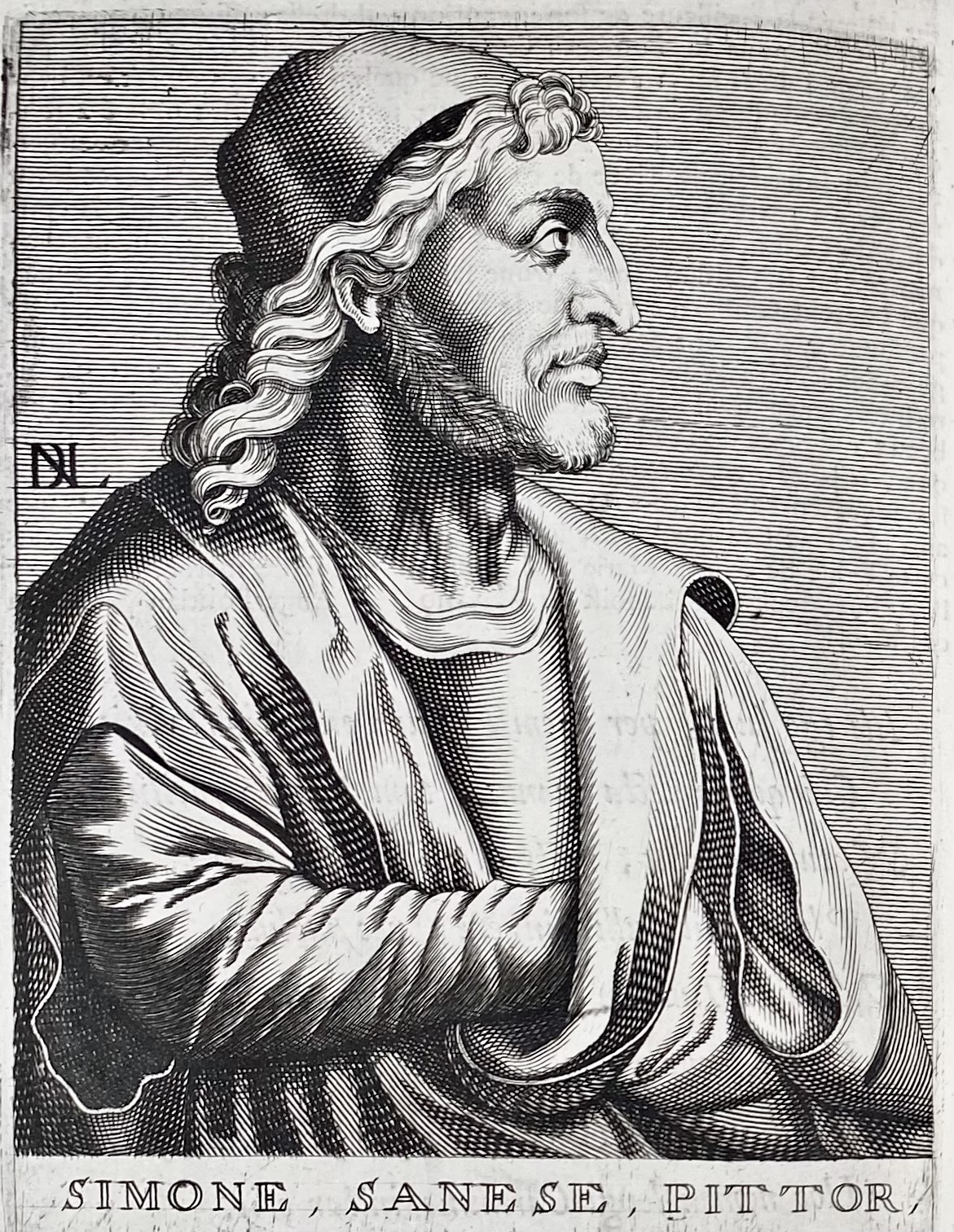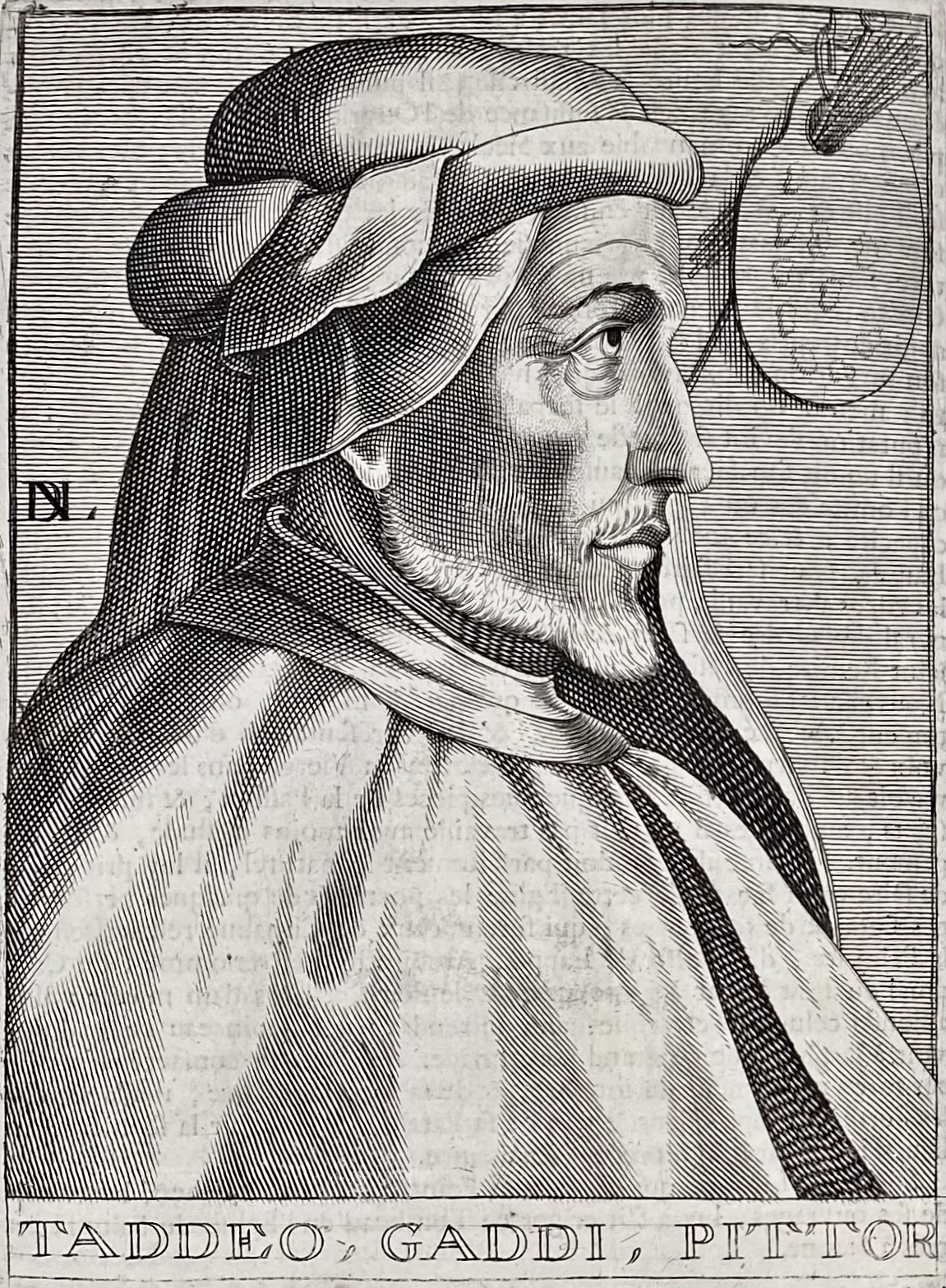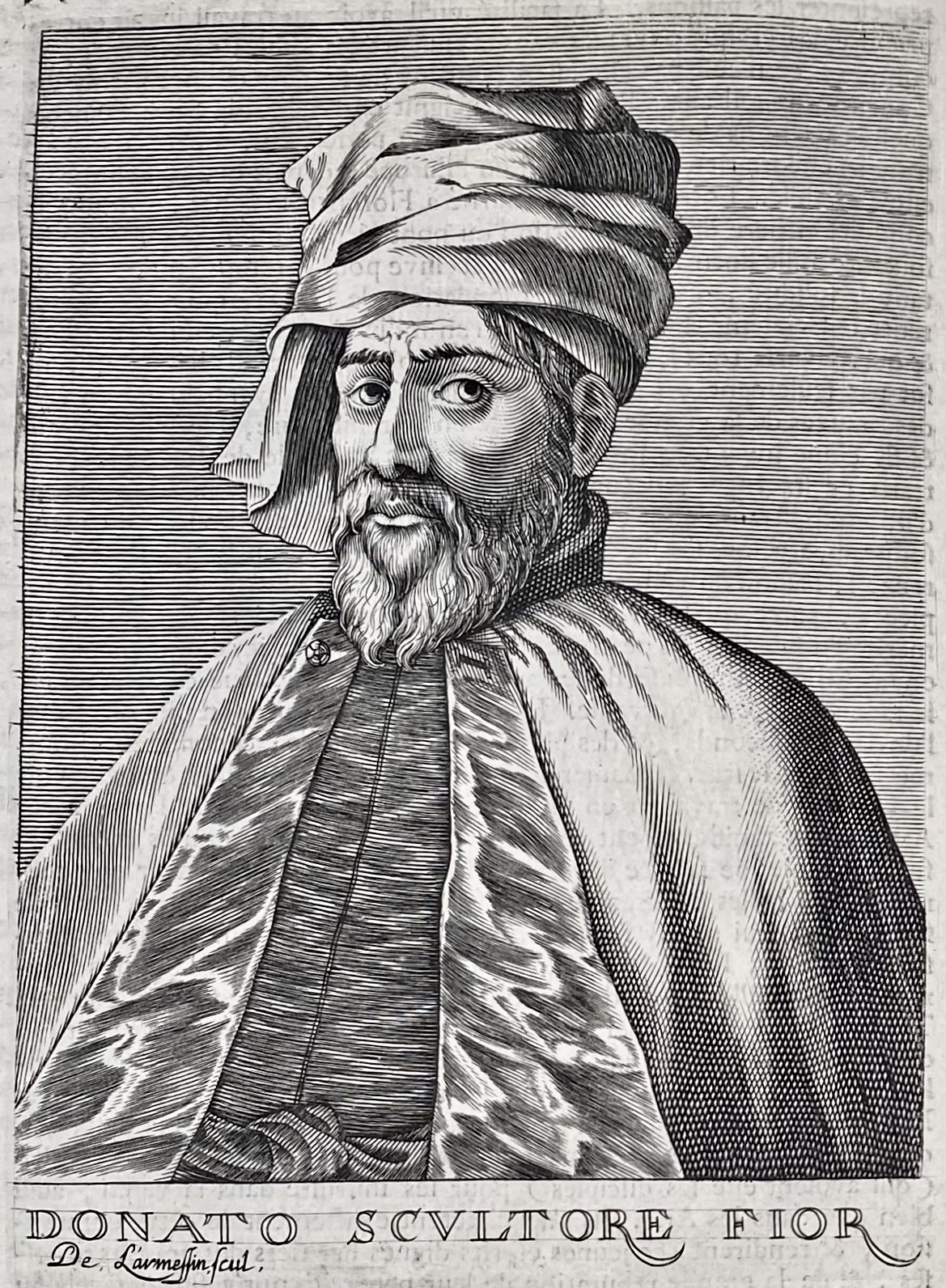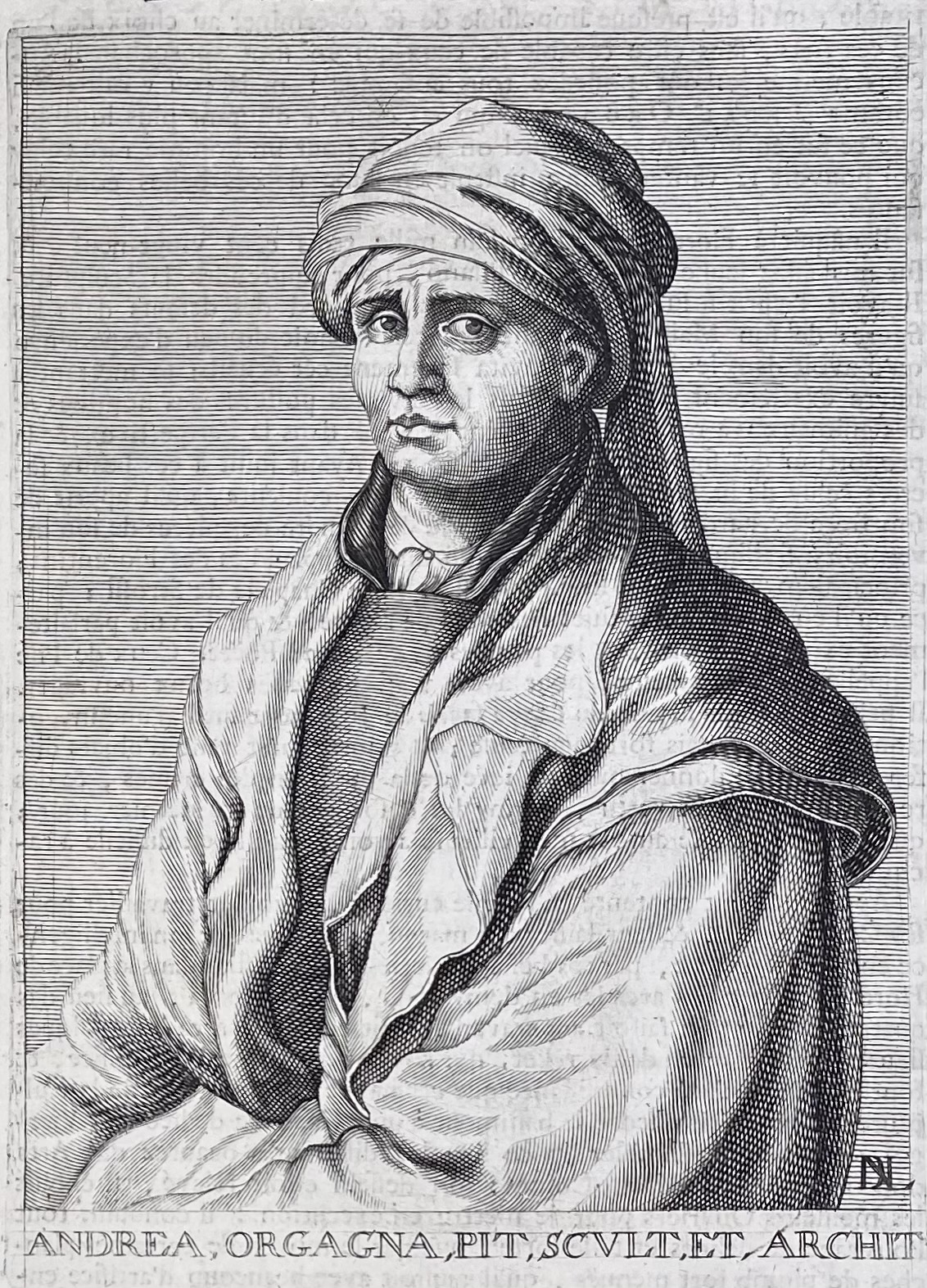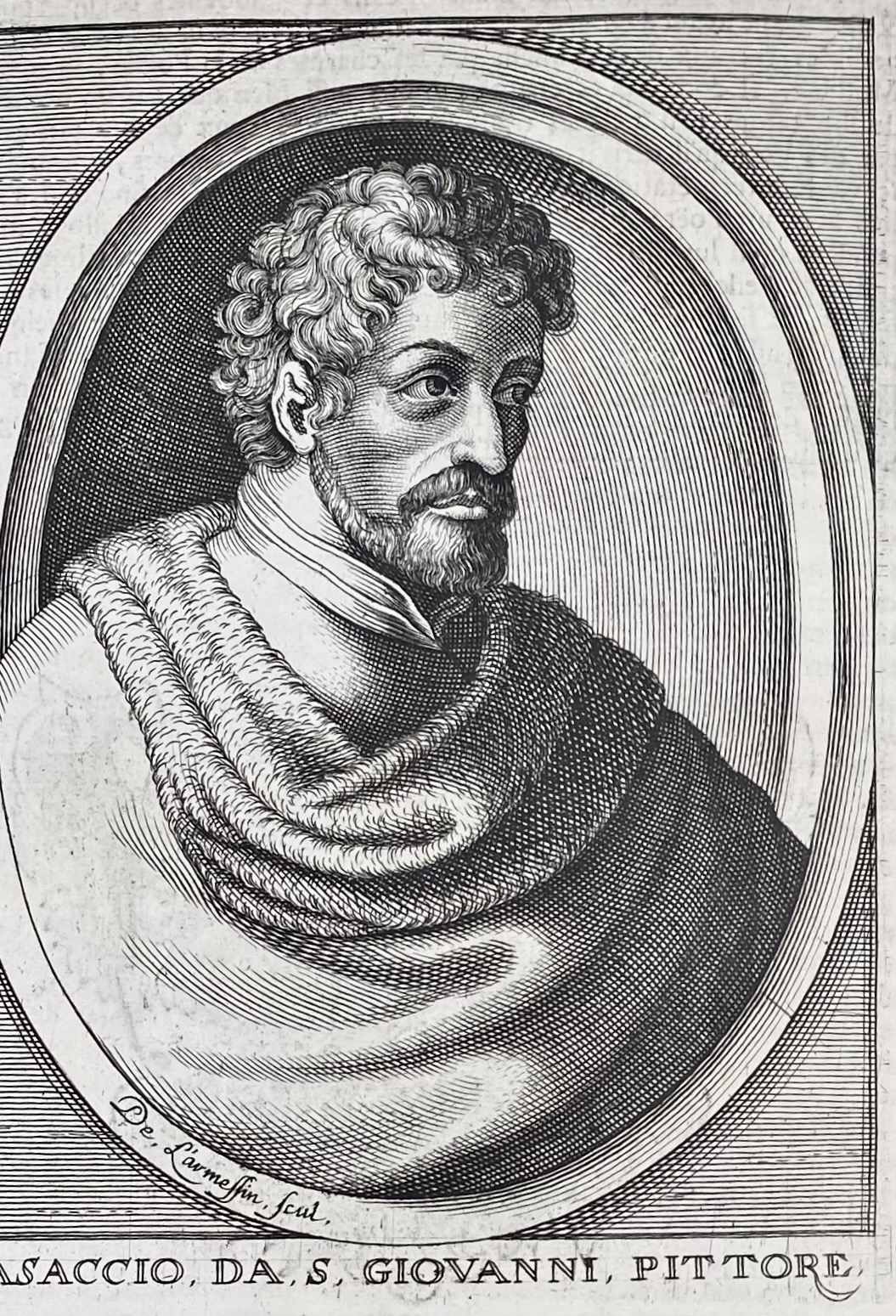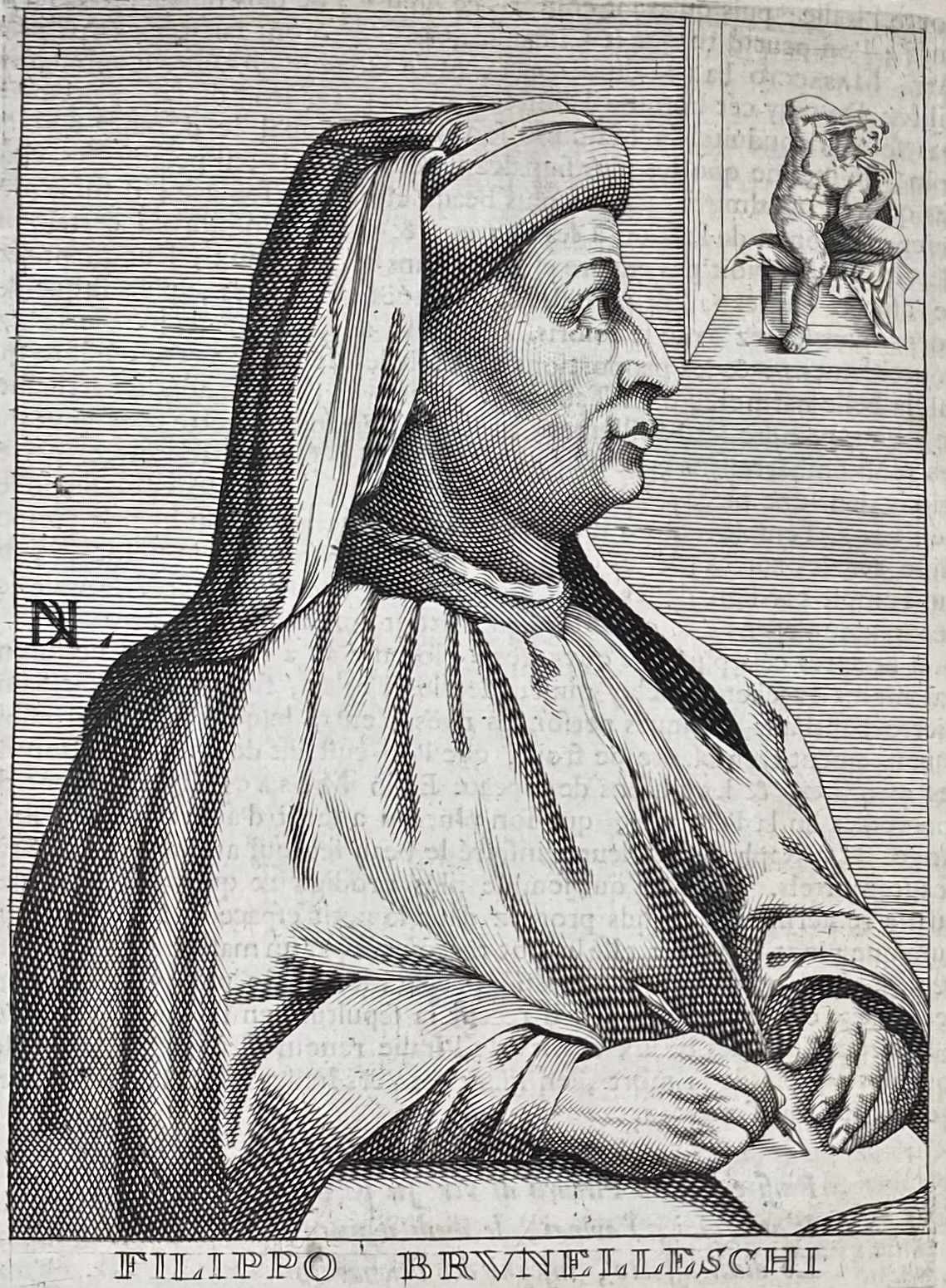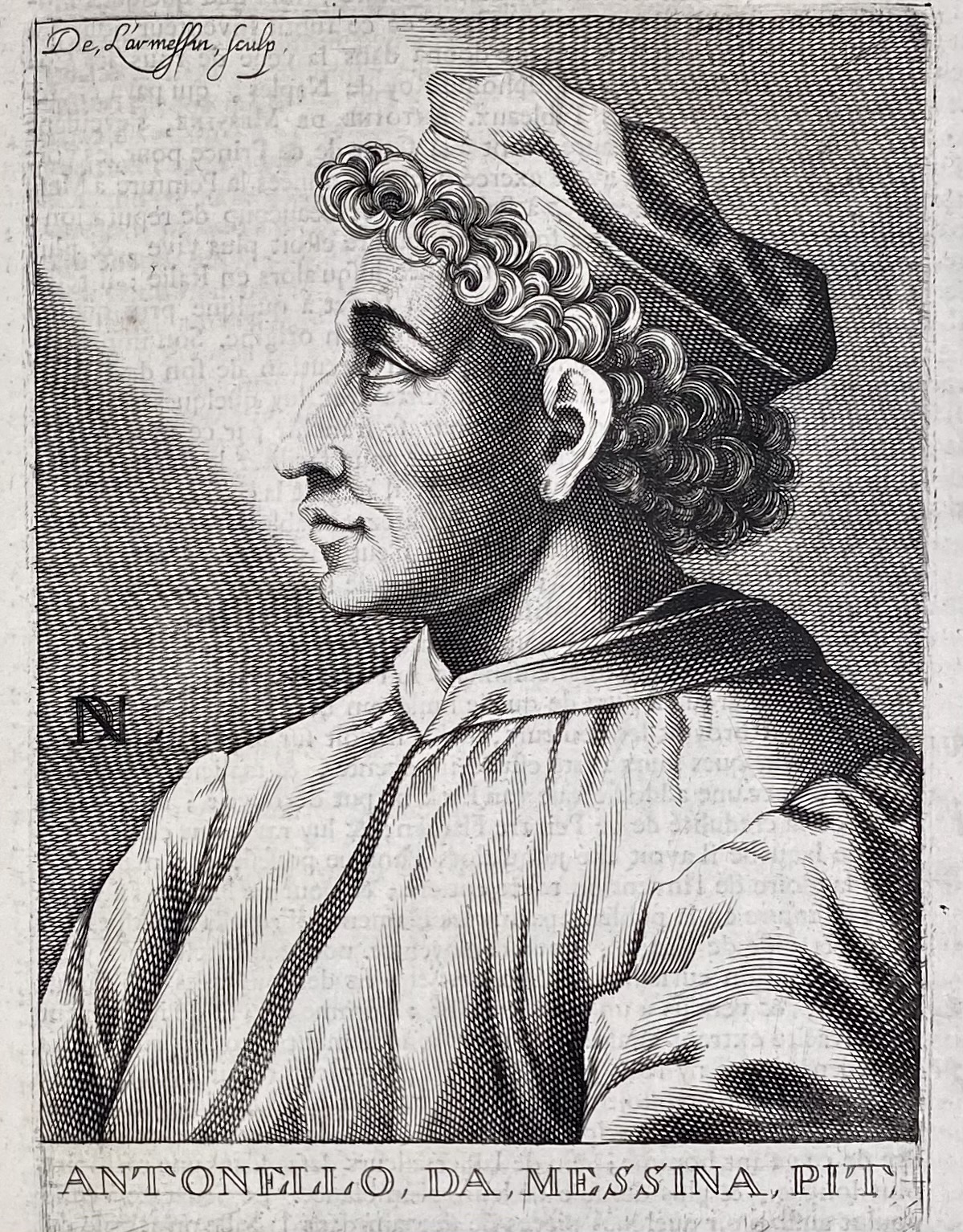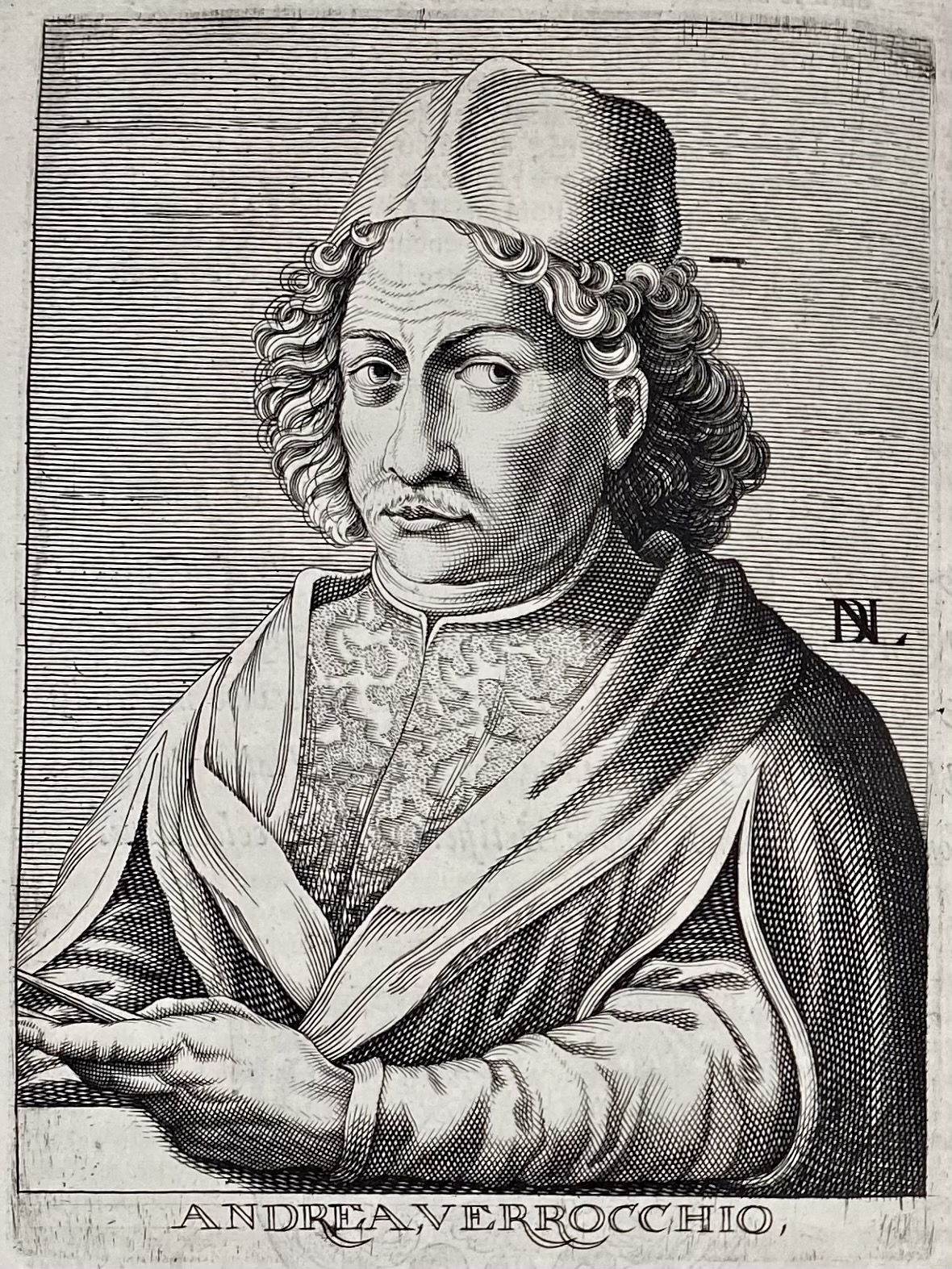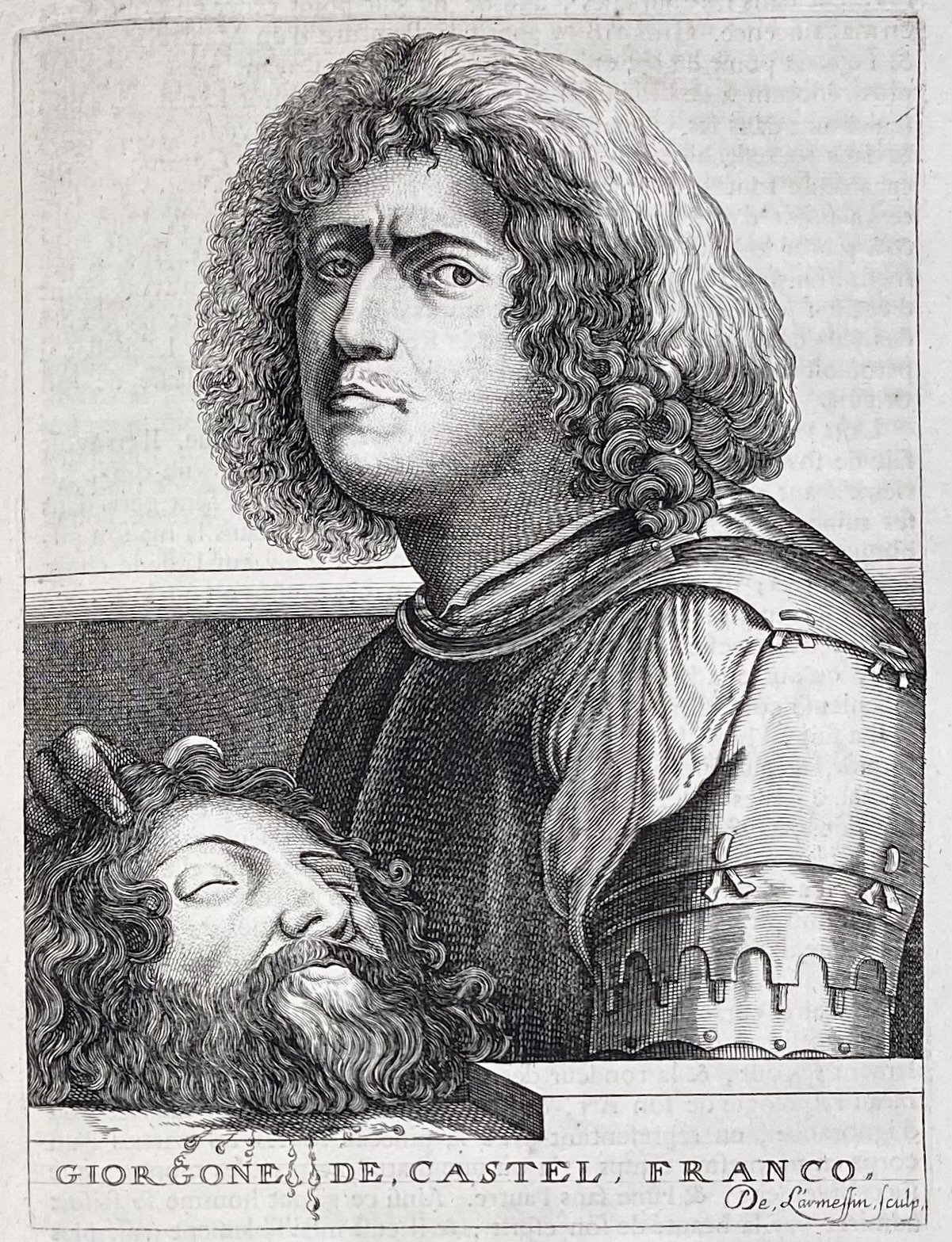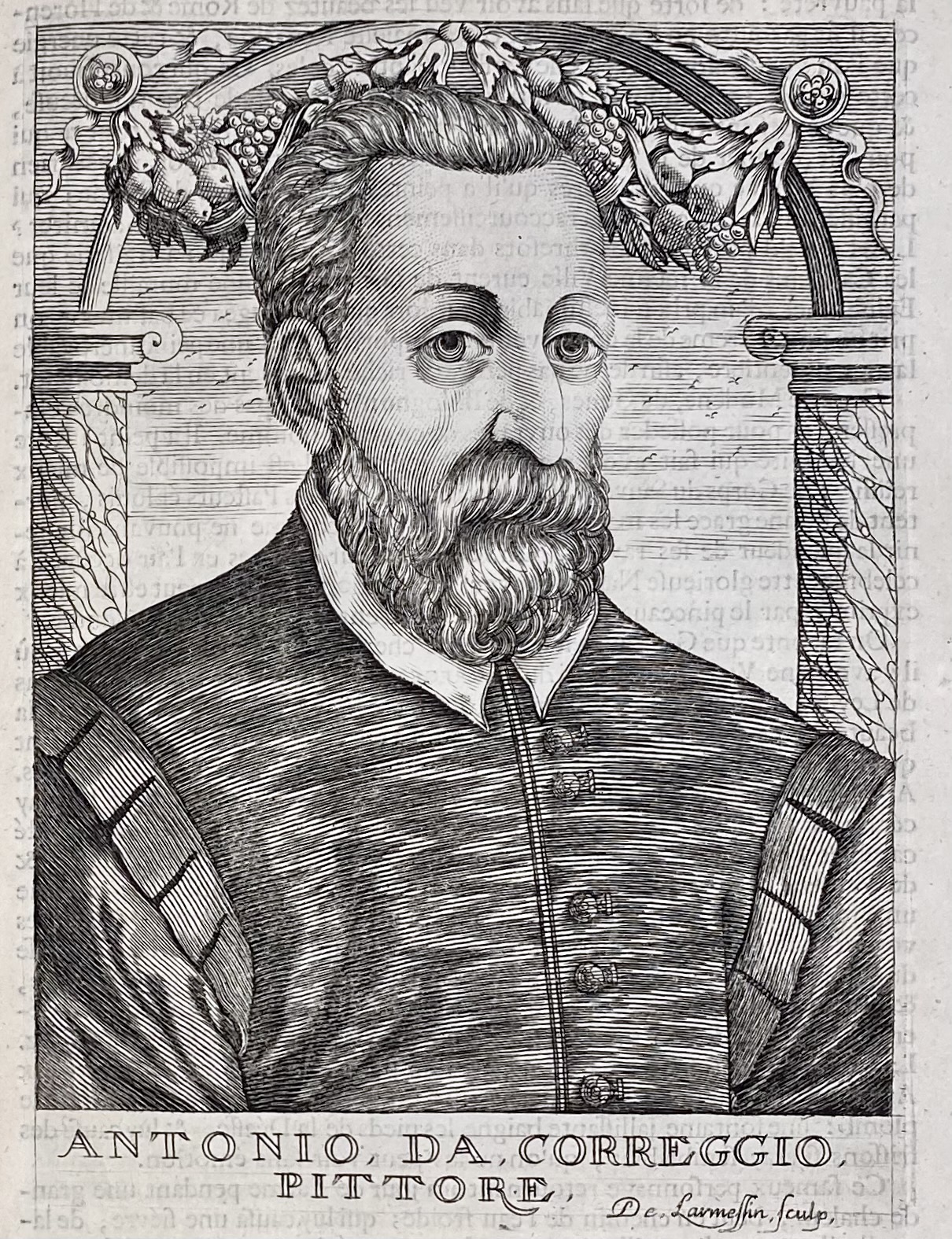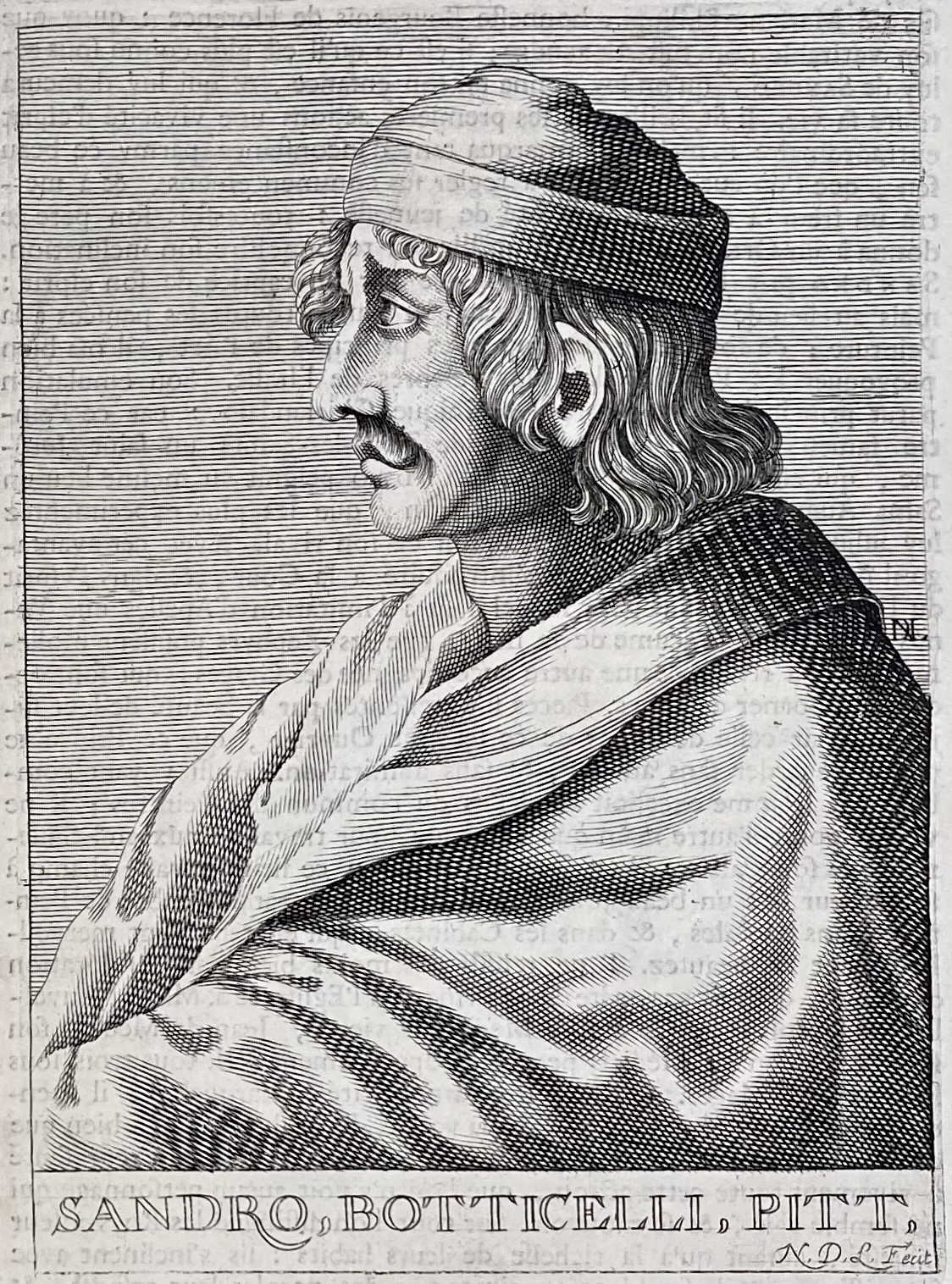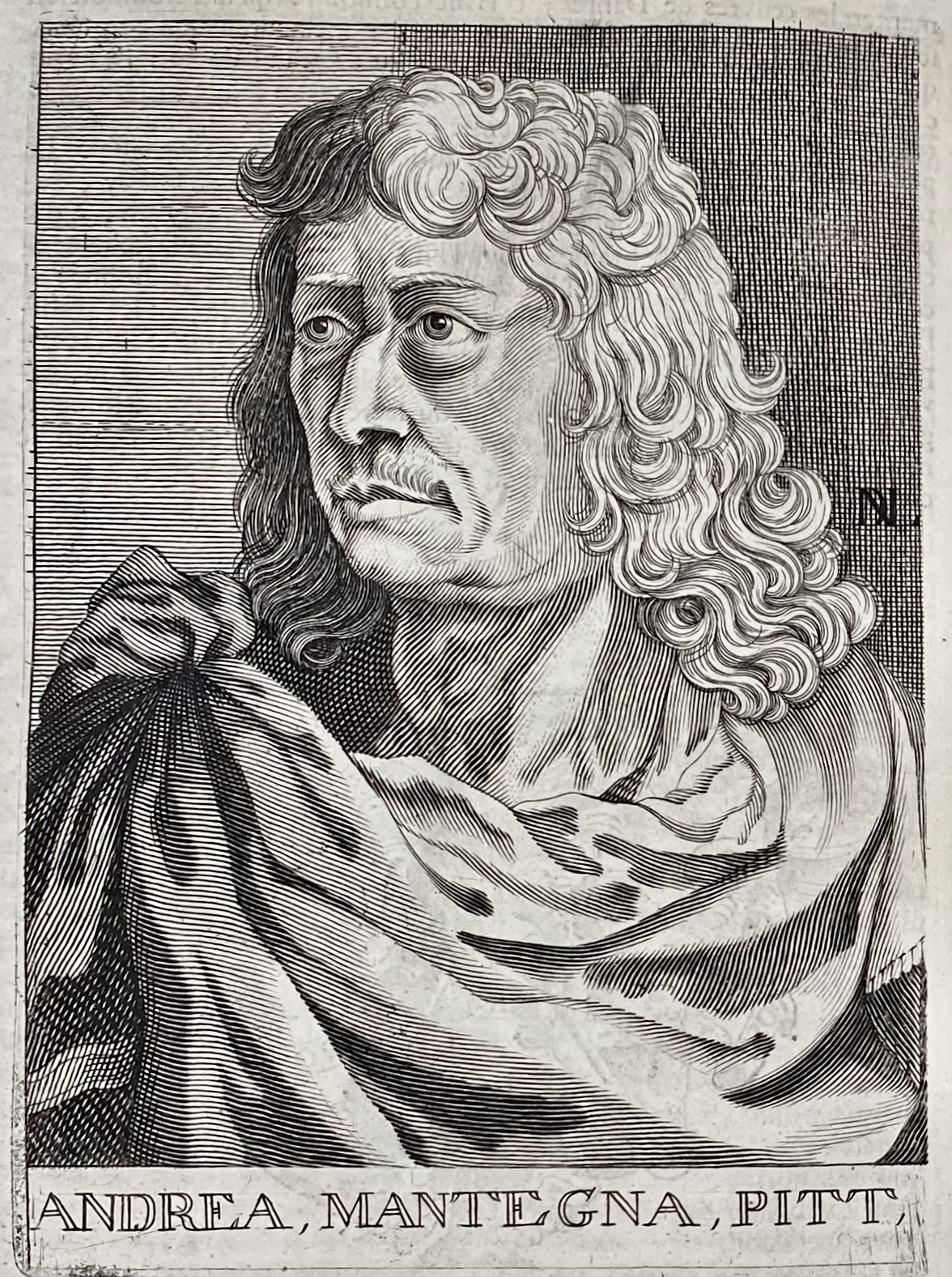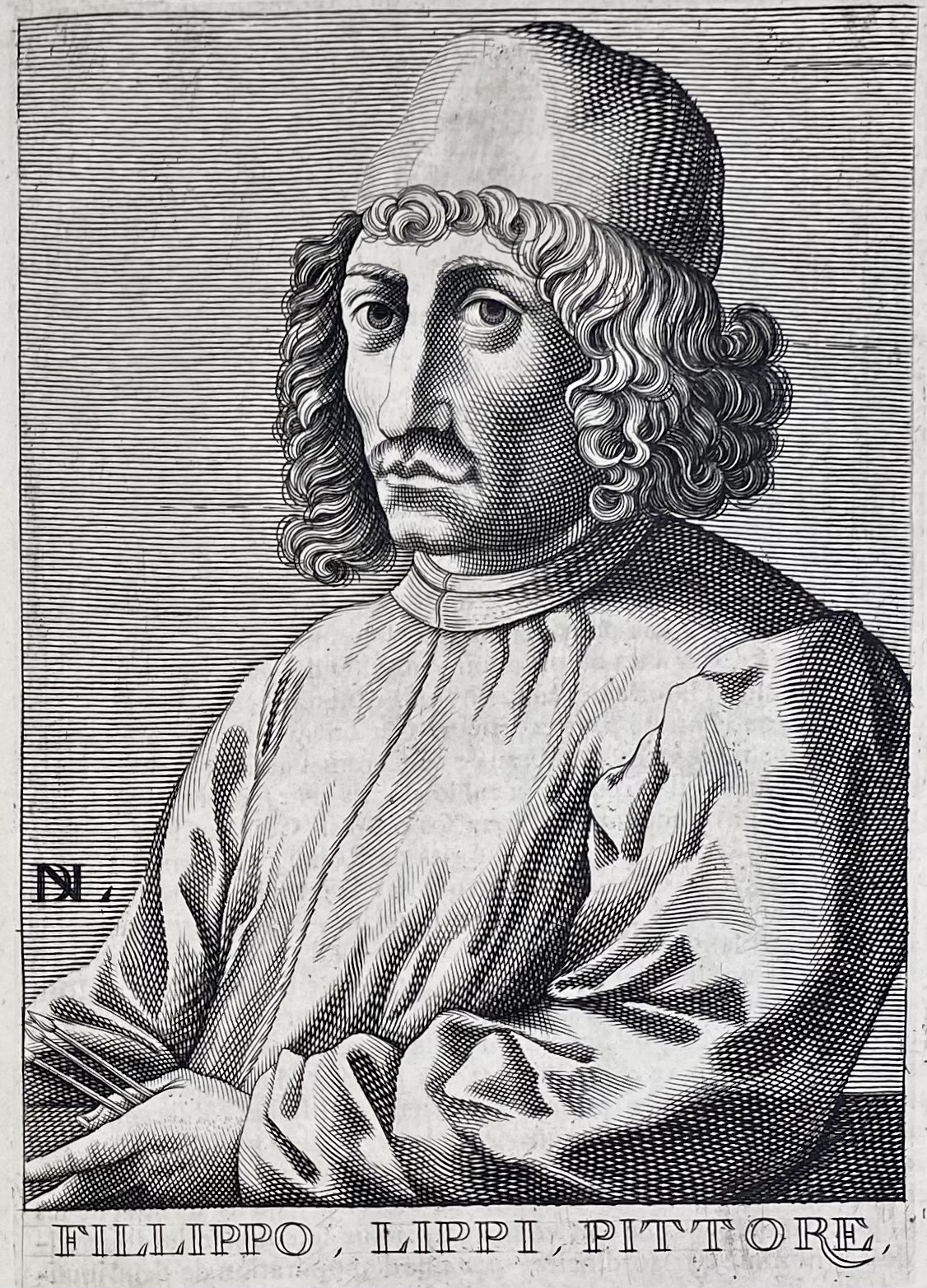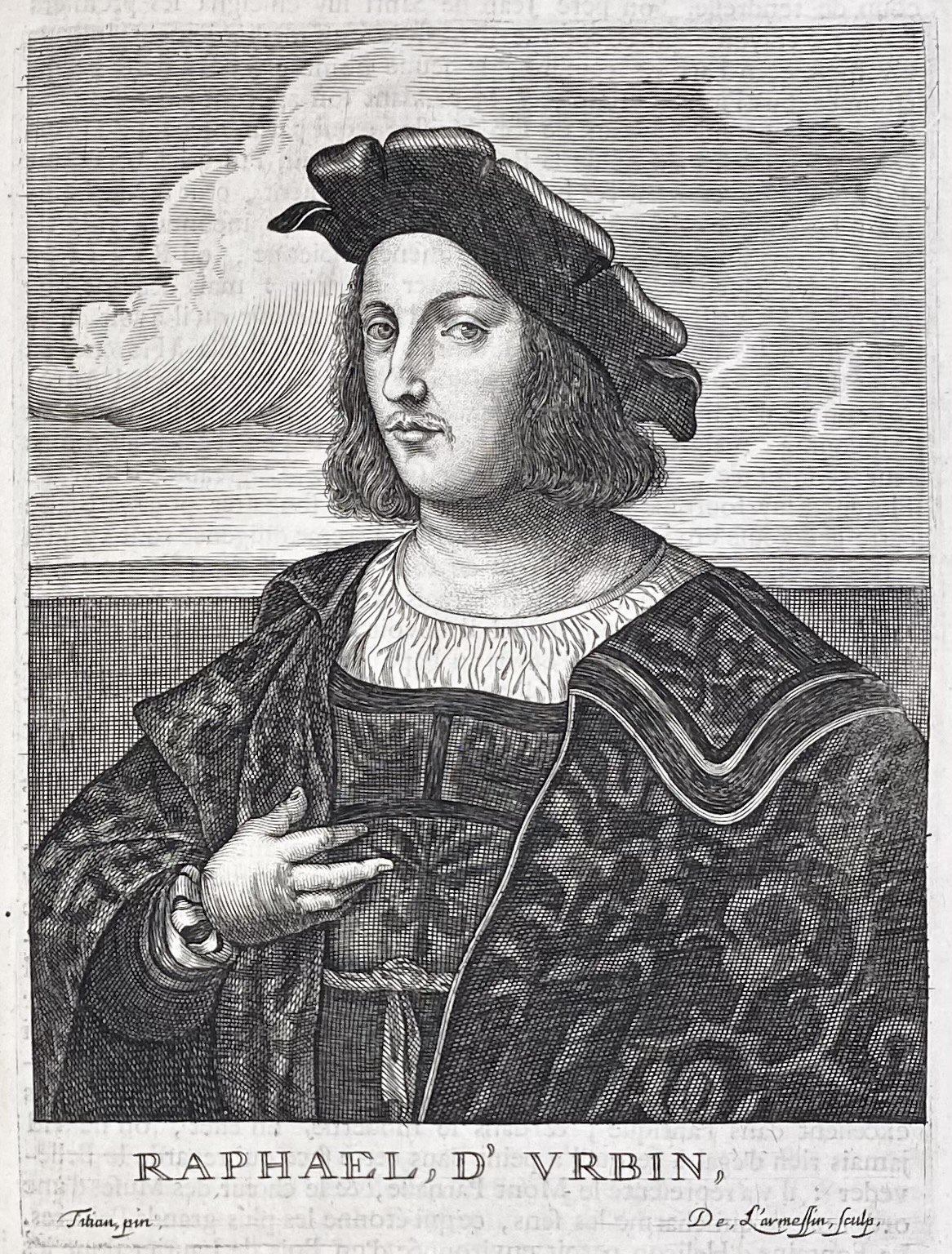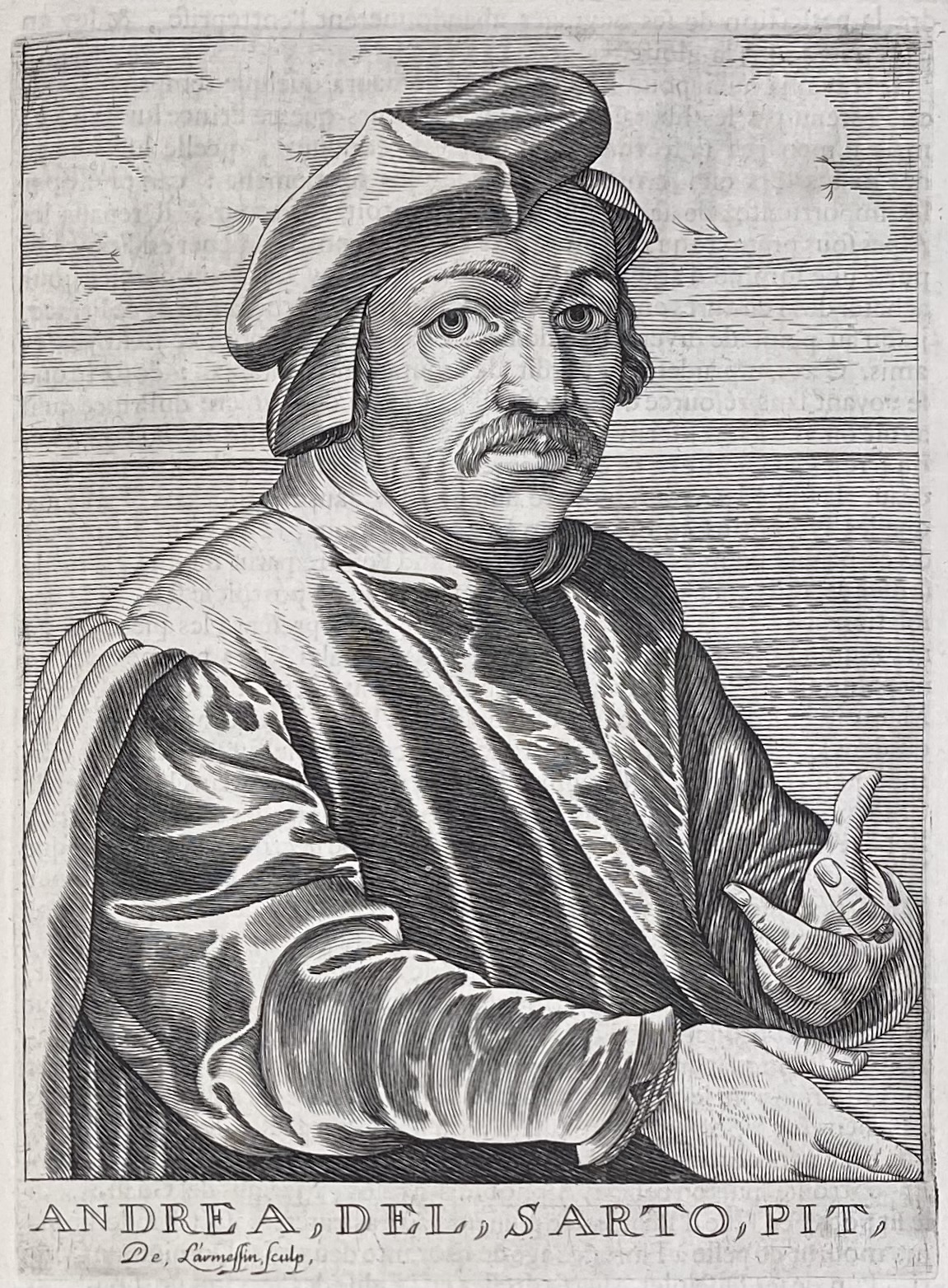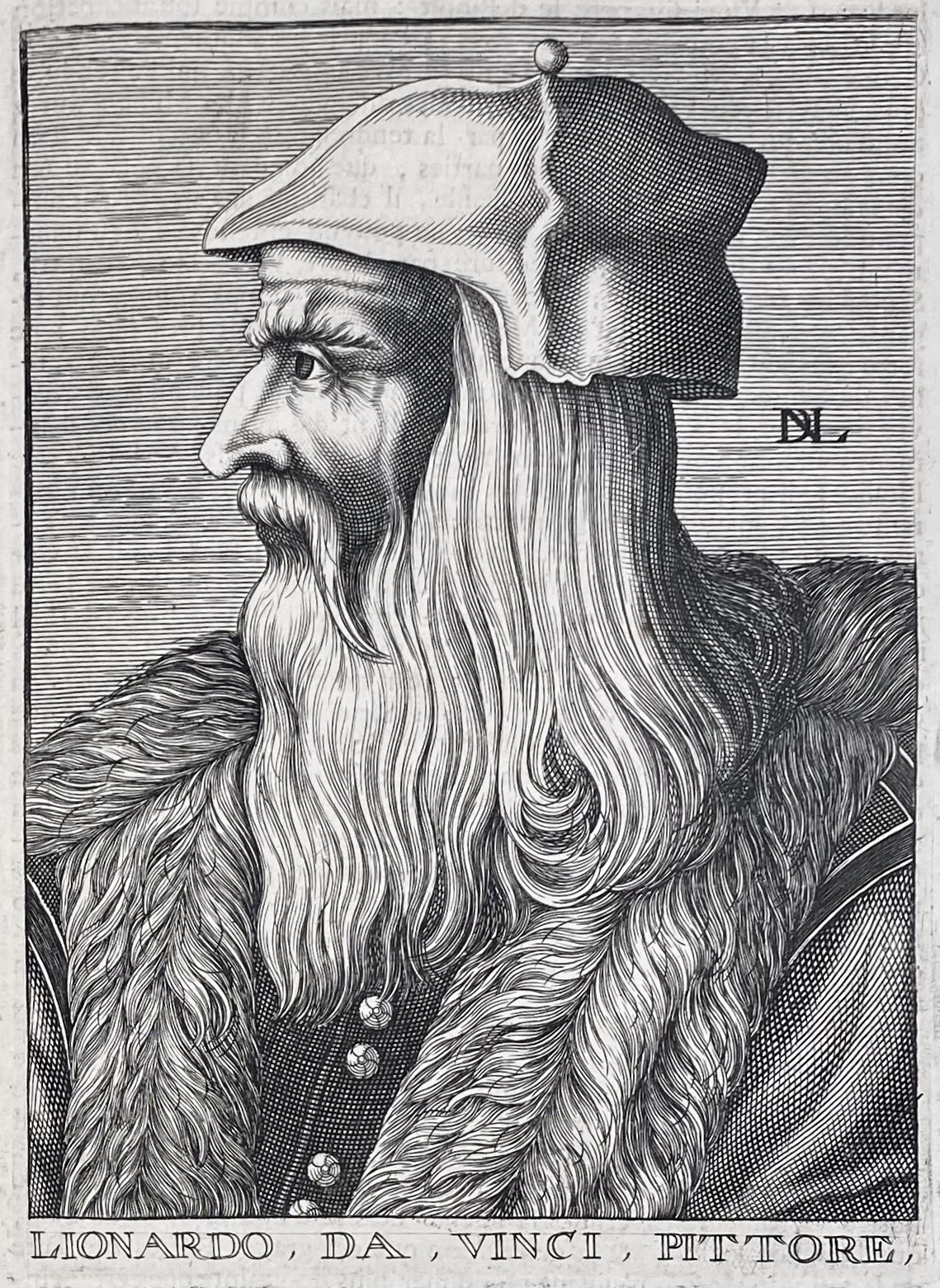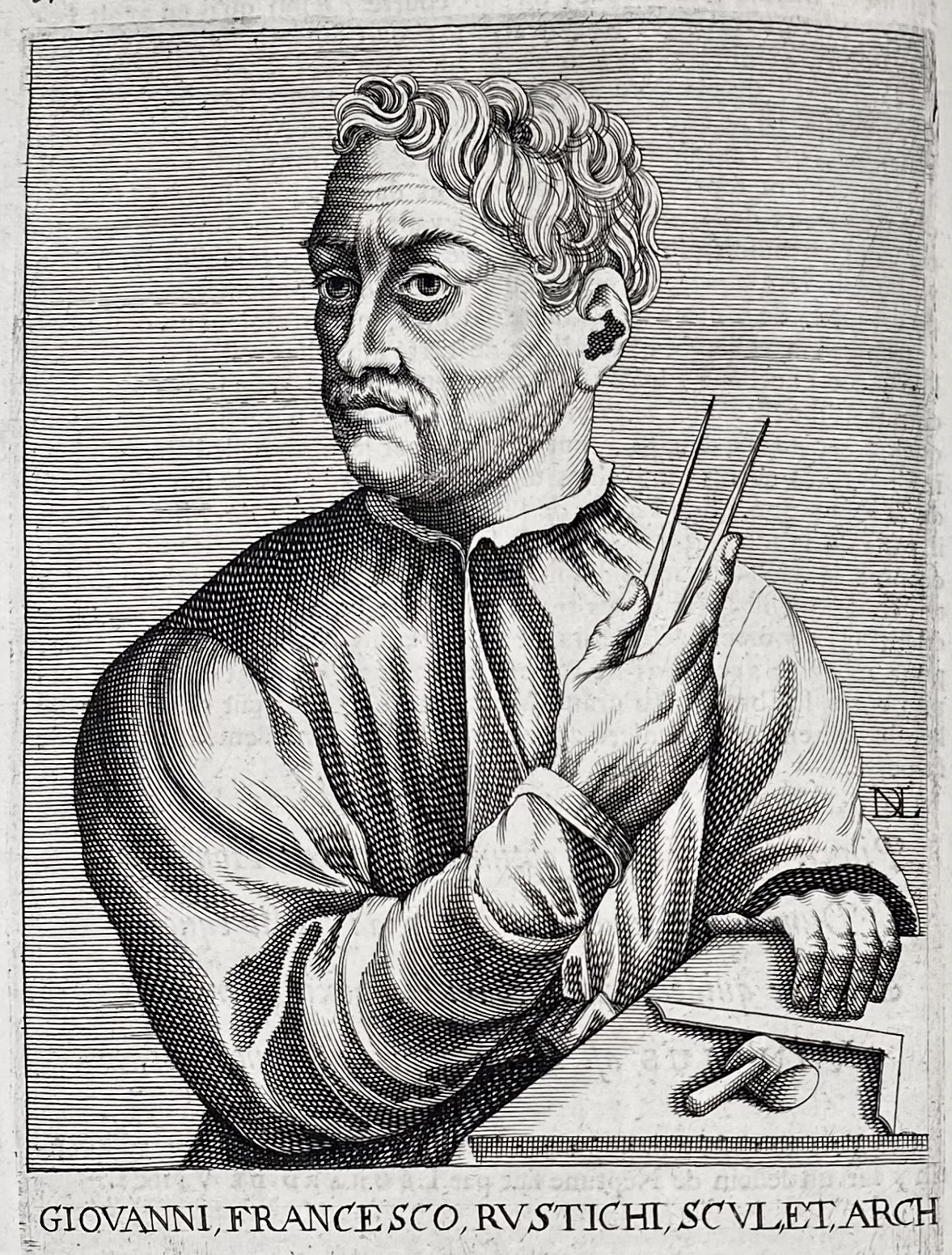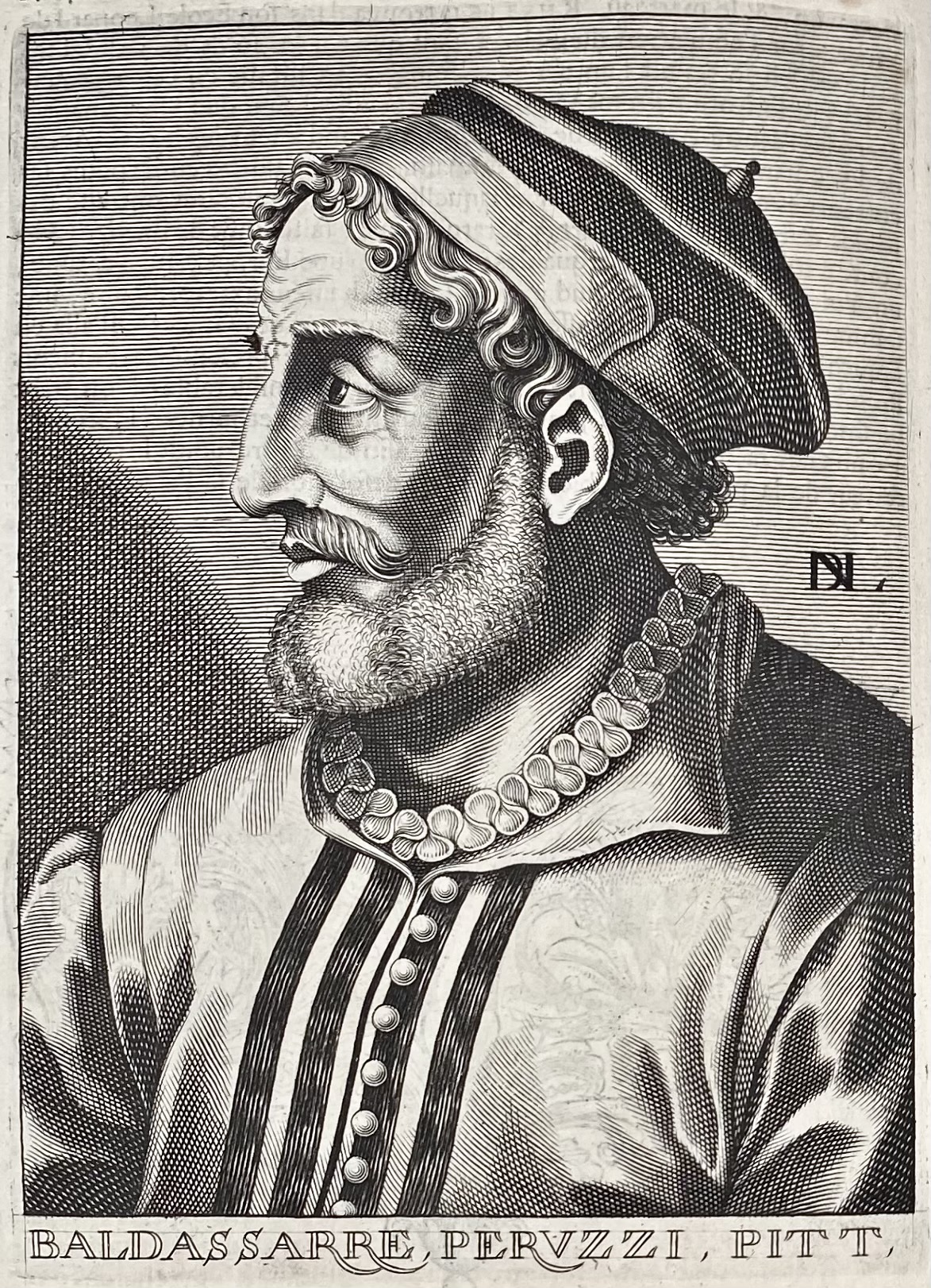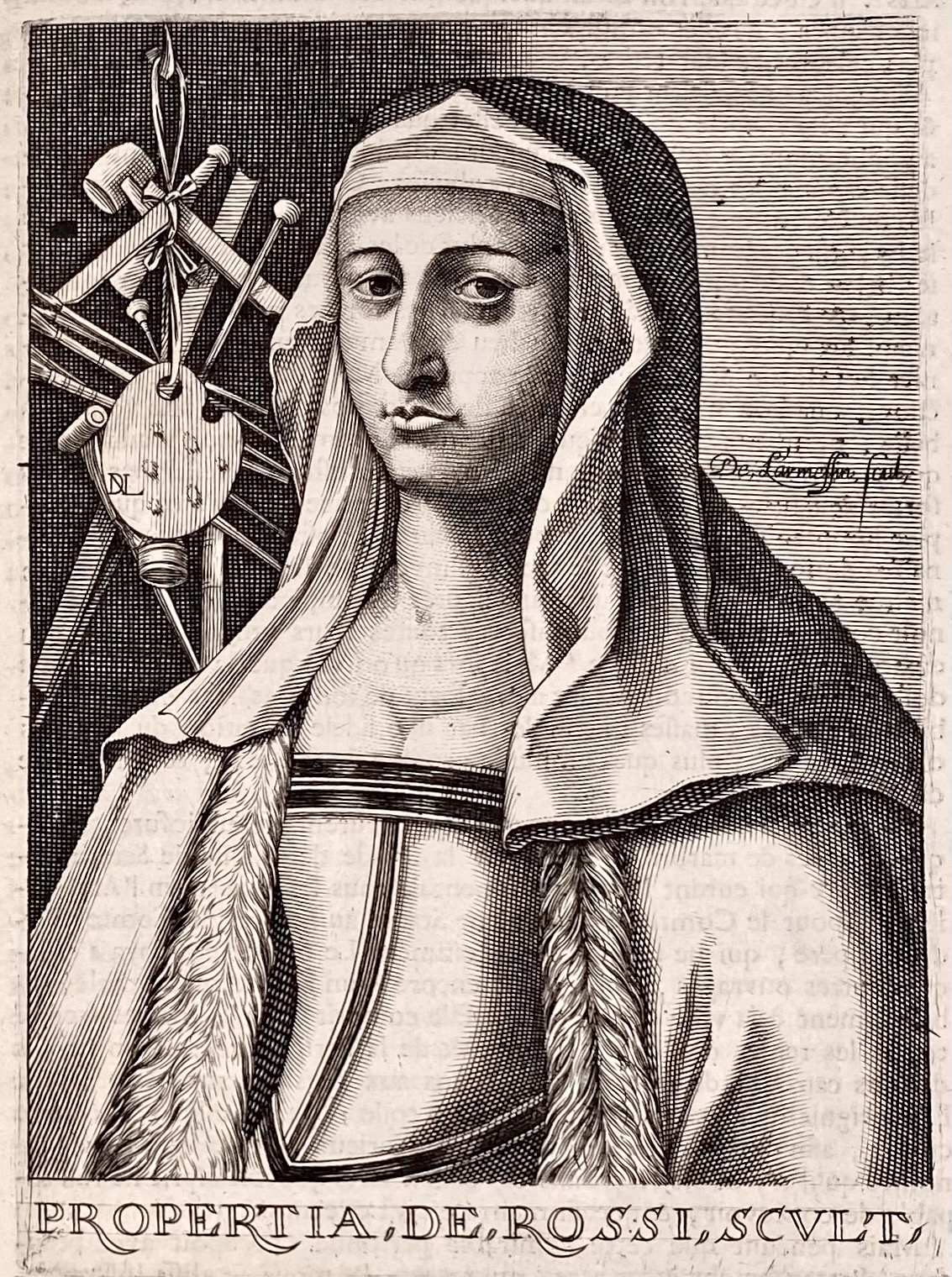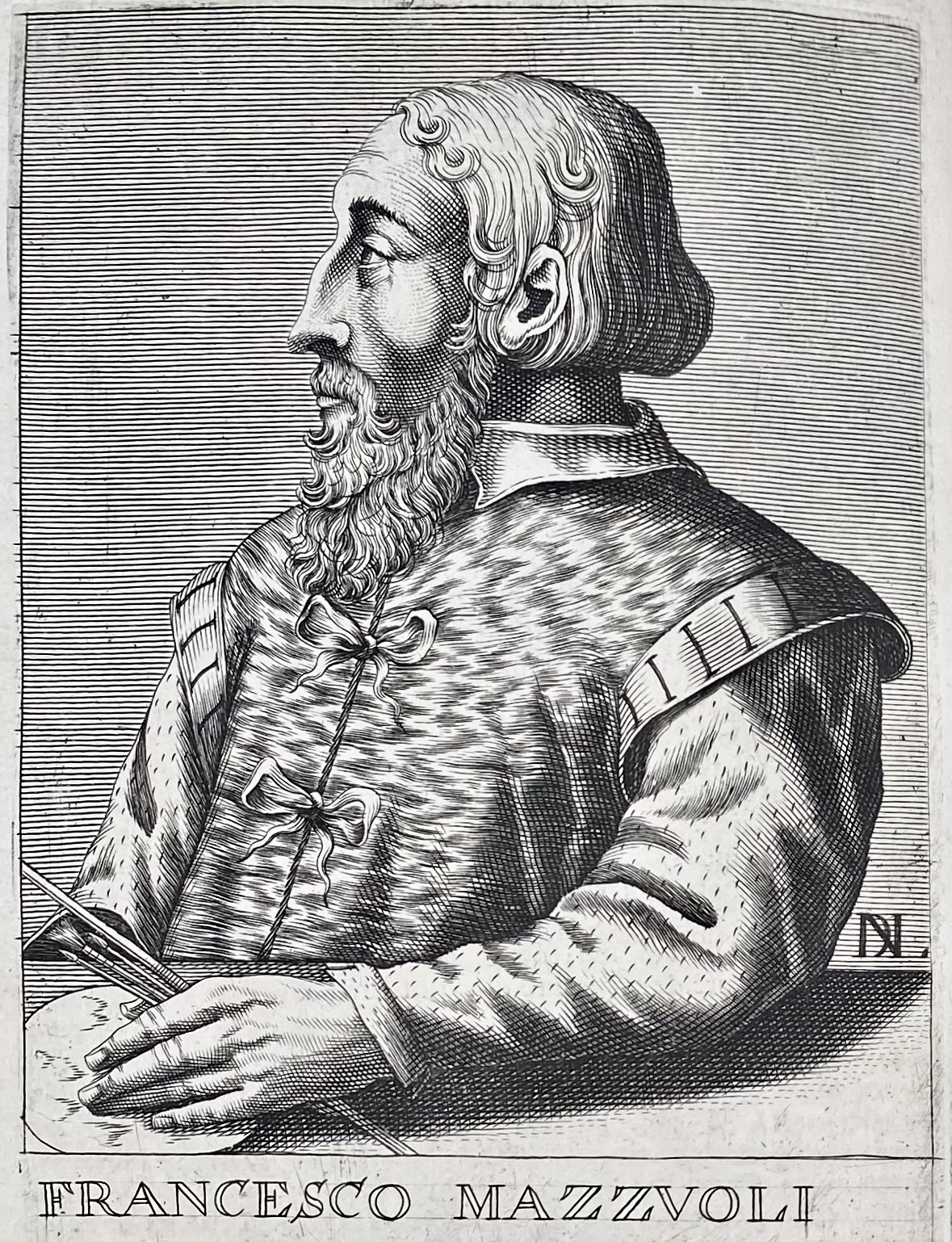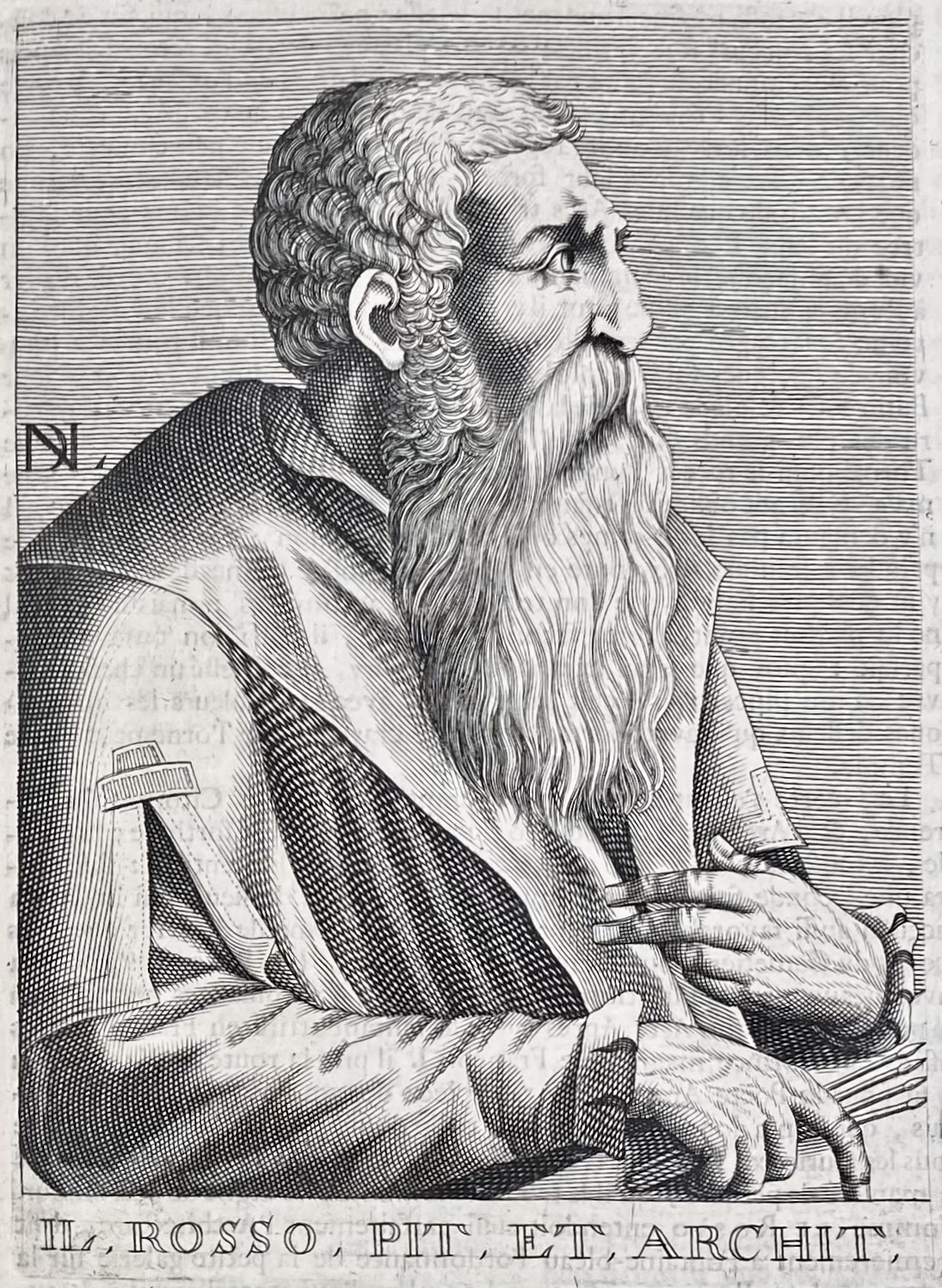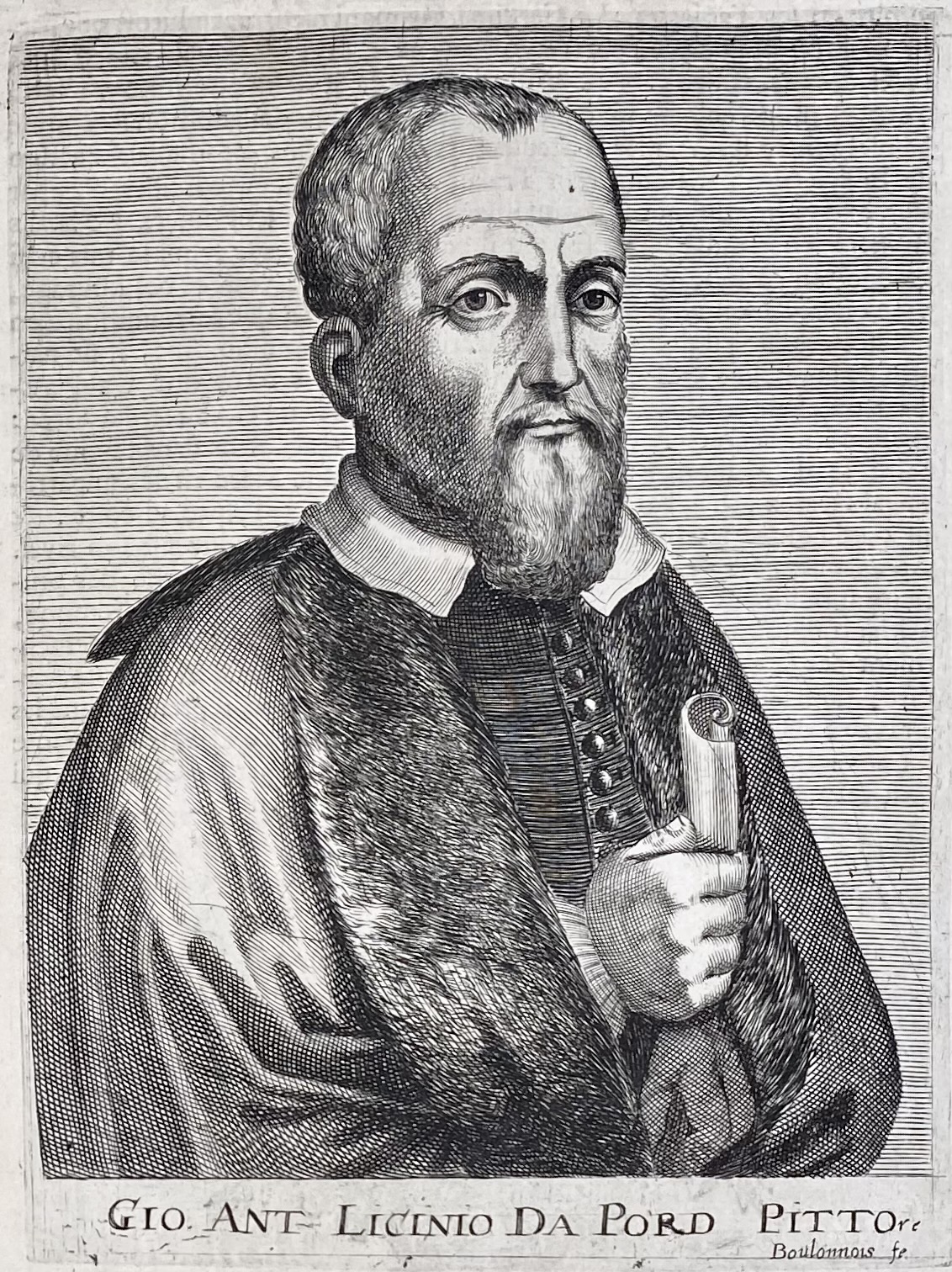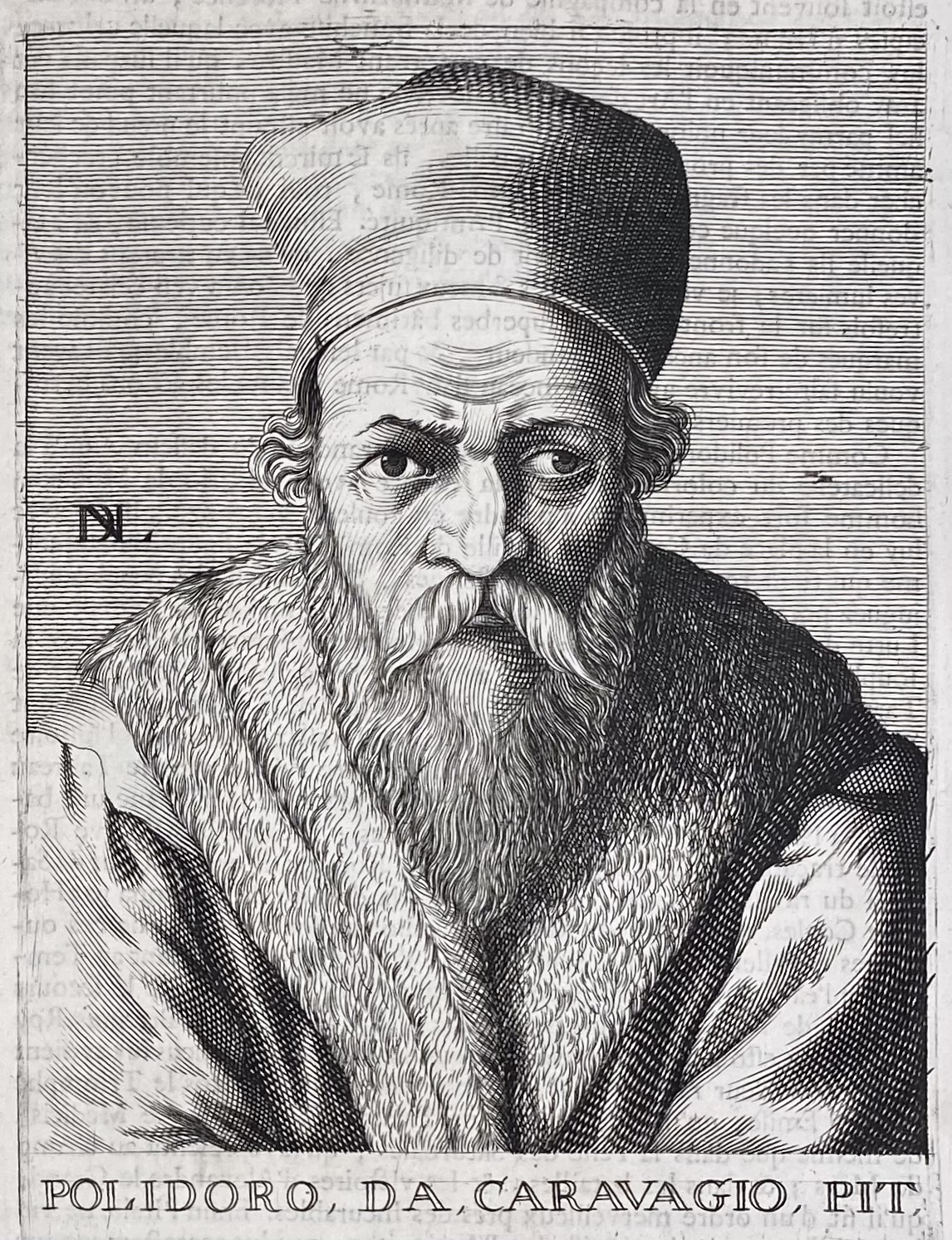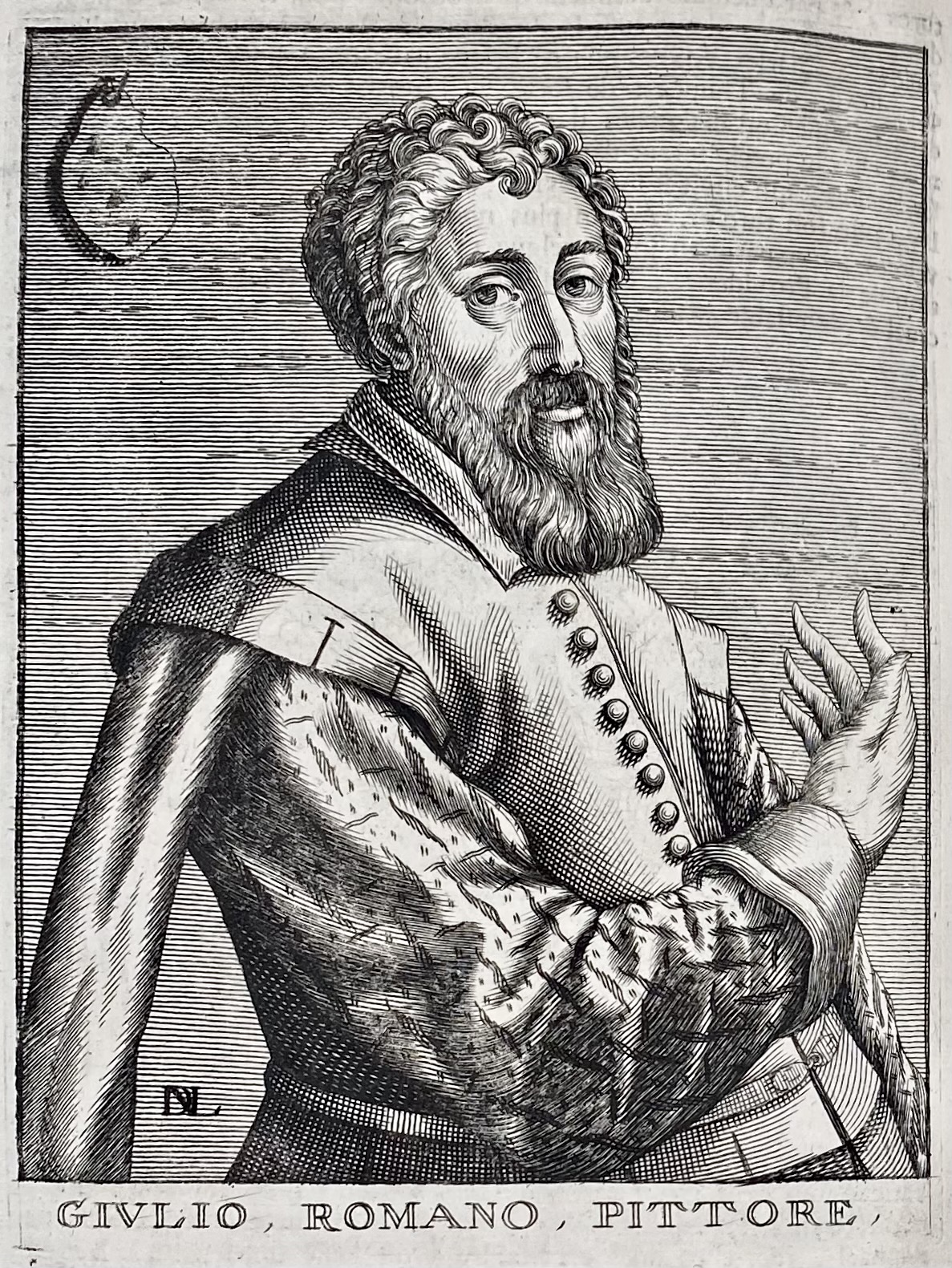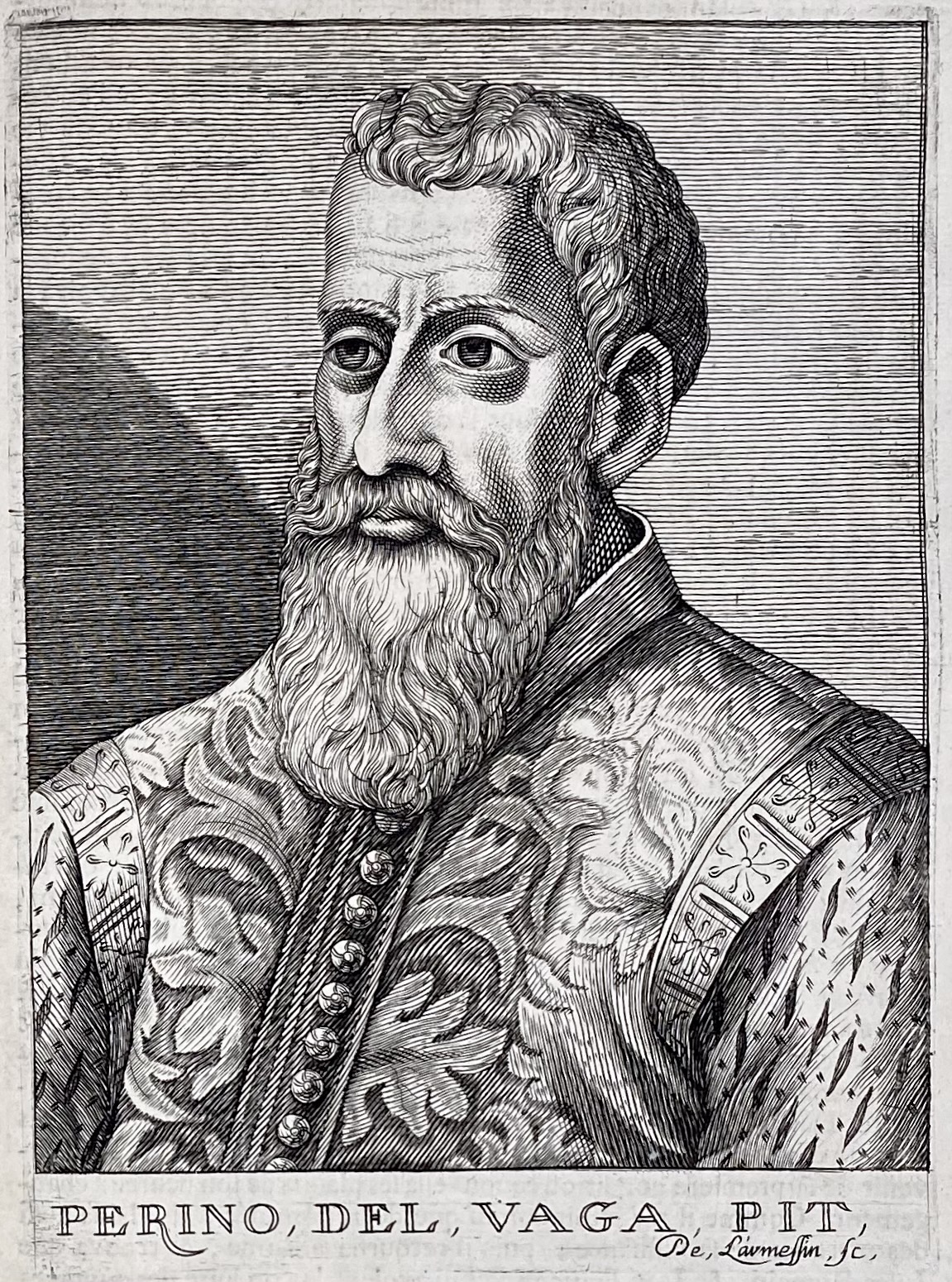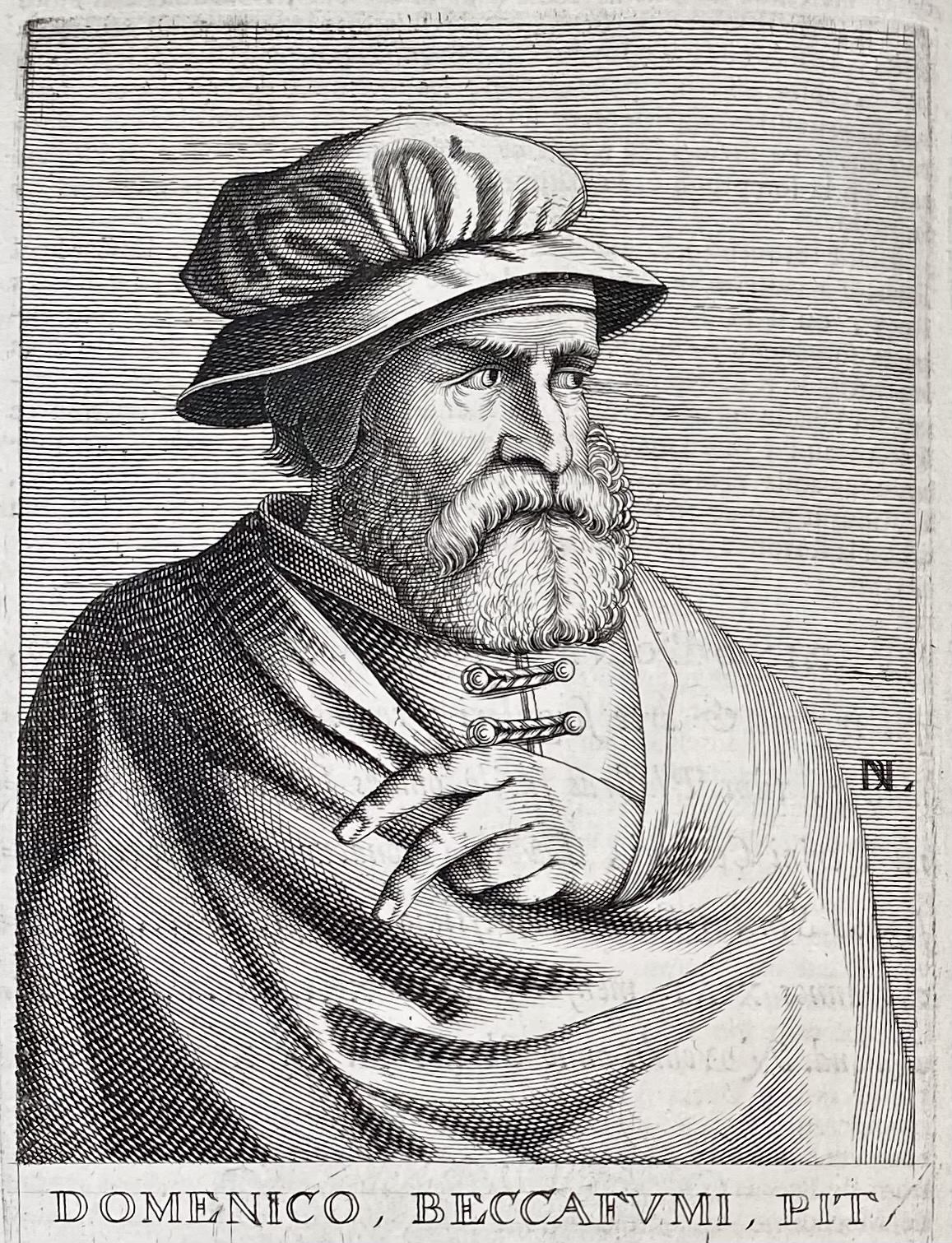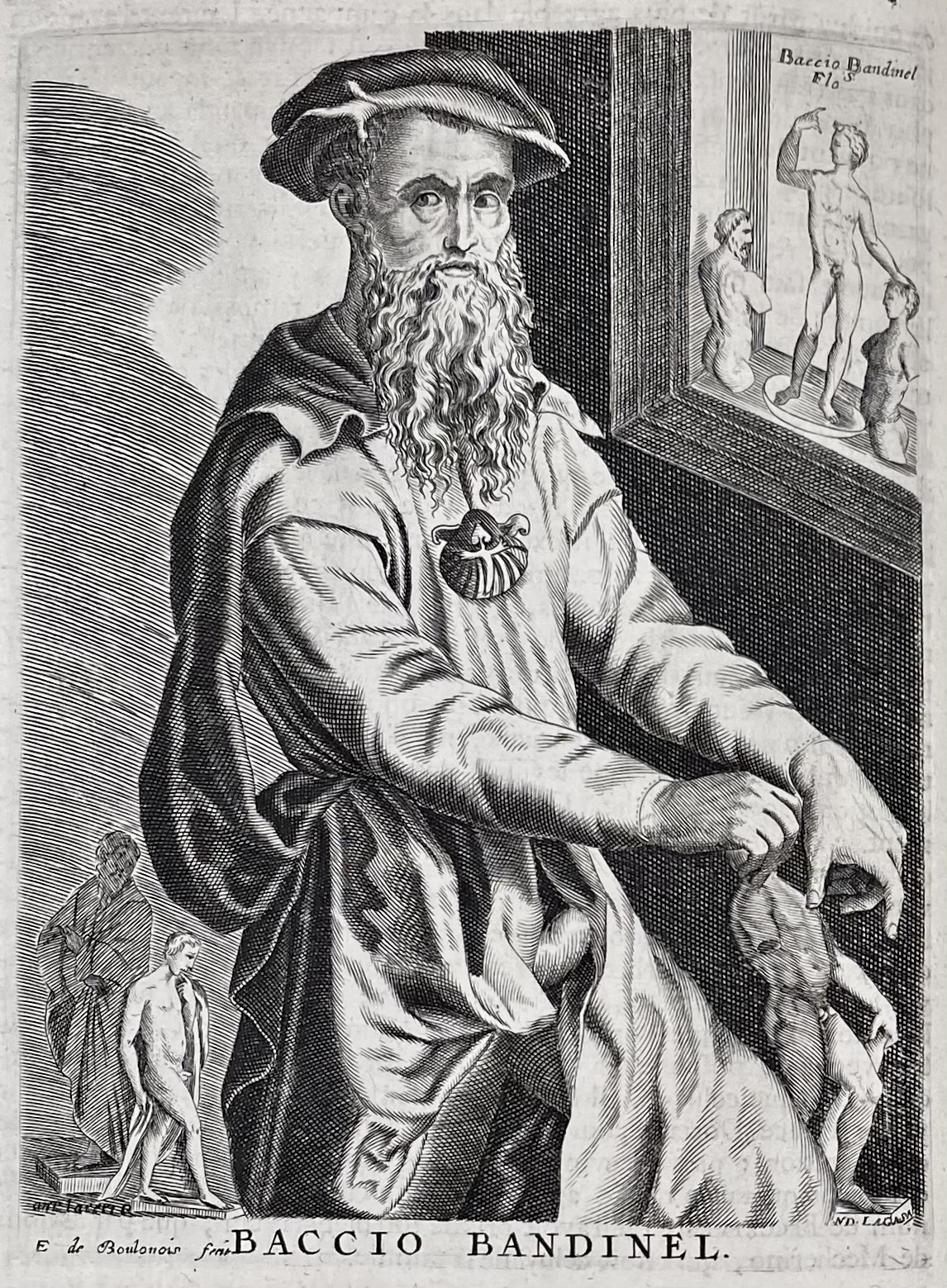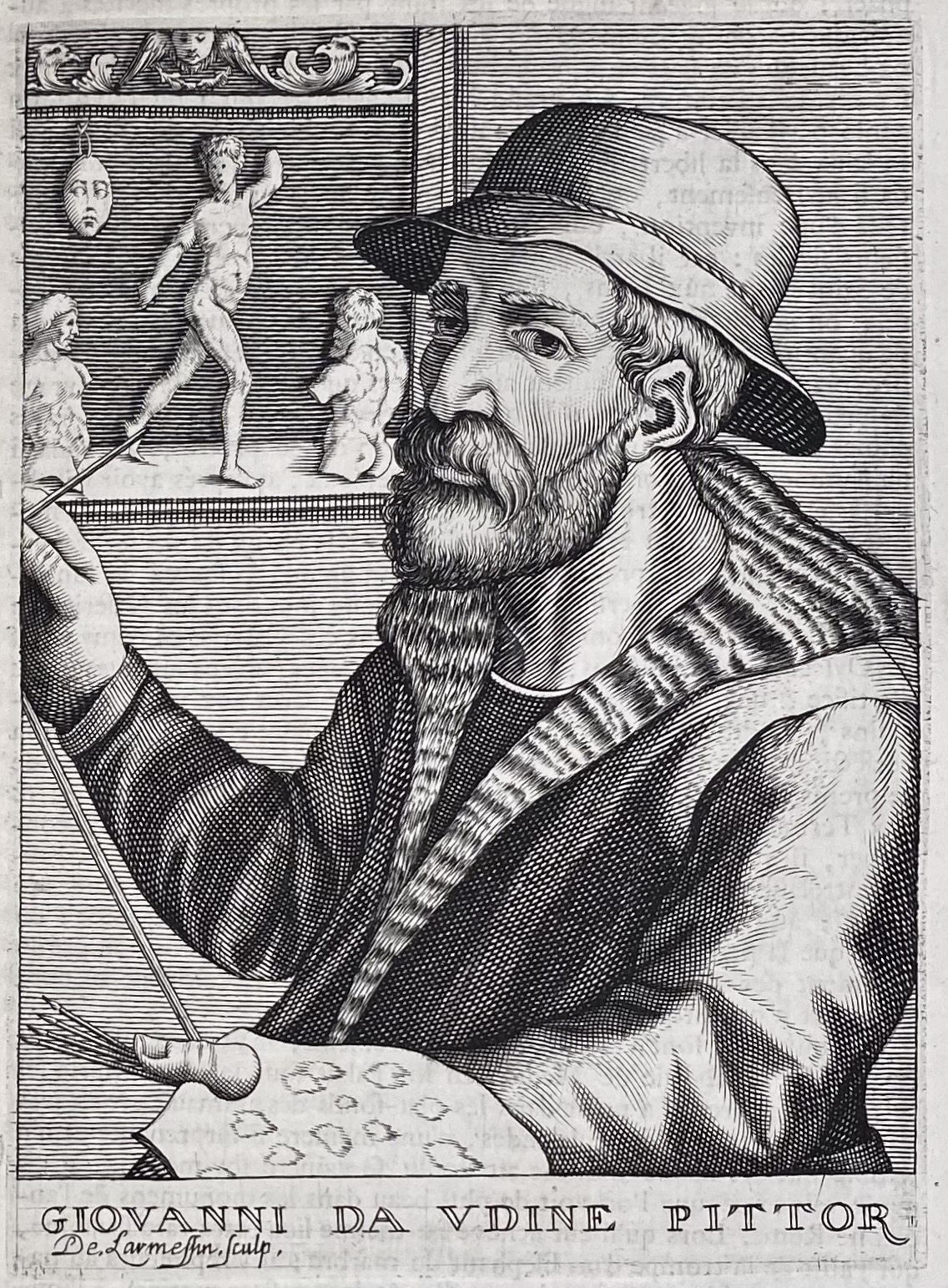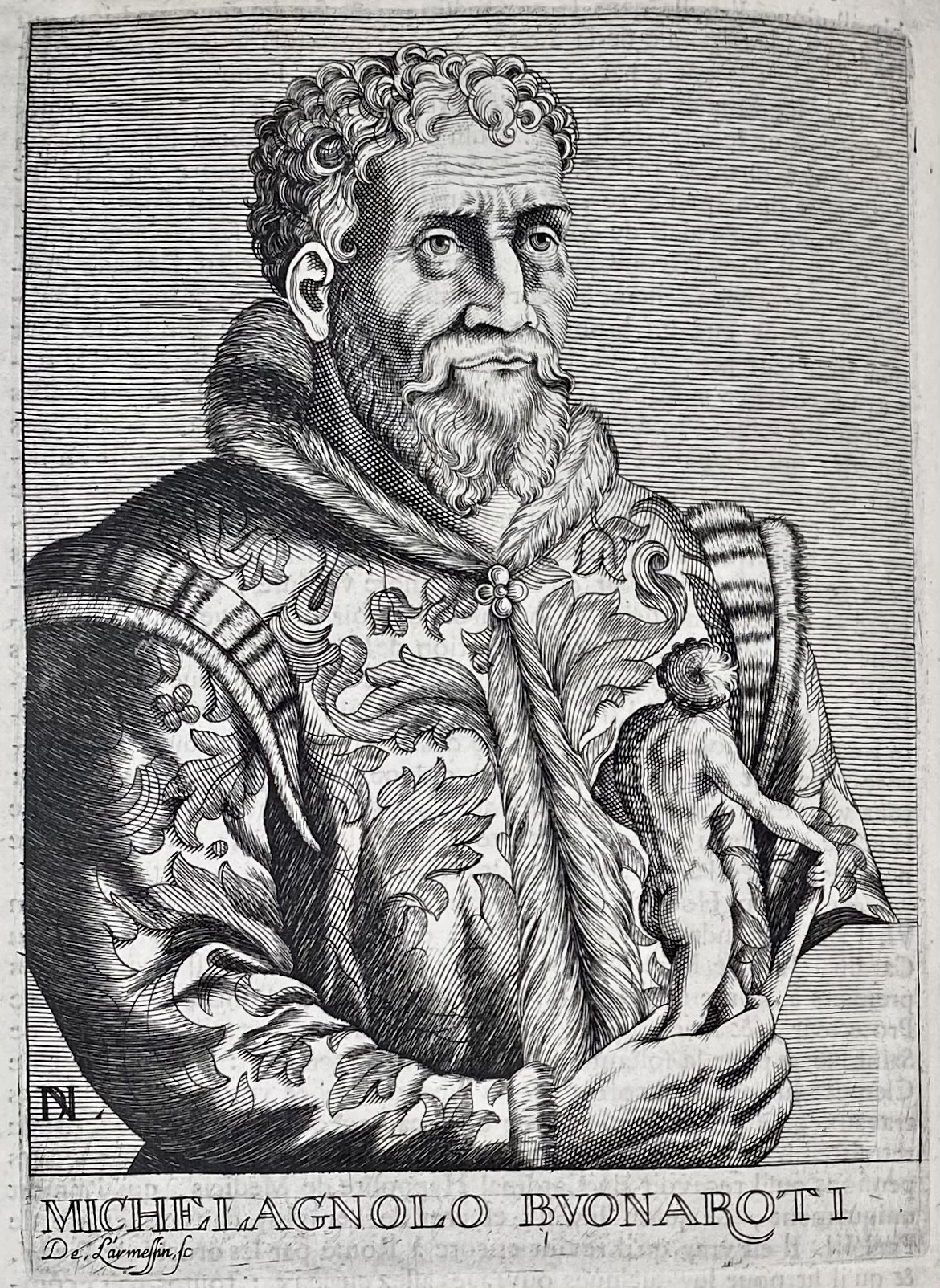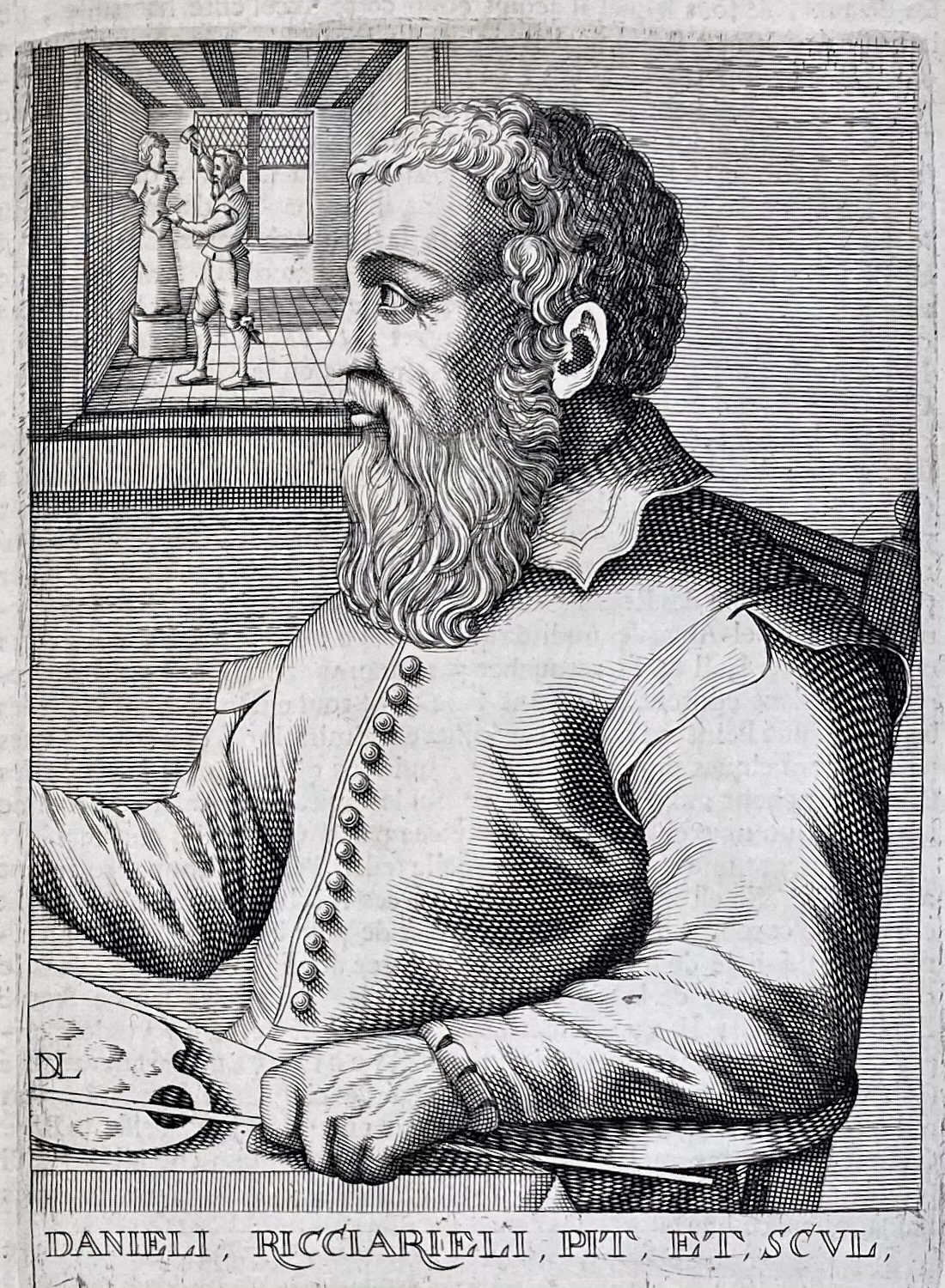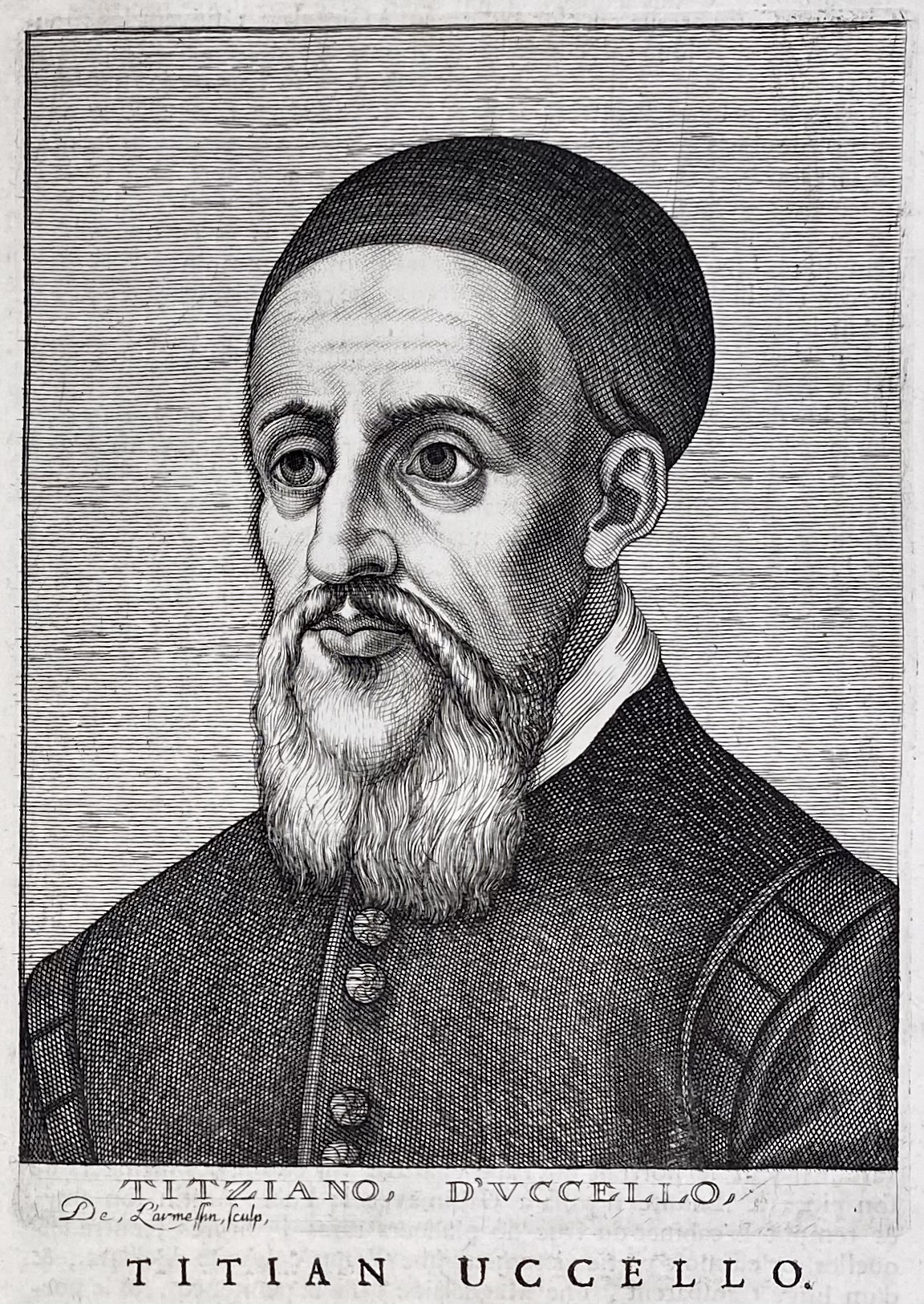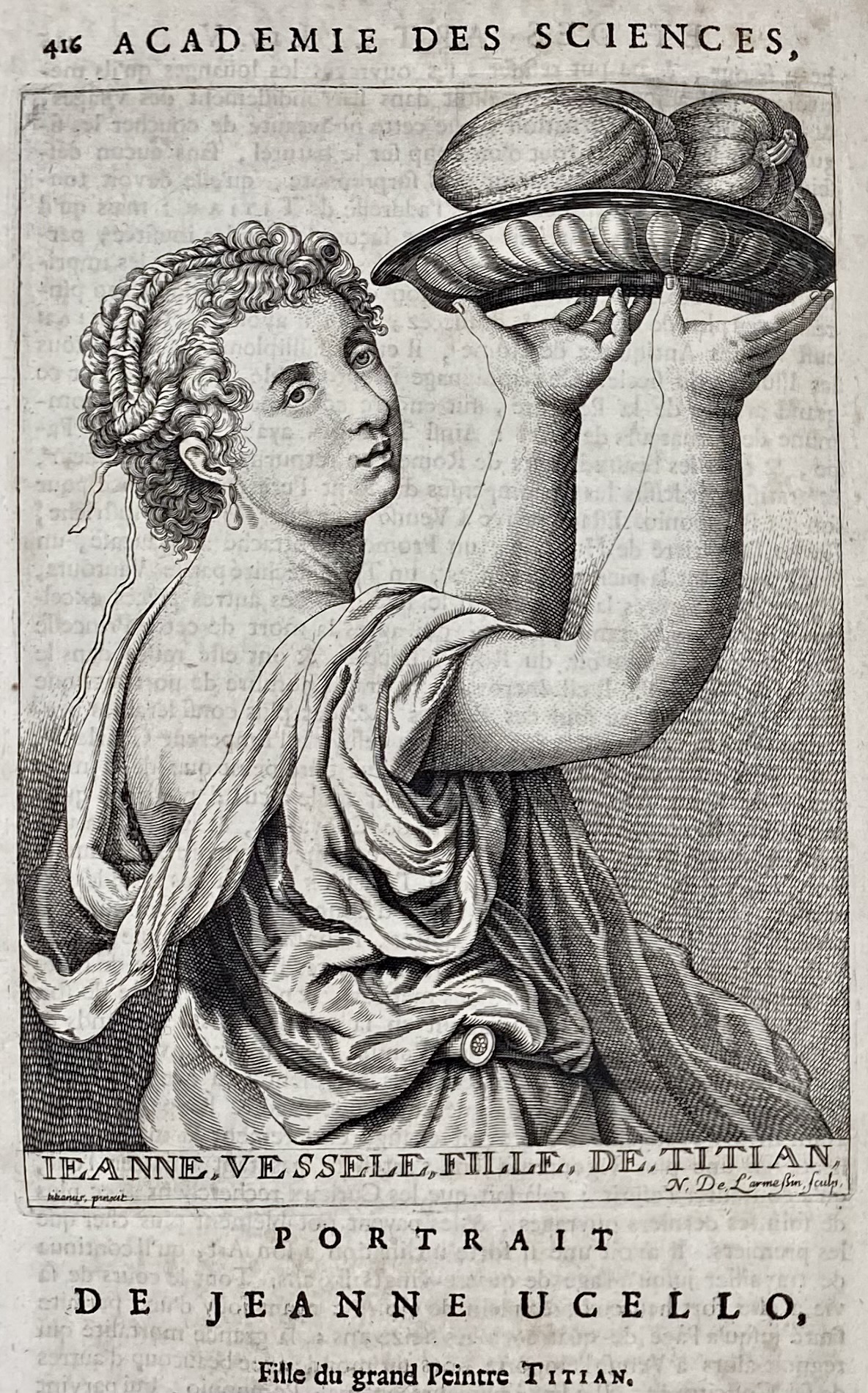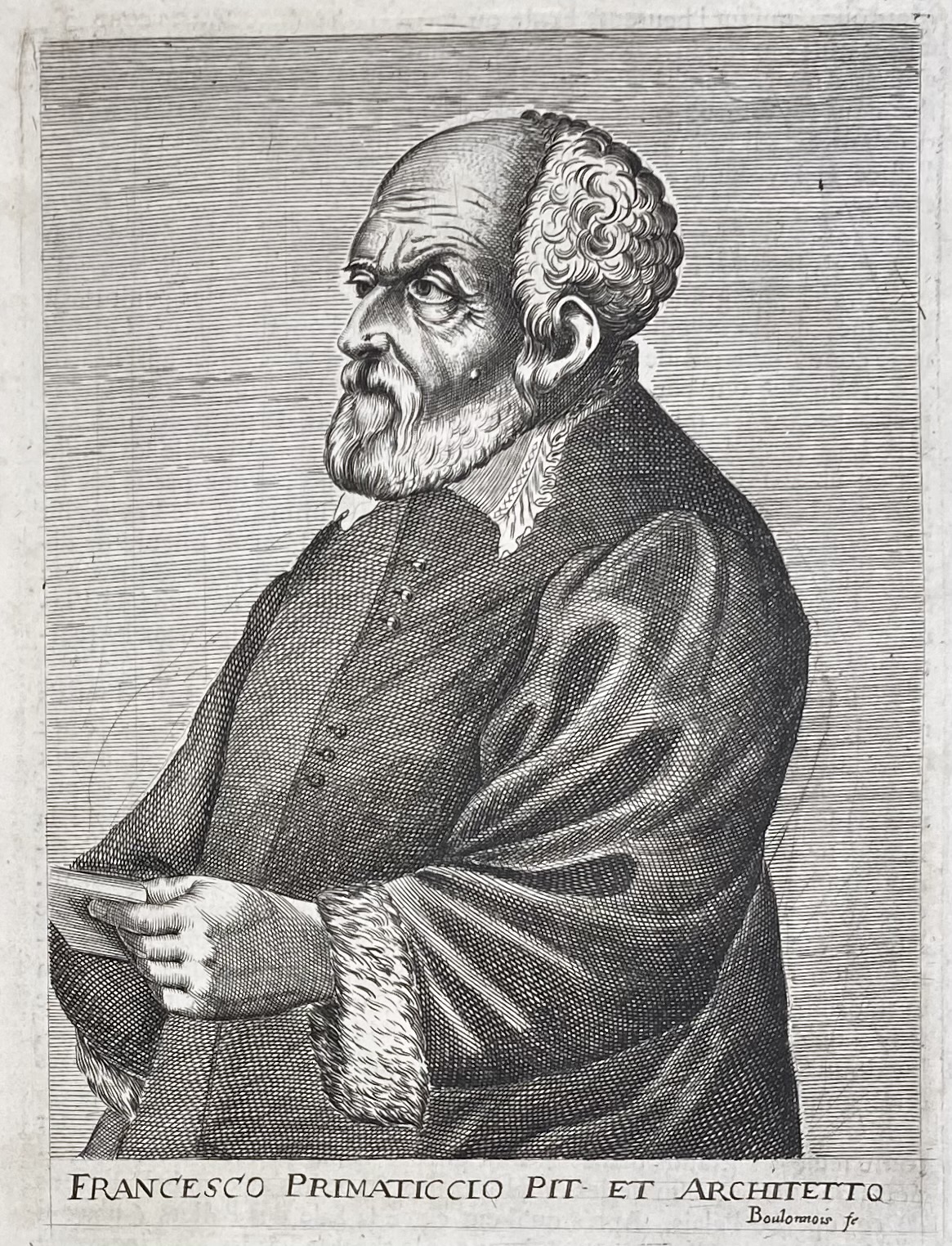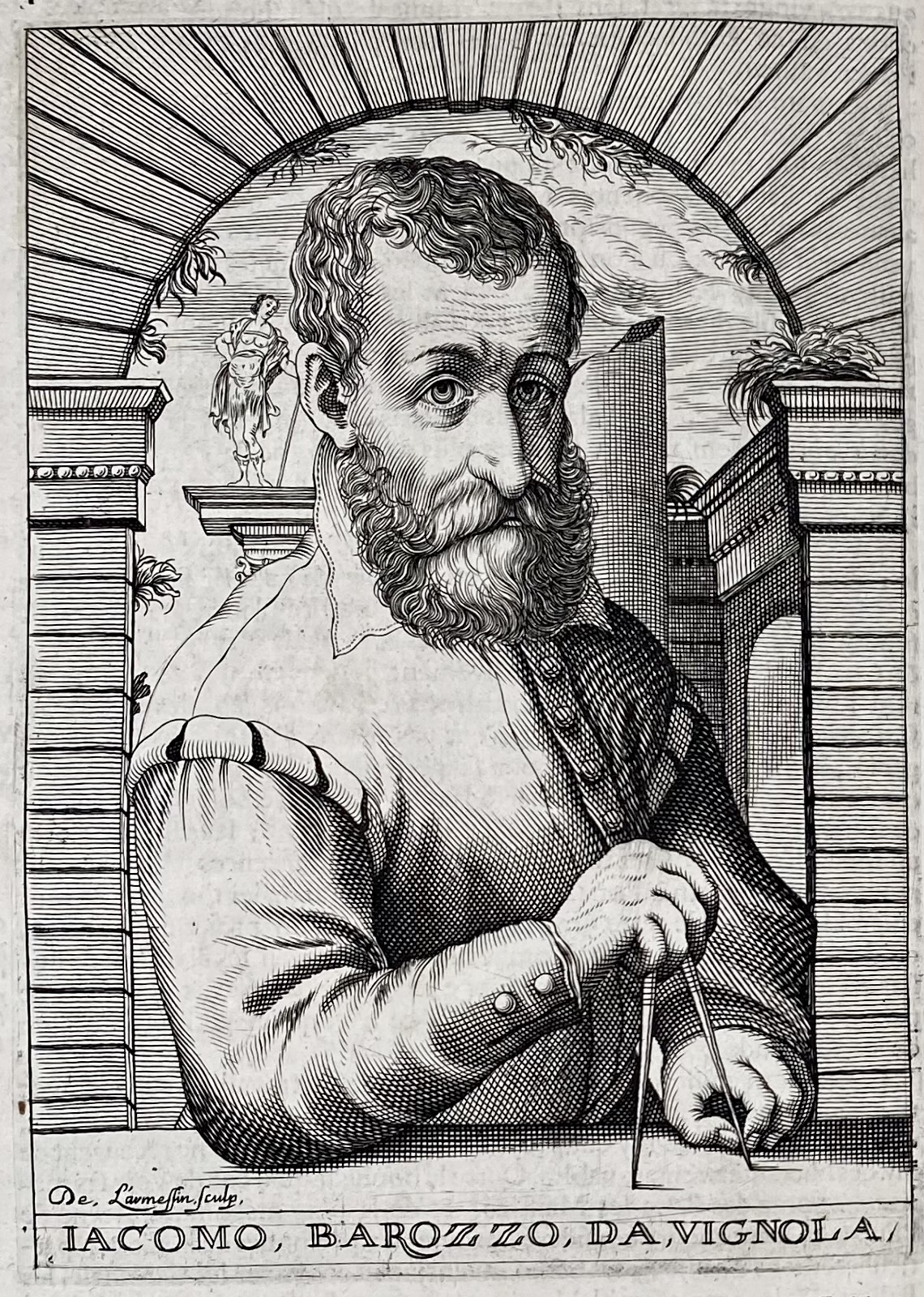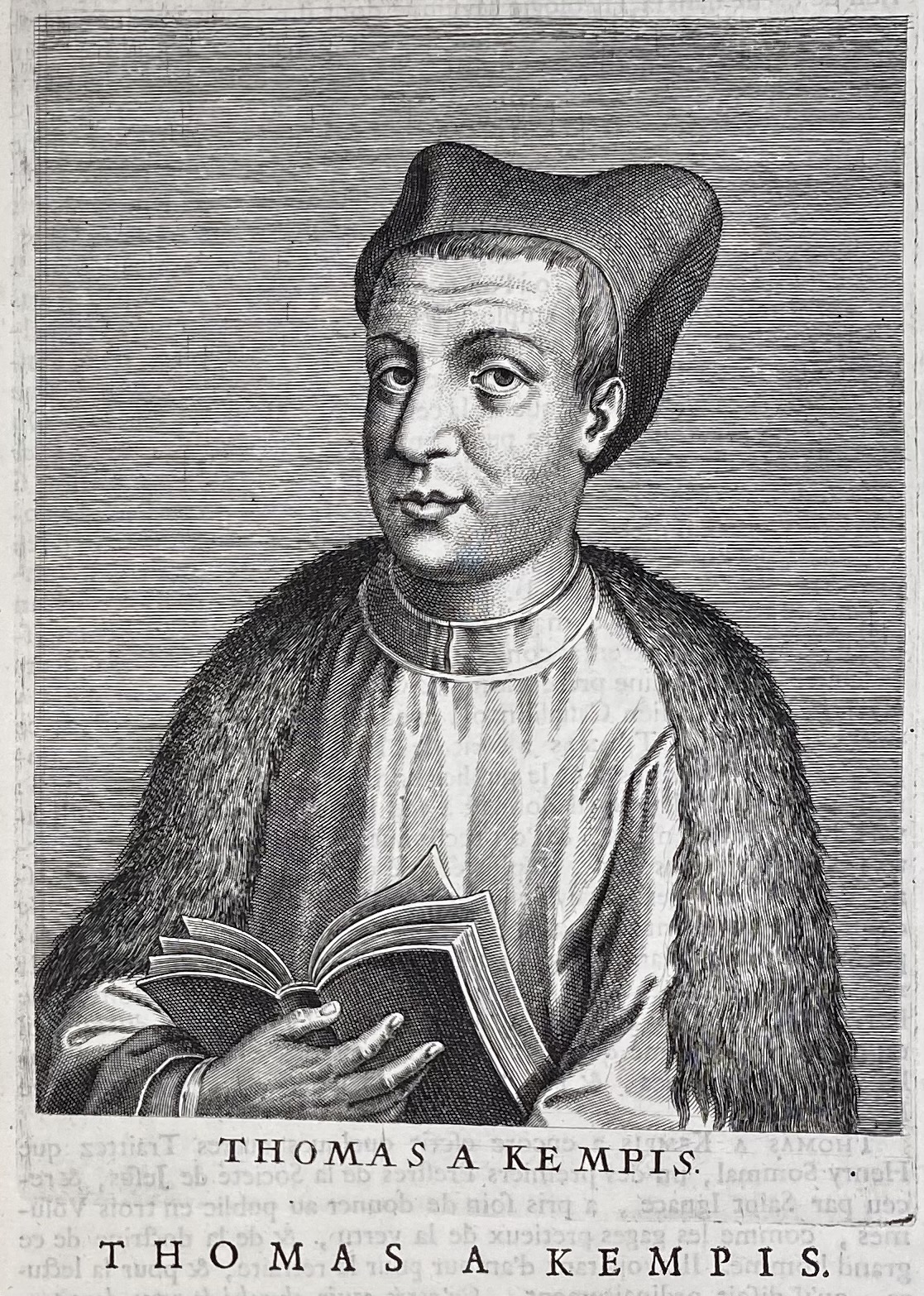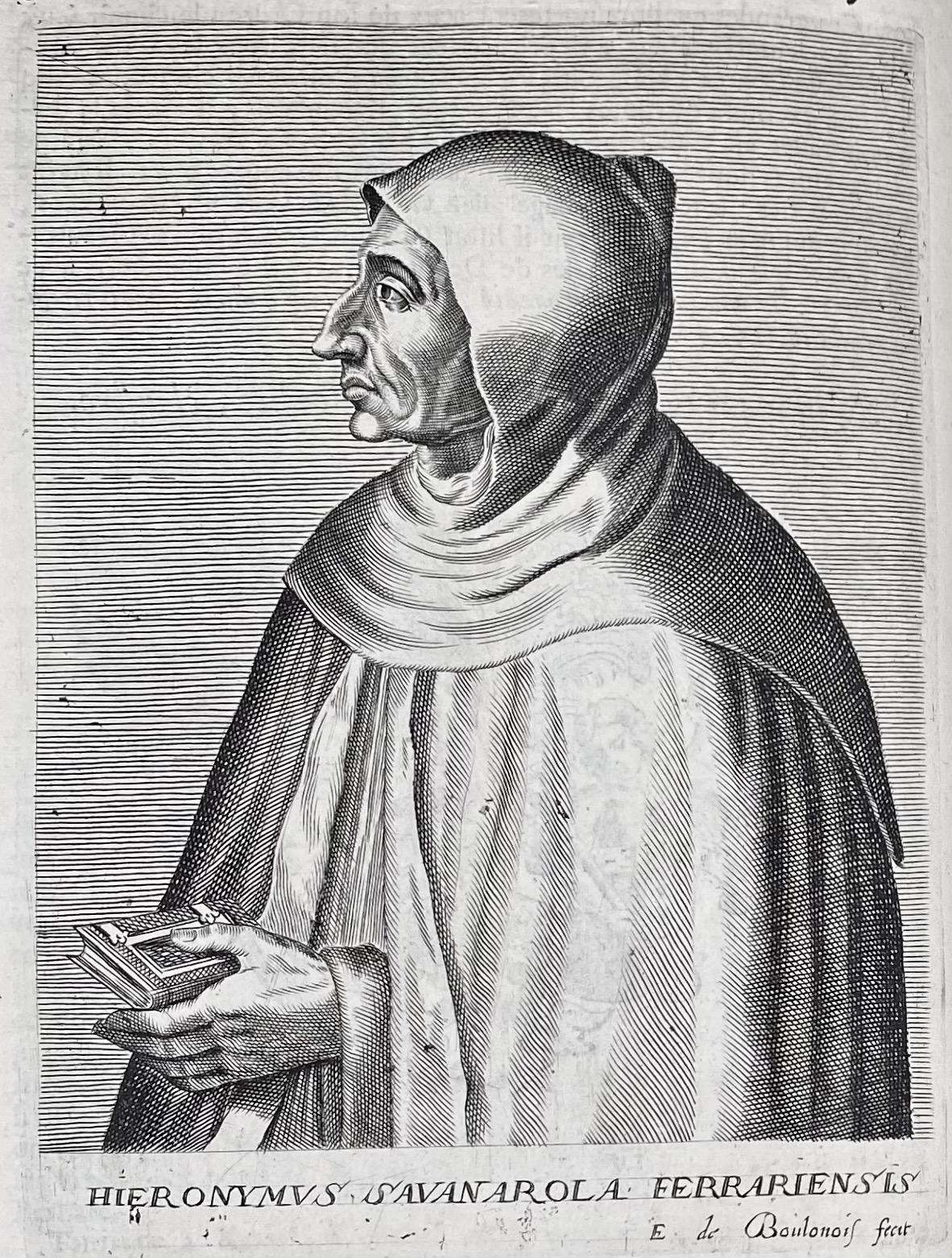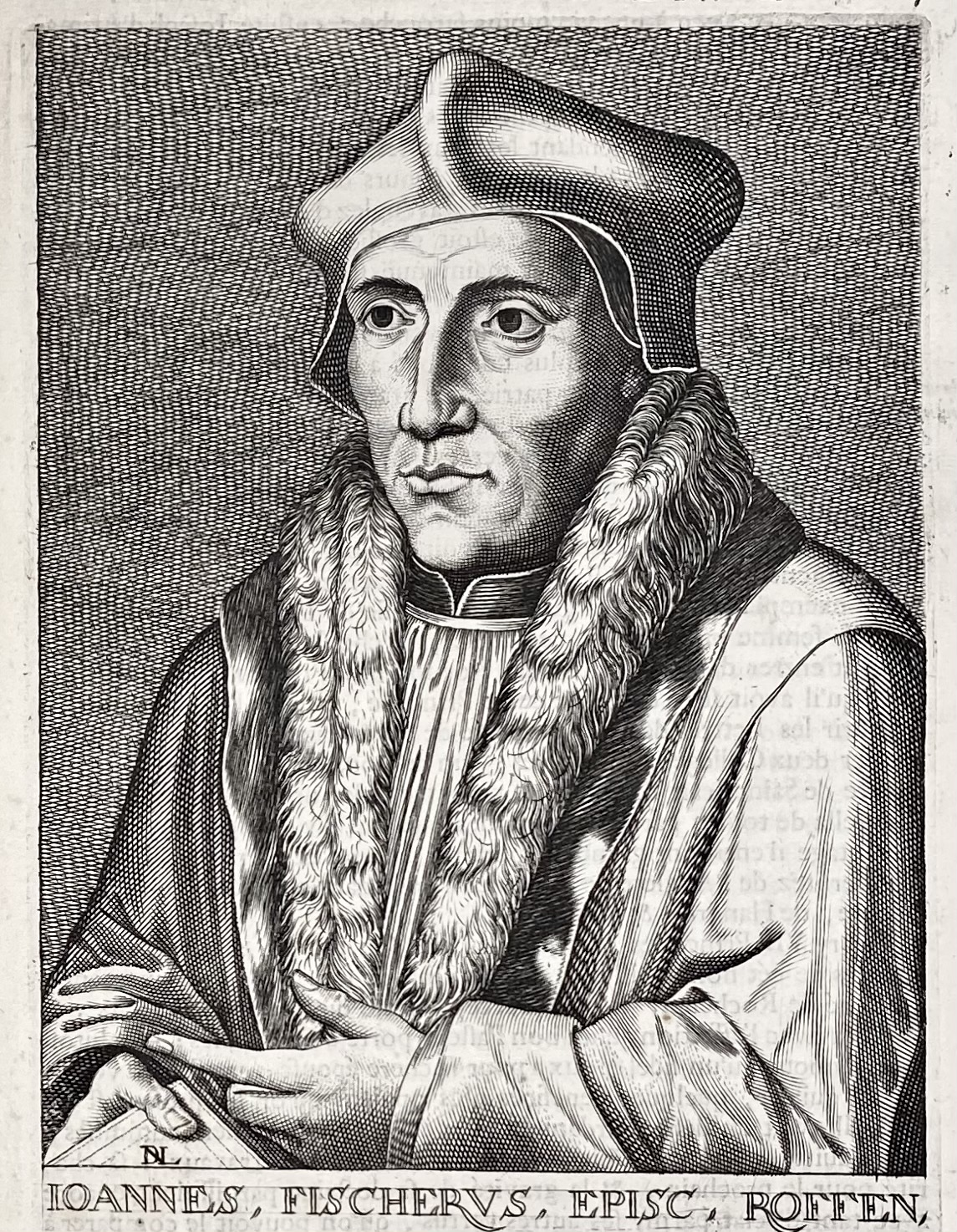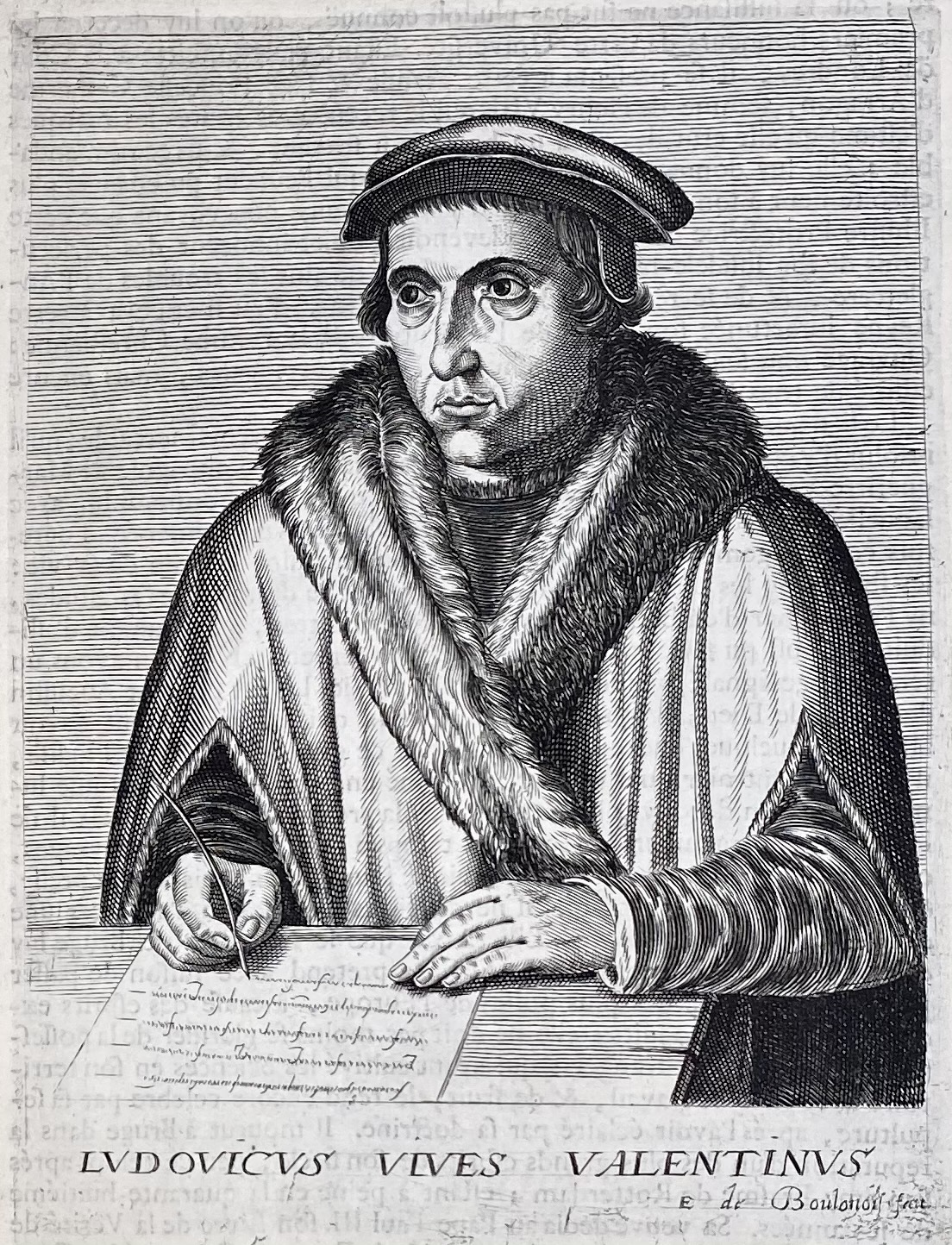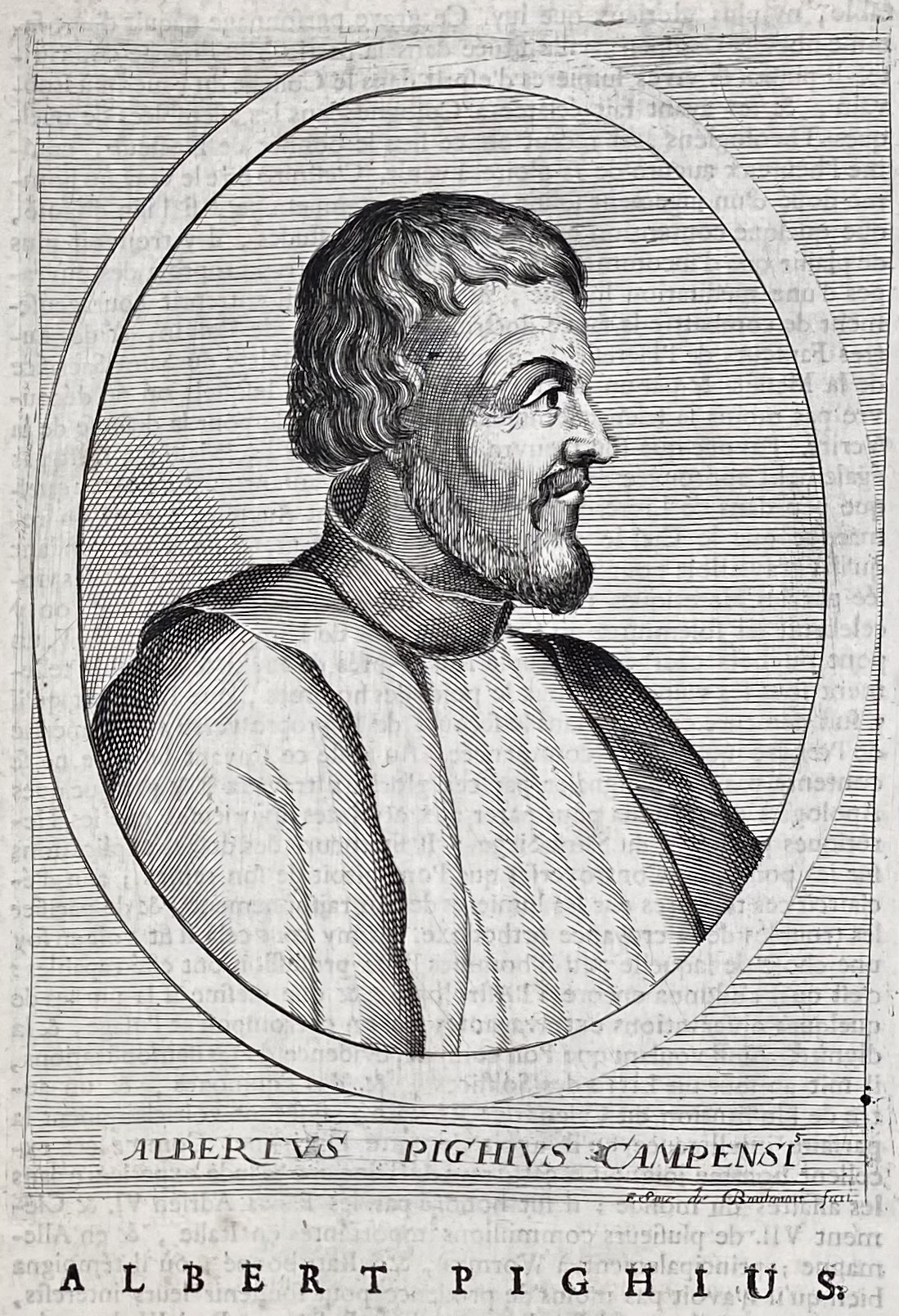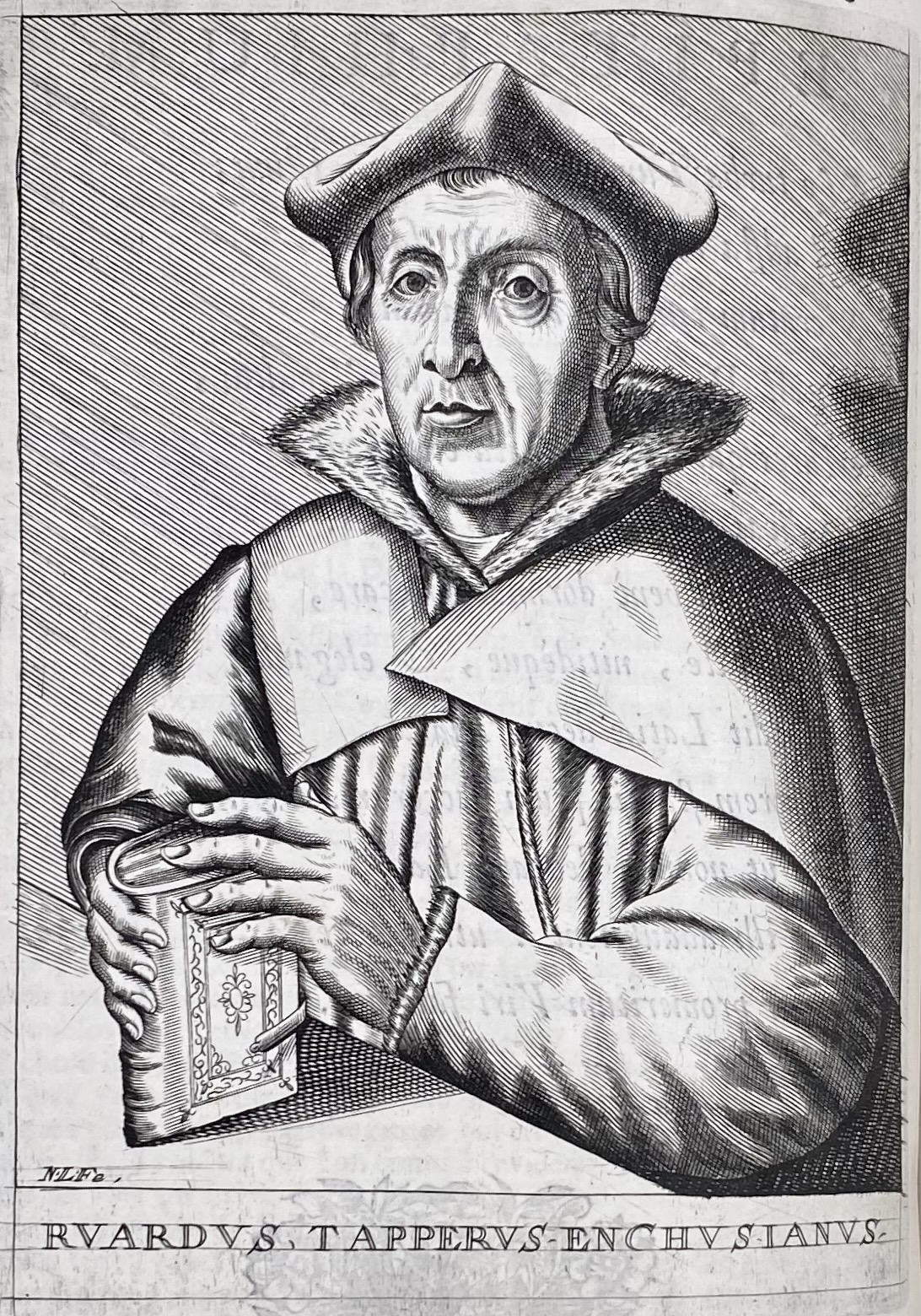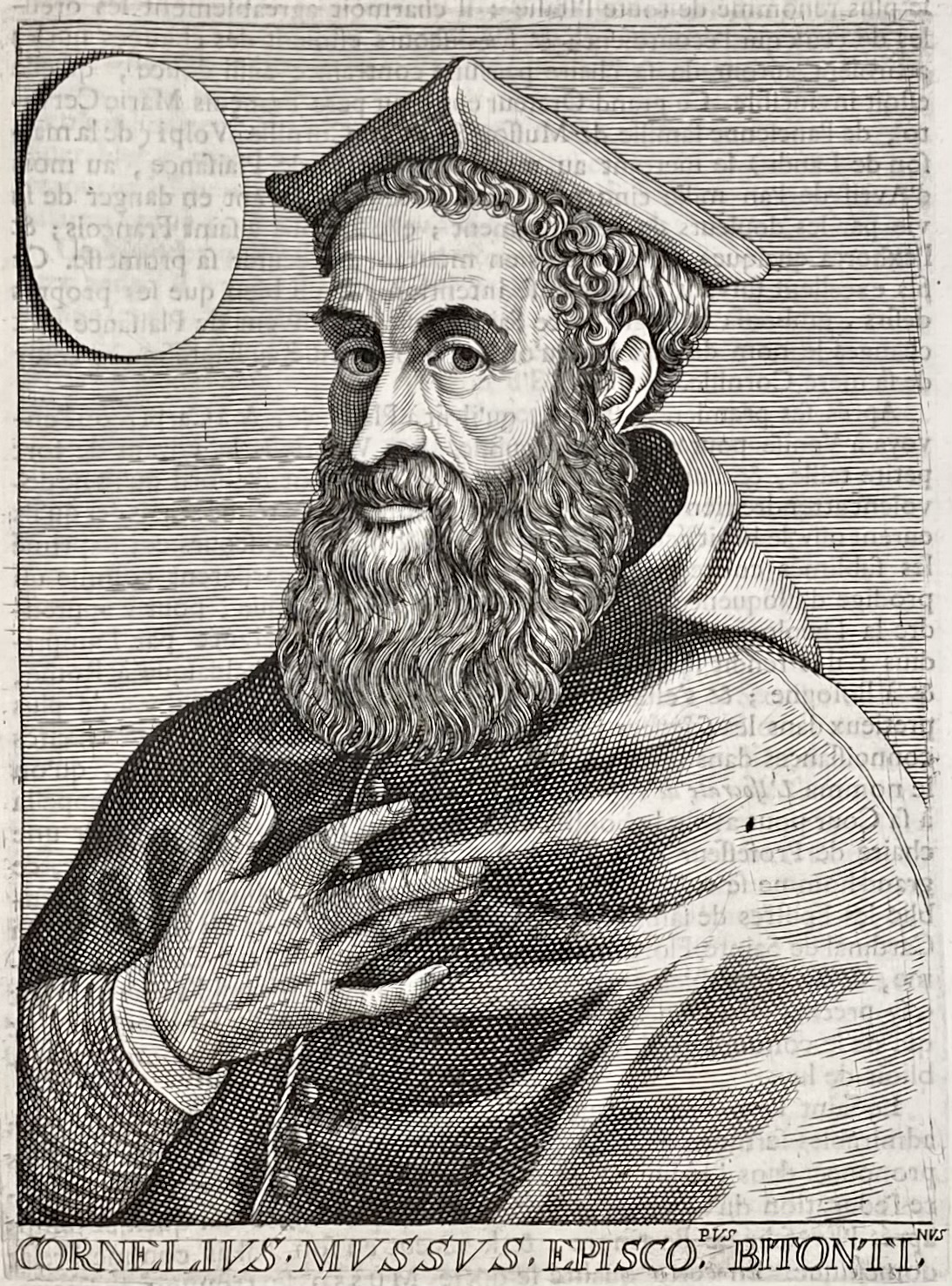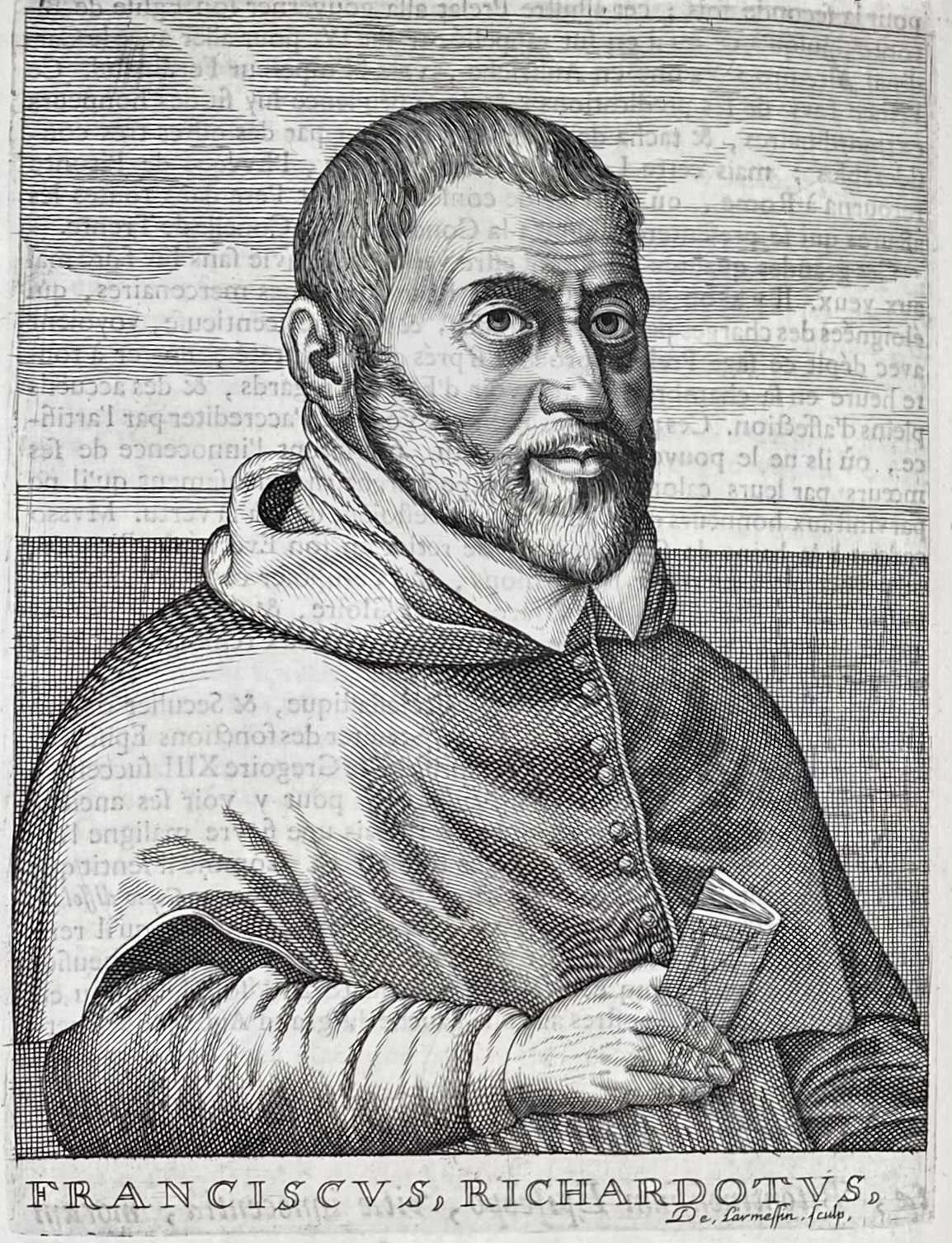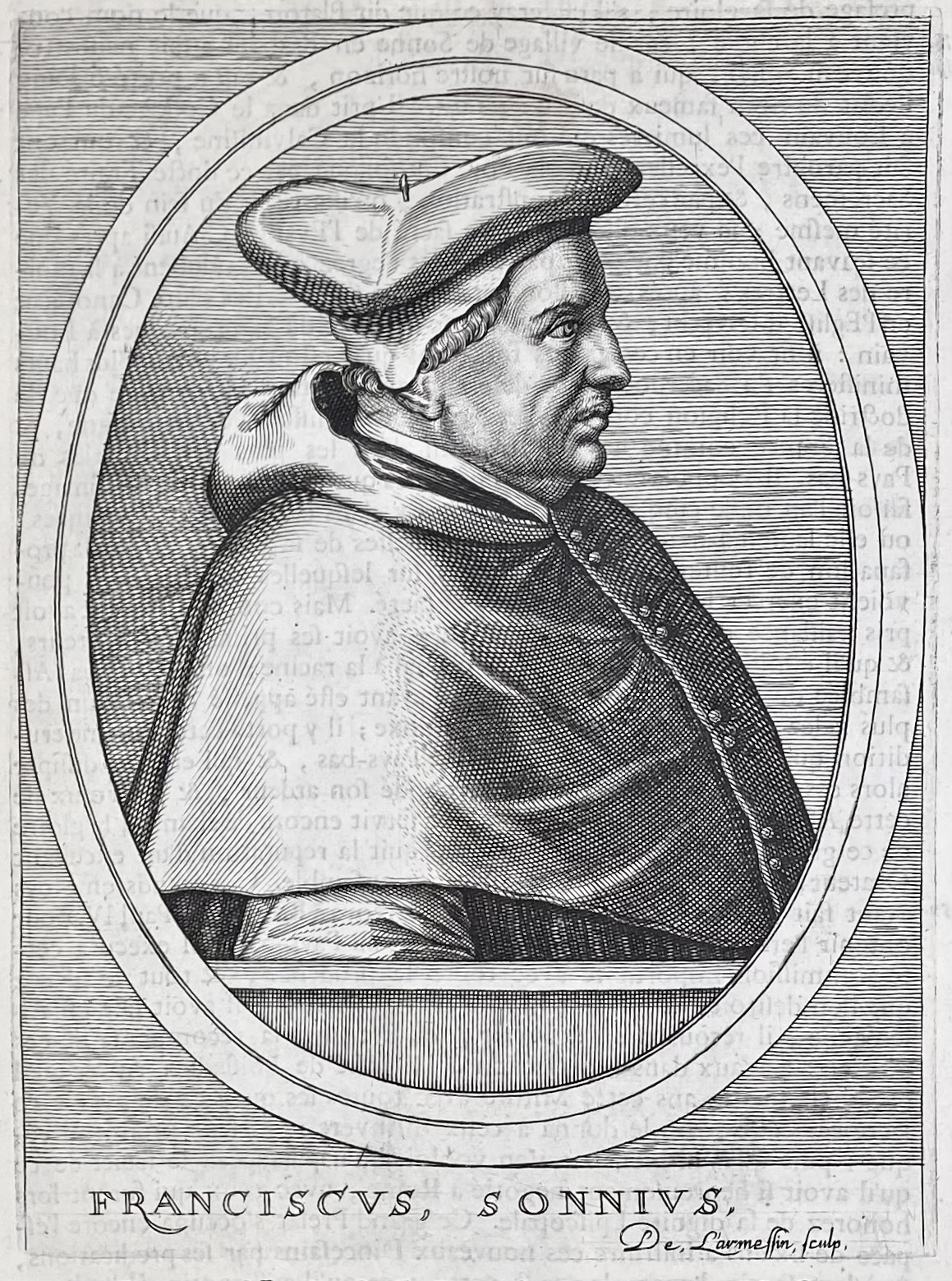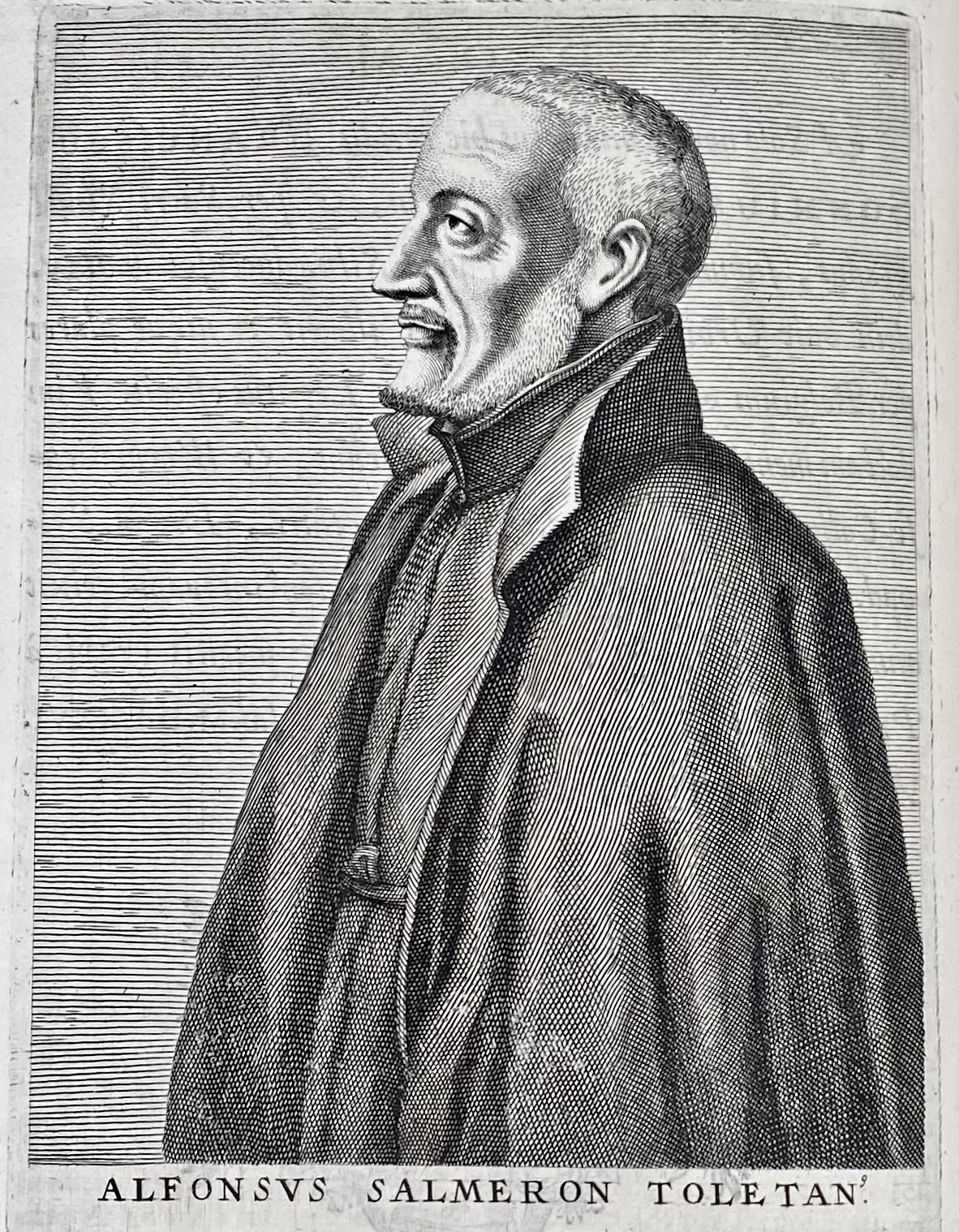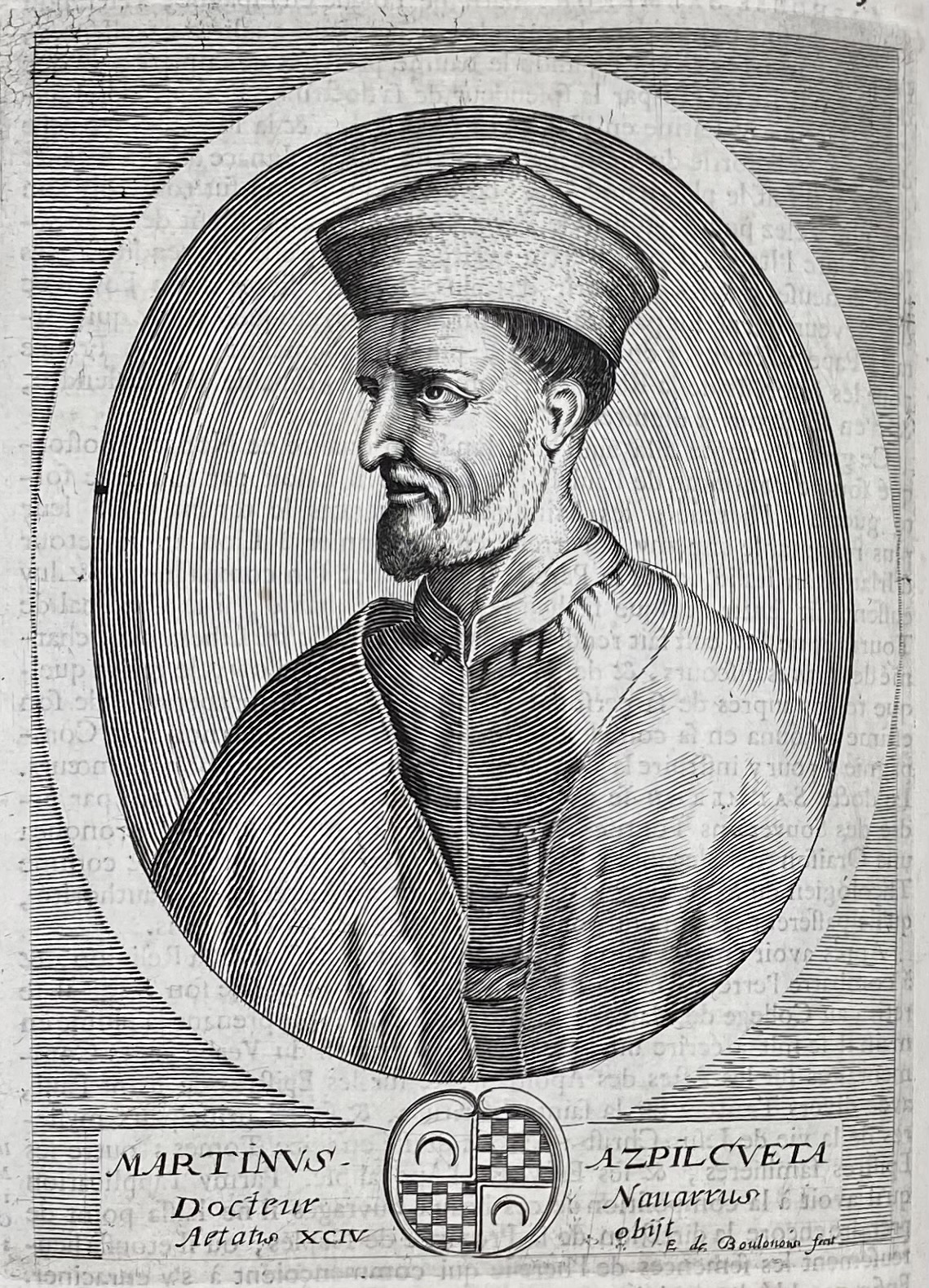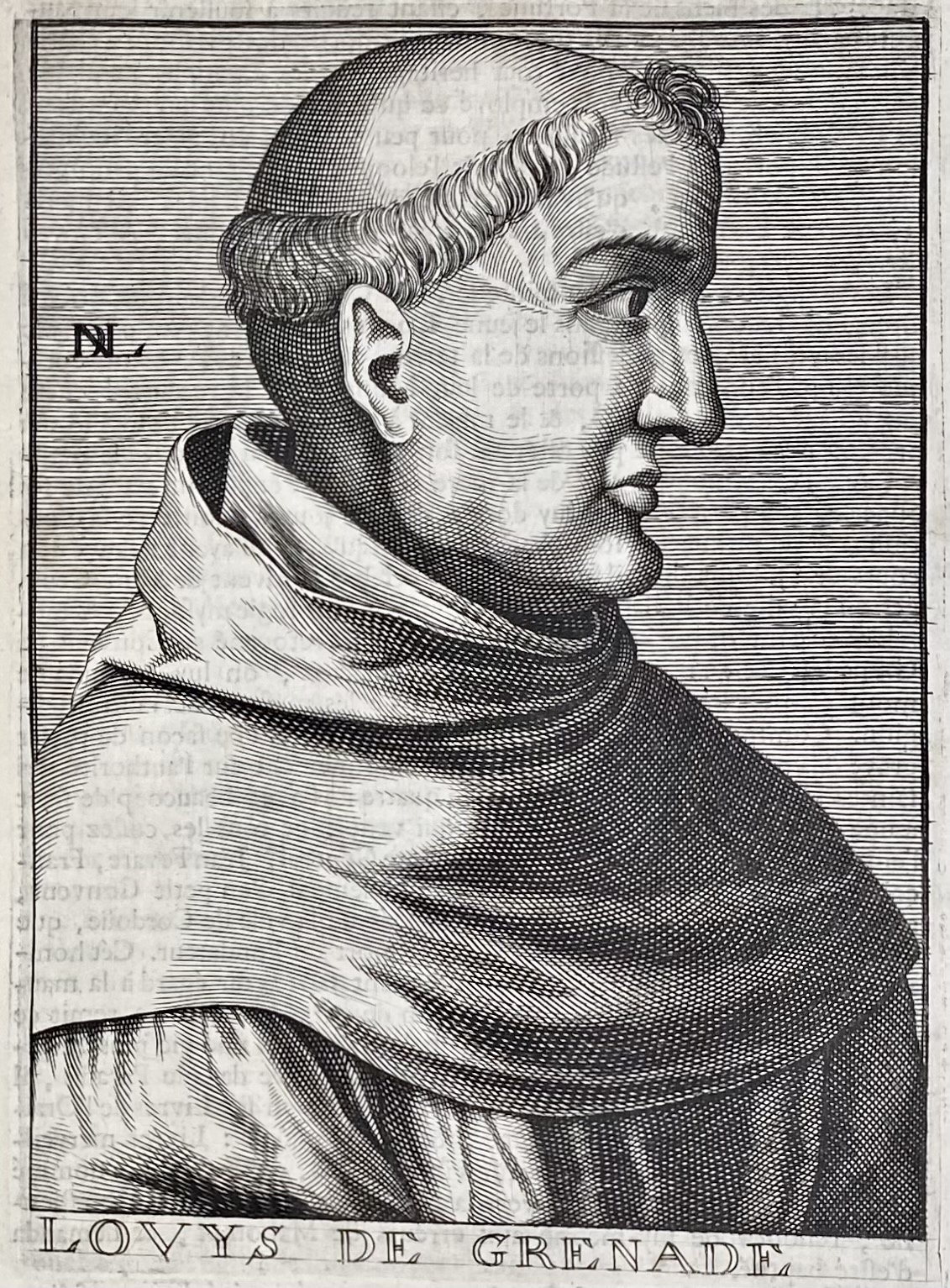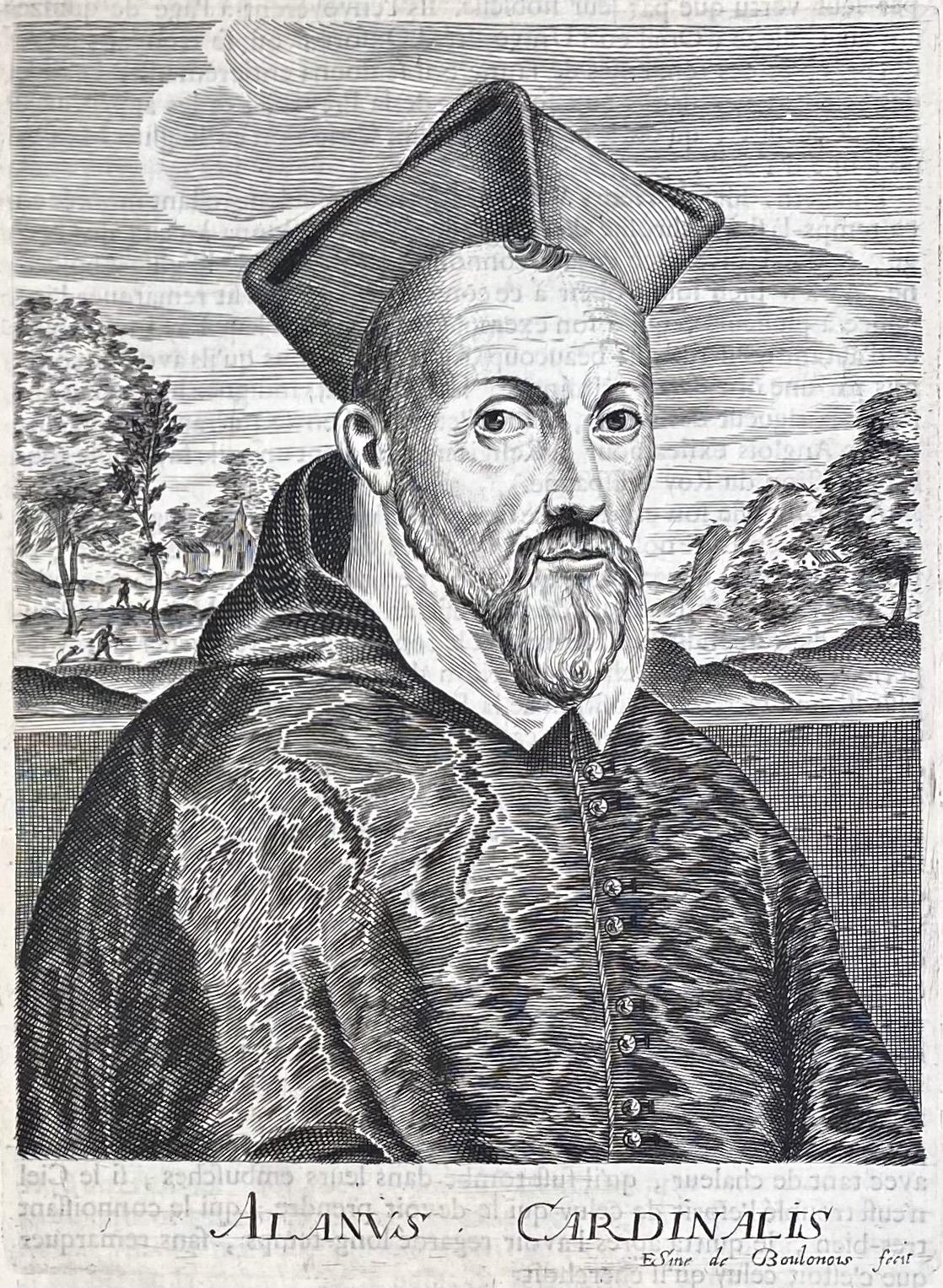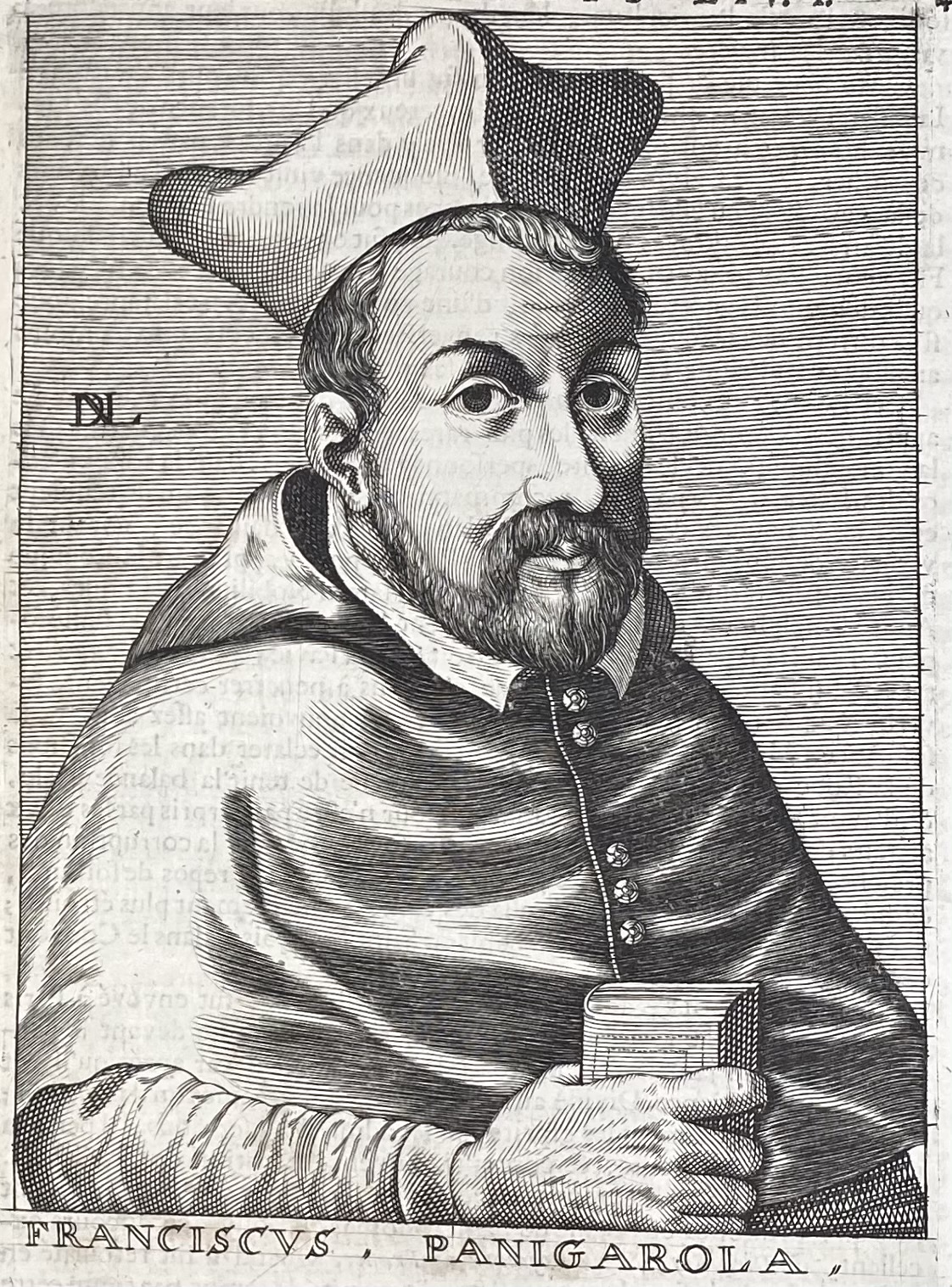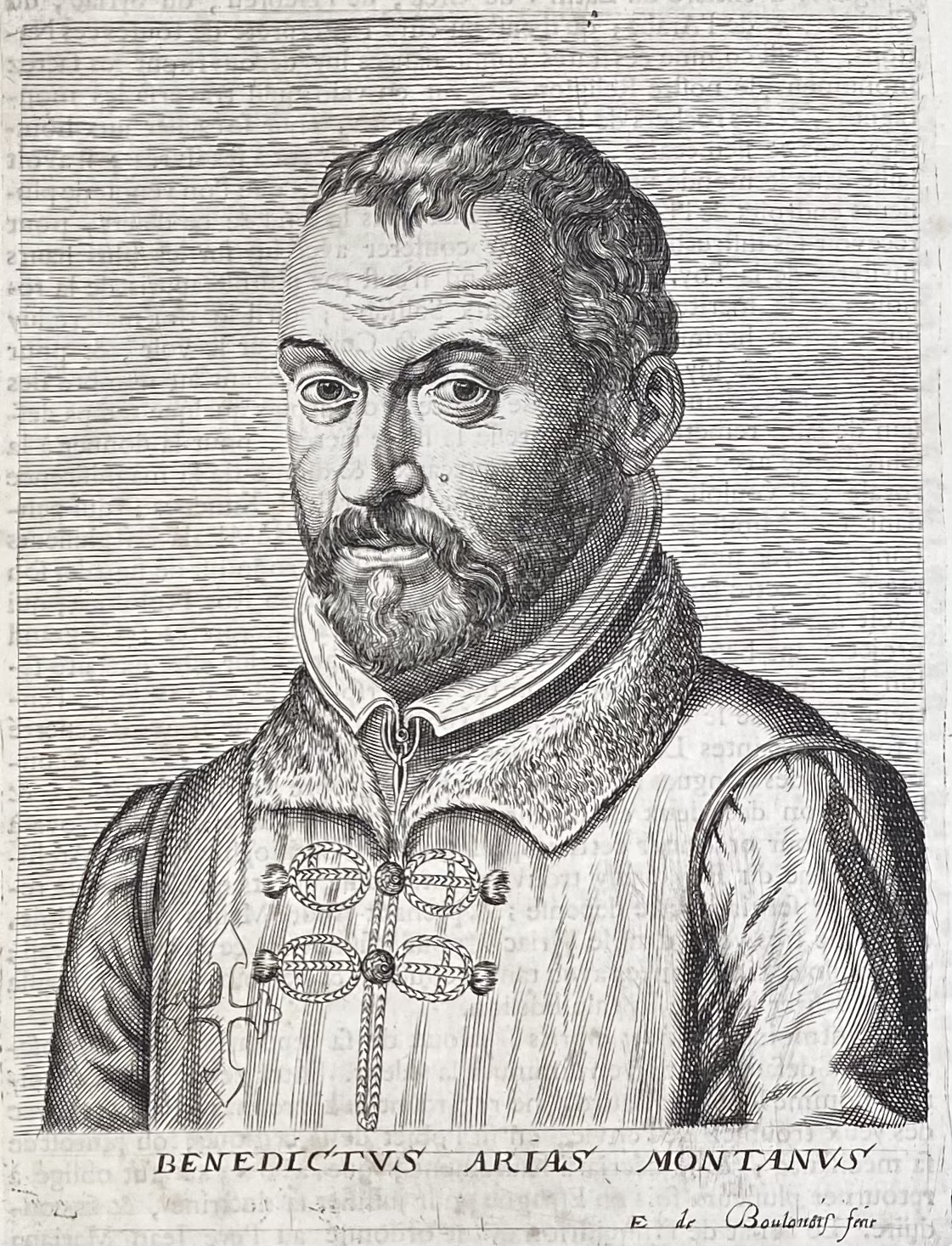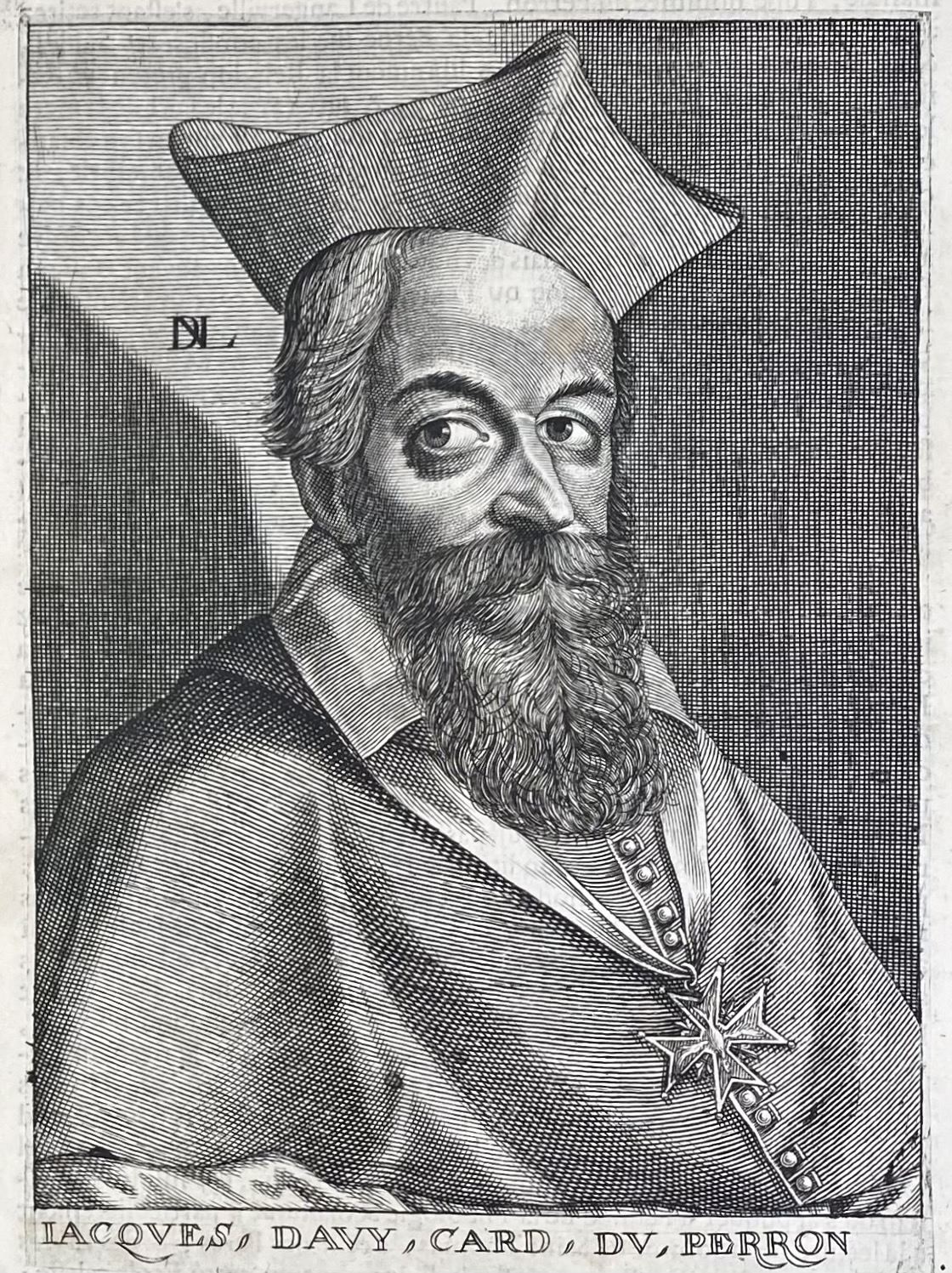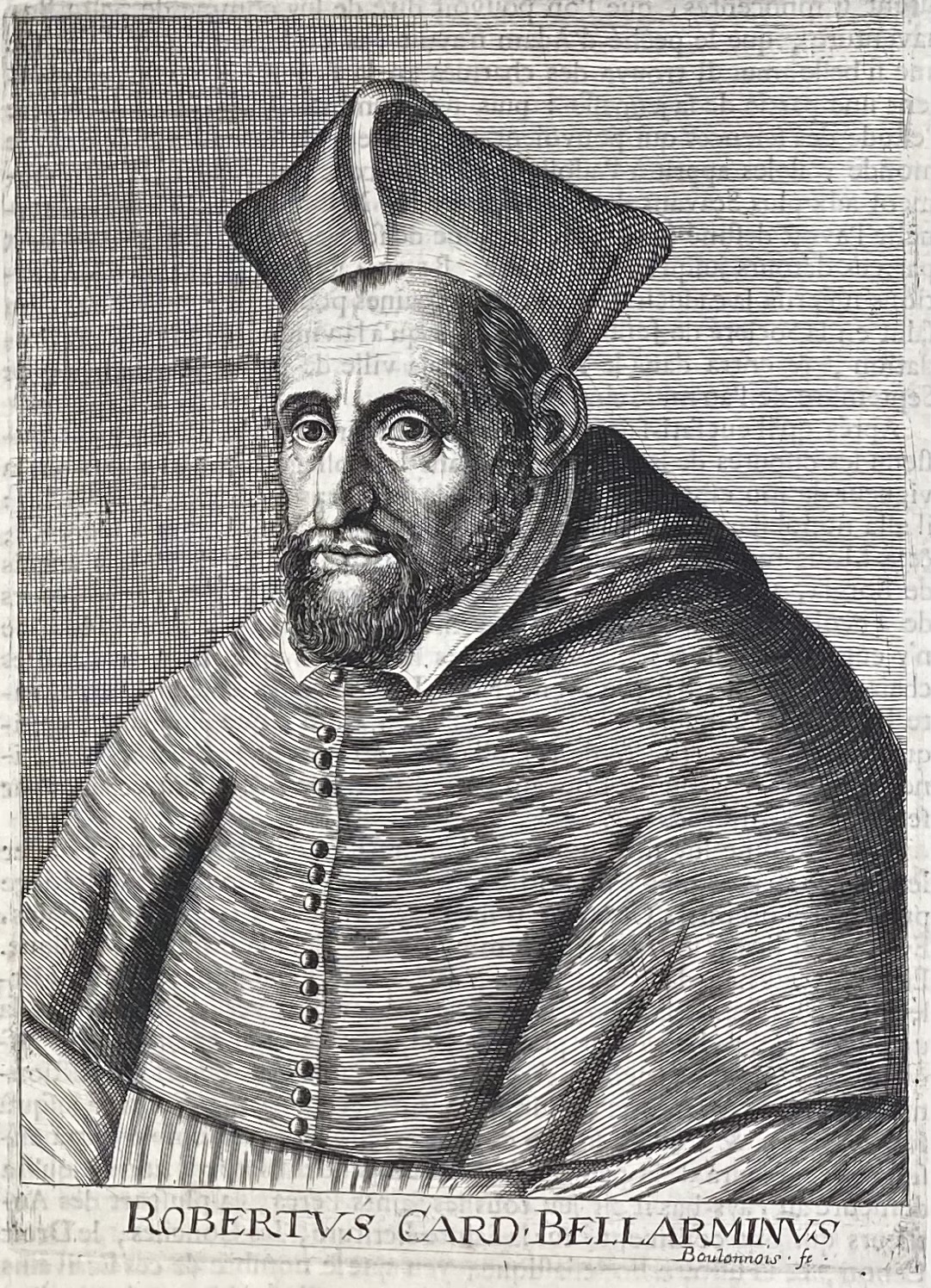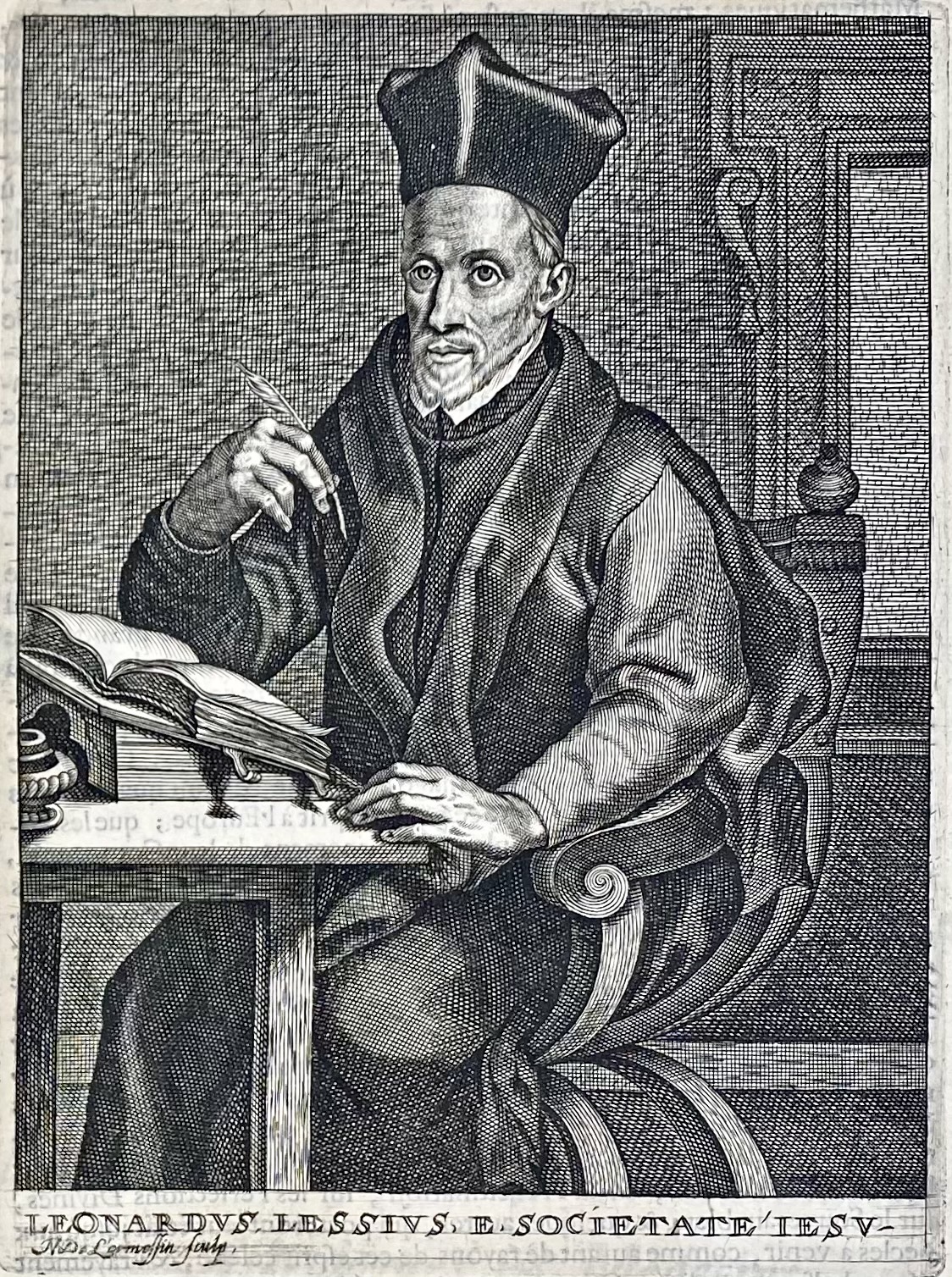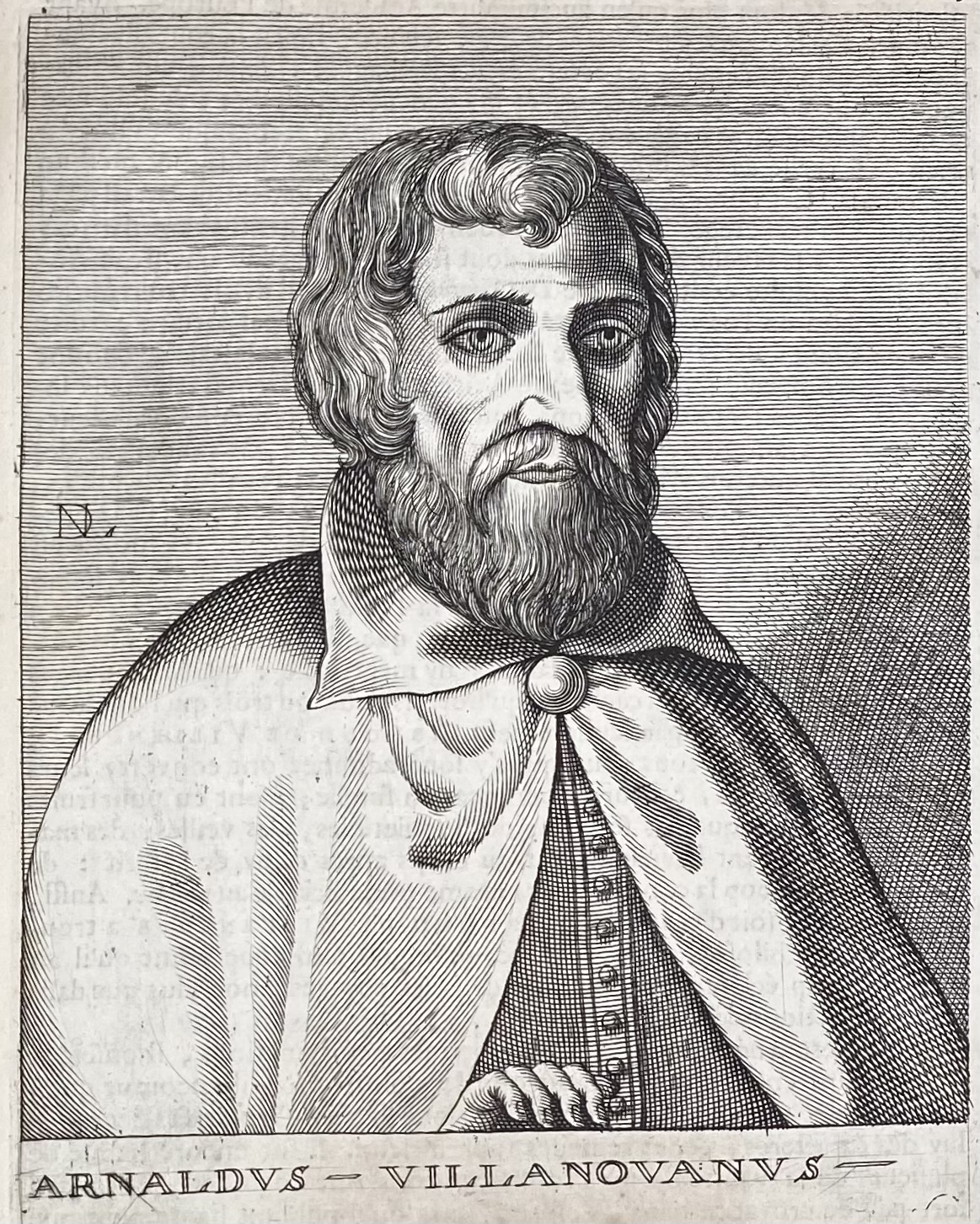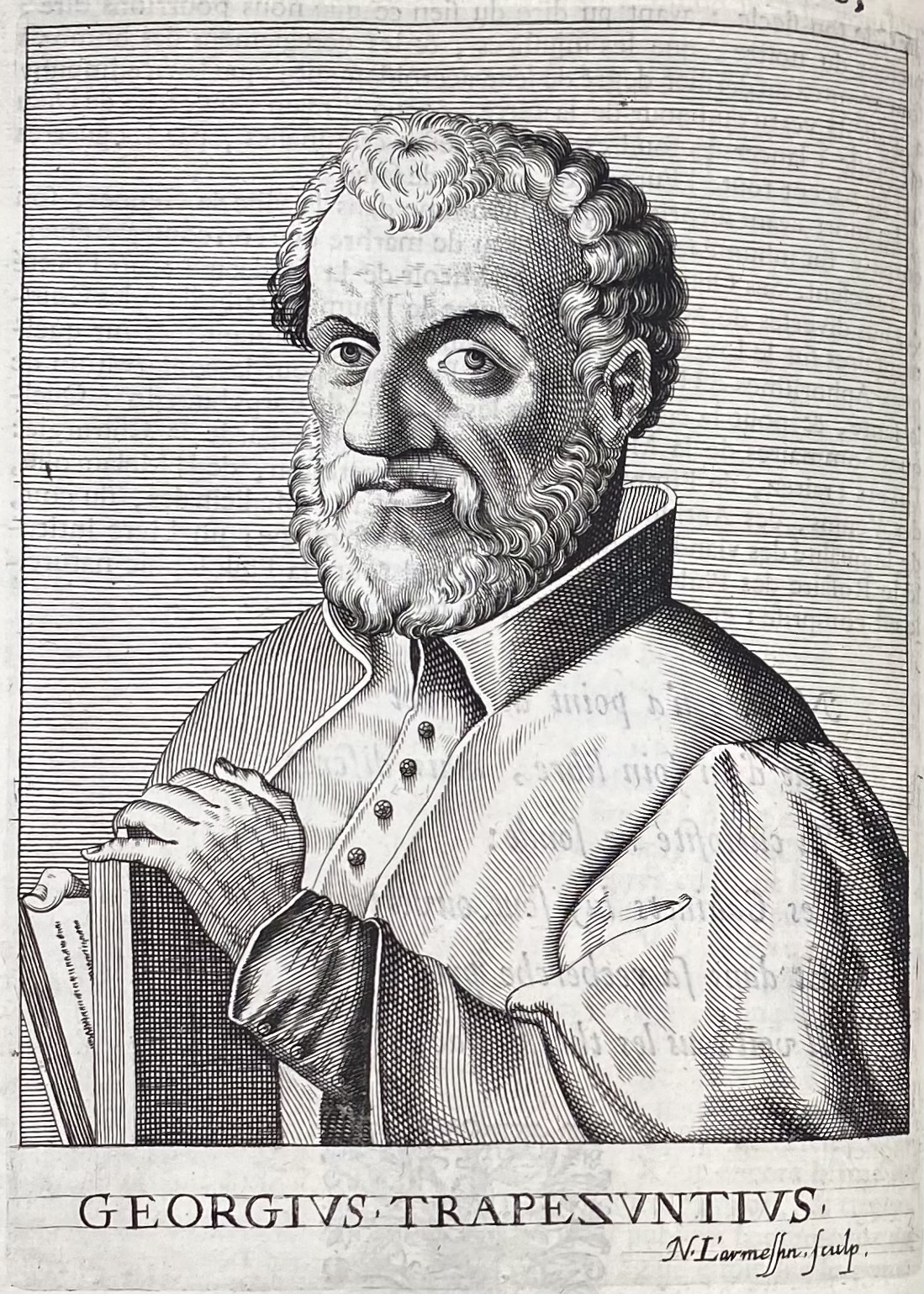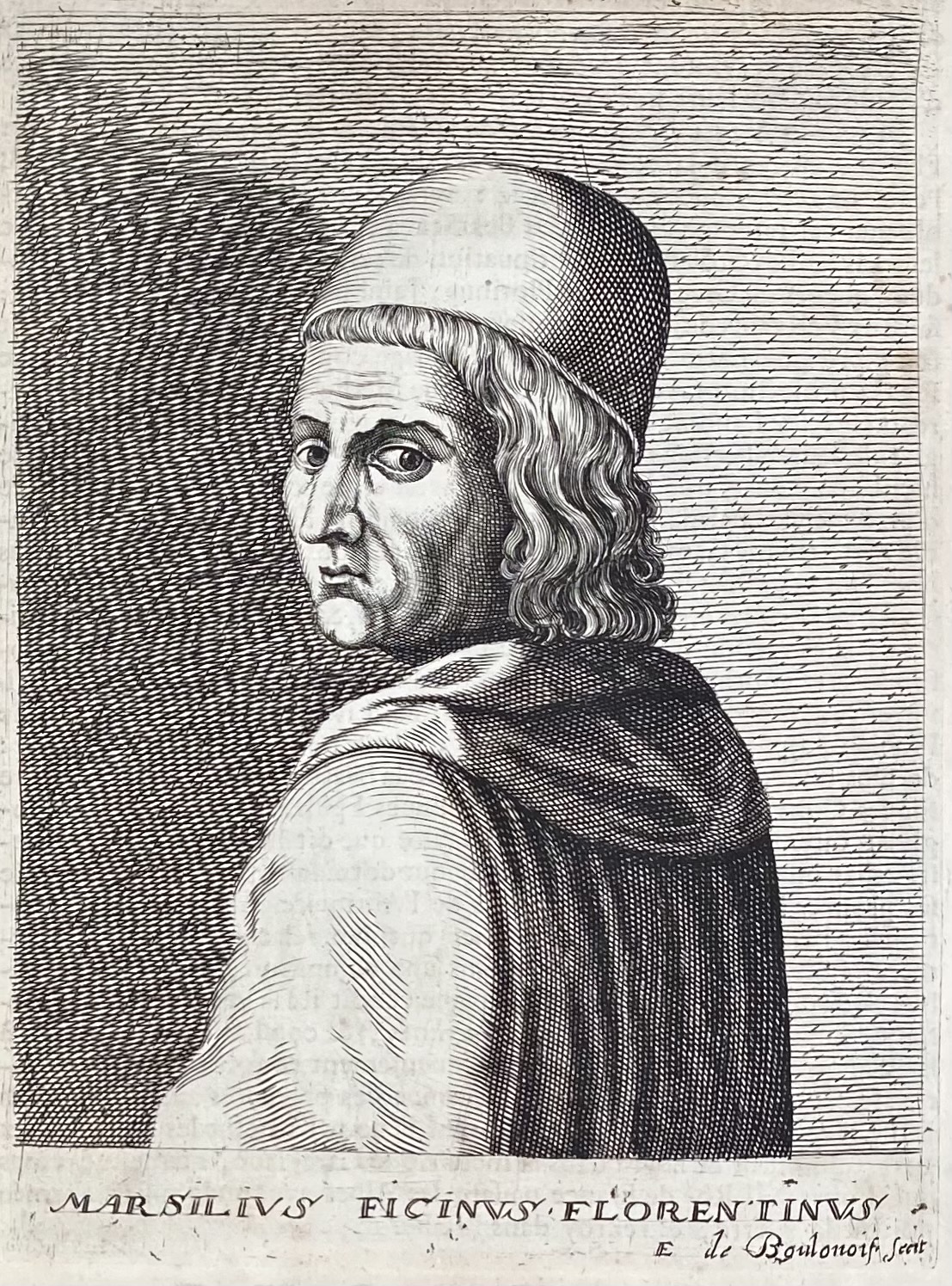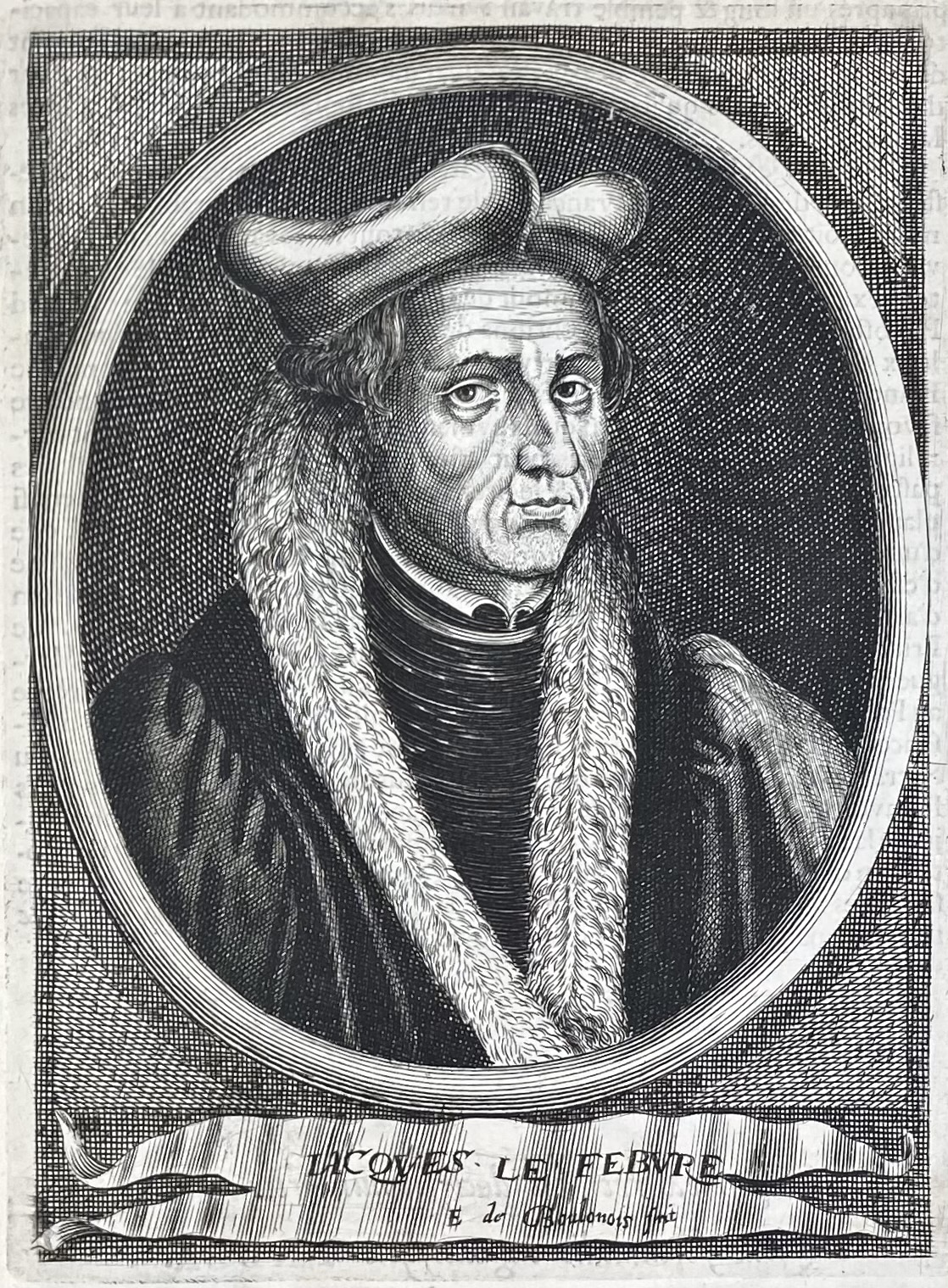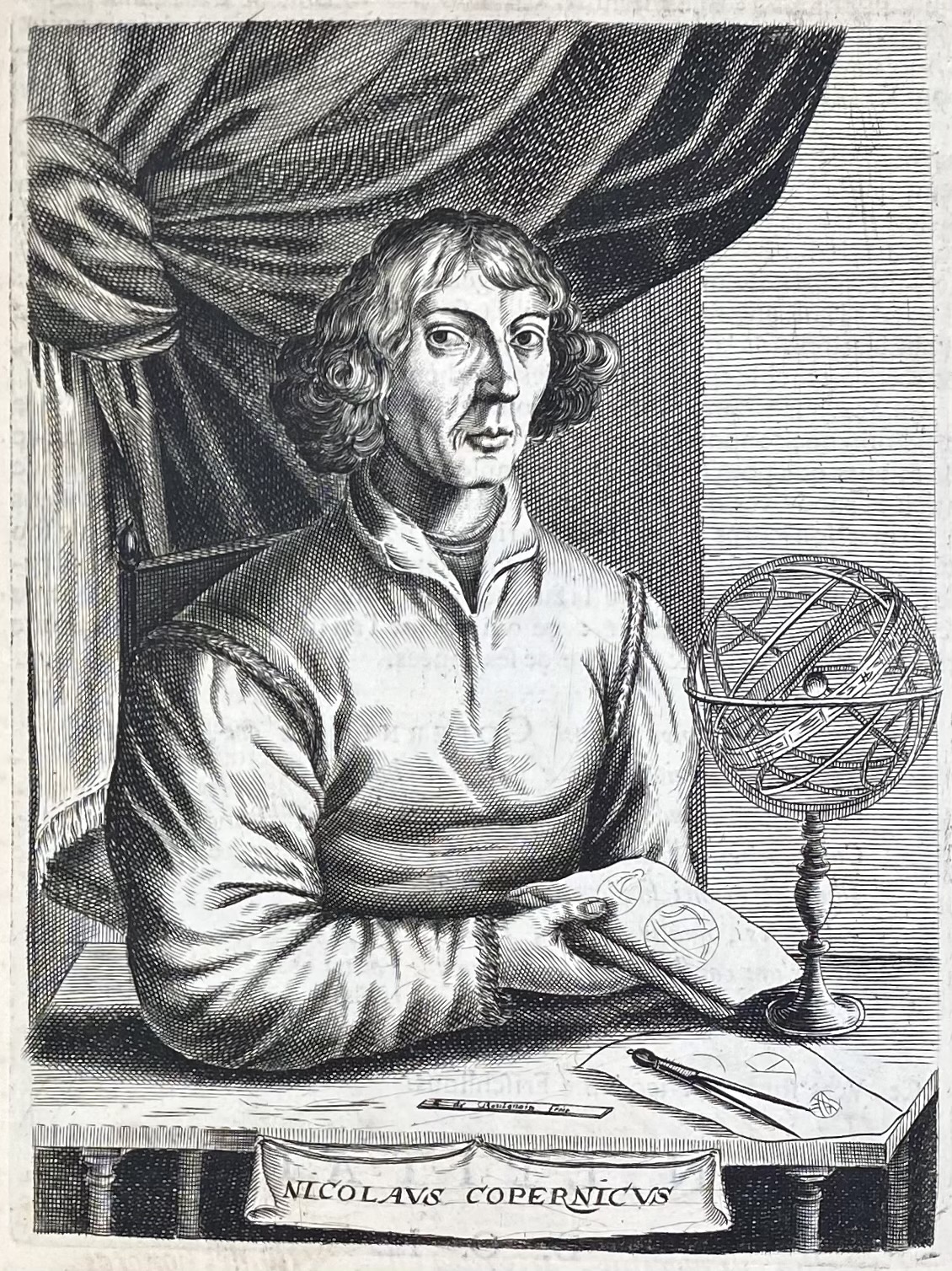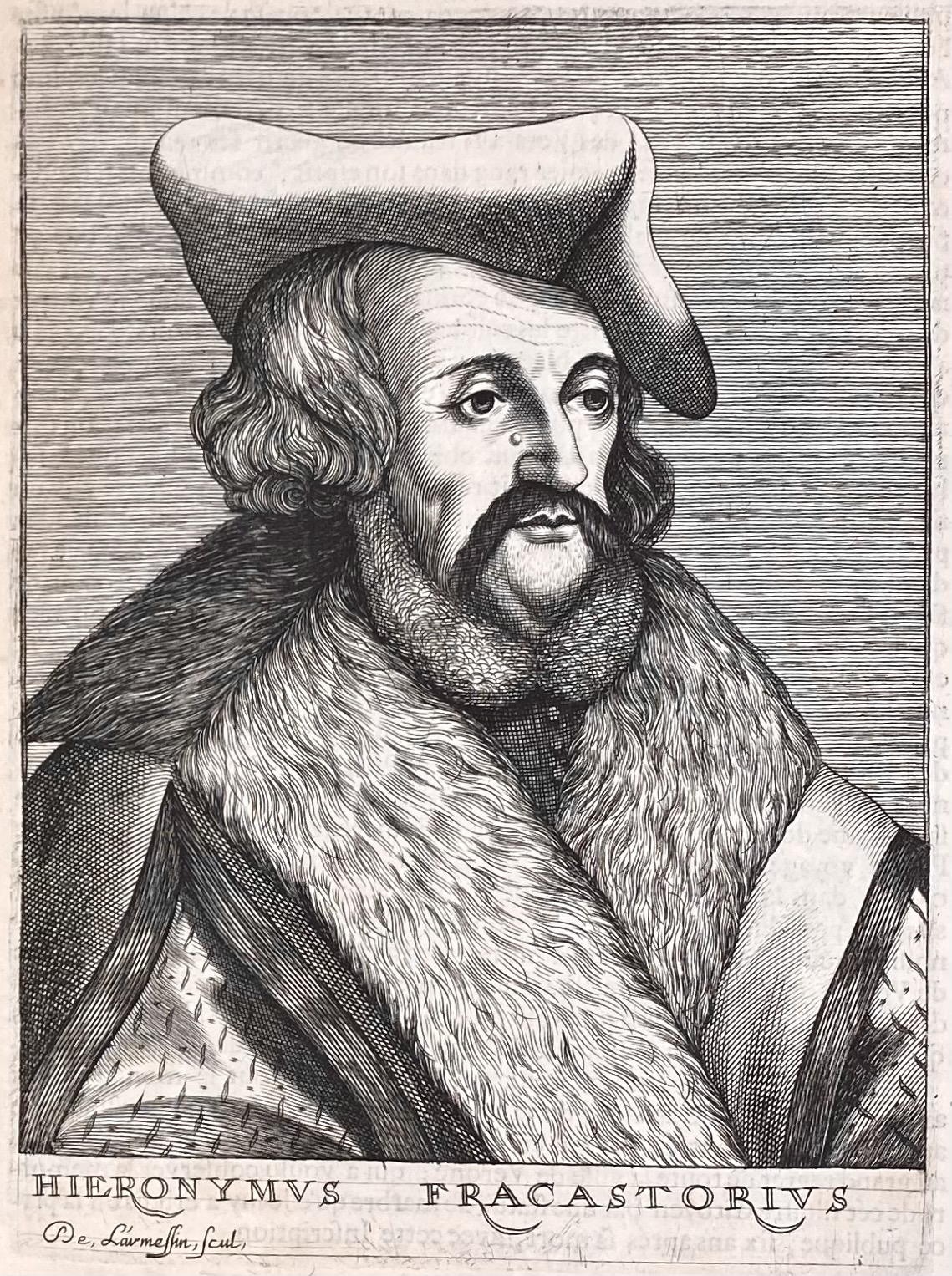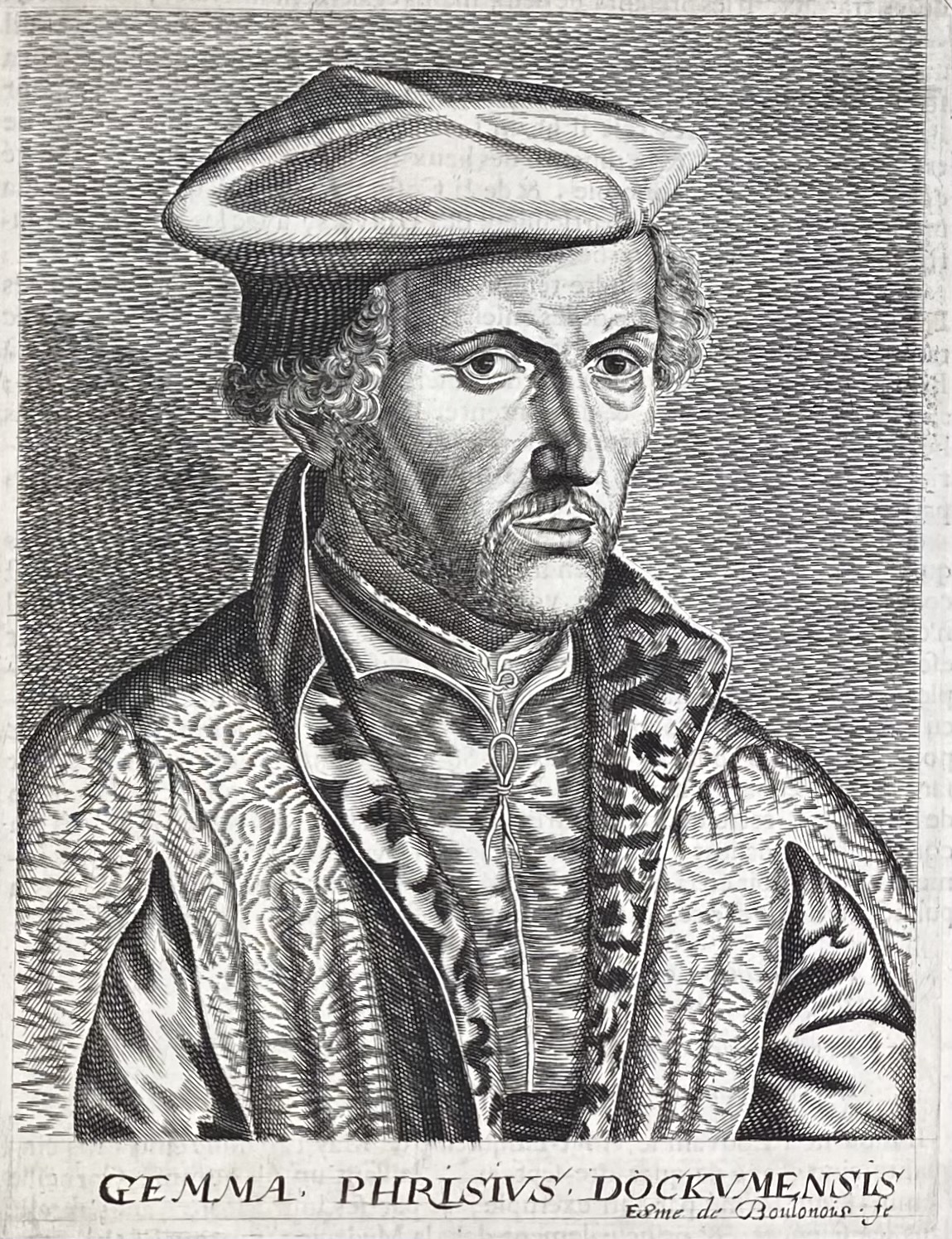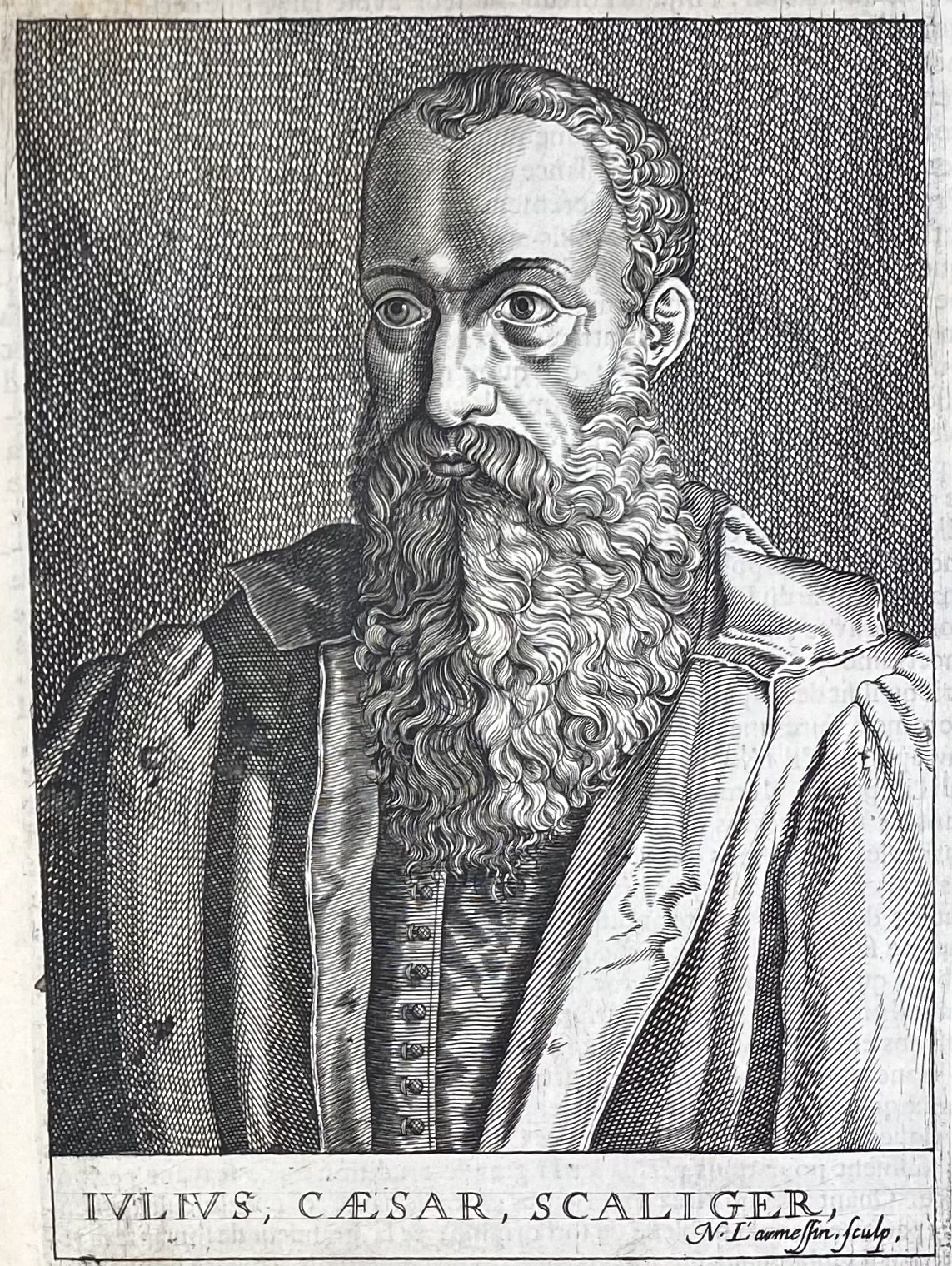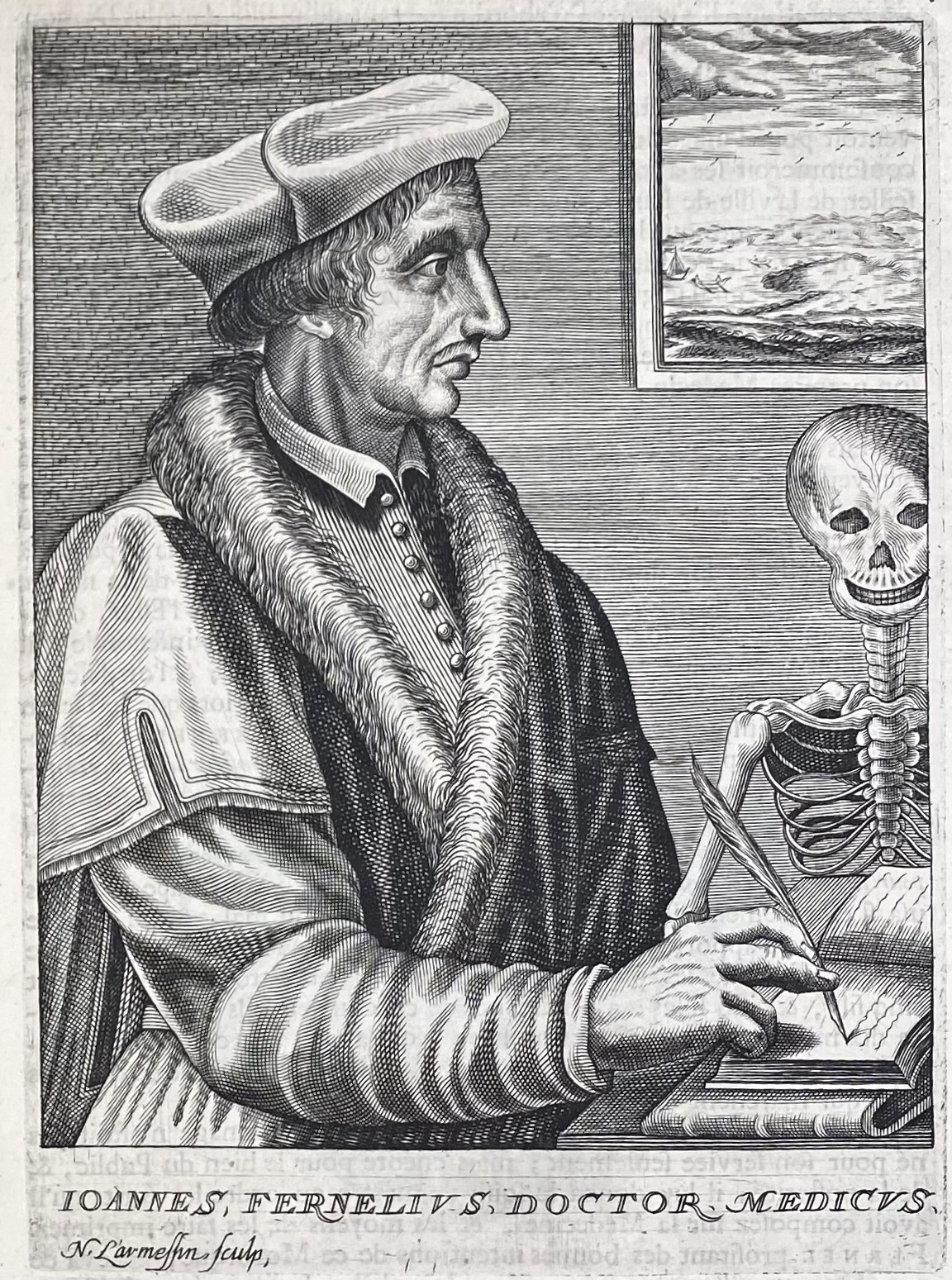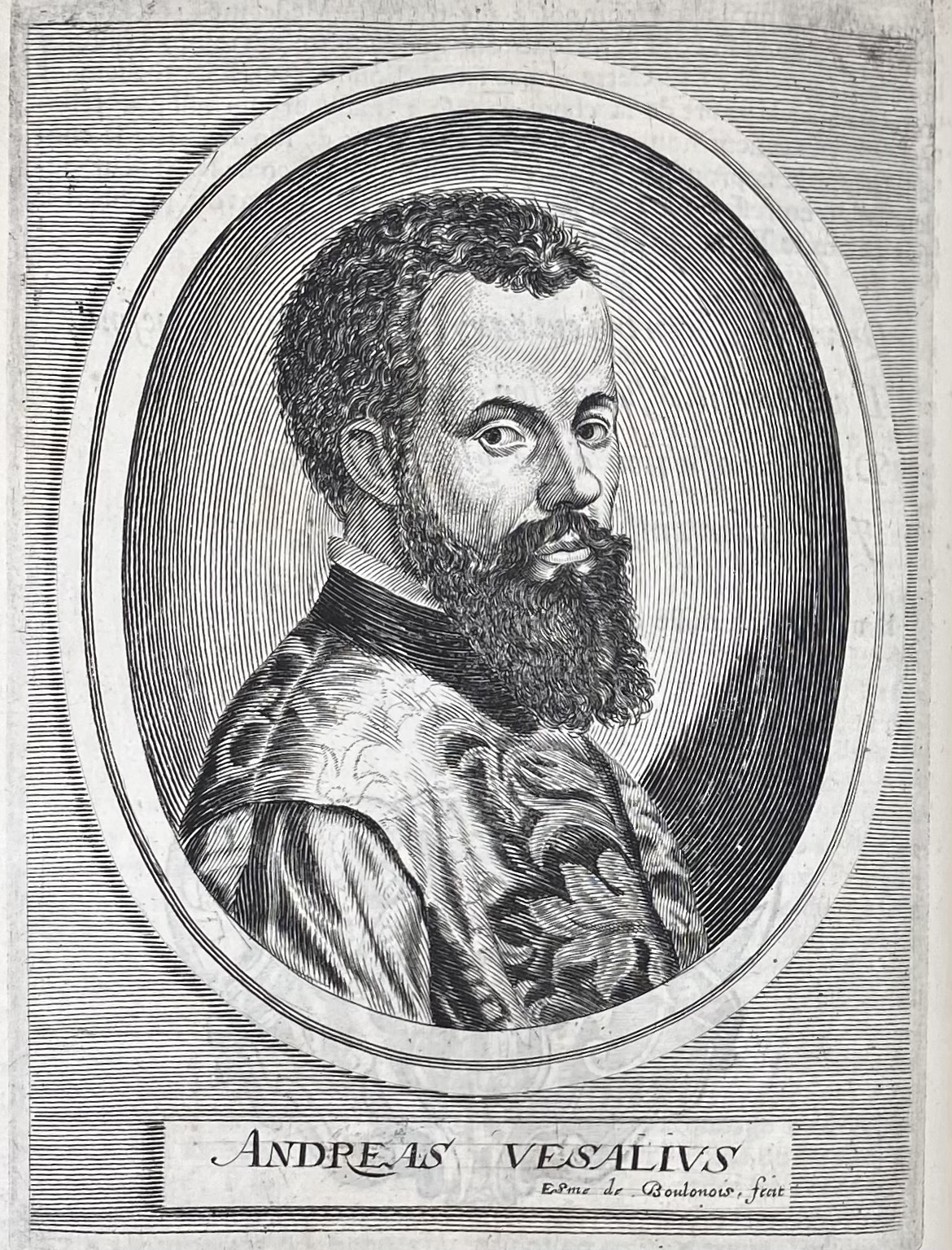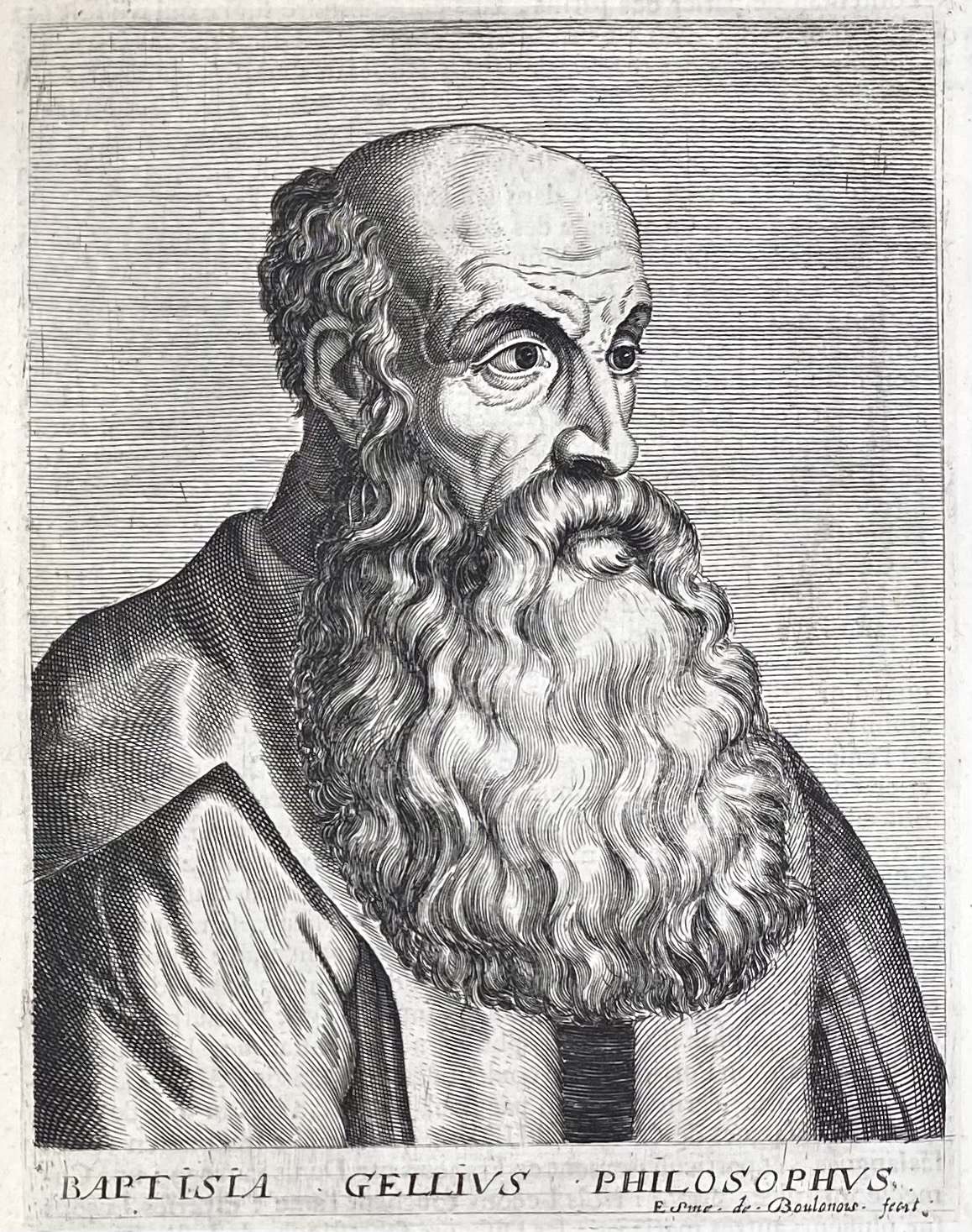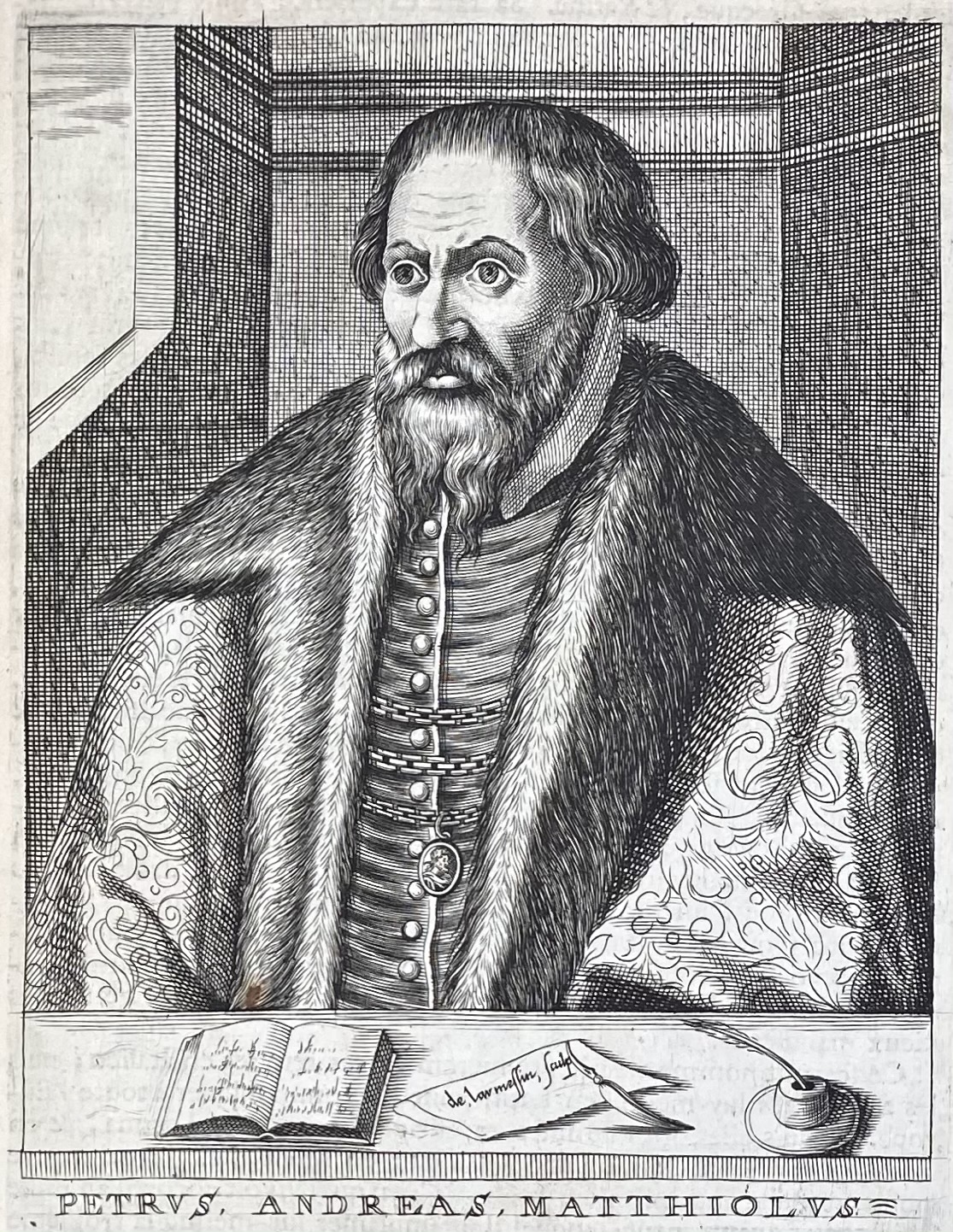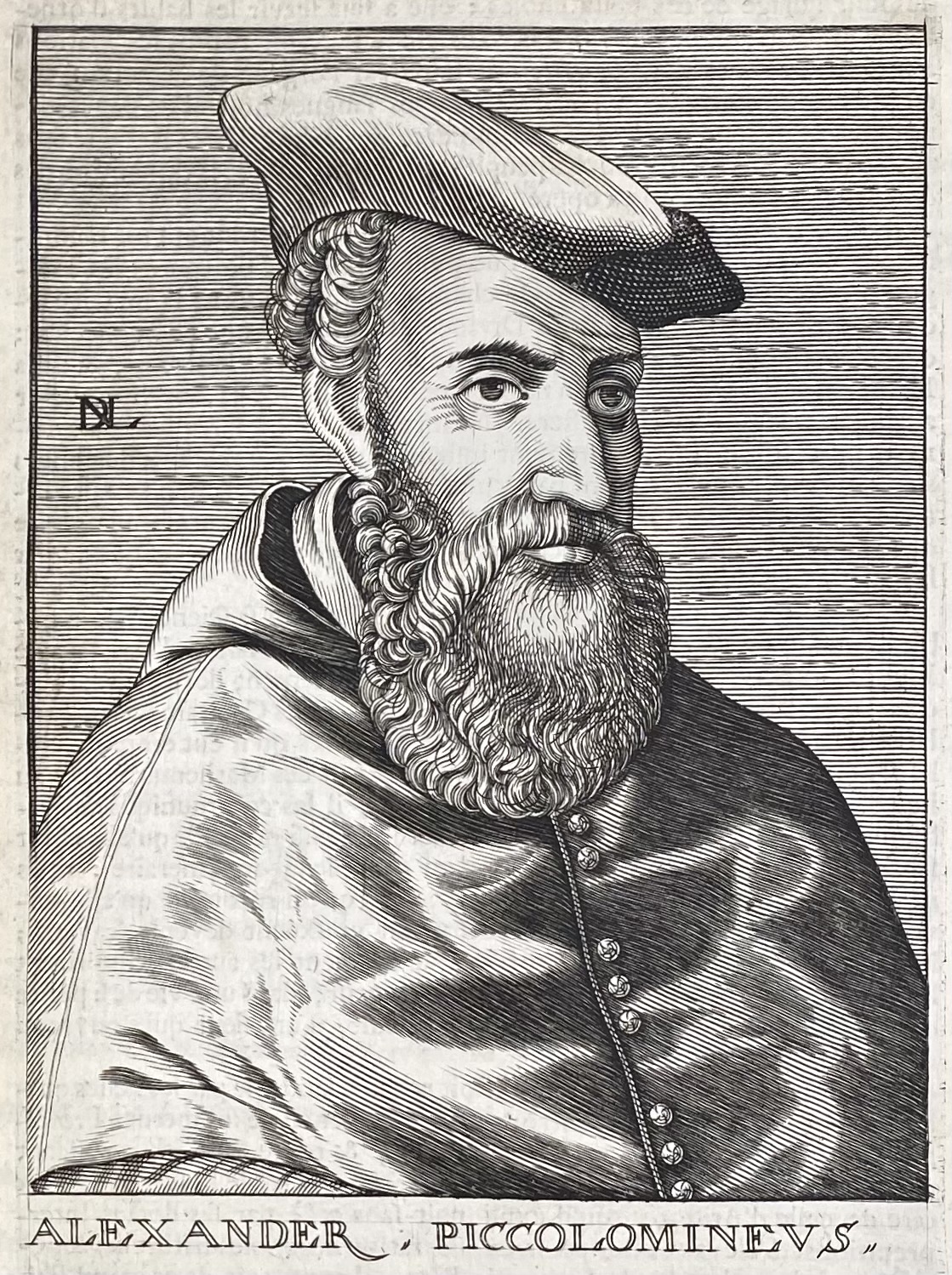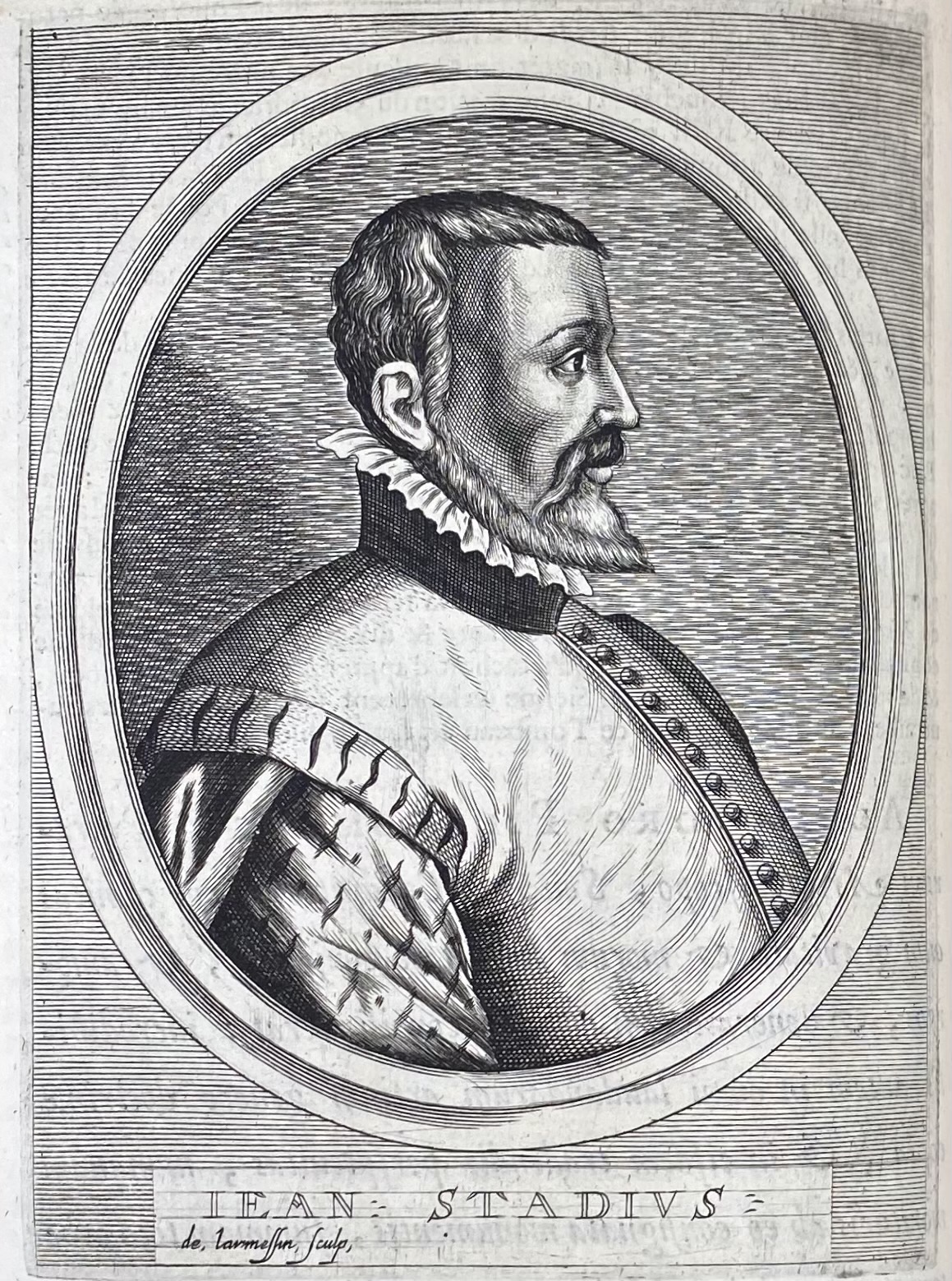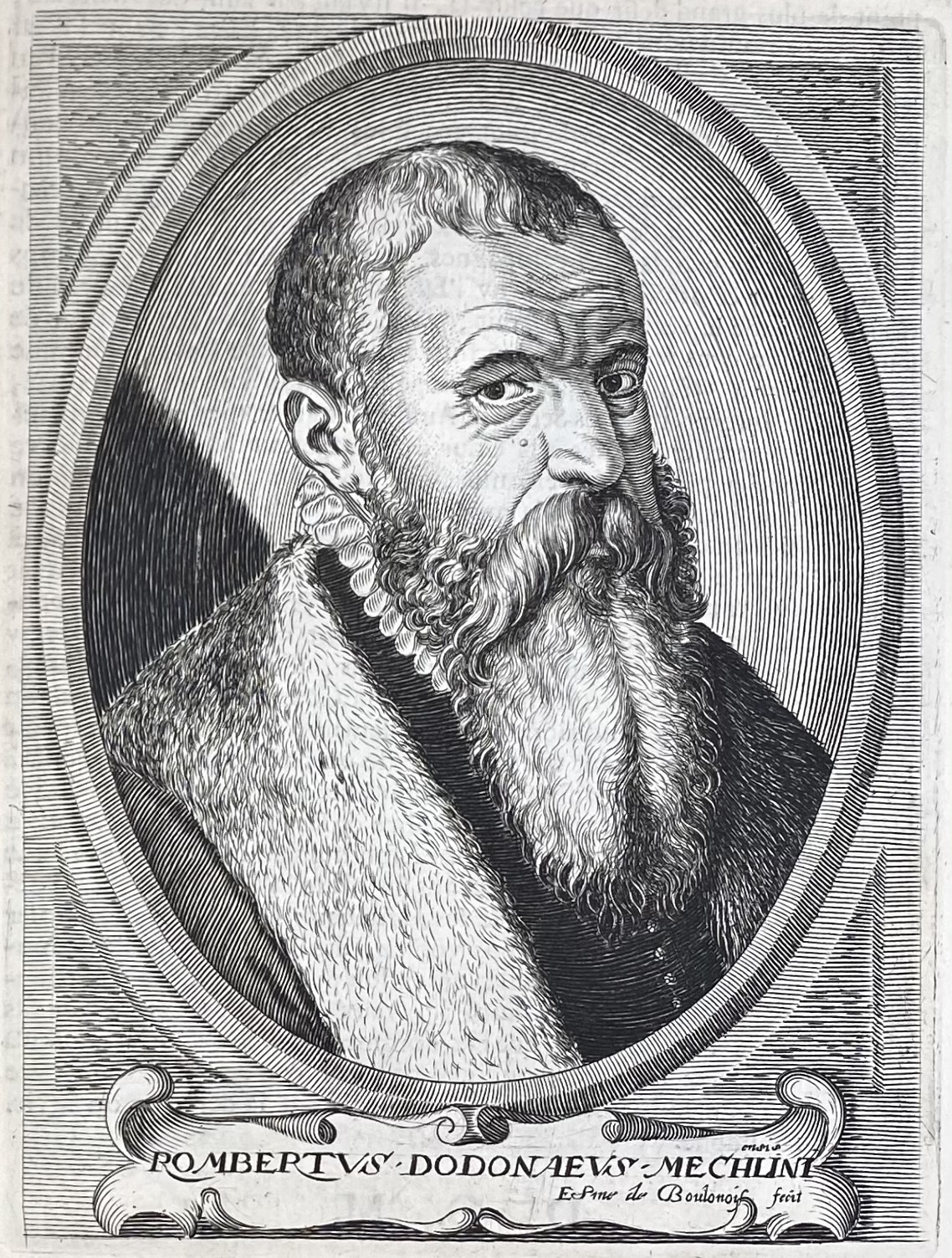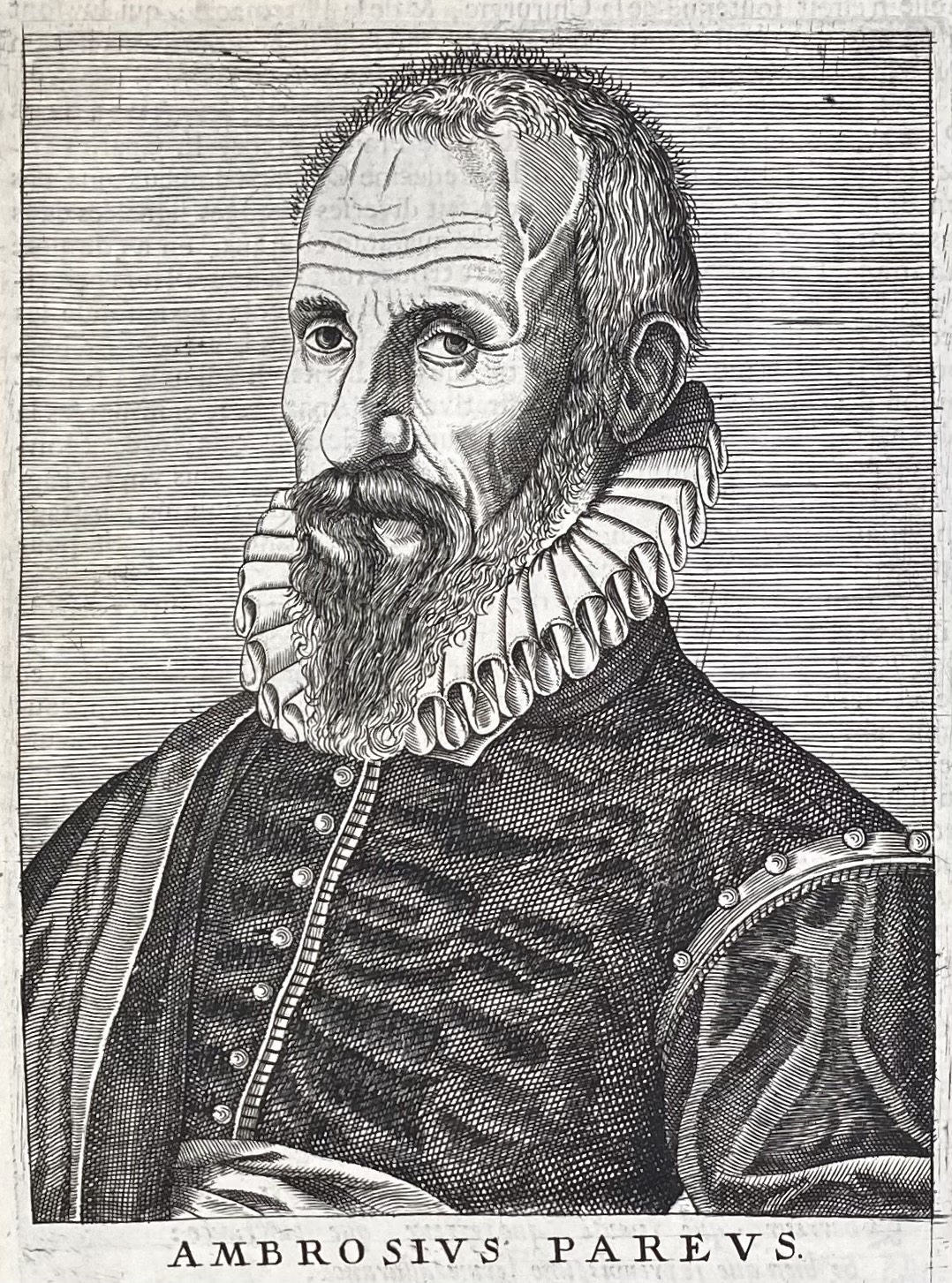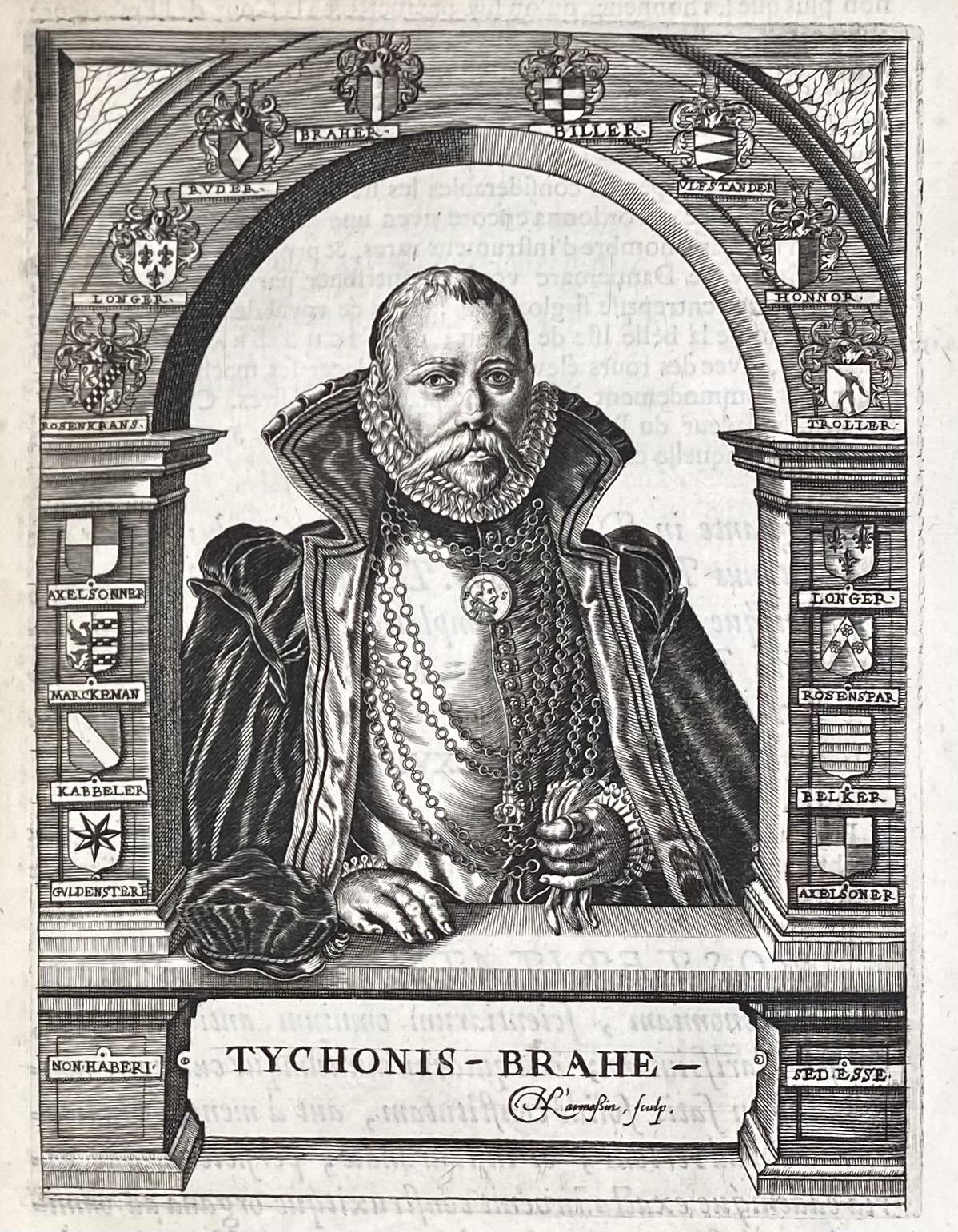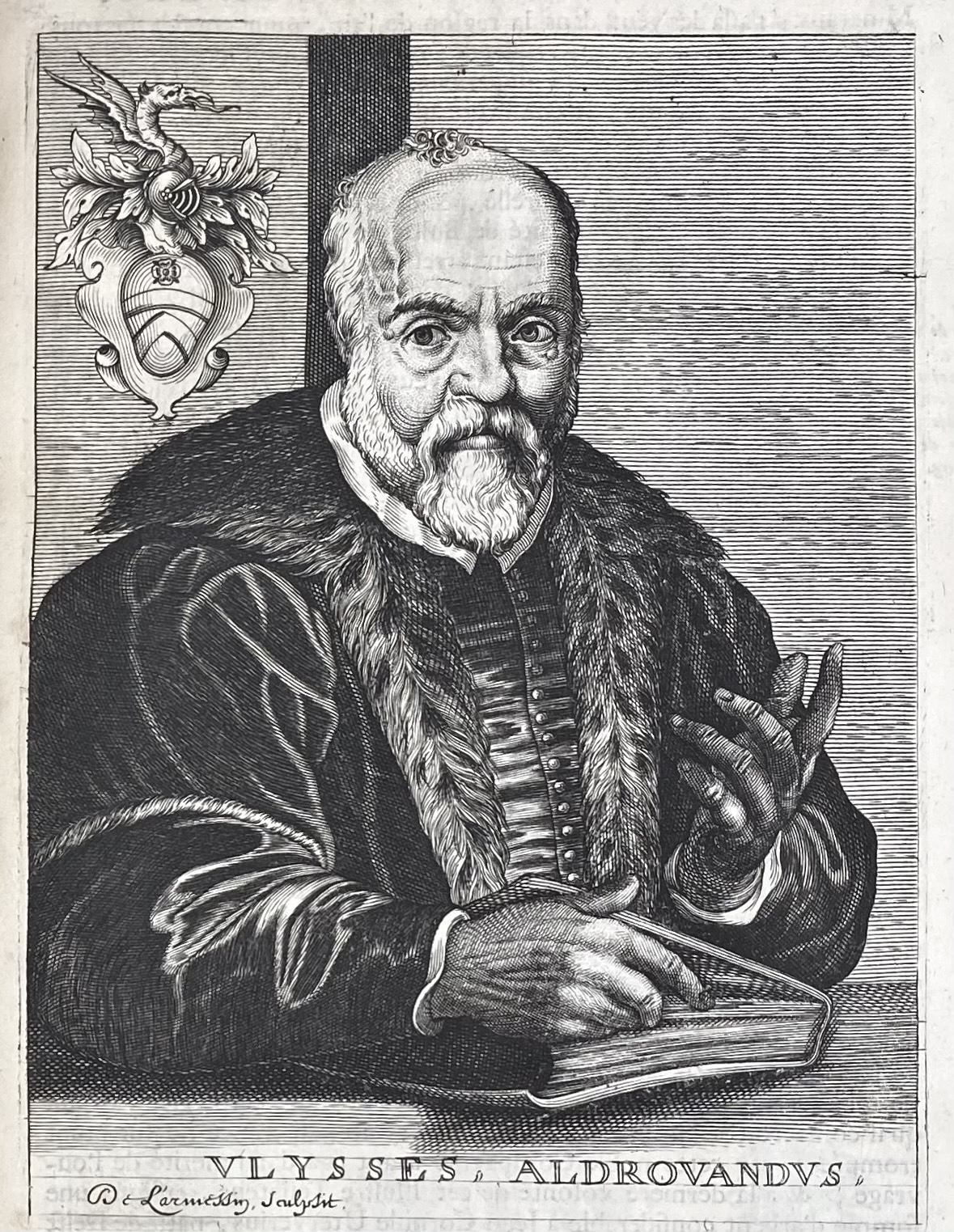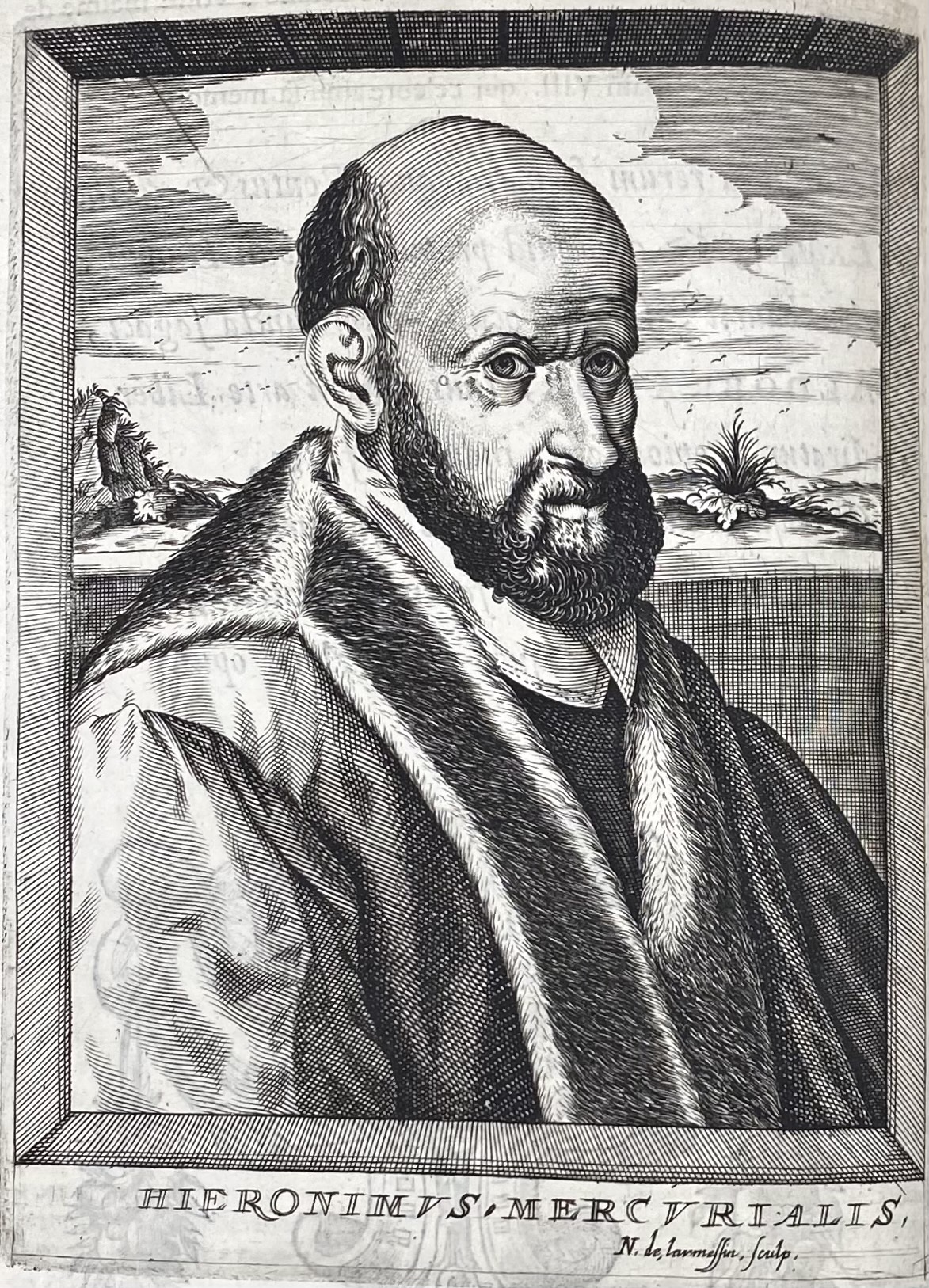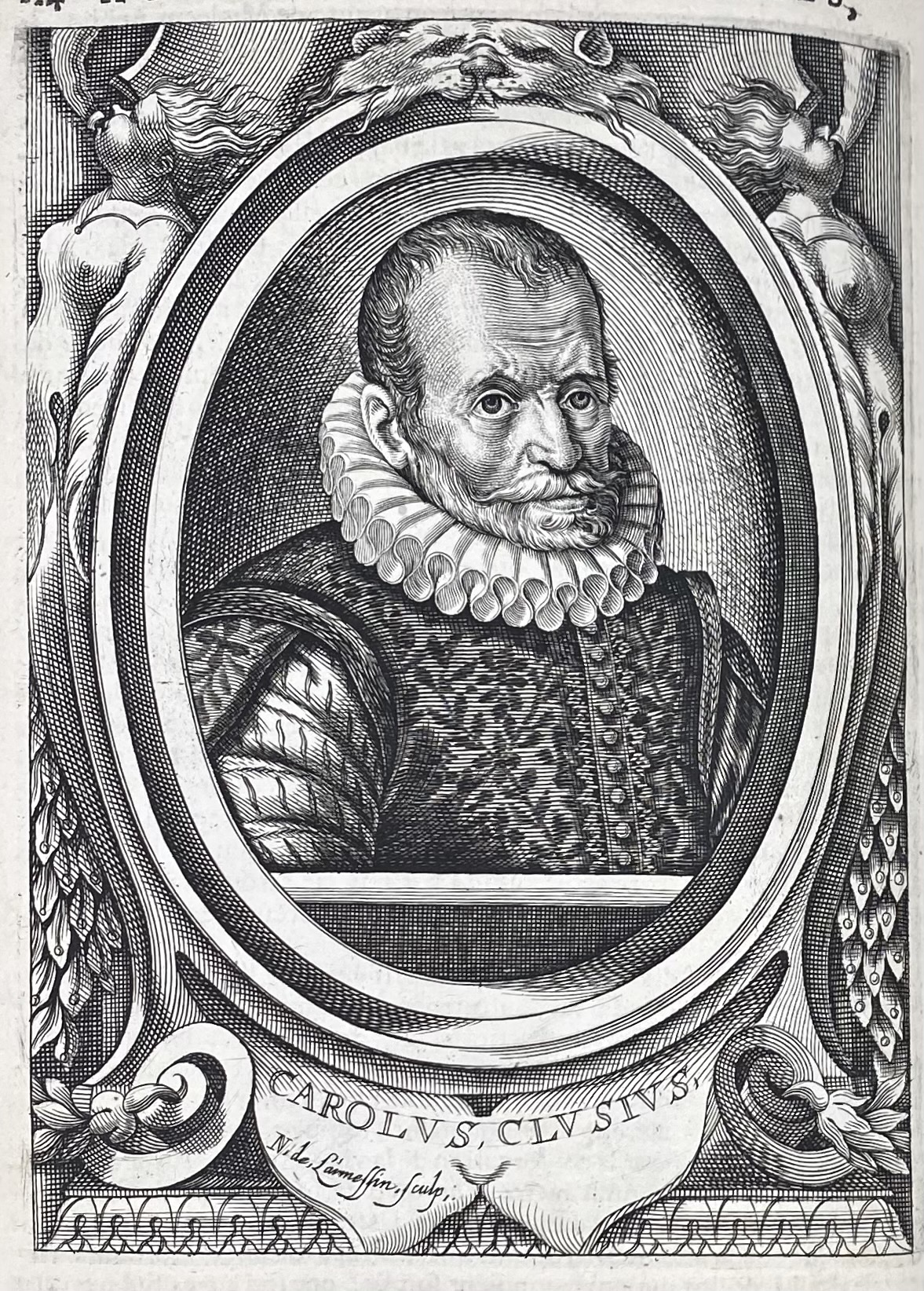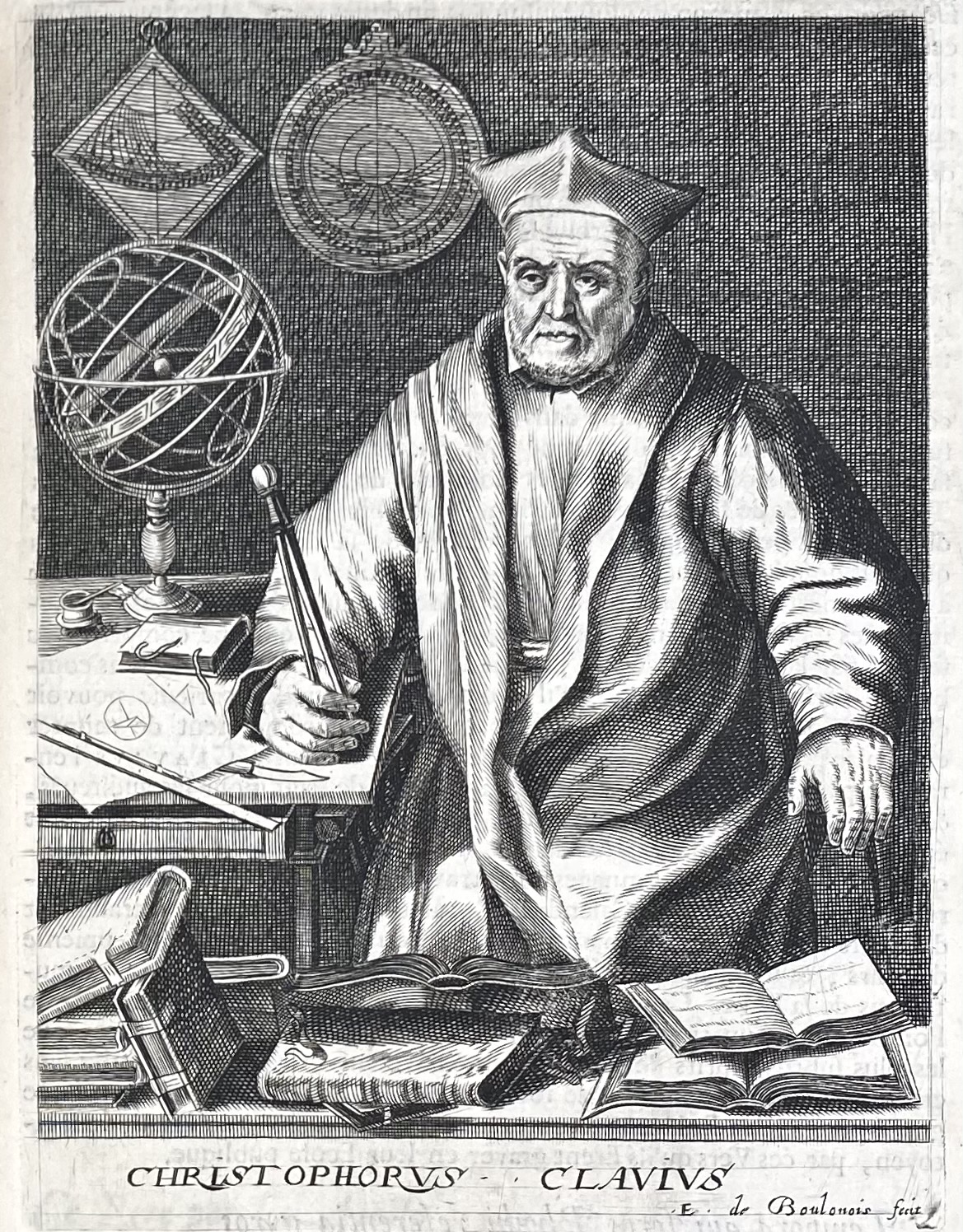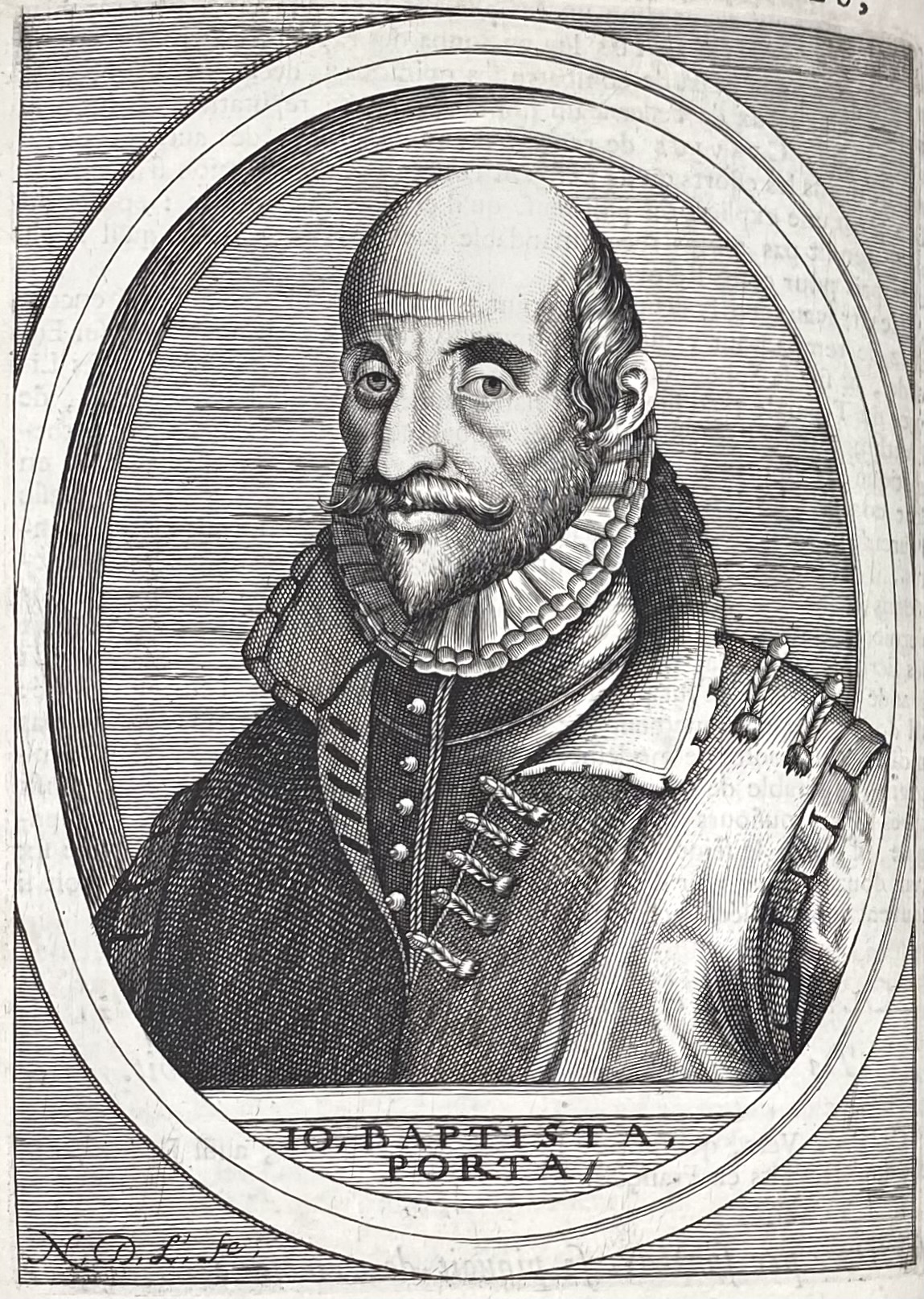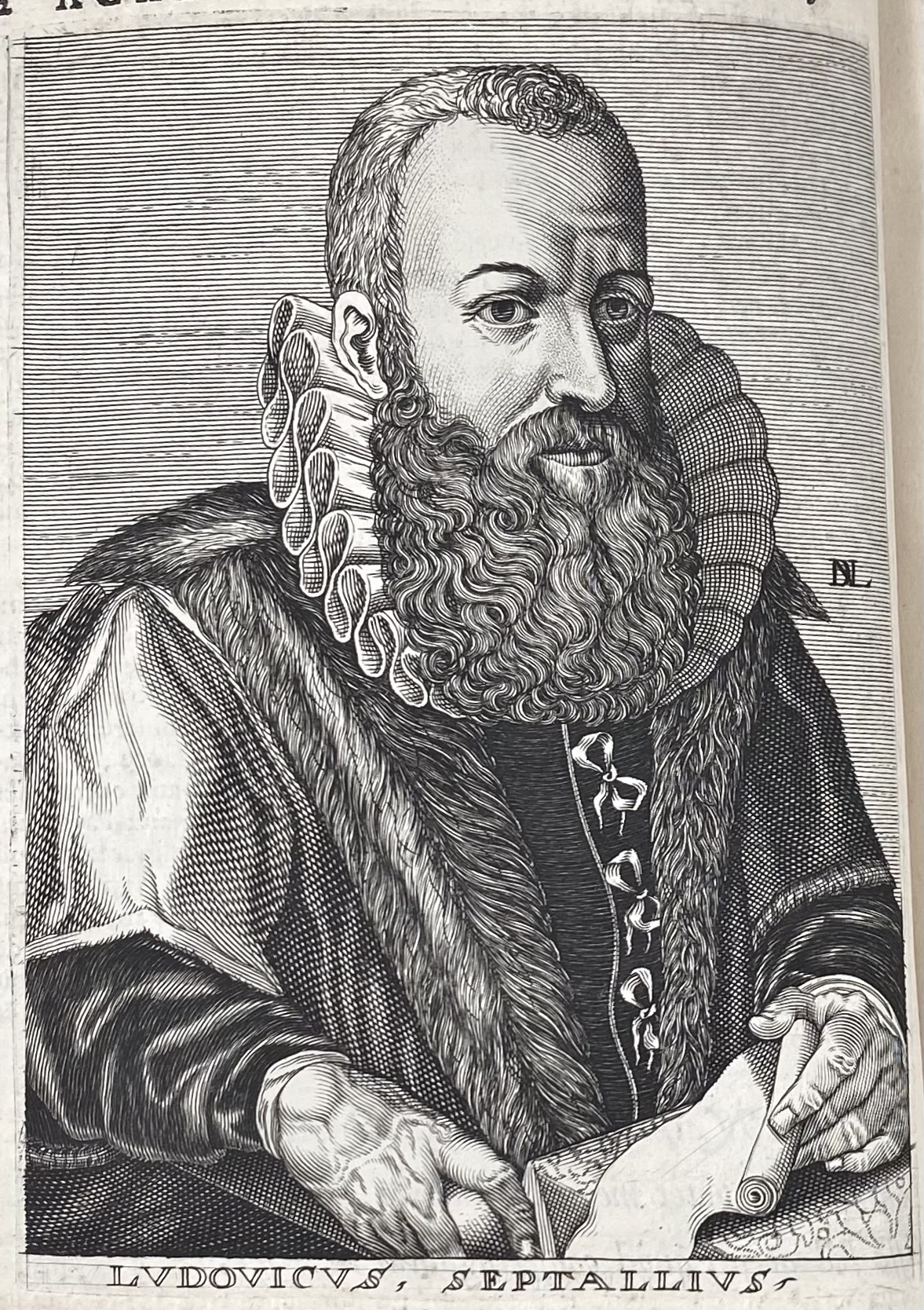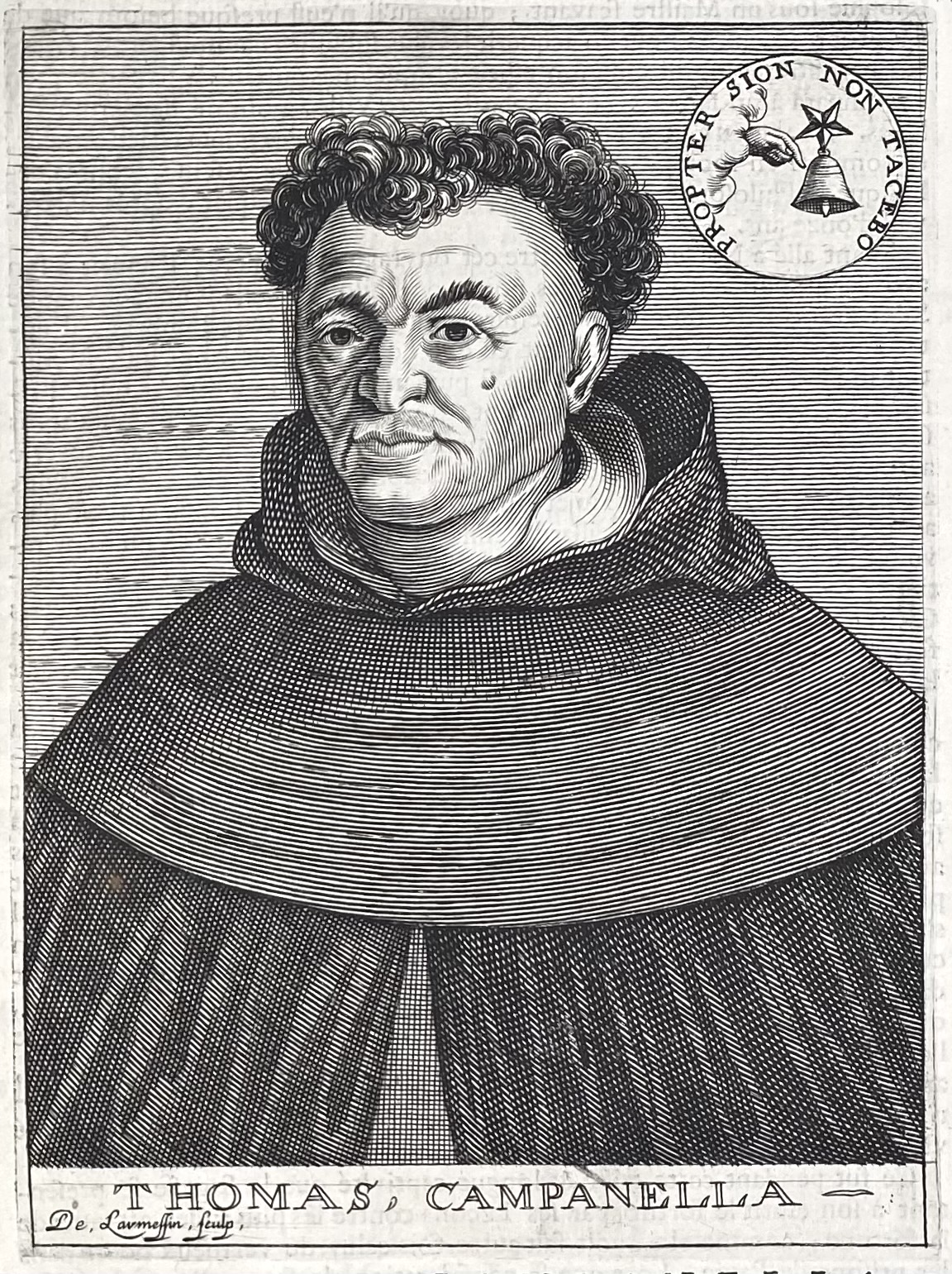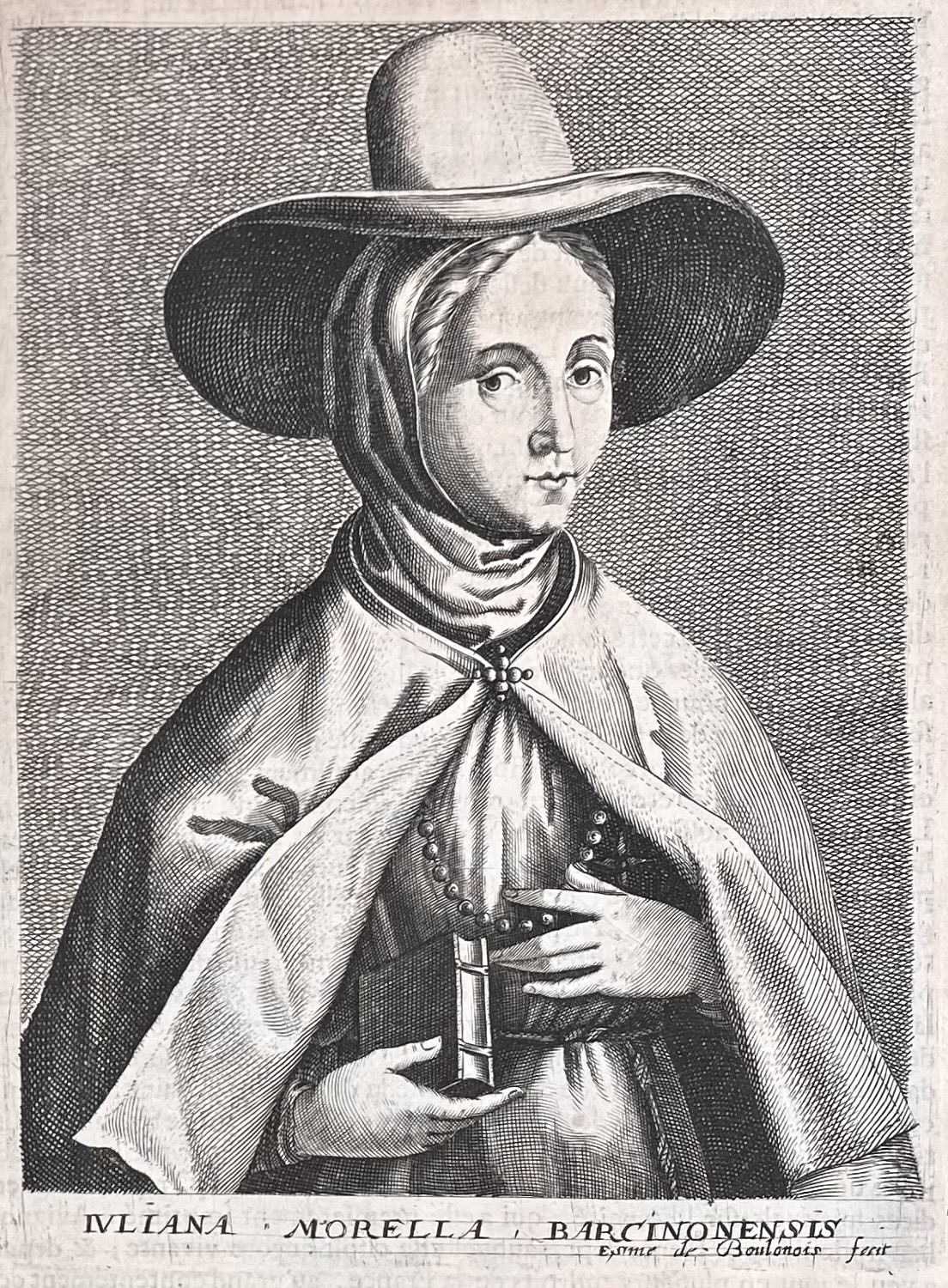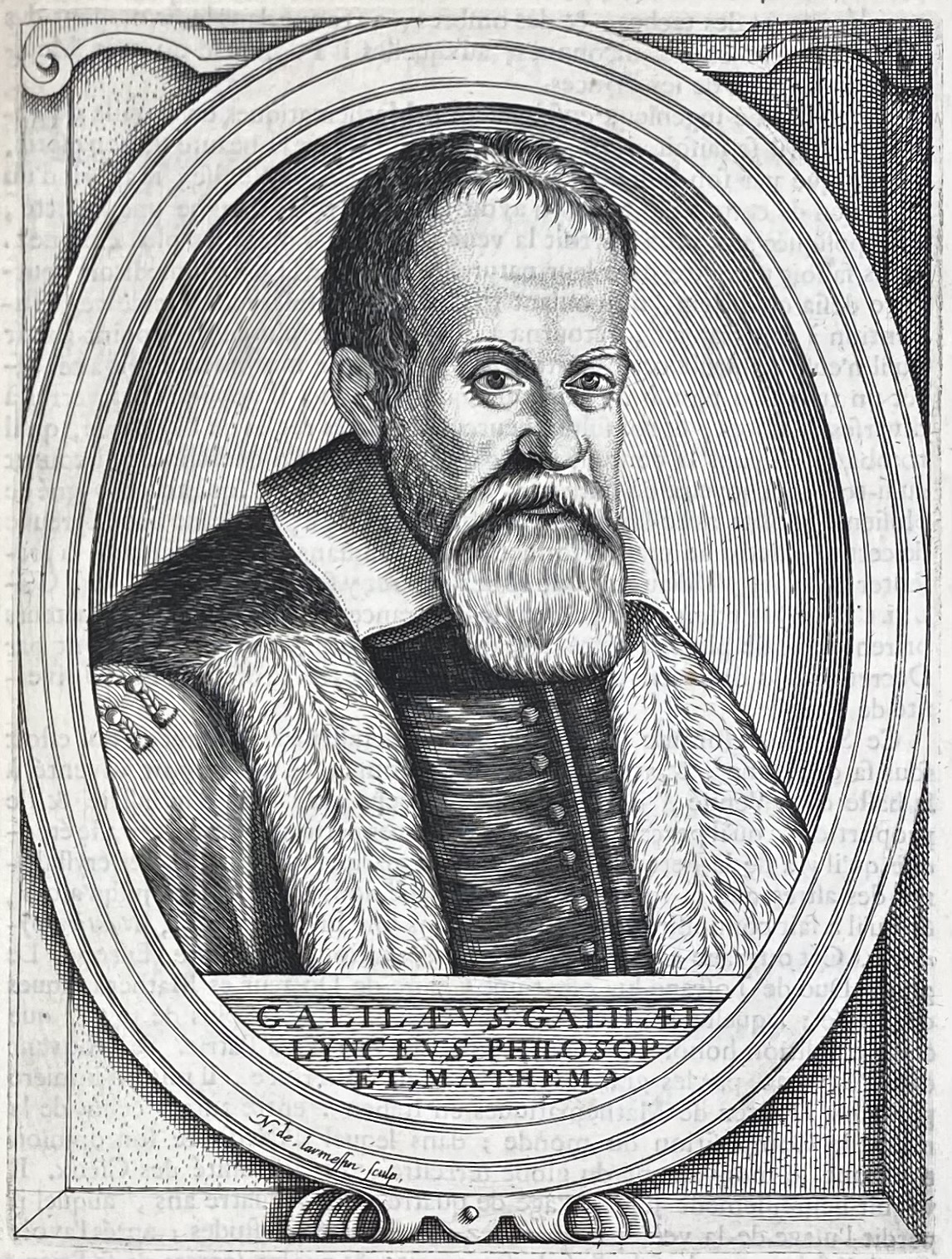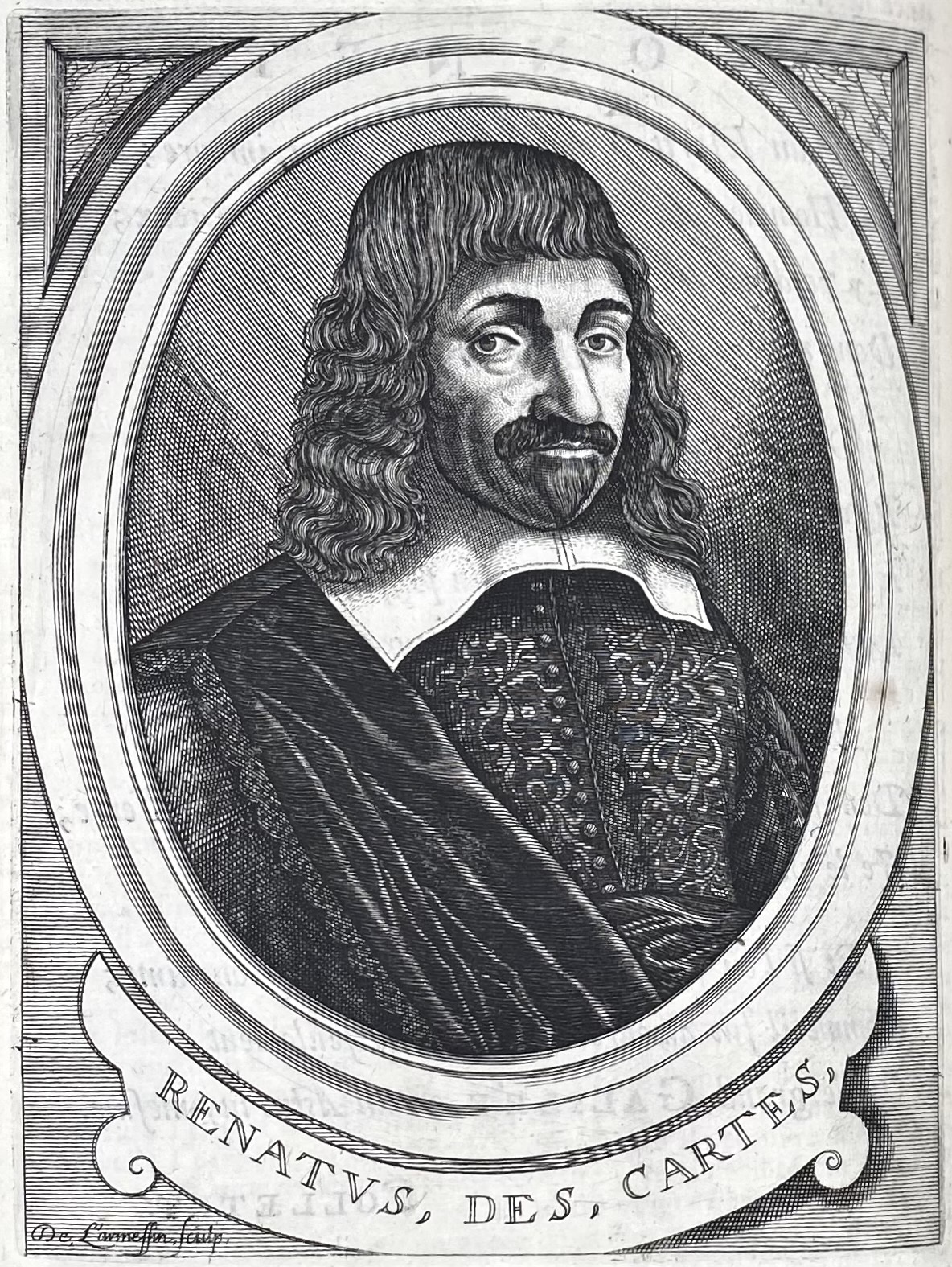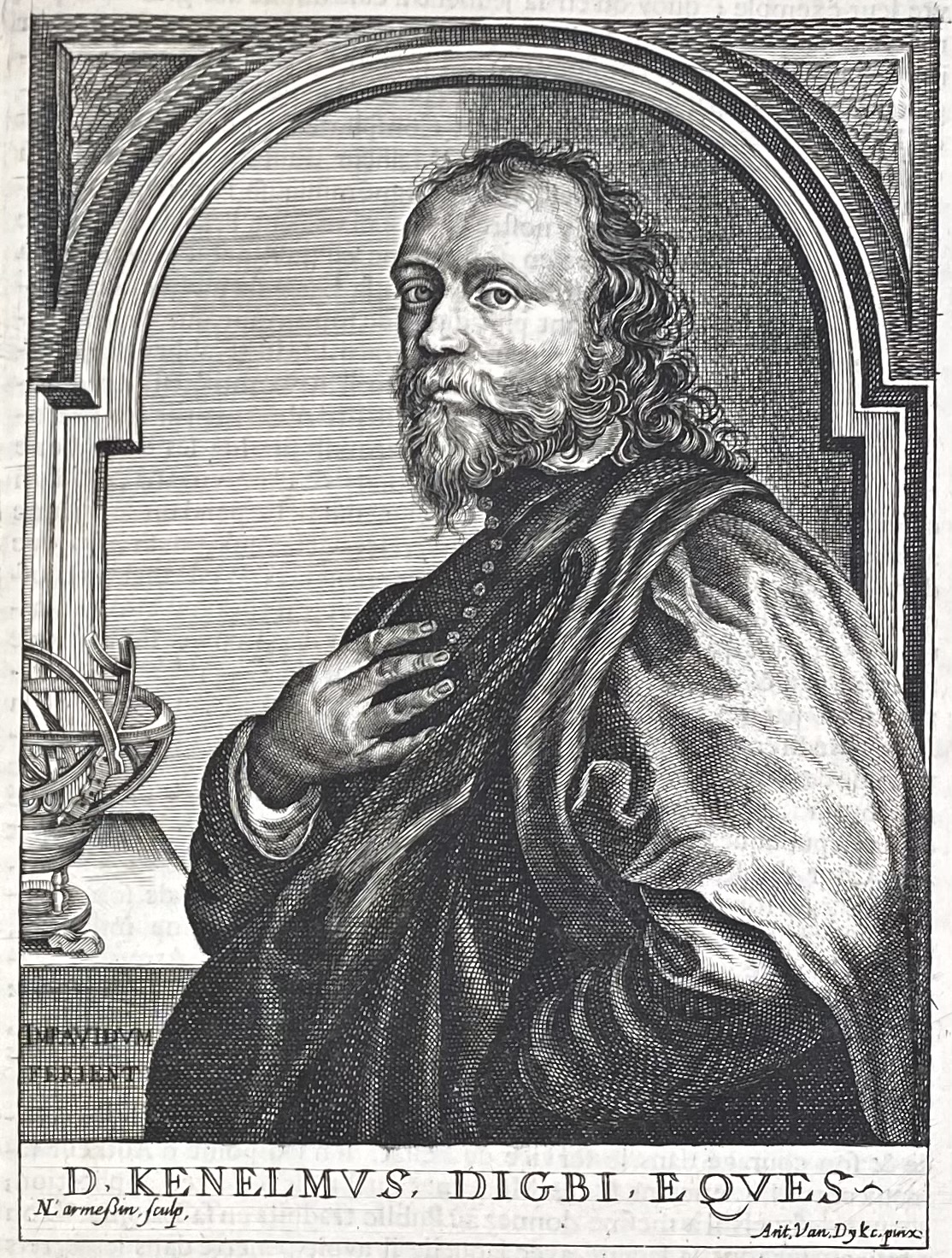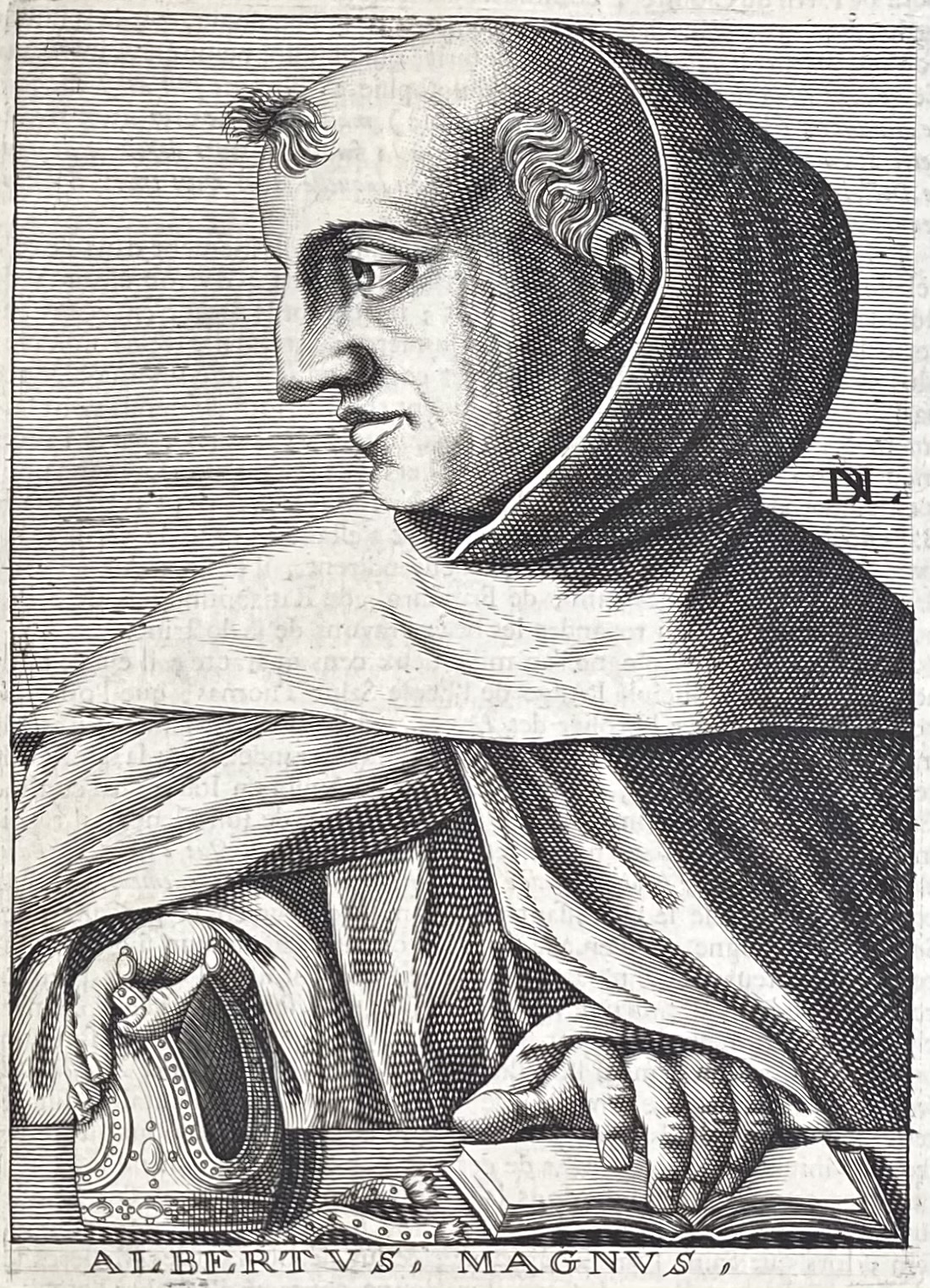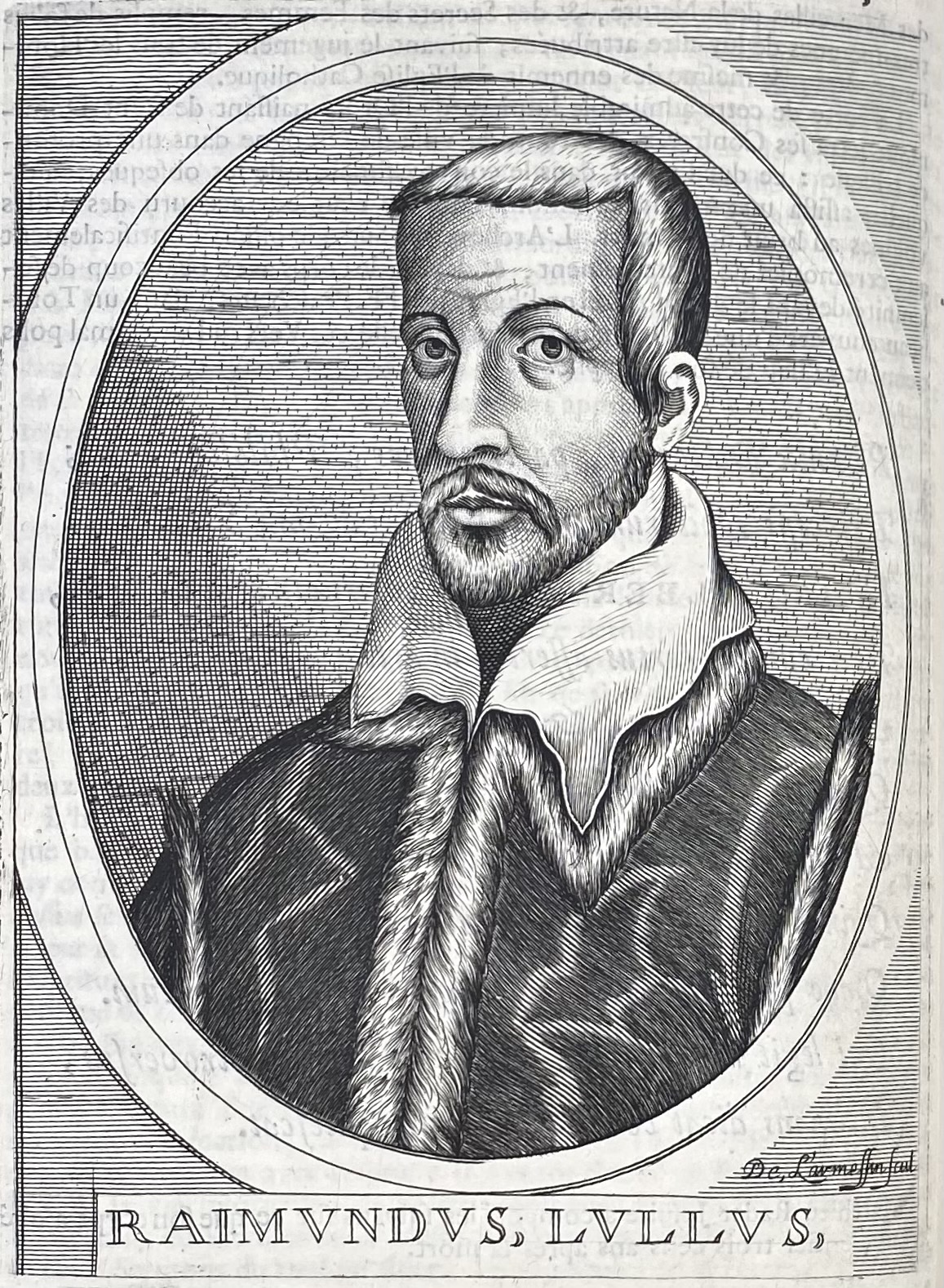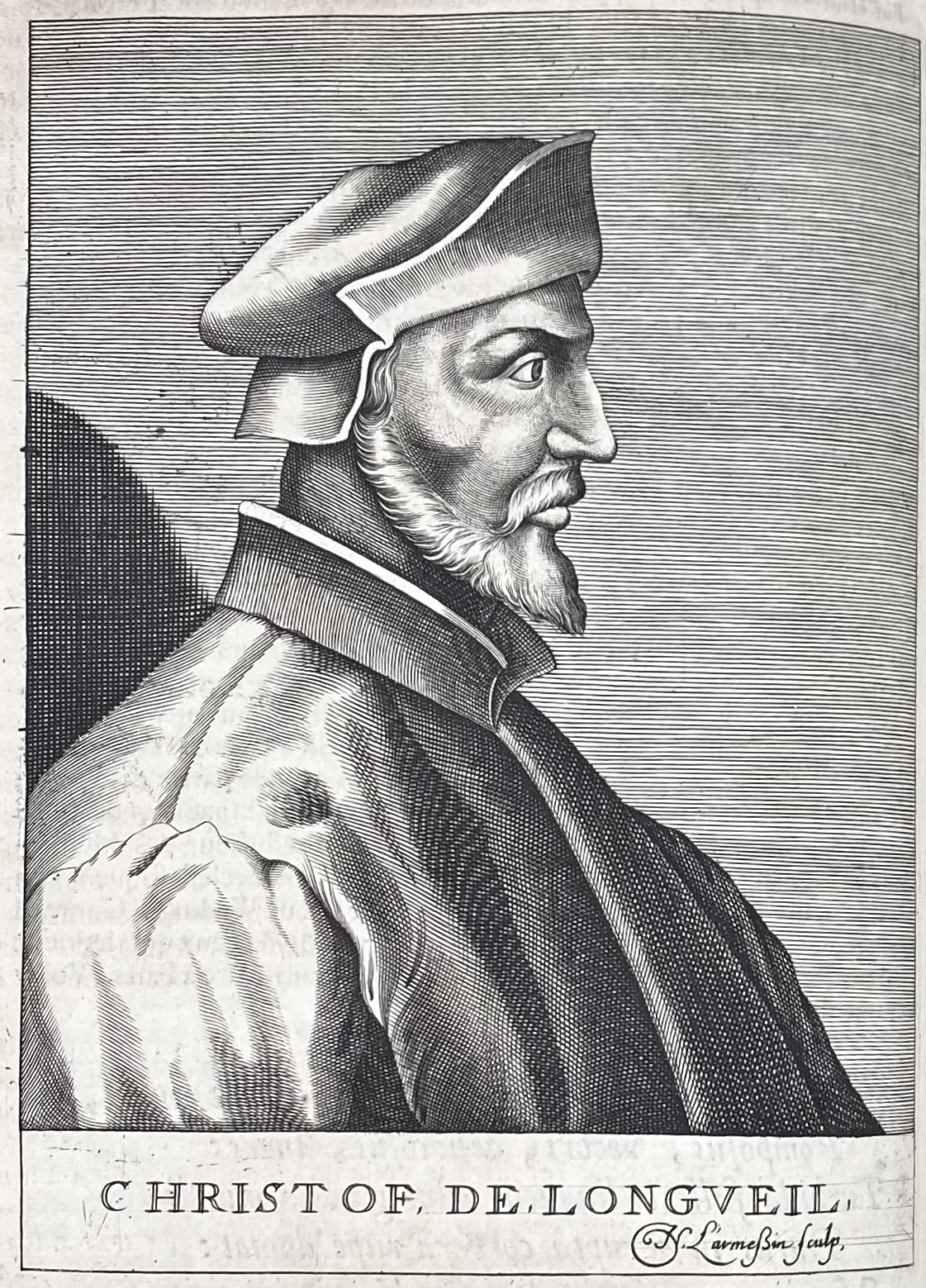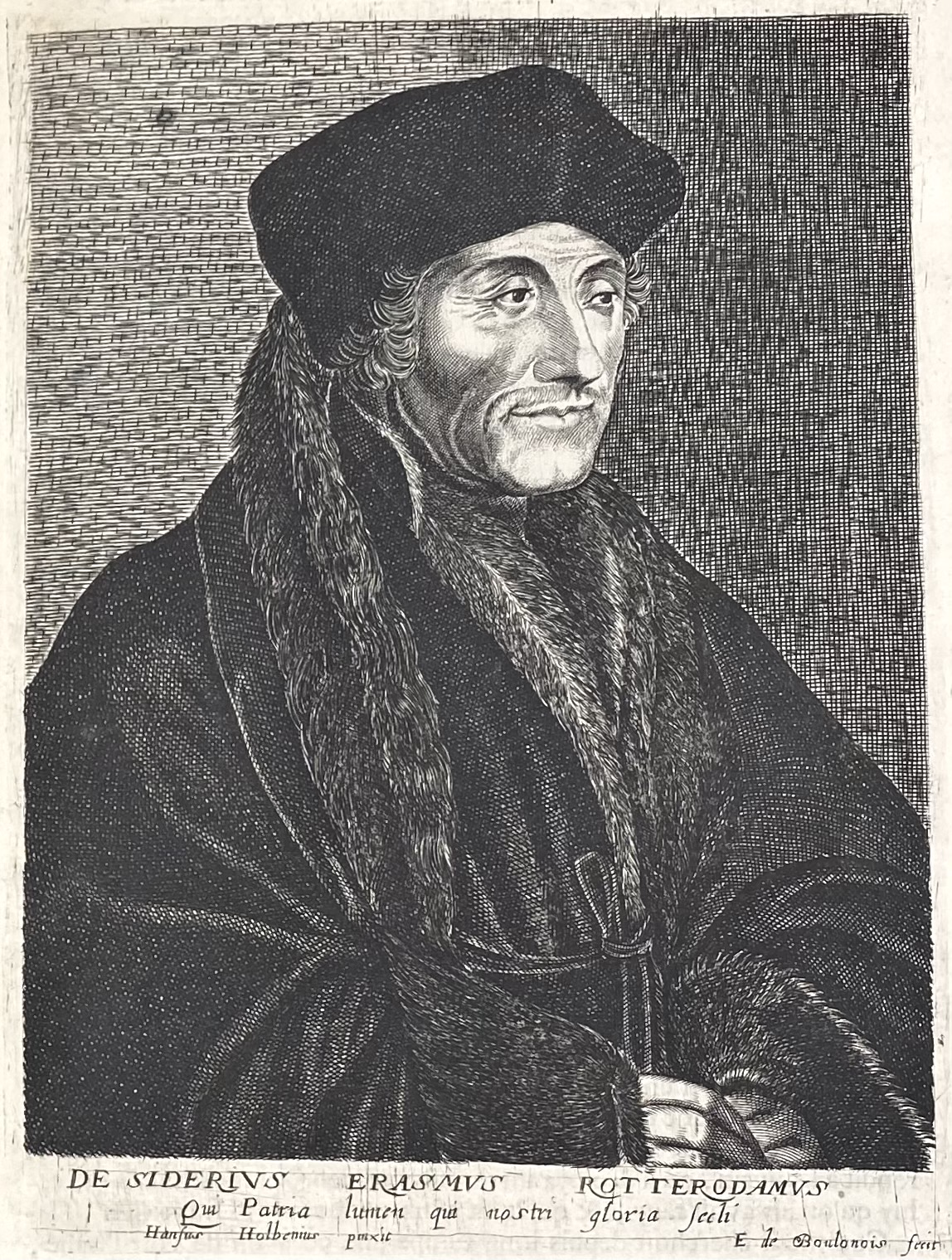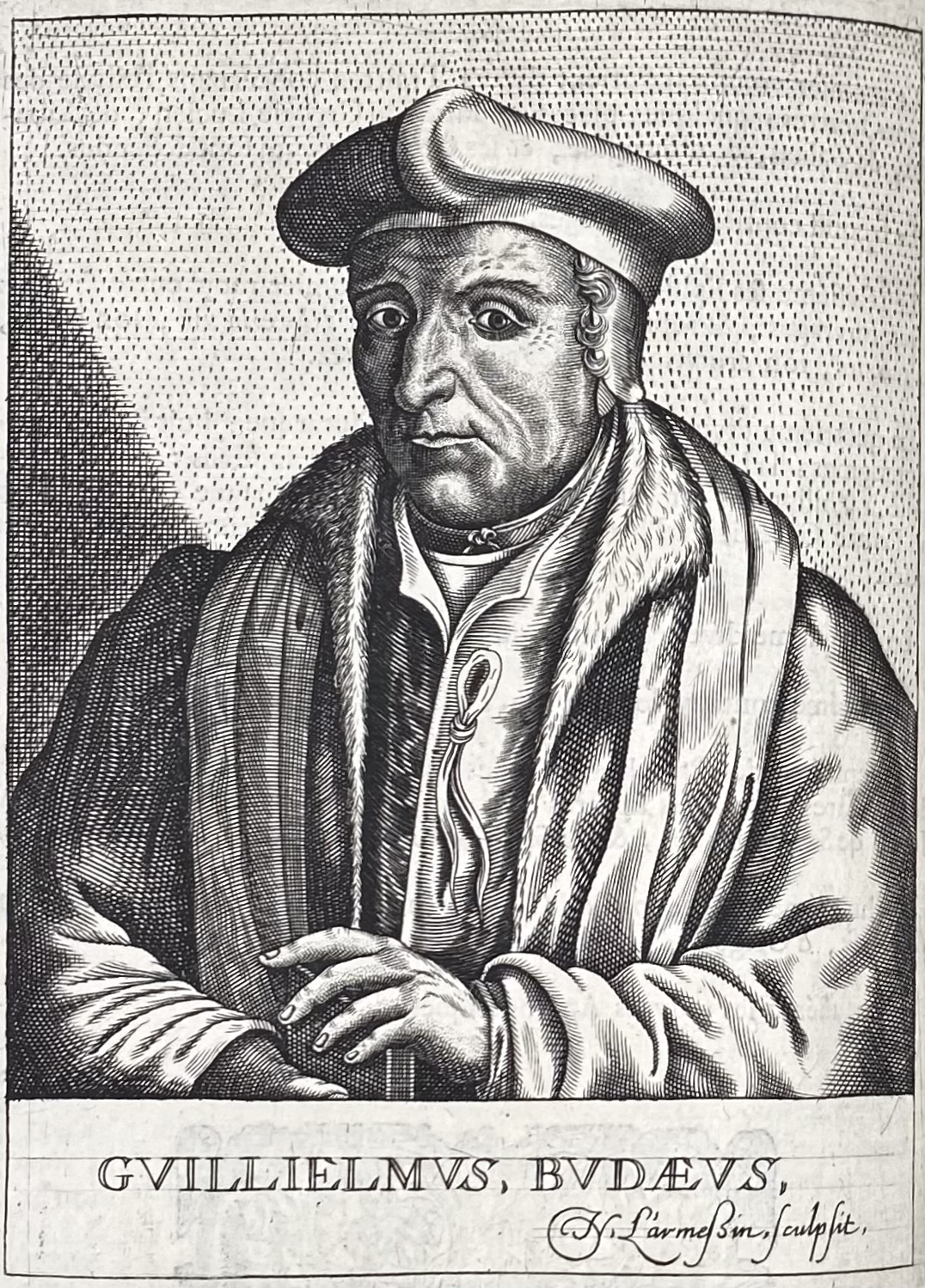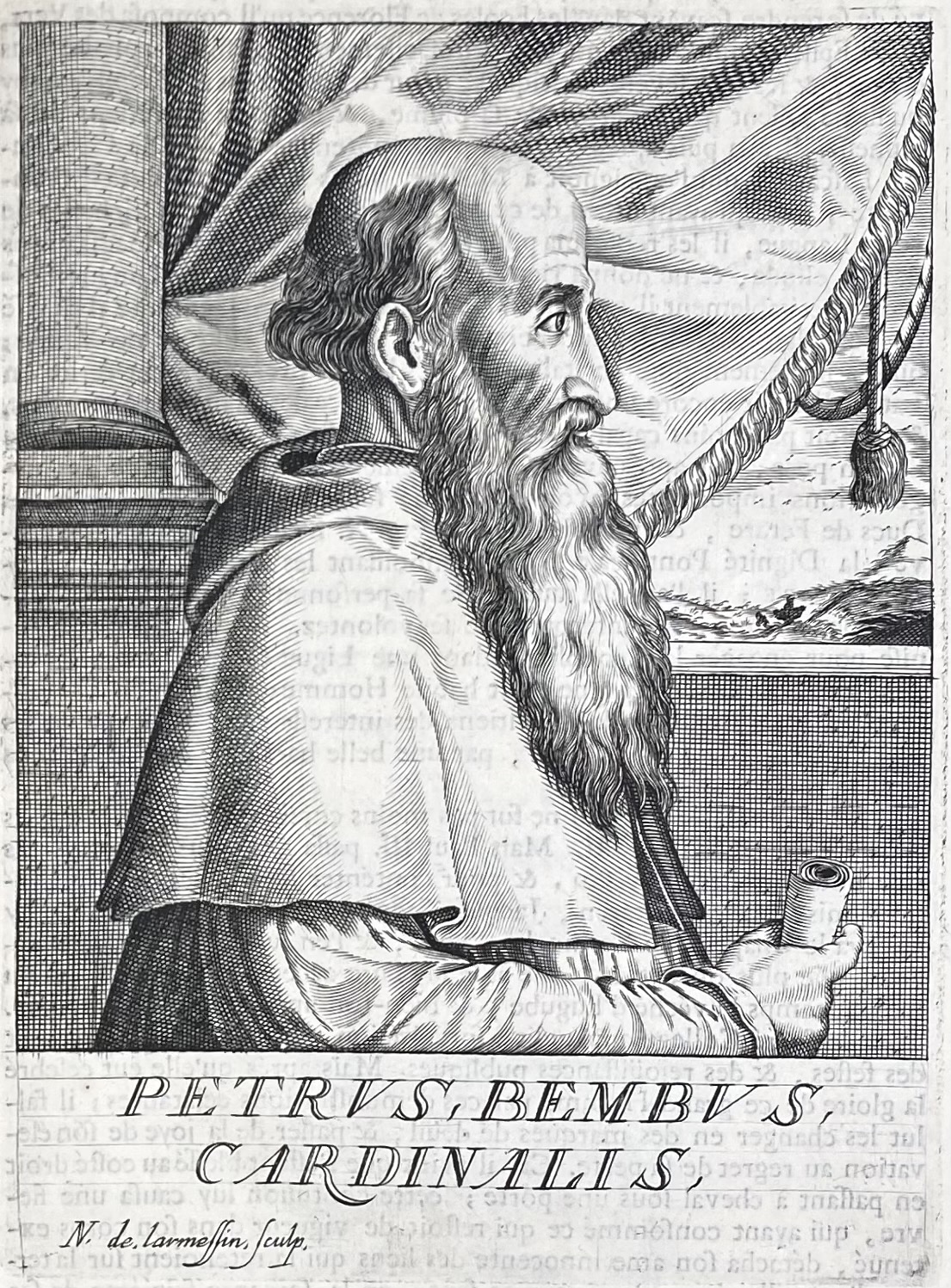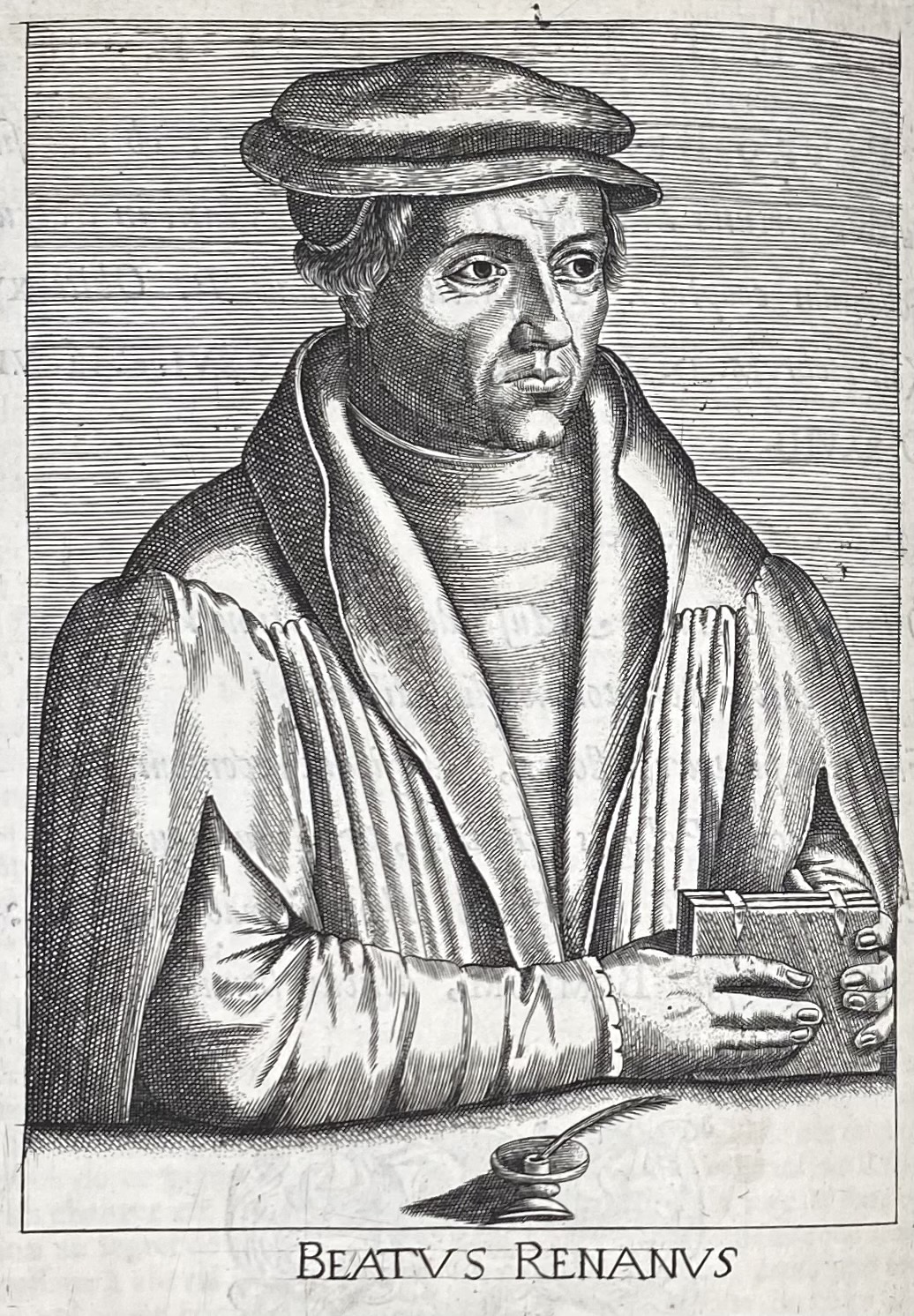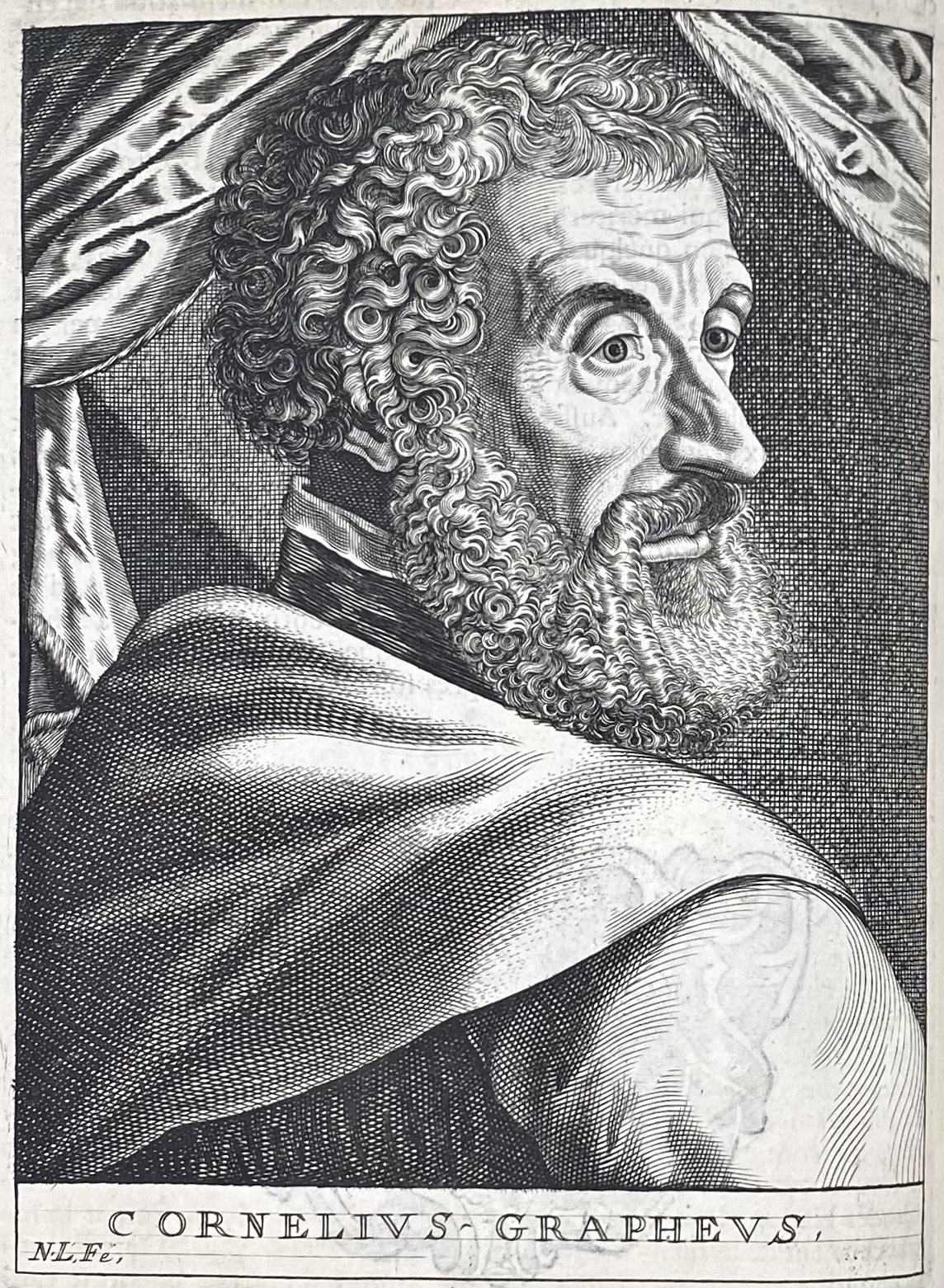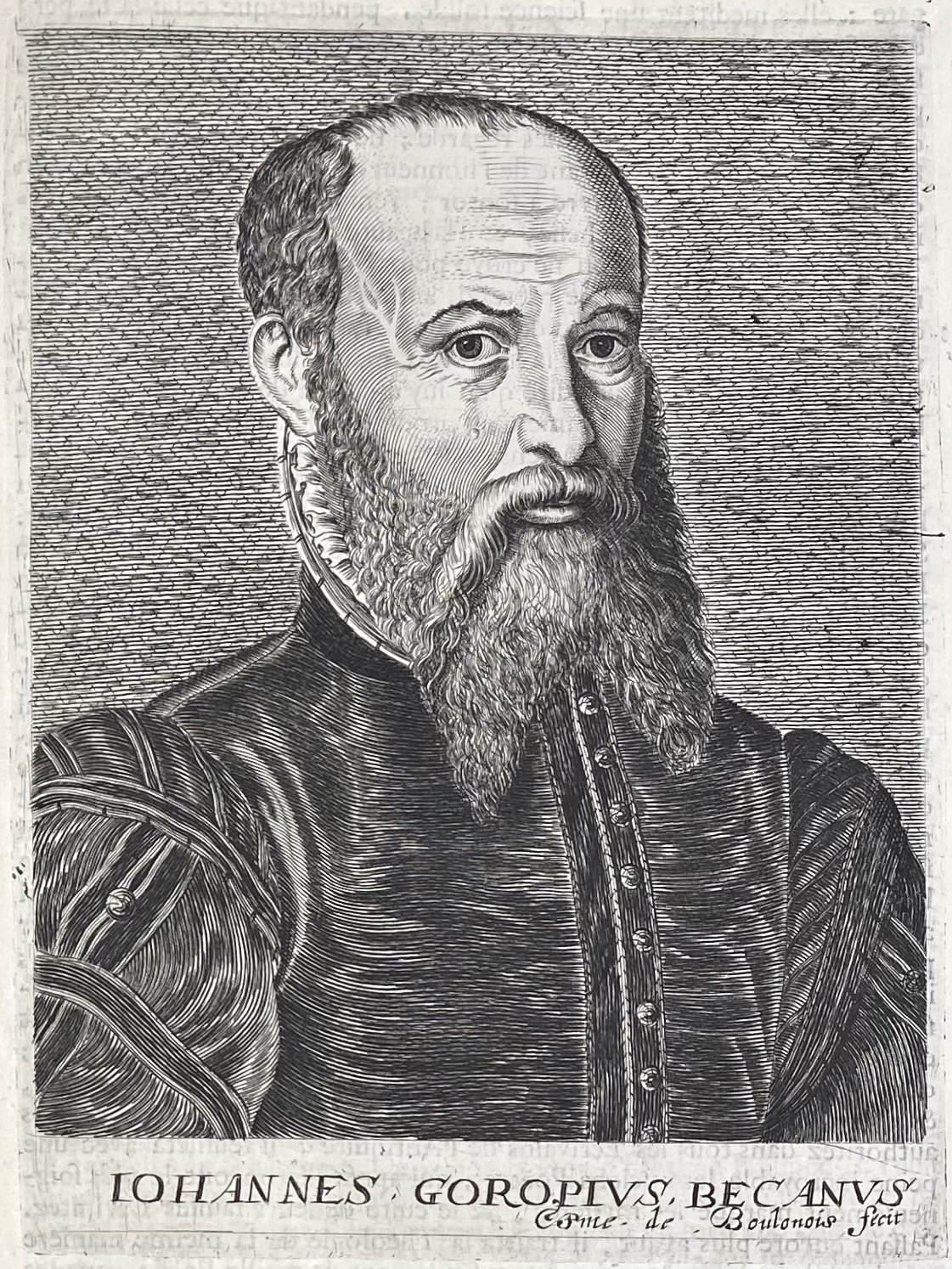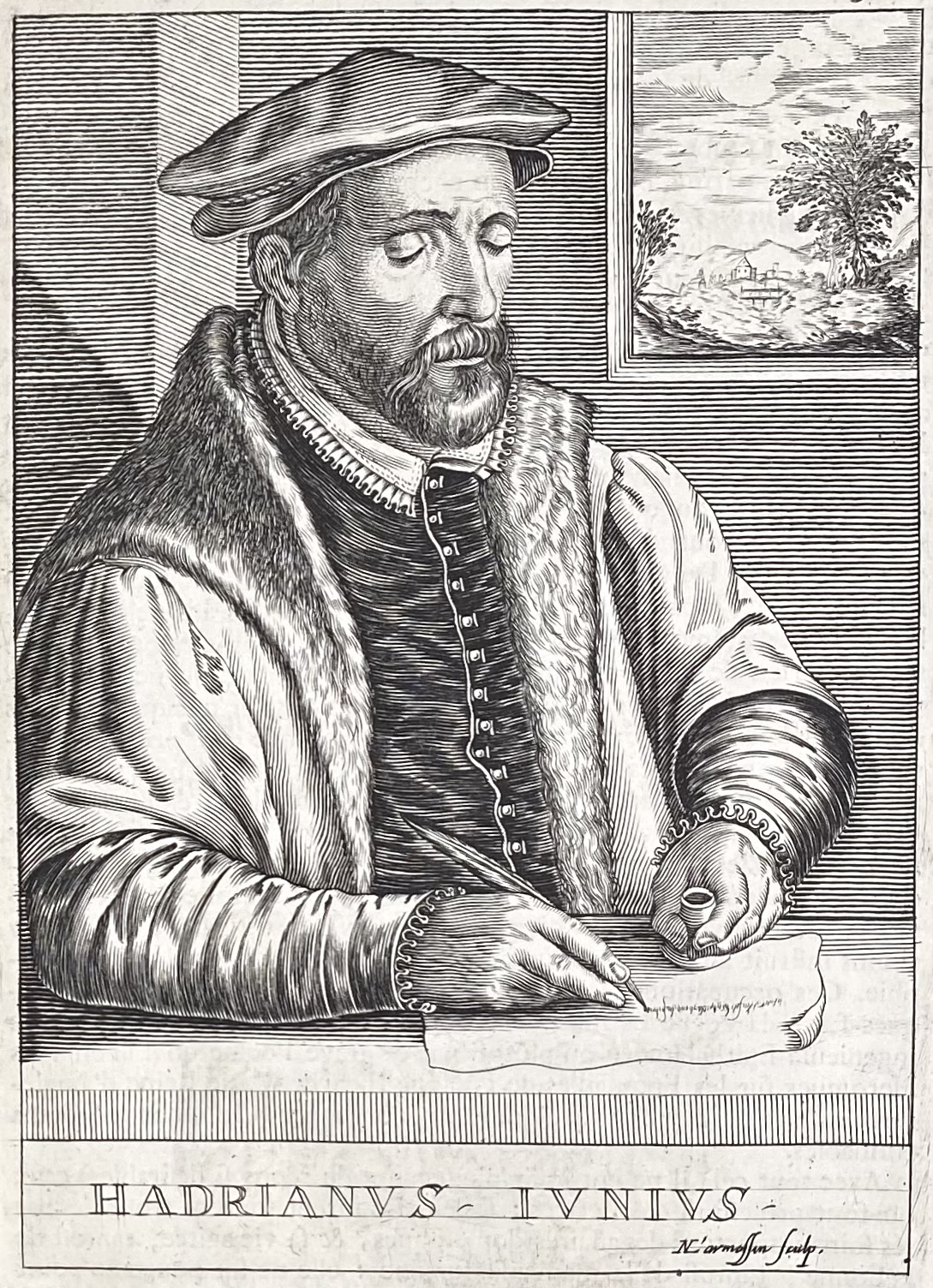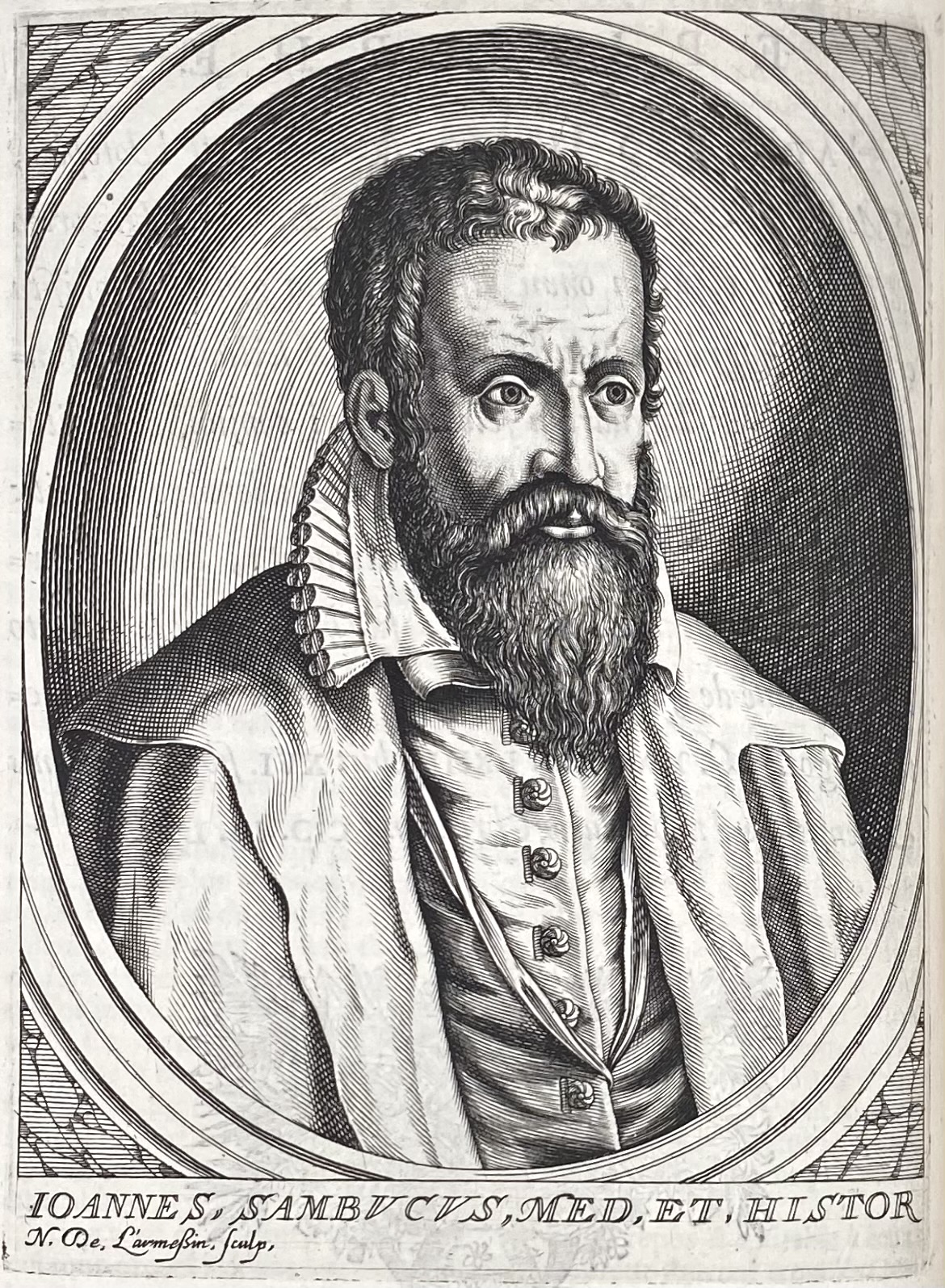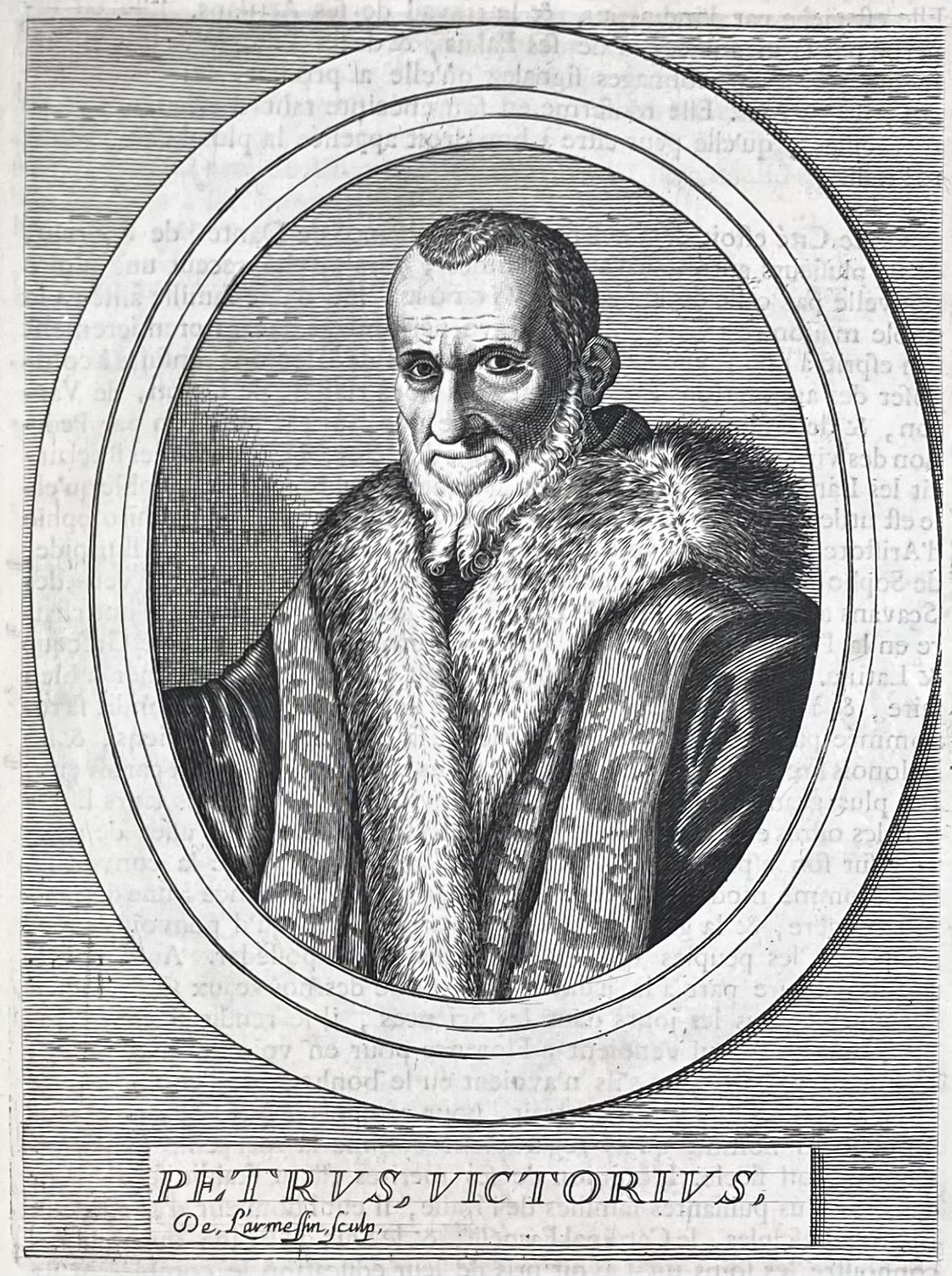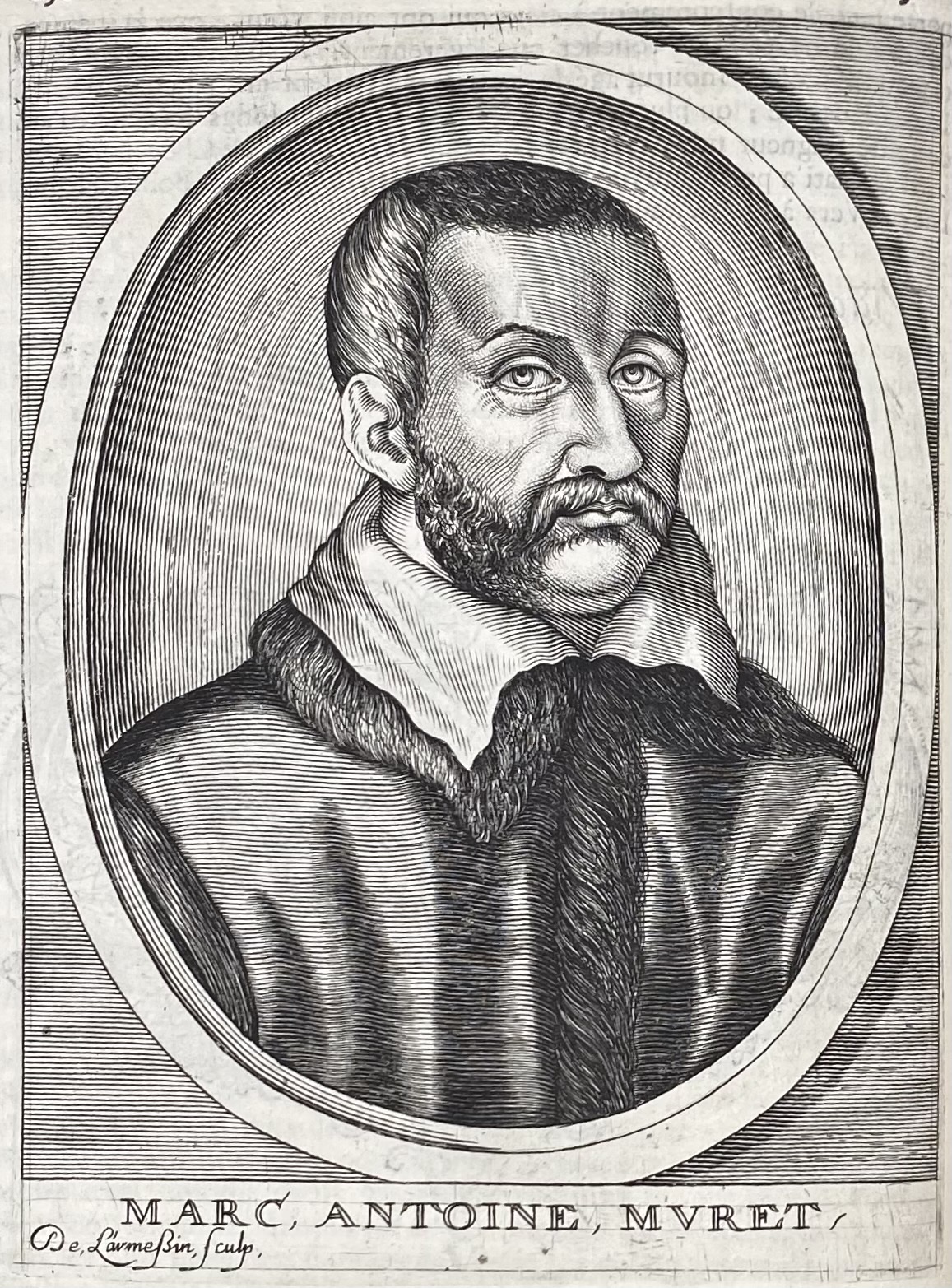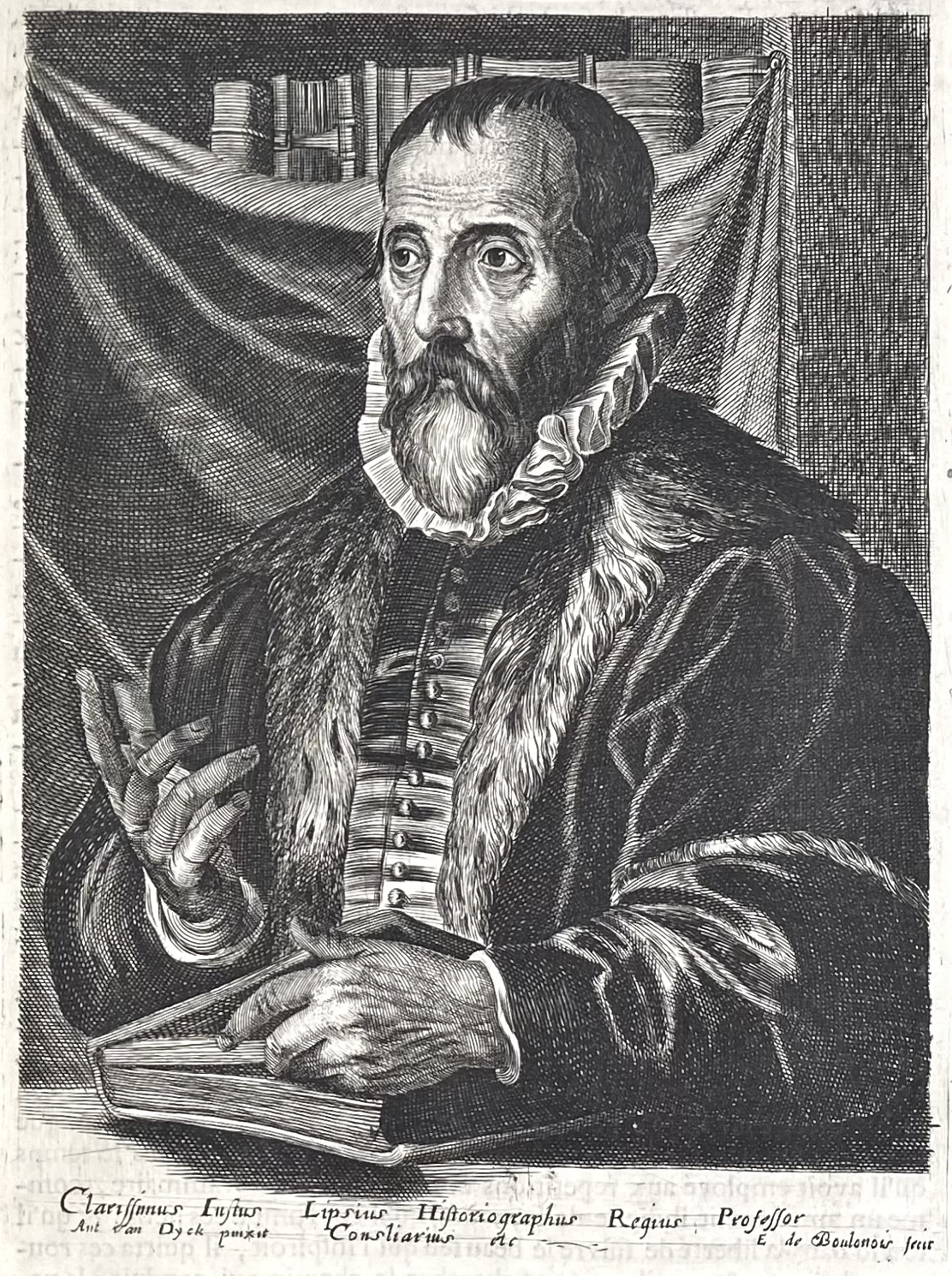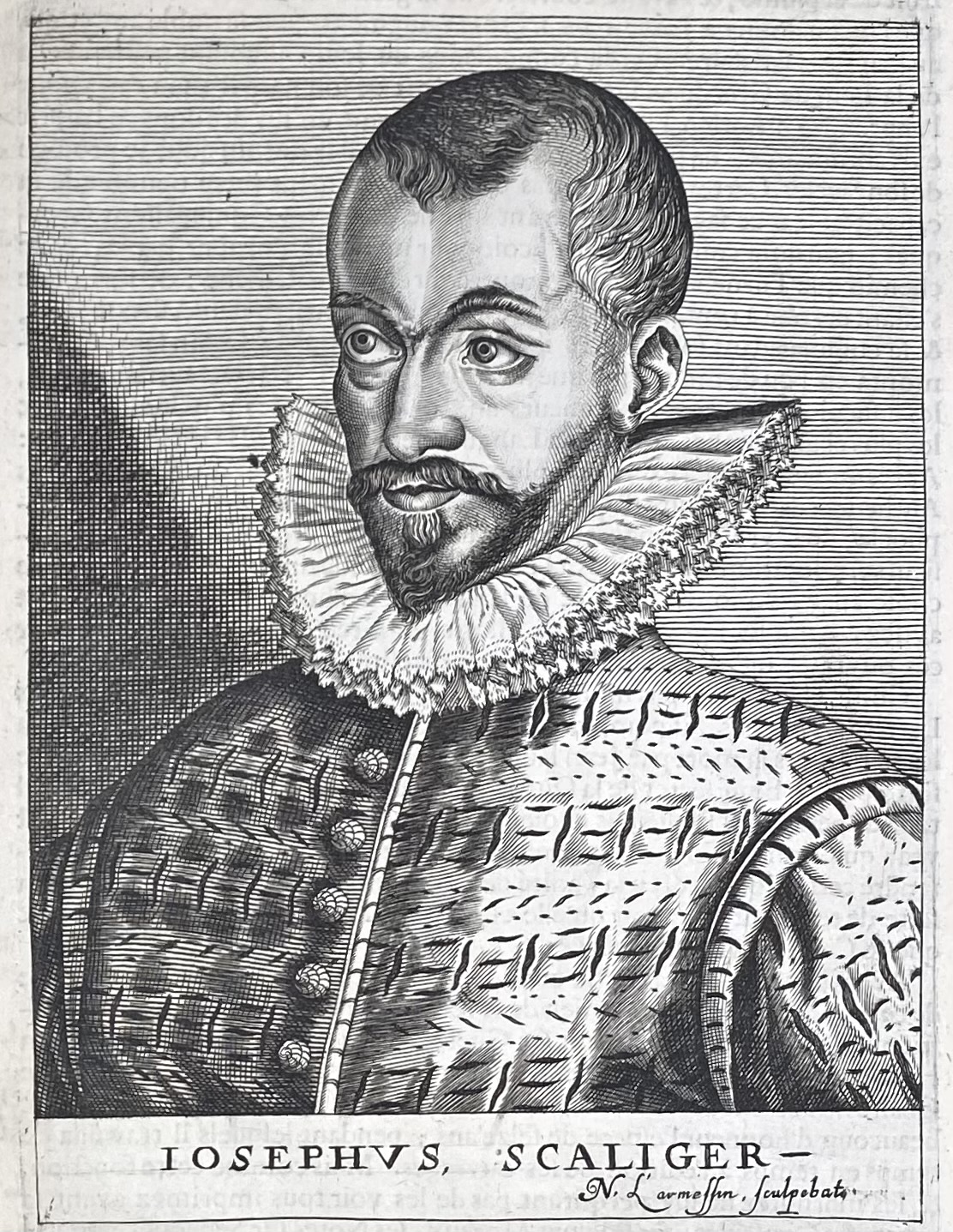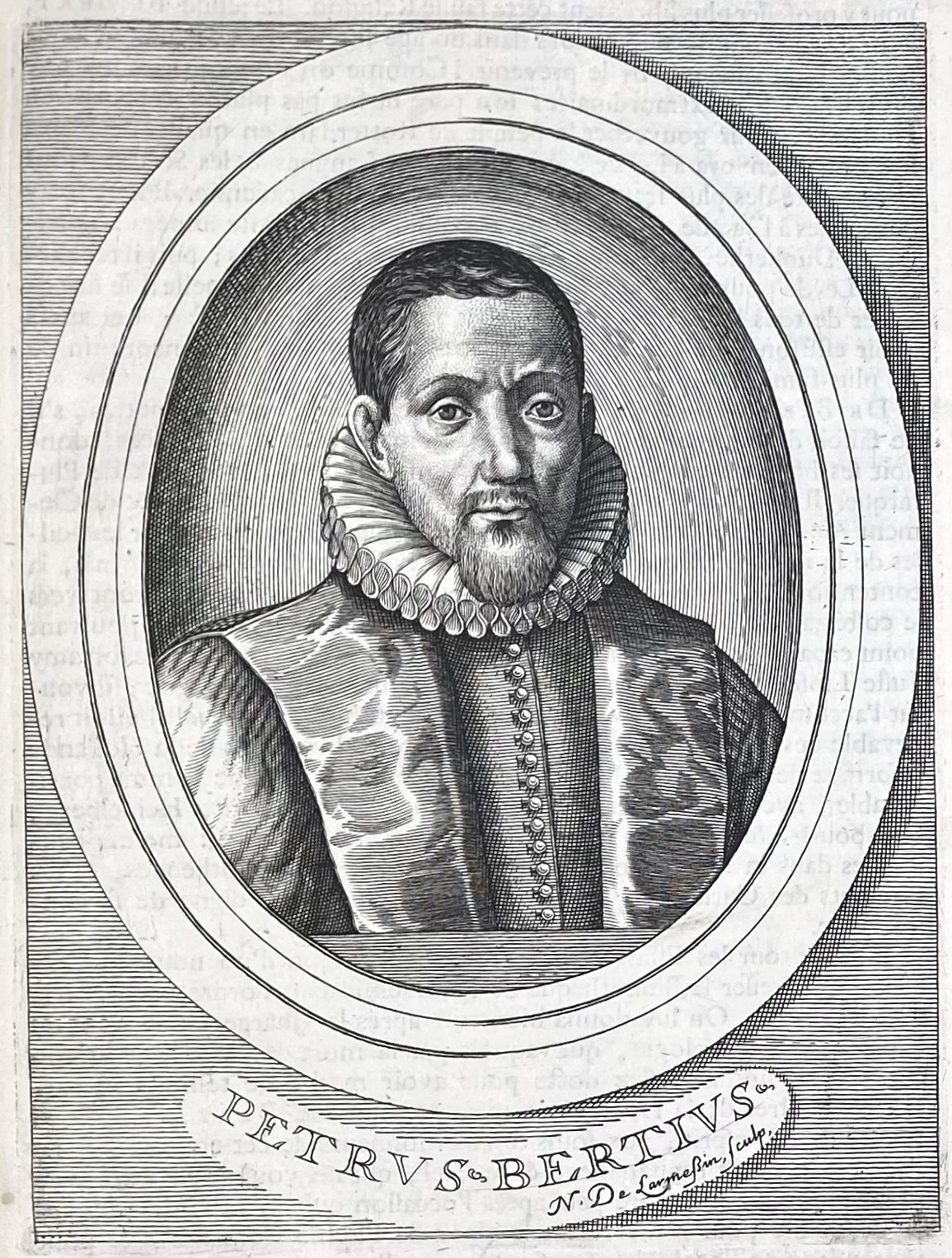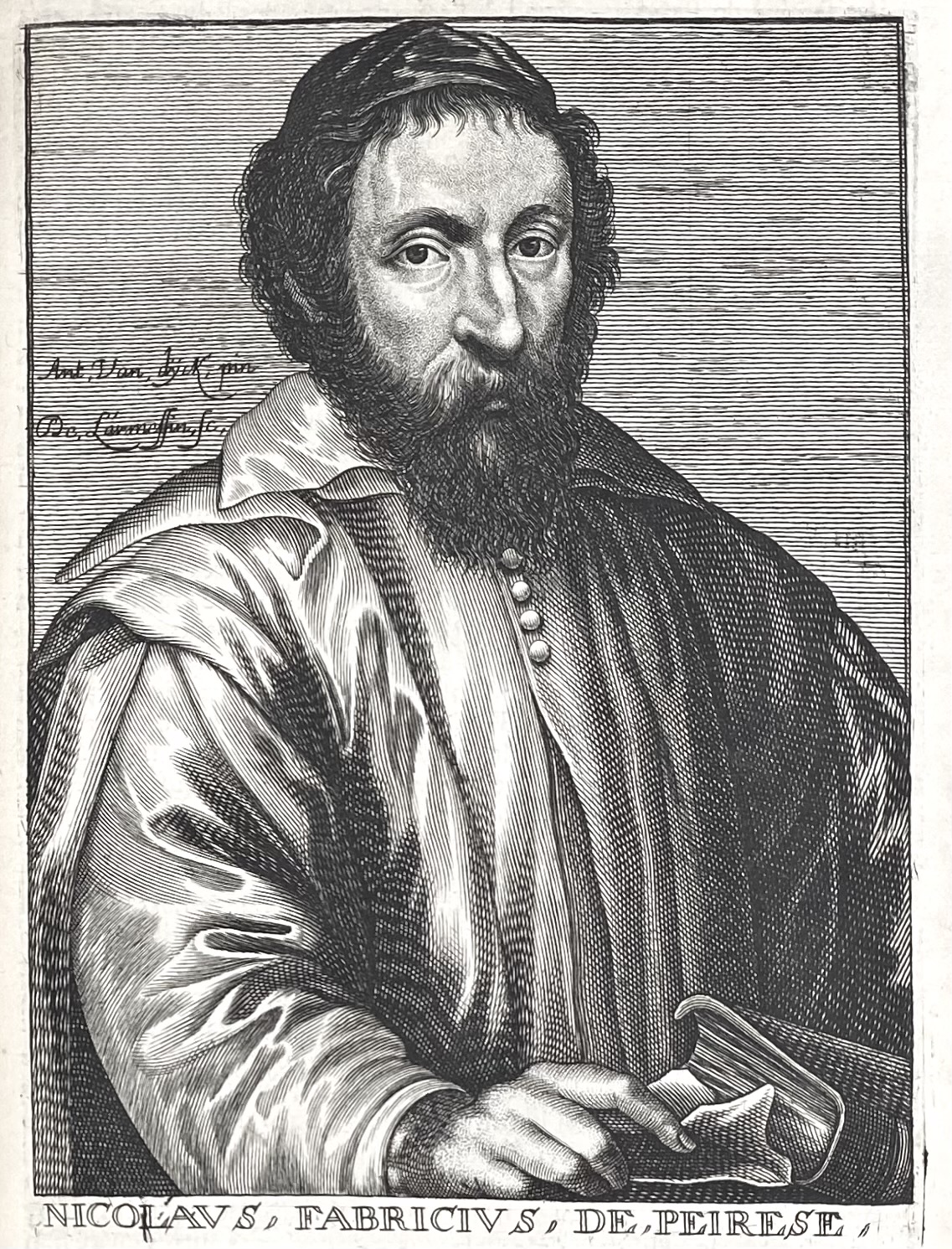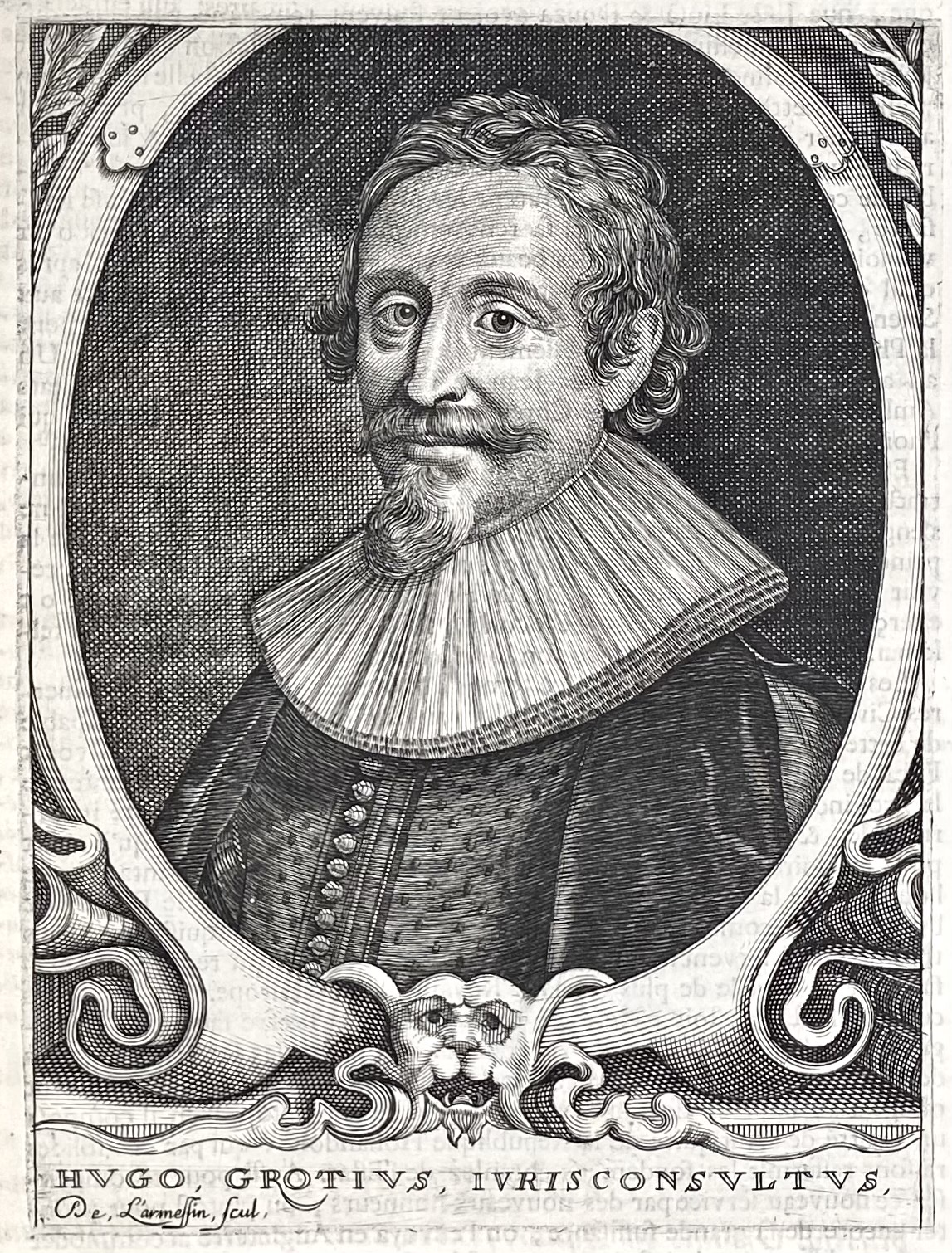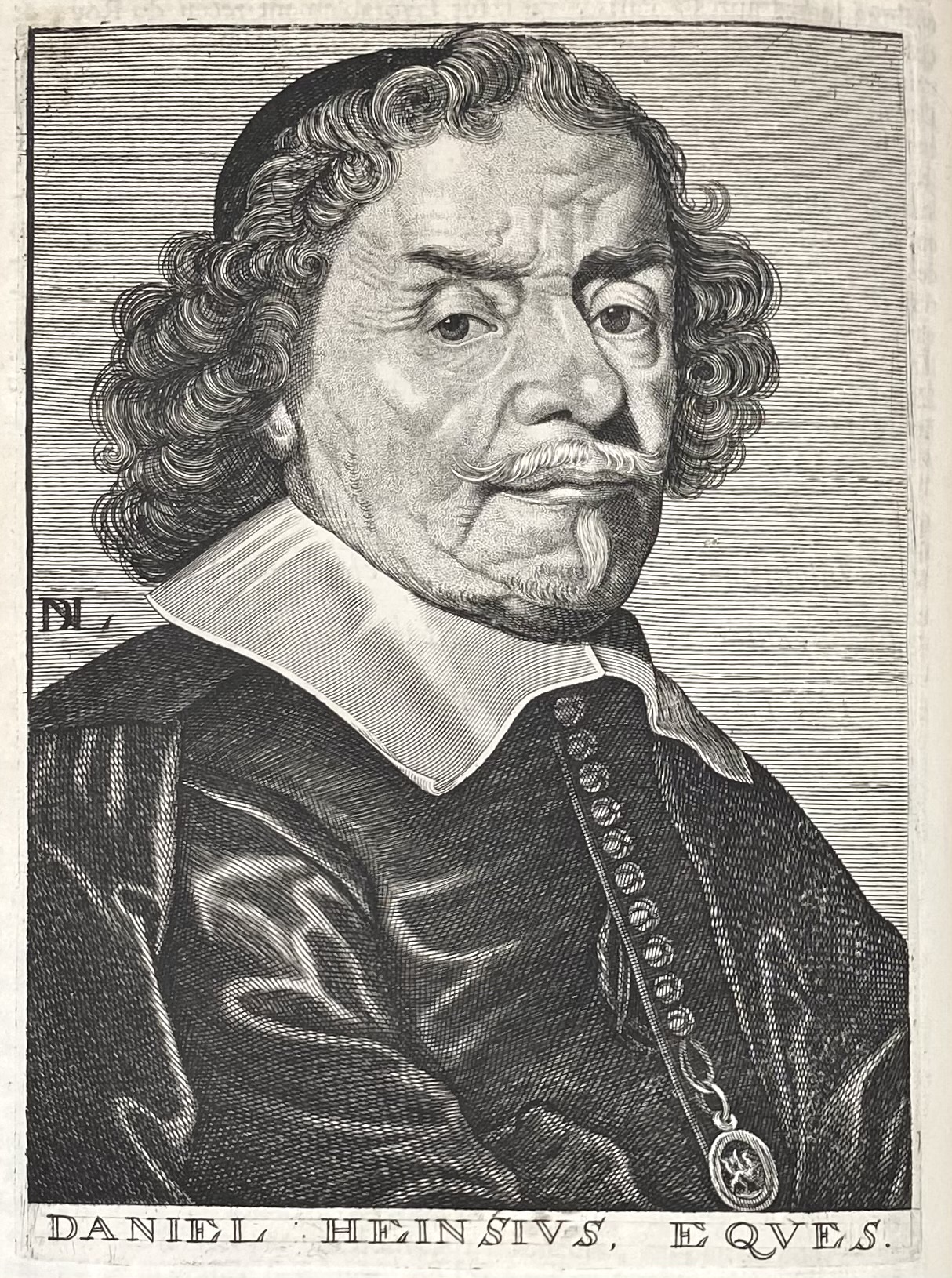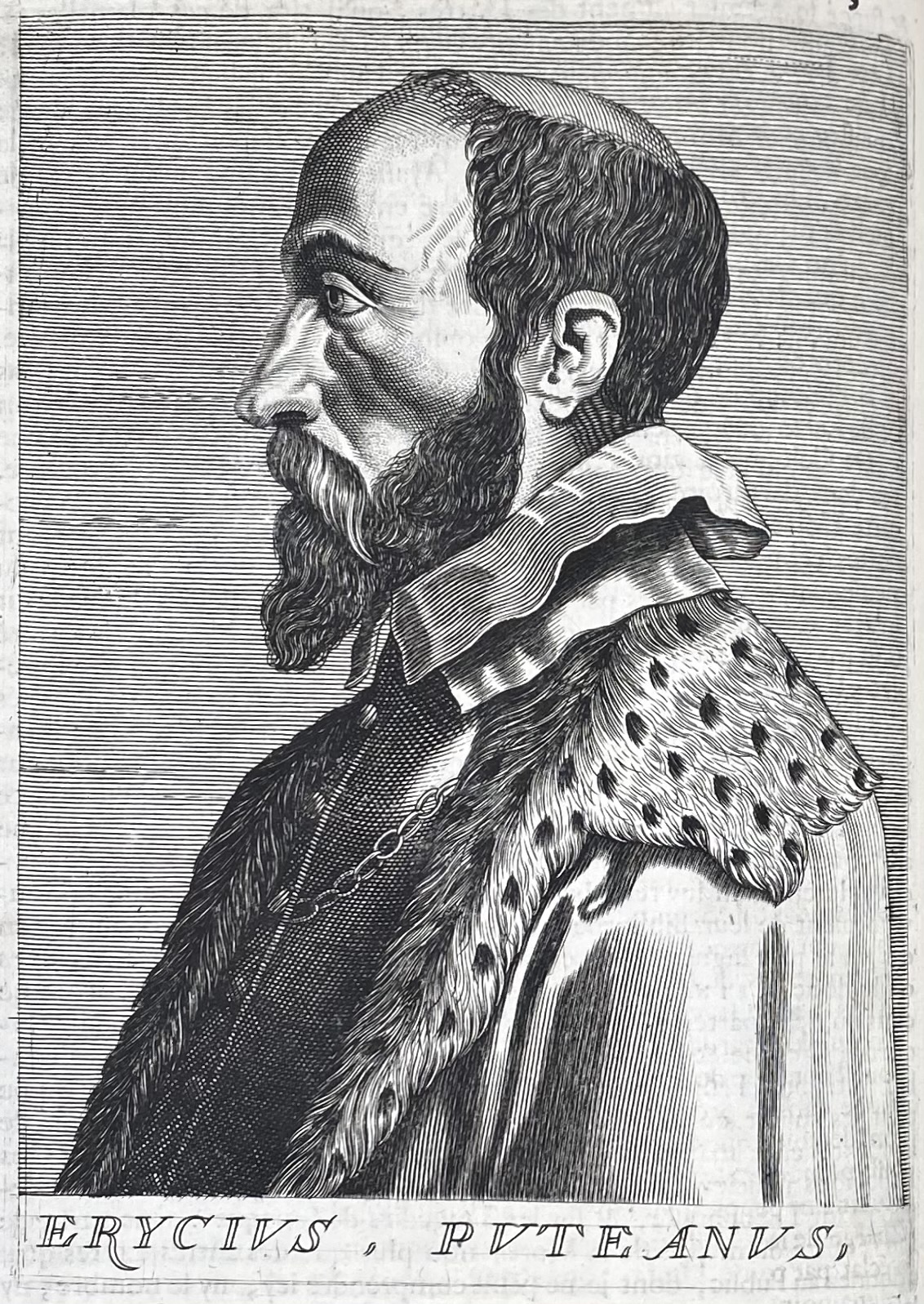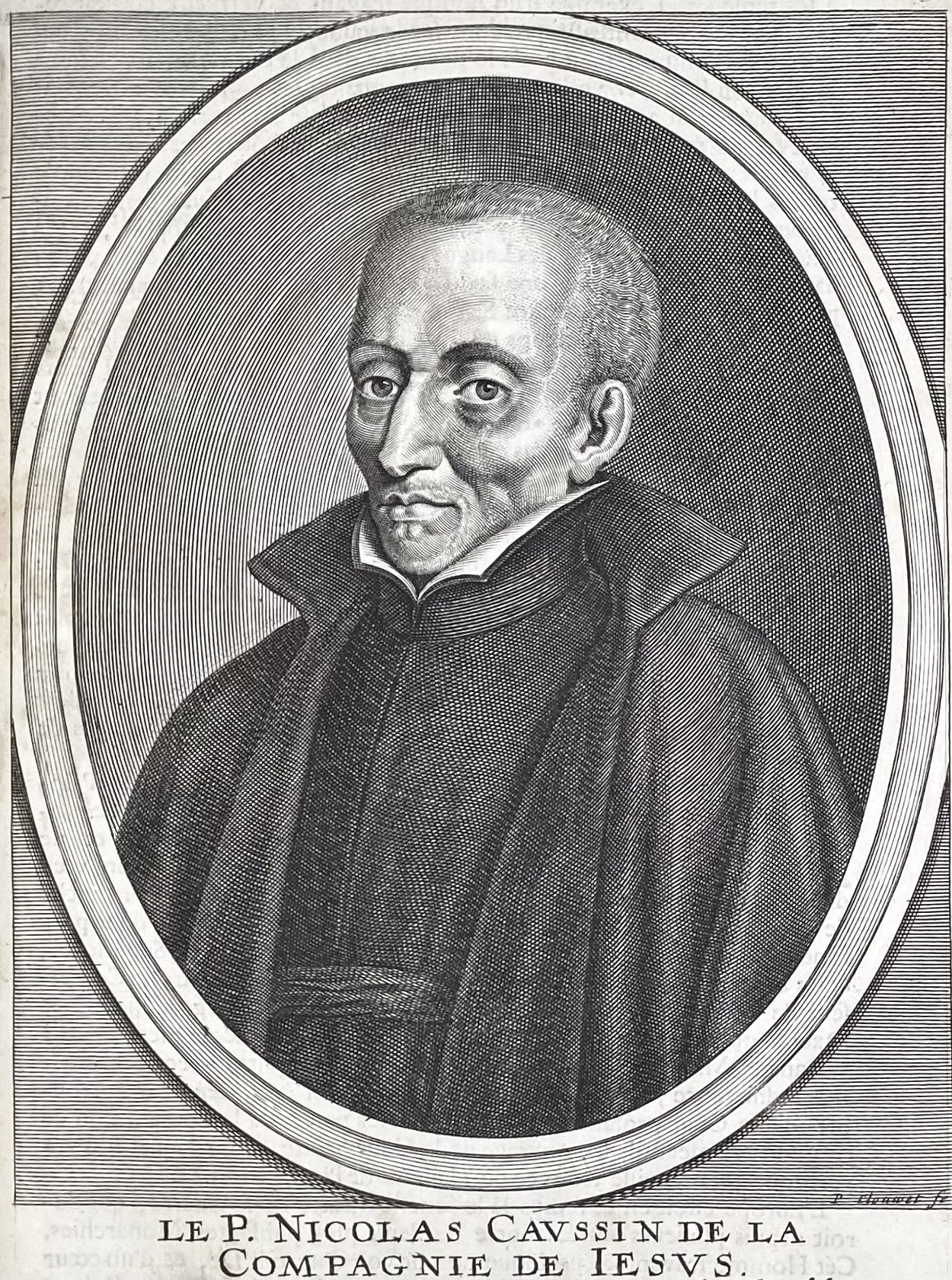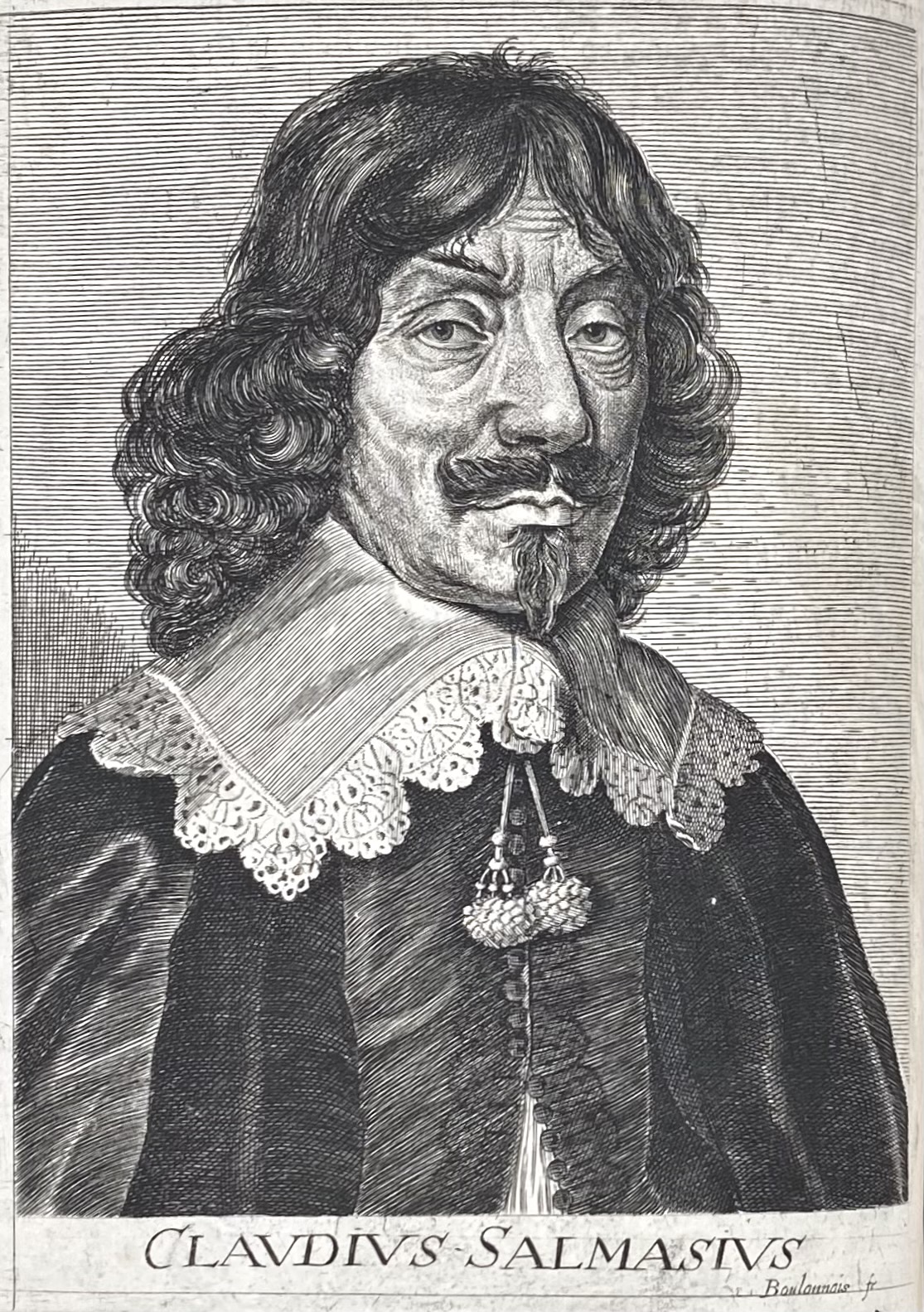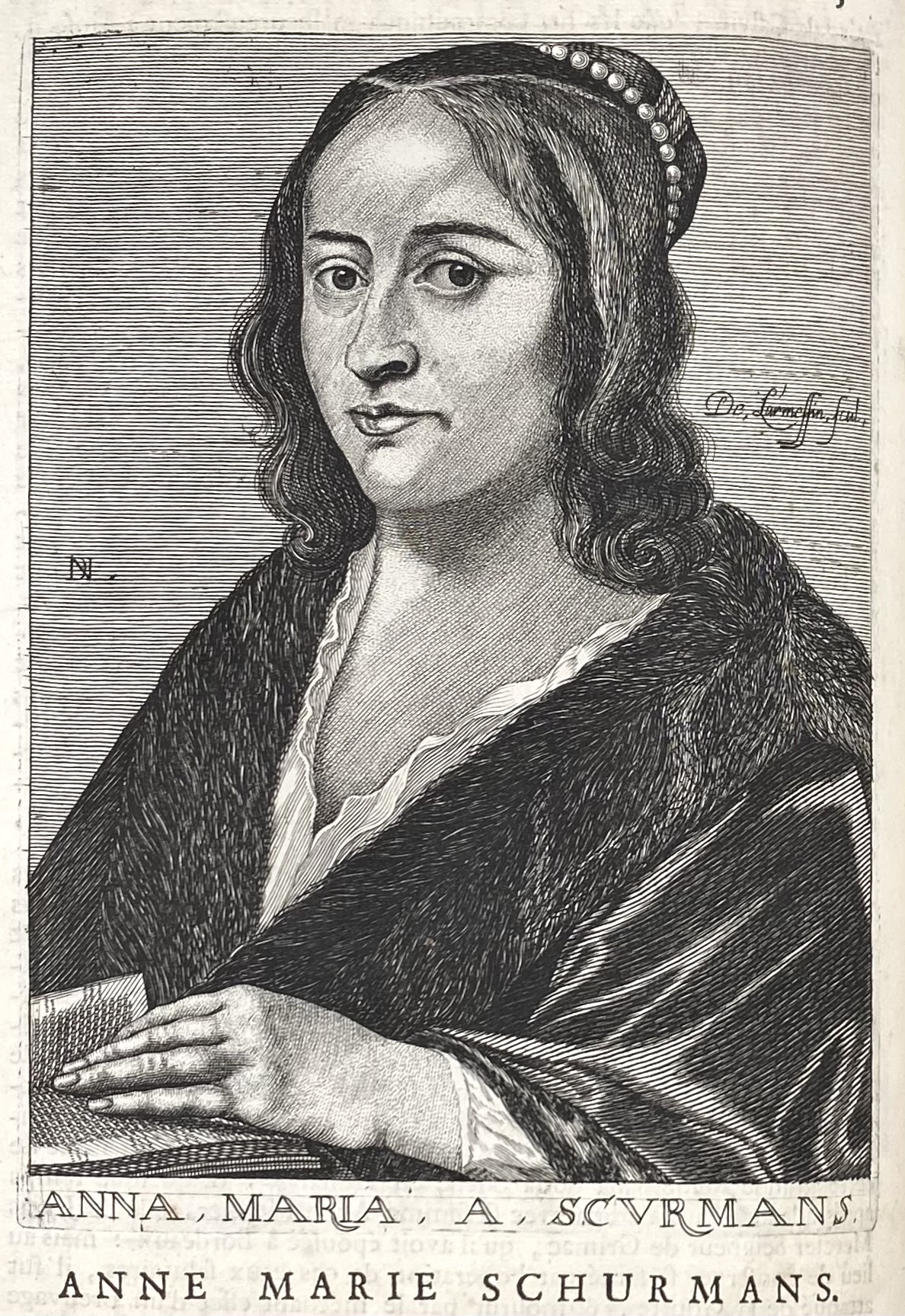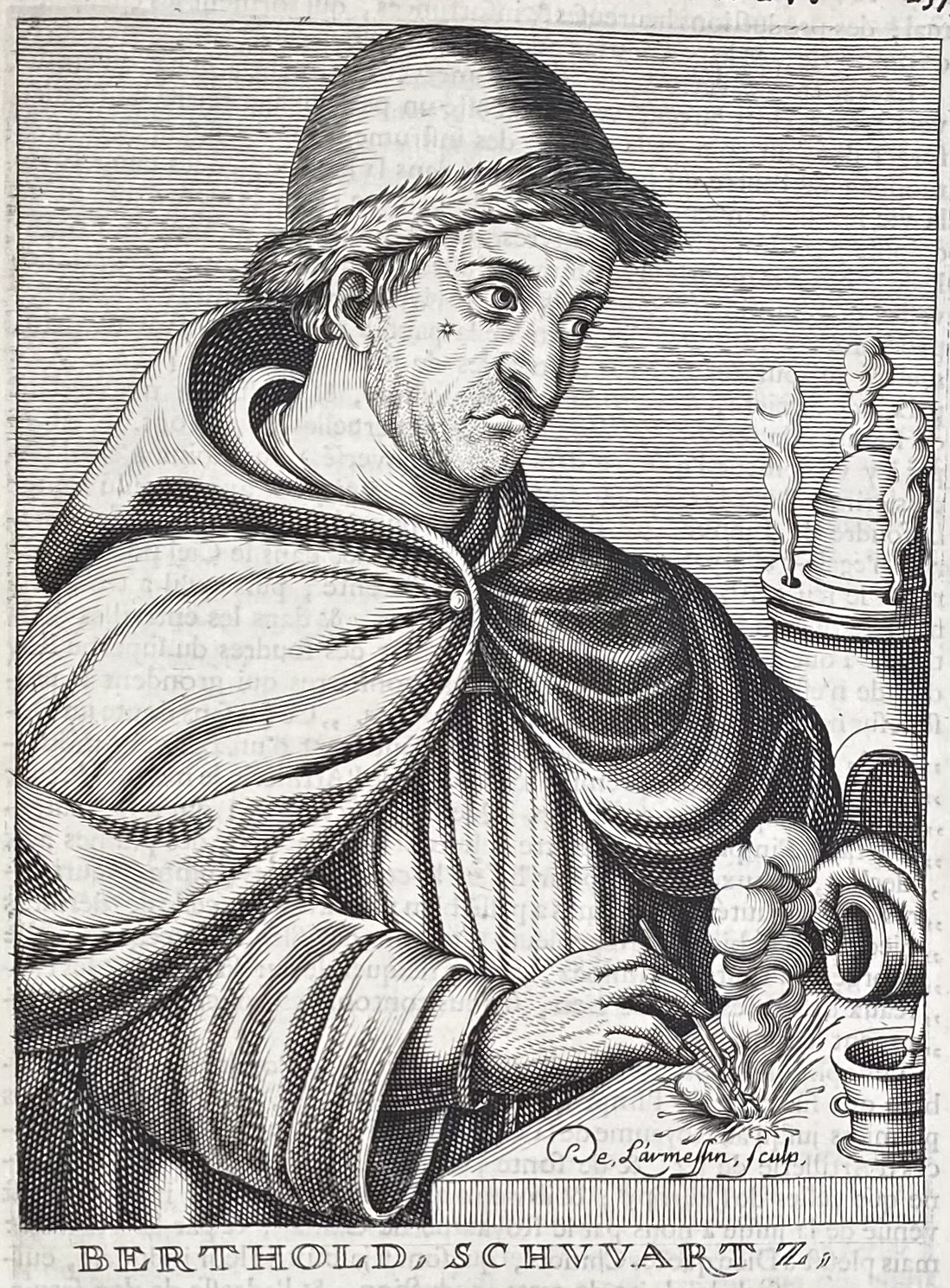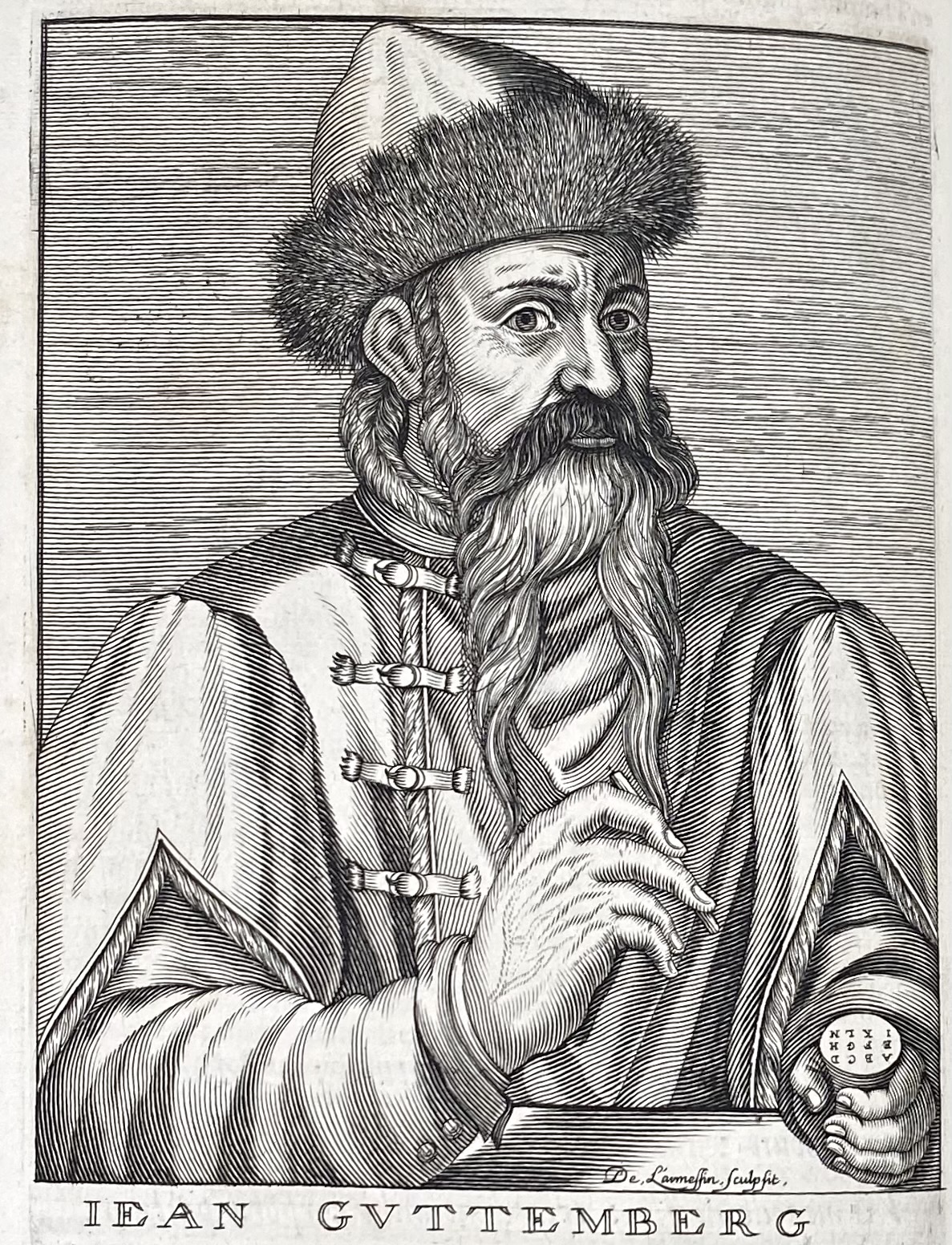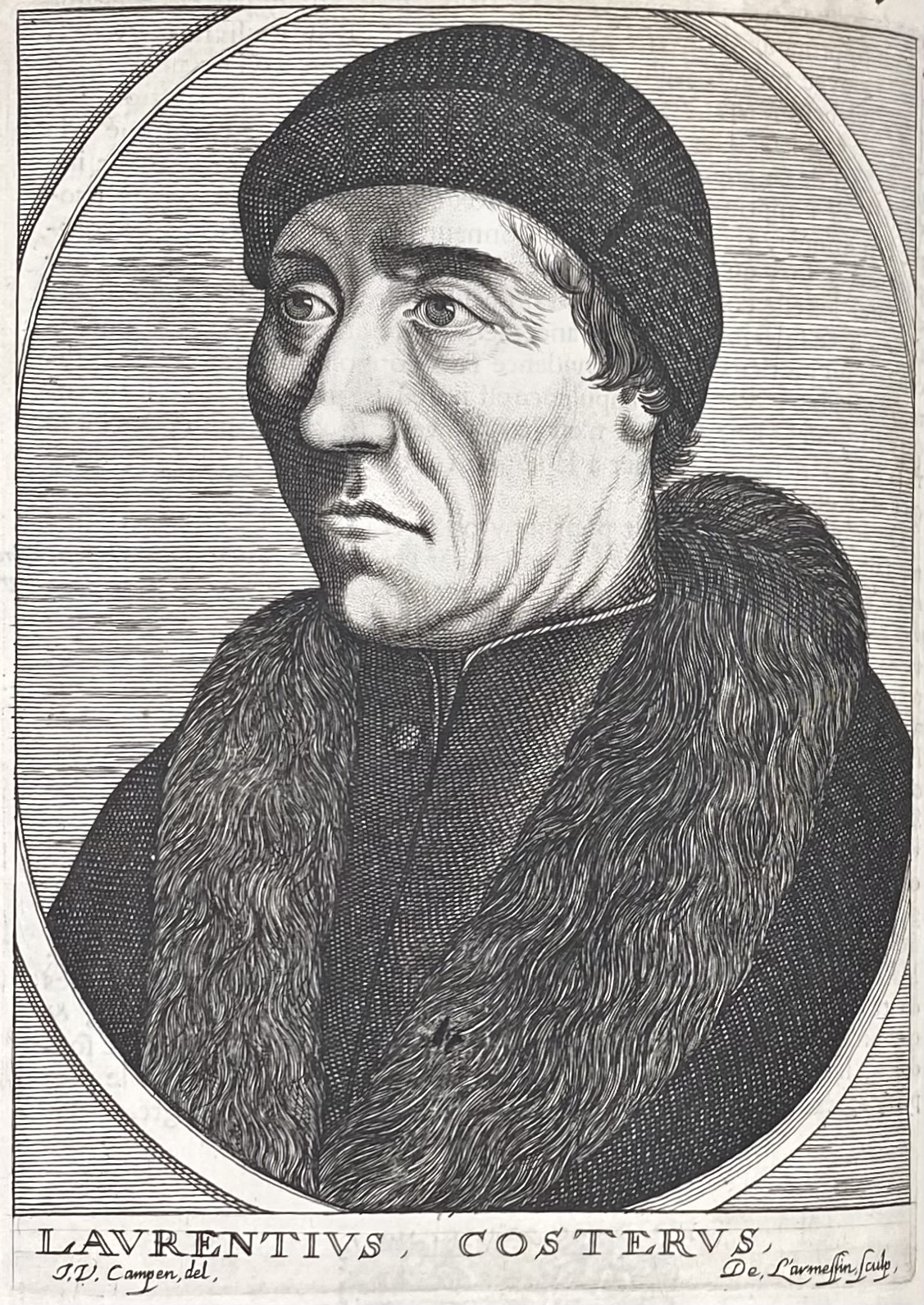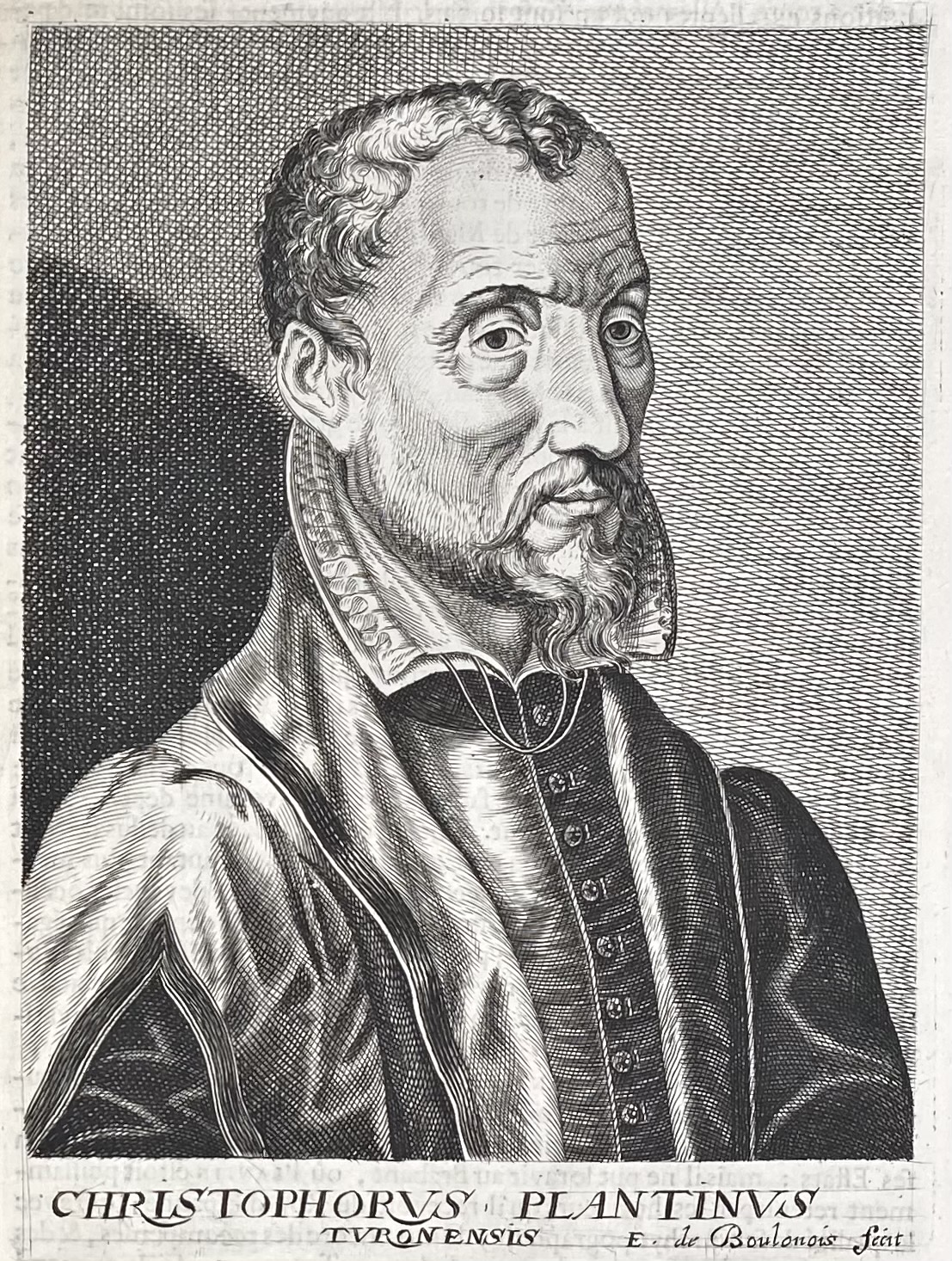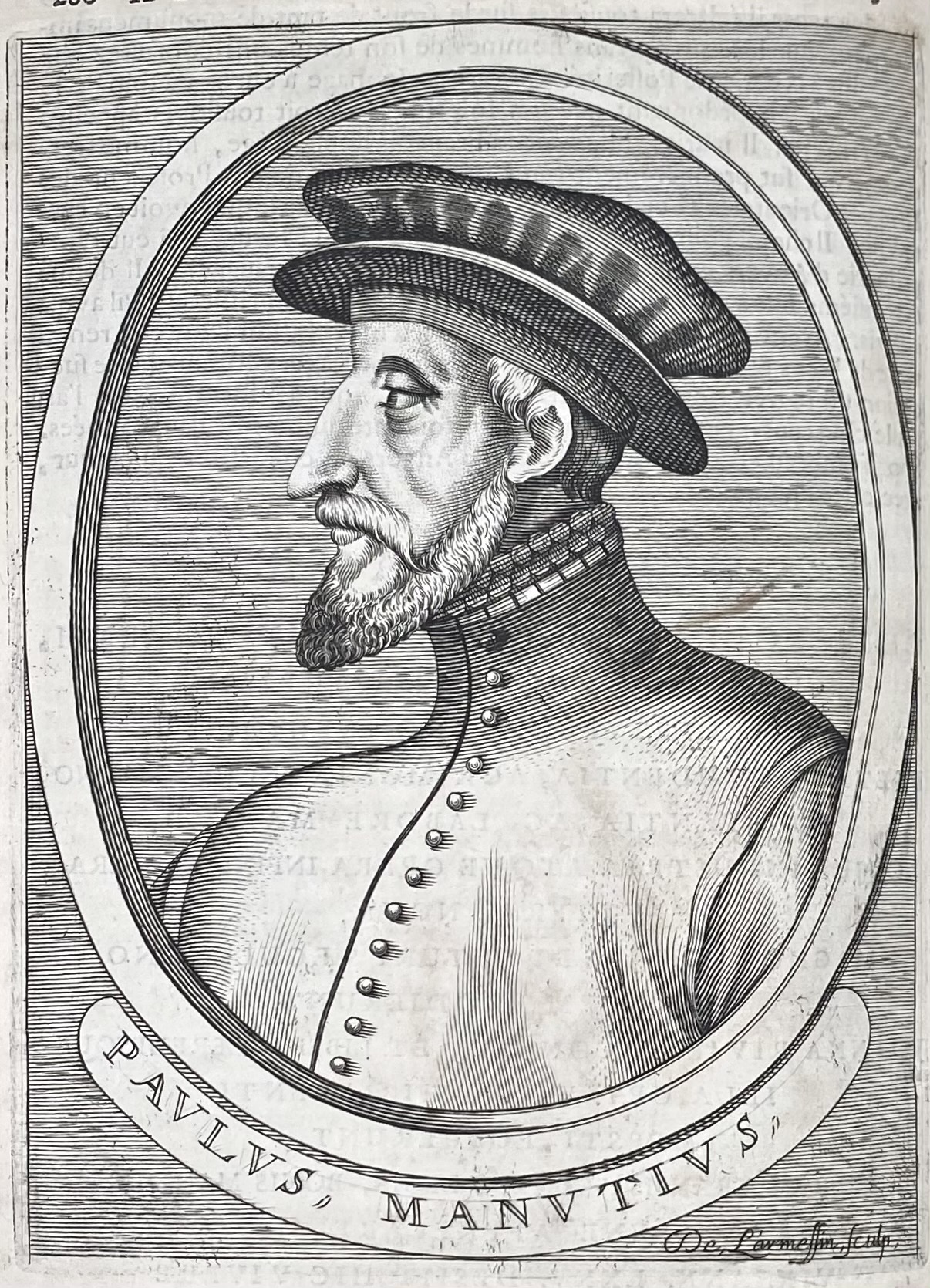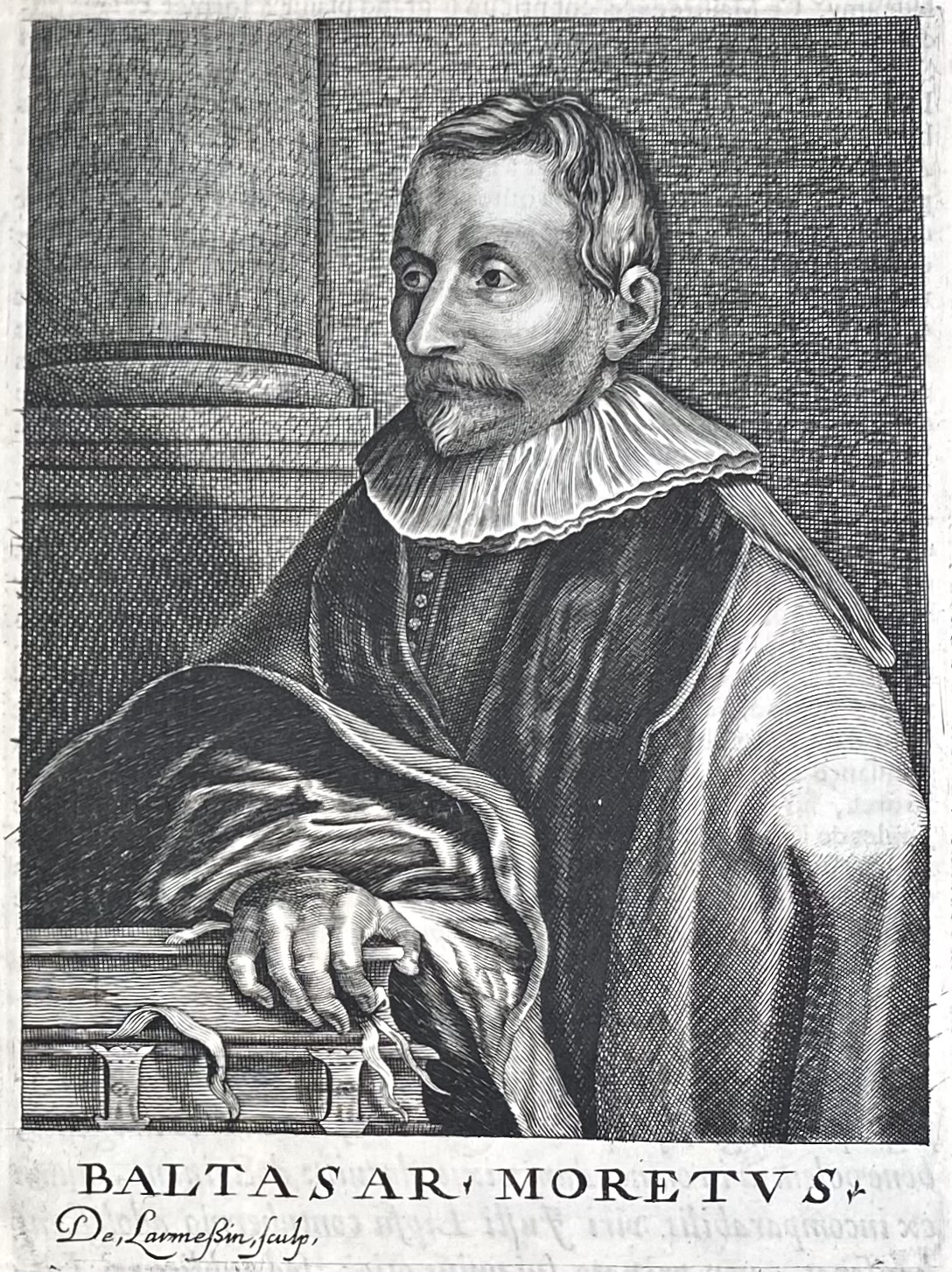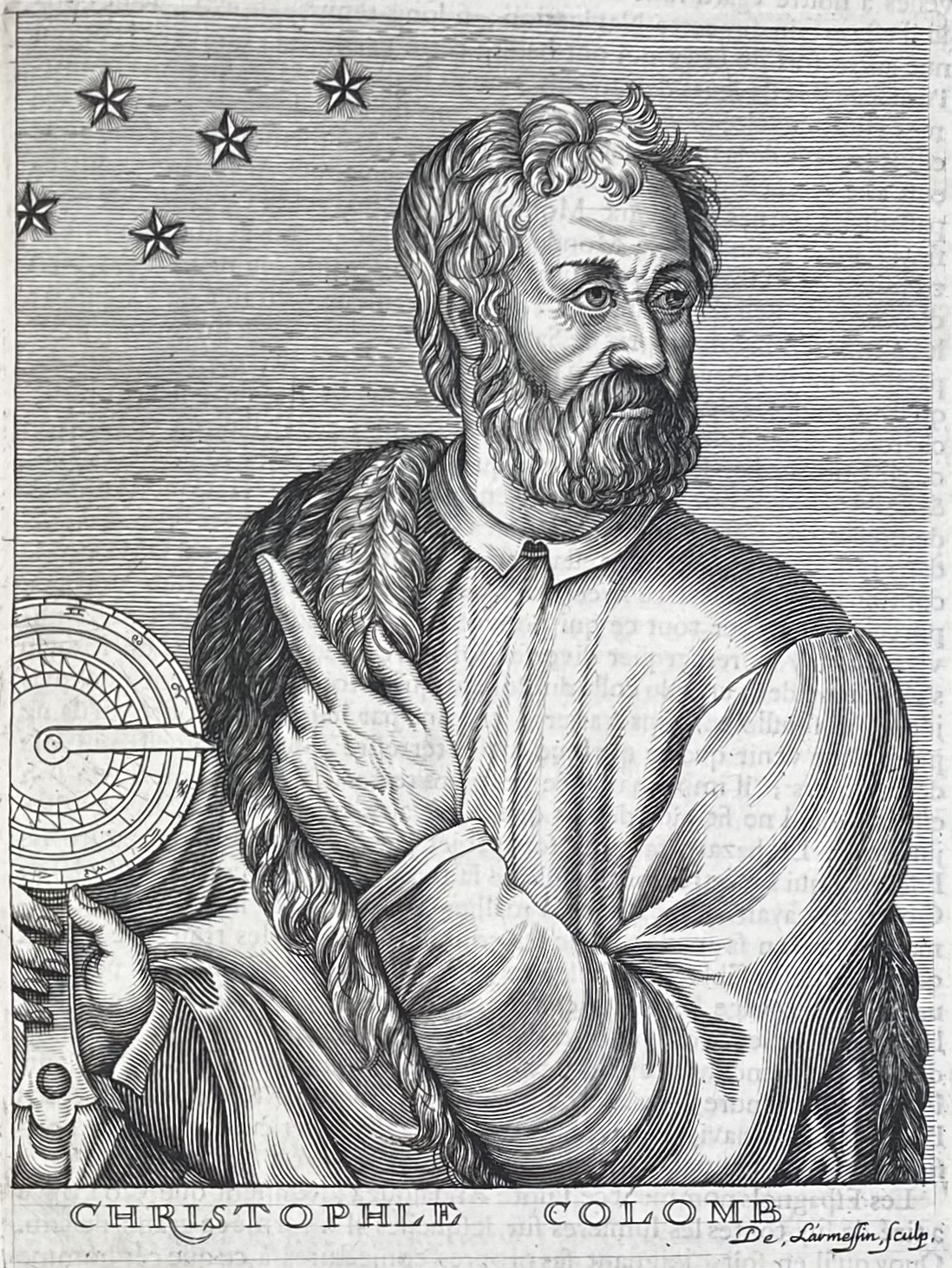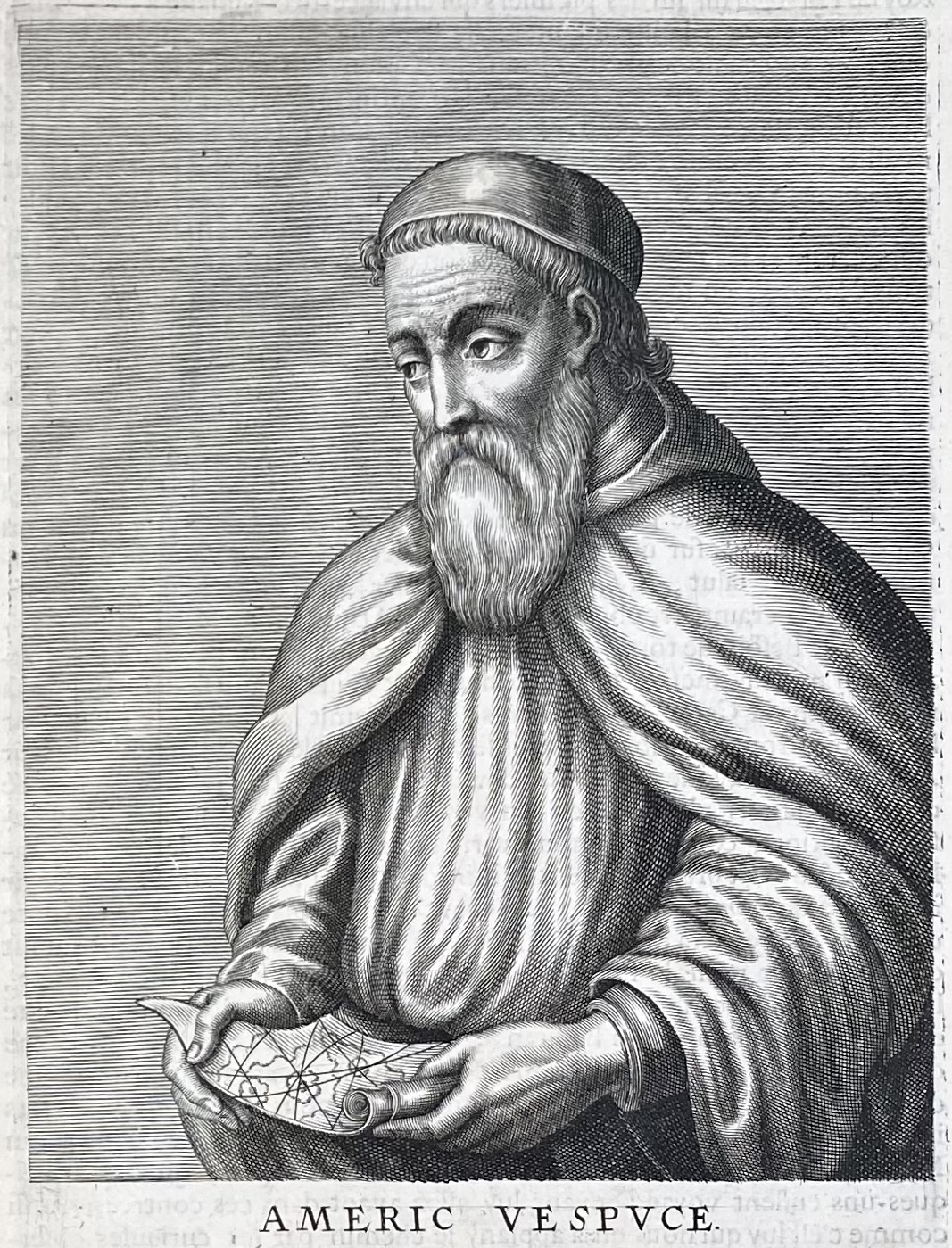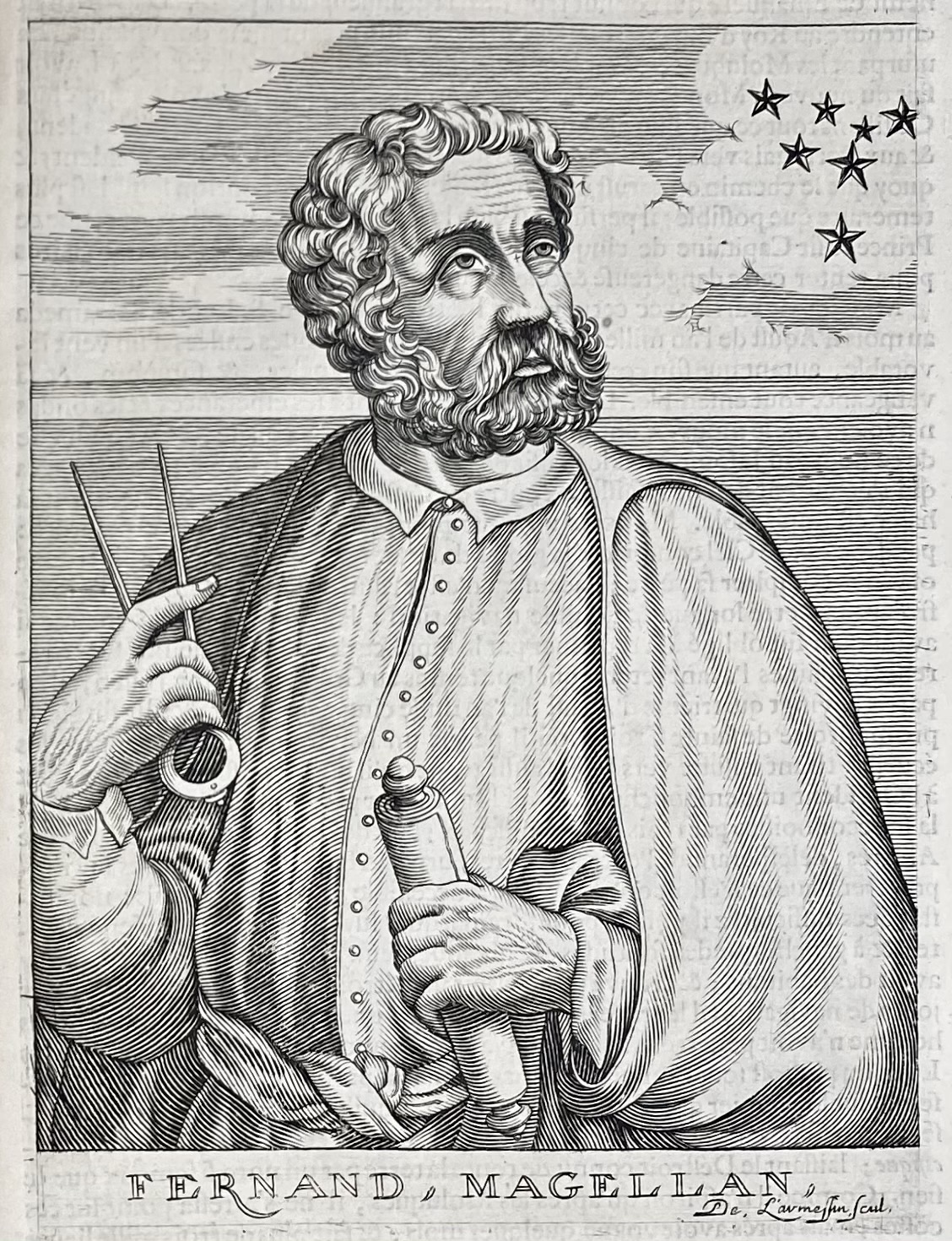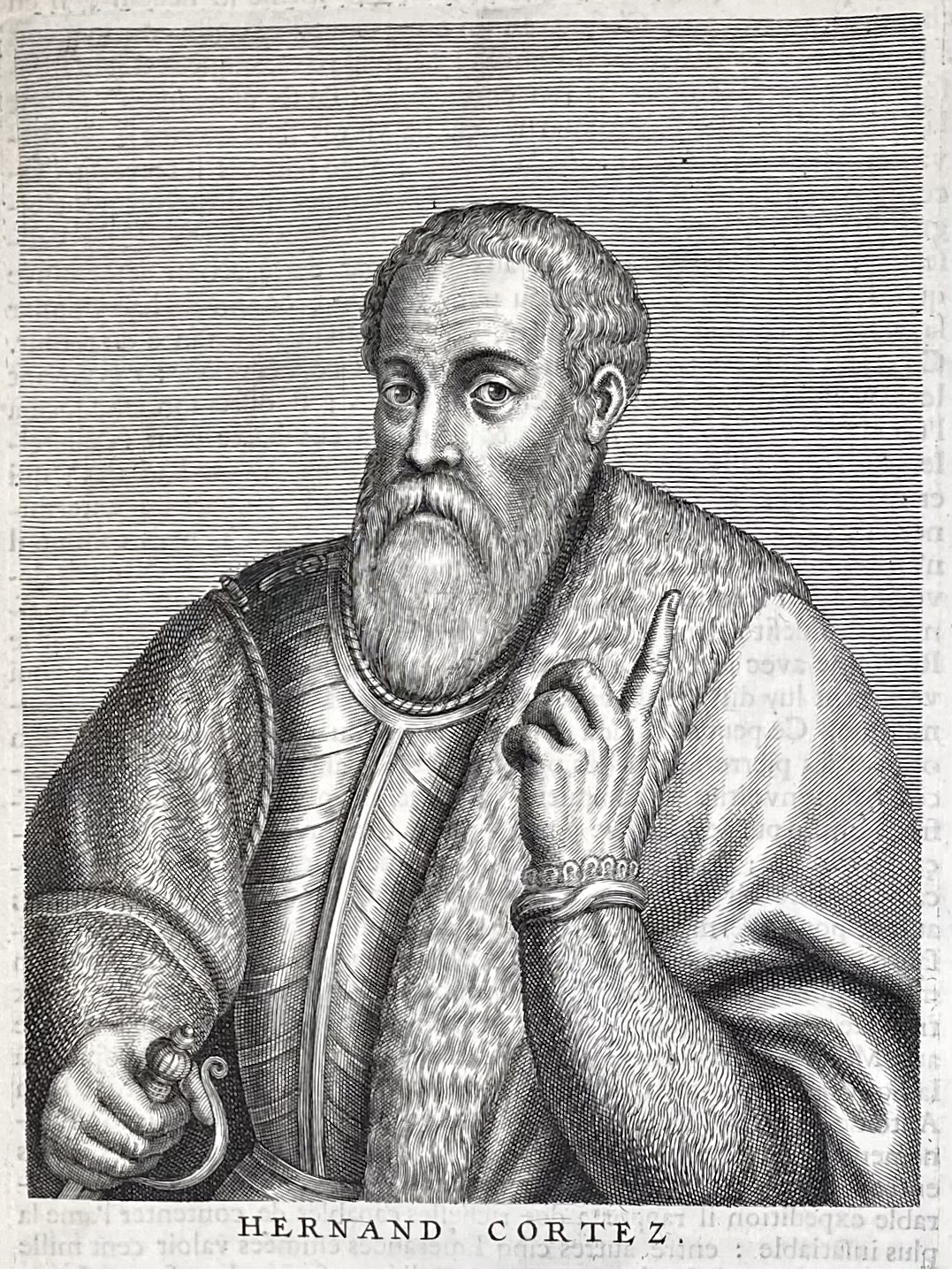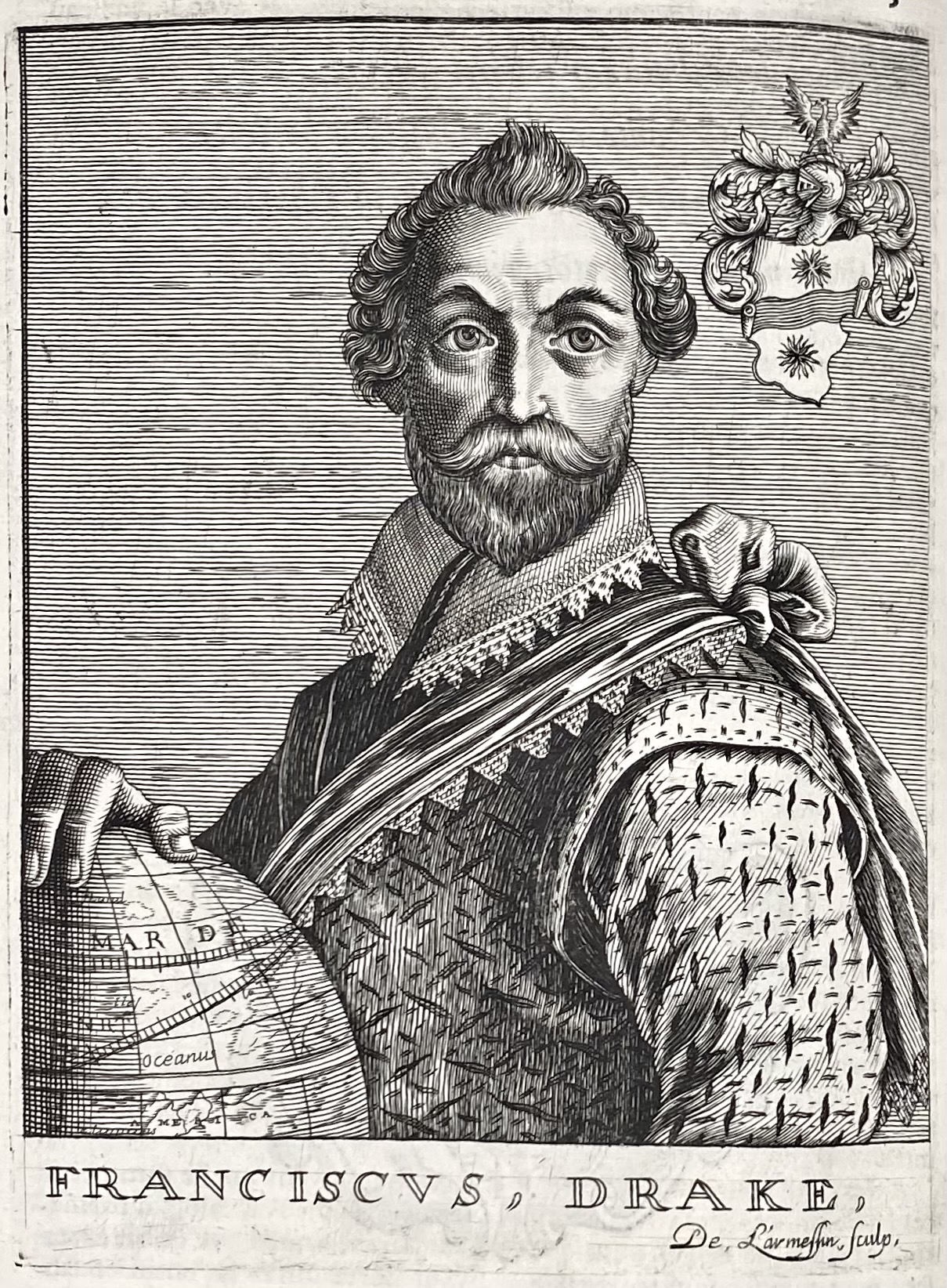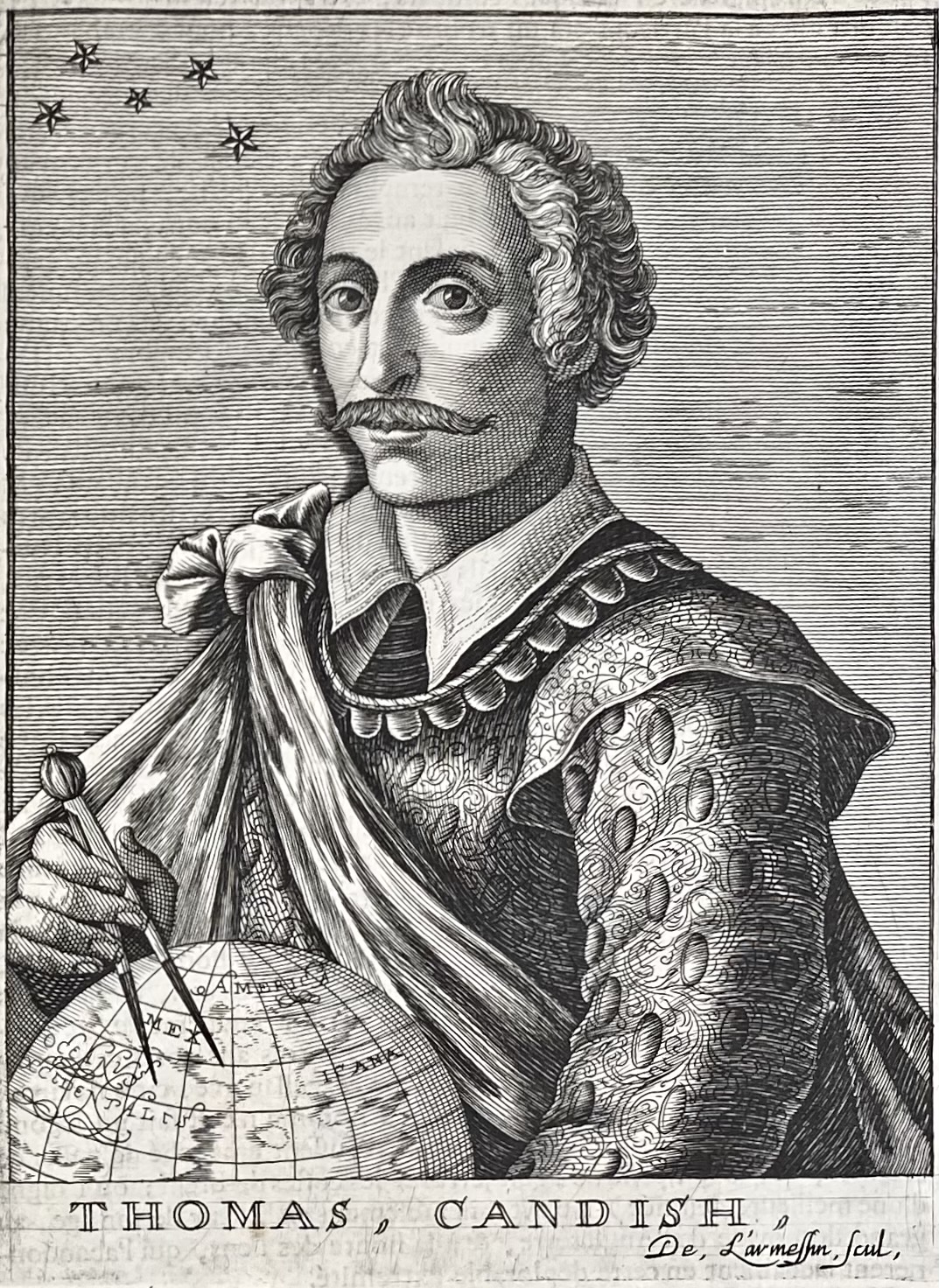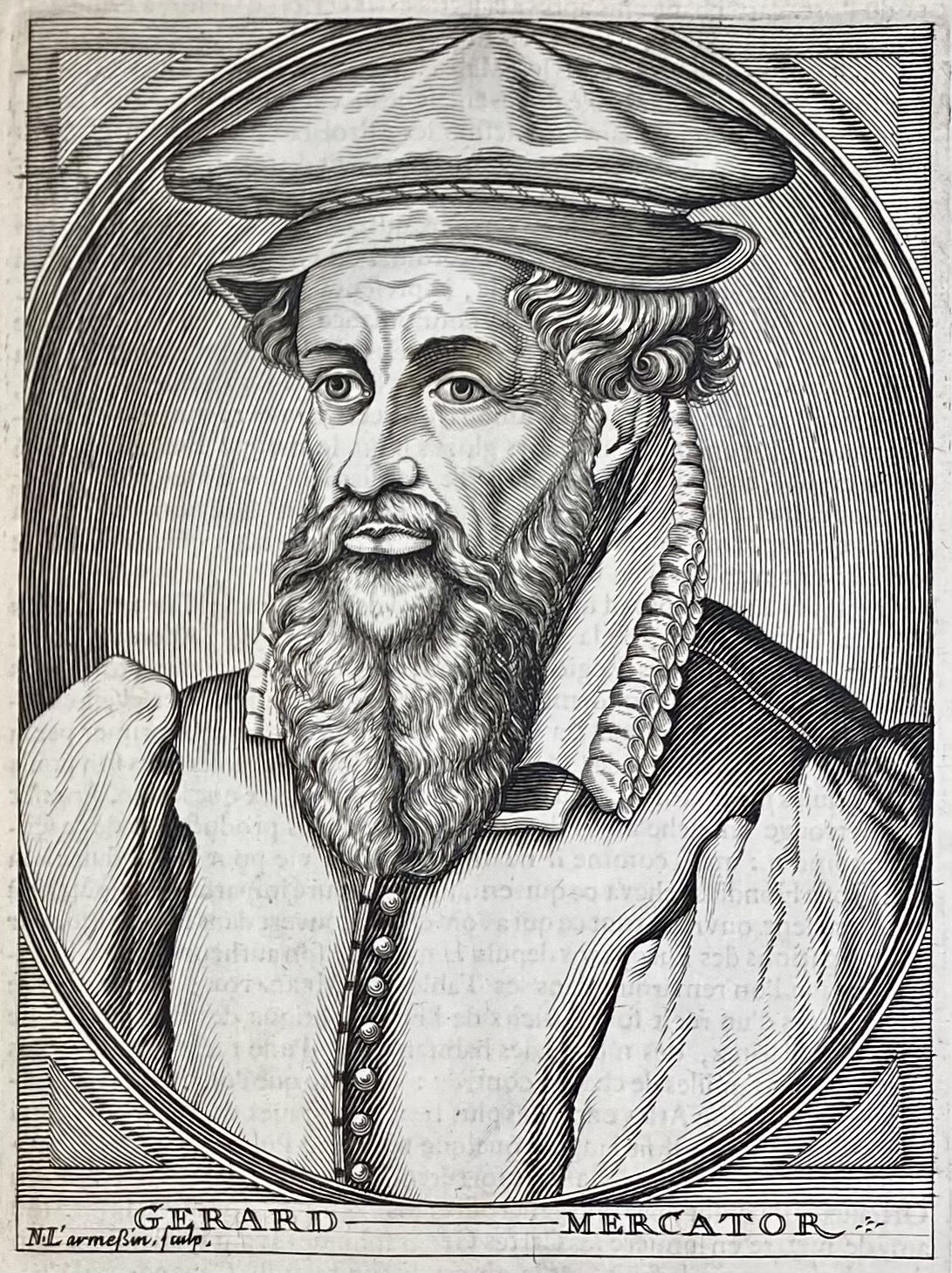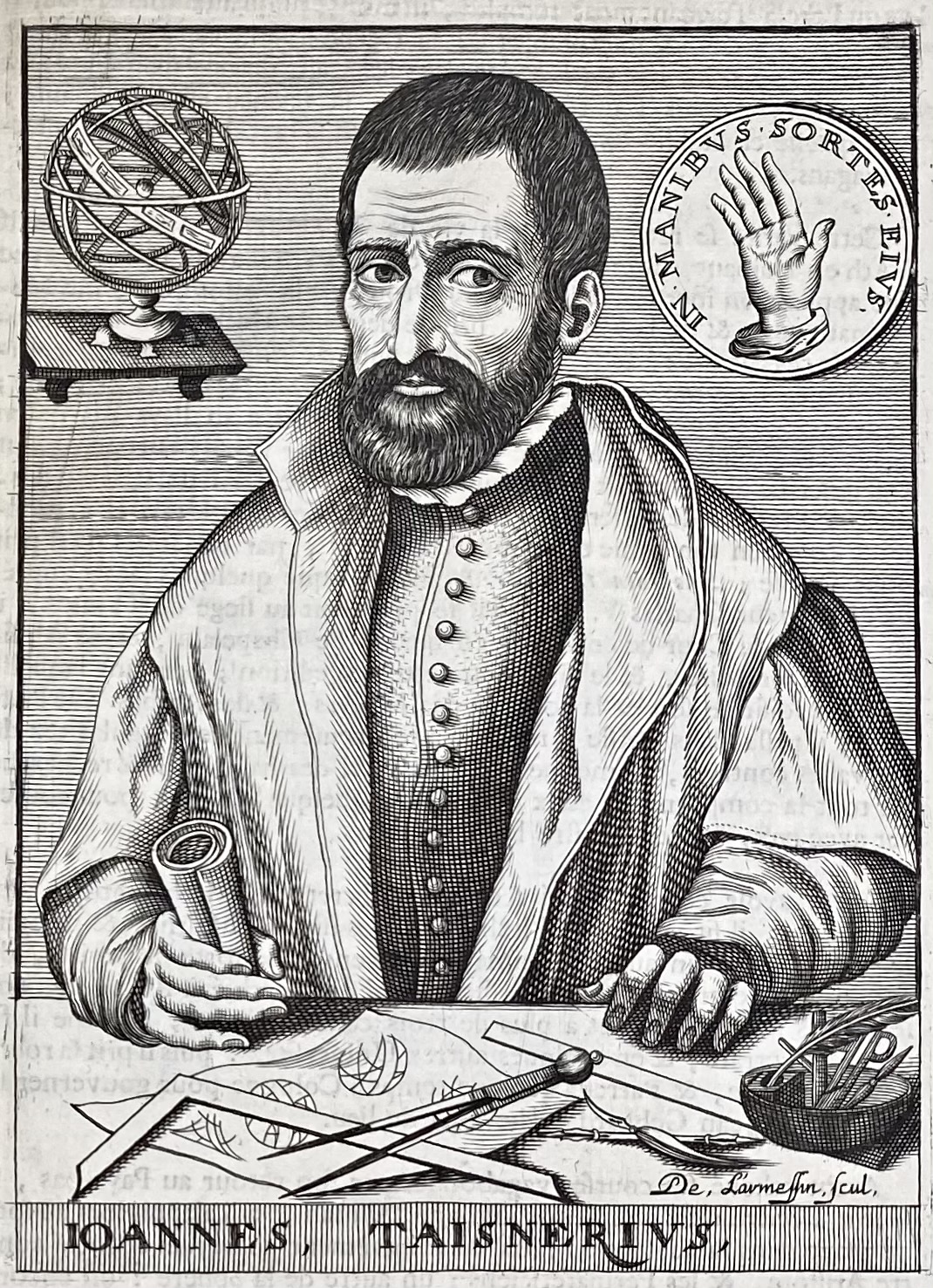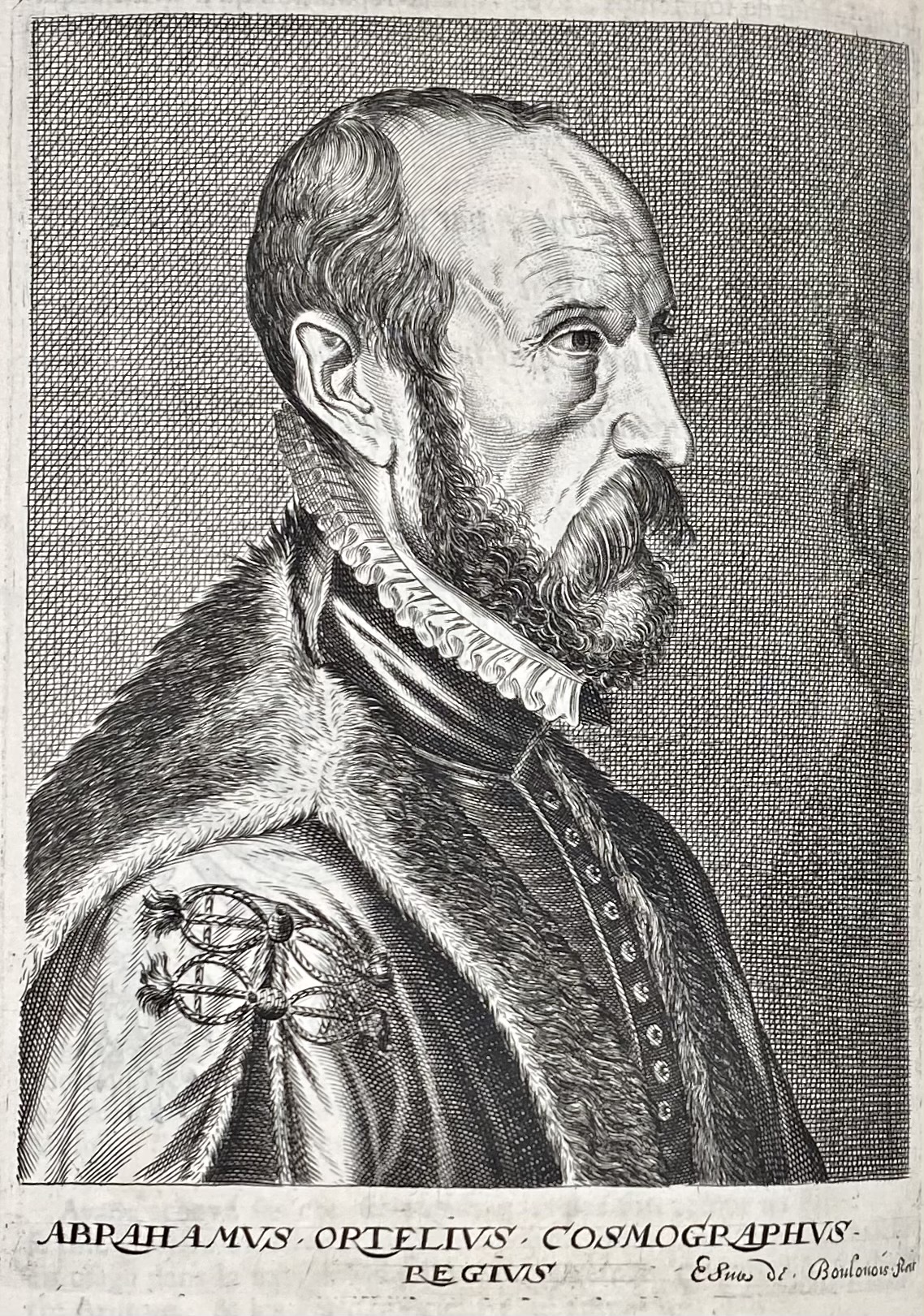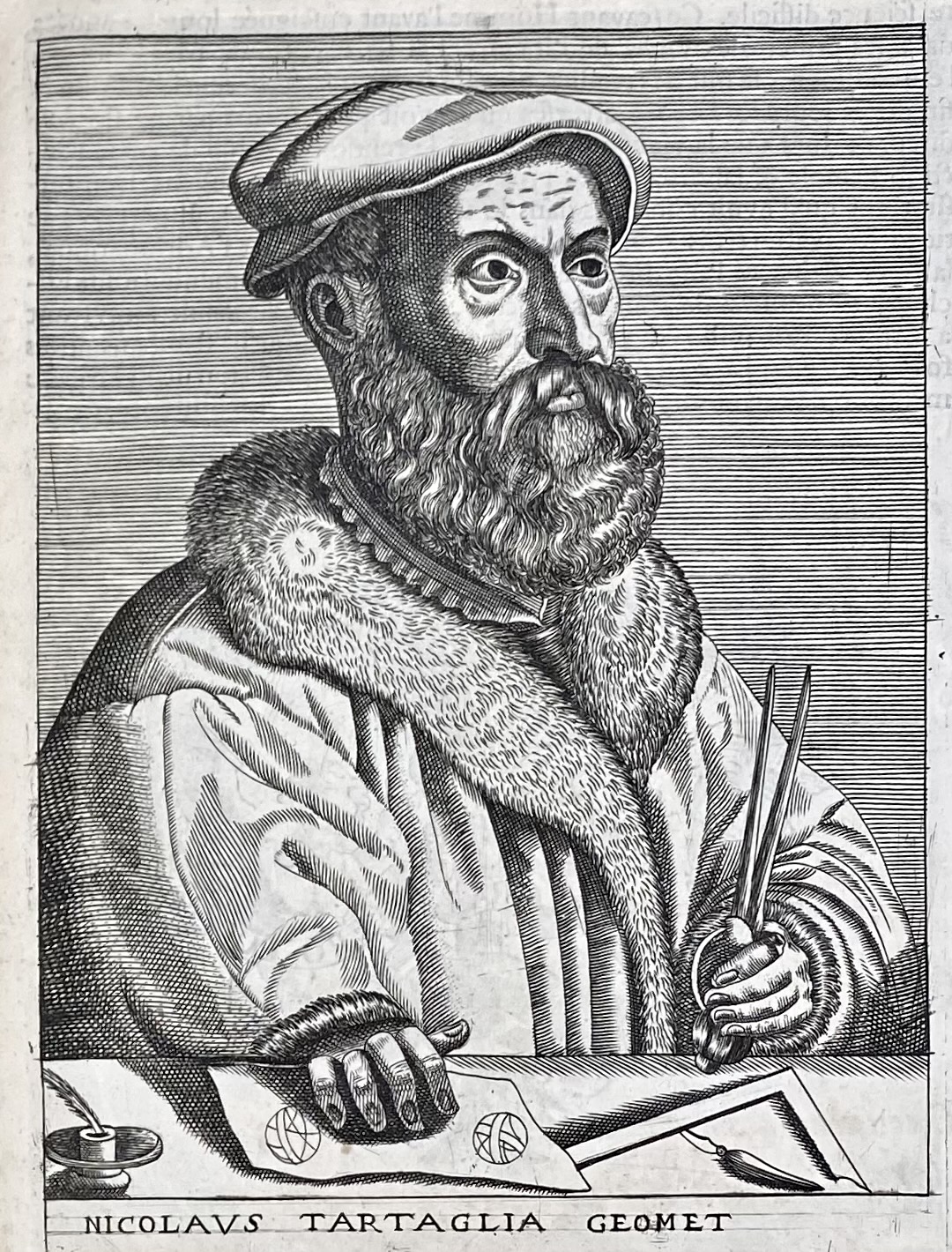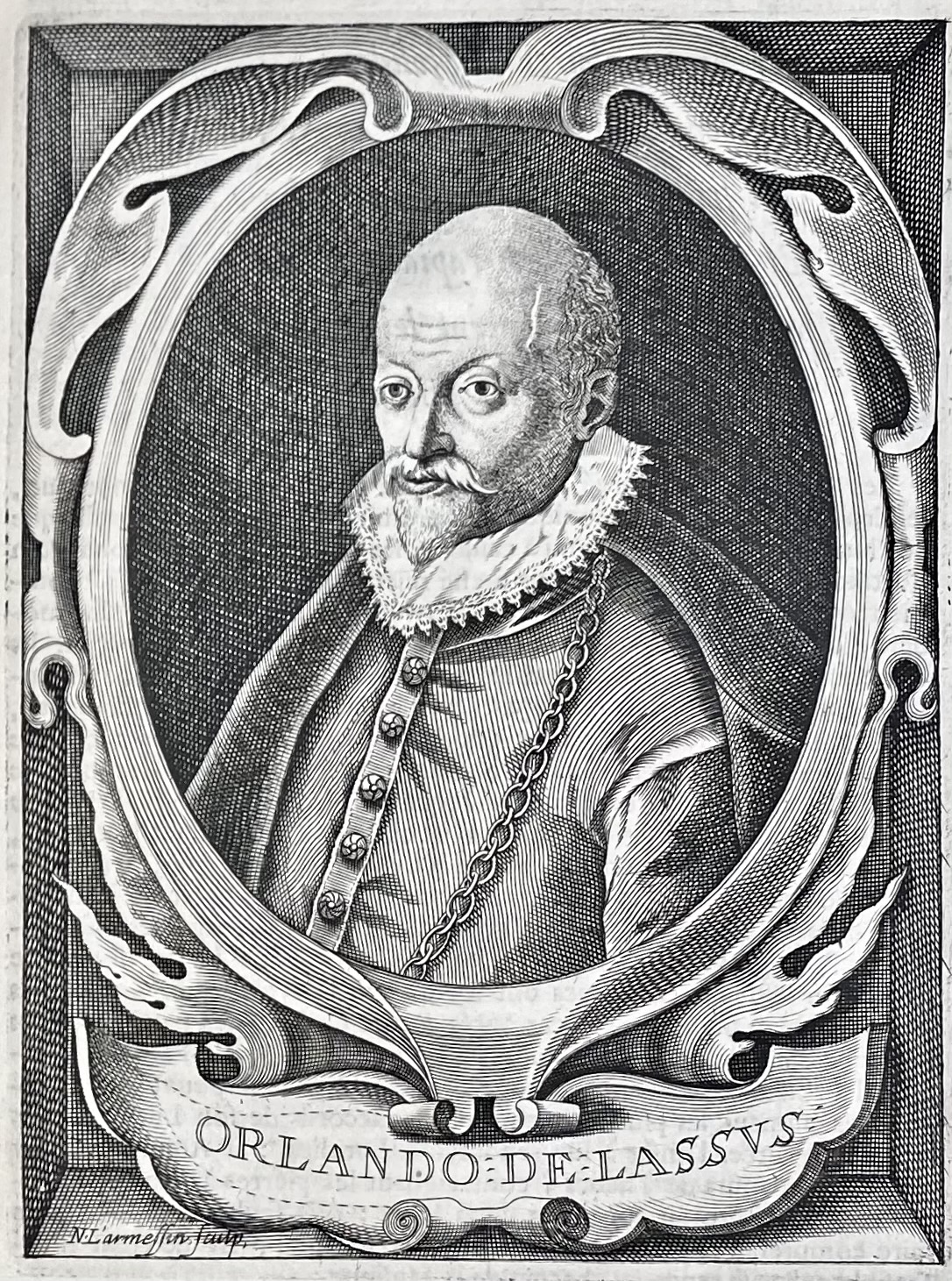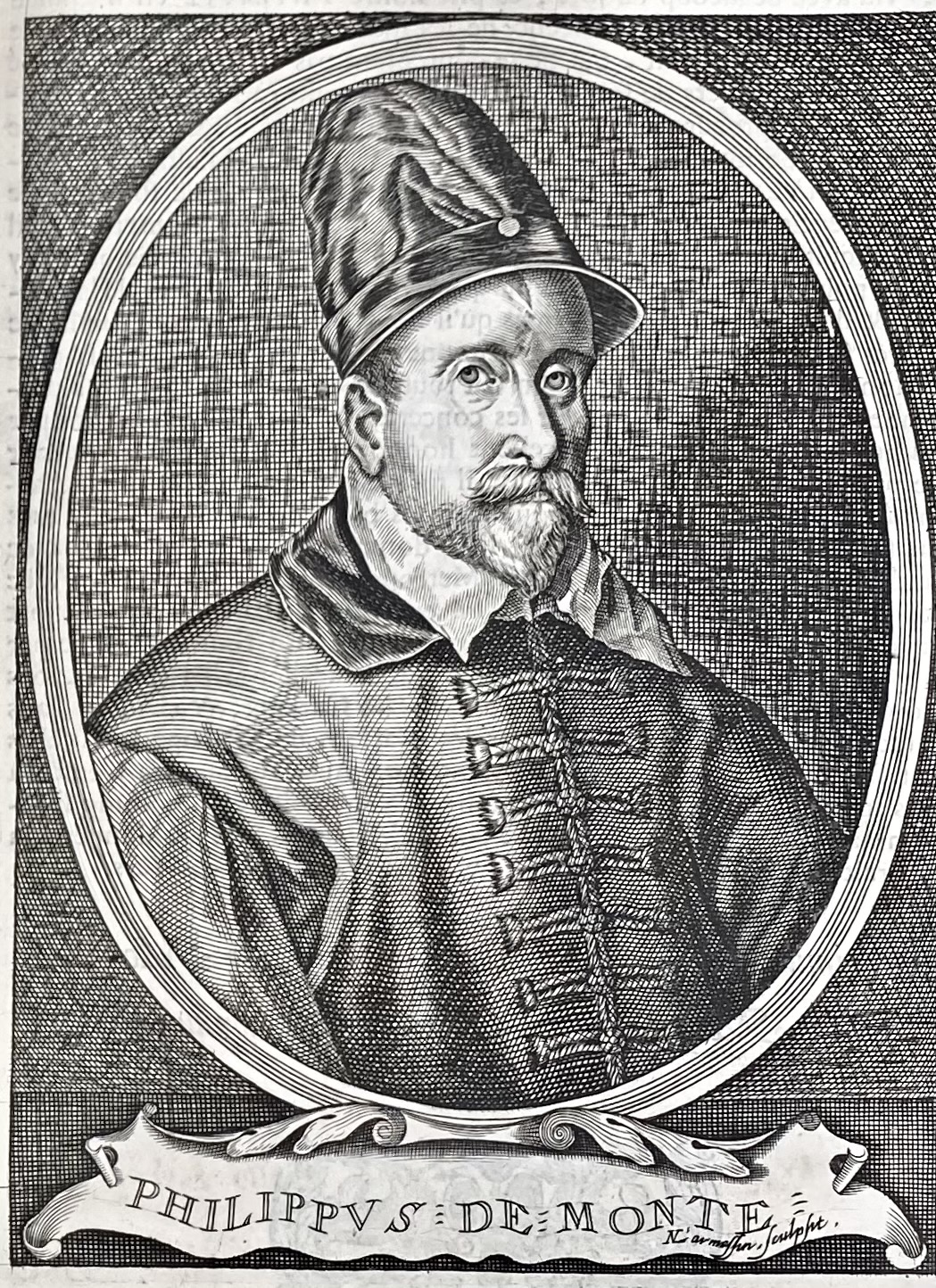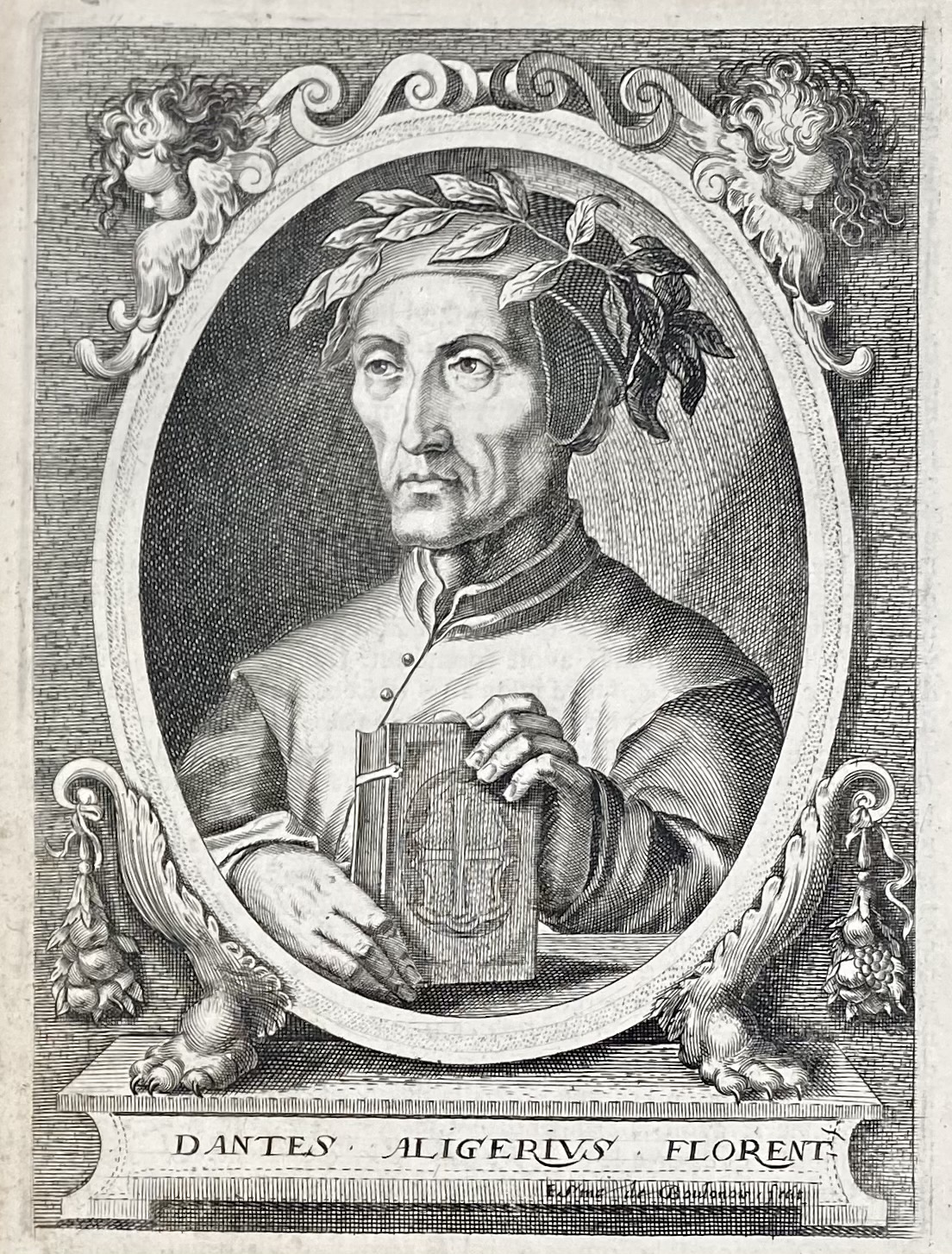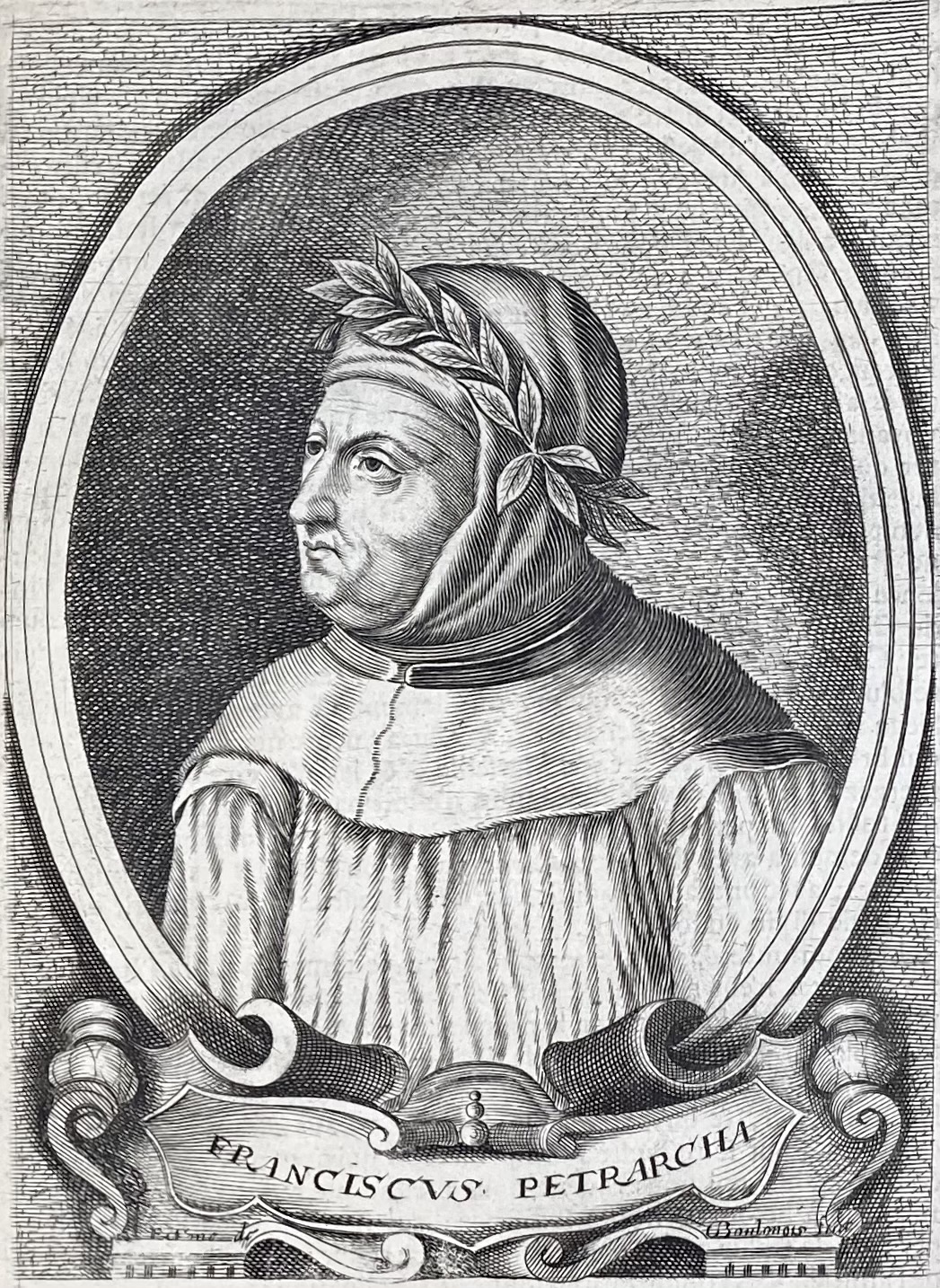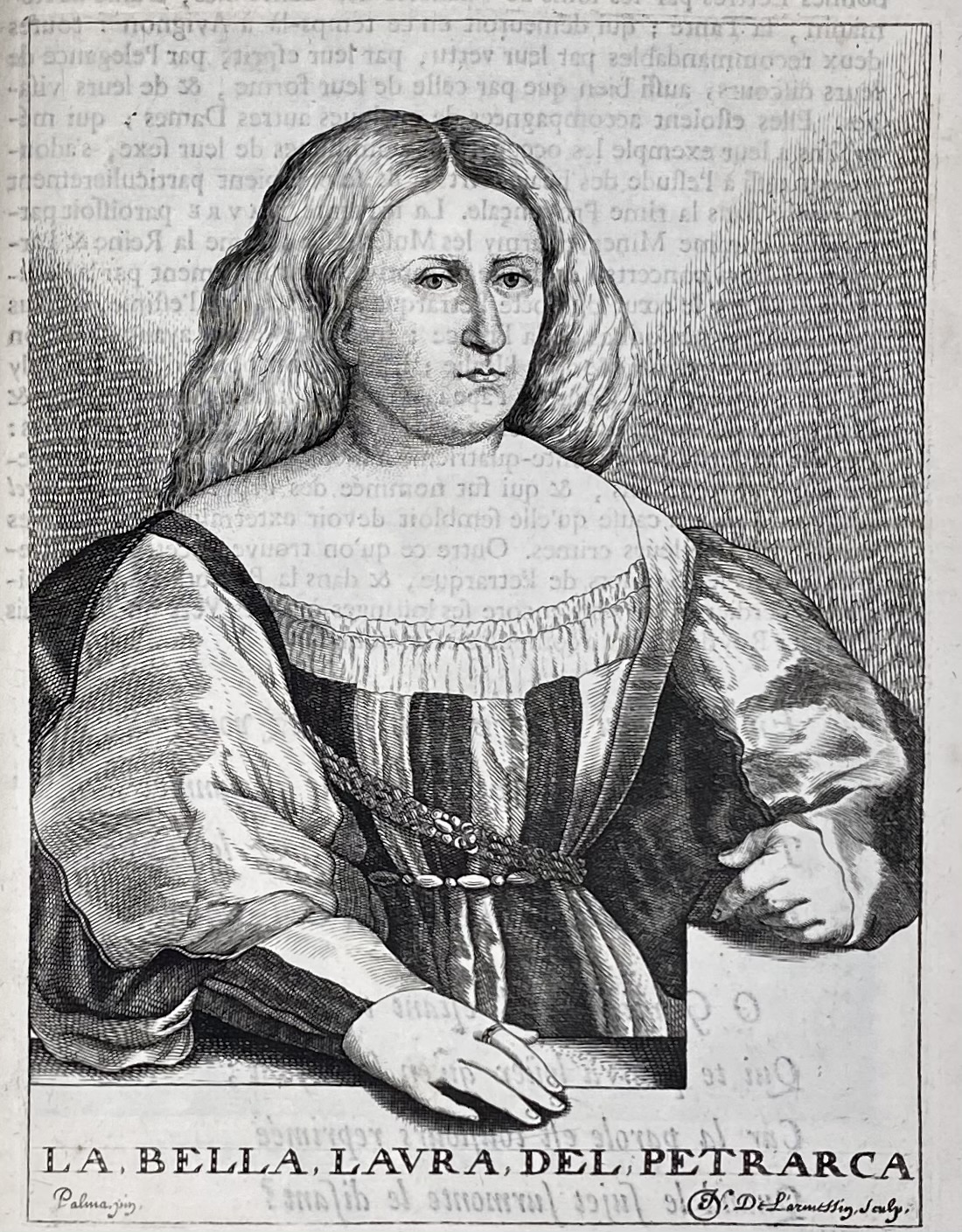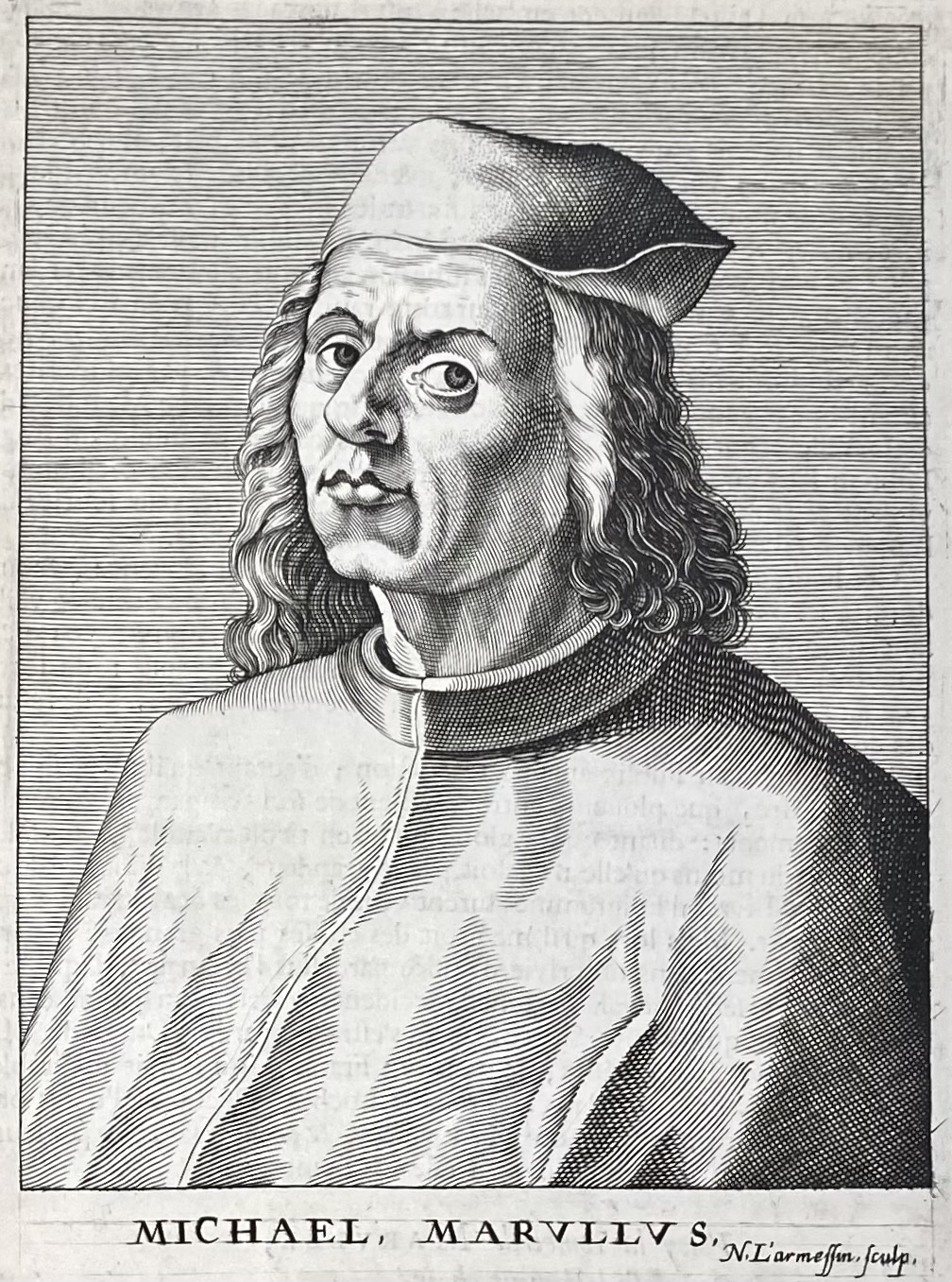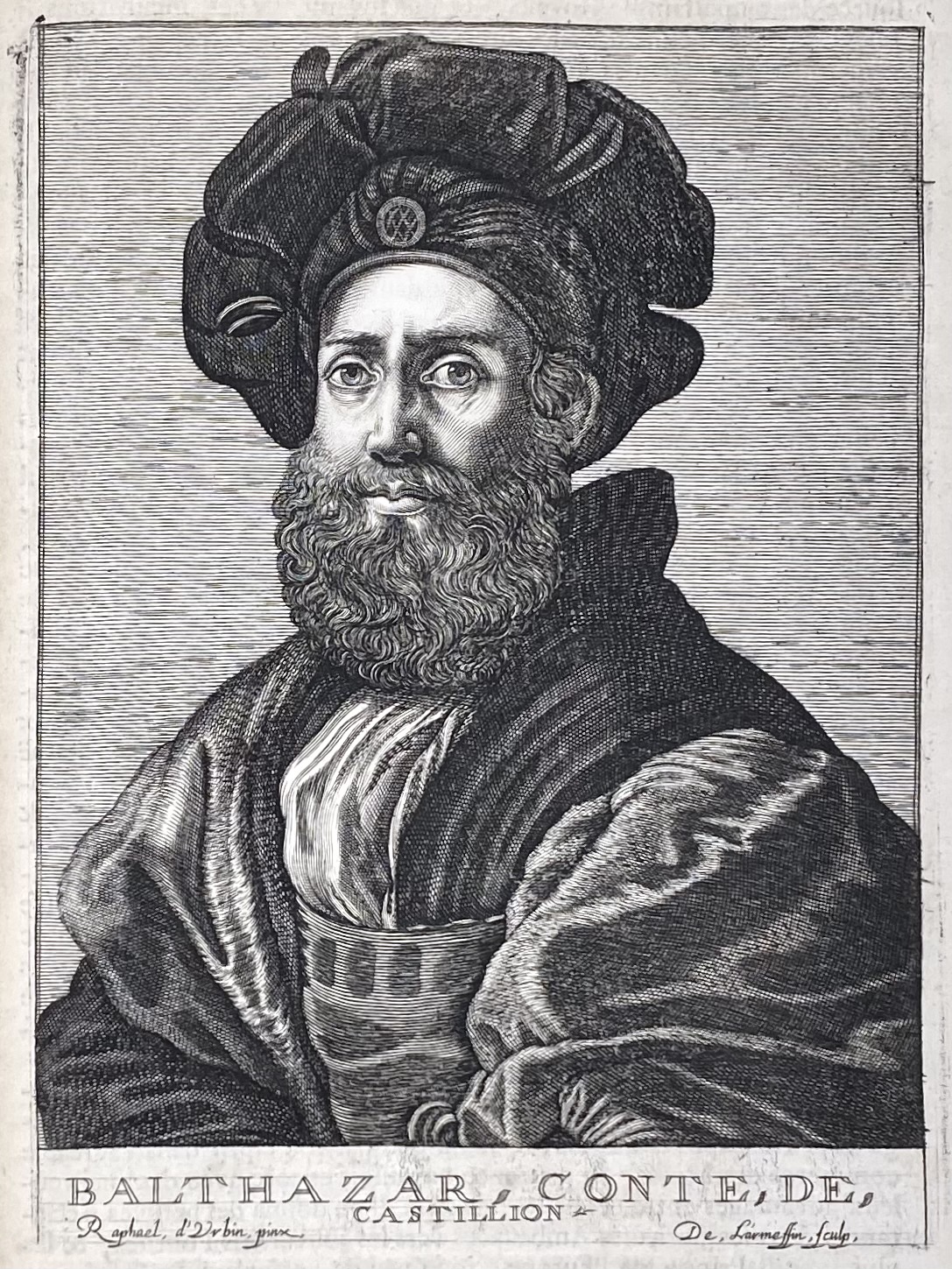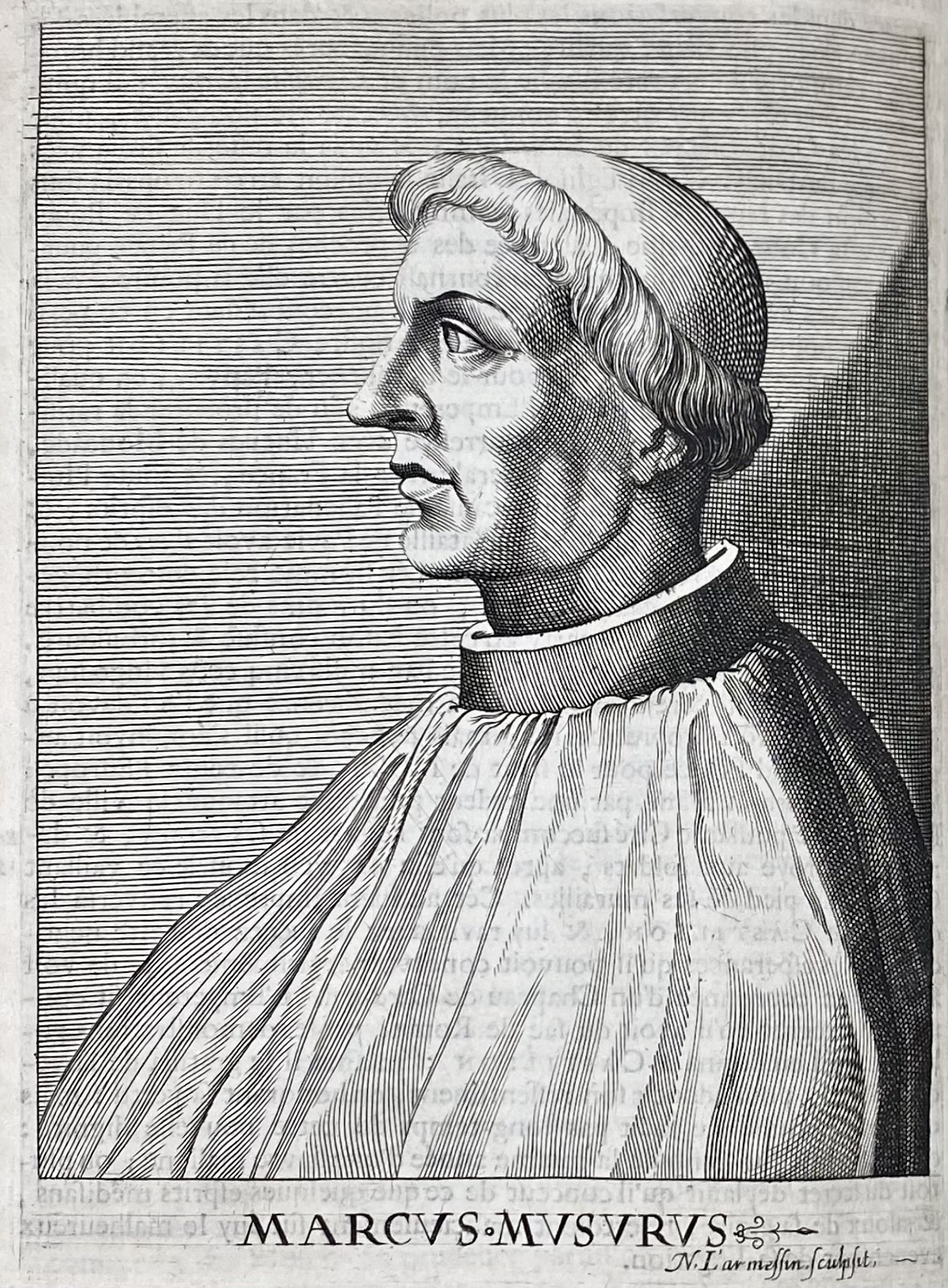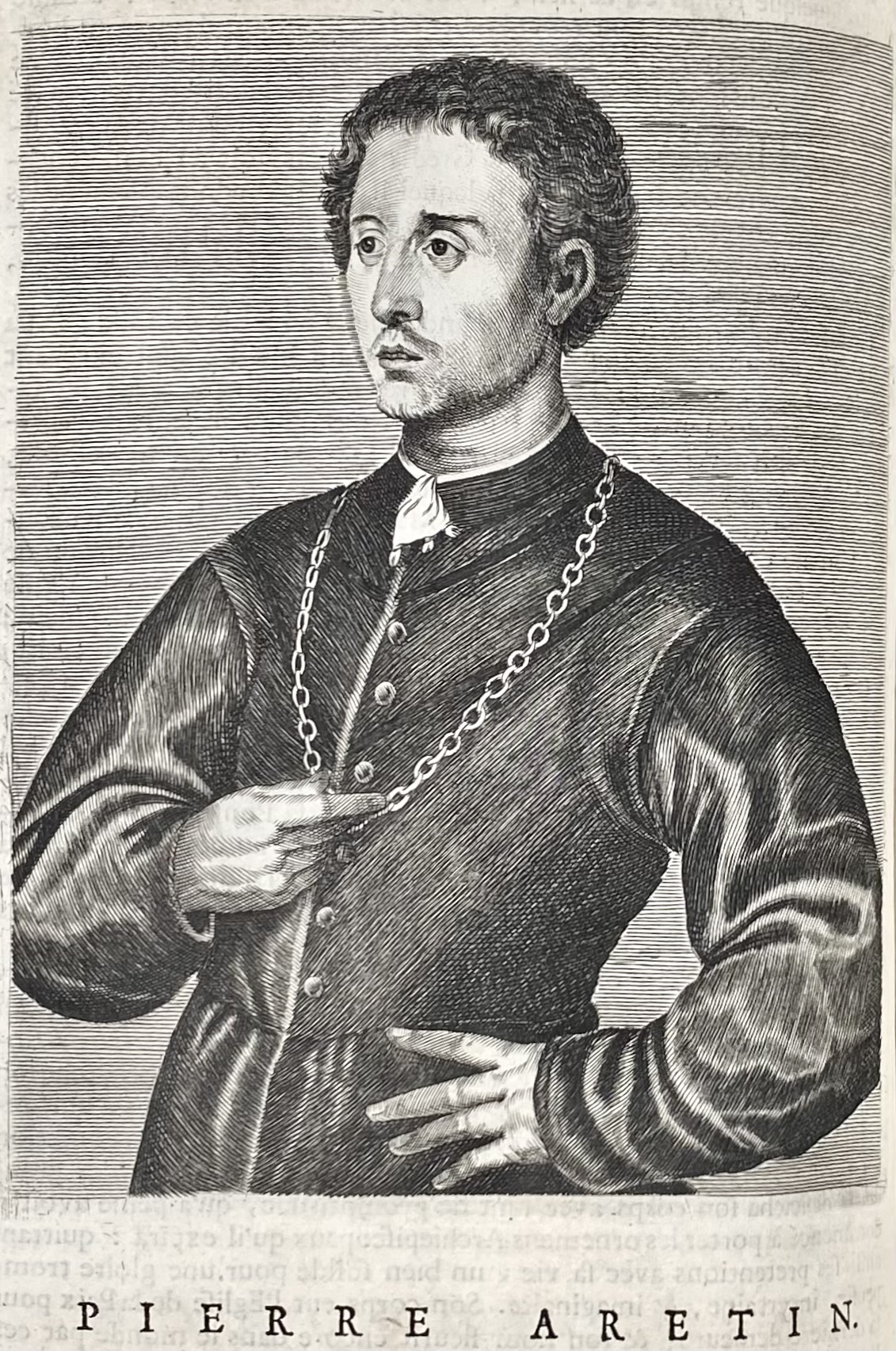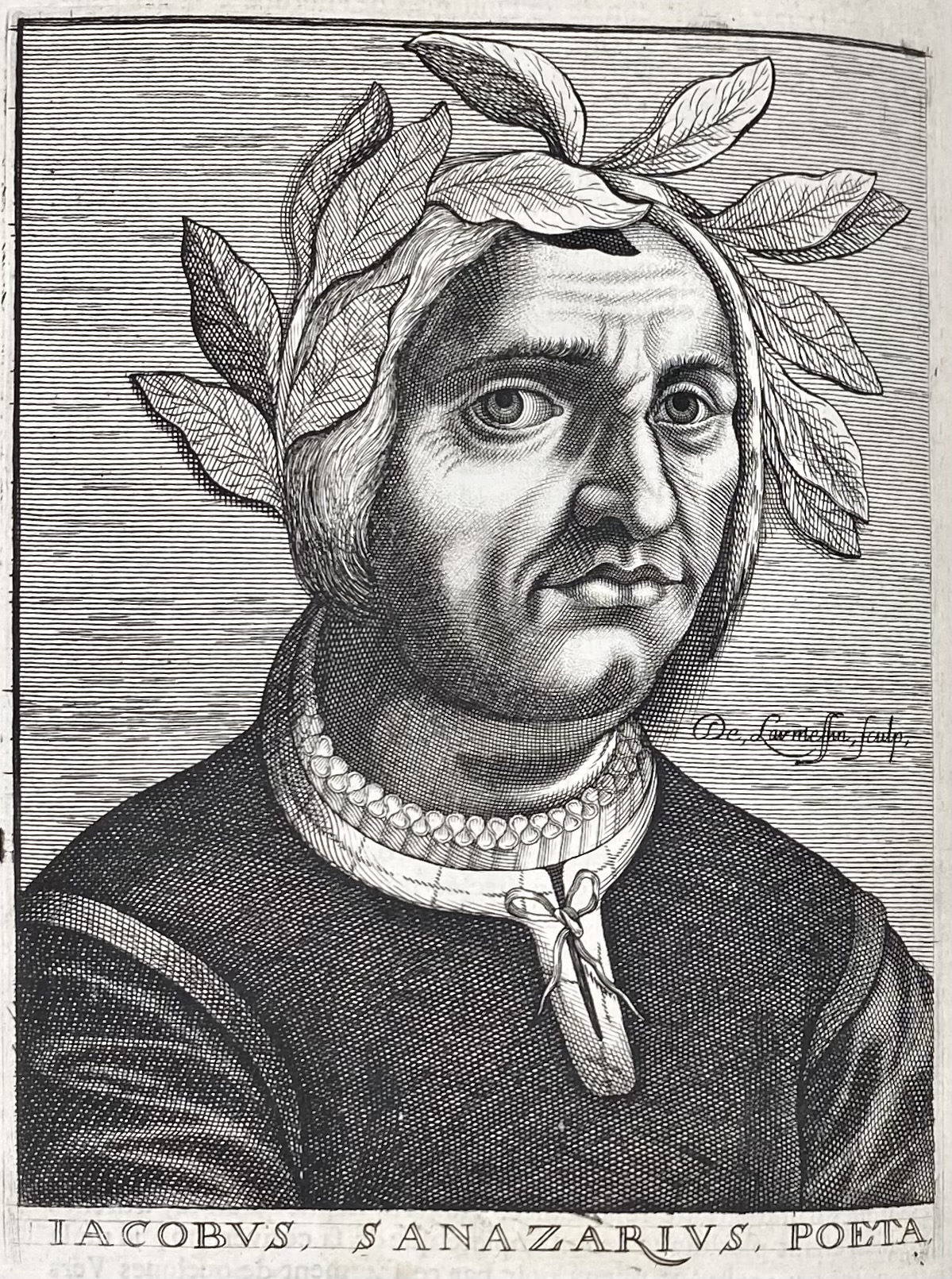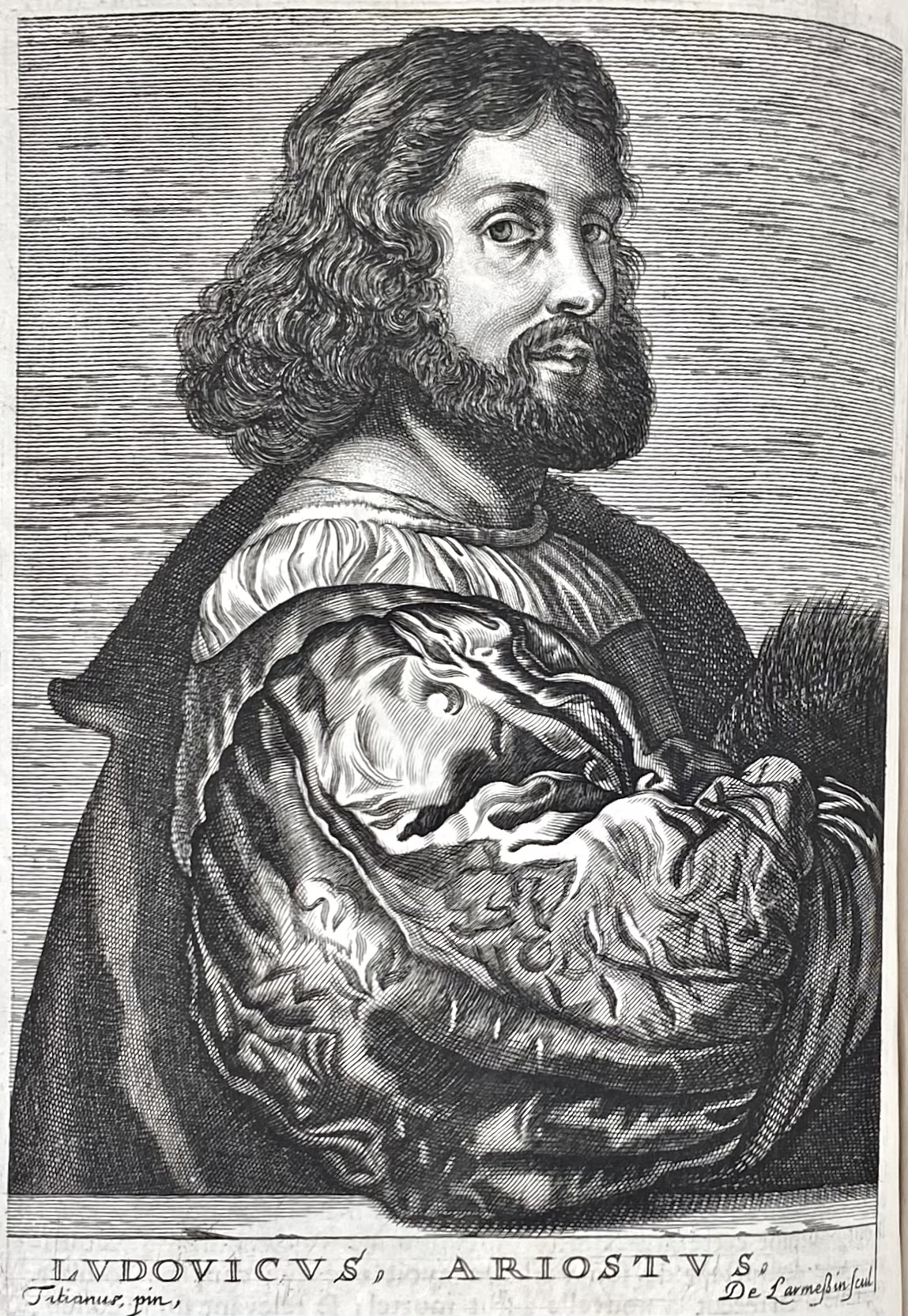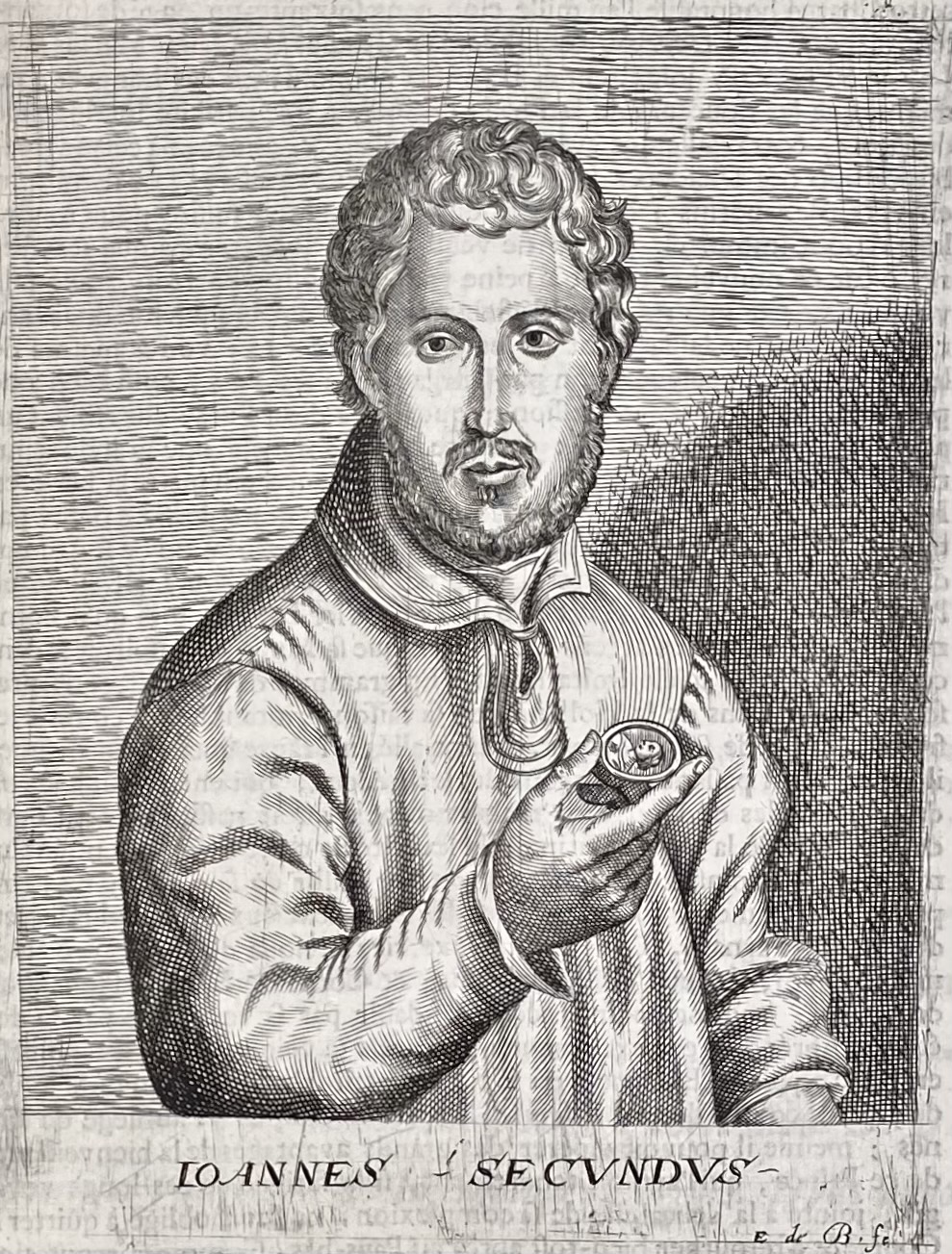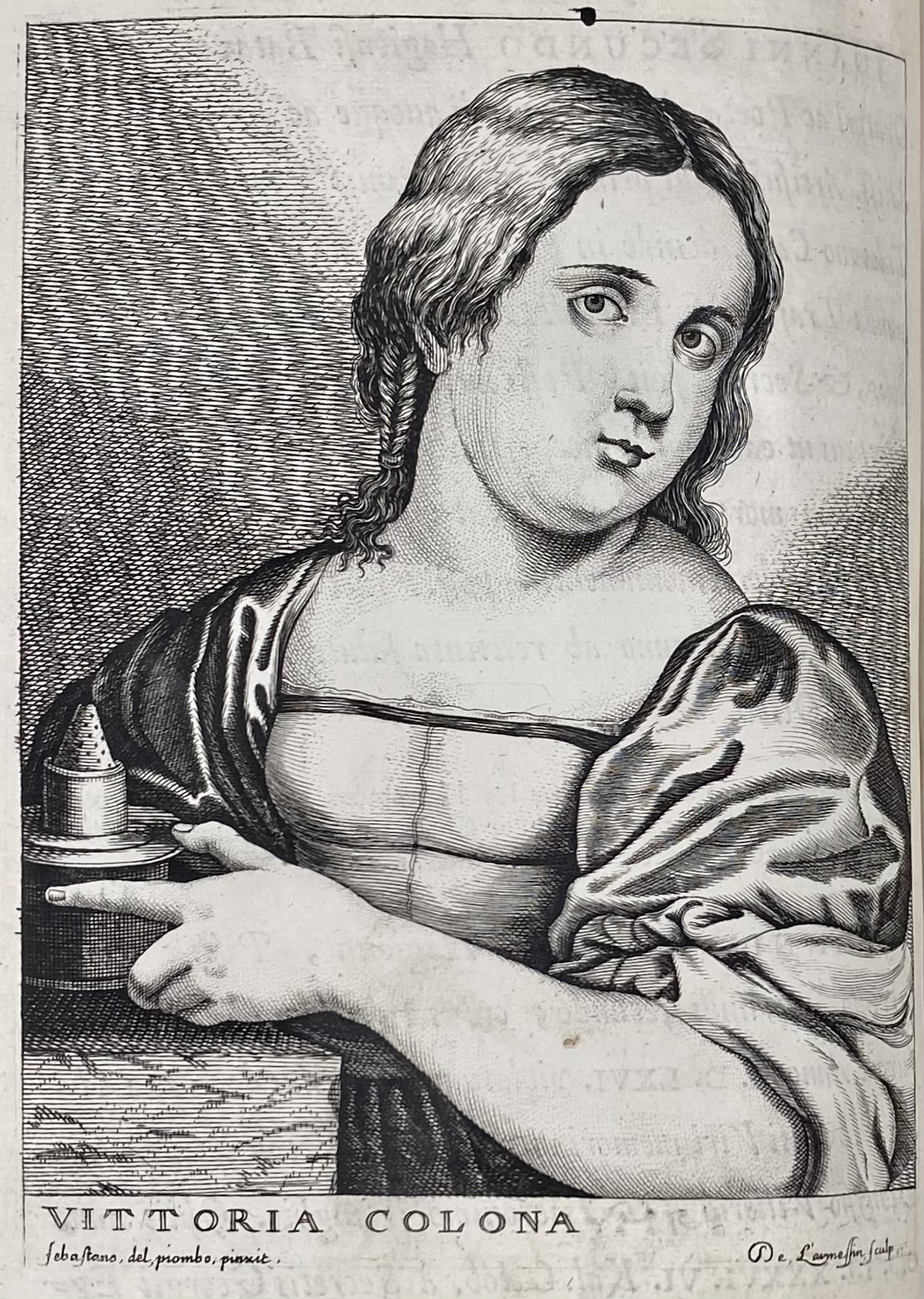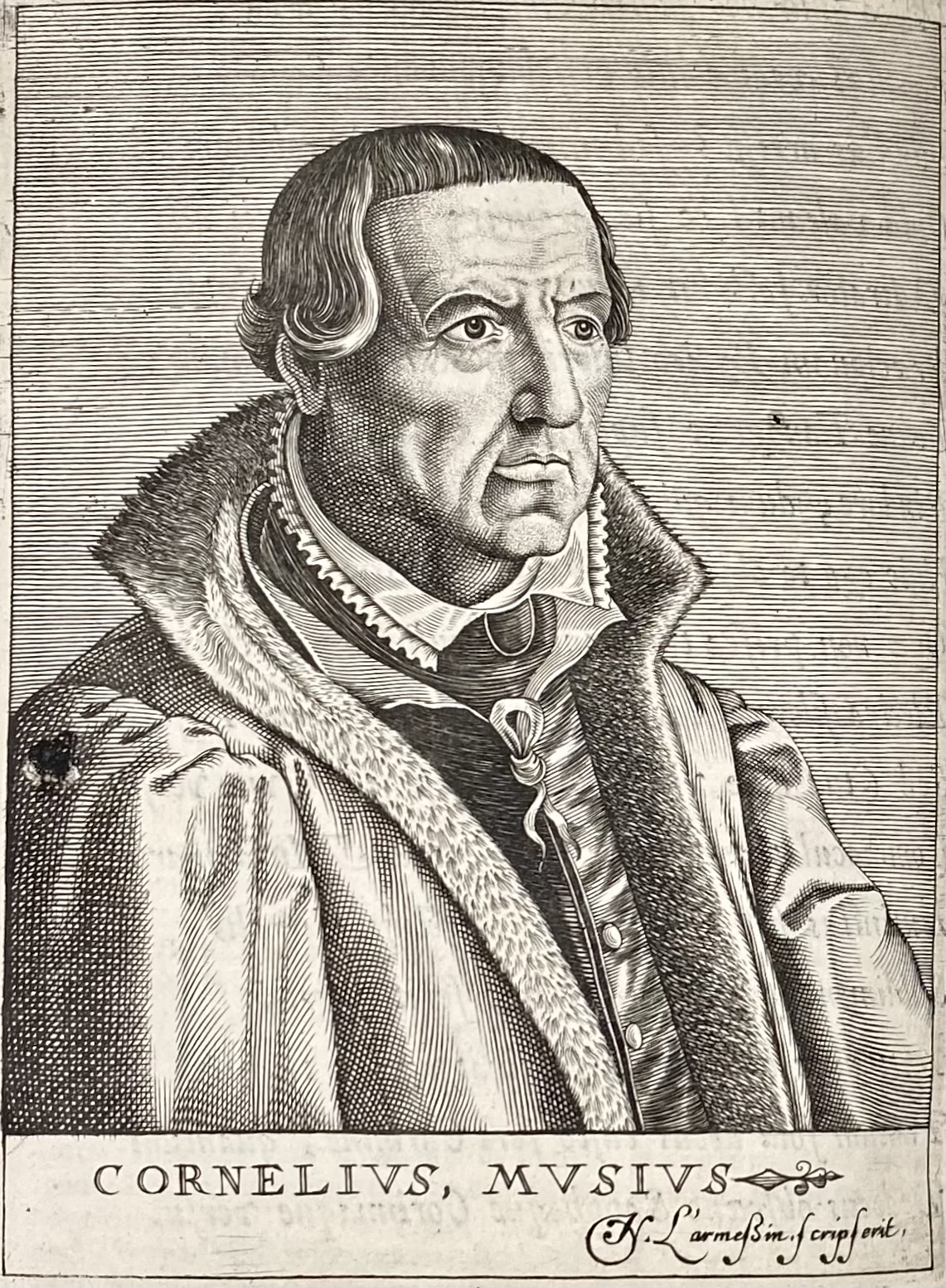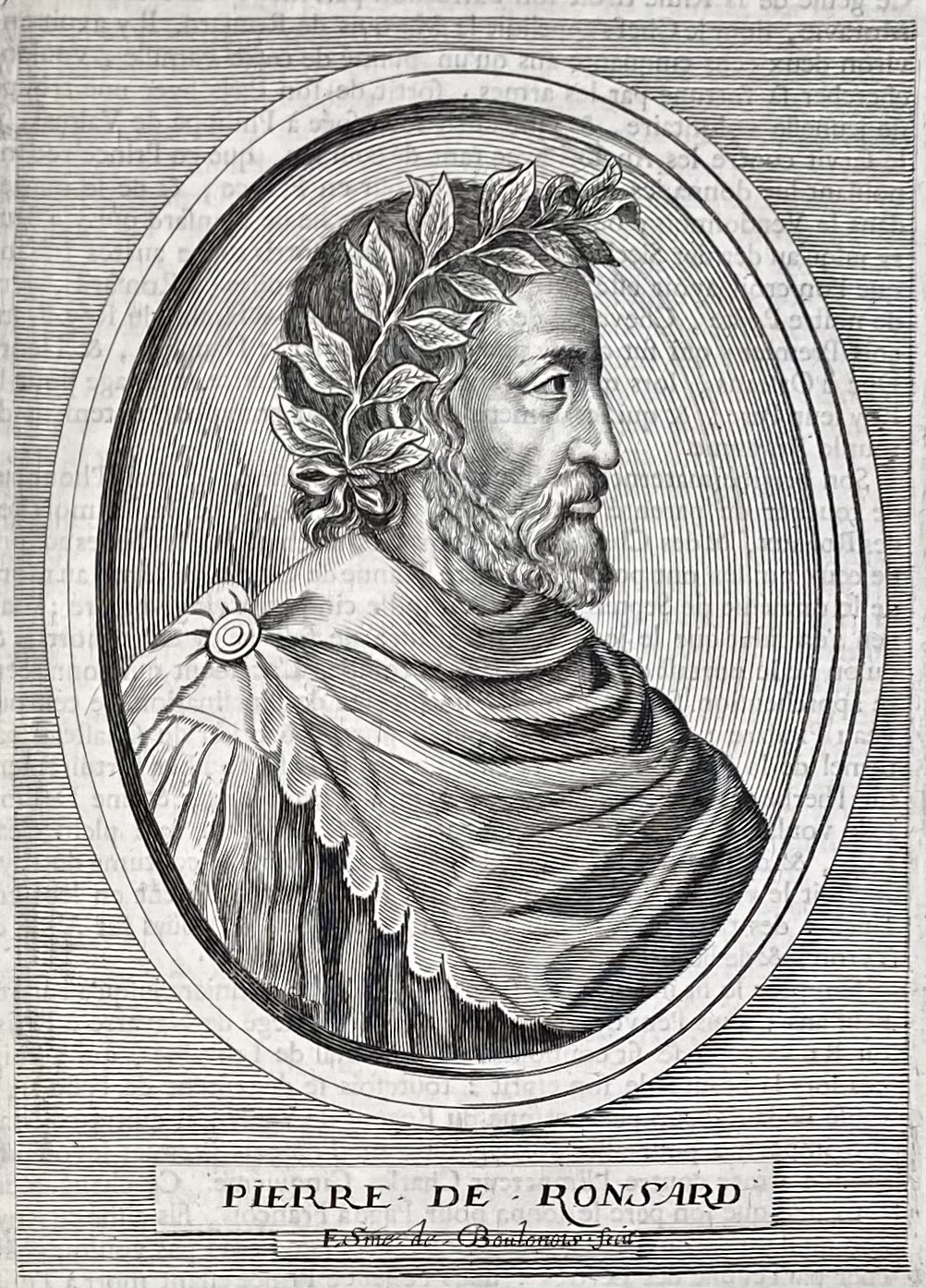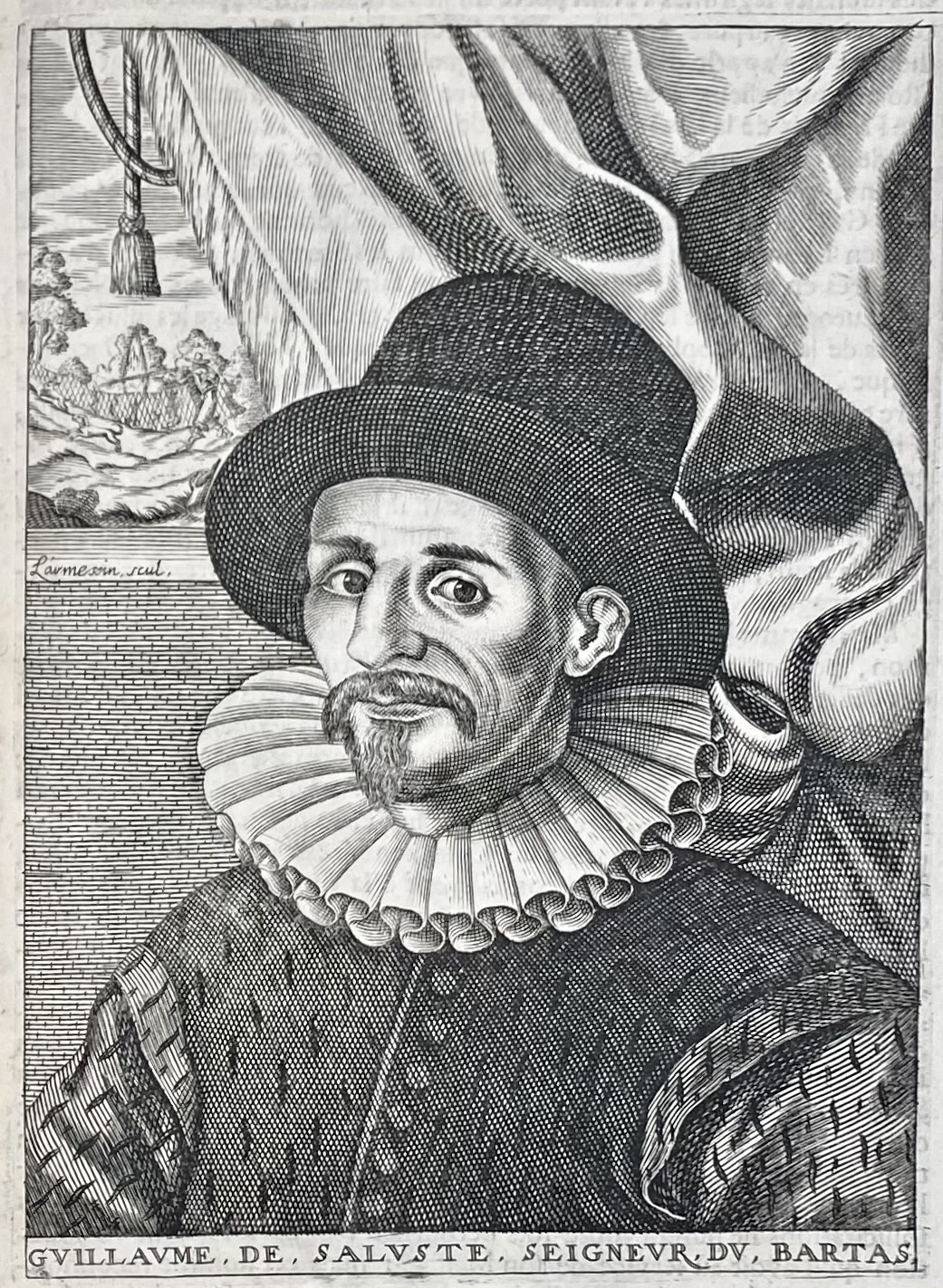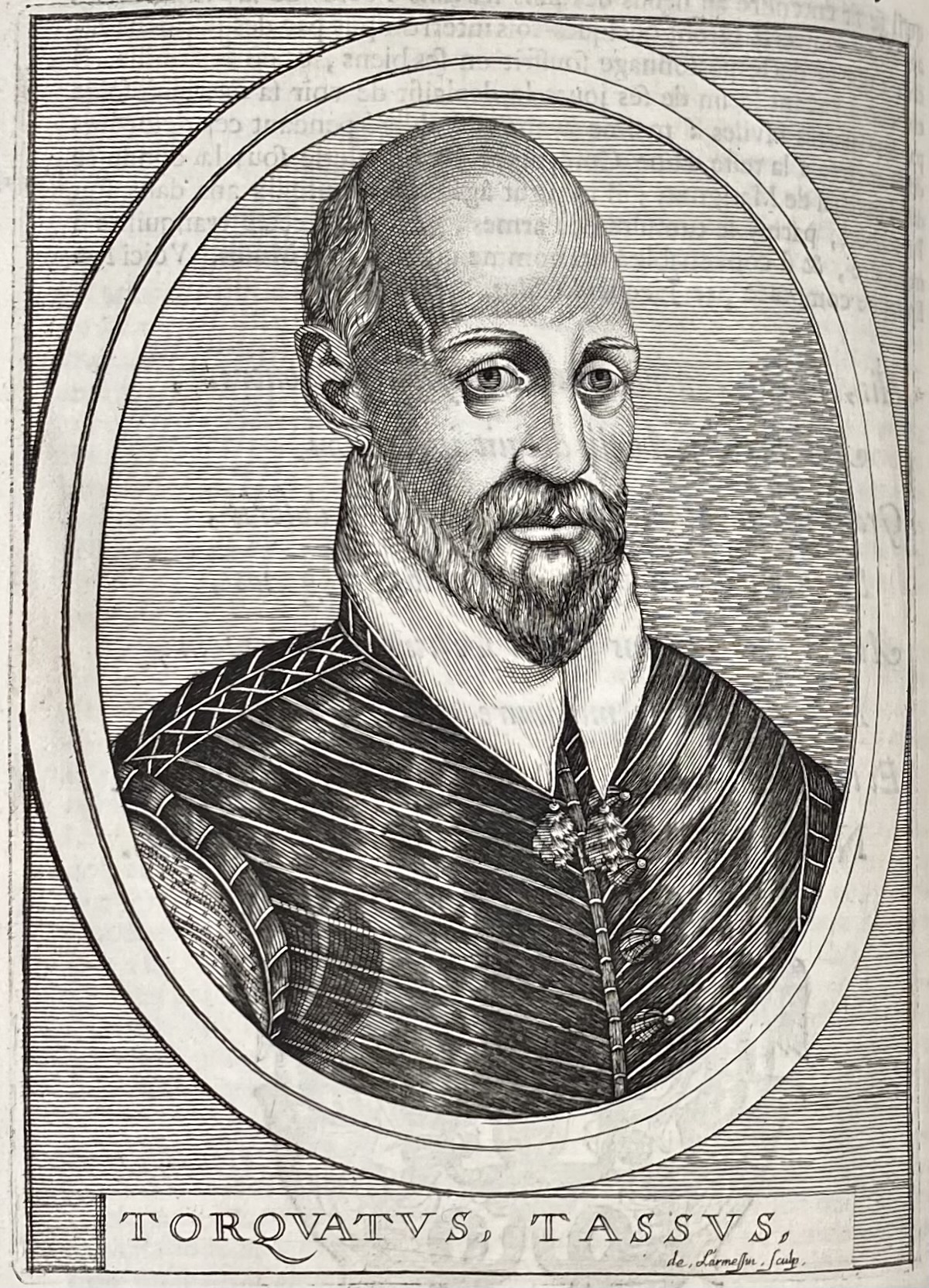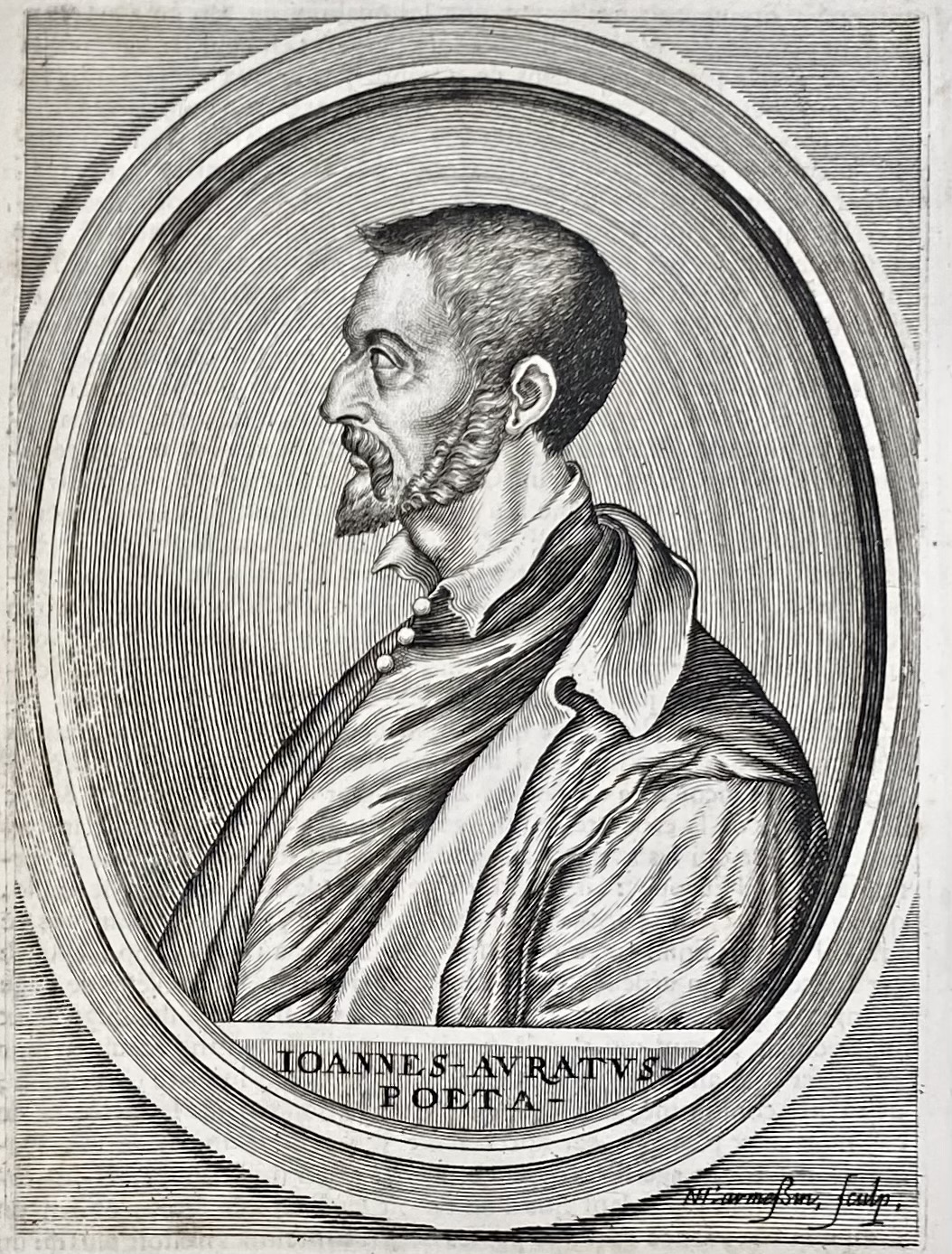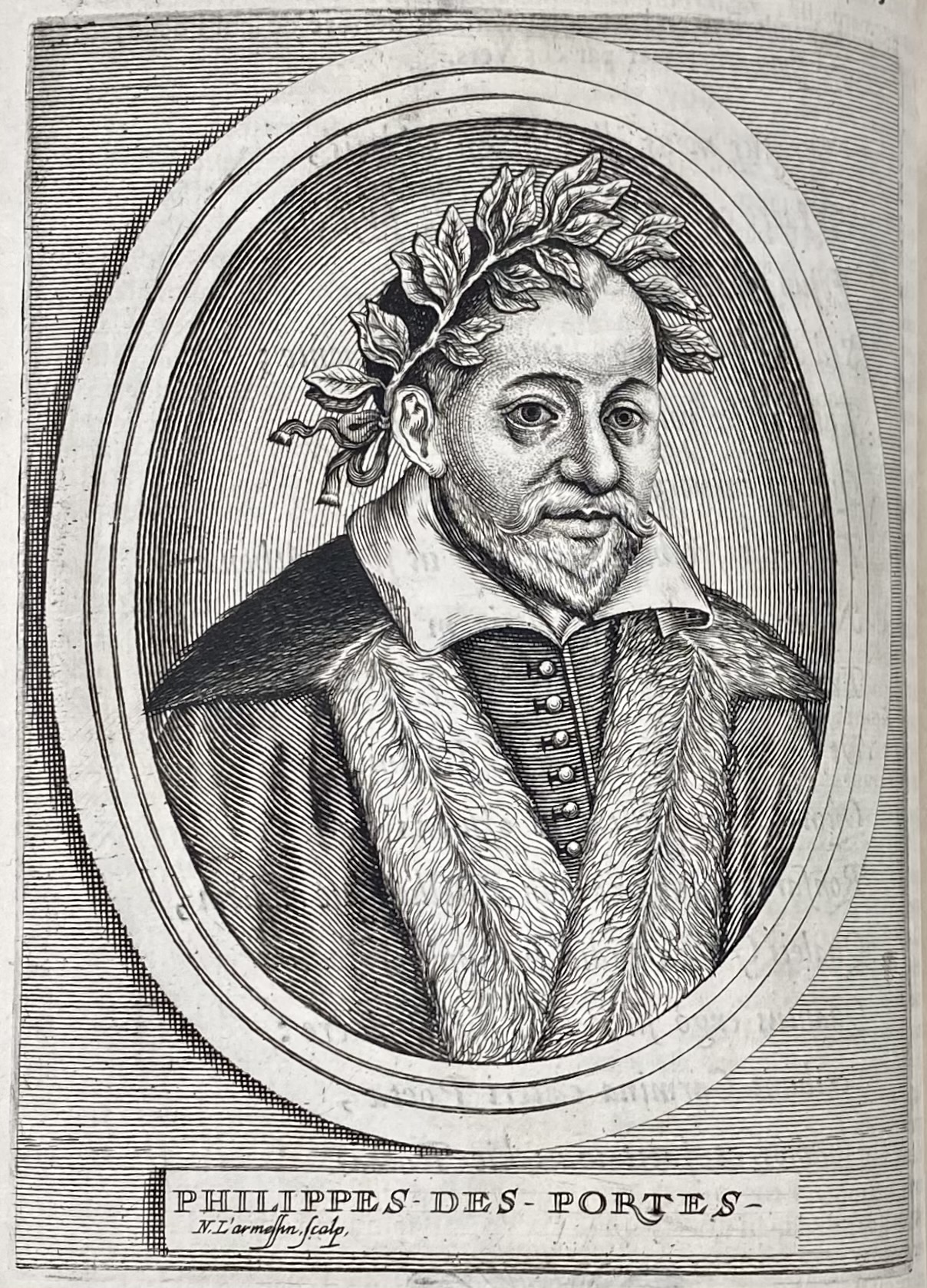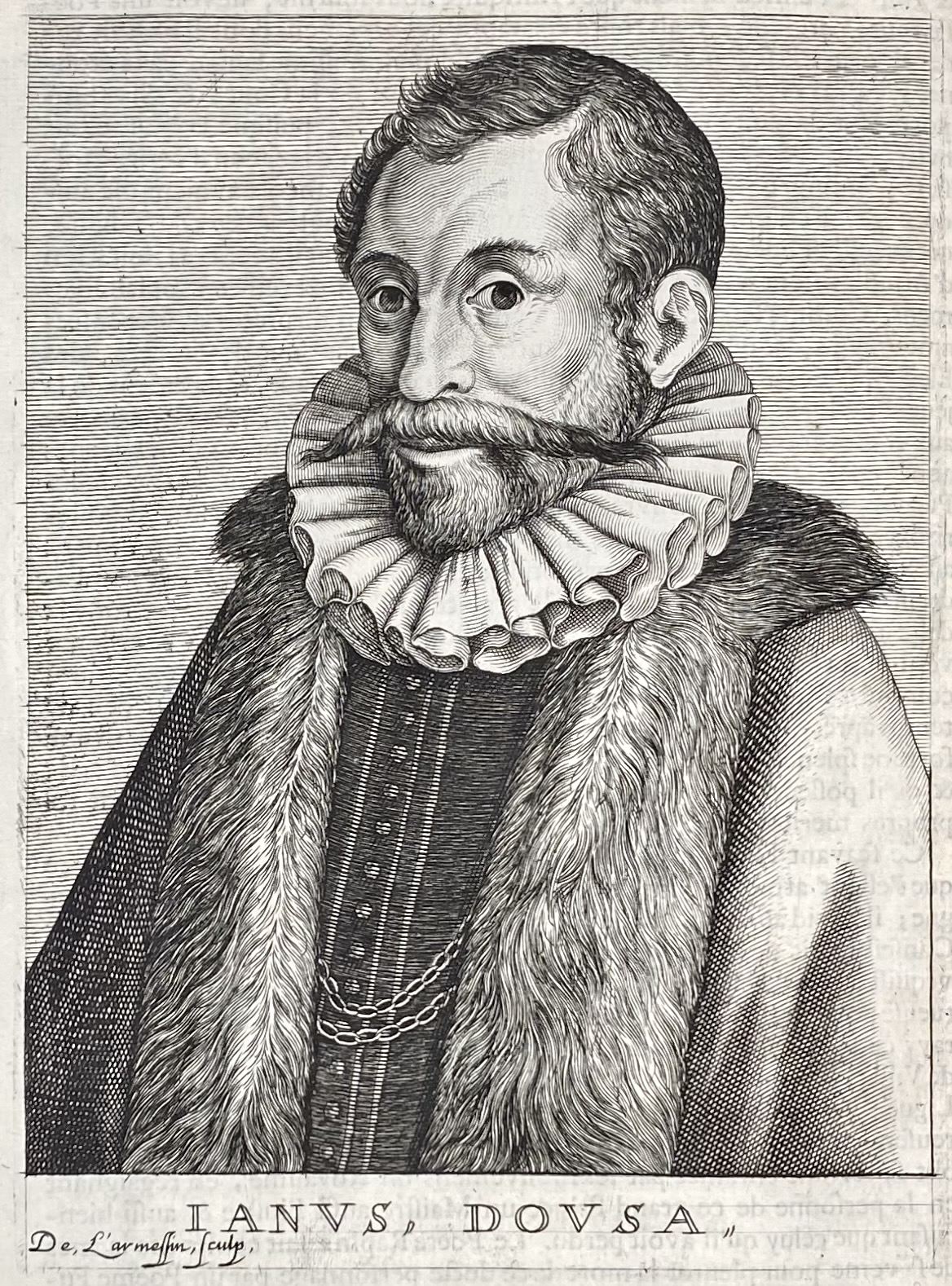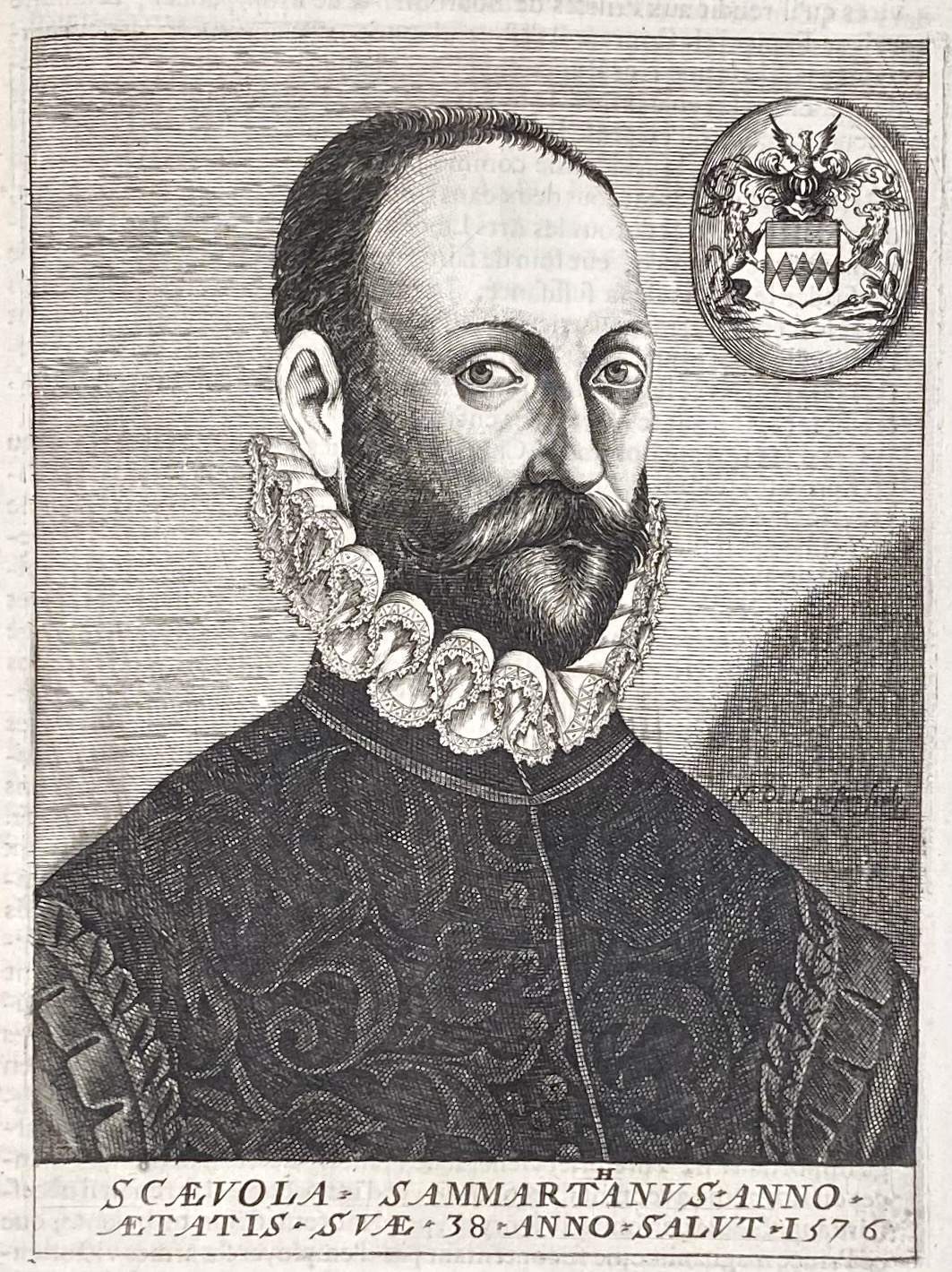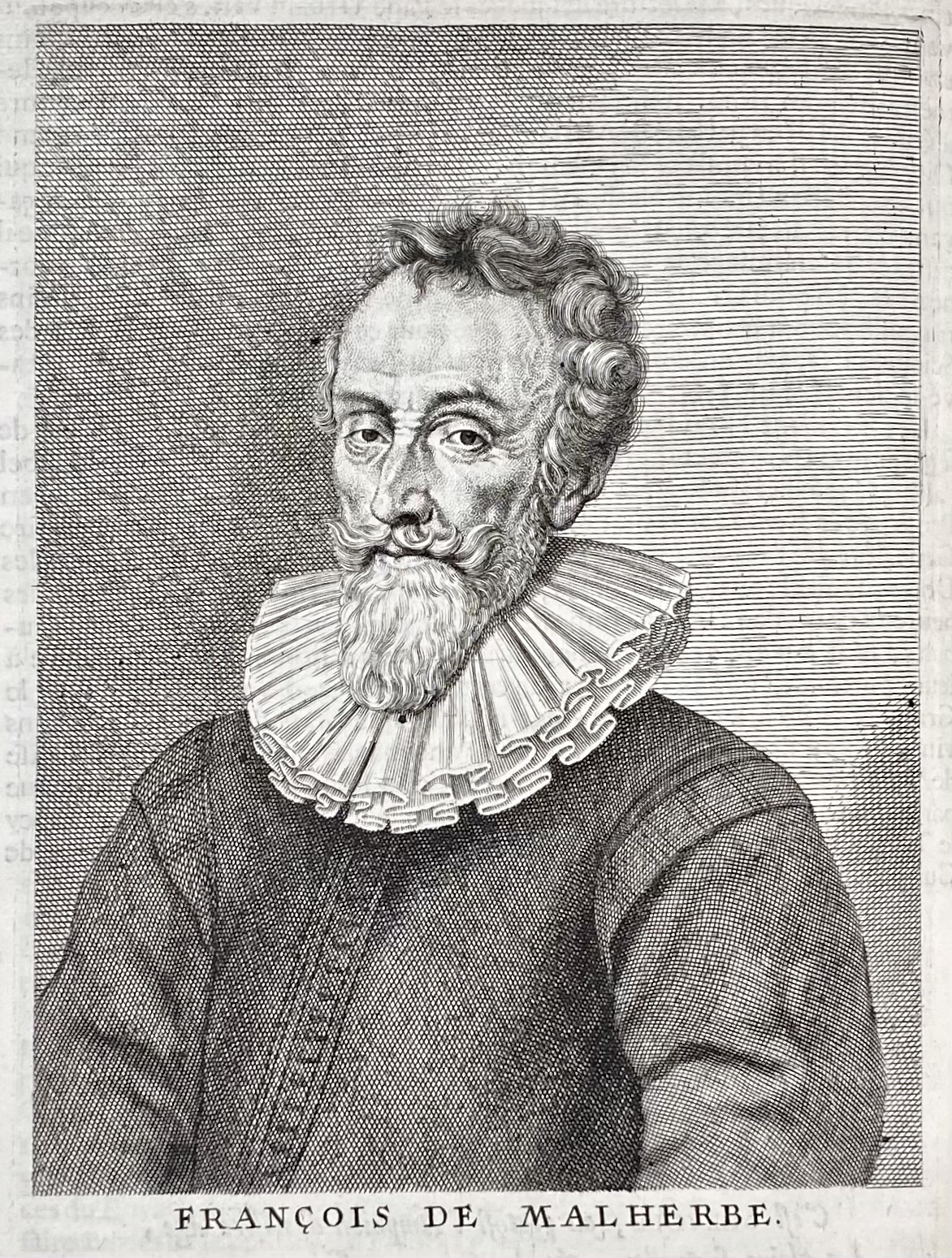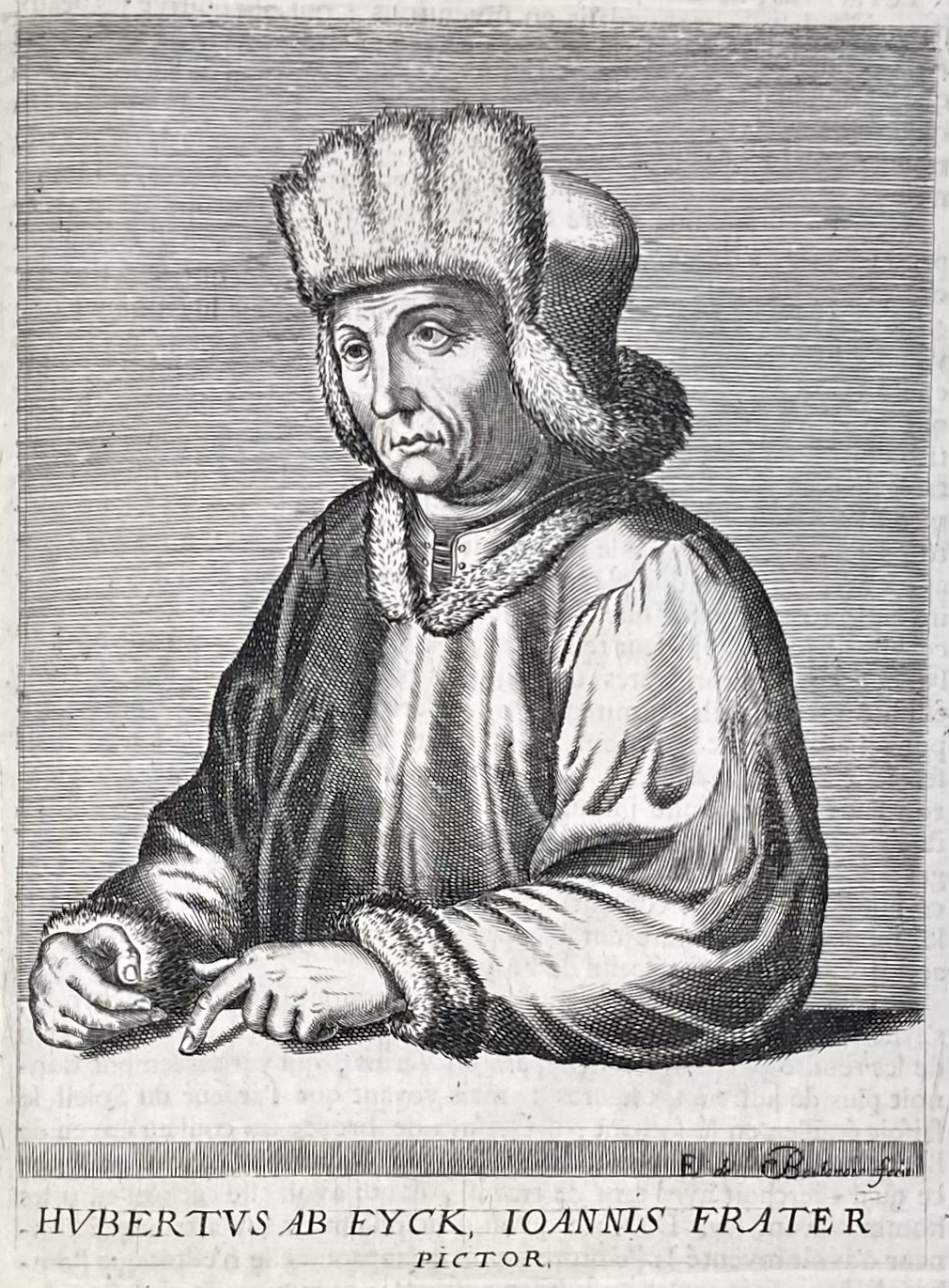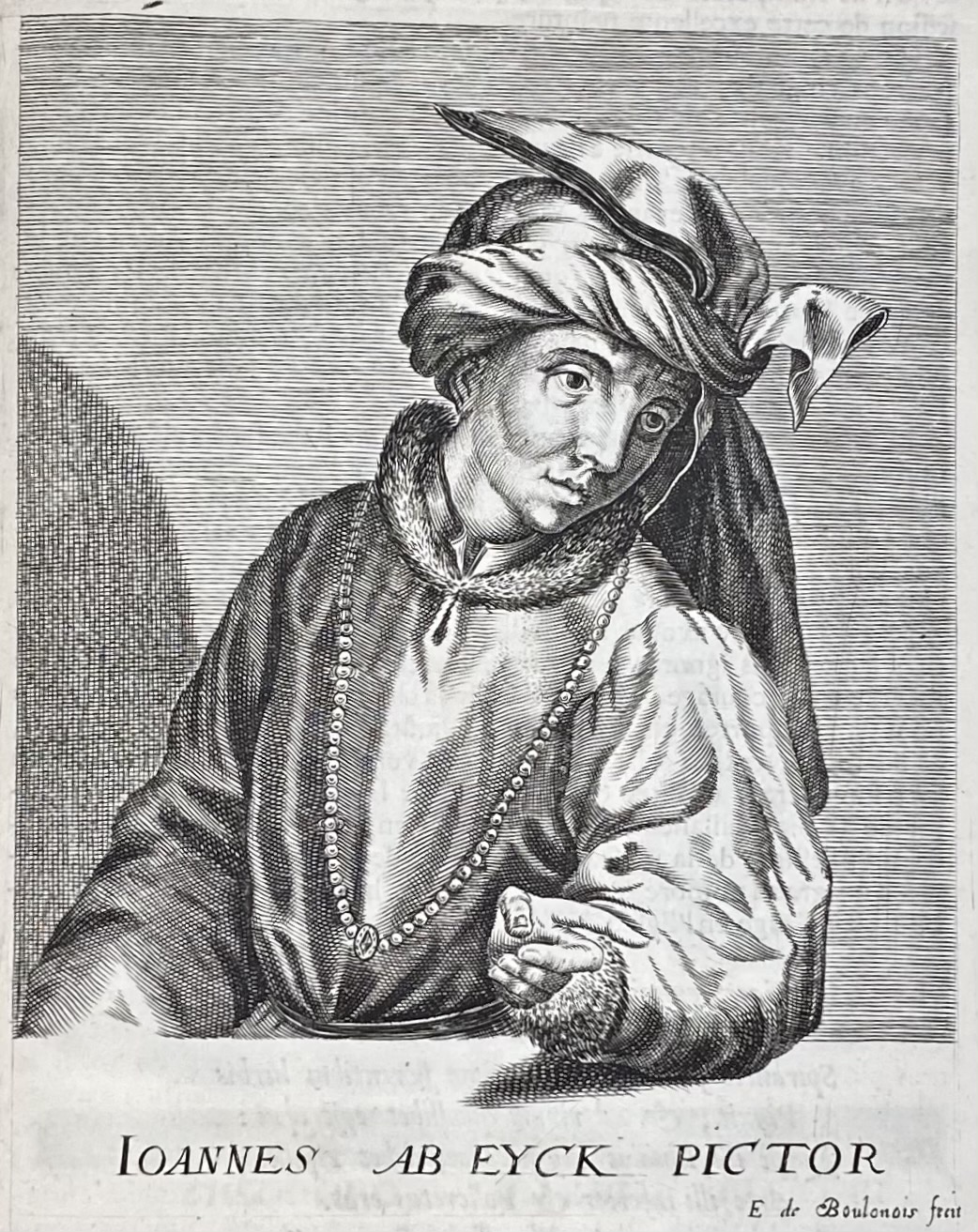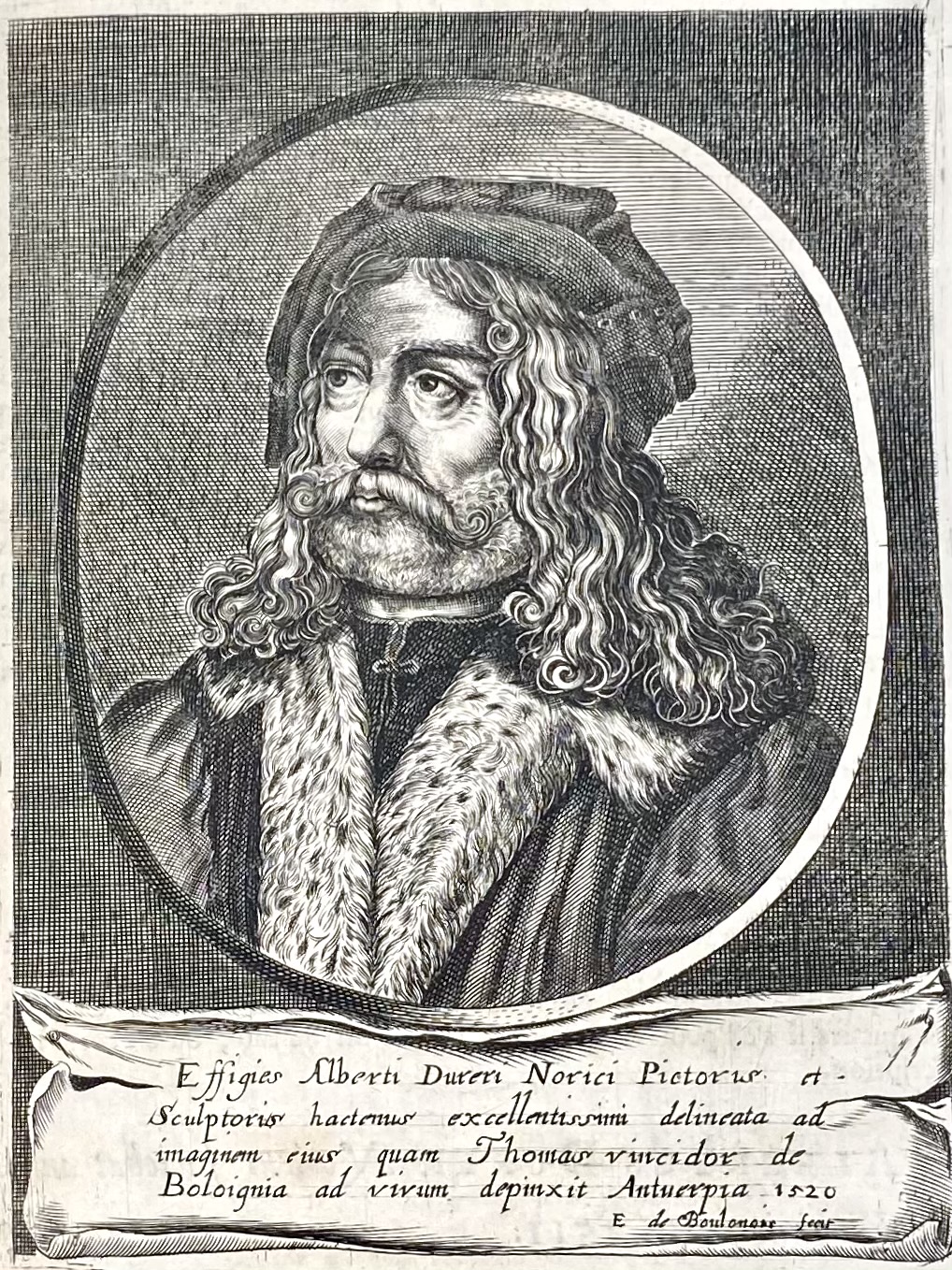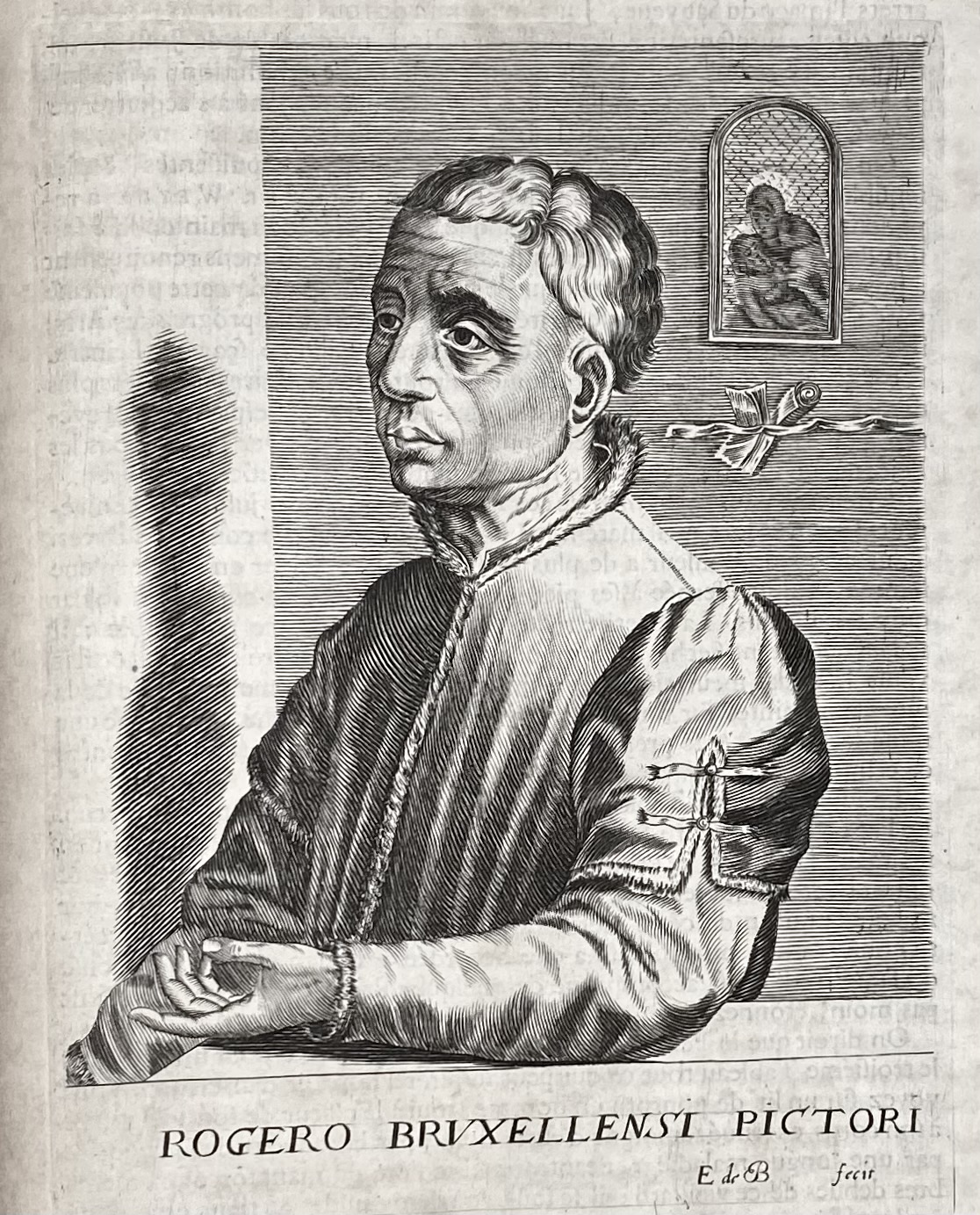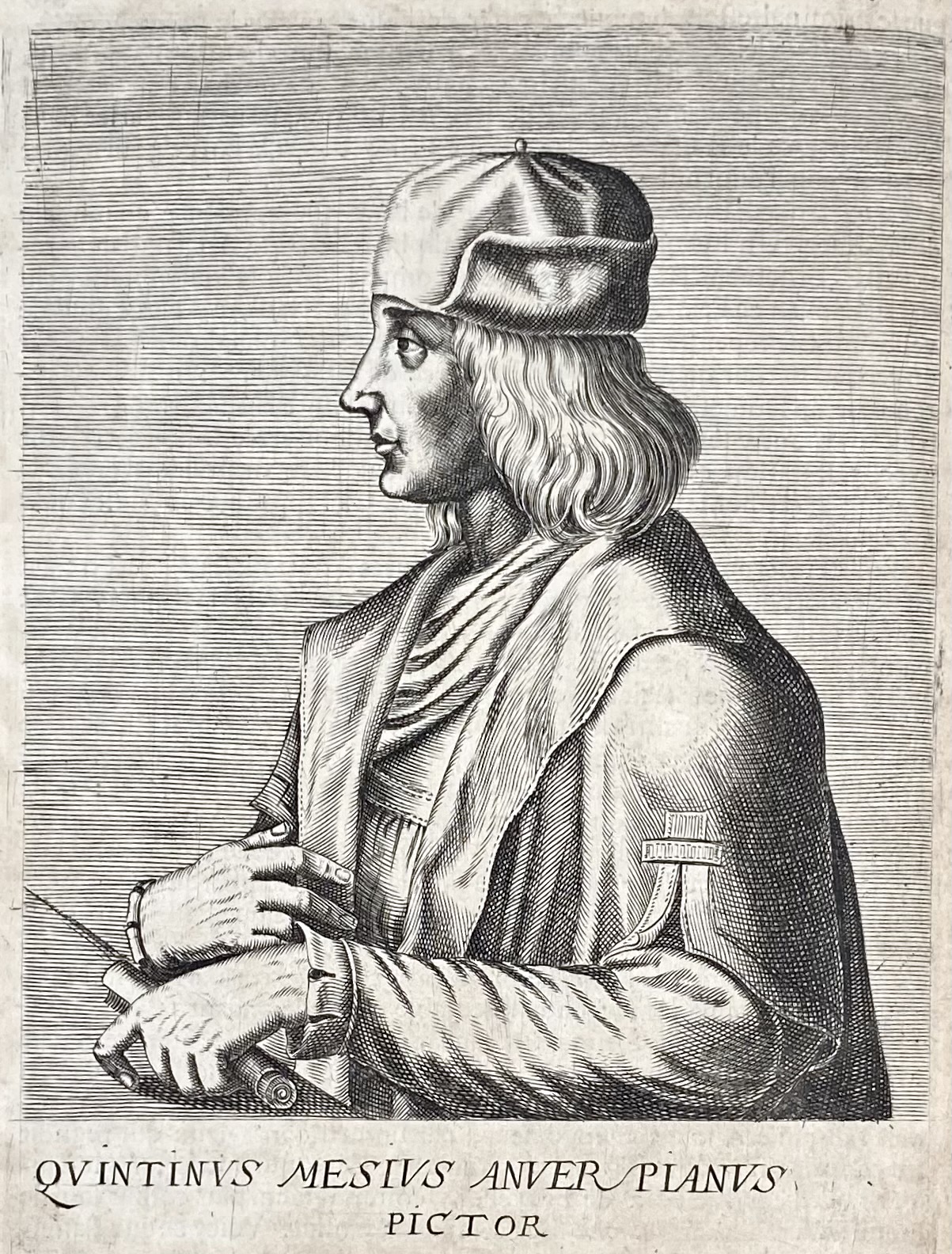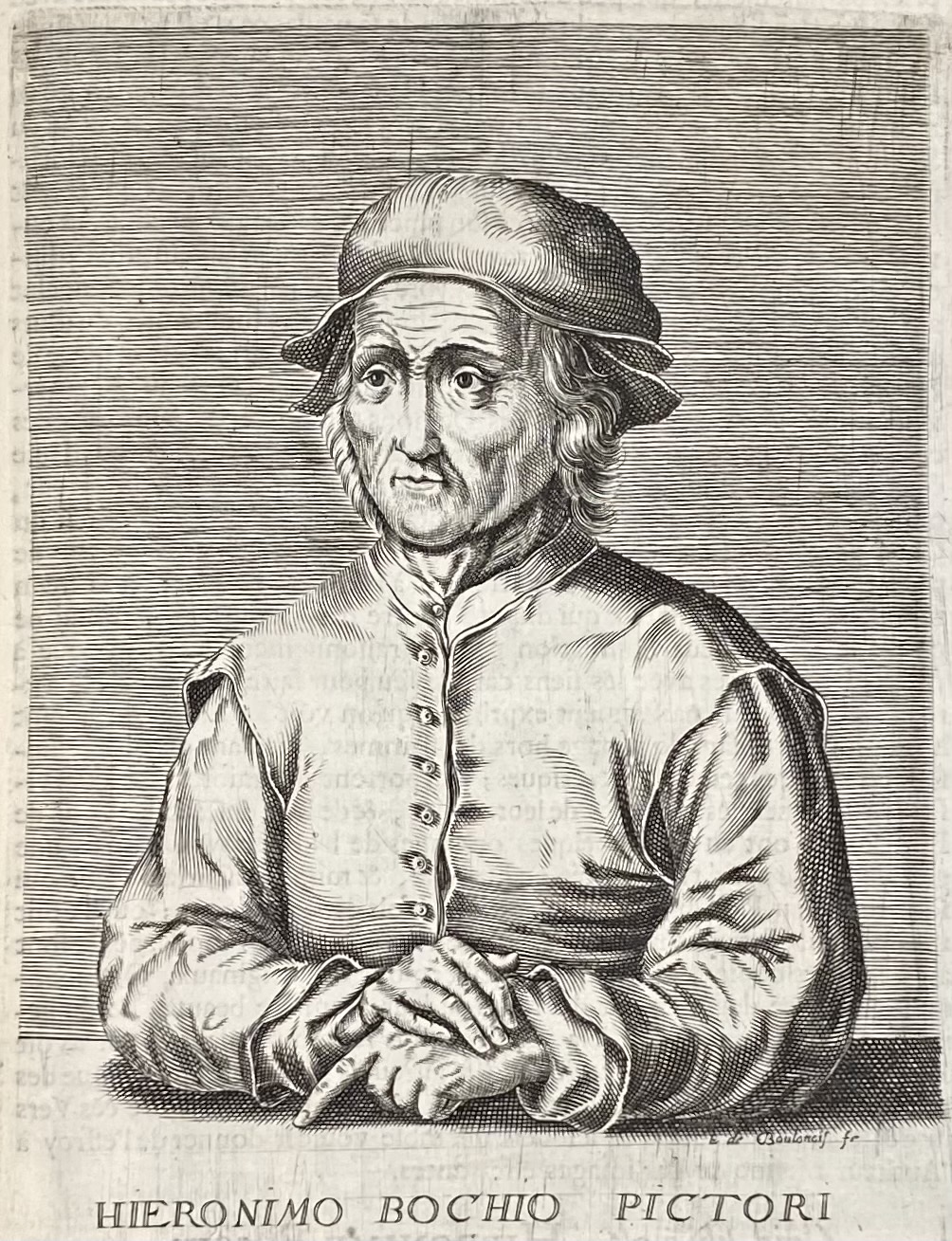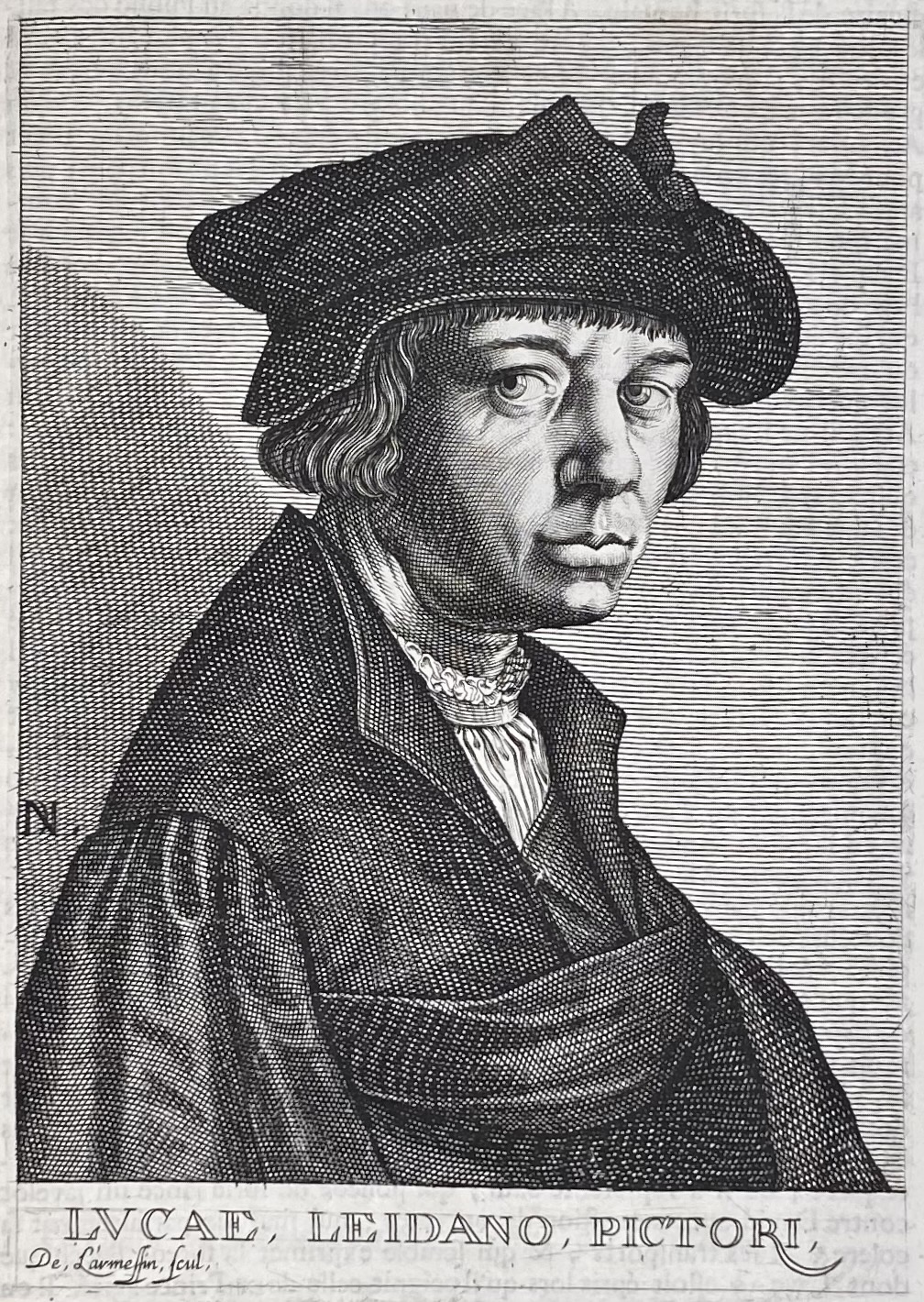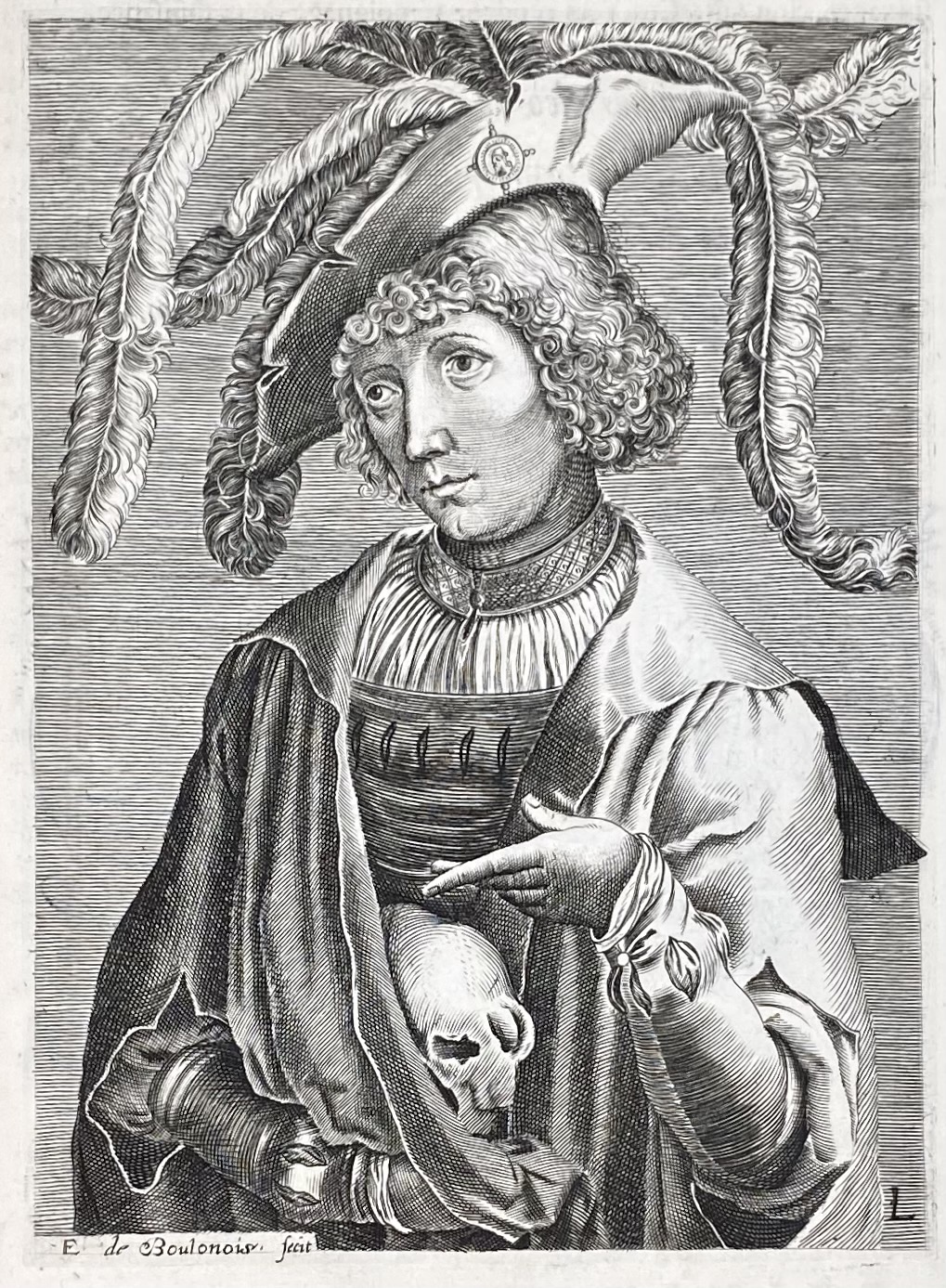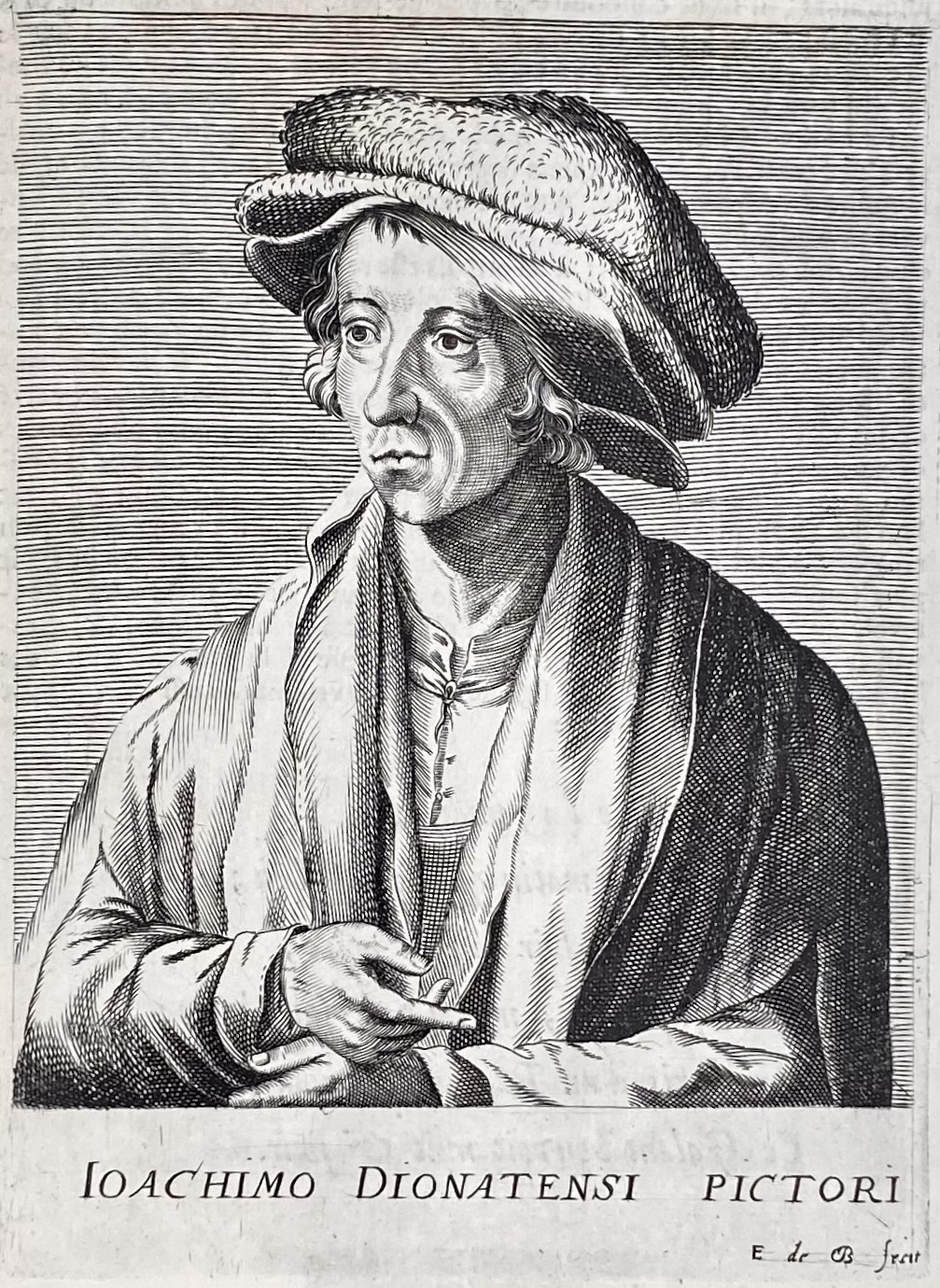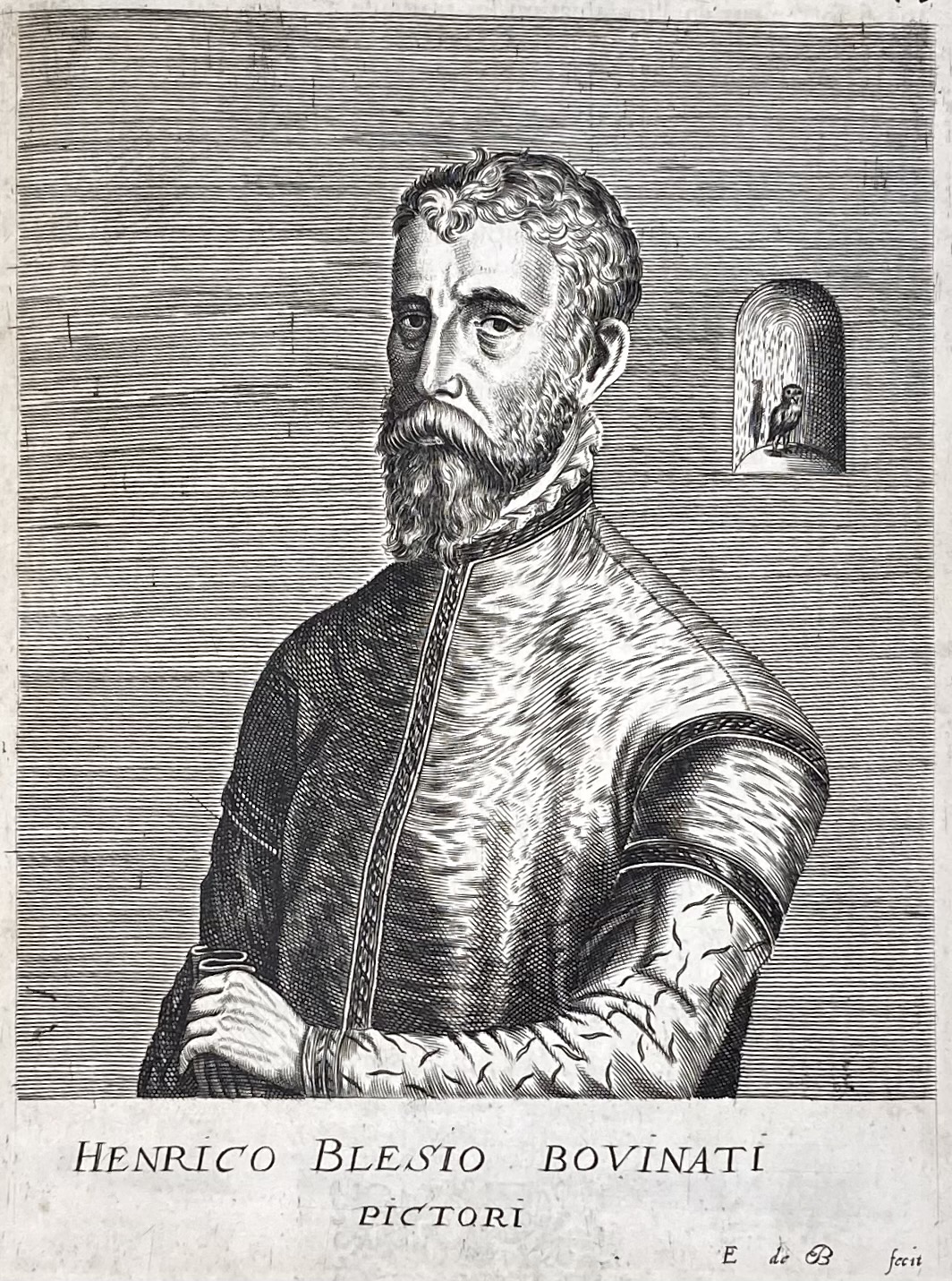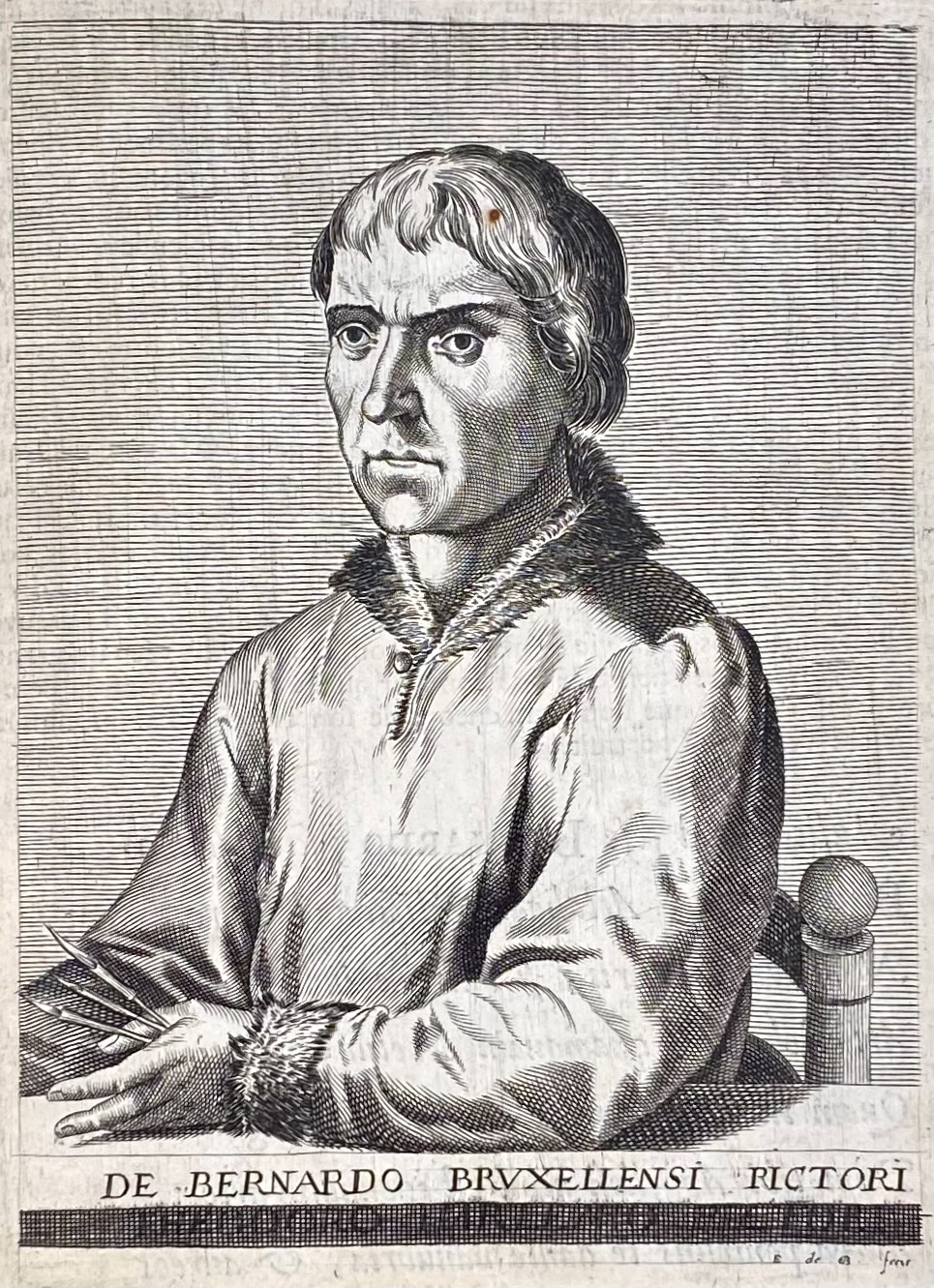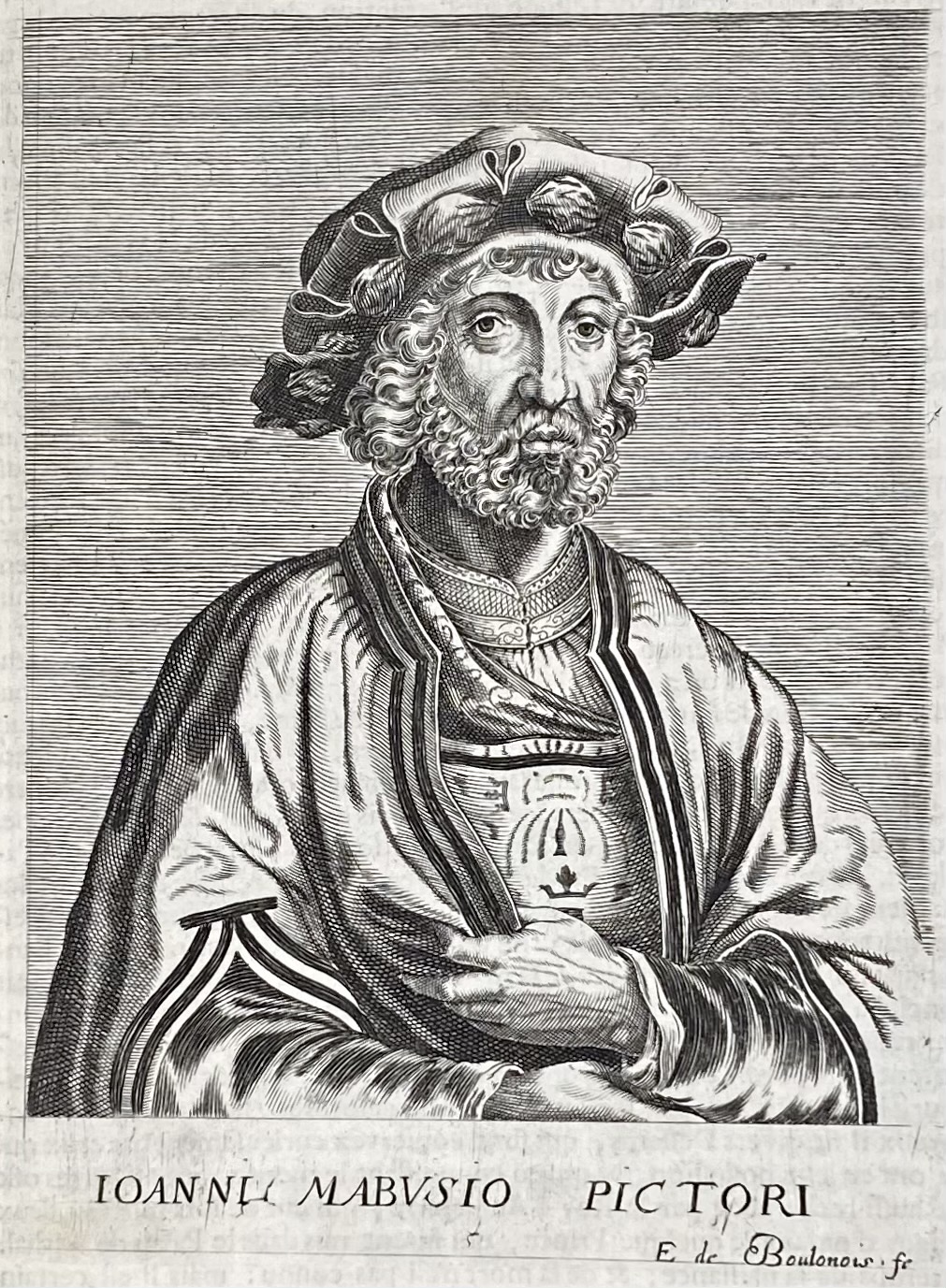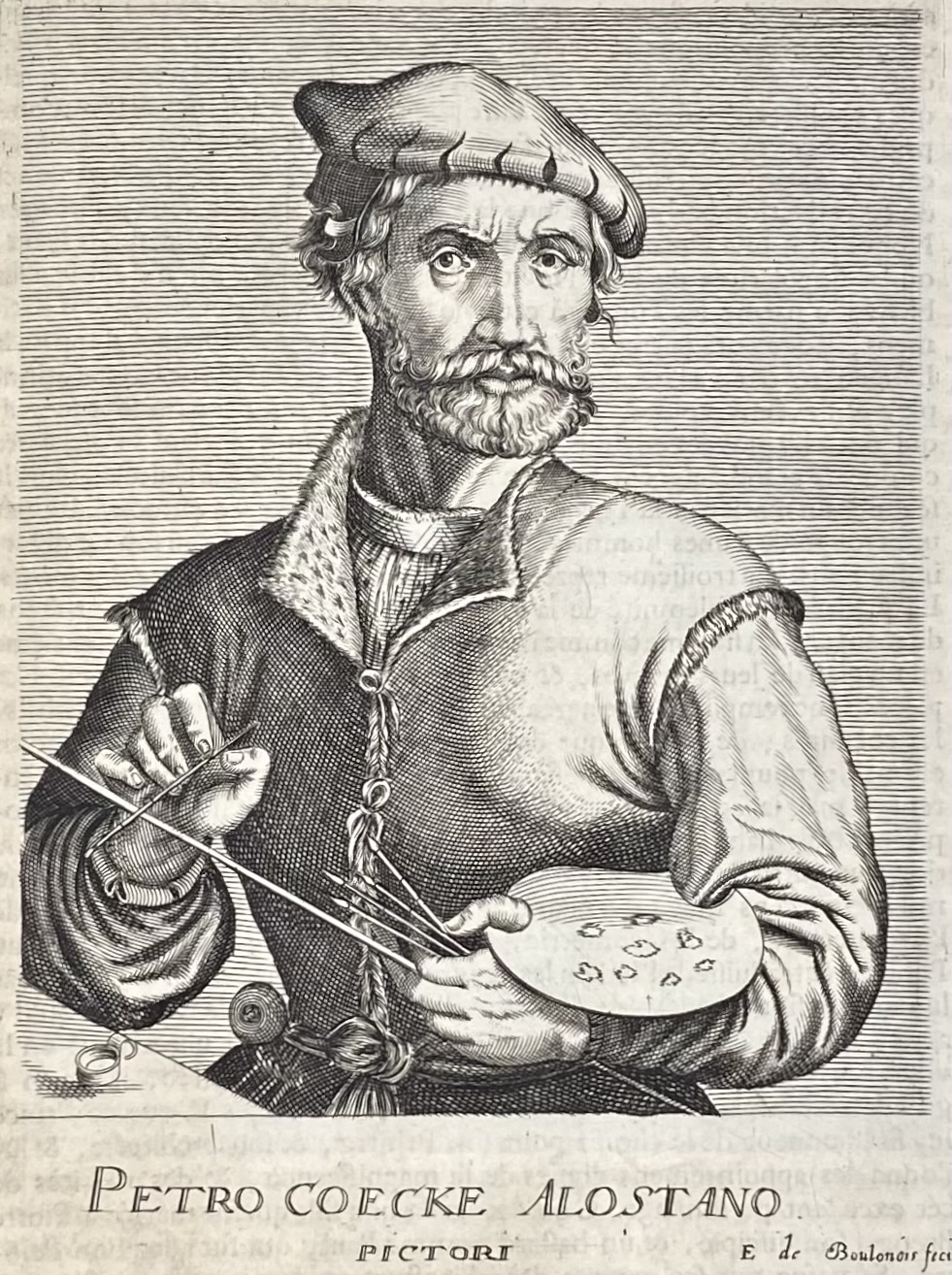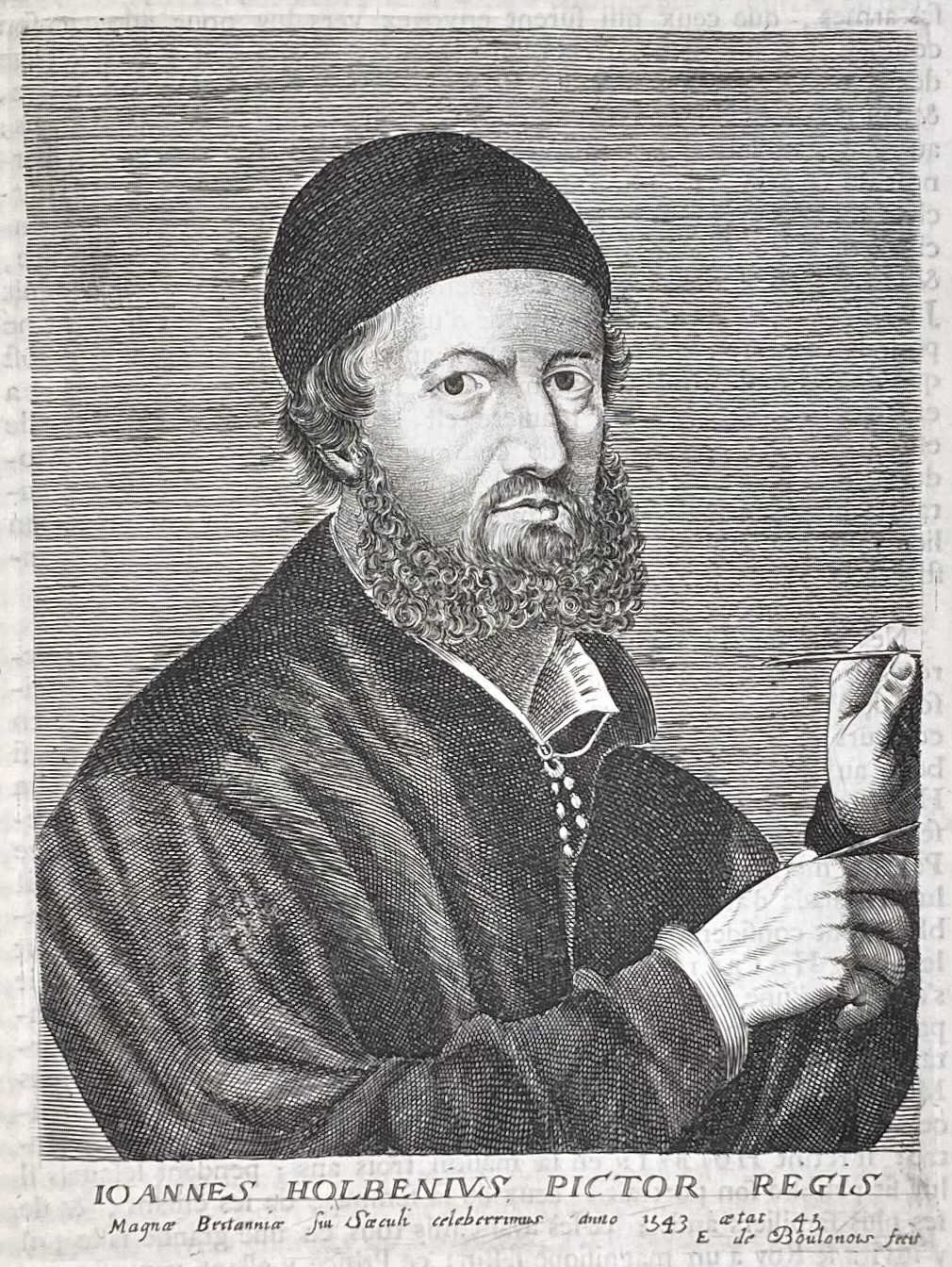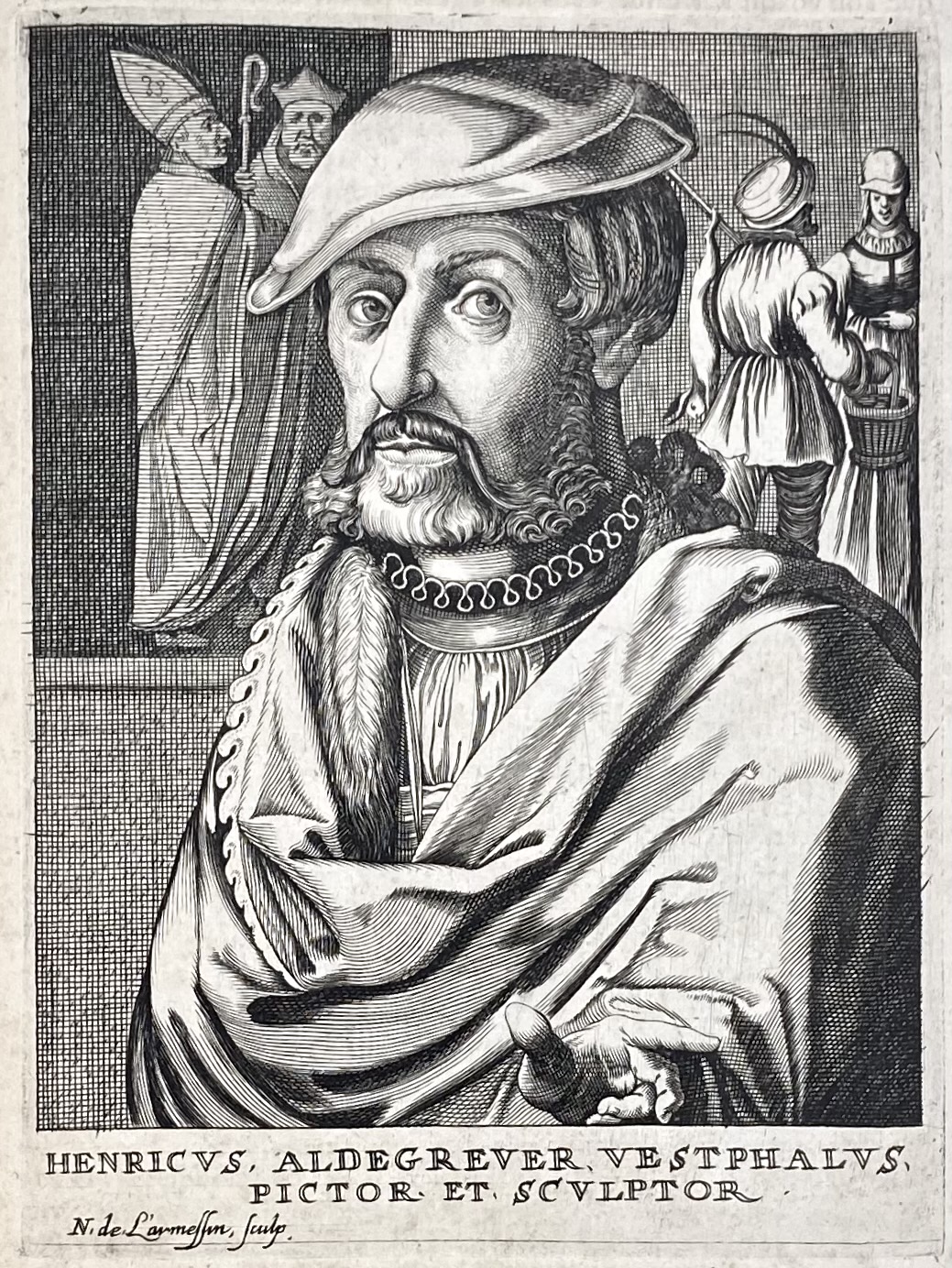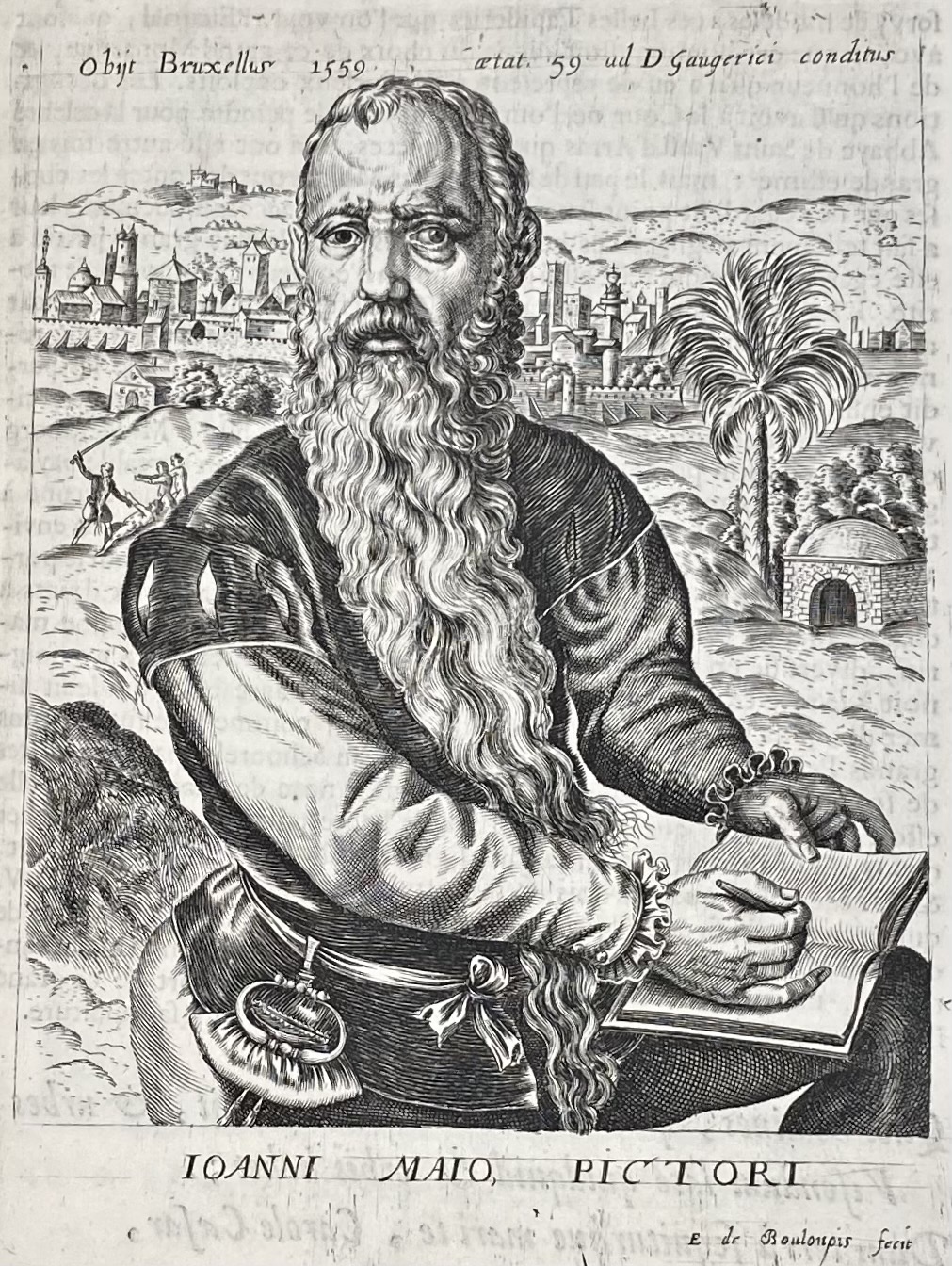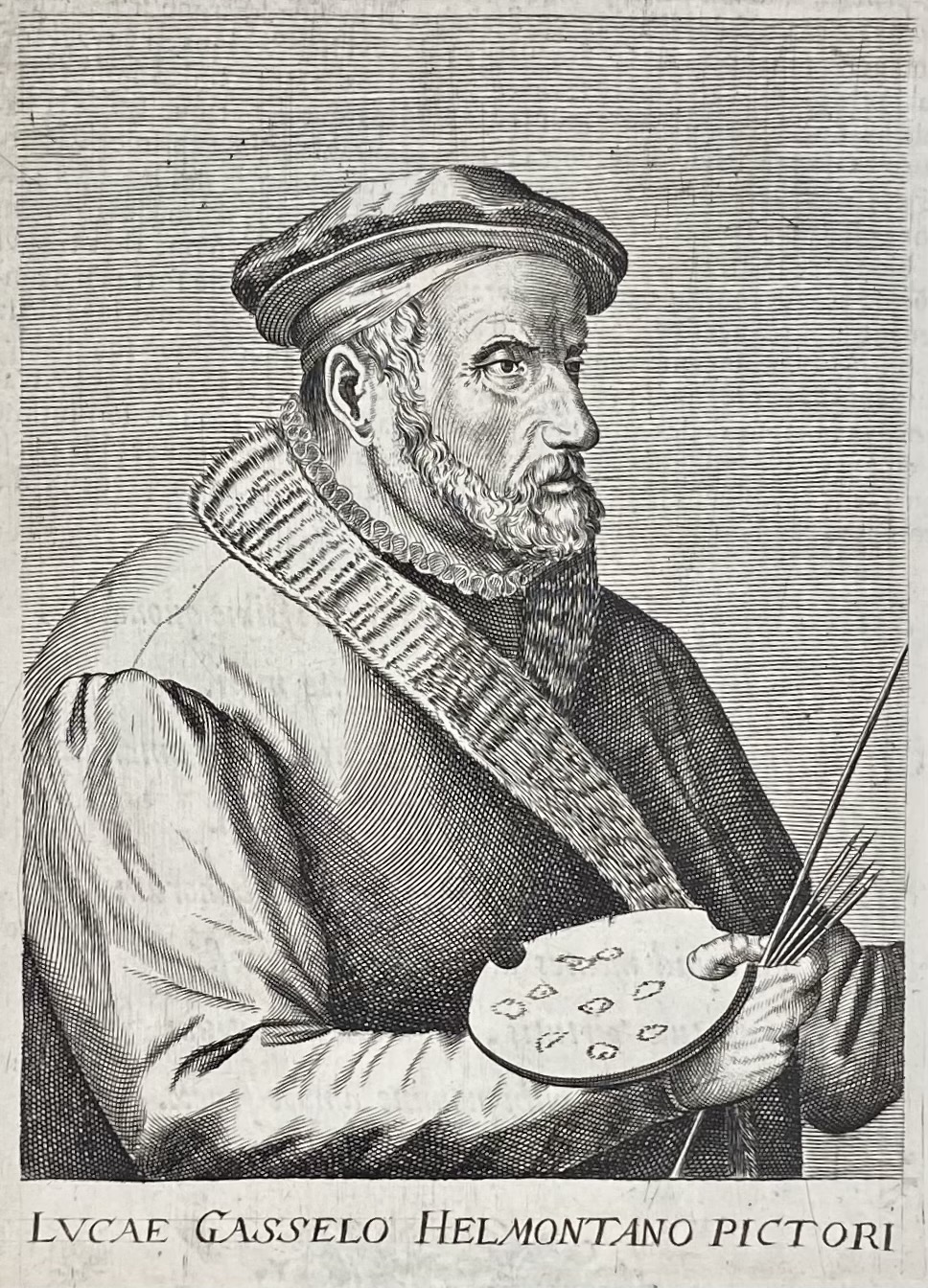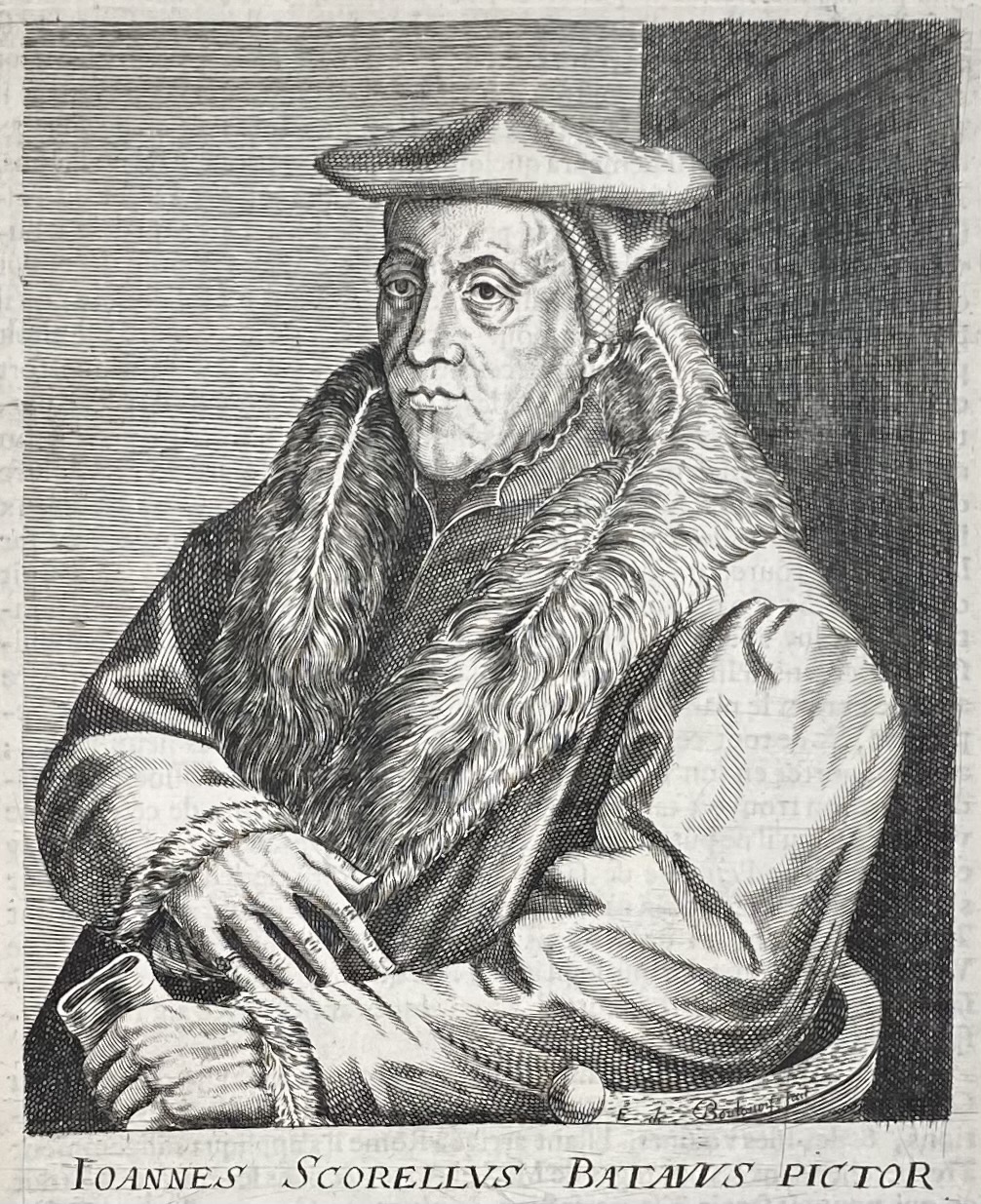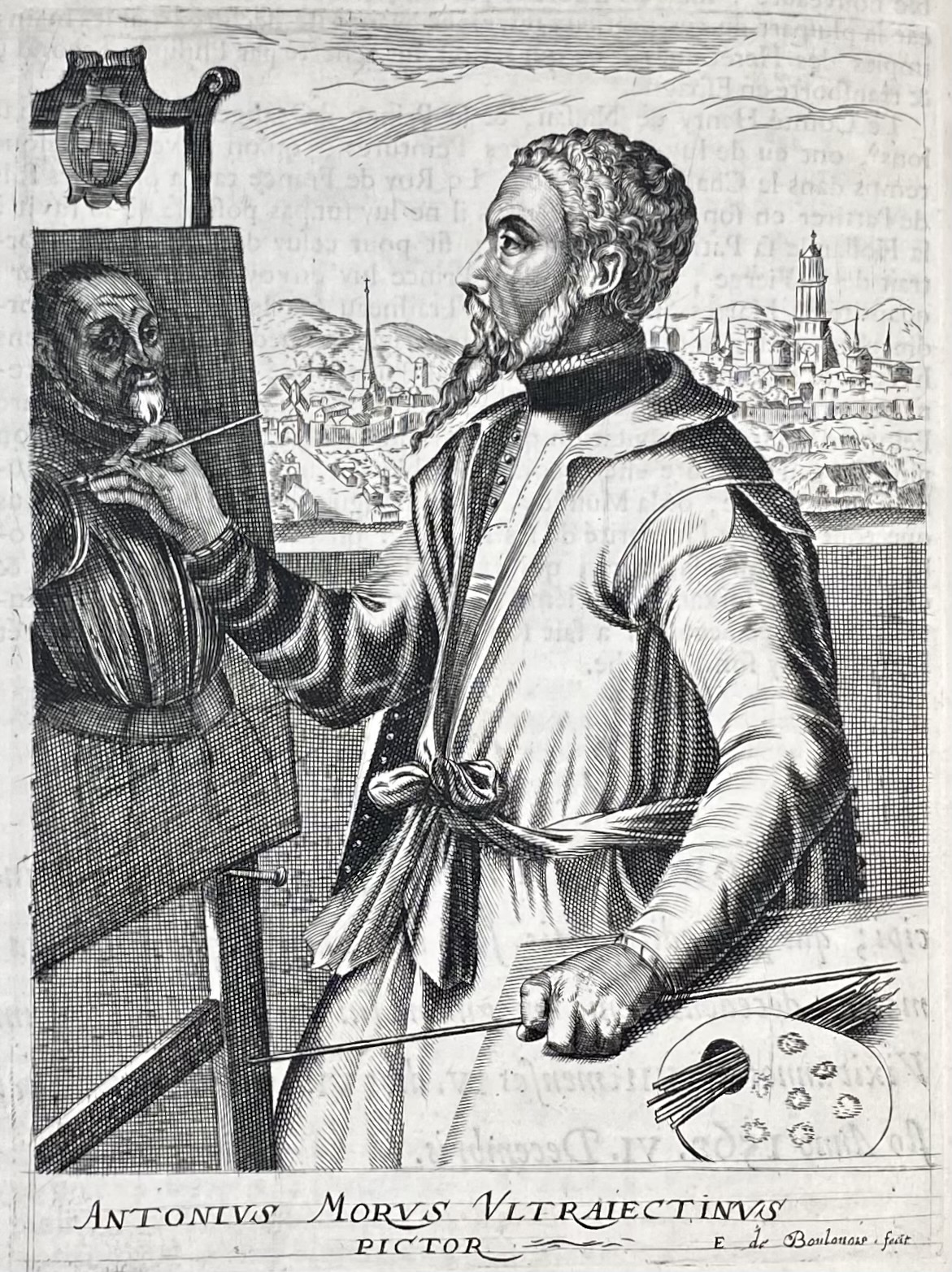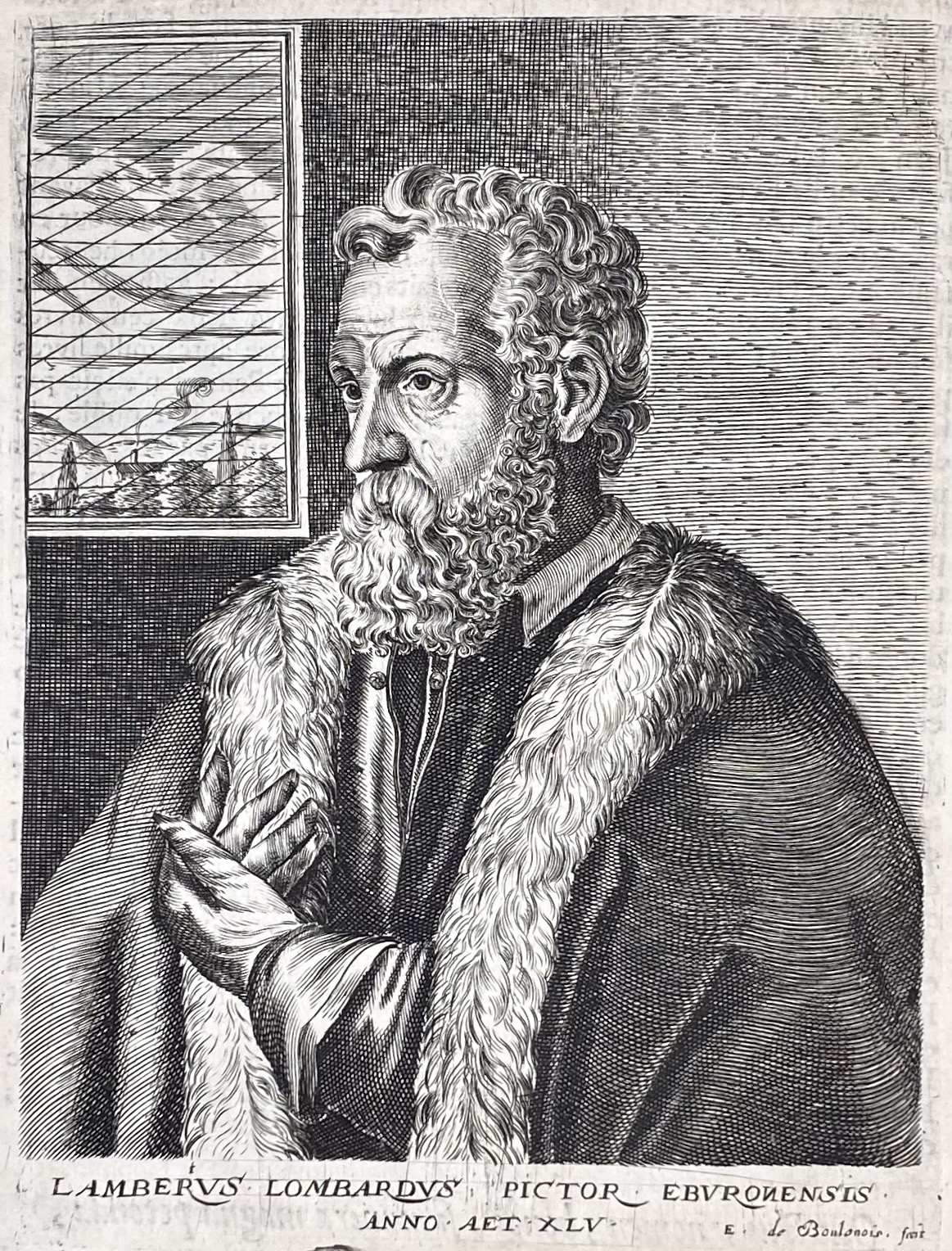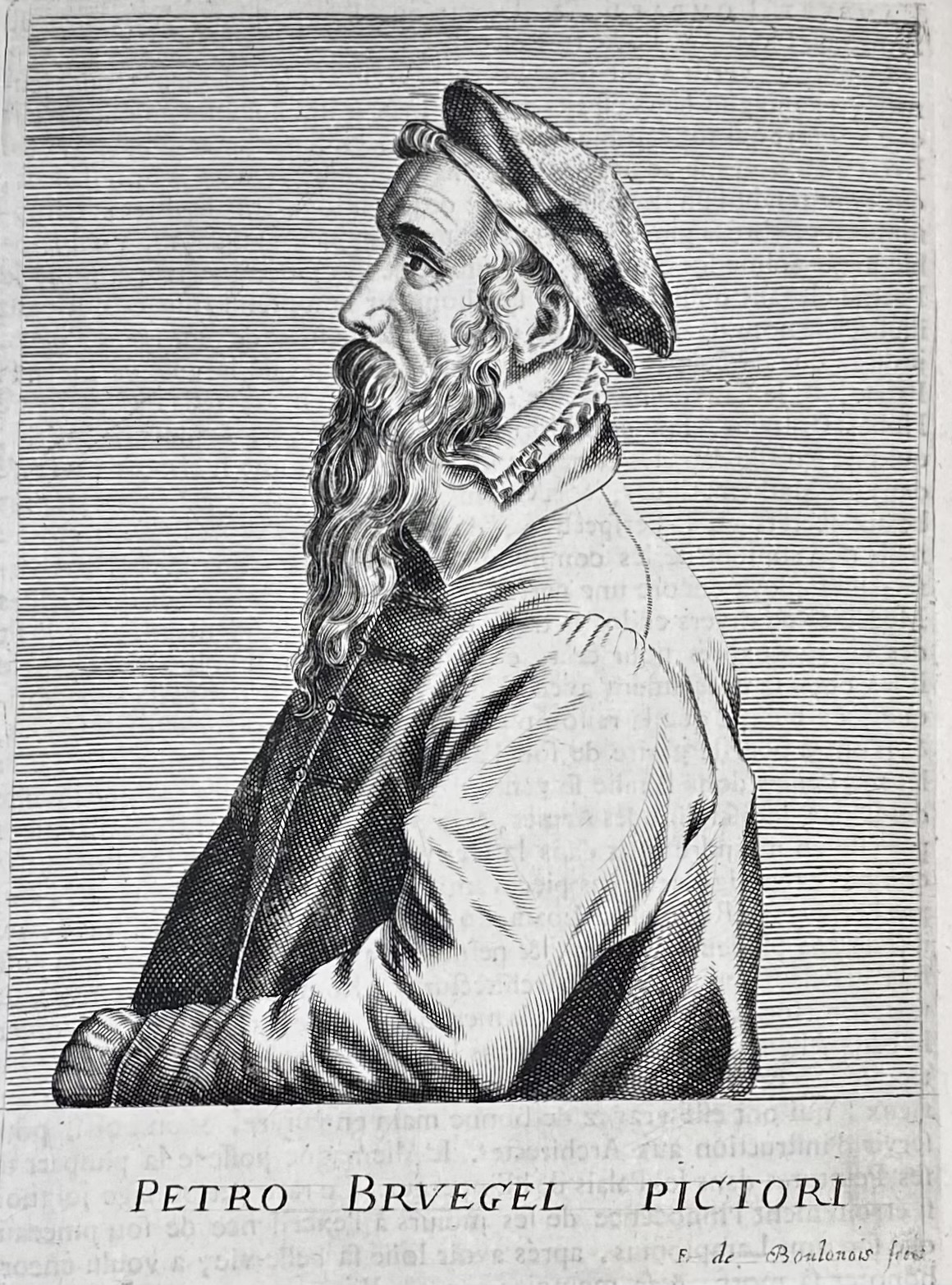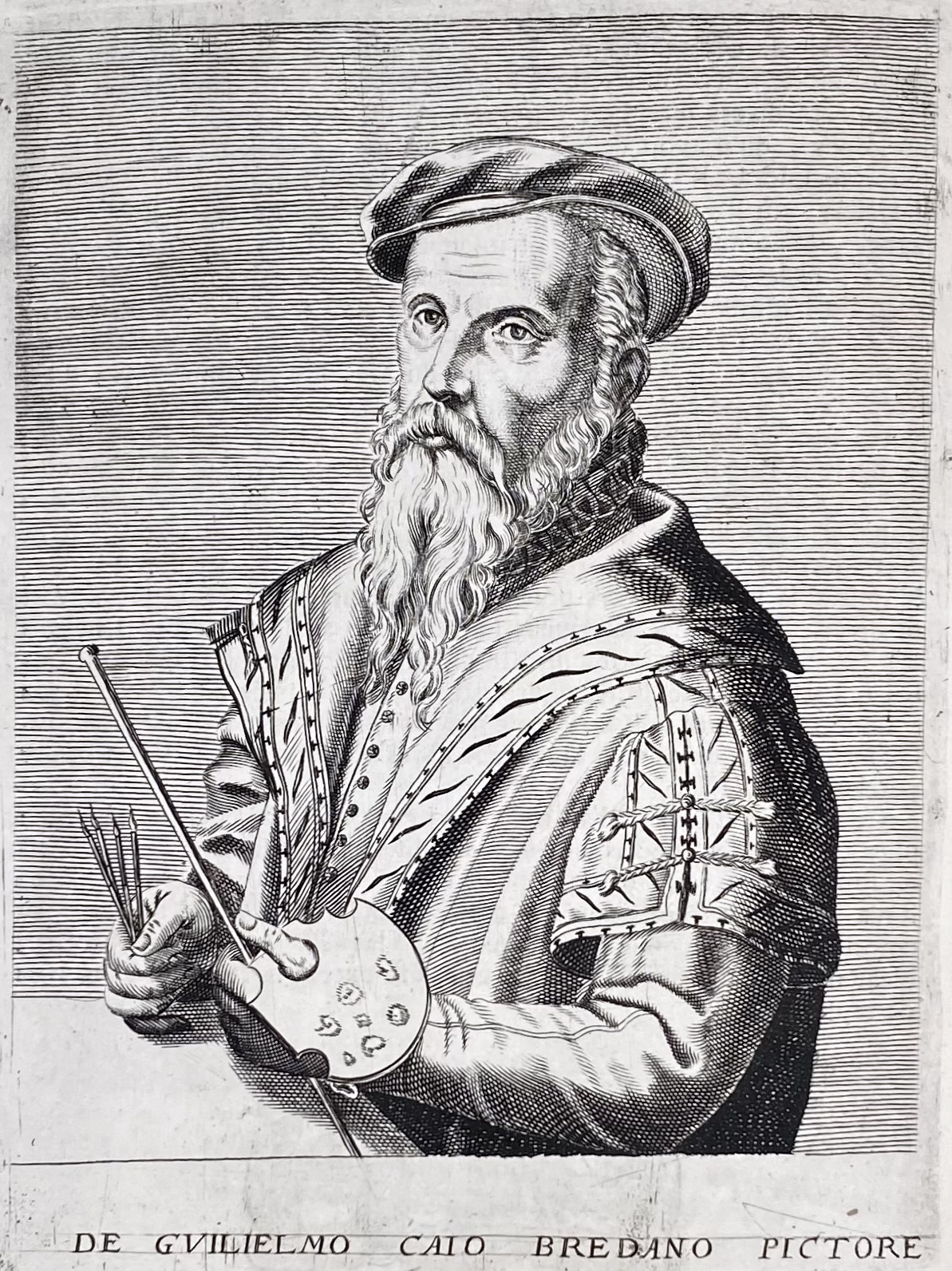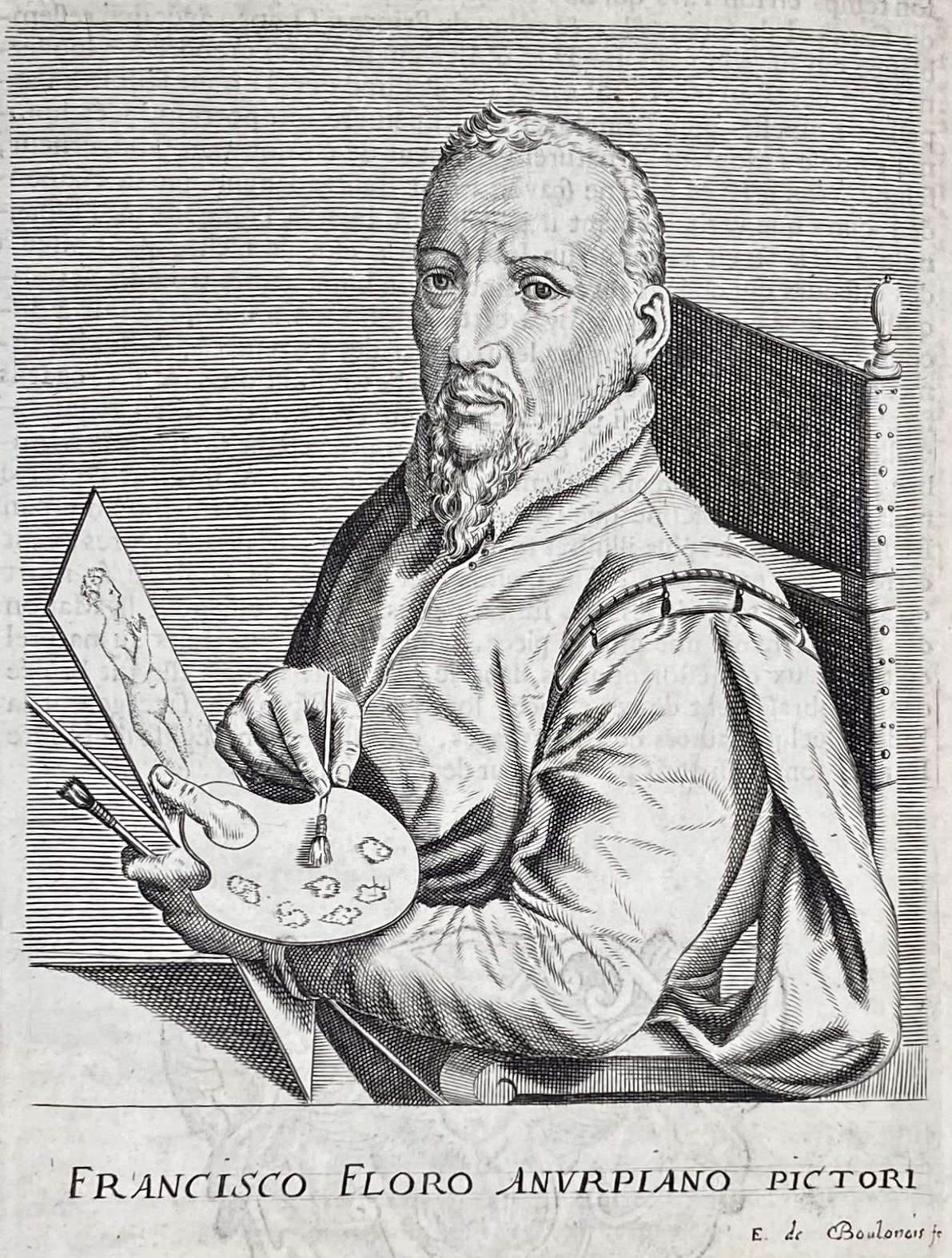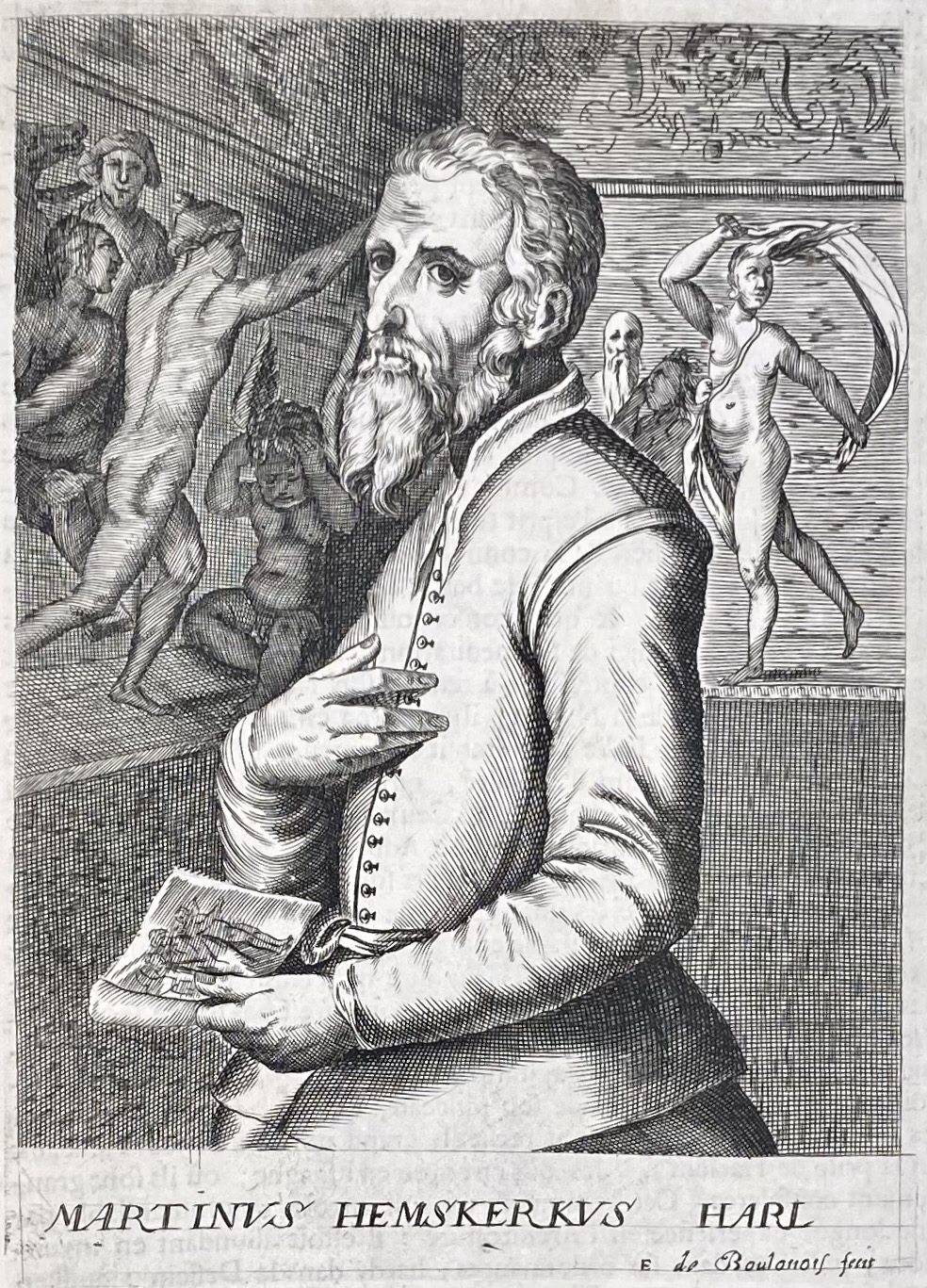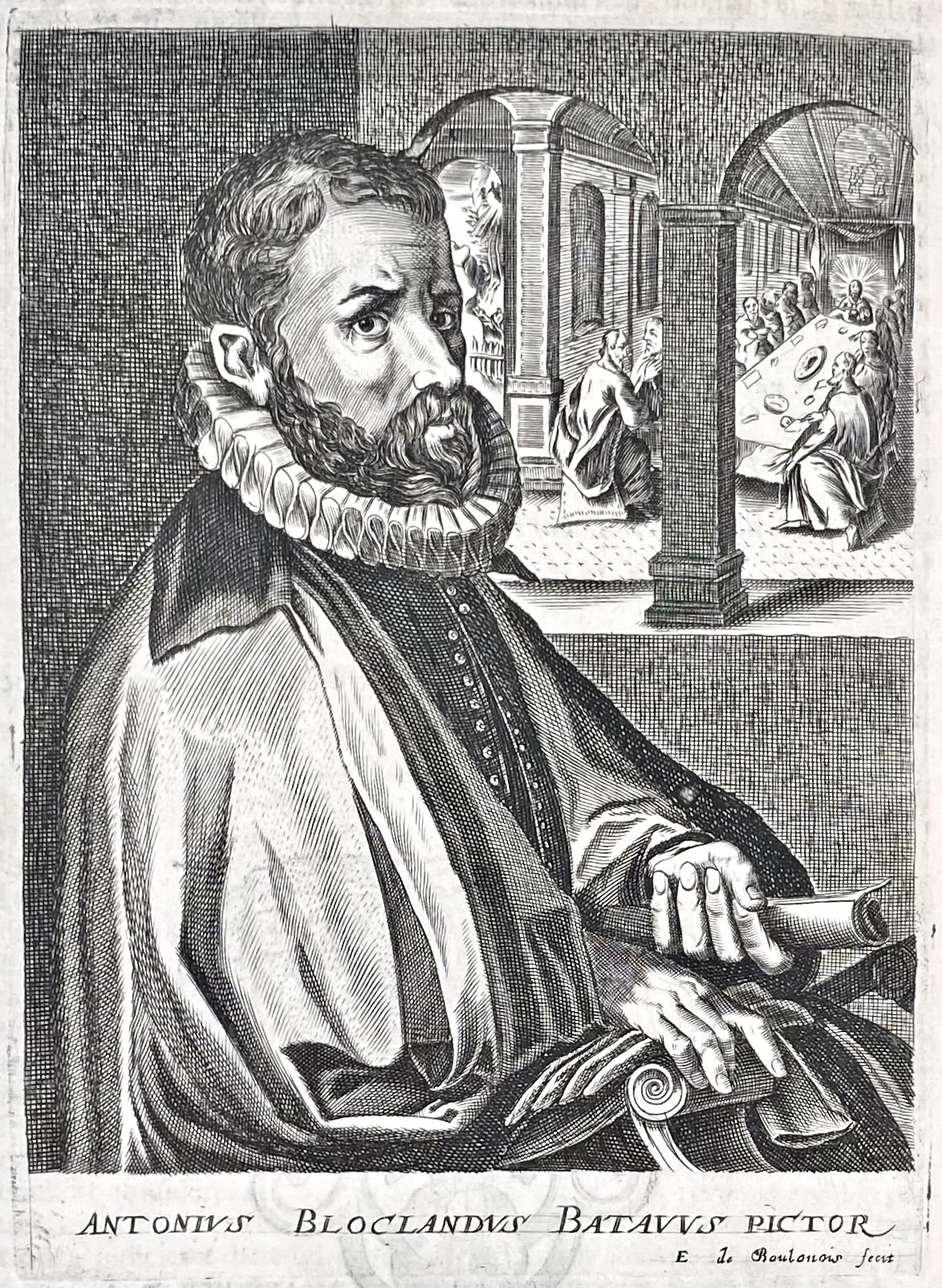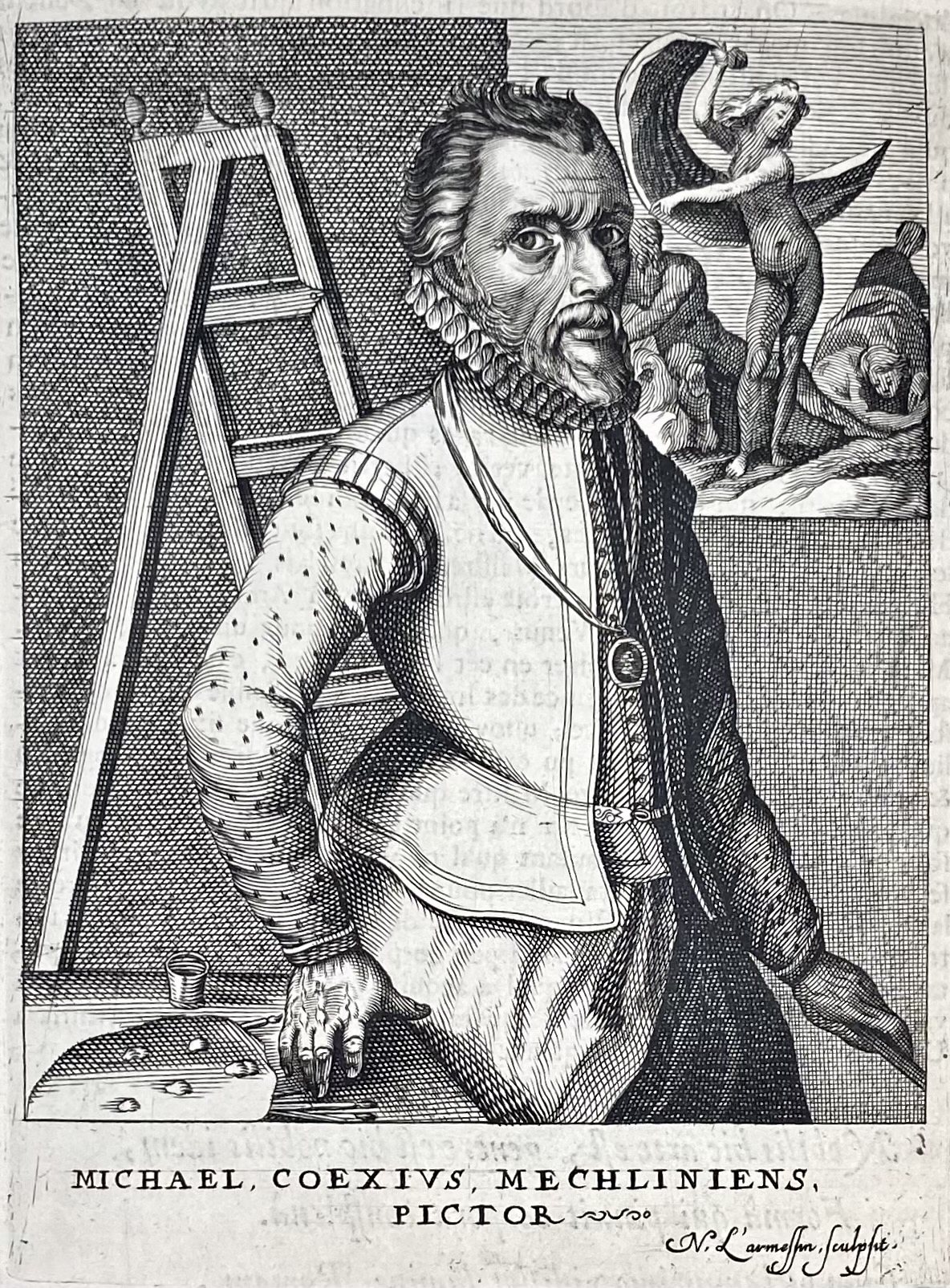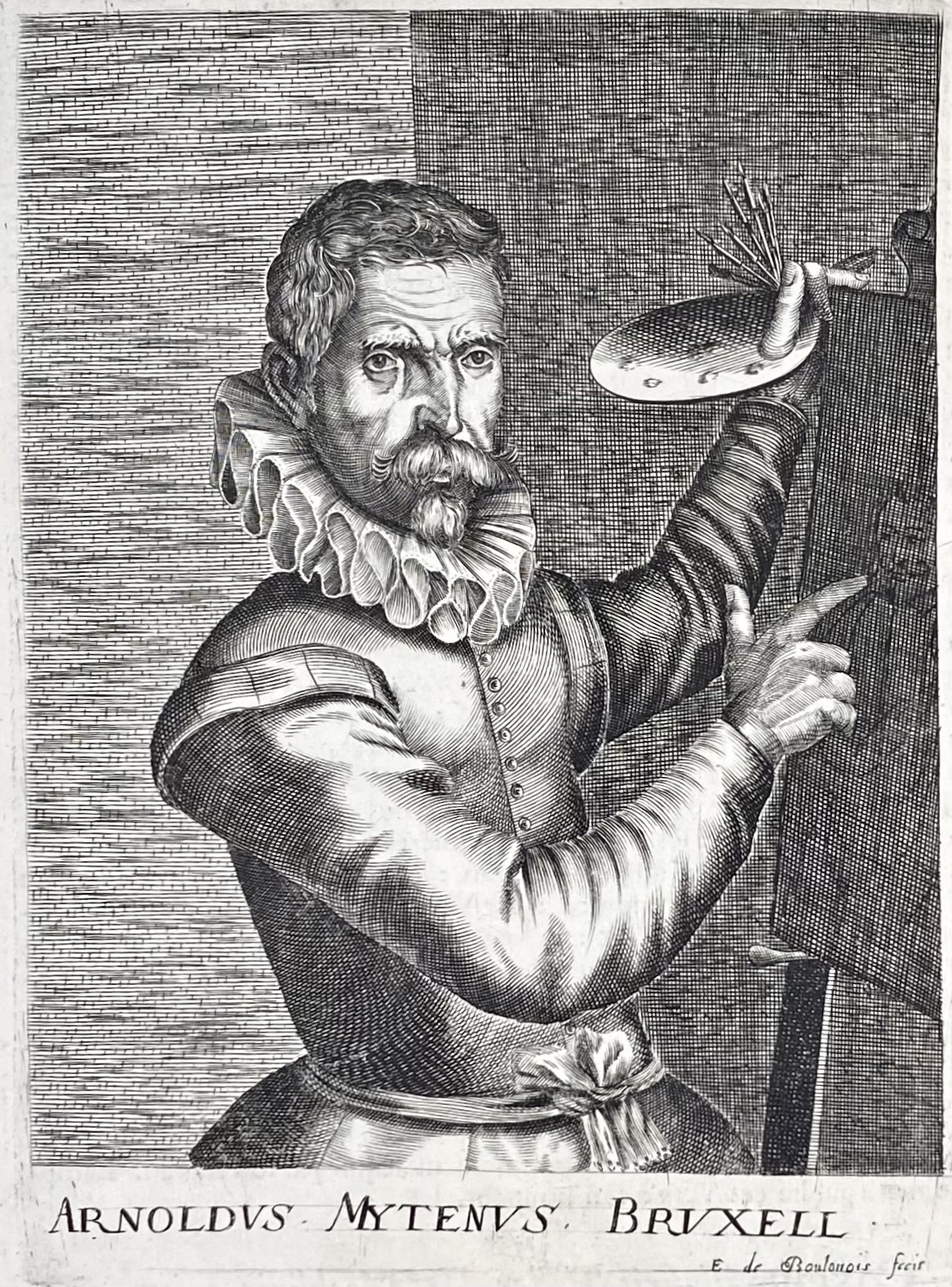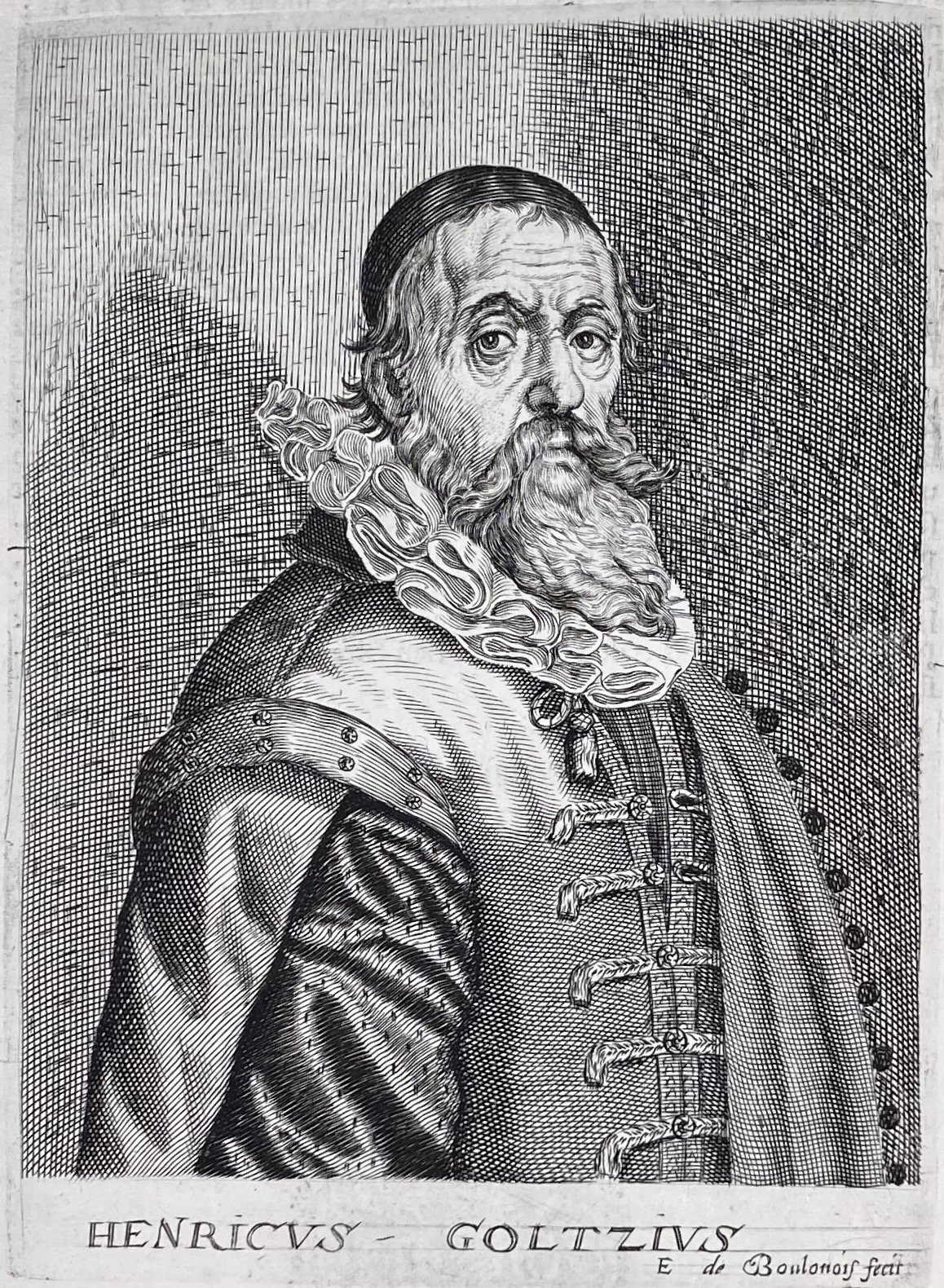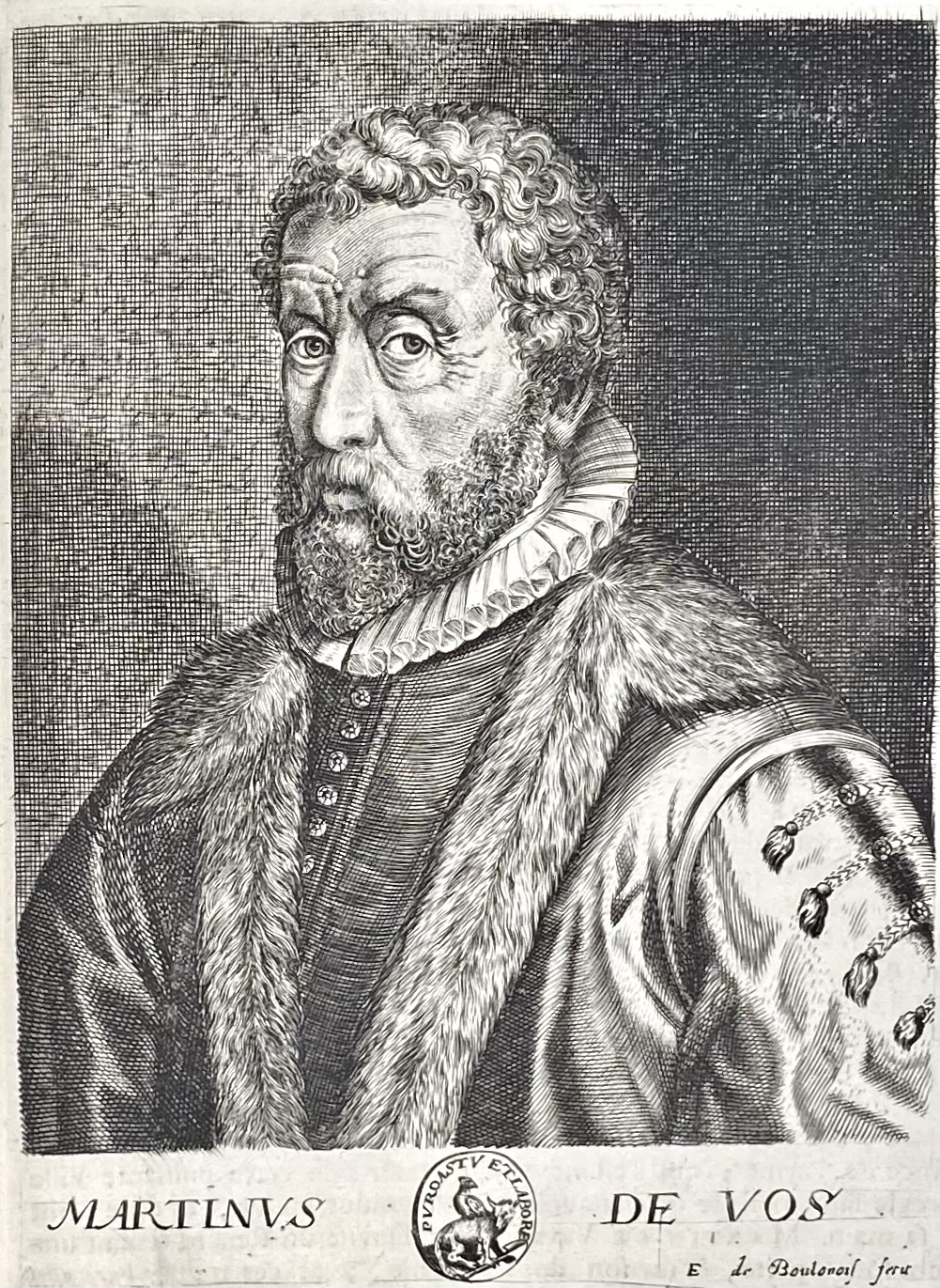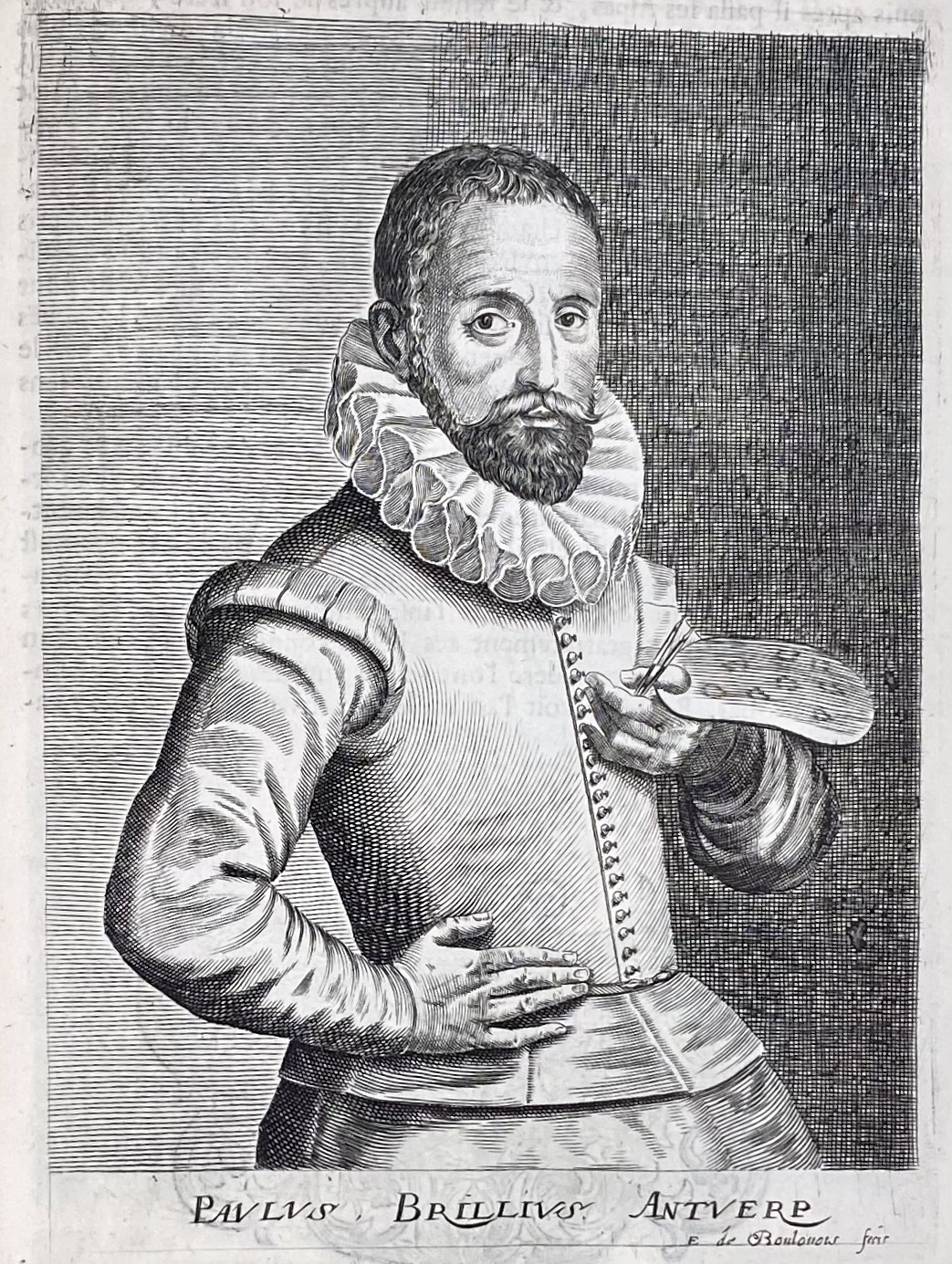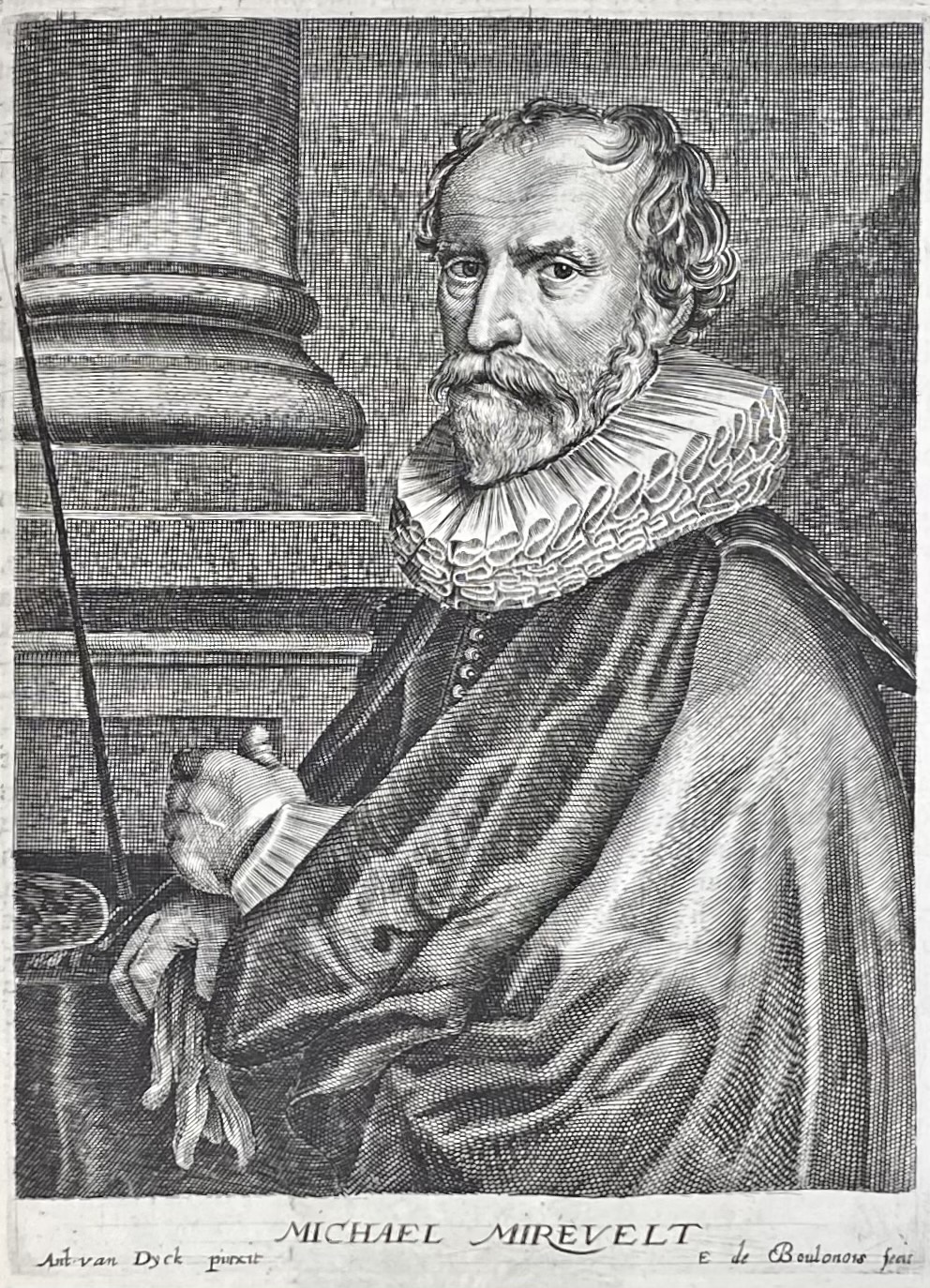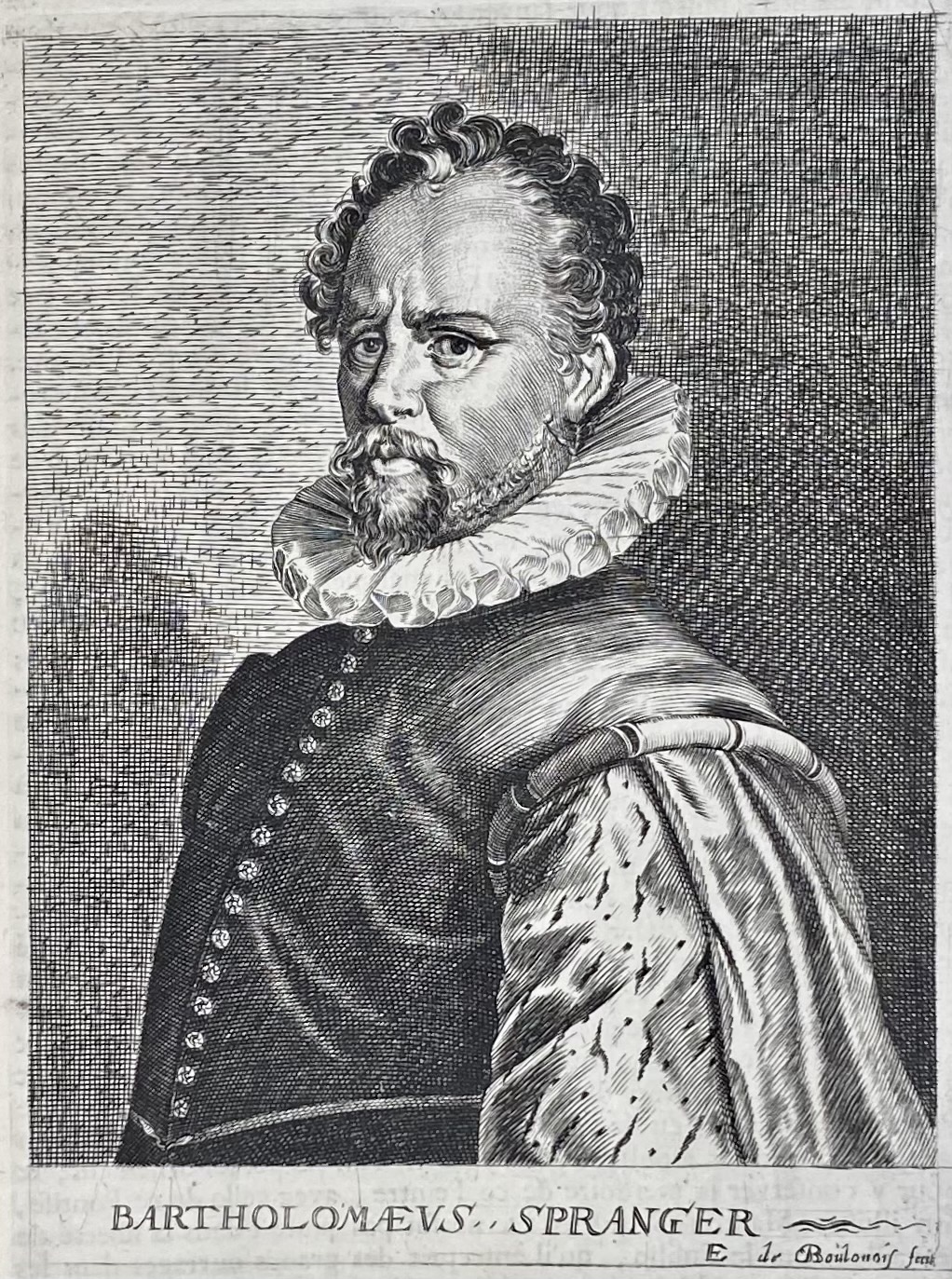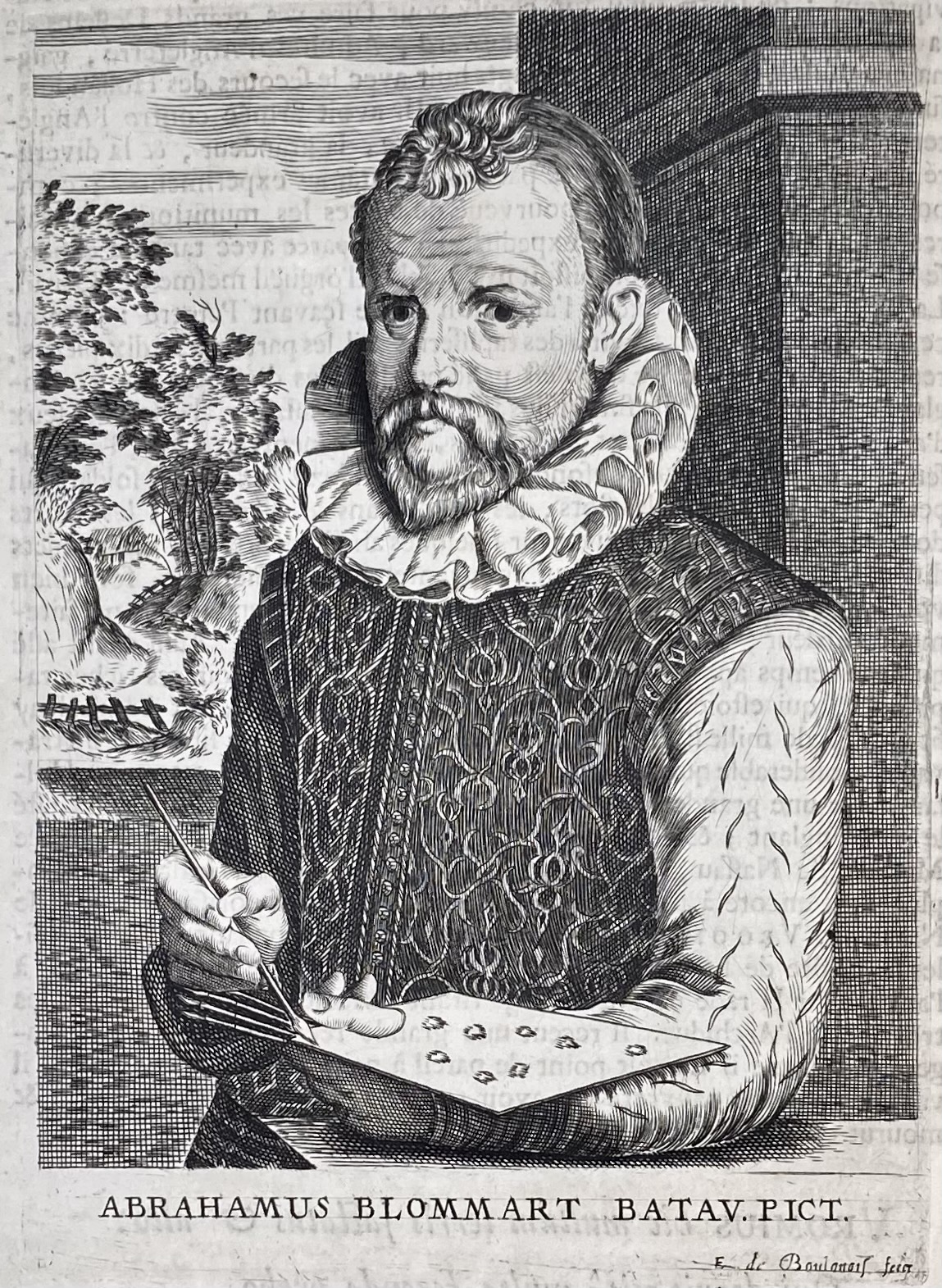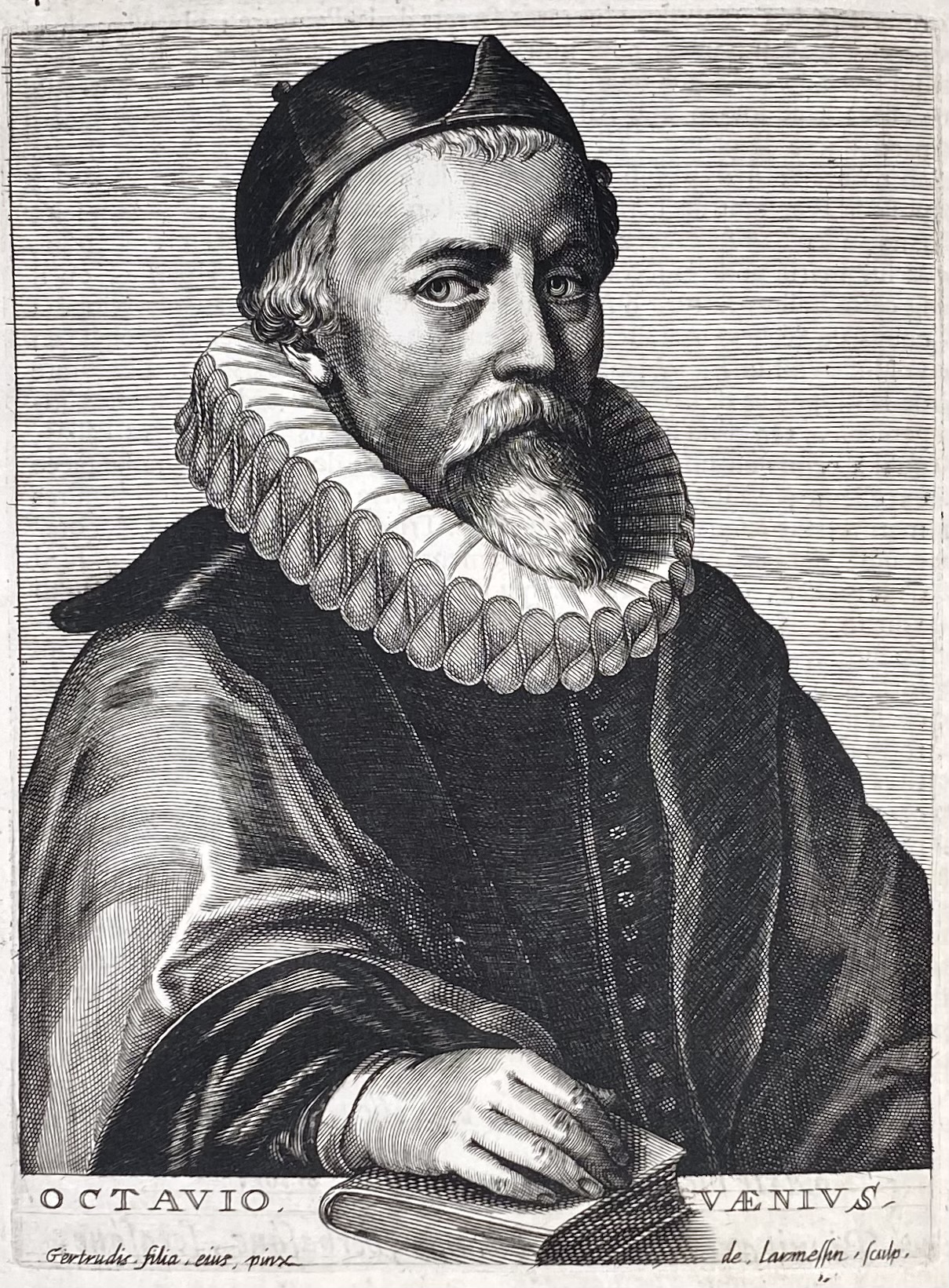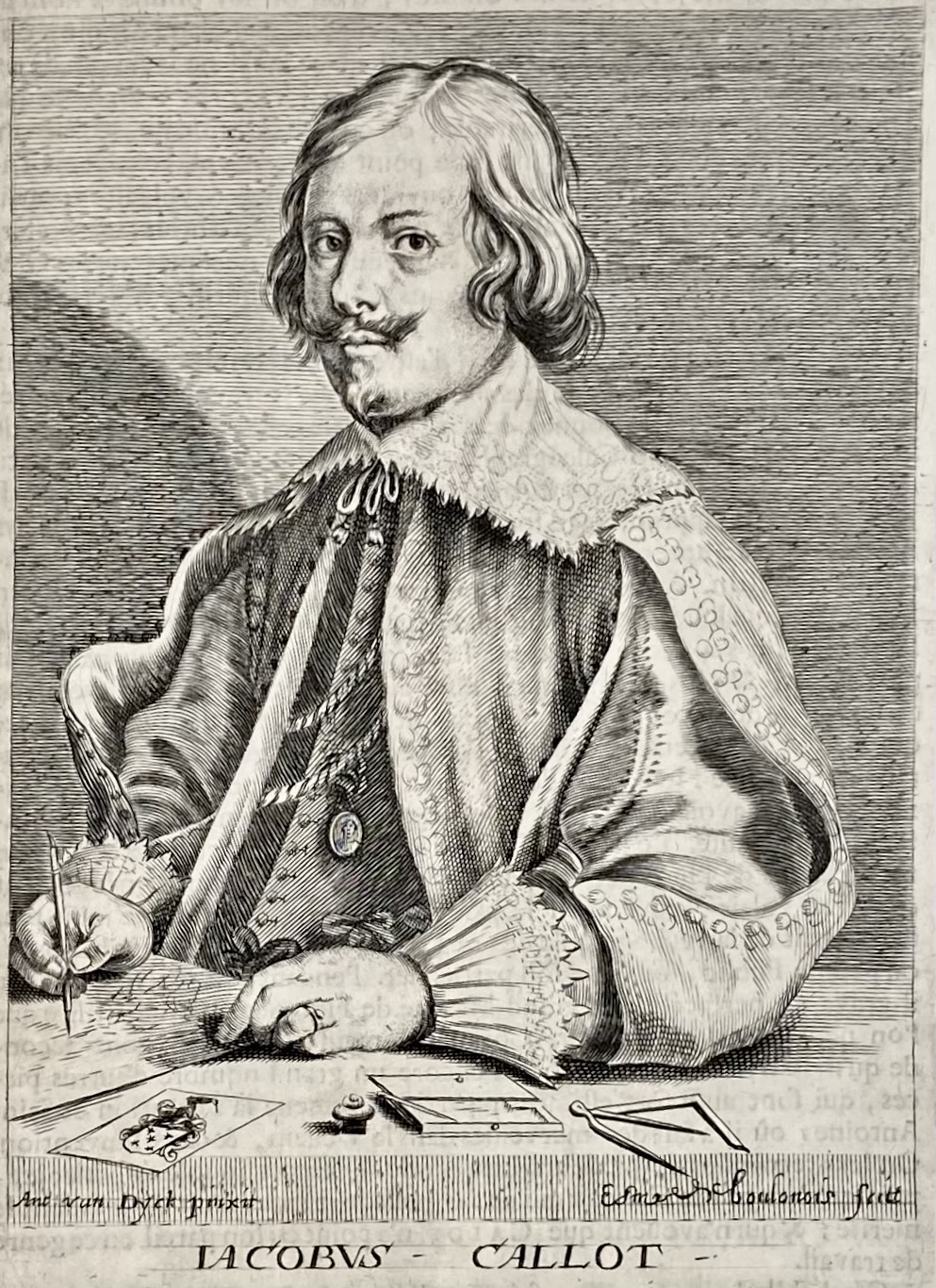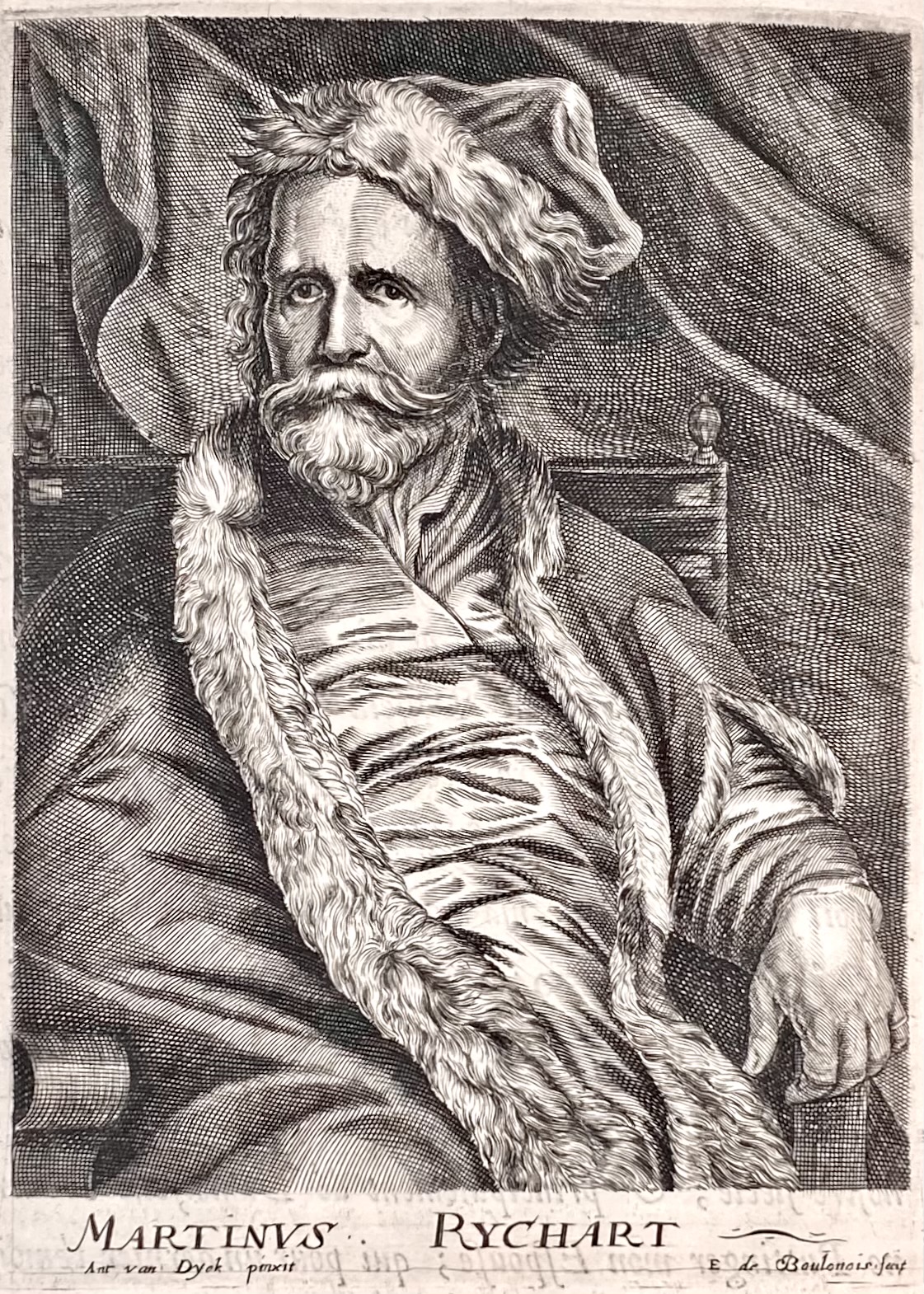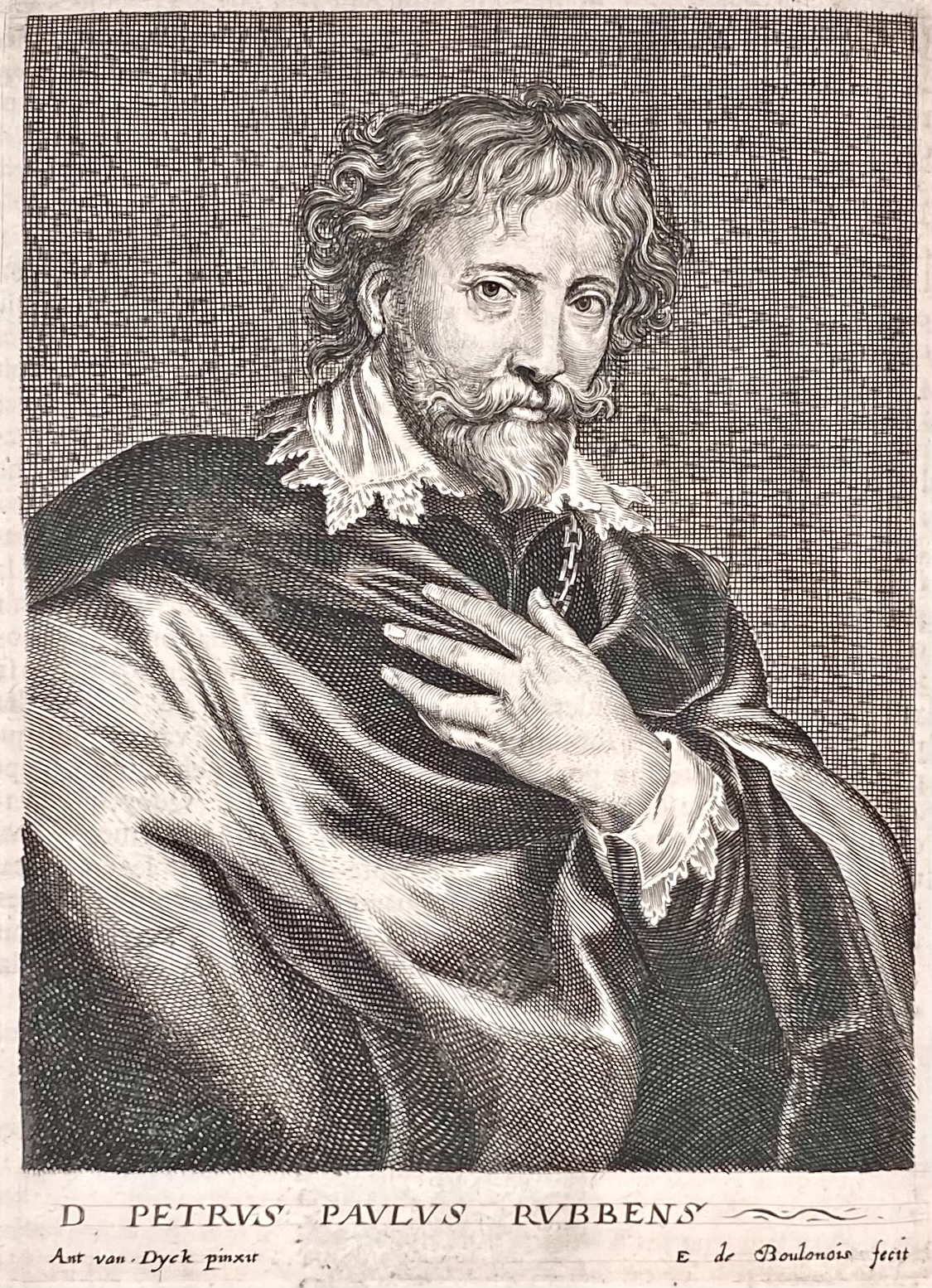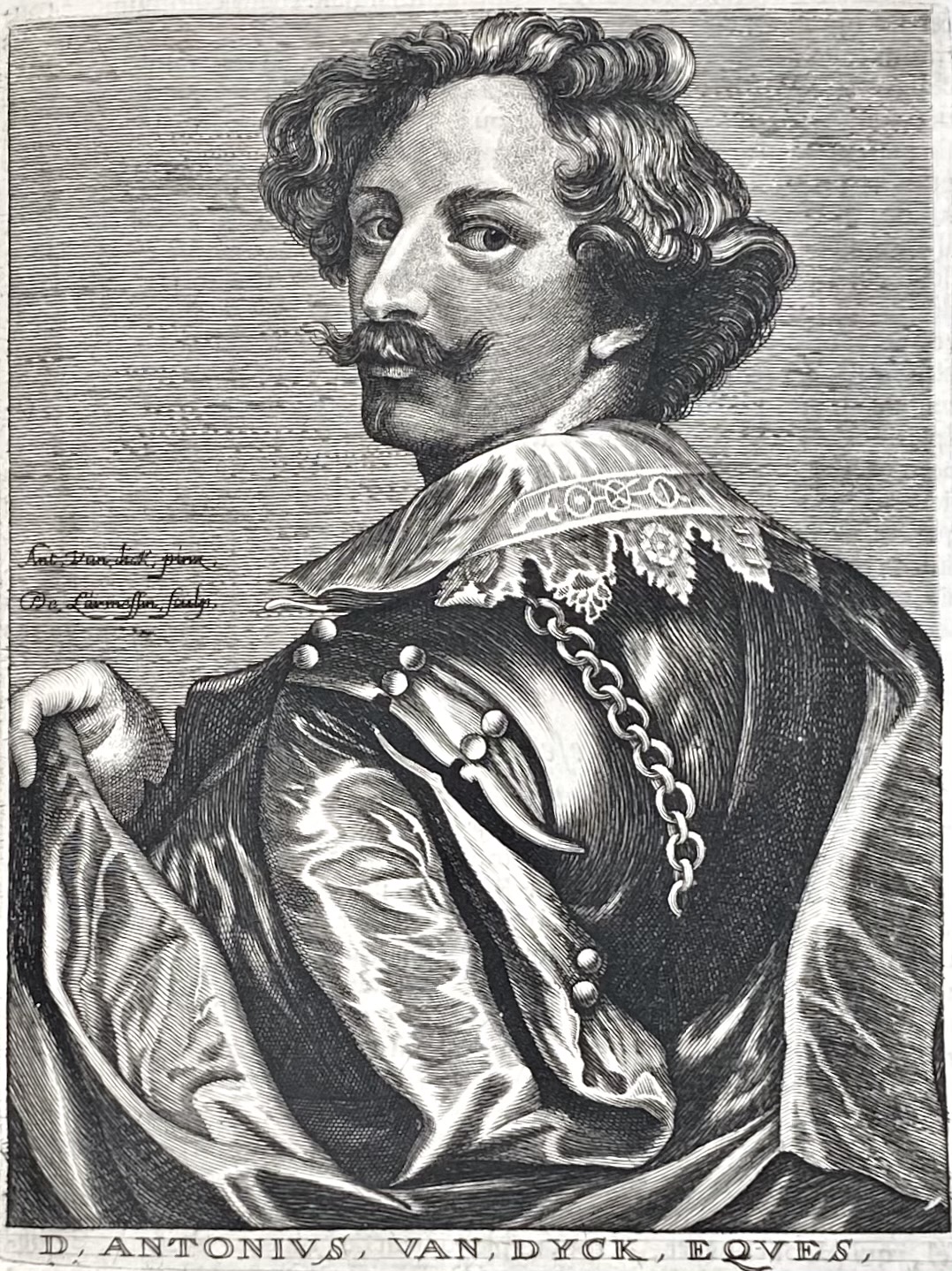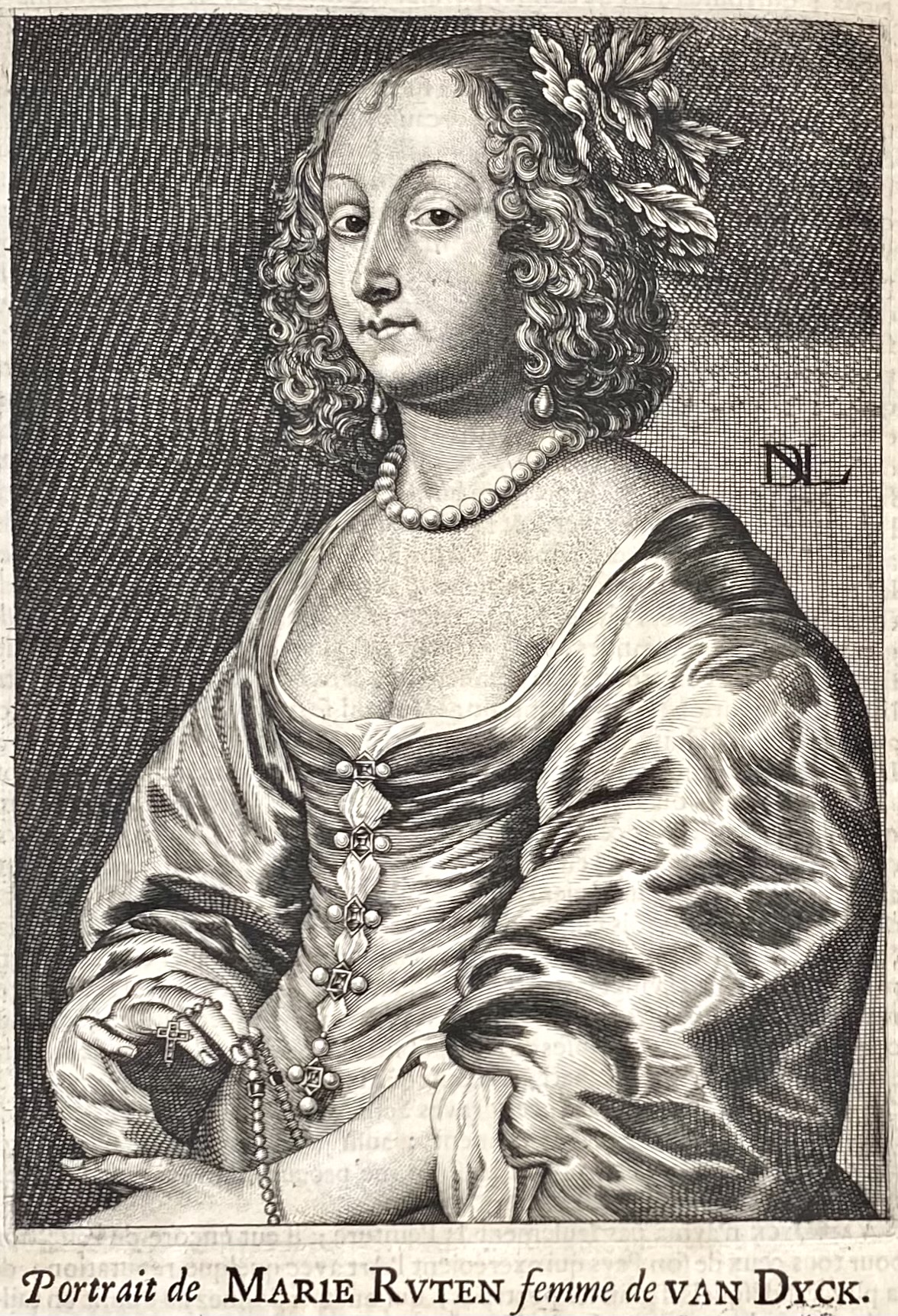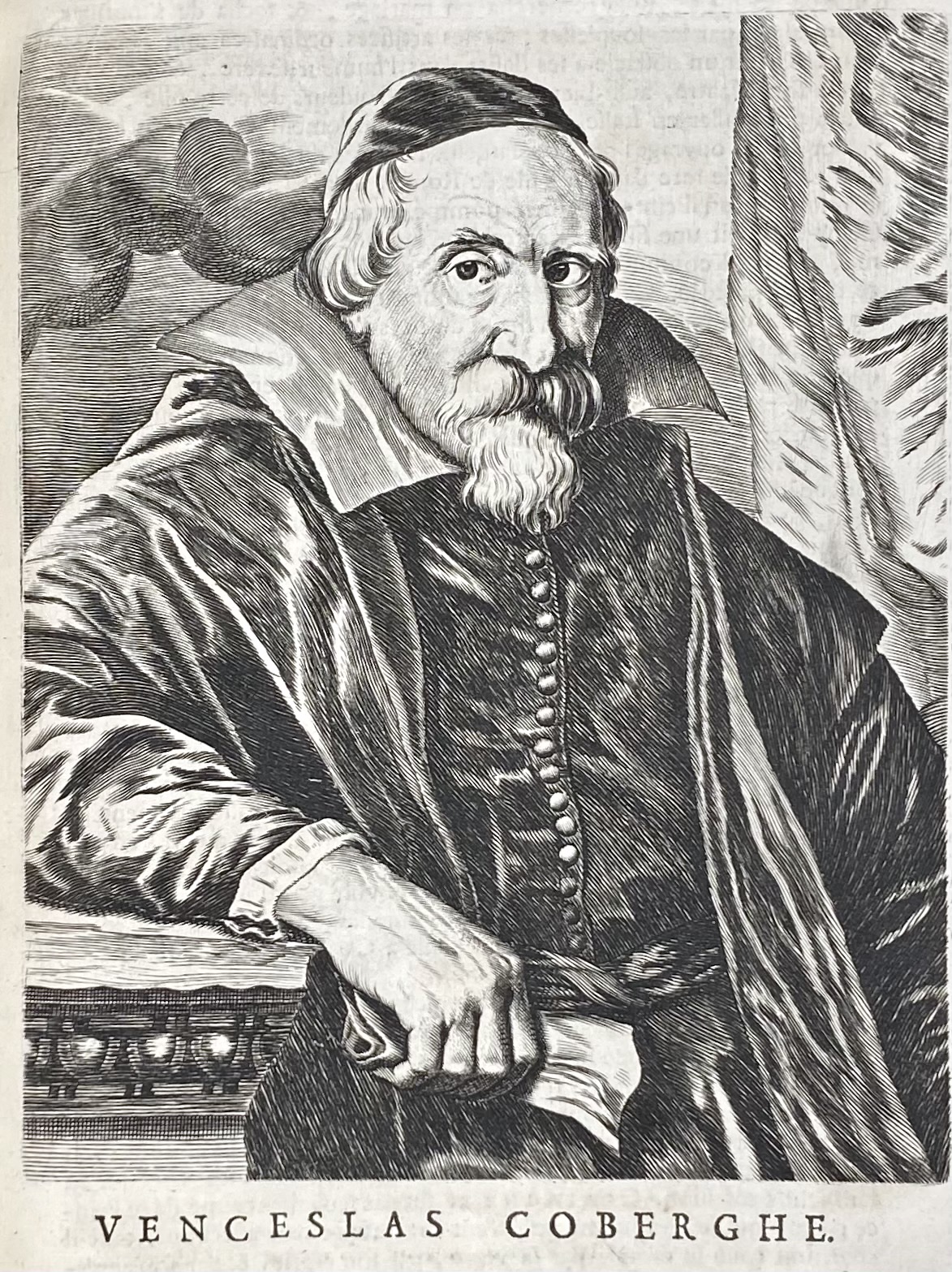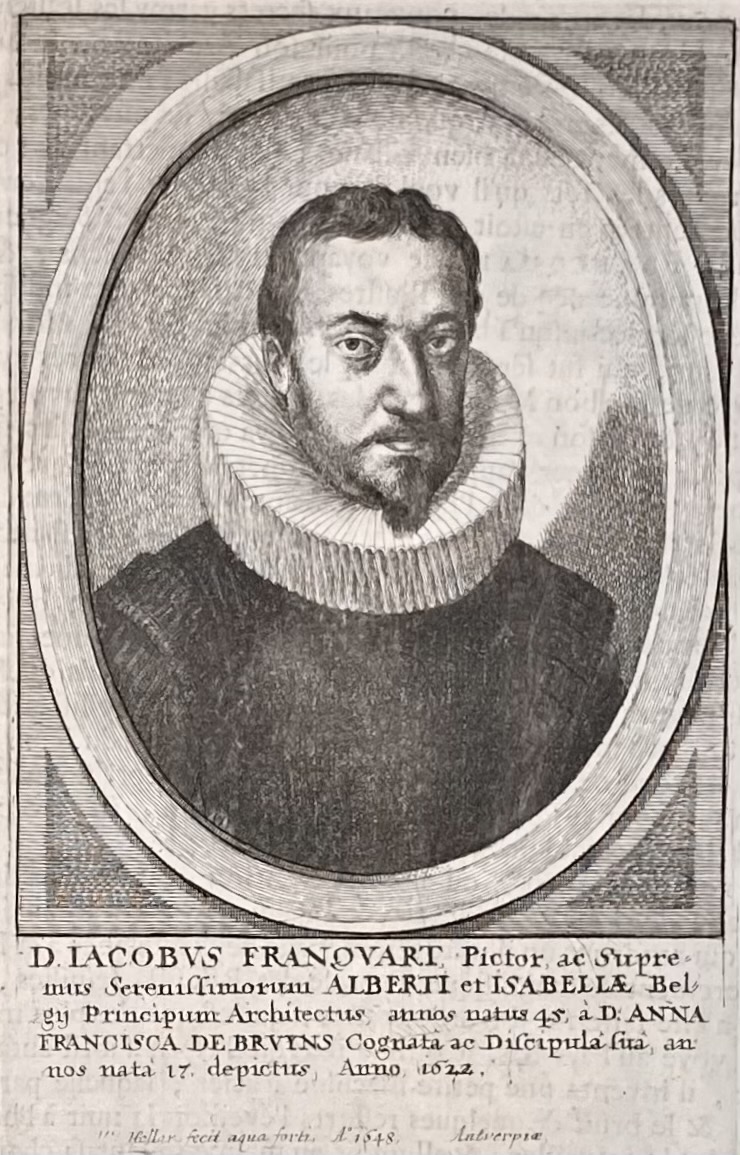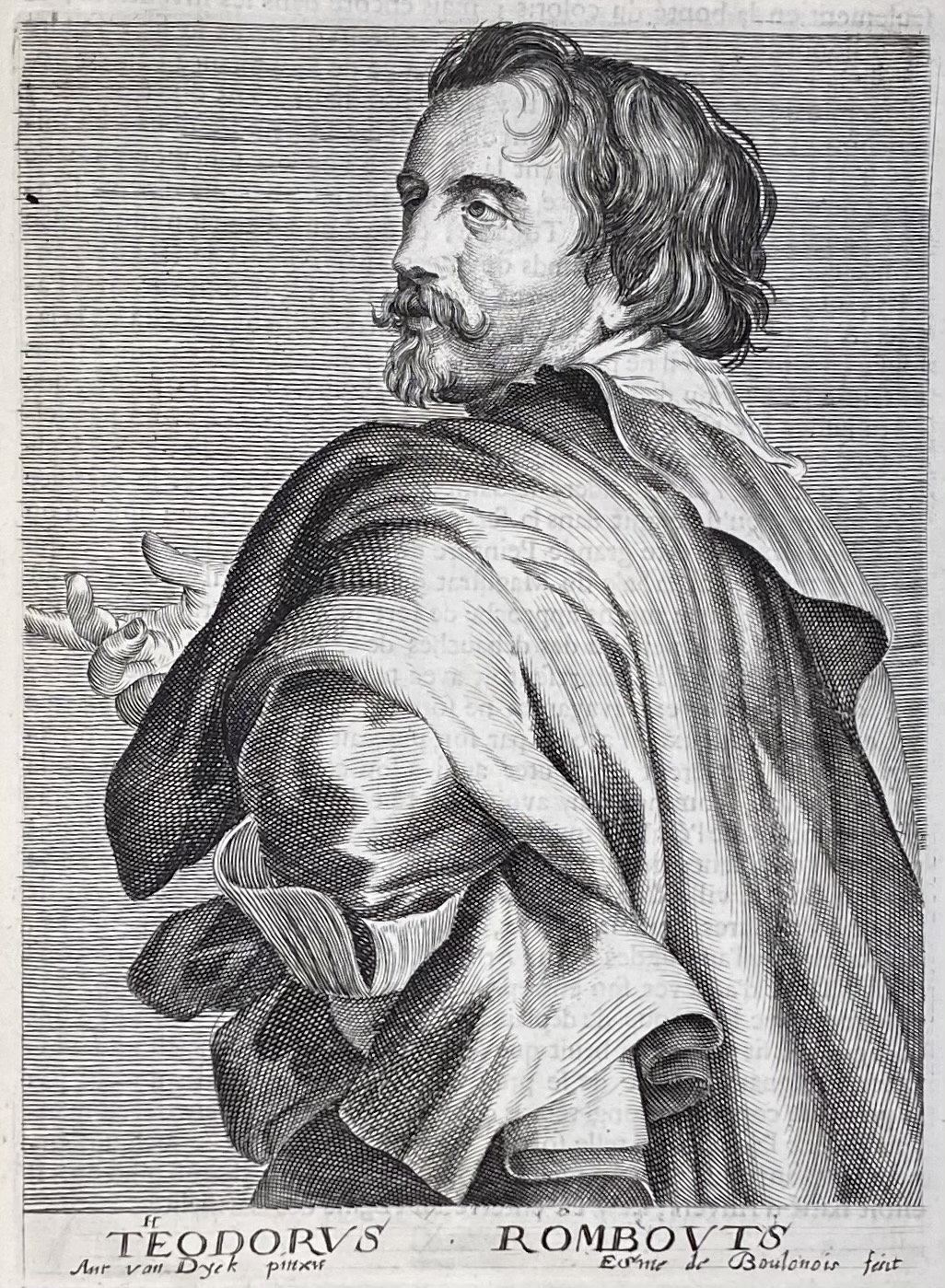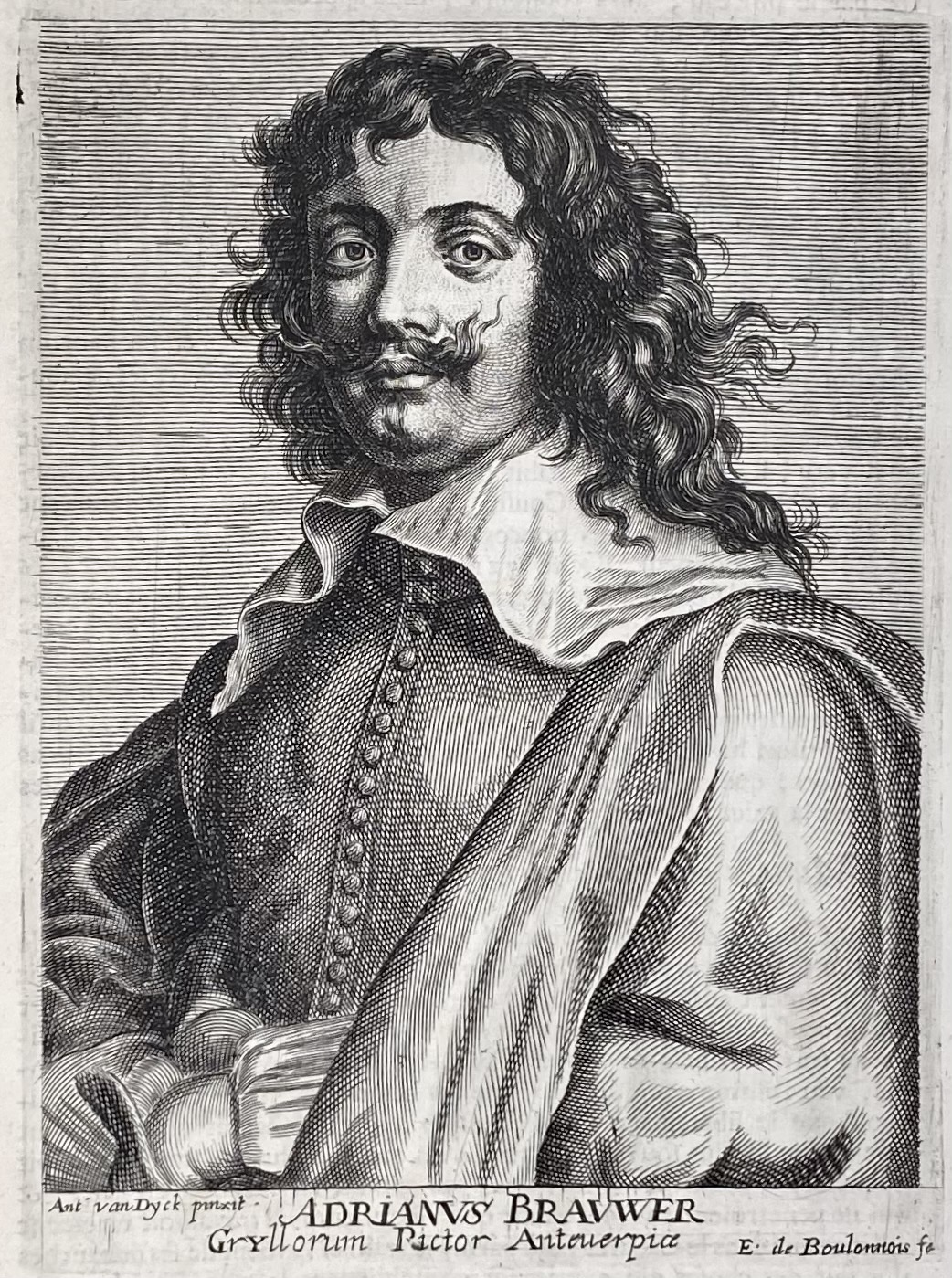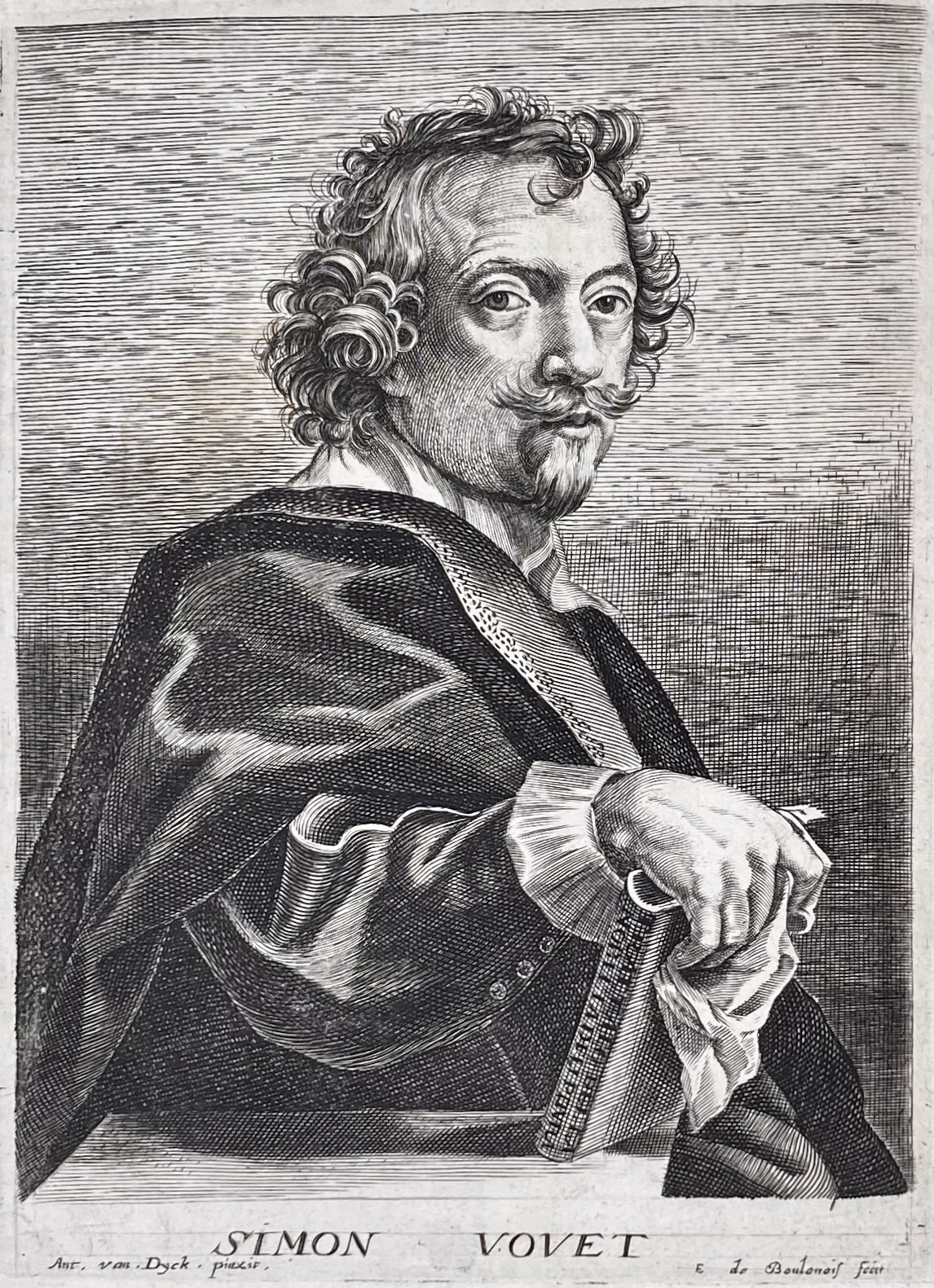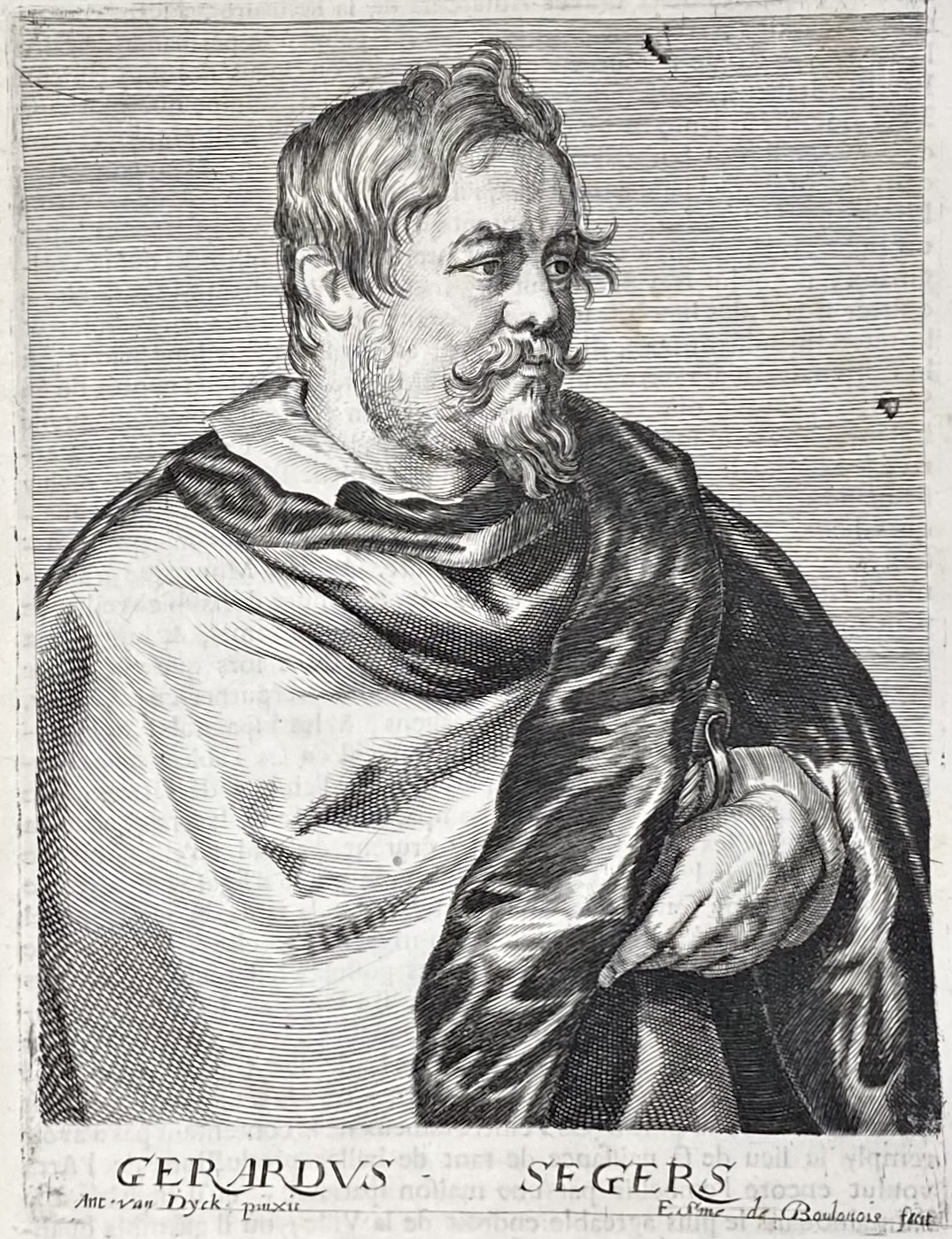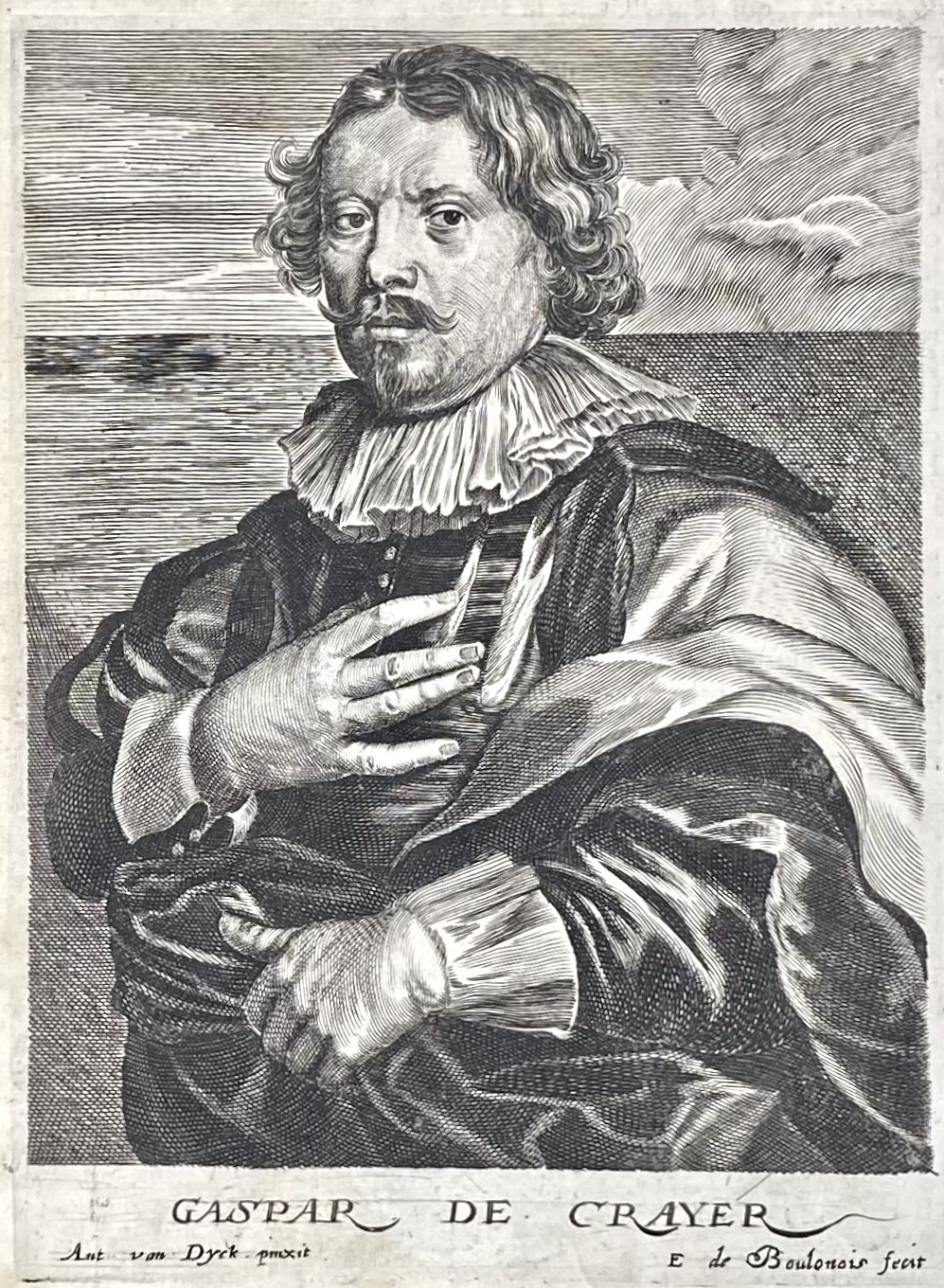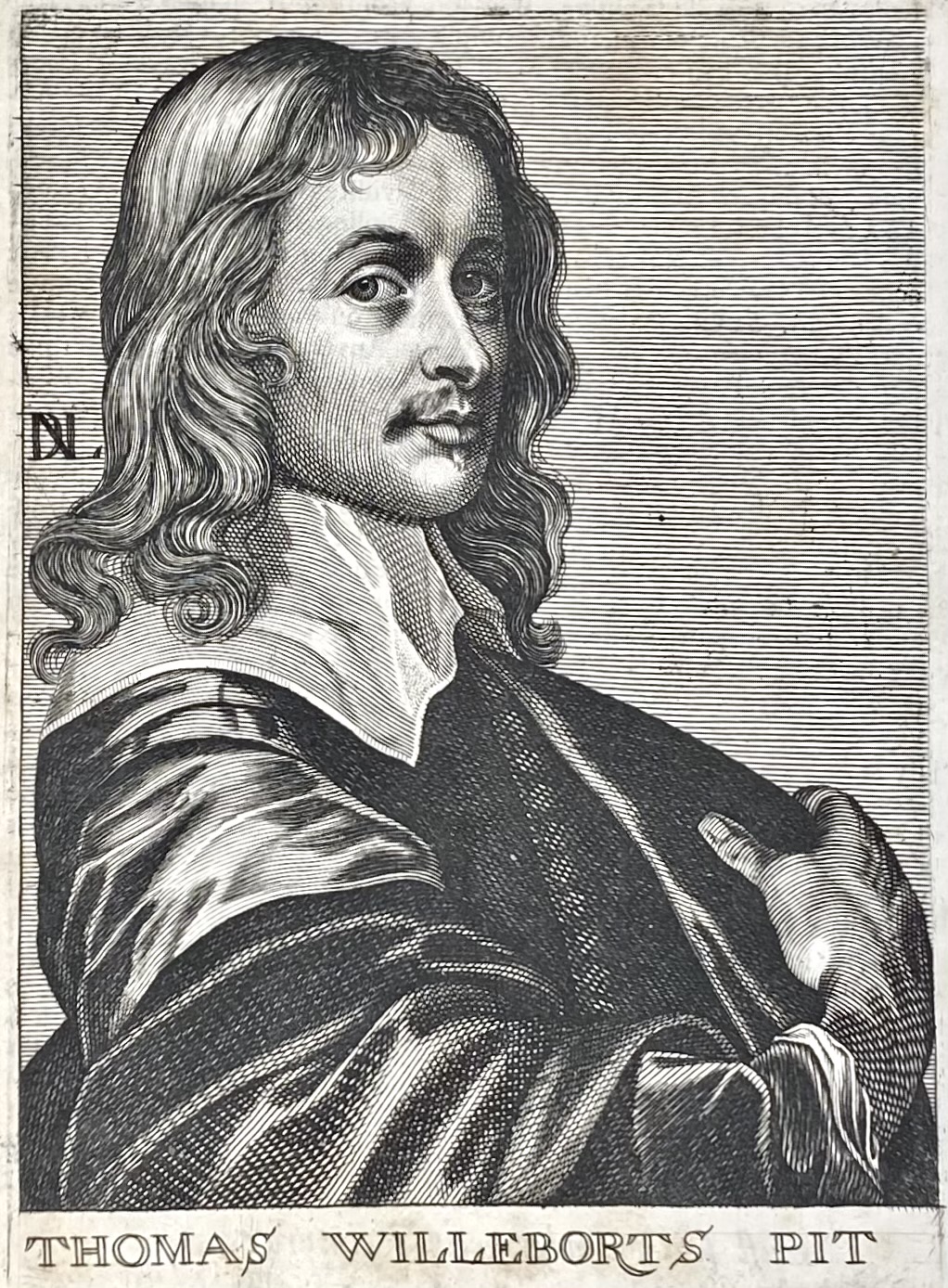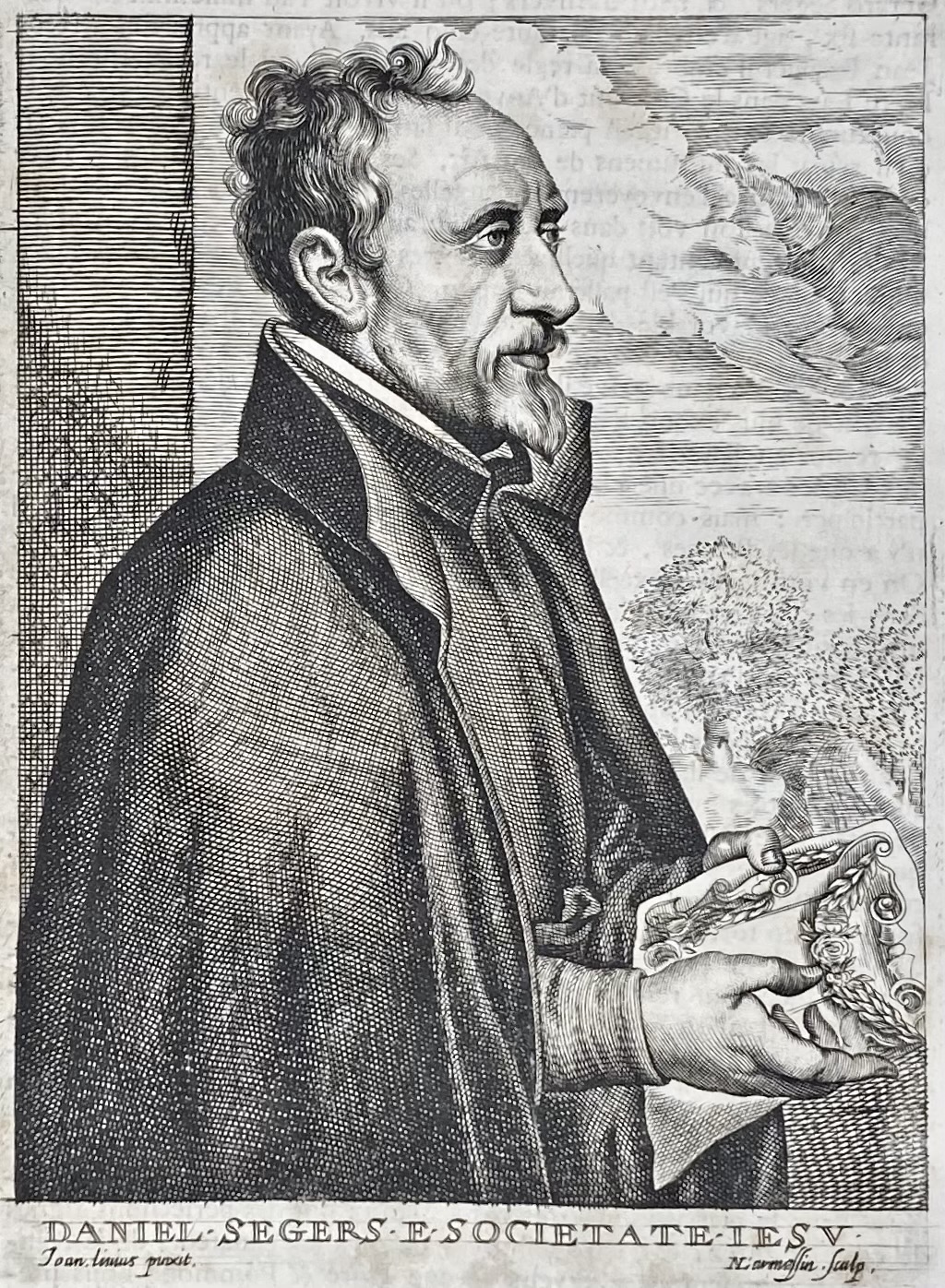-
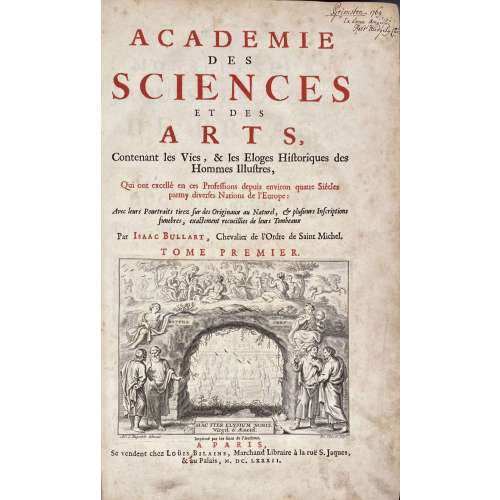 Title: ACADEMIE | DES | SCIENCES | ET DES | ARTS, | Contenant les Vies & les Eloges Historiques des | Hommes Illustres, | Qui ont excellé en ces Professions depuis environ quatre Siécles | parmy diverses Nations de l’Europe : |Avec leurs Pourtraits tirez sur des Originaux au Naturel, & plusieurs Inscriptions | funebres, exactement recueïlies de leurs Tombeaux | Par Isaac Bullart , Chevalier de l’Ordre de Saint Michel. | TOME PREMIER | {allegorical vignette, signed Abr. A Diepenbeke delineavit – Pet. Clouwet sculp.} | Imprimé par les soins de l’Autheur. | A PARIS, | Se vendent chez Loüis Bilane, Marchand Libraire à la ruë S. Jaques, | & au Palais, M. DC. LXXXII. || Pagination : [2] – h.t. / blank ; [2] – 1st vol. t.p. in black and red with vignette engraved by Pet. Clouwet after Abr. Diepenbeke / blank; [7] – dedication to Jacques Theodore de Brias {Jacques-Théodore de Bryas (Dutch, 1630 – 1694)}, [9] – preface, [2] – table demonstrative / stanza by Guilielmus Riverius, [2] – vignette “Tardius sed grandius” with an elephant in ornamental frame / text; [2] – noms politiques / blank (A1 before f.t.), [2] – f.t. livre premiere, illustres politiques / blank, 3(A2)-421, [422-424] – table eloges; [2] – f.t. tome second / blank, [2] – 2nd vol. t.p. in black and red with vignette…, [4] – advertisement, [2] – livre premier f.t. / blank, [2] – noms theologiens / blank, 1-501, [3] – table eloges. Collation : vol.1: [*]6, **6, A6 B-Ggg4; vol. 2: *4, **2, A-Sss4. (12 prelim. leaves, while in LIB-2239.2019 and in LIB-2675.2021 there is 14 prelim. leaves). Binding: contemporary full calf, size: 34 x 23 x 7.2 cm; crimson label with gilt lettering separated. Provenance: Bookplate of Sir Philip Crampton Smyly to the front pastedown; Stephen White Collection. The title is drawn by Abraham van Diepenbeeck (Dutch, 1596 - 1675) and engraved by Pieter Clouwet (Flemish, 1629–1670). The volume illustrated throughout with 279 portraits of important scientists, artists, thinkers, explorers, printers, and others of the period by a variety of artists. Tome 1: 120 plates of which 30 engraved by Esme de Boulonois (French, 1645 – 1681), 87 by Nicolas de Larmessin I (French, 1632 – 1694)Lavinia Vecellio (Italian, 1530 – 1575) engraved by Lamerssin after Titian, Portrait of Jacques Auguste de Thou engraved by de Boulonois after Daniel Dumonstier (French, 1574 – 1646). Tome 2: 159 plates of which 63 by Esme de Boulonois, 79 by Nicolas de Larmessin, 15 unsigned, 1 by Pieter Clouwet, and 1 by Wenceslaus Hollar (Bohemian, 1607 – 1677). Portraits of Knelme Digby, Juste Lipse, Nicolas Claude Fabri de Peiresc, Michel Mirevelt, Jacques Calot, Martin Richart, Pierre Paul Rubens, Venceslas Coberghe, Theodore Rombouts, Adrien Brouwer, Simon Vouet, Gerard Segers, Gaspar de Crayer, Antoine Van Dyck himself, and his wife Mary Ruthven – after Anthony Van Dyck. Young Man with a Skull engraved by Esme de Boulonois after Lucas van Leyden (Dutch, c. 1494 – 1533). Portrait of Louis Arioste engraved by Nicolas de Larmessin after Titian. Portrait of Balthasar de Castillon engraved by Nicolas de Larmessin after Raffaello Sanzio da Urbino (Italian, 1483 – 1520). Petrarch's Laura – by Larmessin after Palma Vecchio (Italian, c. 1480 – 1528). Vittoria Colonne – by Larmessin after Sebastiano del Piombo (Italian, c. 1485 – 1547). The portrait of Albert Durer is engraved by Esme de Boulonois after Tommaso Vincidor (Flemish, 1493 – 1536). Vol. 1, Book 1. Politicians Vol. 1, Book 2. Historians Vol. 1, Book 3. Jurists Vol. 1, Book 4. Writes and Linguists Vol. 1, Book 5. Italian Artists Vol. 2, Book 1. Theologians Vol. 2, Book 2. Philosophers, Mathematicians, Astronomers, and Physicians Vol. 2, Book 3. Scientists Vol. 2, Book 4. Inventors and Explorers Vol. 2, Book 5. Poets Vol. 2, Book 6. Netherlandish painters
Title: ACADEMIE | DES | SCIENCES | ET DES | ARTS, | Contenant les Vies & les Eloges Historiques des | Hommes Illustres, | Qui ont excellé en ces Professions depuis environ quatre Siécles | parmy diverses Nations de l’Europe : |Avec leurs Pourtraits tirez sur des Originaux au Naturel, & plusieurs Inscriptions | funebres, exactement recueïlies de leurs Tombeaux | Par Isaac Bullart , Chevalier de l’Ordre de Saint Michel. | TOME PREMIER | {allegorical vignette, signed Abr. A Diepenbeke delineavit – Pet. Clouwet sculp.} | Imprimé par les soins de l’Autheur. | A PARIS, | Se vendent chez Loüis Bilane, Marchand Libraire à la ruë S. Jaques, | & au Palais, M. DC. LXXXII. || Pagination : [2] – h.t. / blank ; [2] – 1st vol. t.p. in black and red with vignette engraved by Pet. Clouwet after Abr. Diepenbeke / blank; [7] – dedication to Jacques Theodore de Brias {Jacques-Théodore de Bryas (Dutch, 1630 – 1694)}, [9] – preface, [2] – table demonstrative / stanza by Guilielmus Riverius, [2] – vignette “Tardius sed grandius” with an elephant in ornamental frame / text; [2] – noms politiques / blank (A1 before f.t.), [2] – f.t. livre premiere, illustres politiques / blank, 3(A2)-421, [422-424] – table eloges; [2] – f.t. tome second / blank, [2] – 2nd vol. t.p. in black and red with vignette…, [4] – advertisement, [2] – livre premier f.t. / blank, [2] – noms theologiens / blank, 1-501, [3] – table eloges. Collation : vol.1: [*]6, **6, A6 B-Ggg4; vol. 2: *4, **2, A-Sss4. (12 prelim. leaves, while in LIB-2239.2019 and in LIB-2675.2021 there is 14 prelim. leaves). Binding: contemporary full calf, size: 34 x 23 x 7.2 cm; crimson label with gilt lettering separated. Provenance: Bookplate of Sir Philip Crampton Smyly to the front pastedown; Stephen White Collection. The title is drawn by Abraham van Diepenbeeck (Dutch, 1596 - 1675) and engraved by Pieter Clouwet (Flemish, 1629–1670). The volume illustrated throughout with 279 portraits of important scientists, artists, thinkers, explorers, printers, and others of the period by a variety of artists. Tome 1: 120 plates of which 30 engraved by Esme de Boulonois (French, 1645 – 1681), 87 by Nicolas de Larmessin I (French, 1632 – 1694)Lavinia Vecellio (Italian, 1530 – 1575) engraved by Lamerssin after Titian, Portrait of Jacques Auguste de Thou engraved by de Boulonois after Daniel Dumonstier (French, 1574 – 1646). Tome 2: 159 plates of which 63 by Esme de Boulonois, 79 by Nicolas de Larmessin, 15 unsigned, 1 by Pieter Clouwet, and 1 by Wenceslaus Hollar (Bohemian, 1607 – 1677). Portraits of Knelme Digby, Juste Lipse, Nicolas Claude Fabri de Peiresc, Michel Mirevelt, Jacques Calot, Martin Richart, Pierre Paul Rubens, Venceslas Coberghe, Theodore Rombouts, Adrien Brouwer, Simon Vouet, Gerard Segers, Gaspar de Crayer, Antoine Van Dyck himself, and his wife Mary Ruthven – after Anthony Van Dyck. Young Man with a Skull engraved by Esme de Boulonois after Lucas van Leyden (Dutch, c. 1494 – 1533). Portrait of Louis Arioste engraved by Nicolas de Larmessin after Titian. Portrait of Balthasar de Castillon engraved by Nicolas de Larmessin after Raffaello Sanzio da Urbino (Italian, 1483 – 1520). Petrarch's Laura – by Larmessin after Palma Vecchio (Italian, c. 1480 – 1528). Vittoria Colonne – by Larmessin after Sebastiano del Piombo (Italian, c. 1485 – 1547). The portrait of Albert Durer is engraved by Esme de Boulonois after Tommaso Vincidor (Flemish, 1493 – 1536). Vol. 1, Book 1. Politicians Vol. 1, Book 2. Historians Vol. 1, Book 3. Jurists Vol. 1, Book 4. Writes and Linguists Vol. 1, Book 5. Italian Artists Vol. 2, Book 1. Theologians Vol. 2, Book 2. Philosophers, Mathematicians, Astronomers, and Physicians Vol. 2, Book 3. Scientists Vol. 2, Book 4. Inventors and Explorers Vol. 2, Book 5. Poets Vol. 2, Book 6. Netherlandish painters -
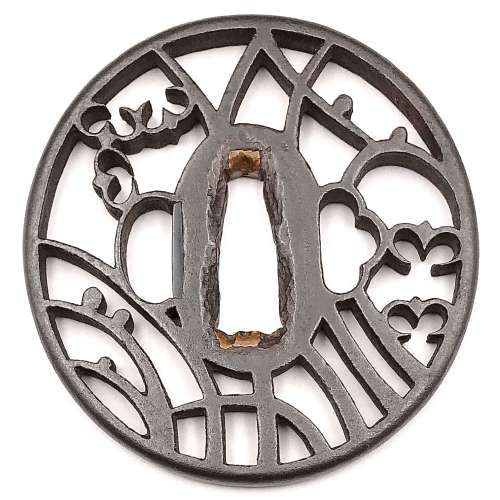 Iron tsuba of slightly elongated round form with design of wild geese and drops on pampas grass (masashino) in openwork (sukashi). Rounded rim. Copper sekigane. Owari school. Early Edo period: early 17th century (Kan-ei era). Height: 78.8 mm. Width: 76.3 mm. Rim thickness: 6.1 mm. Center thickness: 6.4 mm. Provenance: Sasano Masayuki Collection, № 169. A description of musashino symbolism can be found at Symbols of Japan by Merrily Baird [Merrily Baird. Symbols of Japan. Thematic motifs in art and design. Rizzoli international publications, Inc., 2001]: Musashino - "the plain of Musashi - a large expanse in the Tokyo area, was celebrated in poetry for the grasses that grew there before the recent era of industrialization... The use of Musashino themes was particularly common in the Momoyama and Edo periods". Pampas grass with dew drops and wild geese in flight collectively provide strong autumnal connotation.
Iron tsuba of slightly elongated round form with design of wild geese and drops on pampas grass (masashino) in openwork (sukashi). Rounded rim. Copper sekigane. Owari school. Early Edo period: early 17th century (Kan-ei era). Height: 78.8 mm. Width: 76.3 mm. Rim thickness: 6.1 mm. Center thickness: 6.4 mm. Provenance: Sasano Masayuki Collection, № 169. A description of musashino symbolism can be found at Symbols of Japan by Merrily Baird [Merrily Baird. Symbols of Japan. Thematic motifs in art and design. Rizzoli international publications, Inc., 2001]: Musashino - "the plain of Musashi - a large expanse in the Tokyo area, was celebrated in poetry for the grasses that grew there before the recent era of industrialization... The use of Musashino themes was particularly common in the Momoyama and Edo periods". Pampas grass with dew drops and wild geese in flight collectively provide strong autumnal connotation. -
 Iron tsuba of quatrefoil form with design of bamboo stems and leaves in openwork (sukashi) decorated with carving (kebori) . Copper sekigane. Early Edo period, late 17th century (Kanbun / Enppo era). First generation Kanshiro of Nishigaki school in Higo Province died in the sixth year of Genroku, 1693, at the age of 81). Height: 74.4 mm; Width: 74.2 mm; Centre thickness: 4.9 mm. Rounded rim. The design was quite popular among the Higo masters.
Iron tsuba of quatrefoil form with design of bamboo stems and leaves in openwork (sukashi) decorated with carving (kebori) . Copper sekigane. Early Edo period, late 17th century (Kanbun / Enppo era). First generation Kanshiro of Nishigaki school in Higo Province died in the sixth year of Genroku, 1693, at the age of 81). Height: 74.4 mm; Width: 74.2 mm; Centre thickness: 4.9 mm. Rounded rim. The design was quite popular among the Higo masters.
Kanshiro III, early 18th century (Sasano 1994 №267)

Matashichi I, late 17th century (Sasano 1994 №270)
The design of my tsuba closely resembles the one at the last example (Sasano 1994 №280), however, the form (mine is quatrefoil) and the execution (strength) are very different, which result in a very different spirit of my piece.
Shigemitsu II, early 18th century (Sasano 1994 №280)
-

Iron tsuba of round form pierced (sukashi) in a chessboard fashion and decorated with linear (sen-zōgan) and cast (suemon-zōgan) brass inlay, including symbols of the swastika, flower-lozenge, maple leaf, pine needle, etc. on both sides; rim and openings outlined with brass inlay. Nakagō-ana plugged with copper fittings (sekigane).
Momoyama period. End of the 16th - beginning of the 17th century. Dimensions: Diameter: 75.5; Thickness: 4.5 mm. -
 Well-forged iron plate of round shape (maru-gata) is decorated with water weeds or arabesque (karakusa) in flat brass inlay (hira-zōgan) all over and eight family crests (mon) of round form in cast brass with delicate linear carving (kebori) and openwork (sukashi). Crests represent: [at 9 hours] three counter-clockwise commas or swirls (tomoe); [at 10:30] plum blossom (ume); [at 12:00, 1:130, and 7:30] - stylized flower made by cutting out five suhama symblos (flower-shaped suhama); [at 3:00] bellflower (kikyō); [at 4:30] seven-star crest (shichiyō-mon); [at 6:00] cherry blossom (sakura). Brass-trimmed ryo-hitsu. Copper sekigane. Yoshirō school. Momoyama or early Edo period, end of the 16th to first half of the 17th century (1574-1650). Inscription on seppa-dai: 八幡 - Hachiman. Size: height 89.6 mm, width 89.3 mm, thickness at seppa-dai 3,0 mm. Weight 129.7 g. NBTHK certificate № 4007685, June 27, 2015: HOZON (Worthy of Preservation). As for the inscription, Nihonto Message Board blog discussion provides the following explanation of the inscription: "An expression of conviction as to being the best under the sun". On the other hand, there may be more in this confluence of symbols: the tomoe crest at 9:00 is "the kamon of Hachiman, the war god" [Family Crests of Japan; Stone Bridge Press, Berkeley, CA, 2007, p. 108]. The character 八 in the inscription cut stronger than the other kanji, and may be by a different hand in different time. 八 (hachi, eight): "The numeral eight was appreciated because its shape broadens toward the bottom, symbolizing eternal expansion" [ibid, p. 119]. It may be said that this tsuba is dedicated to Hachiman. Other crests (suhama, bellflower, seven-stars, plum and cherry blossoms) collectively allude to "good old times" when Fijiwara and Taira clans were in full bloom. Markus Sesko believes that the inscriptions reads: Hachiman: "the inscription is/was HACHIMAN (八幡), the God of War and a relatively popular inscription for tsuba, swords and armor." Elliott Long and Robert Haynes provide the following explanation of the inscription: "...hachi is correct and represents the name of the HACHI SHRINE. The inscription reads 'YAWATA' which is the name of the mountain in Mino Province where the HACHI Shrine is located". Details on Hachiman Shrine in Yawata (八幡市) can be found elsewhere, including Historical and geographical dictionary of Japan by Edmond Papinot. Van Ham auction house provides the following description: MON-SUKASHI TSUBA. MARUGATA. Japan. Momoyama period. Yoshiro school. Iron with inlays of brass. In hira-zogan technique with kebori engraving eight different family emblems (mon). An old inscription is dedicated to the deity Hachiman. D.4.5mm, Ø 8.3cm. Condition A/B. Supplement: Wooden box and NBTHK certificate.
Well-forged iron plate of round shape (maru-gata) is decorated with water weeds or arabesque (karakusa) in flat brass inlay (hira-zōgan) all over and eight family crests (mon) of round form in cast brass with delicate linear carving (kebori) and openwork (sukashi). Crests represent: [at 9 hours] three counter-clockwise commas or swirls (tomoe); [at 10:30] plum blossom (ume); [at 12:00, 1:130, and 7:30] - stylized flower made by cutting out five suhama symblos (flower-shaped suhama); [at 3:00] bellflower (kikyō); [at 4:30] seven-star crest (shichiyō-mon); [at 6:00] cherry blossom (sakura). Brass-trimmed ryo-hitsu. Copper sekigane. Yoshirō school. Momoyama or early Edo period, end of the 16th to first half of the 17th century (1574-1650). Inscription on seppa-dai: 八幡 - Hachiman. Size: height 89.6 mm, width 89.3 mm, thickness at seppa-dai 3,0 mm. Weight 129.7 g. NBTHK certificate № 4007685, June 27, 2015: HOZON (Worthy of Preservation). As for the inscription, Nihonto Message Board blog discussion provides the following explanation of the inscription: "An expression of conviction as to being the best under the sun". On the other hand, there may be more in this confluence of symbols: the tomoe crest at 9:00 is "the kamon of Hachiman, the war god" [Family Crests of Japan; Stone Bridge Press, Berkeley, CA, 2007, p. 108]. The character 八 in the inscription cut stronger than the other kanji, and may be by a different hand in different time. 八 (hachi, eight): "The numeral eight was appreciated because its shape broadens toward the bottom, symbolizing eternal expansion" [ibid, p. 119]. It may be said that this tsuba is dedicated to Hachiman. Other crests (suhama, bellflower, seven-stars, plum and cherry blossoms) collectively allude to "good old times" when Fijiwara and Taira clans were in full bloom. Markus Sesko believes that the inscriptions reads: Hachiman: "the inscription is/was HACHIMAN (八幡), the God of War and a relatively popular inscription for tsuba, swords and armor." Elliott Long and Robert Haynes provide the following explanation of the inscription: "...hachi is correct and represents the name of the HACHI SHRINE. The inscription reads 'YAWATA' which is the name of the mountain in Mino Province where the HACHI Shrine is located". Details on Hachiman Shrine in Yawata (八幡市) can be found elsewhere, including Historical and geographical dictionary of Japan by Edmond Papinot. Van Ham auction house provides the following description: MON-SUKASHI TSUBA. MARUGATA. Japan. Momoyama period. Yoshiro school. Iron with inlays of brass. In hira-zogan technique with kebori engraving eight different family emblems (mon). An old inscription is dedicated to the deity Hachiman. D.4.5mm, Ø 8.3cm. Condition A/B. Supplement: Wooden box and NBTHK certificate. -
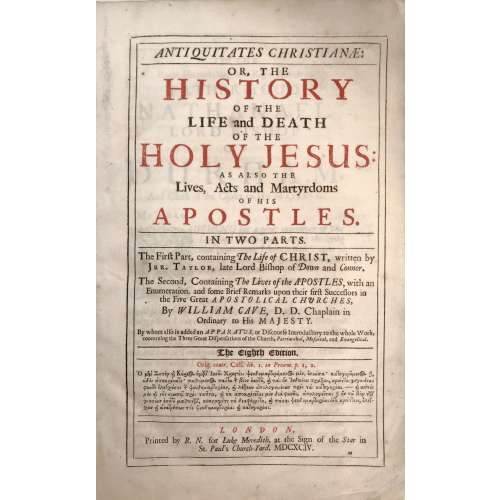 Title (black and red): ANTIQUITATES CHRISTIANÆ: |—| OR, THE | HISTORY | OF THE | LIFE AND DEATH | OF THE | HOLY JESUS: | AS ALSO THE Lives, Acts and Martyrdoms | OF HIS | APOSTLES. |—| IN TWO PARTS. |—| The Firƒt Part, containing The Life of CHRIST, written by | Jer. Taylor, Late Lord Bishop of Down and Connor. | The Second, Containing The Lives of the APOSTLES, with an | Enumeration, and ƒome Brief Remarks upon their firƒt Successors in | the Five Great APOSTOLICAL CHURCHES, | By WILLIAM CAVE, D. D. Chaplain in | Ordinary to His MAJESTY. | By whom alƒo is added an APPARATUS, or Diƒcourƒe Introductory to the whole Work, | concerning the Three Great Diƒpenƒations of the Church, Patriarchal, Moƒaical, and Evangelical. |—| THE EIGHTH EDITION. |—| Orig. contr. Celƒ. lib. 1. in Proœm. p. 1, 2. | [text in Greek] |—| LONDON, | Printed by R. N. for Luke Meredith, at the Sign of the Star in | St. Paul's Church-Yard, MDCXCIV. Collation of this book is unusual, it is called "Folio in 6s" (three sheets are folded in half to create a gathering of 6 leaves). Two unsigned leaves: (1) Engraved frontispiece "The Annunciation" by Willian Faithorne "the Elder" (British, 1616 – 1691), recto blank; (2) engraved title by the same engraver, verso blank; (*) gathering of 4: black and red title page, verso blank; epistle; to reader; imprim. (A6 to Sƒ6) Engraved portrait of Jeremy Taylor by Pierre Lombart (French, 1612 – 1682); faux title page: "The Great Exemplar of Sanctity and Holy Life... MDCXCIII"; dedication; contents, then to the end of the first book. (A-Z4 Aa-Bb4 Cc2) The second book has collation in quarto: Faux title page: "Antiquitates Christianæ: or the Lives, Acts and Martyrdoms... MDCXCIV", etc. to the end. Full formula: π2 *4 a-c6 d8 A-Z6 Aa-Sƒ6 A-Z4 Aa-Bb4 Cc2 Pagination: [12] I-LI [LII] [12] I-XXVIII, i-vi, (1st book): [2] I-145 [146-150] 151-432 [12]; (2nd book): [8] i-xiv, 1-188. 22 plates : frontis., t.p., portrait, one folding before p. 65, two after pp. [146], [150], 282, 304, 364, 386, 414, [422], and numerous head-pieces. Size: 36 x 23.5 x 5.7 cm Binding: full calf with the later spine, raised bands; front board with remnants of gilt ruling and blind stamped border, back bord probably original with a blind-stamped centre panel with fleurons.
Title (black and red): ANTIQUITATES CHRISTIANÆ: |—| OR, THE | HISTORY | OF THE | LIFE AND DEATH | OF THE | HOLY JESUS: | AS ALSO THE Lives, Acts and Martyrdoms | OF HIS | APOSTLES. |—| IN TWO PARTS. |—| The Firƒt Part, containing The Life of CHRIST, written by | Jer. Taylor, Late Lord Bishop of Down and Connor. | The Second, Containing The Lives of the APOSTLES, with an | Enumeration, and ƒome Brief Remarks upon their firƒt Successors in | the Five Great APOSTOLICAL CHURCHES, | By WILLIAM CAVE, D. D. Chaplain in | Ordinary to His MAJESTY. | By whom alƒo is added an APPARATUS, or Diƒcourƒe Introductory to the whole Work, | concerning the Three Great Diƒpenƒations of the Church, Patriarchal, Moƒaical, and Evangelical. |—| THE EIGHTH EDITION. |—| Orig. contr. Celƒ. lib. 1. in Proœm. p. 1, 2. | [text in Greek] |—| LONDON, | Printed by R. N. for Luke Meredith, at the Sign of the Star in | St. Paul's Church-Yard, MDCXCIV. Collation of this book is unusual, it is called "Folio in 6s" (three sheets are folded in half to create a gathering of 6 leaves). Two unsigned leaves: (1) Engraved frontispiece "The Annunciation" by Willian Faithorne "the Elder" (British, 1616 – 1691), recto blank; (2) engraved title by the same engraver, verso blank; (*) gathering of 4: black and red title page, verso blank; epistle; to reader; imprim. (A6 to Sƒ6) Engraved portrait of Jeremy Taylor by Pierre Lombart (French, 1612 – 1682); faux title page: "The Great Exemplar of Sanctity and Holy Life... MDCXCIII"; dedication; contents, then to the end of the first book. (A-Z4 Aa-Bb4 Cc2) The second book has collation in quarto: Faux title page: "Antiquitates Christianæ: or the Lives, Acts and Martyrdoms... MDCXCIV", etc. to the end. Full formula: π2 *4 a-c6 d8 A-Z6 Aa-Sƒ6 A-Z4 Aa-Bb4 Cc2 Pagination: [12] I-LI [LII] [12] I-XXVIII, i-vi, (1st book): [2] I-145 [146-150] 151-432 [12]; (2nd book): [8] i-xiv, 1-188. 22 plates : frontis., t.p., portrait, one folding before p. 65, two after pp. [146], [150], 282, 304, 364, 386, 414, [422], and numerous head-pieces. Size: 36 x 23.5 x 5.7 cm Binding: full calf with the later spine, raised bands; front board with remnants of gilt ruling and blind stamped border, back bord probably original with a blind-stamped centre panel with fleurons.


